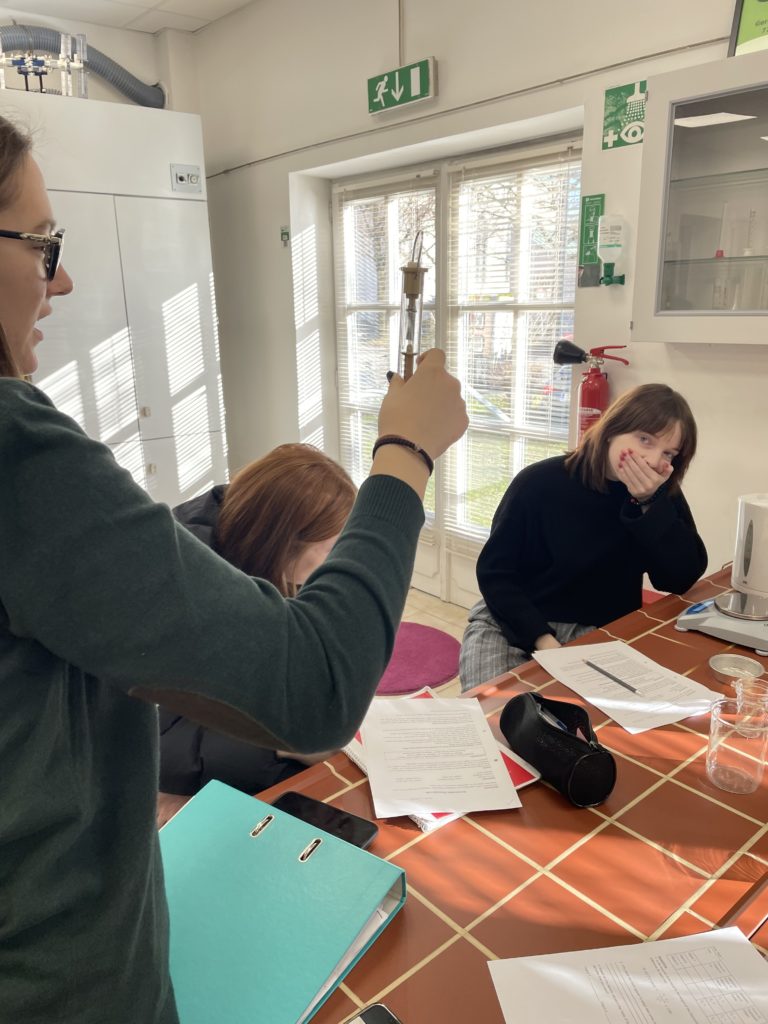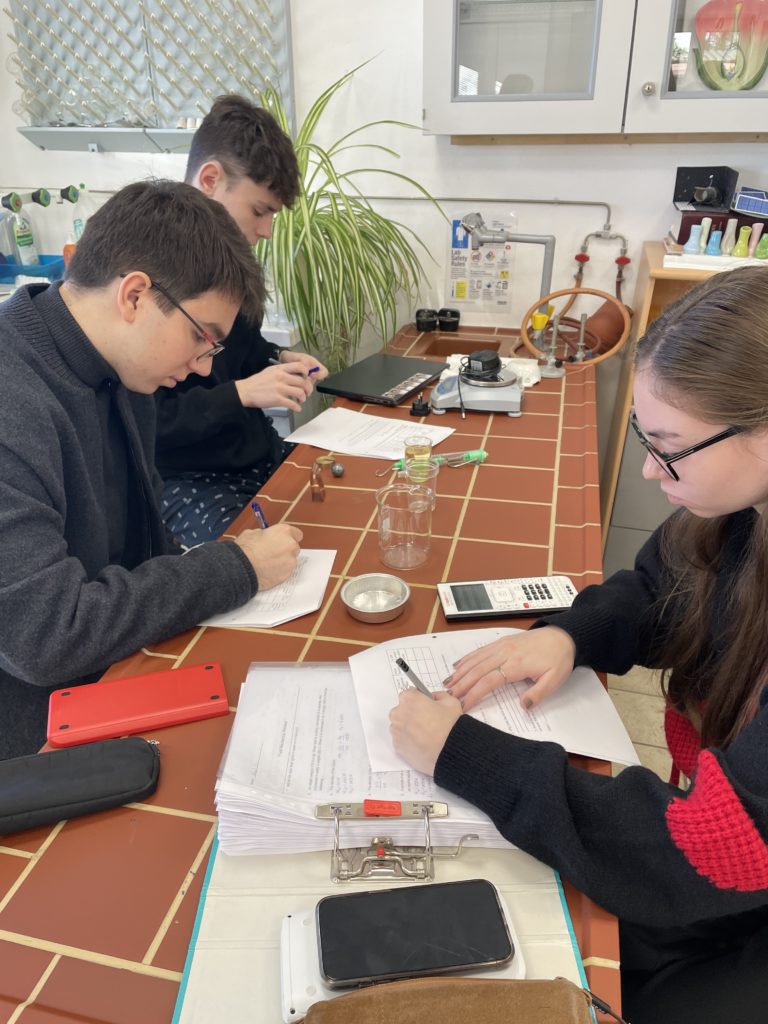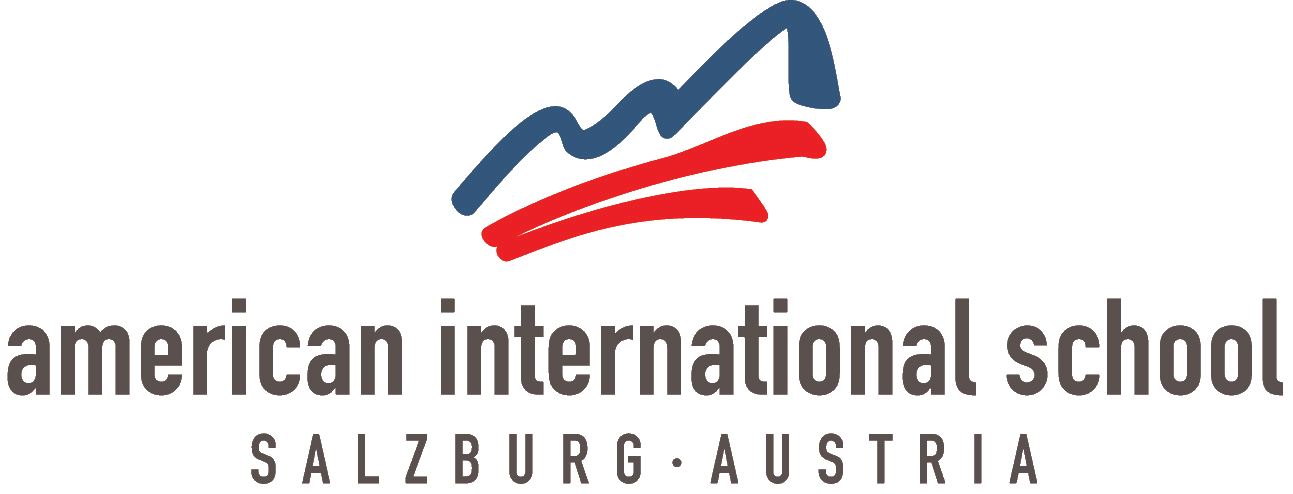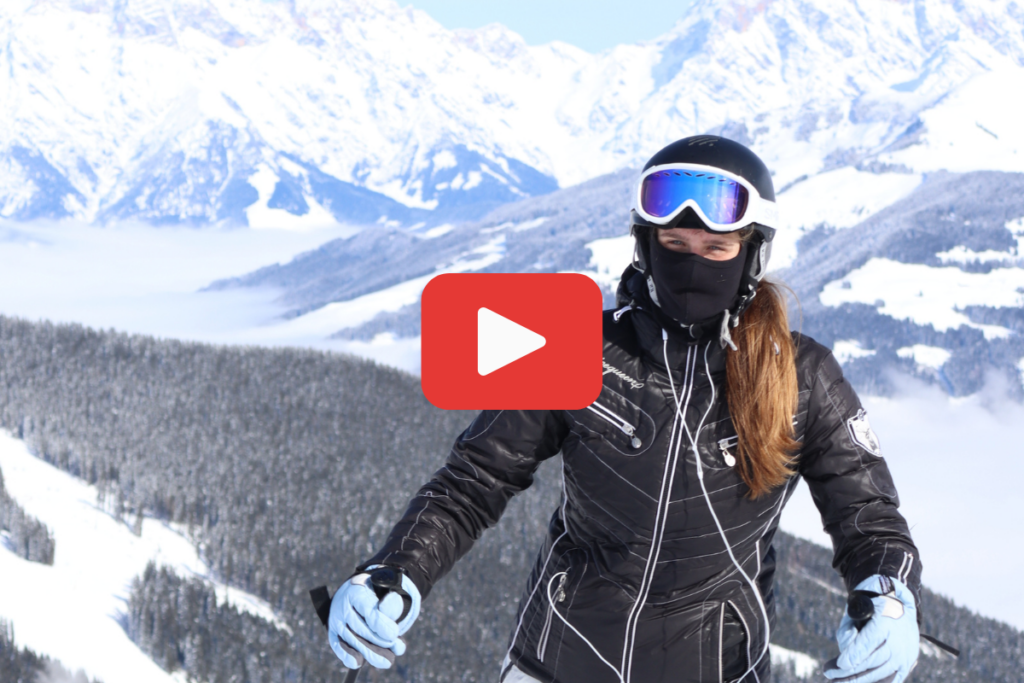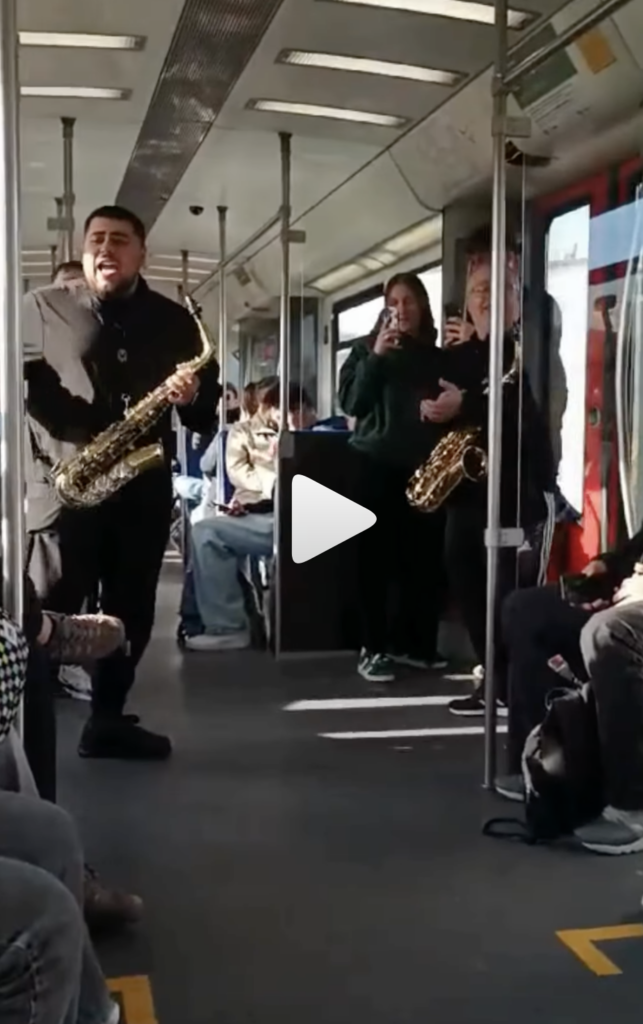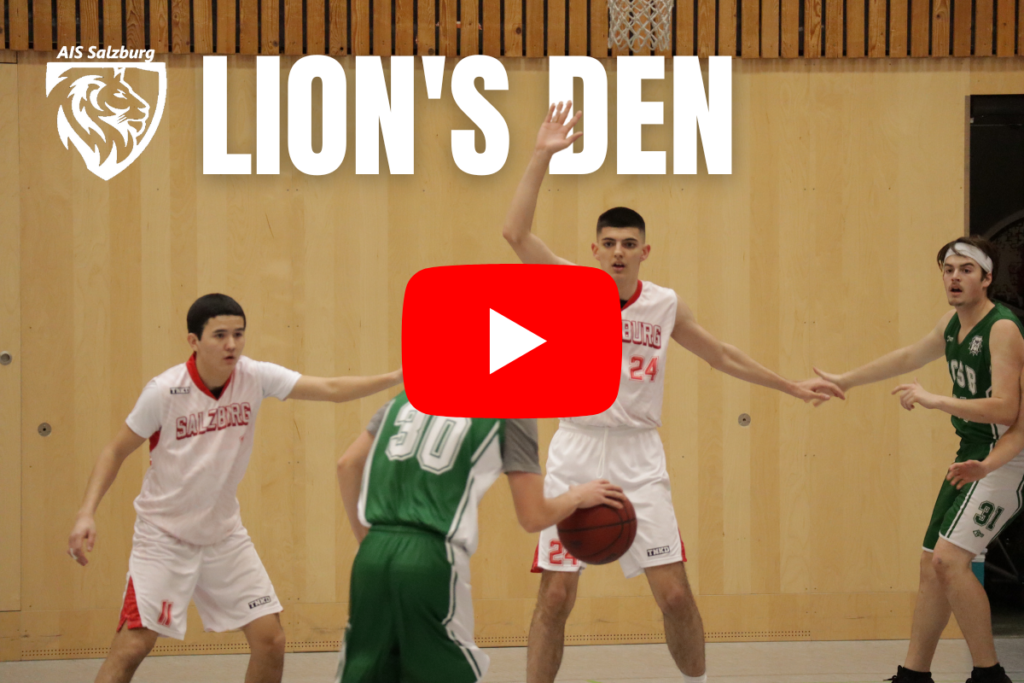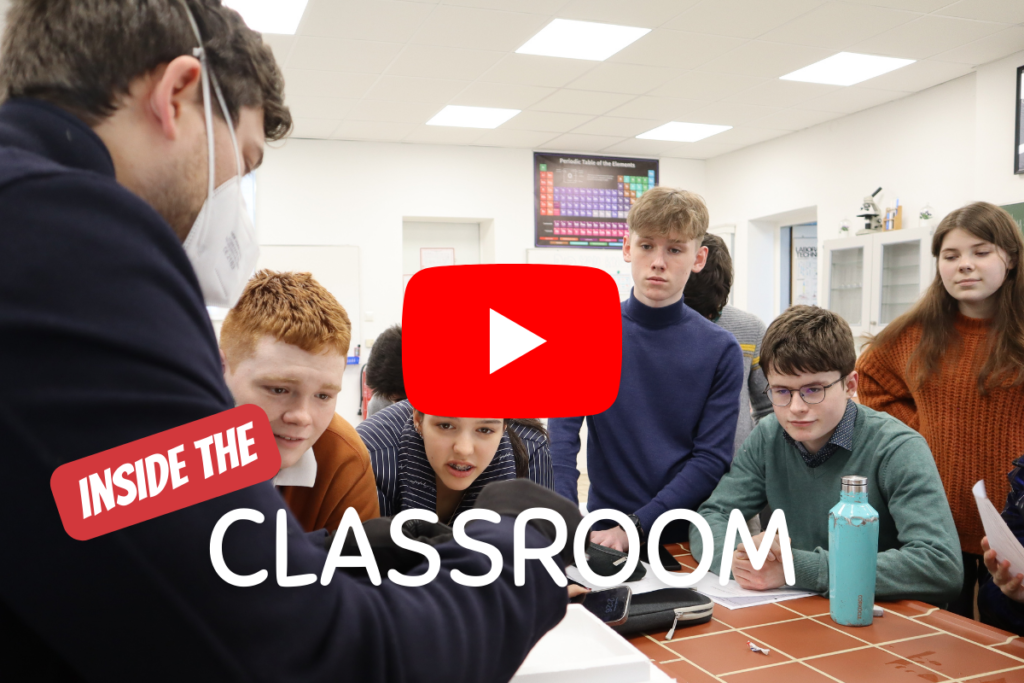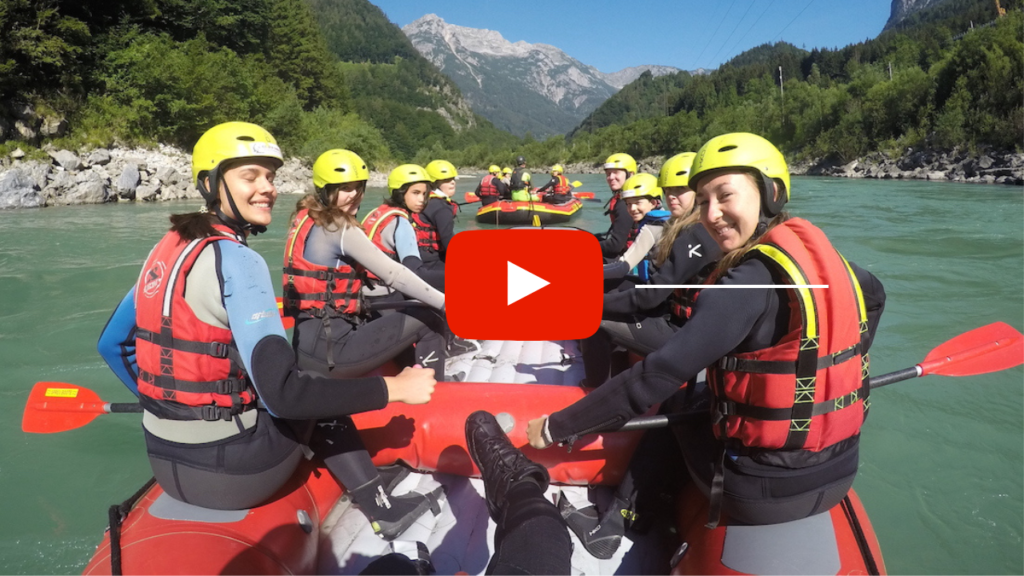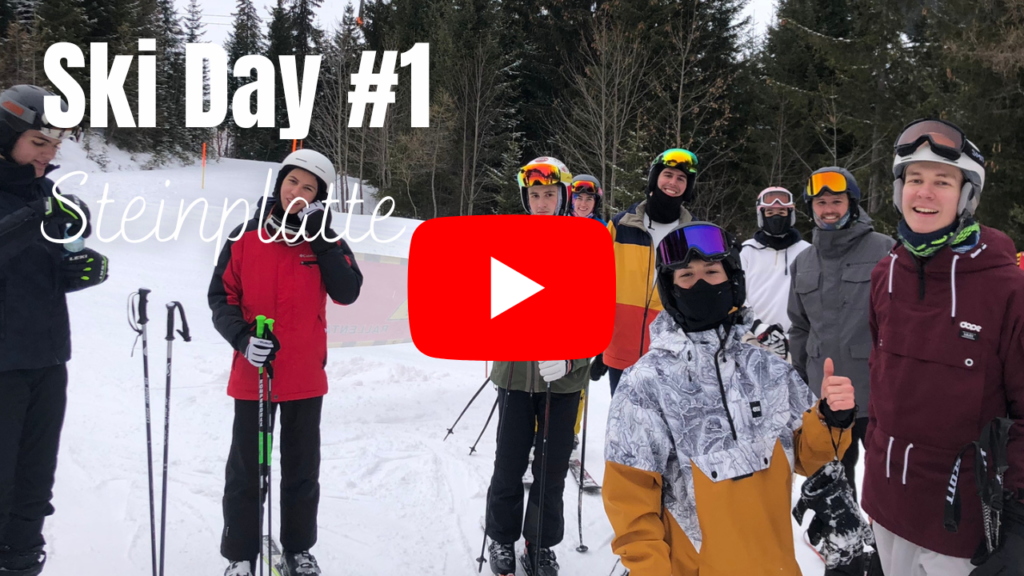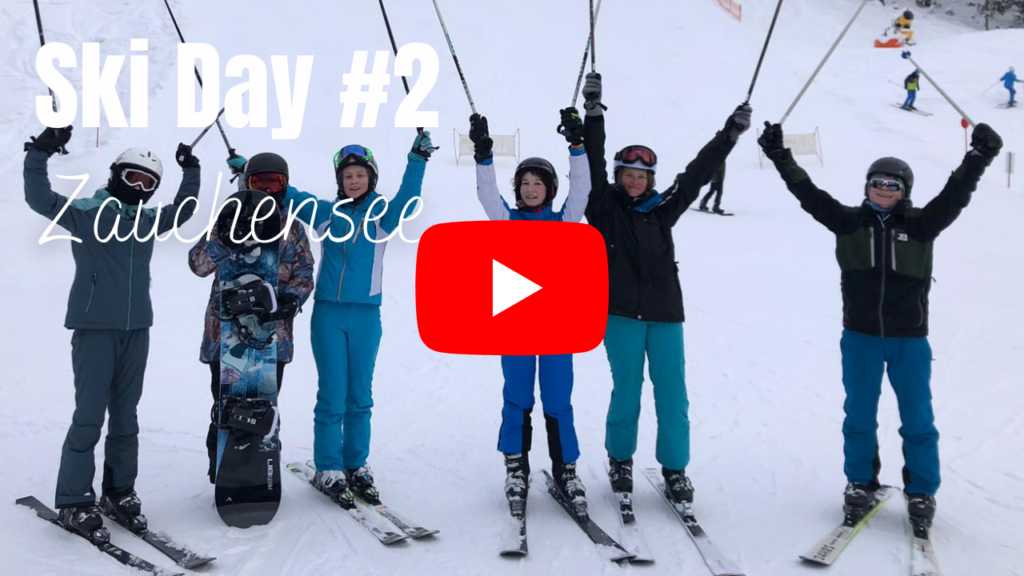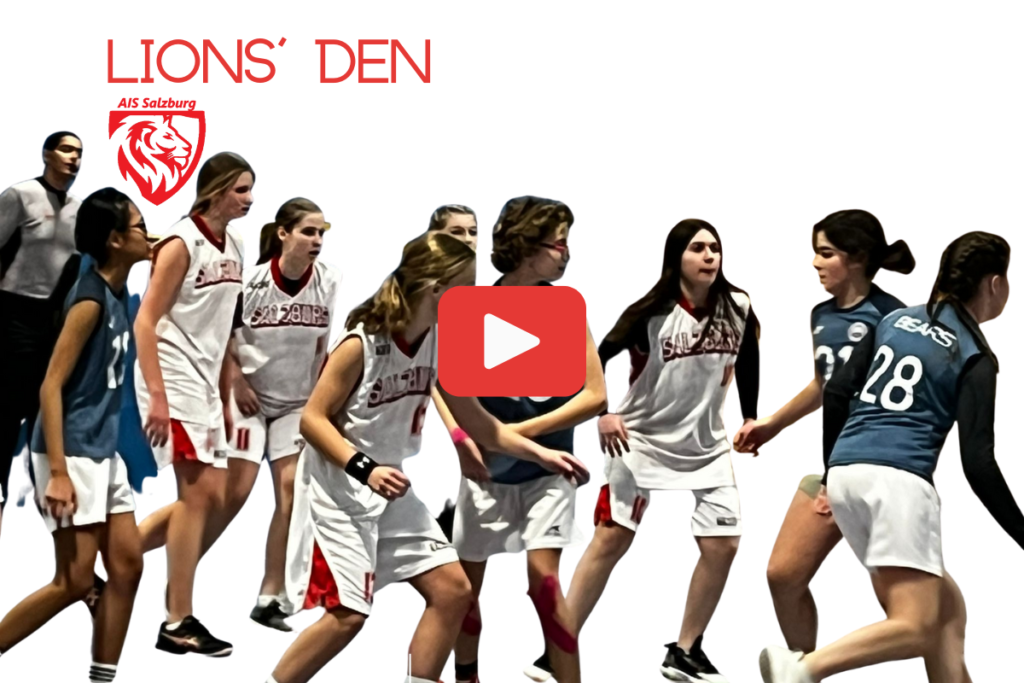Attending a college preparatory high school offers numerous benefits that help students excel academically and personally. These schools provide a rigorous curriculum designed to challenge students and prepare them for the demands of higher education. Small class sizes and individualized attention from experienced teachers ensure a strong foundation in critical thinking, writing, and problem-solving skills. Additionally, college prep schools offer advanced placement coursework which can strengthen college applications and earn college credit.
Beyond academics, students benefit from a structured environment that fosters discipline, time management, and independence. College counseling services provide personalized guidance on the admissions process, helping students select the right colleges and prepare competitive applications. Extracurricular activities, leadership opportunities, and community service initiatives further enrich students’ experiences, promoting well-rounded personal development. Overall, a college preparatory high school equips students with the knowledge, skills, and confidence needed to succeed in college and beyond.
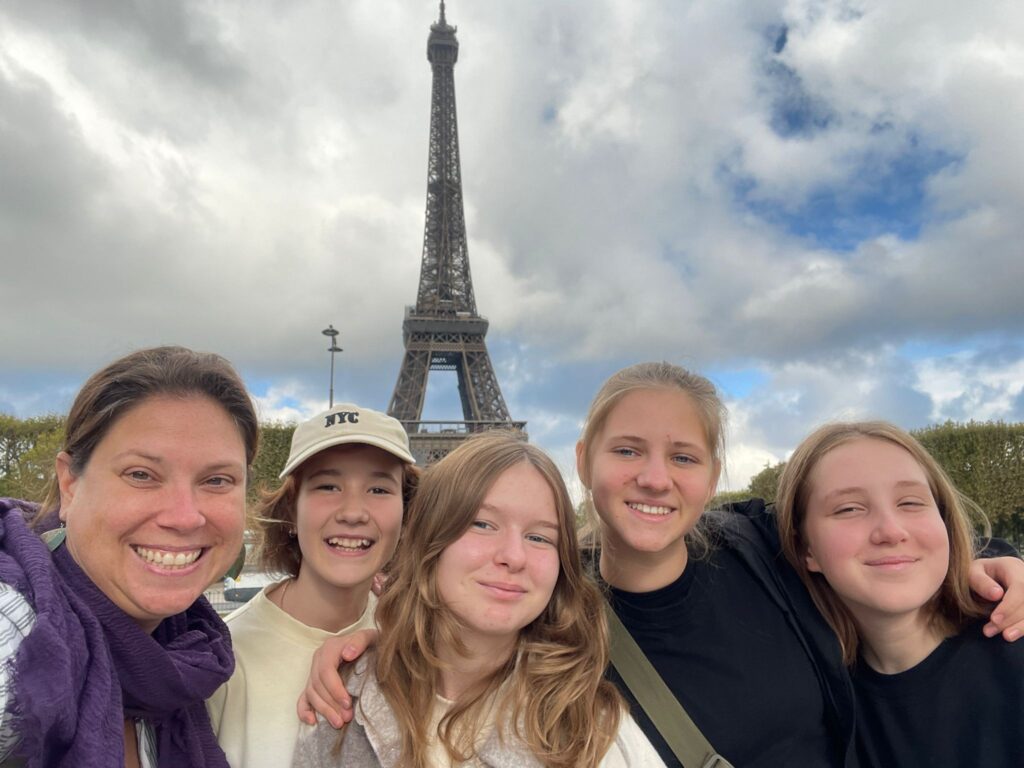
Graduates of the American International School-Salzburg have been accepted into prestigious universities worldwide. In the United States, alumni have attended institutions such as Harvard University and Stanford University. In the United Kingdom, graduates have enrolled at the London School of Economics, King’s College London, and the University of Edinburgh. Canadian acceptances include McGill University and the University of British Columbia. additionally, alumni have been accepted to universities in Austria, Germany, the Netherlands, and other countries.
Below are some words from just a few of our hundreds of graduates since we opened ours doors in 1976.
“AIS-Salzburg prepared me for life in general, it taught me discipline, it taught me how to interact and live with other people and most of all, it gave me friendships and connections which I still have today.”
Marco Vicel
Masters of Business Administration, University of Miami
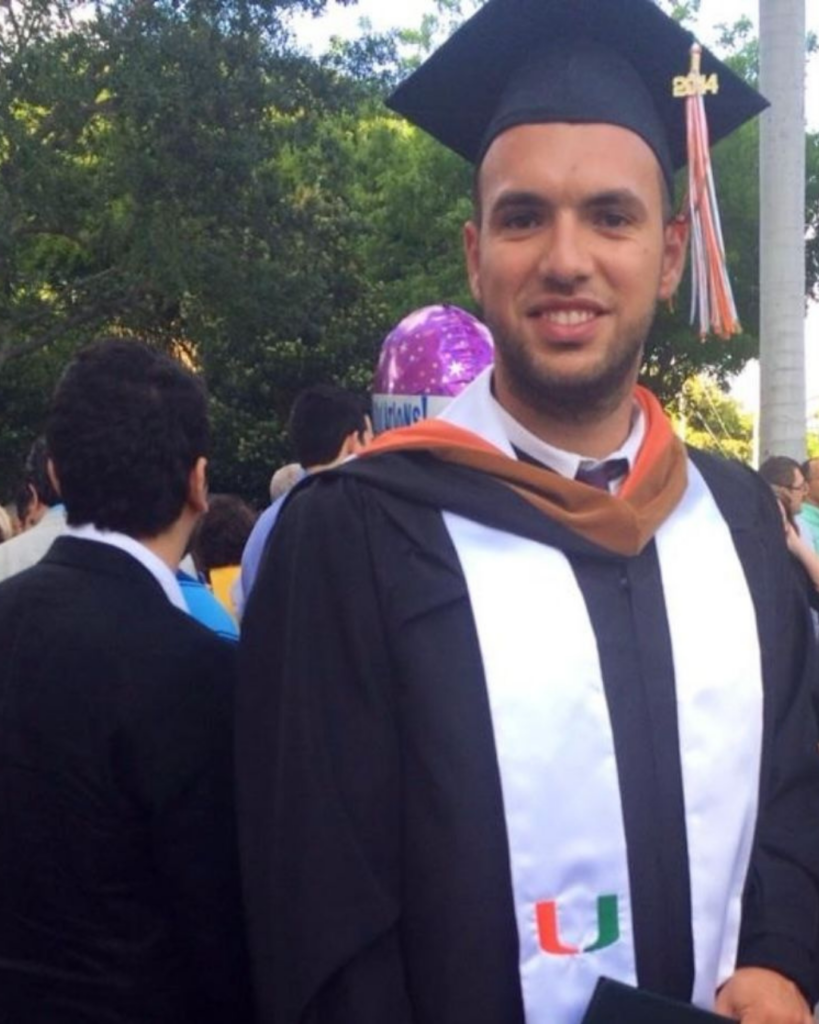
“The rigorous academic program at AIS-Salzburg, coupled with the focus on cultural immersion and international education, has been instrumental in my success both academically and professionally.”
Daria Suraeva
Masters of Economics and Political Science, Paris Lodron University of Salzburg
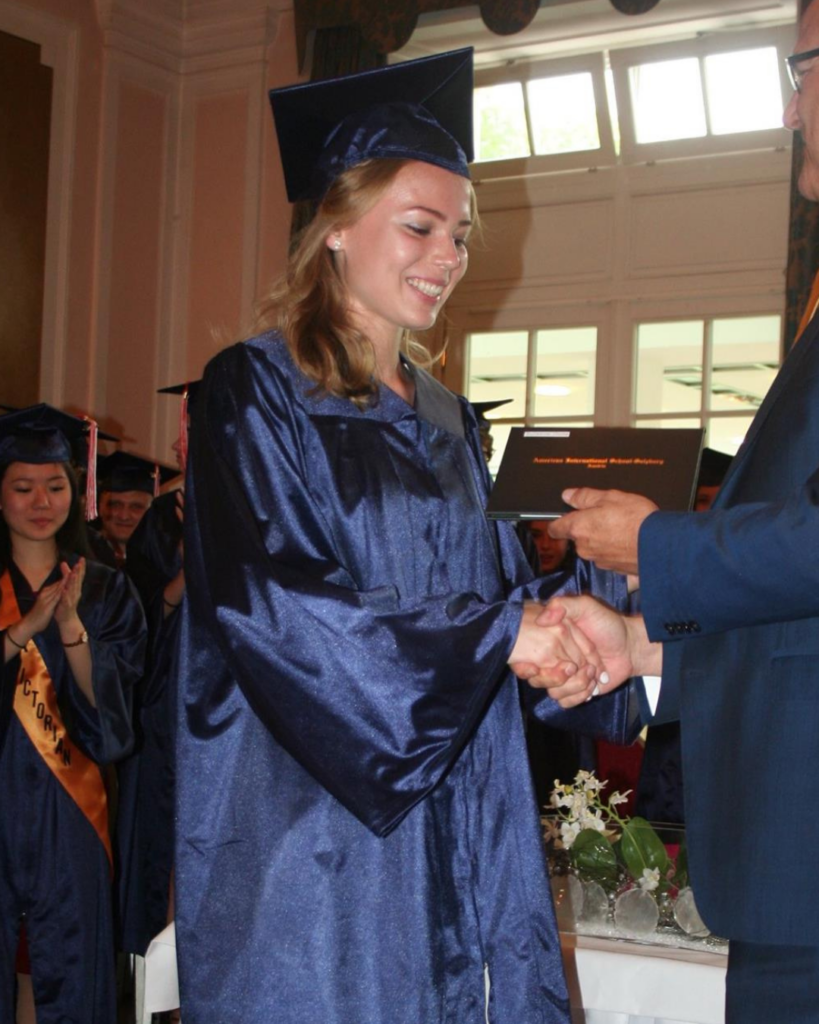
“AIS-Salzburg is where I learned how to learn. Learning so many different subjects made me excited about all of the possibilities of what to study. Currently, I am pursuing my master’s degree in sustainable research science.”
Marlene Lantz
Masters of Science in Sustainable Resources, Technical University of Munich
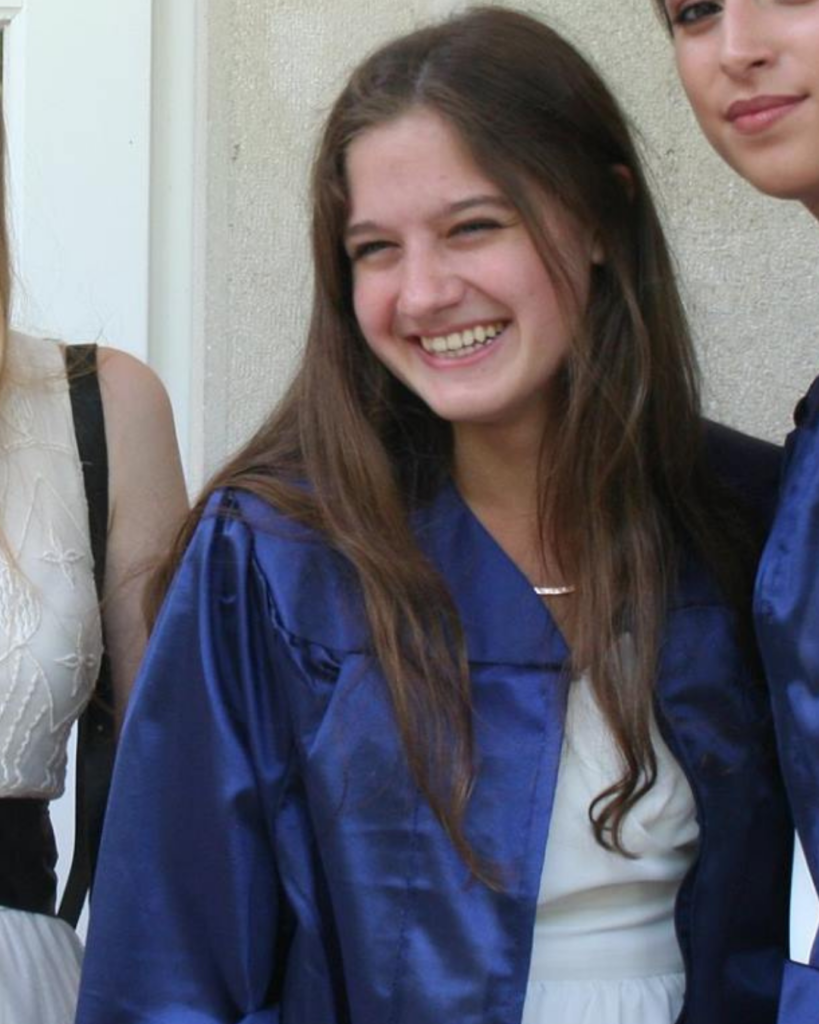
“For me, it was regime and structure. I internalized the importance of staying disciplined and assessing the work-life balance. Thanks to my AP credits from AIS-Salzburg, I graduated one semester earlier, magna cum laude. Right after college, I went to work as a software developer at Bank of America.”
Egor Isakson
Masters of Science, Data Science, Ramapo College of New Jersey
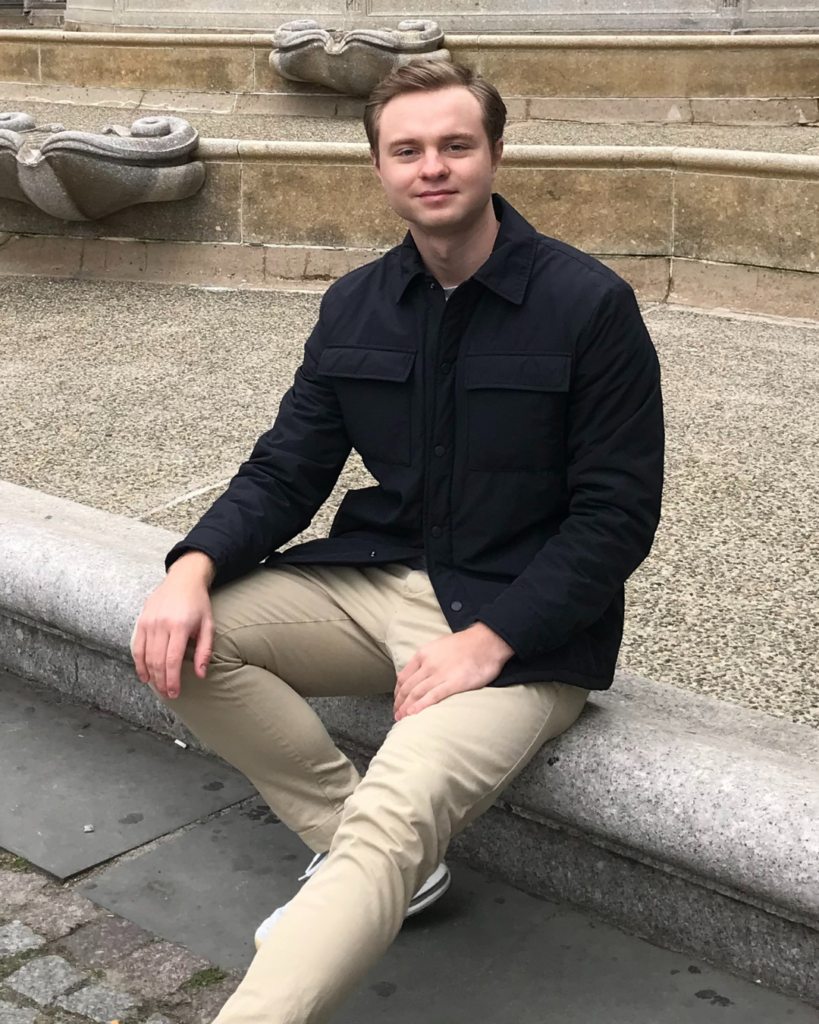
“Given the school is so small, there is no option other than taking hard classes and challenging yourself, you can’t take any easy way out. I believe it gave us all grit which is a vitally important driver of future success.”
Michaela Durinova
Masters of Business Administration, University of Miami
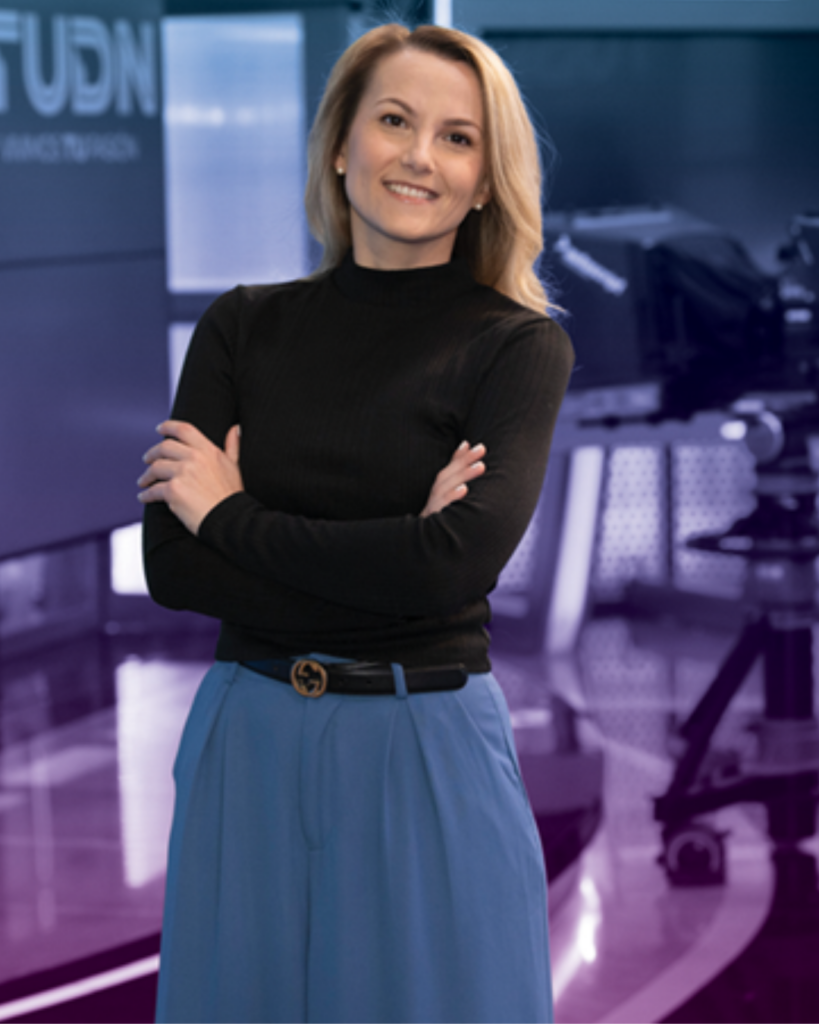
“As I progressed in my law degree, the workload also became more onerous, but thanks to the courses at AIS-Salzburg, the transition between high school and University was not that much of a shock. ”
Sonja Ratiu
Masters of Science in Law, Business and Management (with Distinction), The University of Law, UK
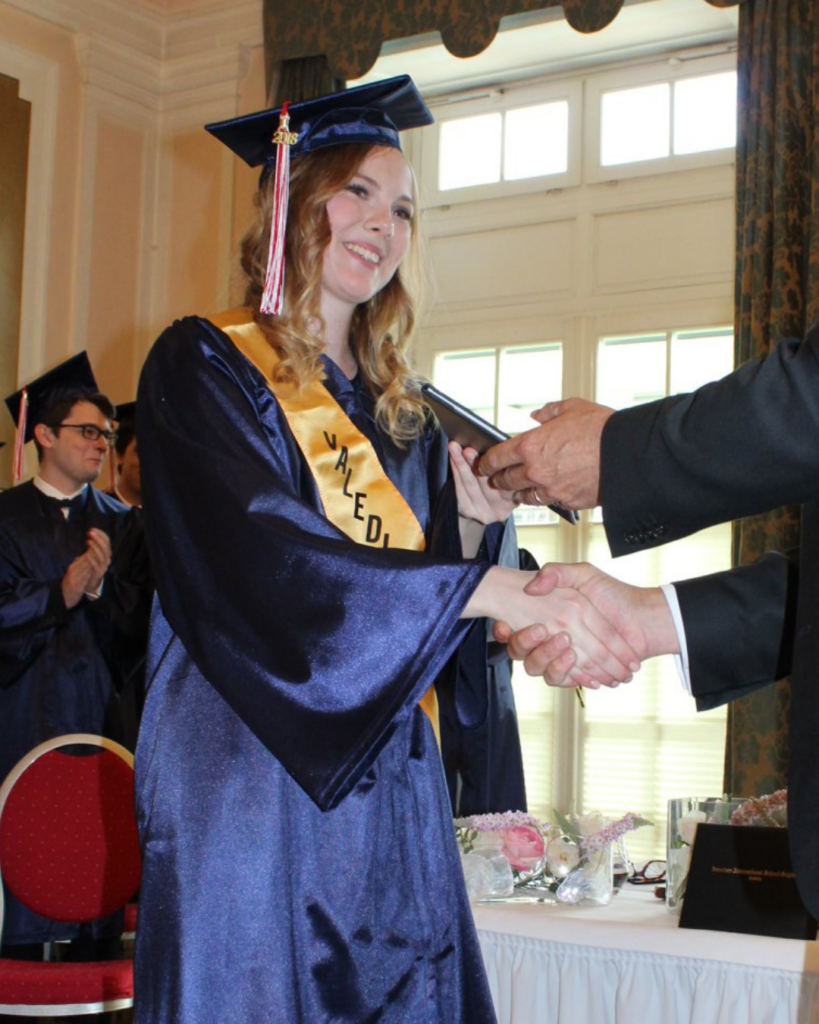
Barbara A. joined AIS-Salzburg for the 2020-2021 school year as a junior high student and aside from studying abroad in the US for her 10th-grade year, she has spent her entire high school career at our school. Barb is a five-day boarder and returns to her hometown of Baden bei Wien in Austria for the weekends, where she spends time with her older brother (20) and a younger sister (8). Every year Barb participates on both the volleyball and basketball teams, the latter of which she is currently team captain. Despite the busy sports schedule, Barb manages to also get it done in the classroom, with a cumulative GPA of just over 3.9 during her tenure at our school thus far. Barb plans to study medicine following graduation and eventually become a surgeon.
We invite you to read the interview below with Barb as she enters the final months of her senior year.
Which languages do you speak fluently?
Barbara: I speak German, Polish, and English.
If you could meet someone famous (dead or alive), who would it be and why?
Barbara: I would want to meet Claude Monet. I admire his work due to his portray of the beauty of nature. To see him bring a canvas to live would be truly a dream.
Is there a country you haven't been to which you want to see and if so, why?
Barbara: I always wanted to visit Norway, to see the mountains there and explore them by going on a backpacking trip with my brother.
What hobbies or passions do you have that you like to do in your free time?
Barbara: I am passionate about sports. Pursuing any type of sport pushes me to do my best and it clears my head of anything bothering me. Especially skiing, because there is nothing better than carving down the mountains. At AIS-Salzburg, I have been playing volleyball and basketball for multiple years and I always find joy in the days I have practice or tournaments.
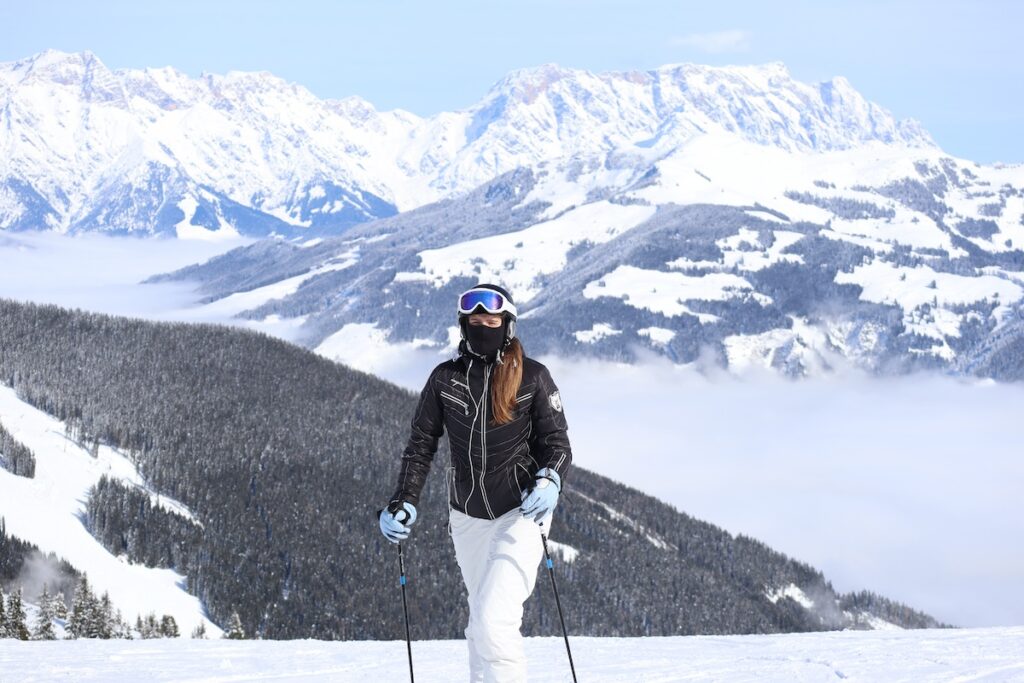
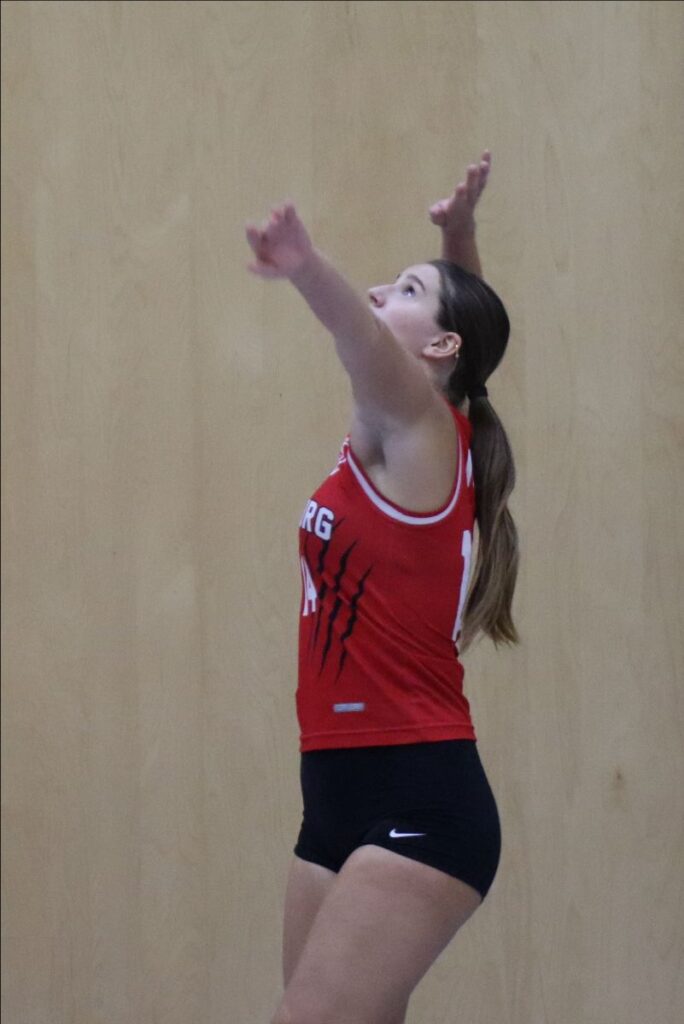
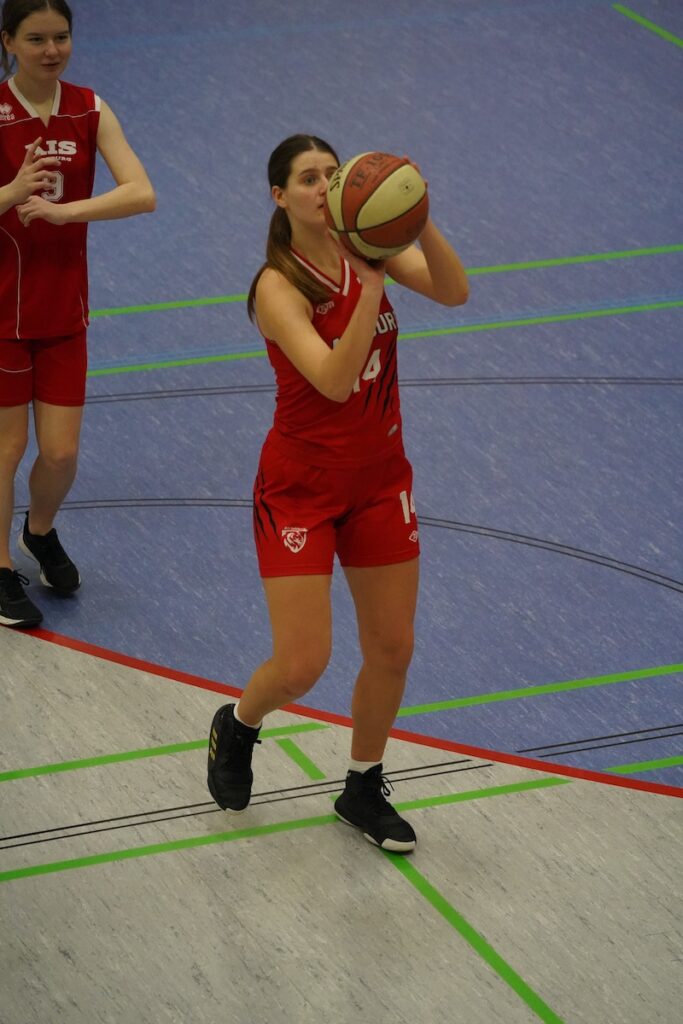
Photo: Barb has been skiing since she was “able to walk” and is a starter on both the girls’ varsity volleyball and basketball teams.
What aspects of team sports do you enjoy?
Barbara: I greatly enjoy the independence and personal progress of skiing, but in team sports I get to share the experiences. I find it bliss to share progress and experiences with other people because you need to rely on each other to fulfill the common goal and when it results in a victory, sharing it with a team is much better. Of course, team sports include more conflicts, but working through them builds up teamwork and accountability.
What is your favorite class and why?
Barbara: Although I often say that I do not enjoy calculus, it is my favorite class. I enjoy the difficulty and complexity of it.
Who is your favorite teacher or staff member and why?
Barbara: Ms. Kasberger is a great teacher and although I don’t have her this year, she has been always helpful regarding college applications, as well as being helpful with general questions. She is also always asking how everyone is doing and sincerely cares about each individual well-being.
What do you like about going to AIS-Salzburg?
Barbara: Well as a boarder, I only have to walk downstairs to go to classes, but what I mostly appreciate about going to AIS-Salzburg is the study habits that the school has established for me to adopt, as well as the activities they offer on the weekends.
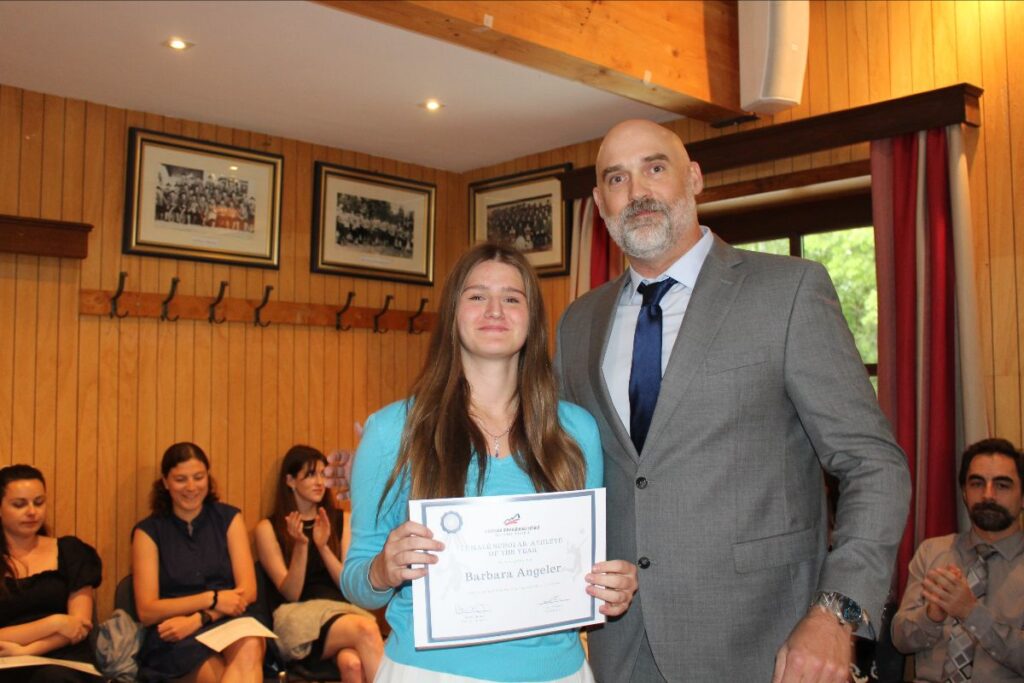
Photo: Barb receives the 2023-2024 ‘Female Student-Athlete of the Year’ award.
What do you like about going to AIS-Salzburg?
Barbara: Well as a boarder, I only have to walk downstairs to go to classes, but what I mostly appreciate about going to AIS-Salzburg is the study habits that the school has established for me to adopt, as well as the activities they offer on the weekends.
Has your time at AIS-Salzburg changed you in a positive way and if so, how?
Barbara: Coming to AIS-Salzburg, I was doing very poorly at school but as I started having study hall and motivation from the school, I became one of the top students of my class
Which APs are you taking this year and how challenging to do you find them?
Barbara: AP Chemistry, AP European History, AP Literature, AP Calculus, AP Biology, and AP Psychology. I find the courses are very manageable, but I struggle with cramming all of the material for one test.
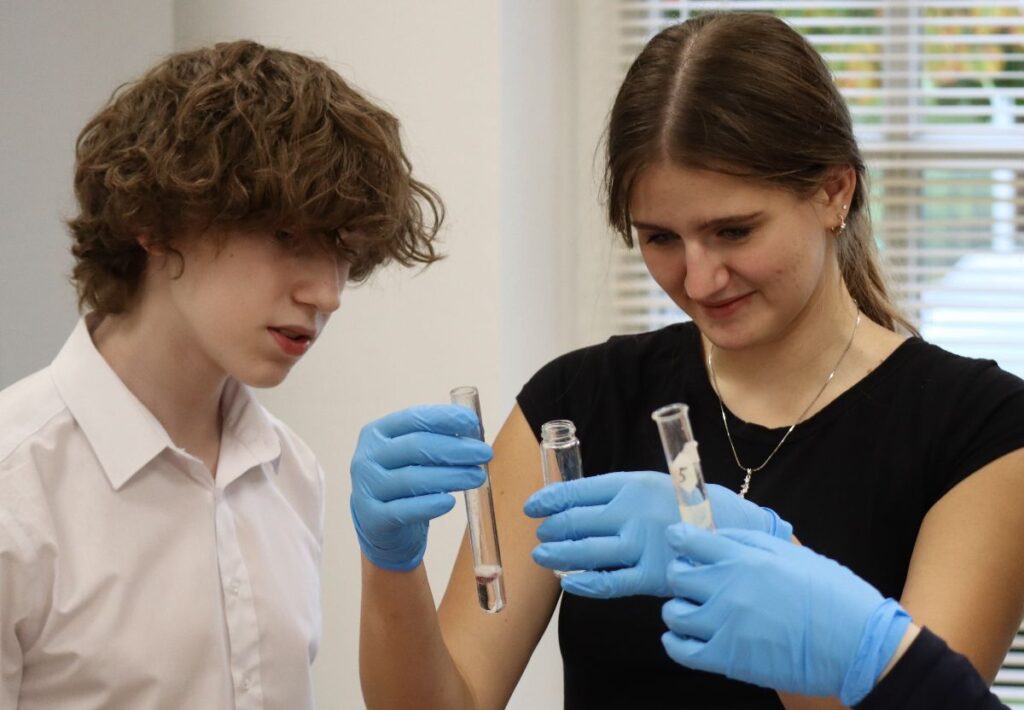
Which universities have applied to, which is your top choice(s), and why?
Barbara: I have applied to Northeastern and Yale for now. They are very difficult schools to get in, but if I never tried I would never know. My top choice is Northeastern, due to its co-op program, which is a program where you have a job in your field for a semester. I also want to study there due to its reputation of having a positive environment. I don’t have the biggest hopes to get into either school, but I am also considering a gap year.
We invite you to watch the Instagram highlight video below of Barb as an example of the AIS-Salzburg student-athlete.
Students in AP Human Geography have spent the last month of school learning about Agriculture and Rural Land Use. Some essential questions of this unit are as follows: How do a people’s culture and the resources available to them influence how they grow food? How does what people produce and consume vary in different locations? What kind of cultural changes and technological advances have impacted the way people grow and consume food?
Our school’s location in Salzburg, Austria offers us the unique opportunity to visit farms right in our backyard. SalzburgMilch is a local milk producer that owns many farms of various sizes around Salzburg state. The Schlagerbauer BioHof is a farm right off the Moosstrasse that runs an operation of 24 cows and countless chickens, using only organic techniques. The farm owner, Stefanie, graciously hosted our class of 11 students to tour and learn about her farm with guidance from Katharina, one of SalzburgMilch’s bovine veterinarians.

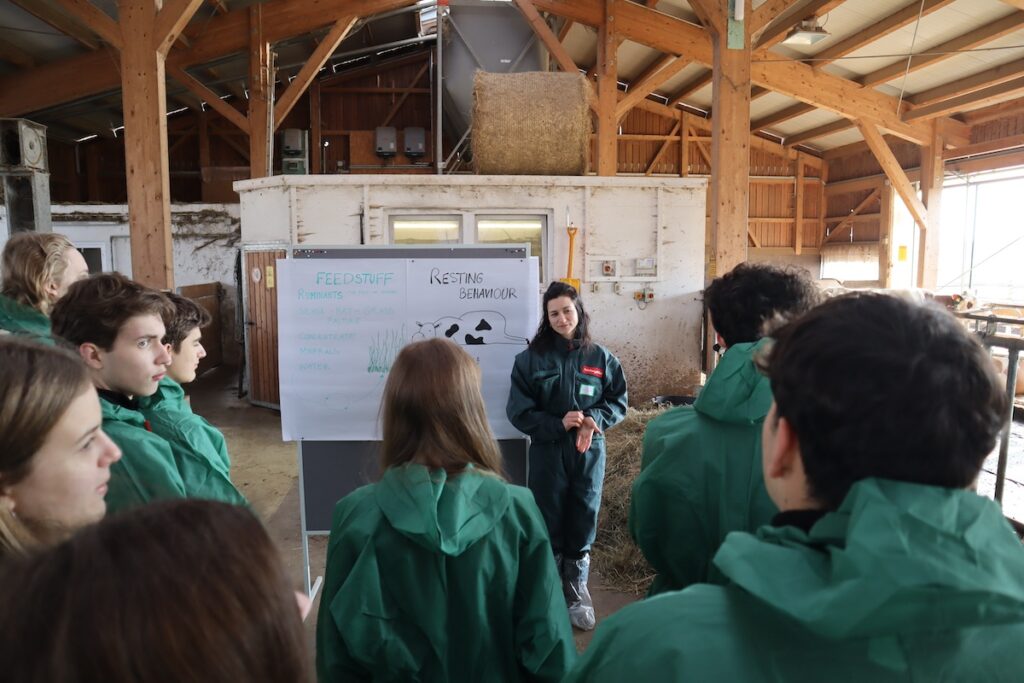
| Students started the tour by getting dressed in the appropriate gear – overalls and shoe covers – in order to both keep their clothes protected and also to not contaminate any of the animals with outside bacteria. After suiting up, students saw the farm operation and learned about the life cycle of a dairy cow, its eating habits, and the resources needed to sustain the farm. We saw the newest calves of the farm, the older calves, and the adult cows feeding in the main parlor. Katharina provided a great overview of the information while attentively answering students’ questions about procedures and farm operations. At the end of the tour, students got to make their own butter from SalzburgMilch’s heavy cream product, shaking the liquid until it became solid butter! Students spread their newly made butter onto bread made by Stefanie herself! It was a delicious end to a very informative and engaging tour. Some students even got to purchase some of the farm’s fresh milk from its Milch Automat. Huge thank you to Stefanie and Katharina for their generosity! |
Salzburg-born, Chiara Dankl, moved with her family at a young age to Tucson, Arizona, USA, where she spent most of her elementary school years before moving back to Salzburg in 2005. After three years at an Austrian Gymnasium, Chiara decided to enroll at AIS-Salzburg as a junior high student in 2008. She spent her entire high school career at our school, graduating at the top of her class in 2012 and earning the Valedictorian recognition. She was an active member of our community throughout her time at AIS-Salzburg and was a member of the girls’ volleyball and basketball teams for multiple seasons.
Chiara currently resides in Vienna where she is teaching while finishing up her PhD. We invite you to read the interview below with Chiara as she reflects on her time at AIS-Salzburg and shares what she has been up to since graduating.
What is/are your fondest memory or memories of attending AIS-Salzburg?
Chiara: So many! Interesting and varying lessons, critical discussions in European History, Lady Lions basketball and volleyball sessions, having high standards to live up to, meeting so many people from different cultures, Ms. Cerone’s drama class, having breakfast/lunch together…
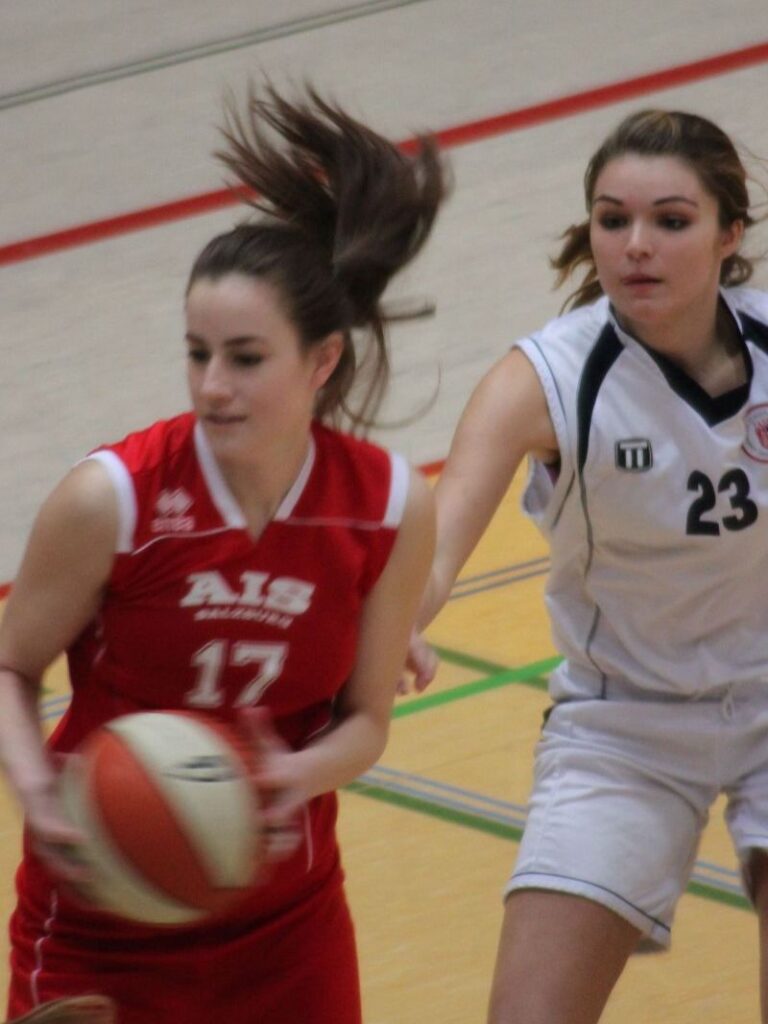
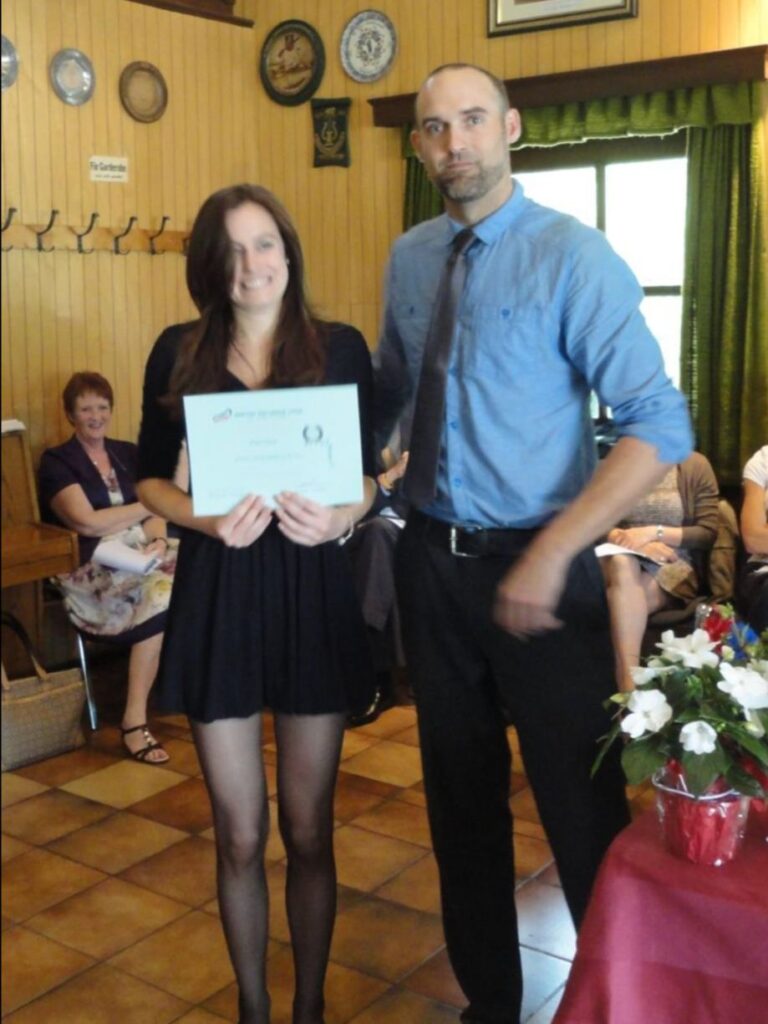
Photos: Chiara not only excelled in the classroom at AIS-Salzburg, she also received awards for her accomplishments on the basketball and volleyball courts. ullamcorper mattis, pulvinar dapibus leo.
What were the major factors in your decision to attend a small private boarding school in Austria?
Chiara: We were looking for a high-quality school close to home, having come back to Salzburg from the US a few years earlier. The main factor was probably simply the first impression I had on my visiting day. And it proved true, as AIS-salzburg turned out to be a great choice for my life. I experienced it as a supportive as well as academically challenging community and am thankful for my years there.
What did you enjoy about going to such a small international school?
Chiara: Having small groups in class, knowing each other well and making new friends every year.

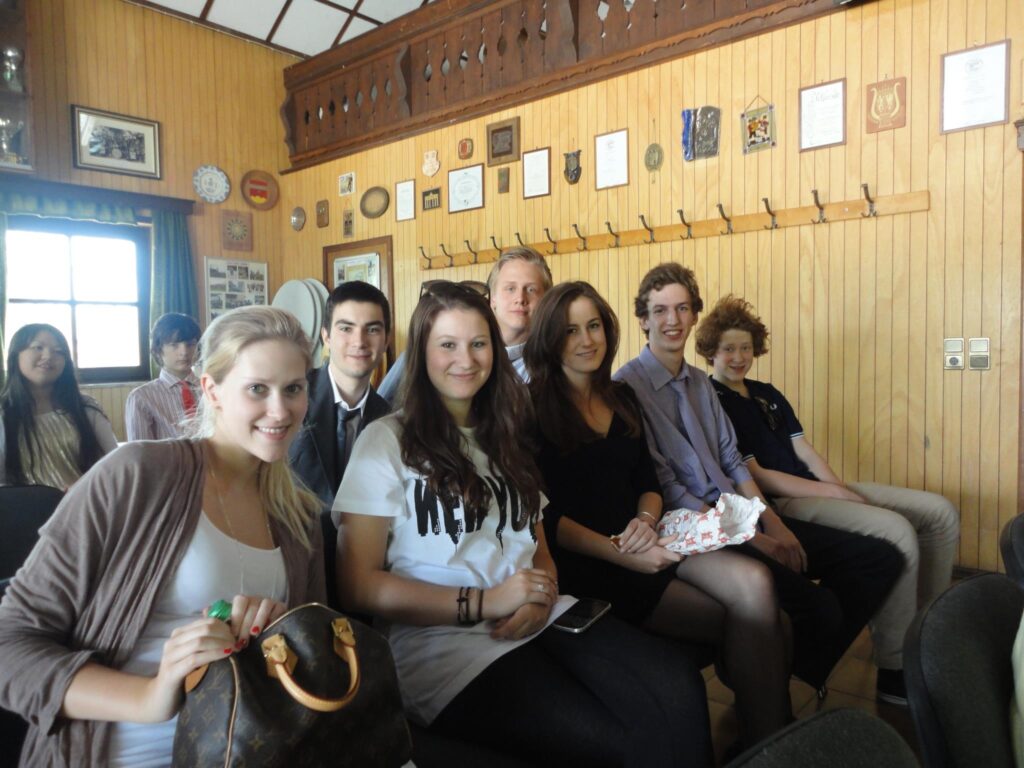
Photos: Chiara poses with classmates at the 2012 winter (top) and year-end (bottom) award ceremonies
Were there any teachers who made a major positive impact on your life?
Chiara: Most teachers did, through their balance in encouragement and demands. Some specifics: Mr. Agardy for igniting my critical thinking in an enriching year of European History and for his calm attitude and high standards; Mr. Burns for recognizing hard work and building our team spirit; Ms. Bauer for her positive encouragement and for kindling my self-esteem and joy in writing; Mr. McLean for his humorous discipline and running of such a great school; Richard for believing in me to skip a grade in math and daring to tackle Calculus (and growing to like it); Ms. Cerone for her bubbly encouragement to try something new; Mr. B. for leadership skills.
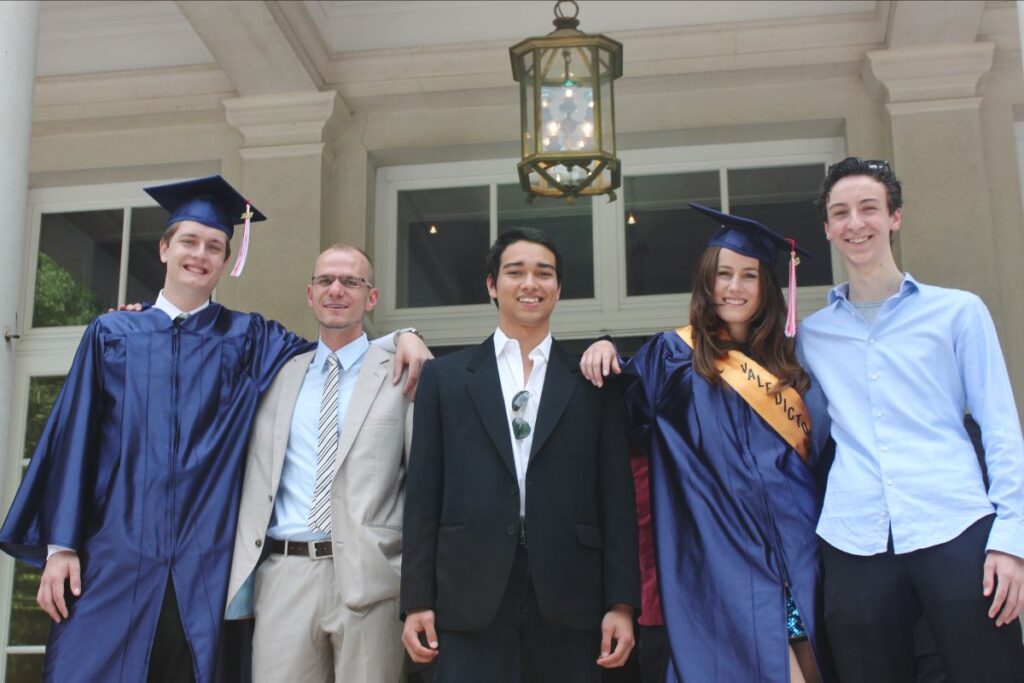
Photos: Chiara poses at her AIS-Salzburg graduation with Calculus teacher, Richard Brodiansky (above with tie), Jeff Agardy (below second from left), and Mr. McLean (below far right).
What have you done academically and professionally since graduating from AIS-Salzburg?
Chiara: After school, I studied political science and then philosophy, where I did a bachelor’s and master’s degree and am currently employed at the University of Vienna where I teach and am completing my PhD on the connection of society and psychological disorders. A few years ago, I also started studying psychotherapy science and training and am now working as a psychotherapist in a group practice. I’ve been active in university politics and various art projects.

Are there any personal, academic, or professional accomplishments since graduating that you want to share?
Chiara: Probably doing the things I did in general and doing them well. A few random things I can think of right now that I’m proud of: winning a state prize for my Masters Thesis in philosophy (on the effect of social norms and power structures an depression); biking from Austria to Greece and in the Caucasian Mountains; growing to be a more responsible and loving person. In the end, I guess a key personal achievement is coming to do the things I do for the joy of doing them rather than (external) success.
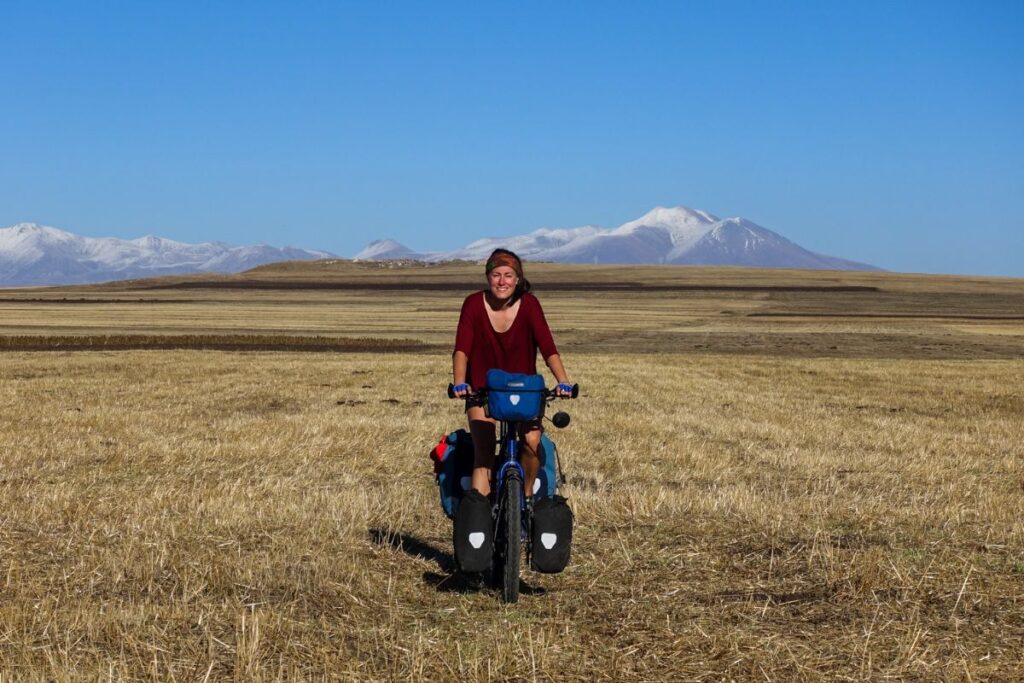
What aspects of your education at AIS-Salzburg best assisted you in further academics, your professional life, and/or life in general?
Chiara: Academically, I received (and worked for) an excellent education, with a broad and in-depth foundation for my later university studies and career. Often university was easy, because I had already learned much about the subject – and my curiosity and love of learning was apparently sparked so well, that I went on to study the one subject, I didn’t have in school: philosophy. Our teacher’s attitude was probably one of the most important aspects in this: Feeling they expected my best made me work to stretch my intellectual capacities and receiving their honest recognition for this, in grades and personally, motivated me to learn even more built up my confidence and self-esteem.
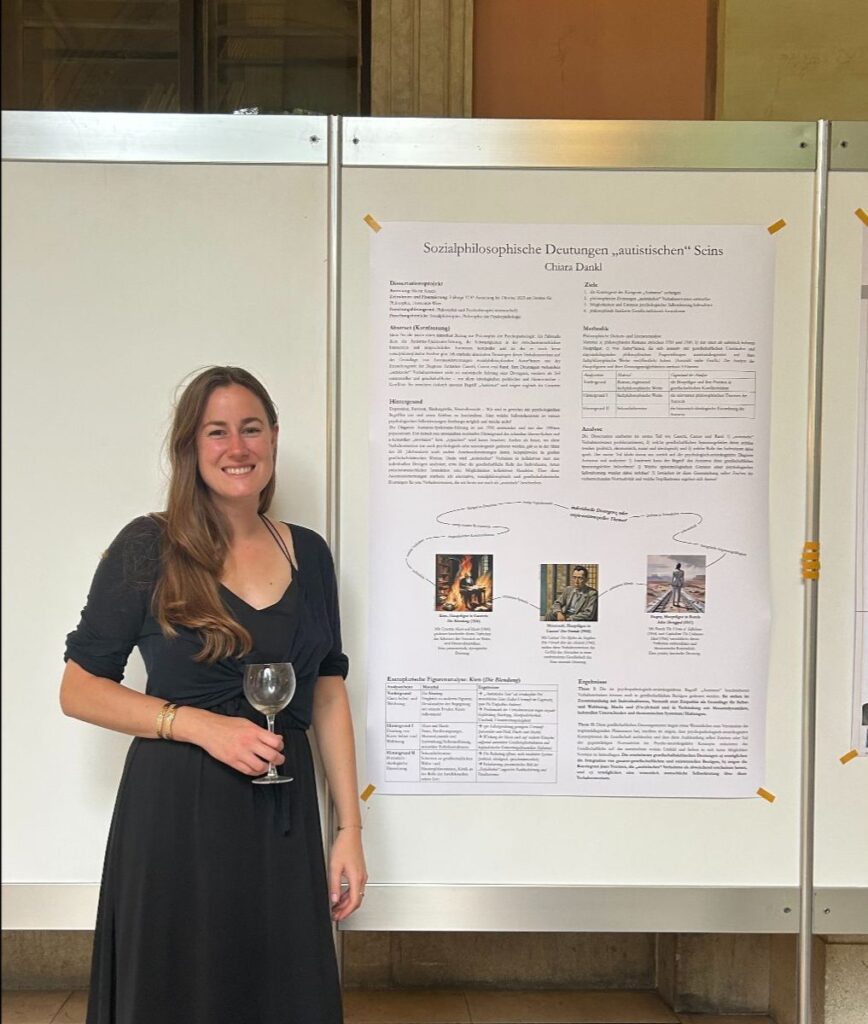
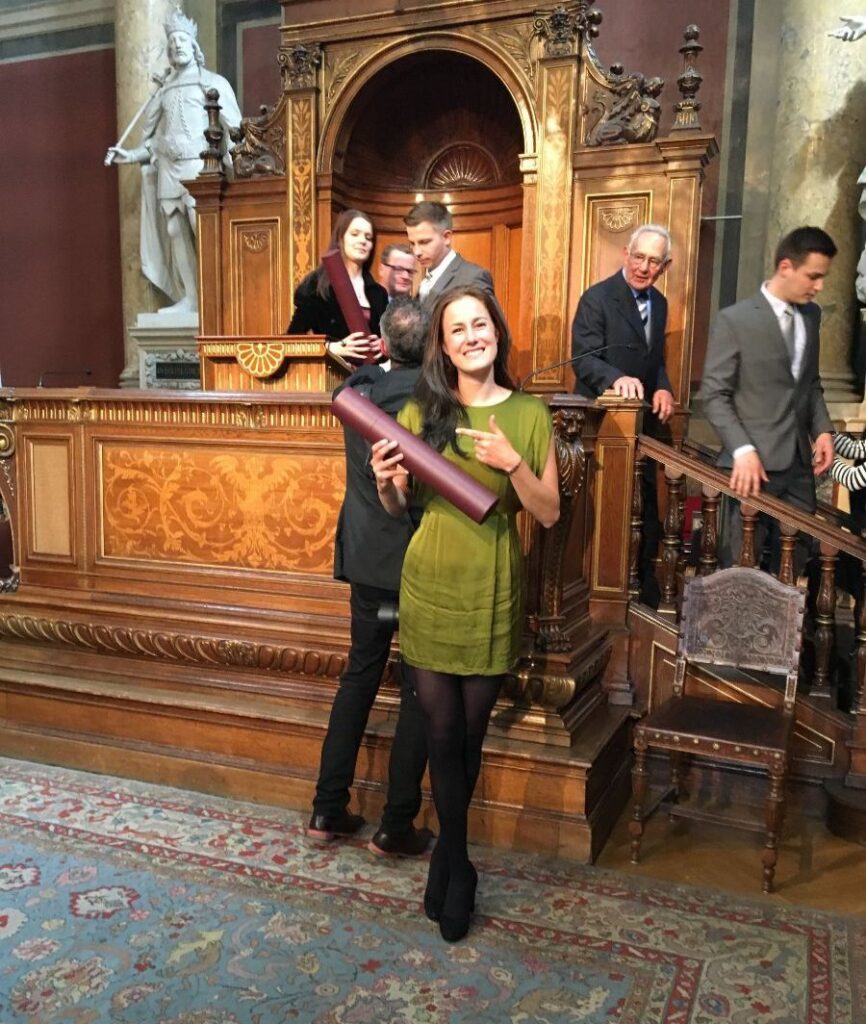
Do you have any advice for students at AIS-Salzburg or applicants to the school?
Chiara: Visiting before applying helped me get a feel for the school. And as a student, I would have liked to realize earlier how much my teachers genuinely wanted me to be happy and succeed – coming to realize that took me a while, after the authoritarian school I visited before AIS-Salzburg. I’d tell myself: count on it that the teachers are on your side and if you have troubles of any kind, pick a teacher you trust and share with them.
This past weekend, both our boys’ and girls’ basketball teams secured three wins in as many games at the DVAC junior varsity basketball festivals in Vienna.
Despite having only 6 players due to illnesses, the boys’ team defeated the International Christian School of Vienna 42-21, Vienna International School 32-31, and the Amadeus International School 36-31.
“The boys banded together and played better than I have ever seen,” said coach Nick DeWitt. “They were more united as a team and executed our plays on offense more efficiently than ever. I was very proud of each and every one of them for their contributions on Saturday. A special shoutout to Rodney for his work ethic, commitment, and positive attitude, even in the face of adversity.”
“We played as a team, supported each other and gave our maximum,” said senior player and leader, Petar V. “We should work on our fitness and offense, because at the varsity level, without them, it is going to be difficult to win.”

The girls’ basketball team had little trouble with the junior varsity competition level, defeating AIS Vienna 20-5, AIS Budapest 23-2, and the International Christian School of Budapest 36-15.
“Playing at the junior varsity level was a good opportunity for girls who are still very new to the game to gain some experience and confidence,” said coach David Burns. “For our more experienced girls, it was an opportunity to try new things they have learned and focus on aspects of their game that need improvement. At our team dinner the night before, each player set individual goals to focus on during the tournament.”
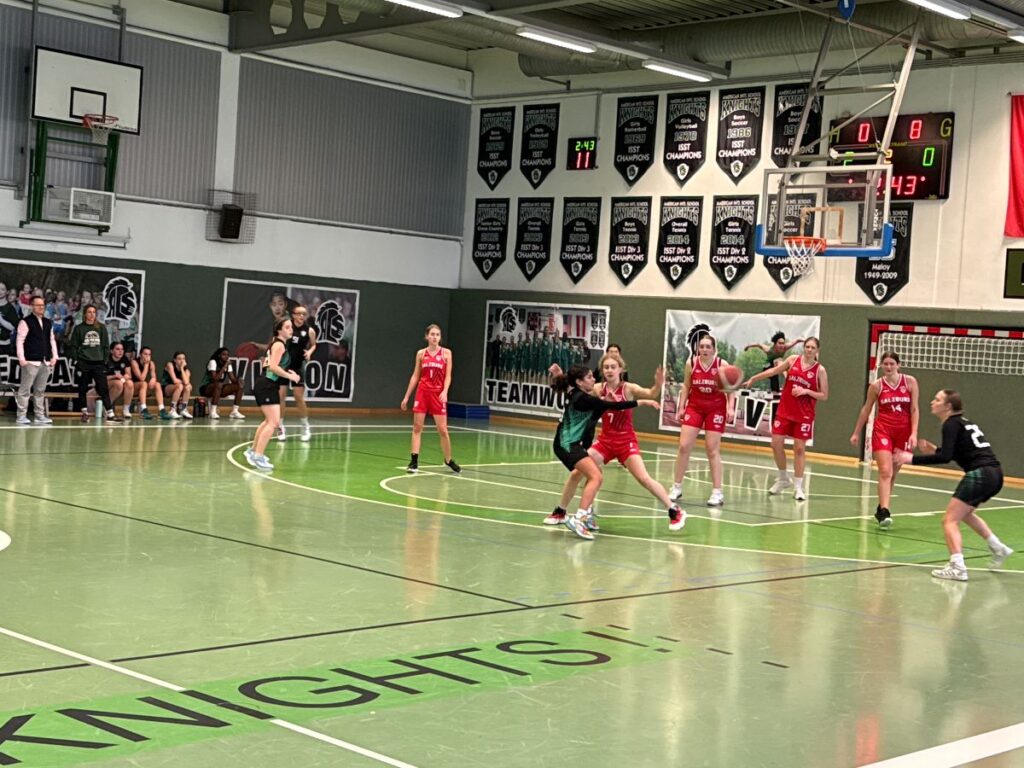


“We have had stronger game days, but we focused on the drills we did in practice,” said team captain and senior player, Barb A. “The newer players on the team executed what we worked on in practice and scored more baskets than usual! Overall, the whole team was motivated from the morning through the final game, and it was a fun trip to Vienna.”
Congratulations to Juliana H. for scoring her first-ever points in basketball and two baskets against AIS Budapest. Lera K. had a breakout performance in the final game against ICS Budapest, scoring multiple times and grabbing numerous rebounds.
After these strong performances, both teams will advance to the varsity level for the DVAC championships on March 15th.
Earlier in the school year, AP® European history students spent a week on an Enlightenment Salon Project culminating in the “Enlightenment Salon Discussion,” in which they each took on the persona of an Enlightenment figure. Throughout the week, students read about different figures and took notes on their various ideas and influences on the time. In the video below featuring one class from this project, students were given their Enlightenment figure assignments and created a “resume” for their figure. This included major accomplishments and influences as well as theories or ideas of the figure. The following day, the class had a fishbowl discussion where 10 Enlightenment figures—portrayed by the students—sat around and discussed ideas about society, religion, economics, and politics.
Unlike many international schools in Europe, AIS-Salzburg offers the Advanced Placement (AP) academic program instead of the International Baccalaureate (IB). Below are 10 reasons why we believe the AP program is the best choice for preparing our students for university.
1. Flexibility and Customization:
AP offers students the ability to choose individual courses tailored to their strengths and interests. Unlike the IB program, which requires students to take courses across a range of subjects, AP allows students to focus on specific areas of interest or career aspirations. This flexibility can reduce unnecessary stress for students who excel in particular disciplines.
2. Accessibility and Affordability:
AP programs are widely available across the United States and in many other countries, often with lower associated costs compared to the IB program. AP exams are less expensive than the cumulative cost of IB registration and exams. Additionally, students can take AP courses à la carte, avoiding the high financial and time commitments of the full IB Diploma.
3. College Credit Opportunities:
AP exams are widely recognized by colleges and universities in the United States, often granting students credit for high scores (typically 3, 4, or 5). This can save students thousands of dollars in tuition and reduce the time required to graduate. While IB also offers college credit, AP’s recognition is generally broader and more straightforward.
4. Focus on Depth Over Breadth:
AP courses emphasize a deep dive into specific subjects, allowing students to master advanced material in areas of their choice. In contrast, the IB program’s holistic approach may dilute focus by requiring students to take a wide array of subjects, including those outside their comfort zone or future career interests.
5. Preparation for College-Level Coursework:
AP courses are designed to align closely with introductory college courses, giving students a clear sense of the academic expectations in higher education. The subject-specific rigor helps students build skills needed for success in college, particularly in STEM fields, where AP courses like Calculus AB/BC and Physics C are highly valued.
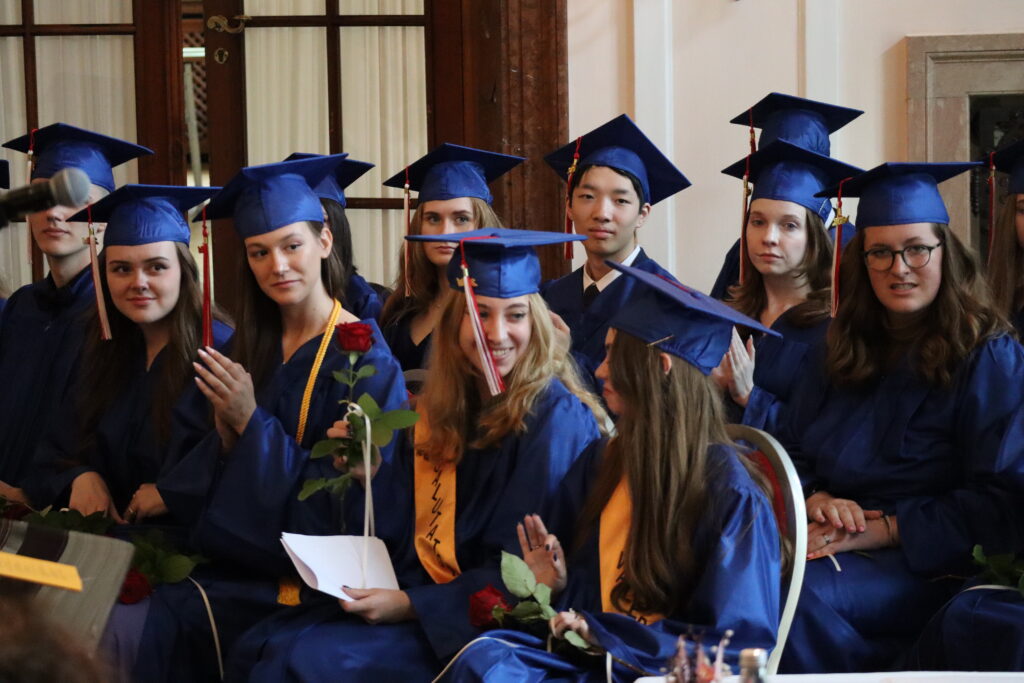
6. Flexibility in Academic Pathways:
AP courses can be taken at any point during high school, allowing students to integrate them into their schedules as they see fit. IB, on the other hand, requires a two-year commitment to its diploma program, which may not suit students with diverse academic or extracurricular commitments.
7. Reduced Administrative Burden:
The IB Diploma requires students to complete additional components like the Extended Essay (EE), Theory of Knowledge (TOK), and Creativity, Activity, Service (CAS) hours. While these components encourage well-rounded development, they can be time-consuming and stressful for students. AP programs focus primarily on subject-specific coursework and exams, allowing students to manage their time more effectively.
8. Global Recognition:
While IB is internationally recognized, AP also holds significant global credibility, particularly in North America—AP is recognized in the admissions process by more than 4,000 universities worldwide, and outside the U.S., more than 600 universities in more than 60 countries recognize qualifying AP® Exam scores. Many universities worldwide, especially in the United States and Canada, view AP coursework as an indicator of college readiness and academic rigor.
9. Greater Availability of Resources:
AP programs have a long history and extensive resources, including textbooks, online courses, and test preparation materials, making it easier for students to excel. IB resources are often less widespread and can be harder to access outside of schools that specifically offer the program.
10. Diverse Pathways for Non-Diploma Students:
Students can participate in AP without committing to a full program, which makes it accessible to those who cannot or do not wish to pursue an intensive program like the IB Diploma. This inclusivity broadens opportunities for academic achievement and advancement.
In conclusion, while the IB program has its merits, AP’s flexibility, accessibility, and alignment with individual student goals make it a superior choice for our students seeking advanced academic opportunities.
Written by R.A. Patrick
Early Saturday morning, 16 of our students with RAs Abby and Patrick embarked on an overnight trip to visit Vienna, explore the city and, of course, the amazing Christmas markets.
We arrived to Vienna around 12 noon on Saturday to beautiful blue skies and sun shining down on the wonderful Austrian capital. We quickly dropped our bags at the hotel and hustled off to Rathausplatz for ice-skating and shopping at the Christmas market. The students had a blast flying around on the ice, shopping for gifts and souvenirs, and indulging in some of the sweet holiday treats found at any number of the impressive stands in the plaza.
Later that evening, we headed off to the famous Prater Amusement Park for a group dinner and more fun adventures. The students were in awe as they sat for dinner inside the aptly-named Roller Coaster Restaurant watching the food and drinks literally transport itself along the intricate rail system inside the establishment all the way from the robot-operated kitchen to the table.
After a delicious dinner the kids set out to enjoy the rides and attractions filling the park grounds. Some of the group took in a magnificent panorama view of the city atop the tower ride while others bravely entered the house of horrors or rode rollercoasters on the cool December night.
On Sunday morning the adventures continued as we travelled over to Stephensplatz where the students spent a bit of time on their own checking out the gorgeous architecture and numerous cafes and chocolate shops. Then we entered the Time Travel Vienna tour where we experienced a virtual, interactive, 4D historical journey of Vienna through the Dark Ages to the present day. We heard from Kaiser Franz Joseph, Mozart, Sissy, and a plethora of other revered Viennese legends as we learned about the city.
In the afternoon we sluggishly arrived at the train station with bags in hand, tired but with big smiles on our faces, ready to return to Salzburg for some much-needed rest from all the festivities.

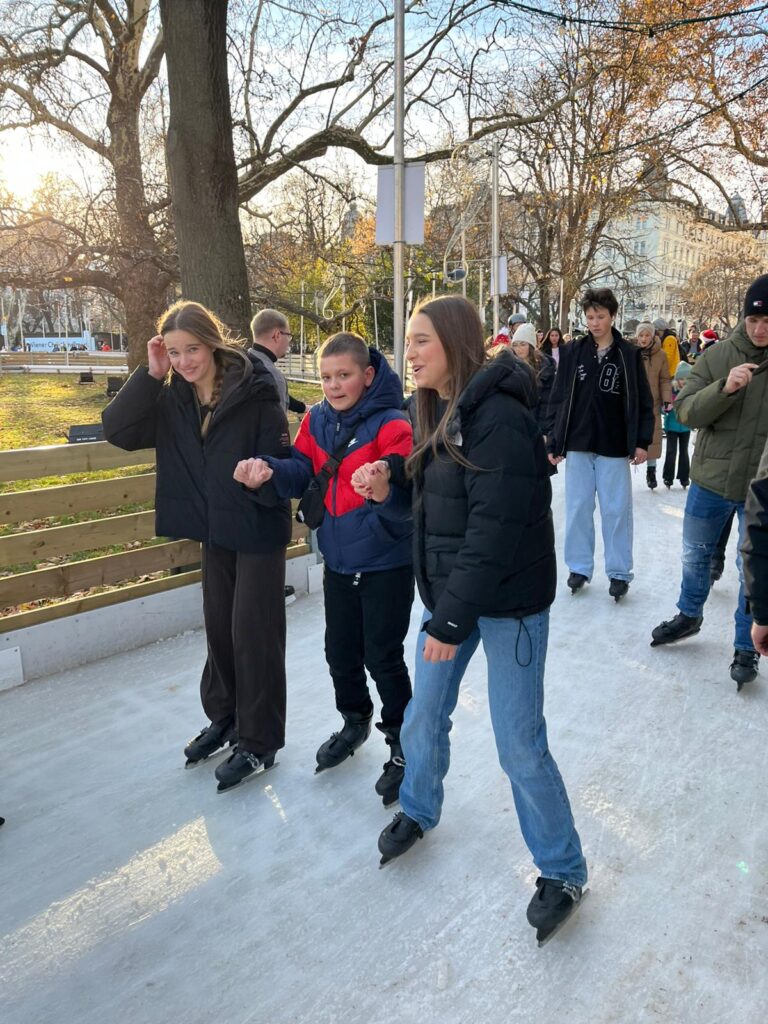
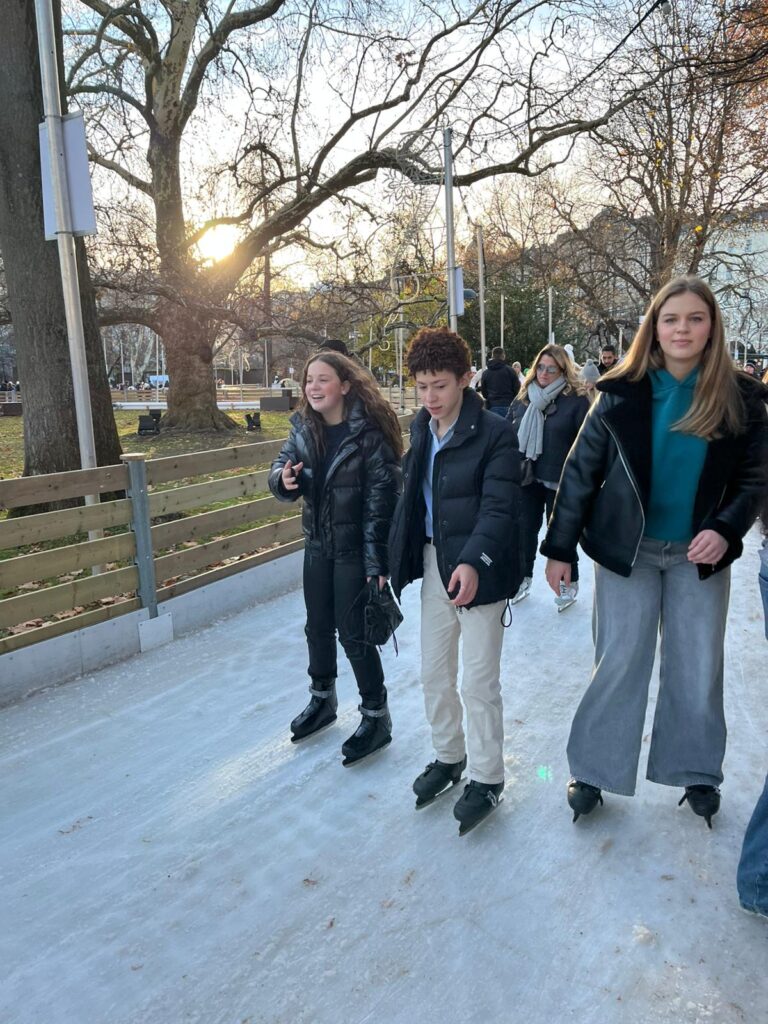
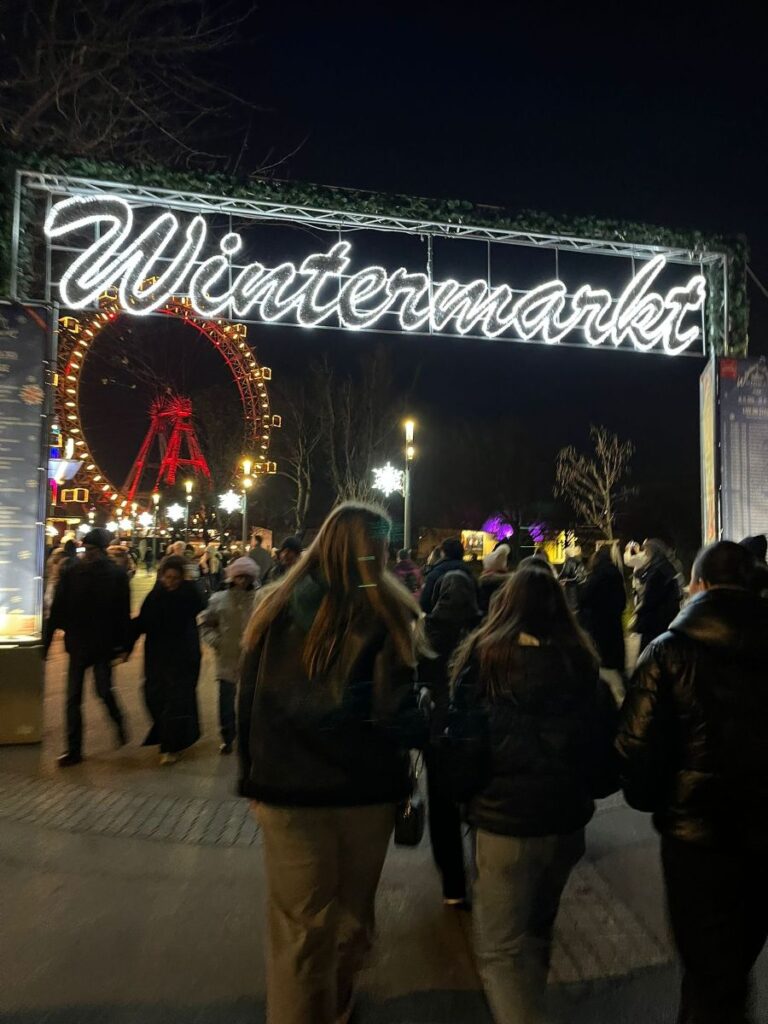
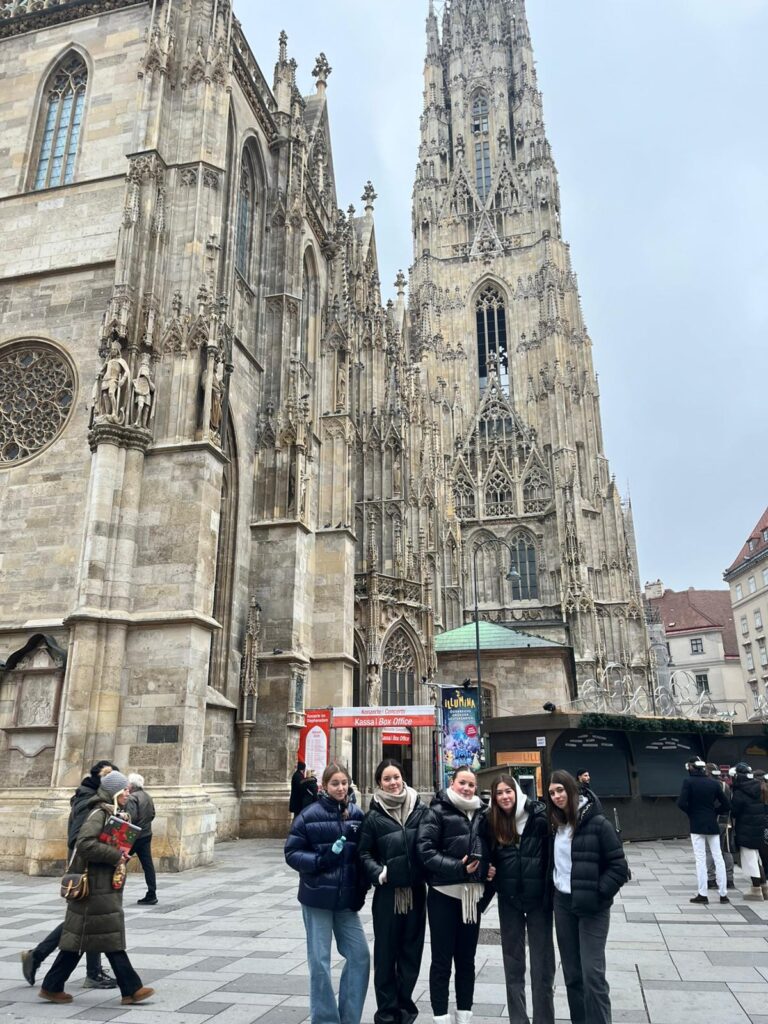
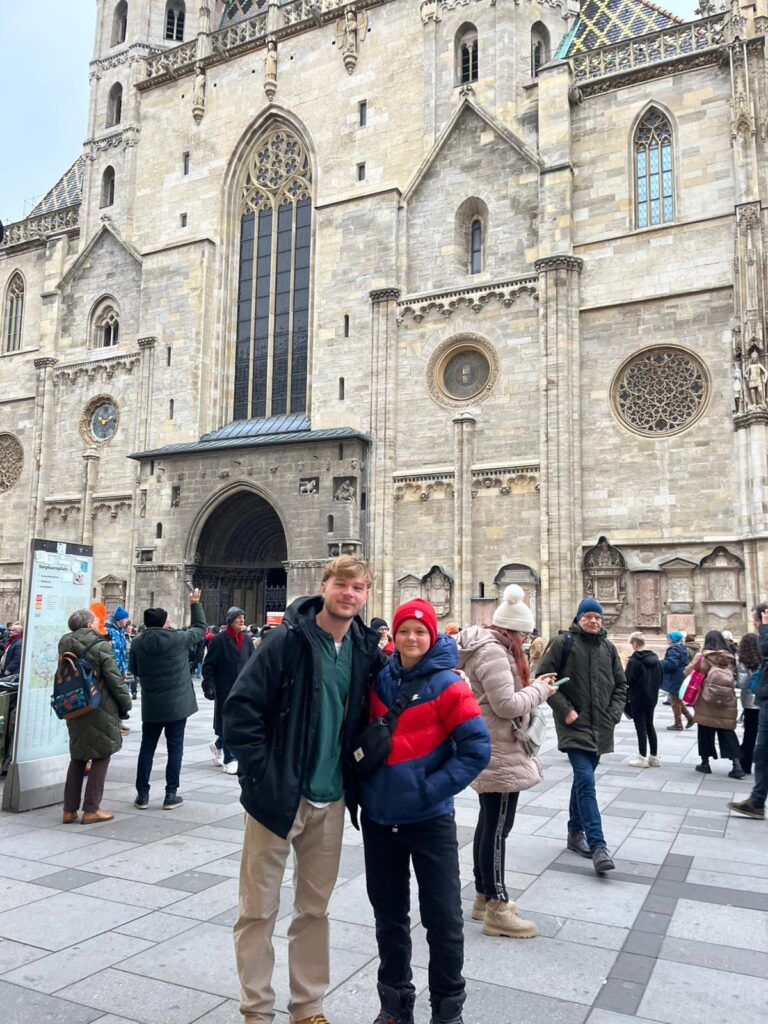
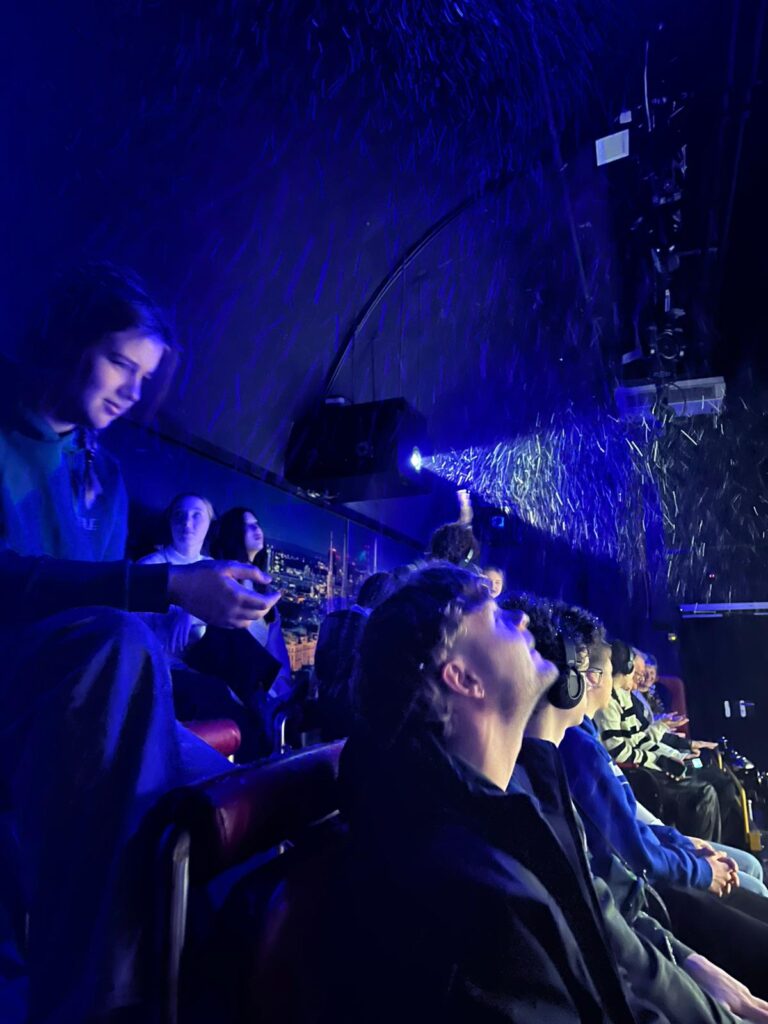
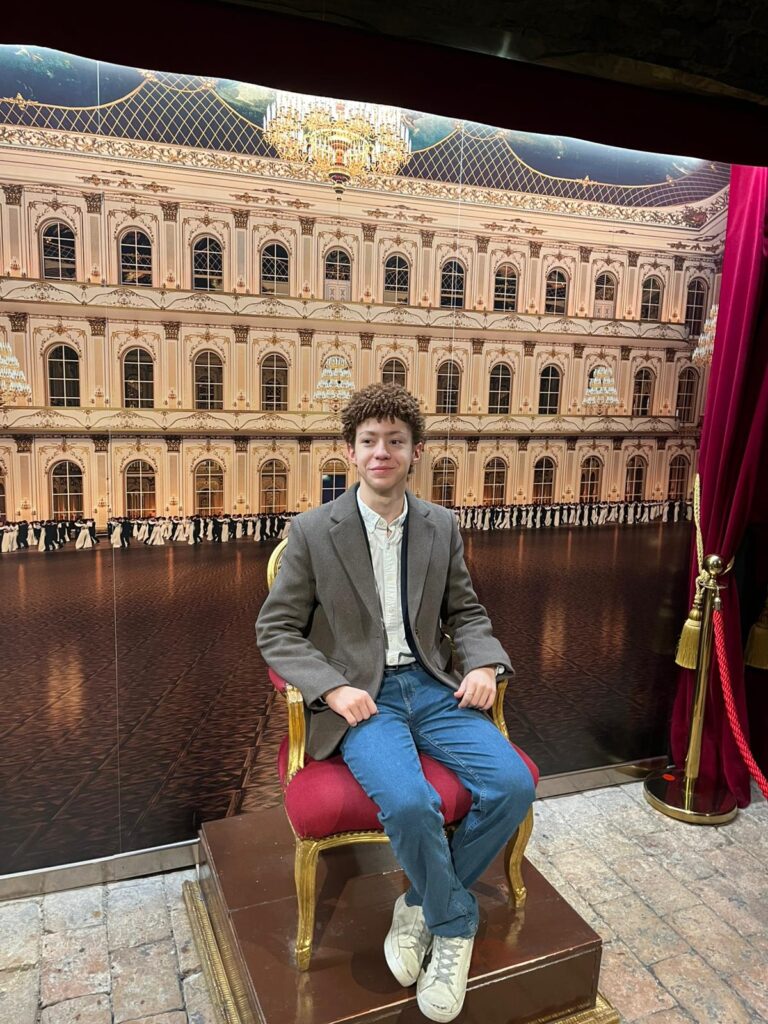
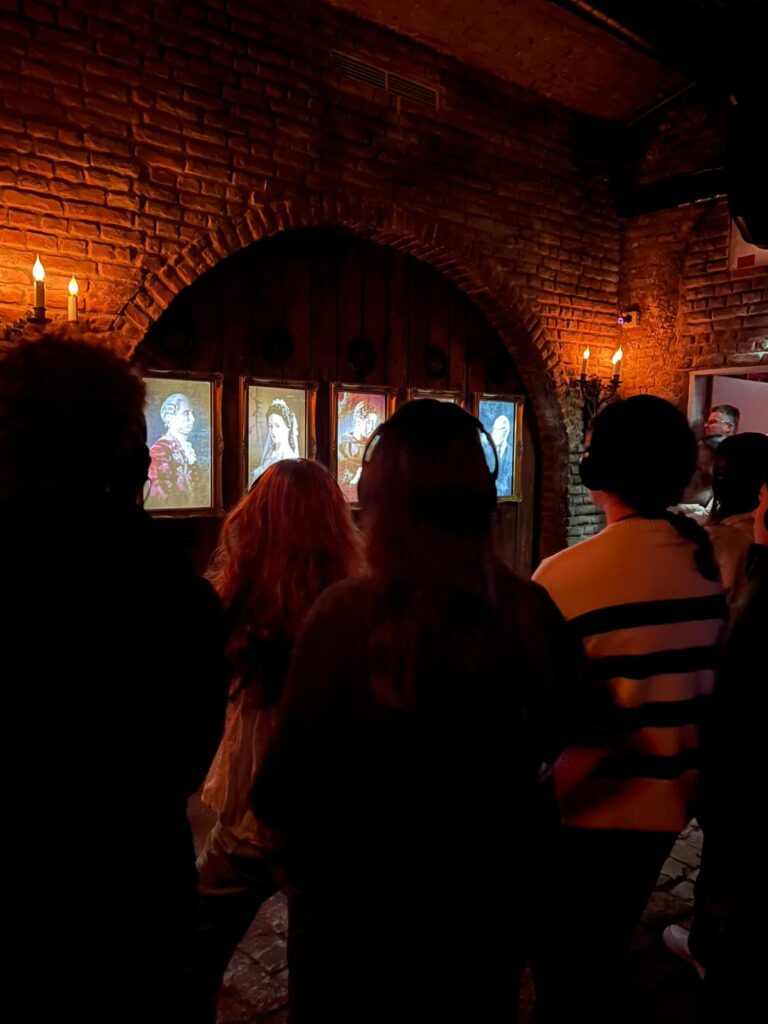
We are pleased to announce that, at the conclusion of the Fall Trimester, 32 of our 93 students have successfully fulfilled the academic, community service, enrollment, and behavioral qualifications for the honors of distinguished students or senior scholars as outlined in the AIS-Salzburg Student and Parent Handbook. Congratulations to the following students for this achievement:
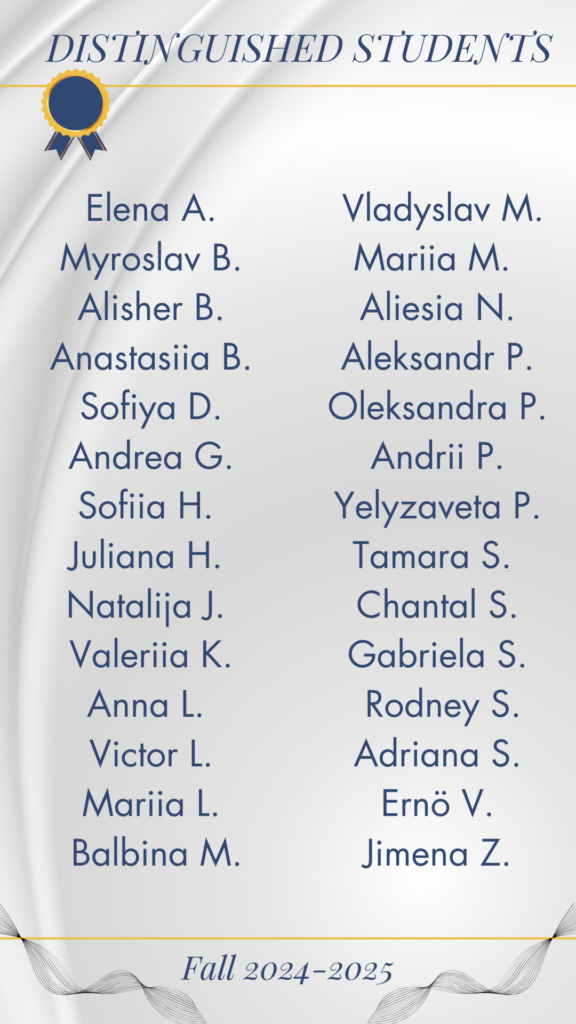
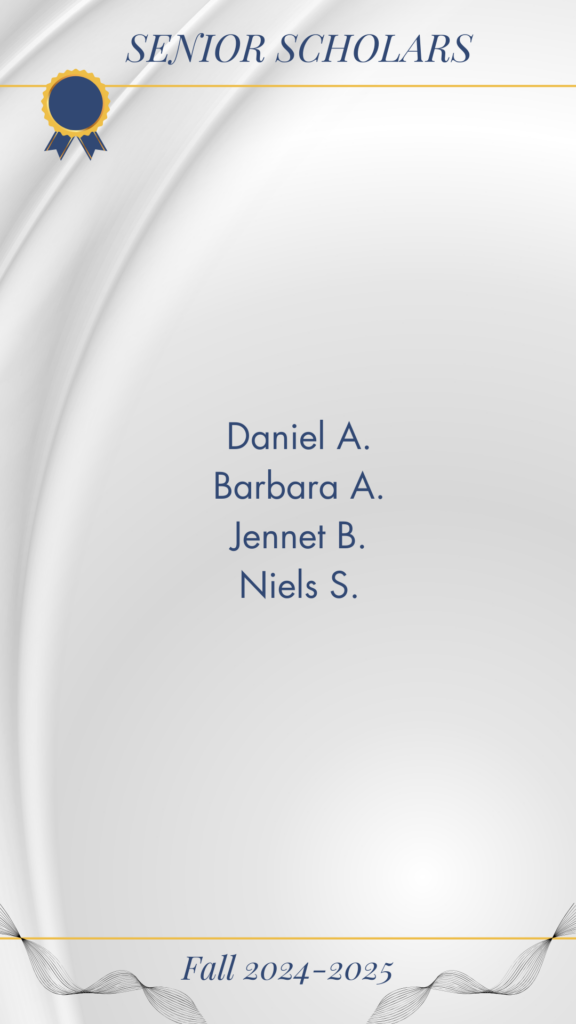
Once all grade reporting was in, a remarkable 50 students made the Honor Roll, including 18 students who achieved ‘High Honors’ status —all A’s and no more than one B. Of these 18, six students had all as indicated by an asterisk in the image below. Congratulations to all students who achieved Honor Roll status.
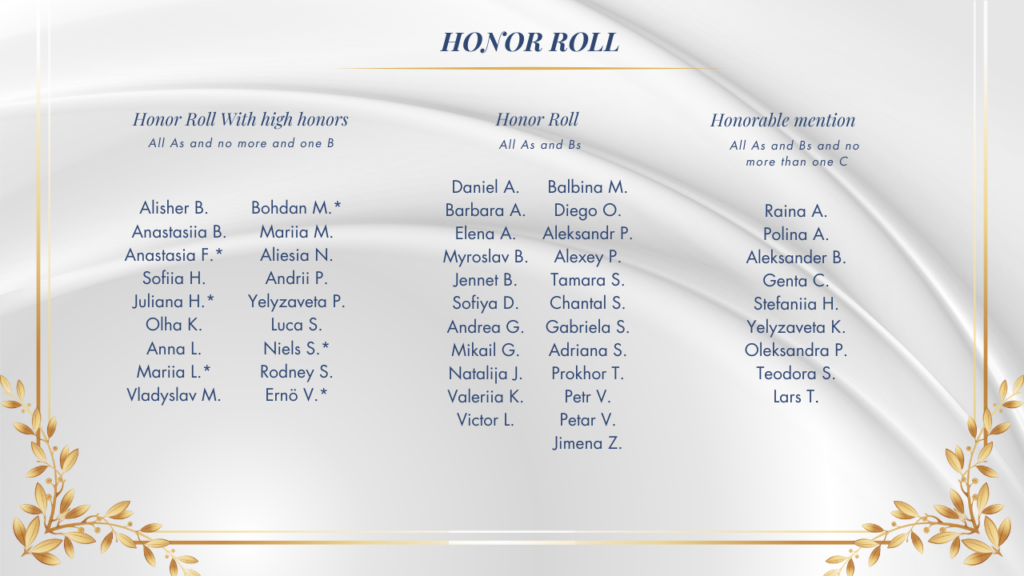
In addition to academic recognition for the Fall Trimester, the boys’ and girls’ volleyball teams and the boys’ soccer team have been recognized for their accomplishments during the fall season. Below are several individual awards and honors that were handed out to following students for this achievement:
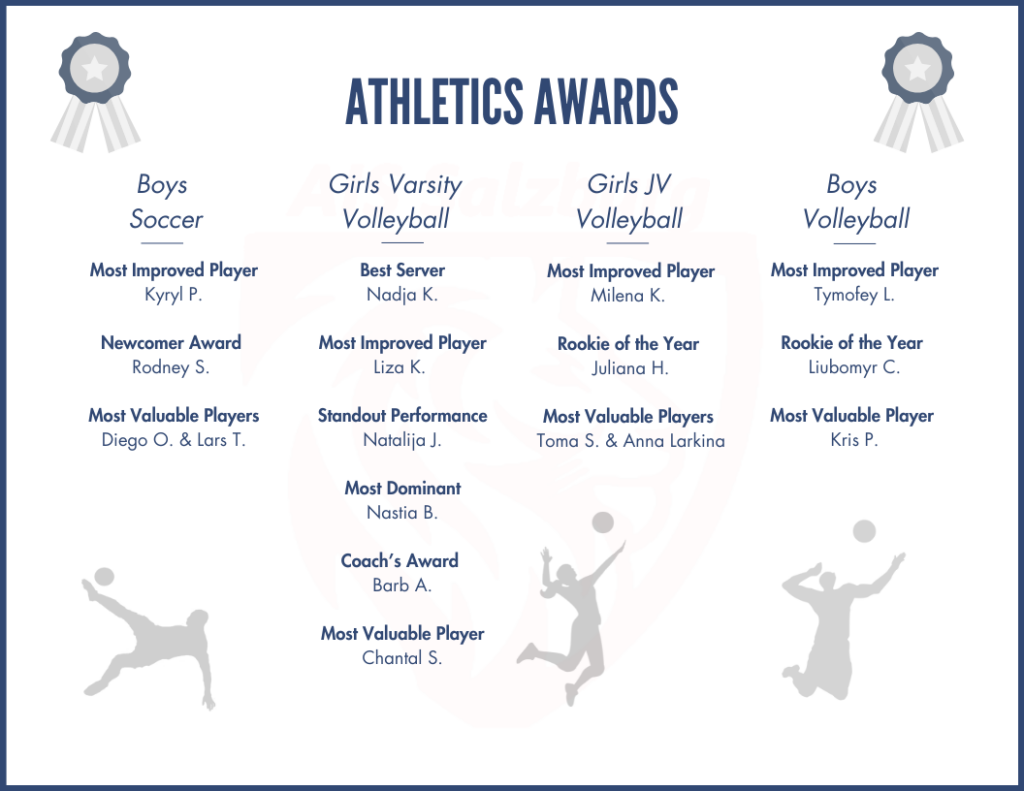
On November 27th, the AIS-Salzburg Fall Trimester Awards Dinner and Ceremony was held at the Sternbräu restaurant, where many students were recognized for outstanding academic success as well as engagement in athletics throughout the fall term.
Following dinner and dessert, the volleyball and soccer teams were recognized for their accomplishments before Mr. McLean recognized distinguished students, senior scholars, and honor roll students.
We invite you to view some of the photos below from the event.


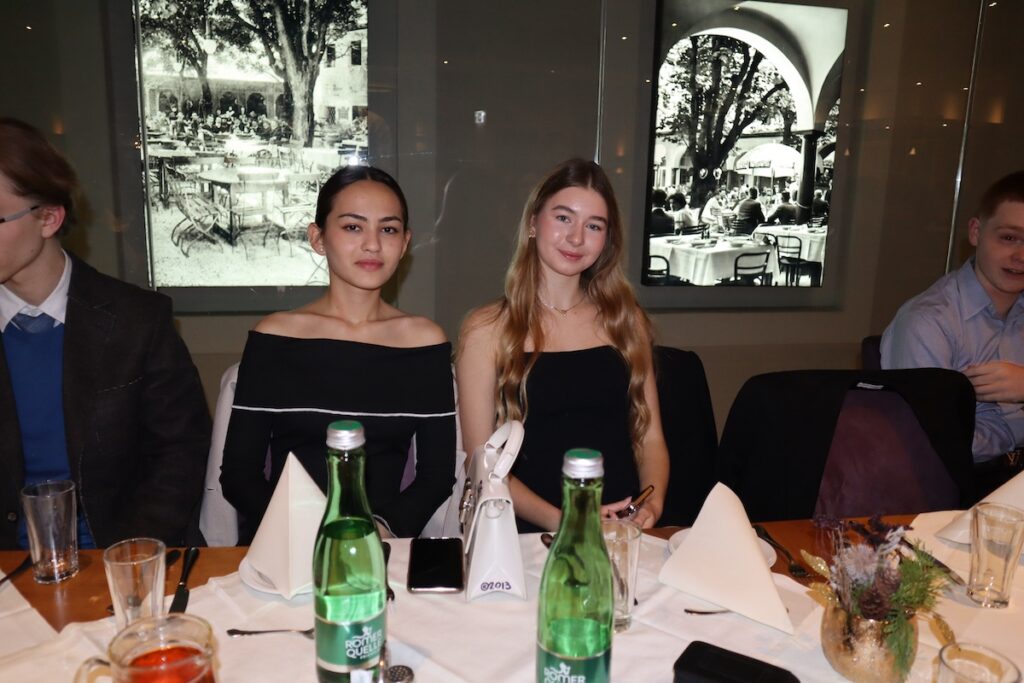

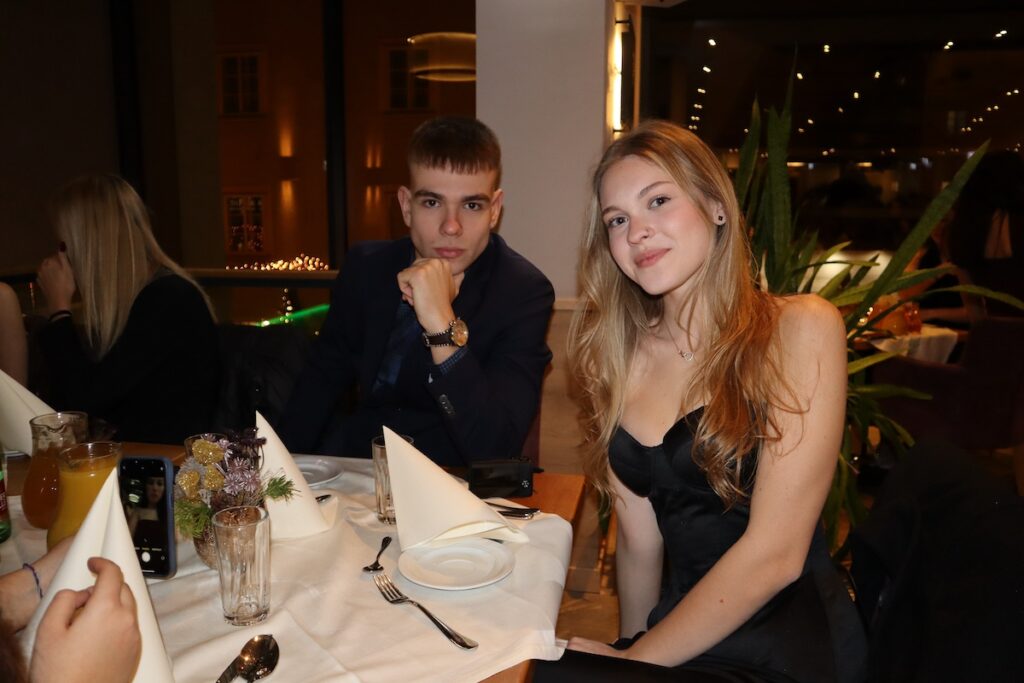
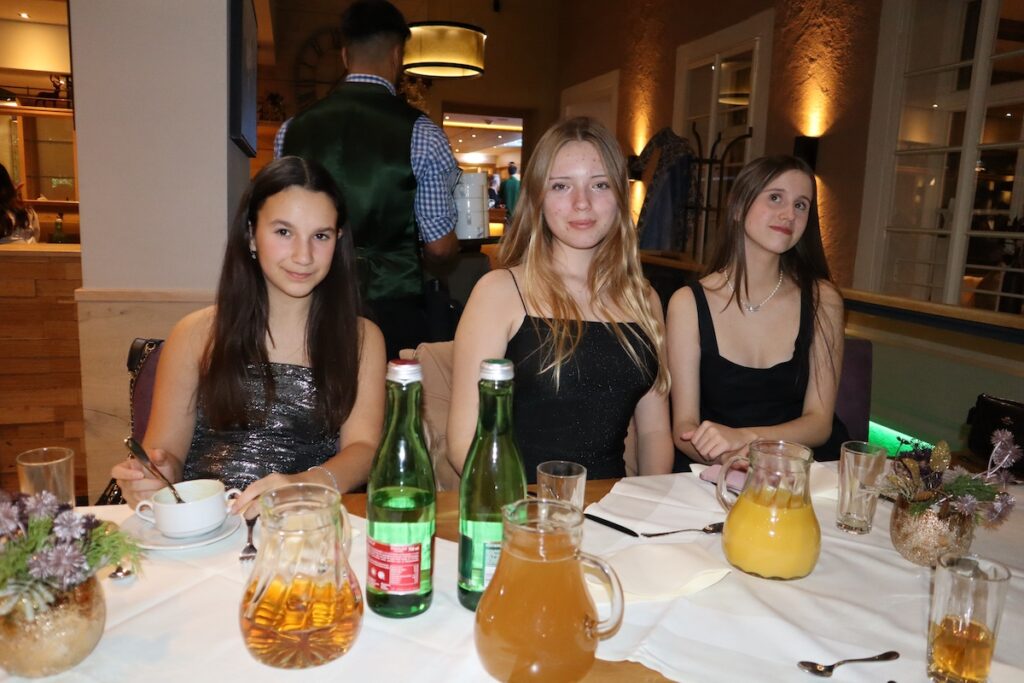
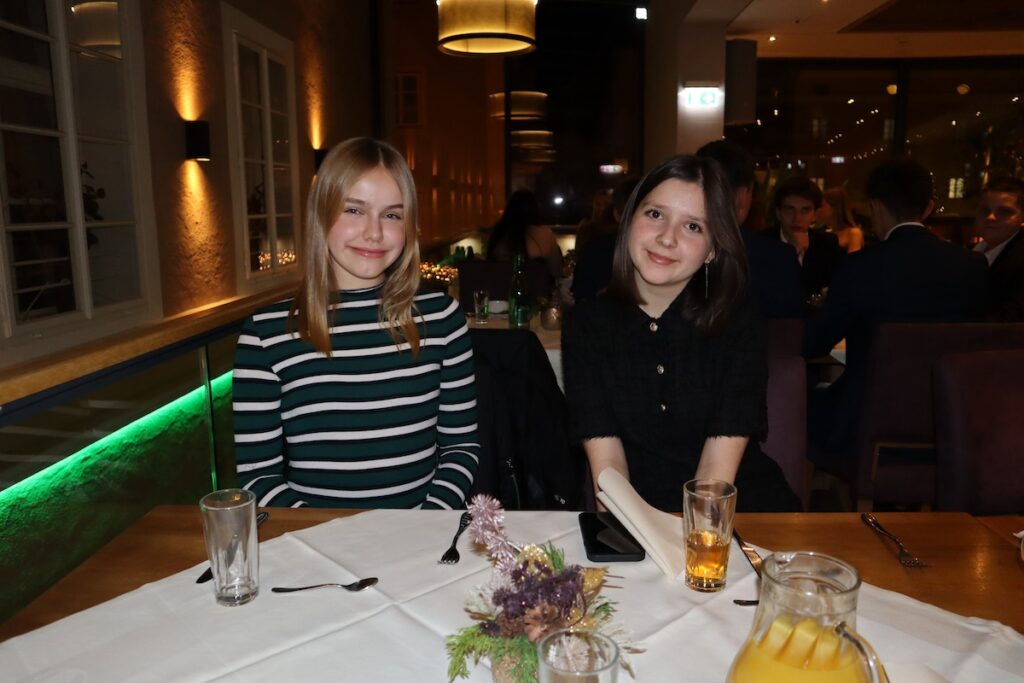
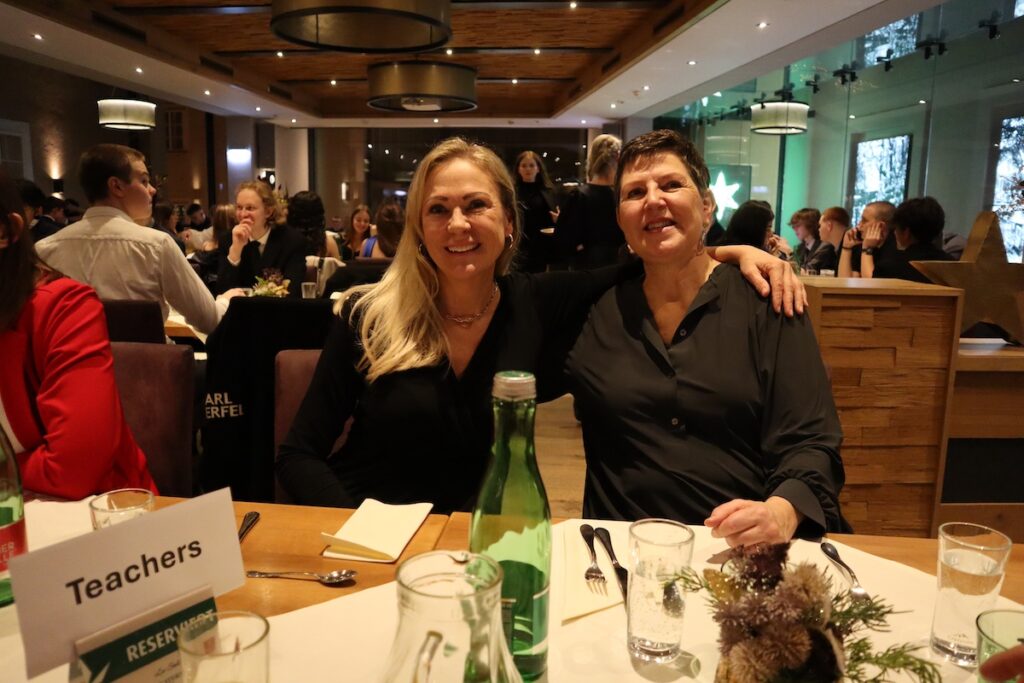
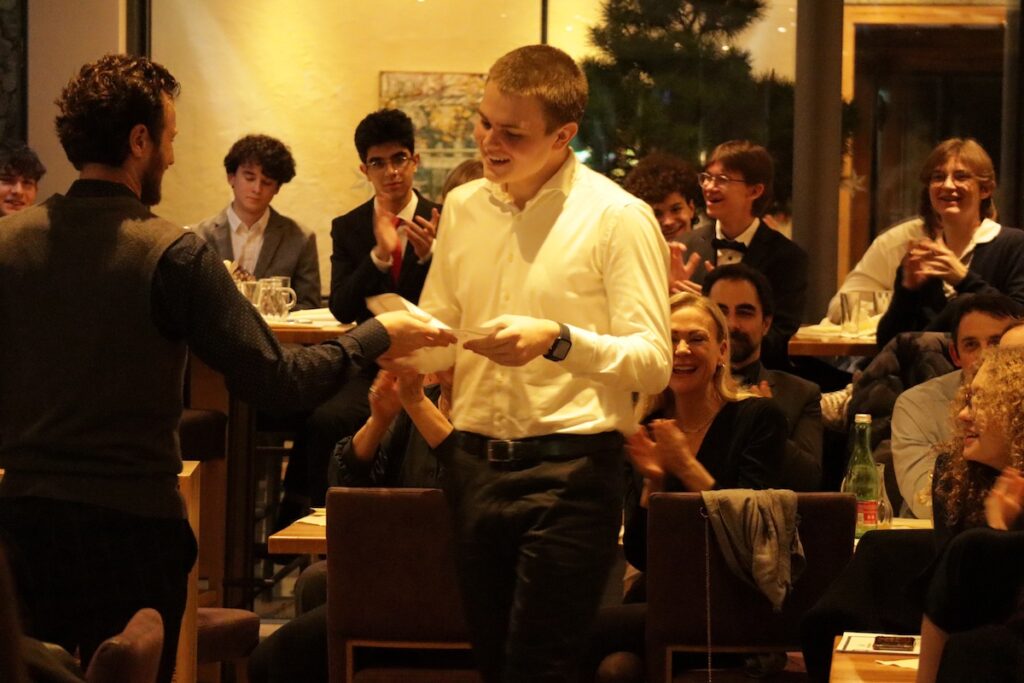
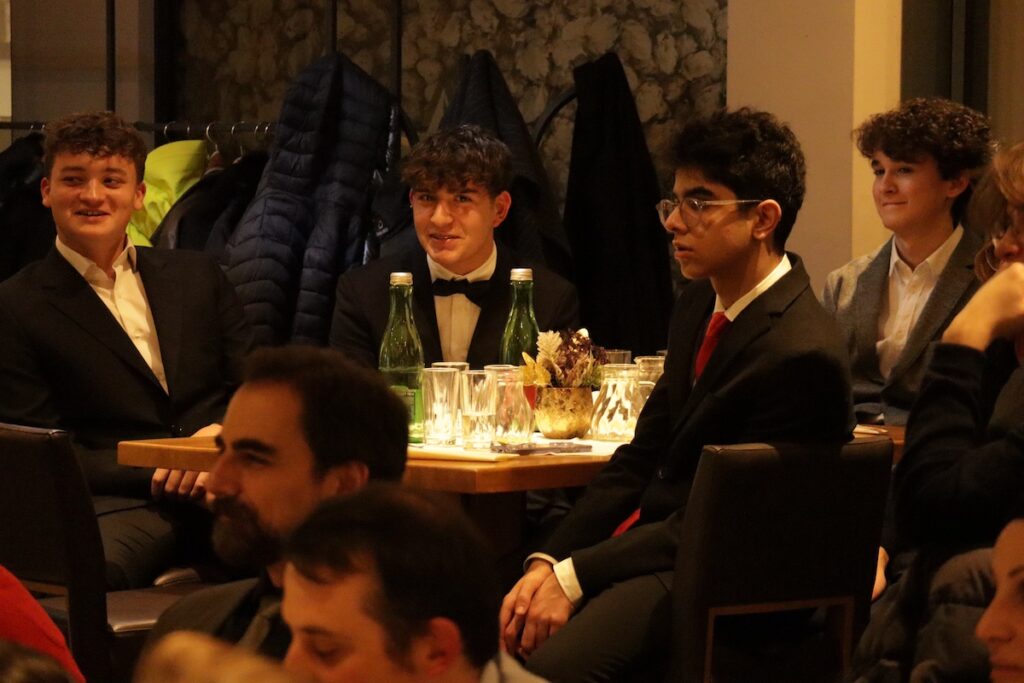
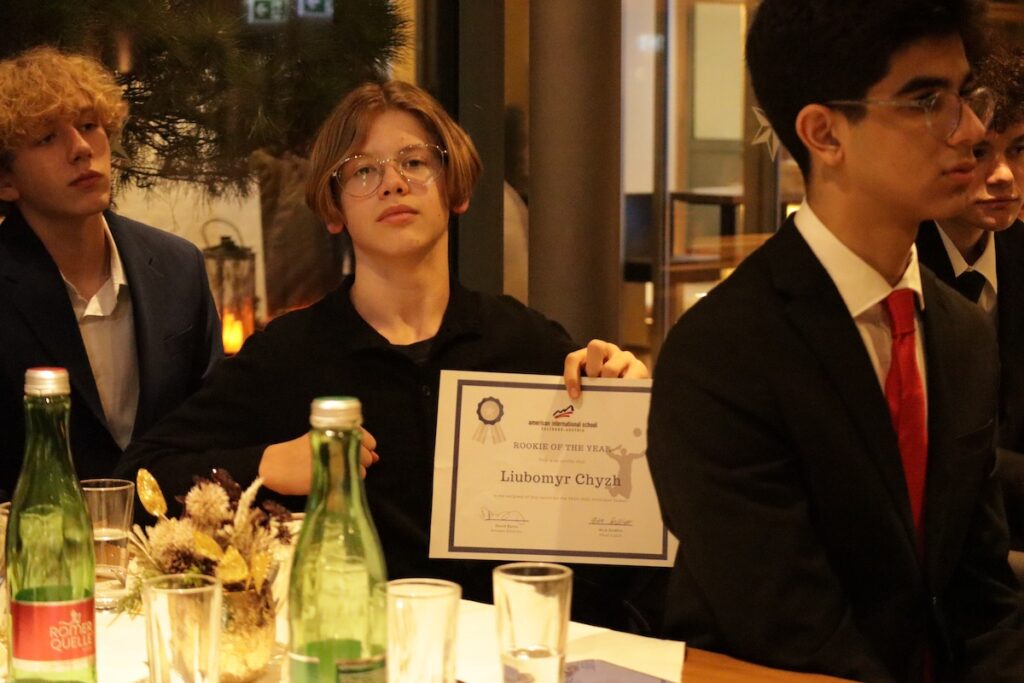
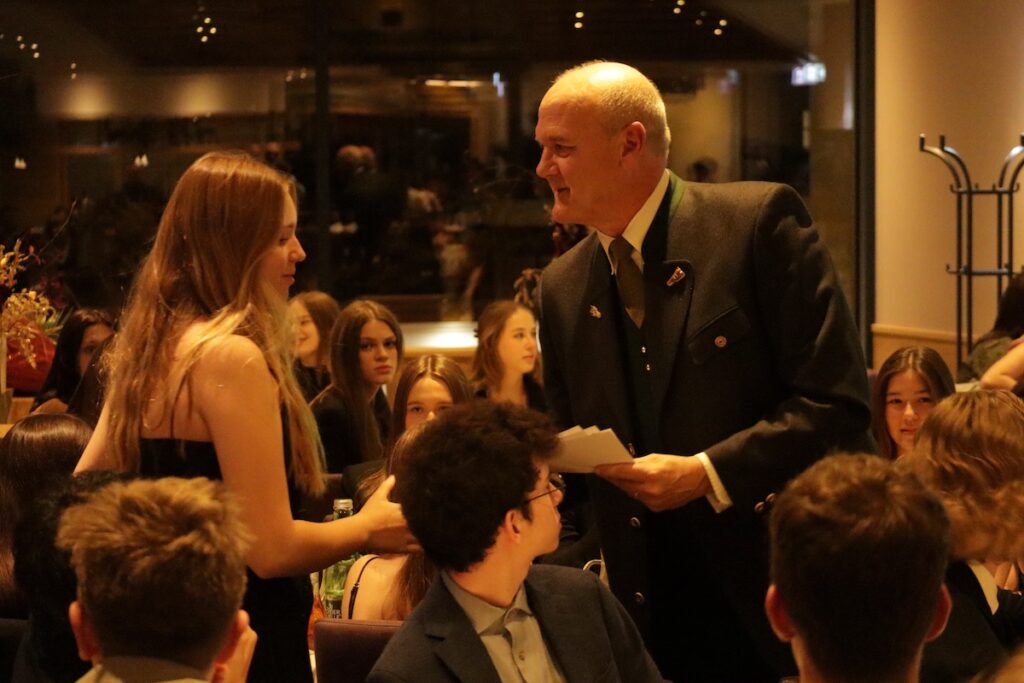
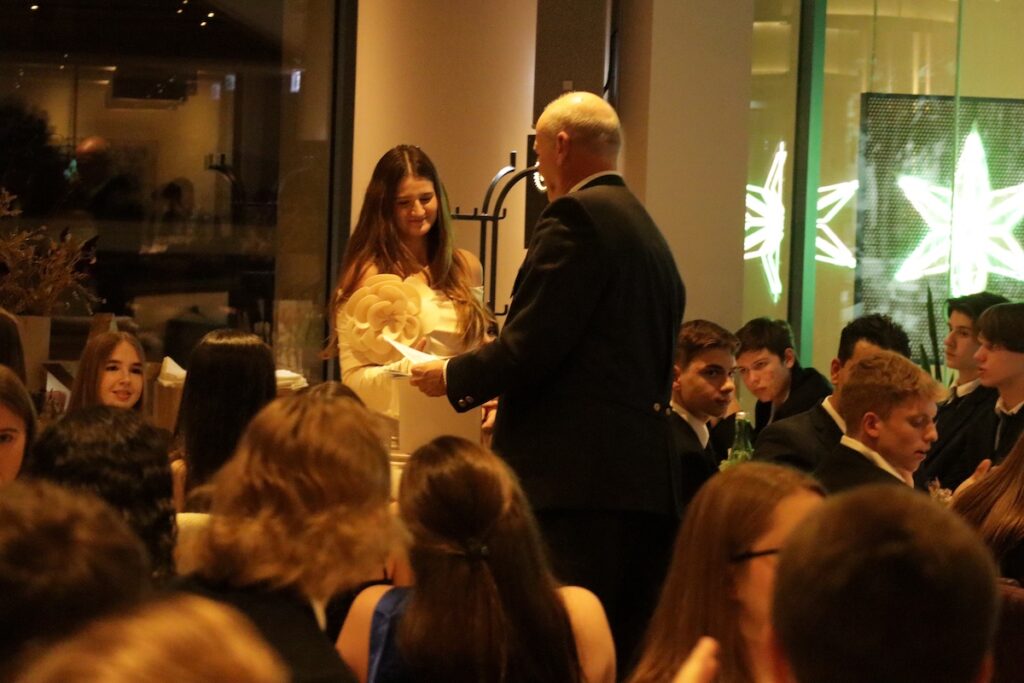
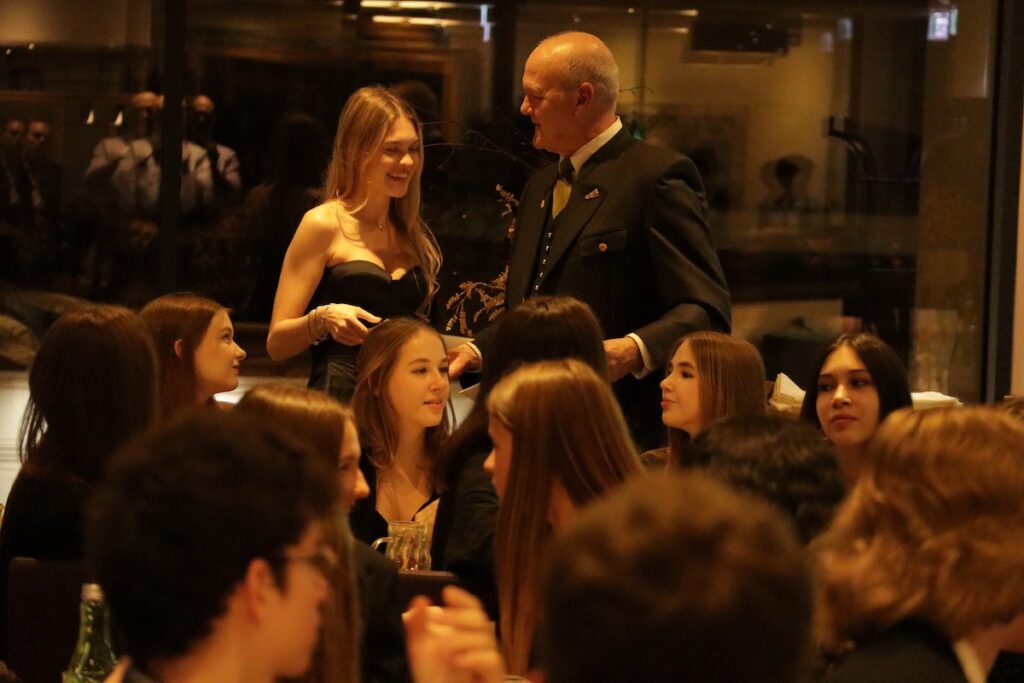
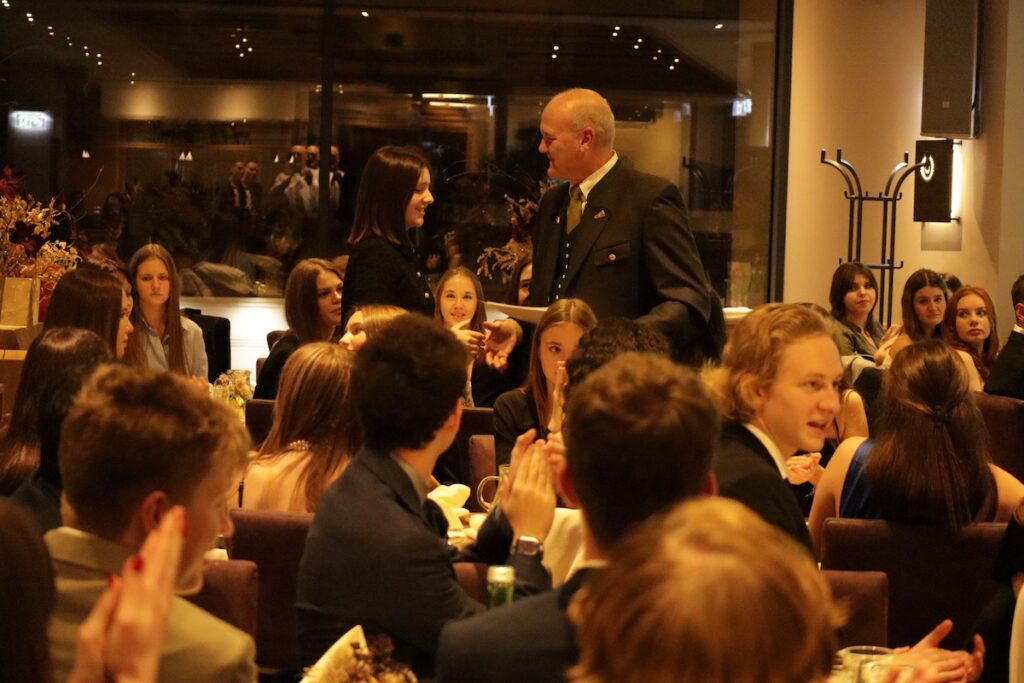
It is with our great pleasure to announce that AIS-Salzburg senior student, Niels Schmidt, has been accepted to the University of St Andrews four-year Master of Arts in Ancient History and Social Anthropology program.
The University of St Andrews, situated on the picturesque east coast of Scotland, is widely regarded as one of the most prestigious universities in the world and consistently ranks among the top institutions in the UK and internationally. This reputation is built on a combination of academic excellence, historical significance, and a distinctive student experience. With a history dating back to 1413, it is the oldest university in Scotland and the third-oldest in the English-speaking world.
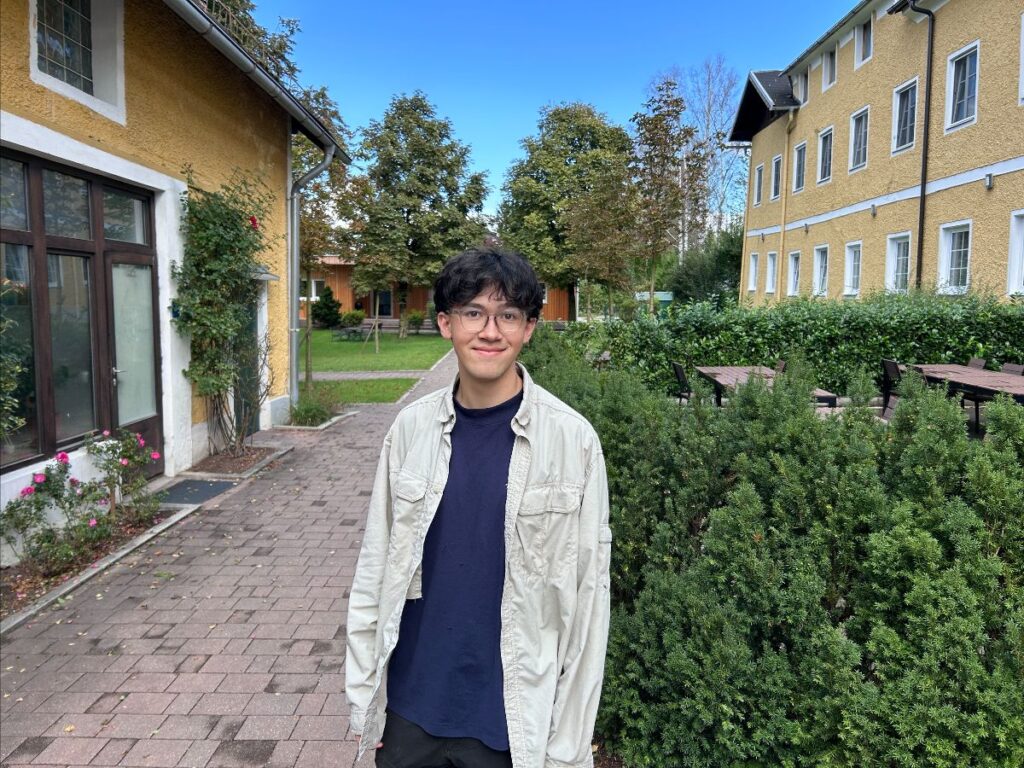
Photo: Senior student, Niels S., has been accepted into the prestigious University of St Andrews for the four-year Master of Arts in Ancient History and Social Anthropology program.
“I think studying there would be a good experience,” said Niels via email yesterday. “I’ve heard good things about the academics and with its isolated nature, I’m sure I’d have a great environment to focus in. I’m not certain yet that that’s where I’ll study. It is one of my top choices but I still would like to see what my options are, primarily because linguistics will be more difficult to pursue at St. Andrews.”
Should Niels decide to go to St. Andrews, he would look to study ancient cultures, gain some experience with archaeology, and learn what he can be about linguistics, which would have been his major had there been an undergraduate program offered at the university.
“My longer term academic goals are to decipher a language, something like Linear A or Harappan. It’s a reach for sure but why limit yourself?”
Renowned for its strengths in subjects such as international relations, history, philosophy, and computer science, the rigorous academic environment and high entry requirements at St Andrews attract top-tier students from around the globe. With over 40% of the student body coming from outside the UK, the campus is vibrant with a cosmopolitan community.
The university is also celebrated for its rich traditions, which contribute to its unique character. Events such as the “May Dip,” where students plunge into the North Sea at sunrise, and the wearing of distinctive academic gowns are hallmarks of the St Andrews experience.
We wish Niels all the best in making his decision and making the next step of his academic journey!

Photo: Every Sunday, after Chapel Service, the University of St Andrews students in their iconic red gowns walk down to the end of the pier, climb up the ladder and back along the top.
Recently in physics class, students explored projectile motion by examining how objects move when launched into the air, focusing on the effects of gravity and horizontal velocity. The class aimed to understand the relationship between launch angle, range, and flight time.
Projectile motion is a type of motion experienced by an object or particle that is thrown into the air and is subject to gravity. The motion can be broken down into two components: horizontal (which remains constant) and vertical (which accelerates due to gravity). Understanding these components helps explain how things like sports balls, rockets, or even water fountains follow curved paths when launched.
We invite you to watch the video below of this lab.
In the video below, we mic’d up Mr. Lichty’s AP® Calculus classroom at the start of a new lesson on implicit differentiation. Implicit differentiation is widely applicable across science, engineering, economics, and even computer science, whenever variables are interdependent and a direct solution is challenging to isolate. We invite you to watch the video of Mr. Lichty introducing this challening new topic to his senior students.
The varsity girls’ volleyball team dug deep in what was a gruelling DVAC varsity volleyball tournament in Budapest this past Saturday. The Lady Lions were one of nine teams competing for the championship and had to finish 1st in their pool of 3 to compete for the championship trophy. This meant they had to defeat ICS Vienna (ICSV)—who has become their biggest rival this year and whom they were already in two previous back-and-forth battles this season.
“The odds were definitely stacked against us,” said coach David Burns. “We were up against some big schools, we travelled 7 hours the day before, and my bench consisted of two girls with very little competitive volleyball experience. I knew we had the talent in our starting roster to beat any team at the tournament in a single match, but I was not optimistic they would have the energy to maintain the required level of play over the four games played throughout the day.”
After starting the day by defeating the host British International School of Budapest in two straight sets, the Lions found themselves against the ropes vs. ICSV, trailing the first set by margins of up to 10 points, eventually losing 23-25 despite a valiant comeback behind some power serving by Nadja K. In the second set, the Lions found themselves trailing 5-11 before coach Burns called a timeout to remind them that they came back against ICSV the last time they met in a similar situation. After the timeout, the Lions sparked a comeback and gained the lead 14-13 and never looked back, winning the set 25-21 highlighted by a clutch serving run from Natalija J. In the third and final set, the Lions were finally on point and easily defeated their cross-Austrian nemesis 15-7 to claim first place in their pool.
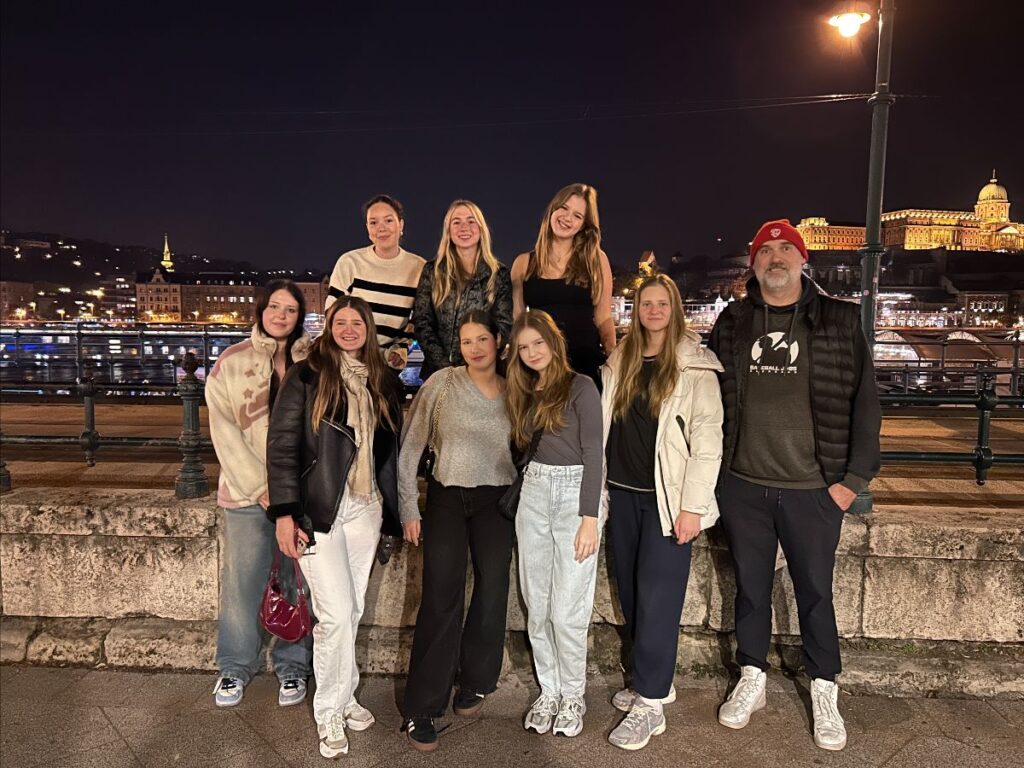
In the playoff round, the Lions were up against the winners of the other two pools for more round-robin play to determine 1st, 2nd, and 3rd placement.
First up, the familiar friendly foe of the International Christian School of Budapest (ICSB), a perennial contender for the DVAC championship. In the first set, the much fresher ICSB team who slept in their own beds the night before, beat up the fatigued Lions who were sprawled out on the floor after lunch before the match. The Lions were even losing 1-15 at one point but managed to claw their way back to a 16-25 loss. Riding the momentum from the first set, the Lions finally woke up and played some of their best volleyball of the tournament, tying the match up 1-1 with a 25-17 win. In a back-and-forth deciding set that was tied 9-9, the local team from ICSB turned up the intensity after a timeout to give the Lions their first defeat on the season, winning the final set 11-15 and claiming the 1st place trophy. The highlight of this match was when Nastia B. blocked the star outside hitter from ICSB who seemed unblockable and was striking fear into all teams with her powerful spikes throughout the day.
The final match of the day was to determine who would win the second-place trophy between the Lions and the British International School of Bratislava, which was regarded by some as the favorite to win the tournament. However, the exhausted Lions were not intimidated, digging deep and not settling for 3rd place, willing their way to a two-set victory, 25-22 and 25-23.
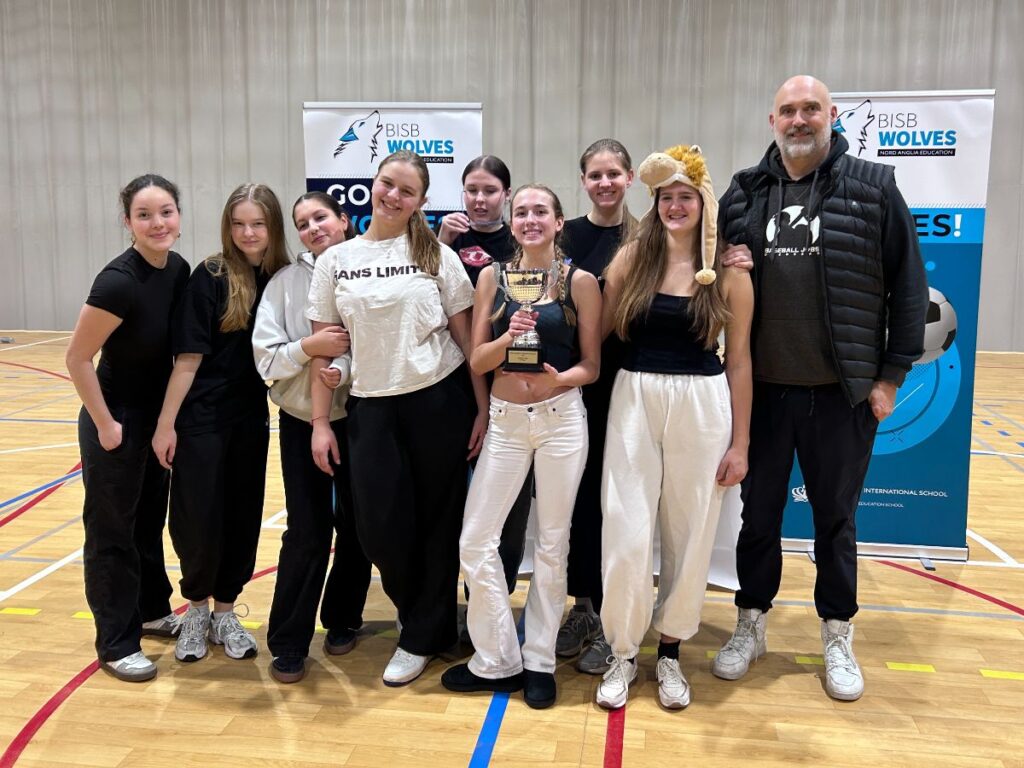
Coach Burns was very proud of his team’s hard-earned second-place finish: “This 2nd place trophy was by far the most earned volleyball trophy in our trophy cabinet. More so than even the few 1st place DVAC trophies we have won in the past. The level of the tournament is overall much more competitive than in the past, and it took every ounce of energy and mental fortitude for our girls to persevere. In our second match of the day, the girls were mentally defeated when trailing ICSV 0-1 and down 5-11 in the second set. Somehow they collected themselves and battled back. By the time the playoff round came around, many of the girls were battered and bruised but still managed to mount a fight against ICSB after losing badly in the first set. We narrowly missed winning first place despite all the adversity, and for that, I cannot be more proud.”
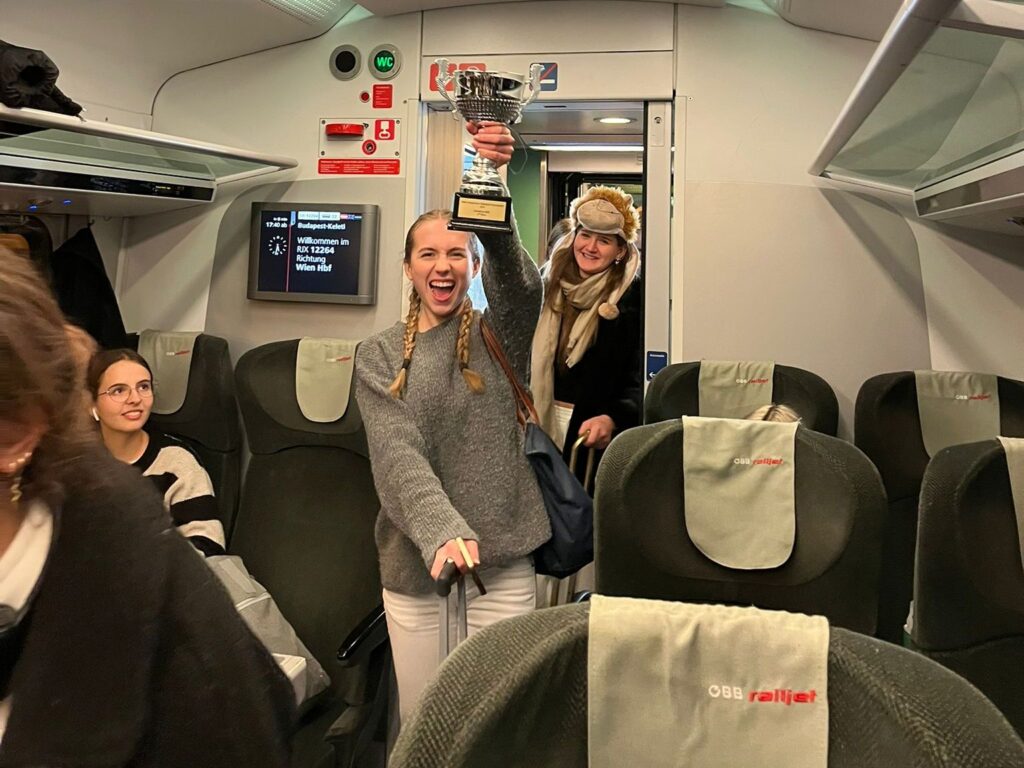
Photo: Team Captain, Chantal S. shows off the trophy to the boys and JV girls teams who were already on the train
Successful Season for the Junior Lady Lions Volleyball Team
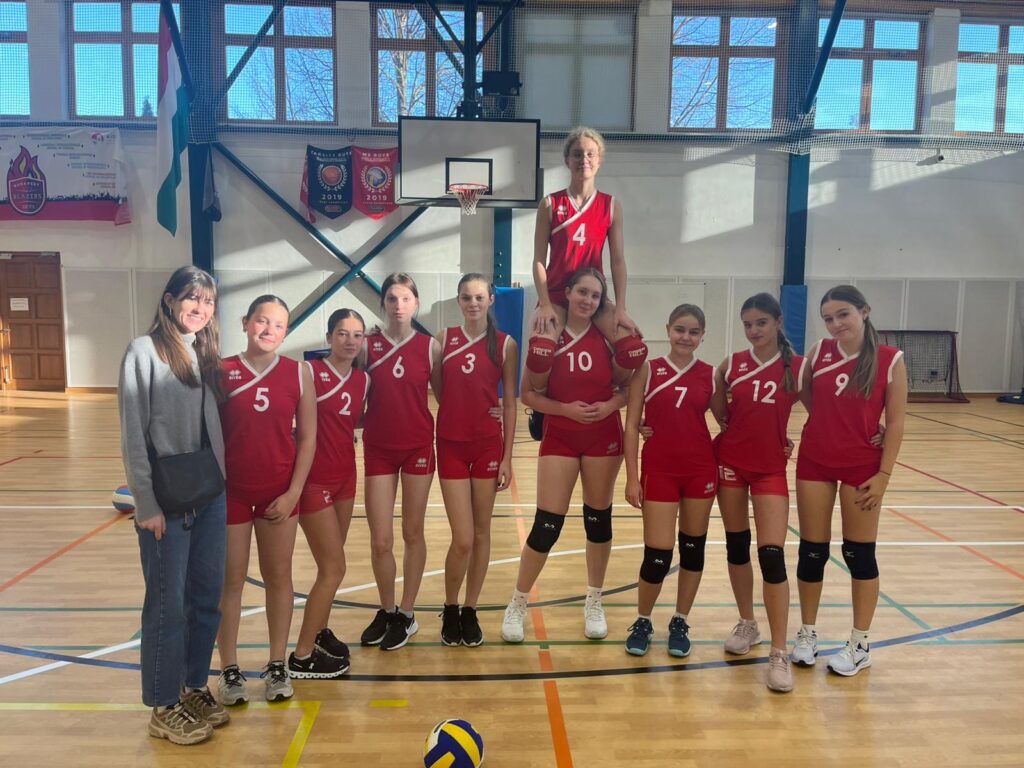
The junior varsity girls volleyball team played in the DVAC junior varsity championships also in Budapest last weekend and although they didn’t find success in the win column, they found a different kind of success: a collective enjoyment for the game and playing with each other.
With 5 of the 9 girls who made the trip being new to the game, the goals of the tournament were to have fun and gain more experience playing the game. In this regard, the tournament was a huge success for the girls.
The second-year JV players each brought their own form of leadership to the court at the tournament. Anna L. had a great match receiving some tough serves while Lera K. and Toma S. were consistent all-around. The most experienced player, Sophia D., was the star of the weekend, providing great leadership by settling everyone down when things got tense and utilizing her height at the nets for some great tips.
The Lions almost won their first set of the season, up 25-24 in the second game of the tournament, but couldn’t manage to hold on, losing 25-27.
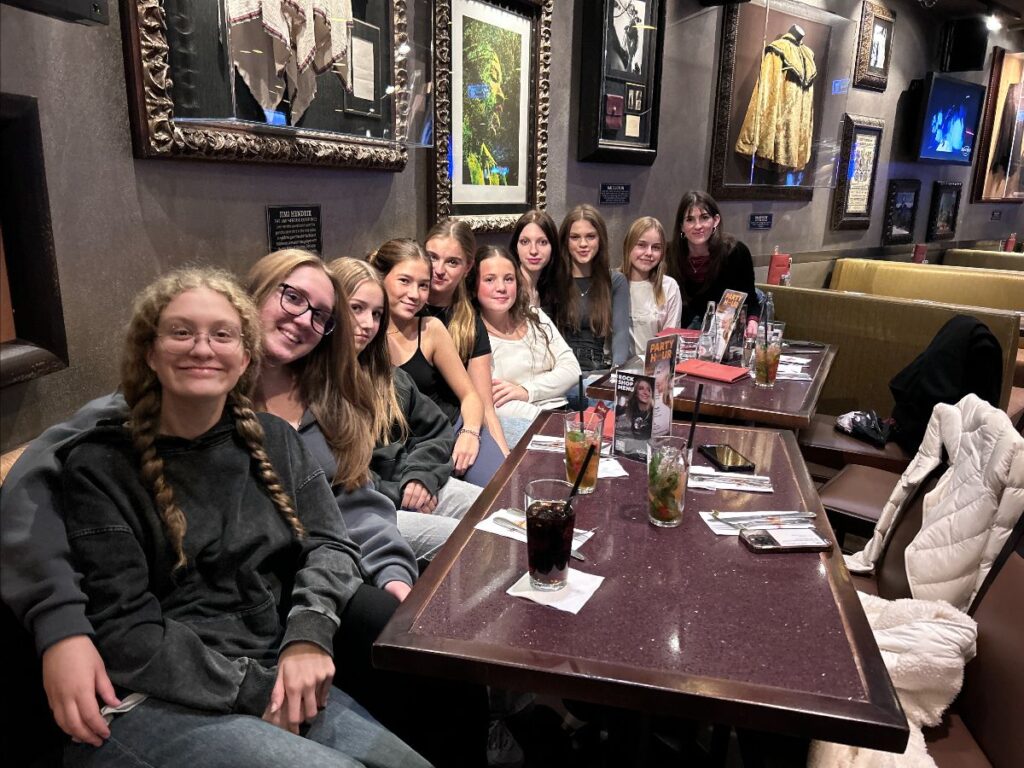
Photos: The Junior Lady Lions pose for a photo at a team dinner at the Hard Rock Cafe in Budapest Friday night.
Newcomer Milena K.—who was not able to serve over the net at the start of the season—was one of the most consistent servers for the JV Lady Lions on the day. Junior high players Jimena Z. and Andrea M. both had some good moments, while rookie setters Juliana H. and Gabby S. did a great job setting in the third and final game of the tournament.
Coach Abby Lee was ecstatic with how the day went: “There have been incredible improvements from the beginning of the season until now. Despite not winning any games, the girls had great attitudes and are eager to continue growing their volleyball skills.”
Students and staff on the Berlin fall excursion returned to campus on Sunday safe and sound after a very successful weekend.
“Nobody got lost, hurt, or in trouble….so in my book that is a screaming success!” said Dean of Students, Laura Fox.
Laura’s husband and dorm parent, Kevin Fox, planned the logistics of the excursion which totalled 27 different activities or attractions taking place over the course of four days with each student participating in 10. Every student had a personal specific itinerary tailored for their own unique experience.
Between activities, the entire group would reconvene to eat lunch and dinner together. Smaller groups would set off in the morning for various activities or attractions and then meet at a different food hall or market each day for lunchtime and then join this afternoon group for the next activity or attraction. At night, everyone would meet up once again for dinner at a restaurant, a different one each day.
“I want to thank you the staff for all of their hard work, patience, and flexibility,” said Fox upon returning on Sunday. “Every one of them was a model of professionalism, responsibility, and what it means to be a team player for our students.”
We invite you to view the photos below from the Berlin excursion as well as the Instagram reel put together by journalism student, Juliana.


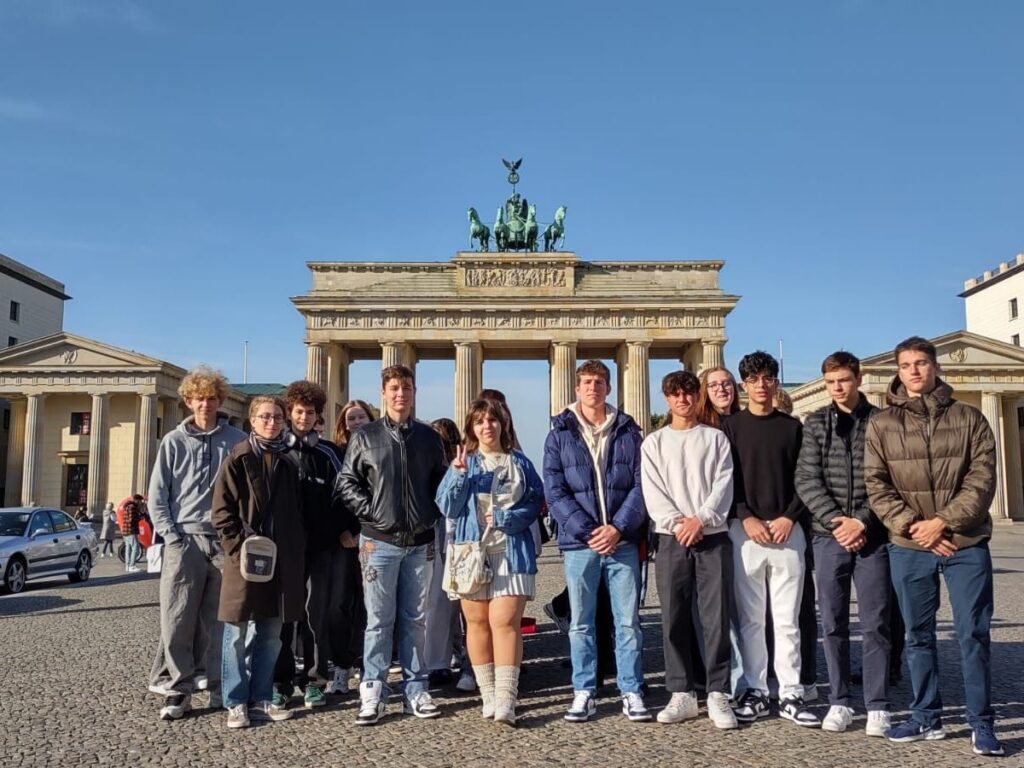
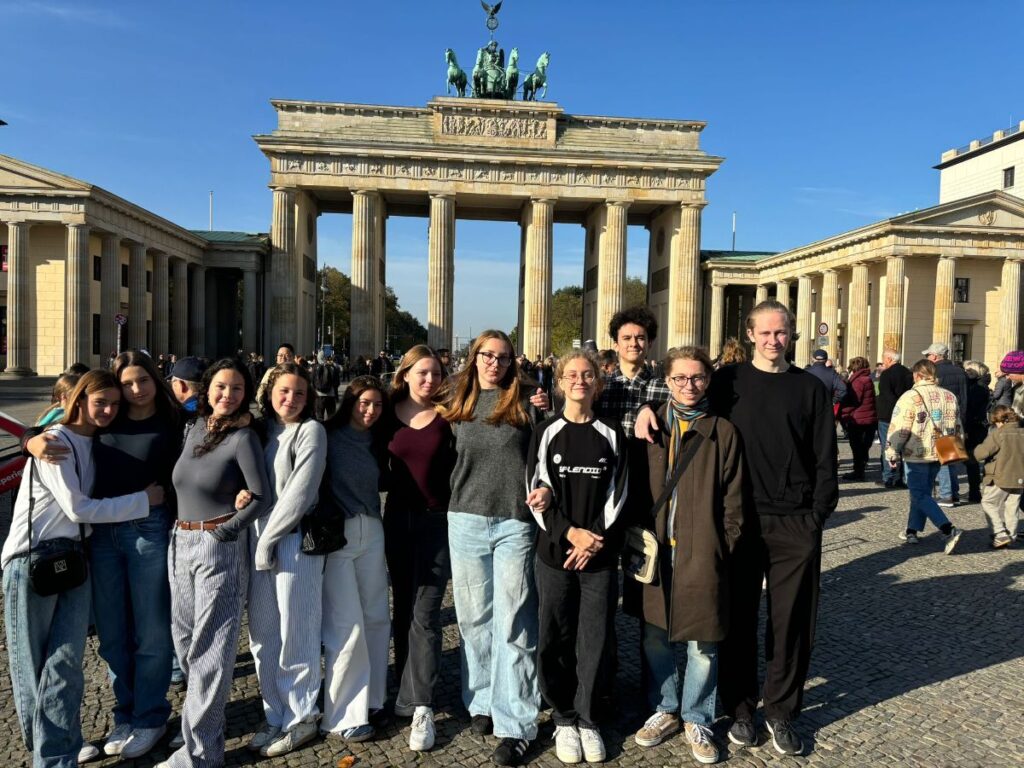
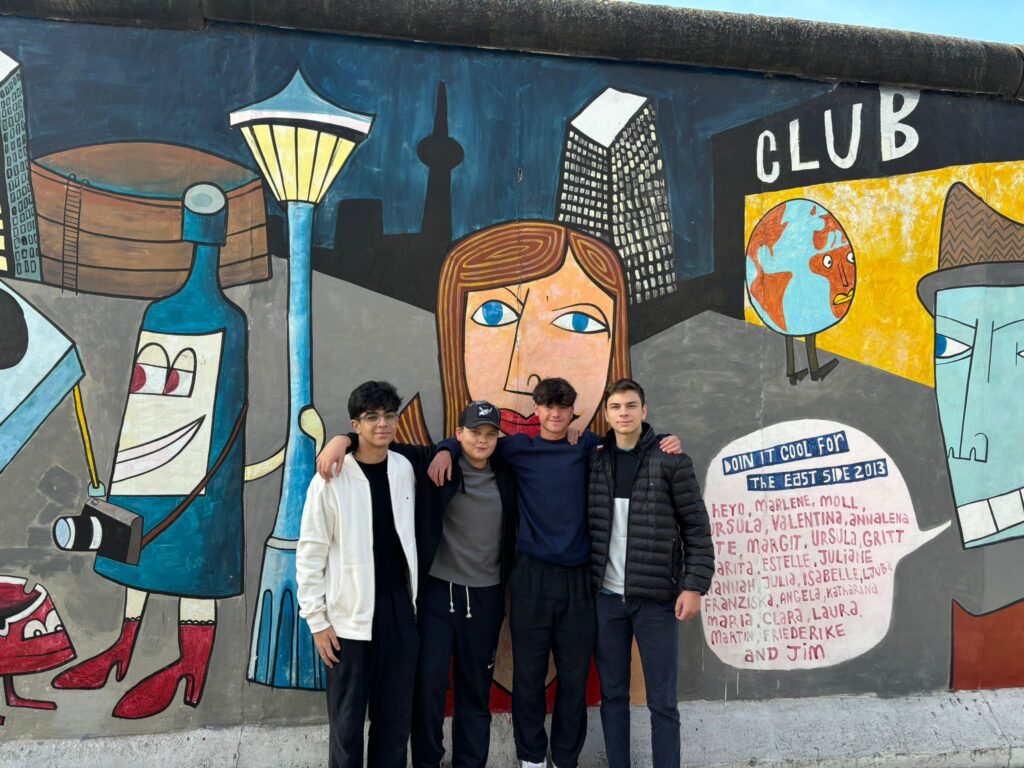
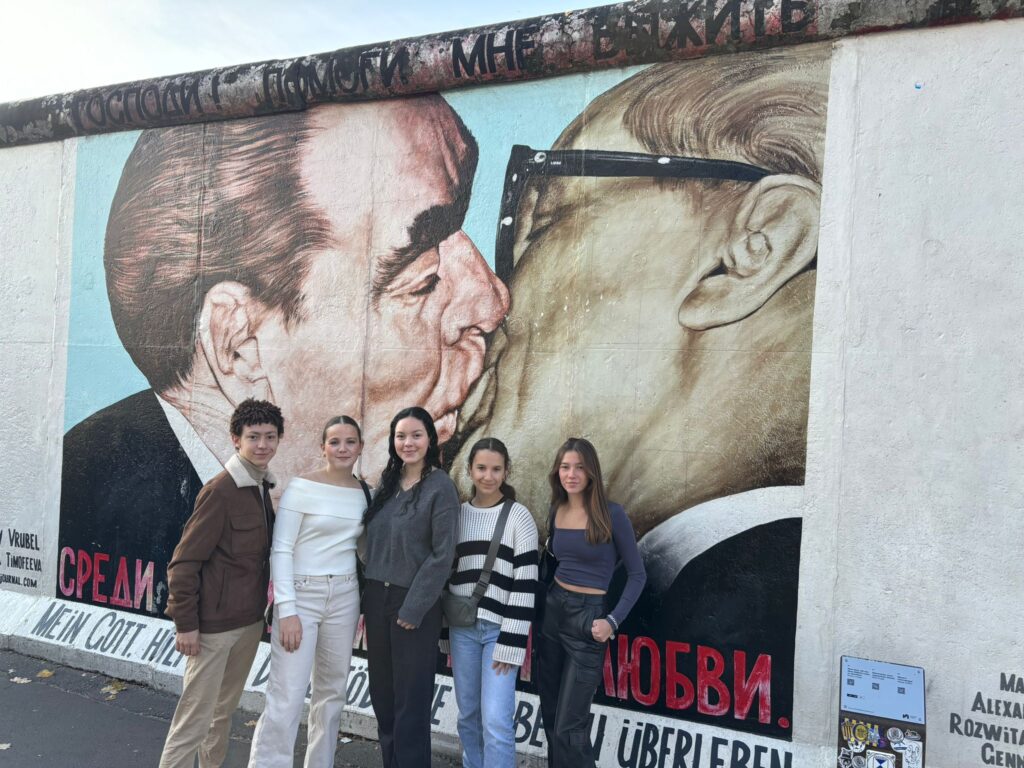

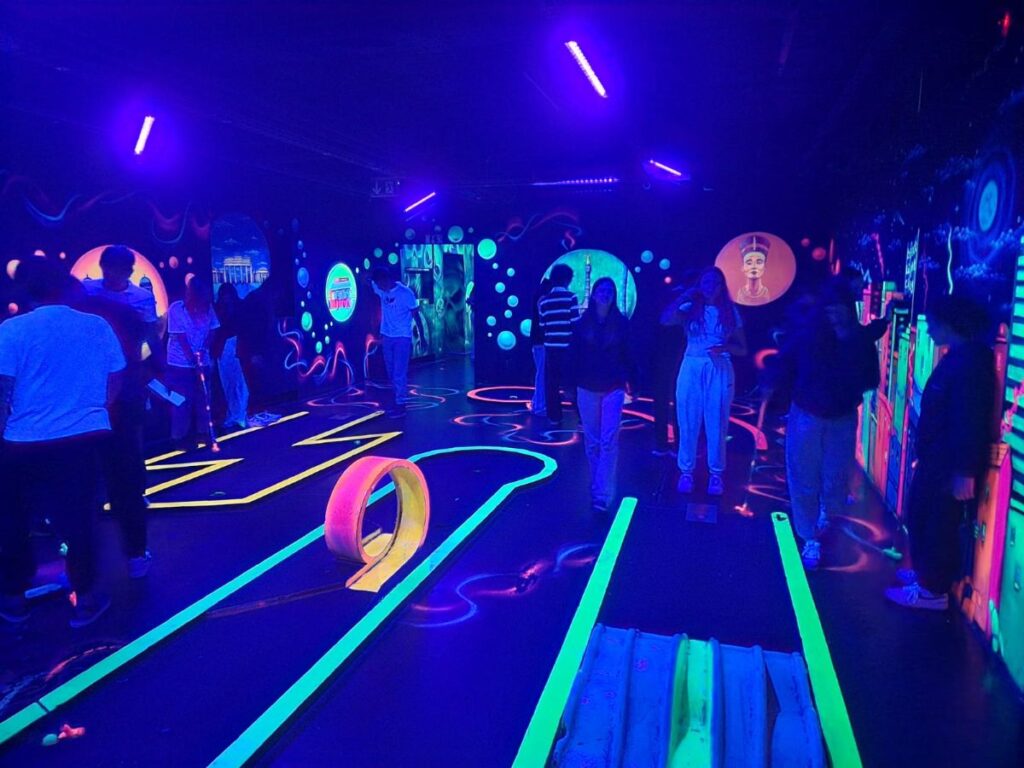

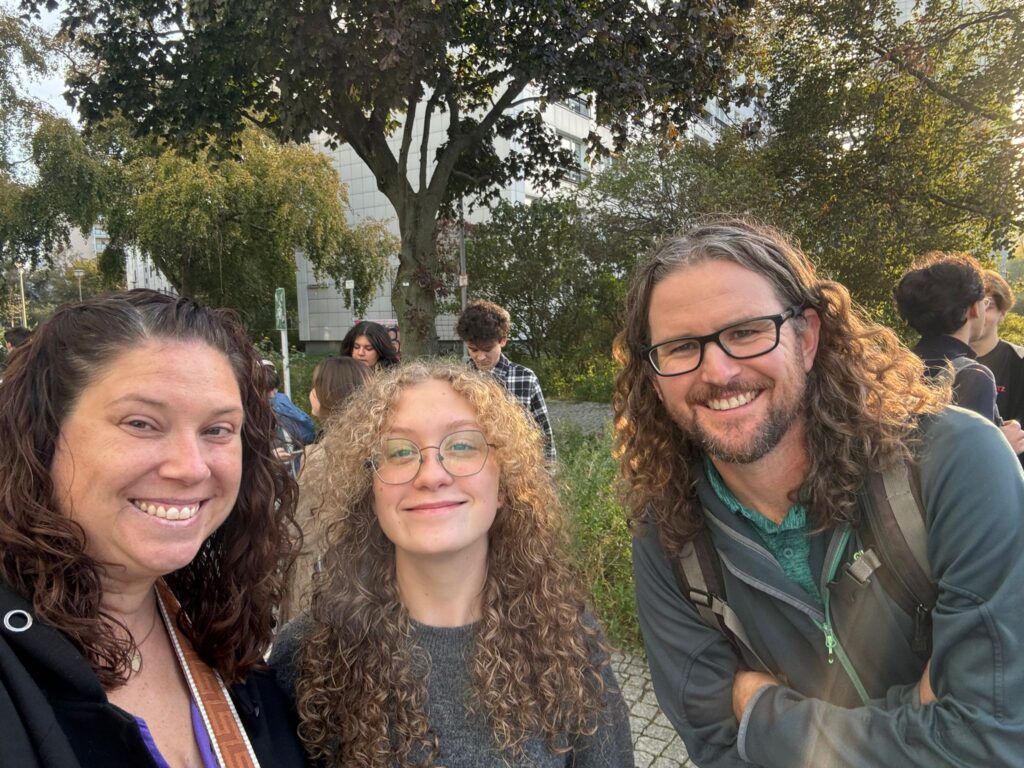
Roommates Natalija and Juliana had never been to a boarding school before AIS-Salzburg and both were nervous when they first arrived; Nalalija joined in the fall of 2023 and Juliana in the fall of 2024. Each have made the adjustment and are now fully immersed in boarding school life.
“It was very scary at first, but it is a great chance to have more friends,” said Juliana of her thoughts when she first arrived. “Natalija has become like my sister. I really like the bond that we now share.”
“Honestly, I was very scared and didn’t know how to feel about it,” said Natalija. “But everything when I came here felt more comfortable. I love living with Juliana. It is really nice getting to know a new person and a new culture because is a big part of coming to a boarding school.”
We invite you to watch the entire video below with Natalija and Juliana, as they show us around their dorm room and share their boarding life experience.
Students from Mr. Liecher’s grade 10 chemistry class discovered the relationship between grams, moles, and molecules during a recent science lab. The relationship between grams, moles, and molecules is a fundamental concept in chemistry and is governed by the mole concept. It allows chemists to connect the macroscopic world of mass to the microscopic world of atoms and molecules. We invite you to watch the video below as we eavesdrop on this lab.
Photo: Marco Vicel (far right) and fellow alumnus Preslav Neydelkov (far left), pose for a photo with Mr. McLean and Mr. Burns while in Salzburg this past September for the wedding of AIS-Salzburg alumnus, Constantin Schoen.
Marco Vicel spent the final three years of his high school career at AIS-Salzburg, graduating in 2008. The native of Bratislava, Slovakia studied and then worked in Miami following AIS-Salzburg, and currently calls Bratislava, Slovakia, Vienna, Austria, and Dubai, United Arab Emirates his home, spending about 4 months of the year in each city. We invite you to read the interview below with Marco as he shares his memories of AIS-Salzburg and updates us on his life since graduating.
What is/are your fondest memory or memories of attending AIS-Salzburg?
Marco: There are a lot of great memories from the time spent at AIS-Salzburg. Whether it’s the excursions, basketball tournaments, or just the regular life at a boarding school. Still today I tell people stories of how we lived together and how life went while at AIS-Salzburg. (Still today when I order pizza after 9.30pm, I do get a little nervous hahah)

Photo: Marco poses with his AIS-Salzburg high school diploma.
What did you enjoy about going to such a small international school?
Marco: The great thing about a small international school is that you can develop very close relationships with your friends. We were pretty much like a family, and it is crazy to think that now it’s 16 years since we graduated and we still see each other a couple of times a year somewhere around the world.
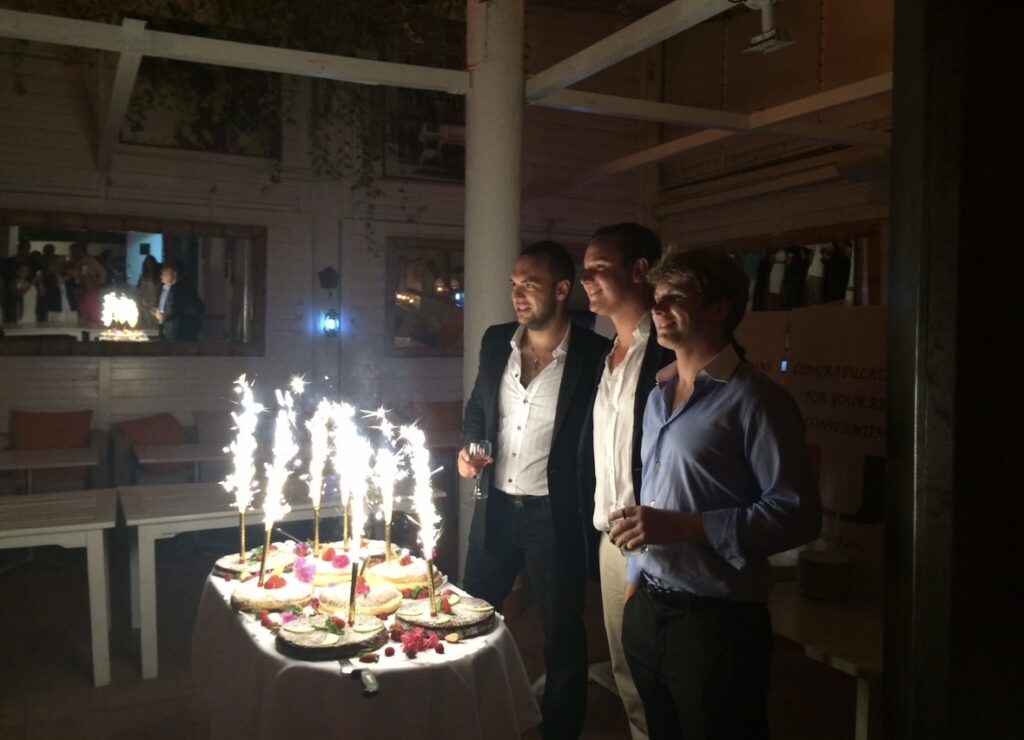
Photo: Marco poses with AIS-Salzburg alumni, Jakob Wimmer and Constantin Schoen, all celebrating graduation from the University of Miami. At the time of this photo, Marco had finished his MBA and Jakob and Constantin had finished their Bachelor’s degree.
Were there any teachers who made a major positive impact on your life?
Marco: All the faculty at AIS-Salzburg was great and very good at what they do. The most notable ones are for sure Mr. McLean, Mr. Burns, Mr. Agardy, and Mr. Beszczynski. They taught us a lot of discipline, and life principles, and were always available when we needed any advice. Still today I really appreciate everything they always did, and the older I get the more I understand how much they actually taught me even outside of academics. I think of Mr.McLean every time my beard gets too long, or I don’t make my bed in the morning.


Photo: Marco received awards at the annual awards ceremony in 2008 from Mr. McLean (left) and former Dean of Students, Mr. Beszczynski (right).
What have you done academically and professionally, since graduating from AIS-Salzburg?
Marco: After graduating from AIS-Salzburg, I attended the University of Miami where I got my Bachelor’s Degree in Business Administration, and afterwards my MBA degree. I stayed in Miami working for a private equity fund for 6 years after getting my MBA. During this time, I was co-owner of a nightclub in Miami named Studio 23 for about 5 years. It was one of the most famous hip-hop nightclubs in Miami and we had lots of athletes, rappers and other celebrities attend. To name a few: John Wall (NBA), Floyd Mayweather, 50 Cent, Migos, Rick Ross, Nicki Minaj, and so on.
Ever since I graduated from grad school in 2014, I’ve been working with a Geneva-based private equity fund, and until today I work with them very closely. So it was very interesting from 2015 until about 2020 during the years when I owned the nightclub because I was both working for the fund and at the same time owned the nightclub. I had a business partner who was the one running it full-time and the entire day-to-day. It was funny, because during the day I was wearing a suit and tie, going to meetings for the fund, and then at night I would go to the club and entertain rappers and NBA players. Two completely different worlds.
Afterwards, I moved back to Europe where I stayed as a consultant for the company I worked for in the US, and at the same time, I joined the family business and oversaw part of our portfolio of companies.


Photo: Marco af his University of Miami graduation and sitting in a booth at the nightclub he owned in Miami.
What aspects of your education at AIS-Salzburg best assisted you in further academics, your professional life, and/or life in general?
Marco: AIS-Salzburg helped me greatly in lots of aspects. Academically it prepared me for university so I wouldn’t have any trouble adjusting. Being a boarding student also prepared me for university in the sense of not living with my parents and having to take care of myself. AIS-Salzburg prepared me for life in general, it taught me discipline, it taught me how to interact and live with other people and most of all, it gave me friendships and connections which I have today. Some of my best friends today I met at AIS-Salzburg.
Do you have any advice for students at AIS-Salzburg or applicants to the school?
Marco: I always tell people that AIS-Salzburg at the end of the day made me who I am today. It influenced where I went for university, it gave me friends for life, and in general, greatly influenced a lot of my traits and the person I am. My advice would be to enjoy the time spent at AIS-Salzburg, make as many friends as possible and appreciate the possibility of being at AIS-Salzburg. Also, don’t run in the hallways, guys make sure you shave, and make your bed in the morning 
Recently, 9th-grade English literature students held a mock trial for one of the characters, Rainsford, from a story they read called, The Most Dangerous Game. Each student was assigned a side and presented their opening statements and arguments for either the prosecution or the defense based on information from the story. Two students presented at a time, and the remaining students acted as jury members and decided whose arguments were based more on reason, logic, and which were more moving. We invite you to watch the video below with highlights from this lesson.
Grade 11 student, Nastia B., spent her 2024 summer in Long Island, New York at the prestigious Garcia Summer Research Program. She was the only student from Europe participating in the program of over 90 participants.
“I really enjoyed how open and friendly everyone was; it was easy to make friends and I got to know a lot of people from different backgrounds,” said Nastia of her experience. “I was able to interact not only with my peers but also with many knowledgeable professors. The opportunity to engage with such a diverse and educated group made the experience even more enriching.”

At the program, Nastia spent six weeks working on a project that investigated the effects of graphene oxide on bacteria. At the end of the program, Nastia and her group members presented their projects at a symposium and an abstract of their research paper was reviewed by a highly esteemed professor.
“Before the program started, I was really uncertain. But to my surprise, everything went smoothly. The first week provided a brief introduction to all the topics, which was helpful given the variety of subjects available. The material was definitely challenging, but once we selected our individual projects, it became easier to dive deep into the subject. The majority of the work involved experiments and lab work, which I found incredibly engaging and entertaining.”
Nastia did such an outstanding job within the program that she was invited back the next year without going through the selection process.

Photos above: Student colleagues of Nastia work on an experiment (top). The “Poster Effects of Go and PrGo on bacteria”, presented by Nastia and her project team (bottom).
In true Nastia form, she didn’t pass up on the opportunity to play basketball, joining some pickup games and competing against “a lot of experienced players” during her time in New York.
The College Board offers two different Advanced Placement® Calculus exams. AP® Calculus AB, which has been offered at our school for over 40 years, is equivalent to a college-level first semester calculus class and is a required prerequisite for our students to study at many different universities across Europe. The AP® Calculus BC exam includes all topics from AP® Calculus AB in addition to a selection of topics normally covered in a second semester college calculus class. New this year, students enrolled in the full-credit AP® Calculus AB course at AIS-Salzurg have the option to enroll in a half credit AP® Calculus BC Exam Prep elective course. This elective course with Mr. Lichty meets twice per week and is intended to introduce students to topics exclusive to the AP® Calculus BC exam.
The AP® Calculus BC Exam Prep elective course in combination with the AP® Precalculus course —first introduced last year by the College Board and AIS-Salzburg— provide our students with more avenues to acquire the math credentials they need to gain acceptance into the universities of their choice.
“With the introduction of AP® Precalculus last year and the AP® Calculus BC elective this year, juniors and seniors at AIS-Salzburg now have much more flexibility in choosing their math courses compared to previous years,” said Mr. Lichty (photo above), teacher of all AP® mathematics courses. “The option for juniors to choose their math classes last year has resulted in a stronger senior class this year, making AP® Calculus BC content more accessible to a greater number of students.”
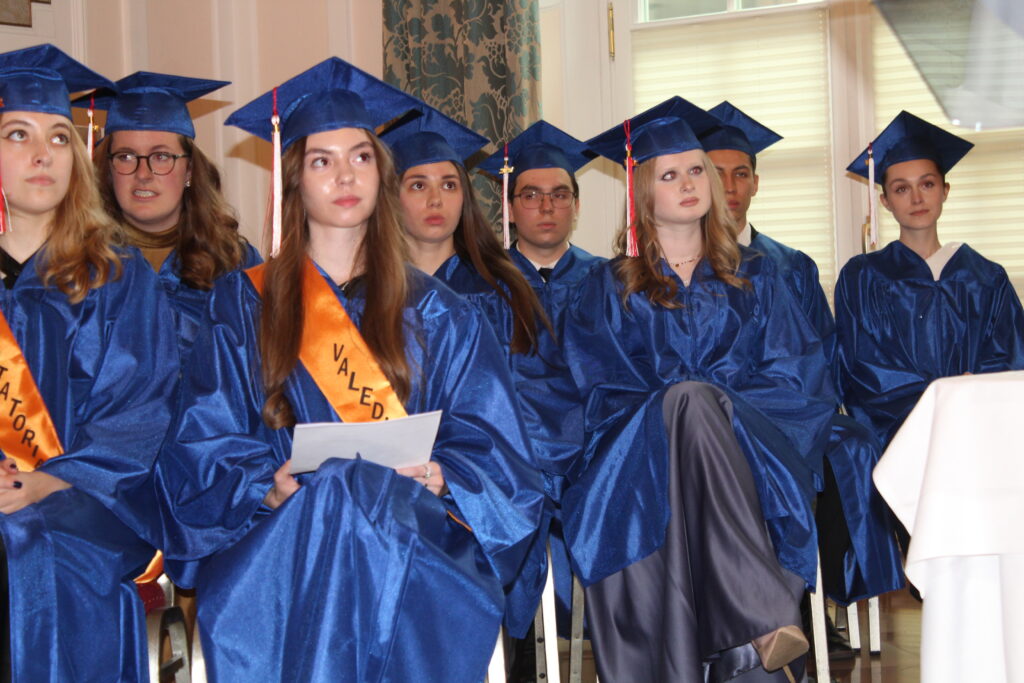
The results are in and we are proud to announce that 20 of our students who sat Advanced Placement® examinations in May of 2024 have achieved AP® Scholar status! We invite you to view the list below of the recipients along with a description of the various scholar distinctions and the AP® exams they wrote.
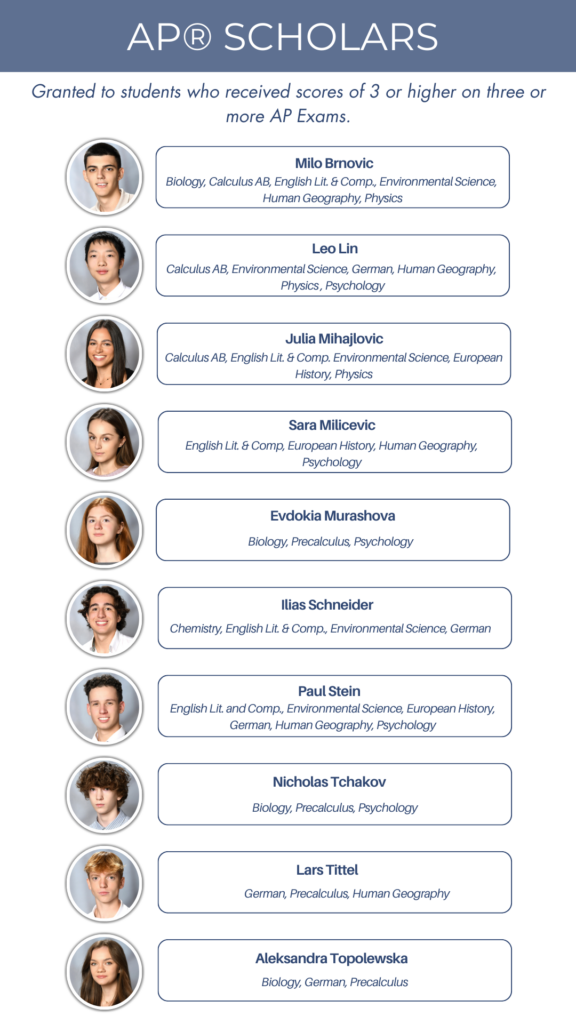
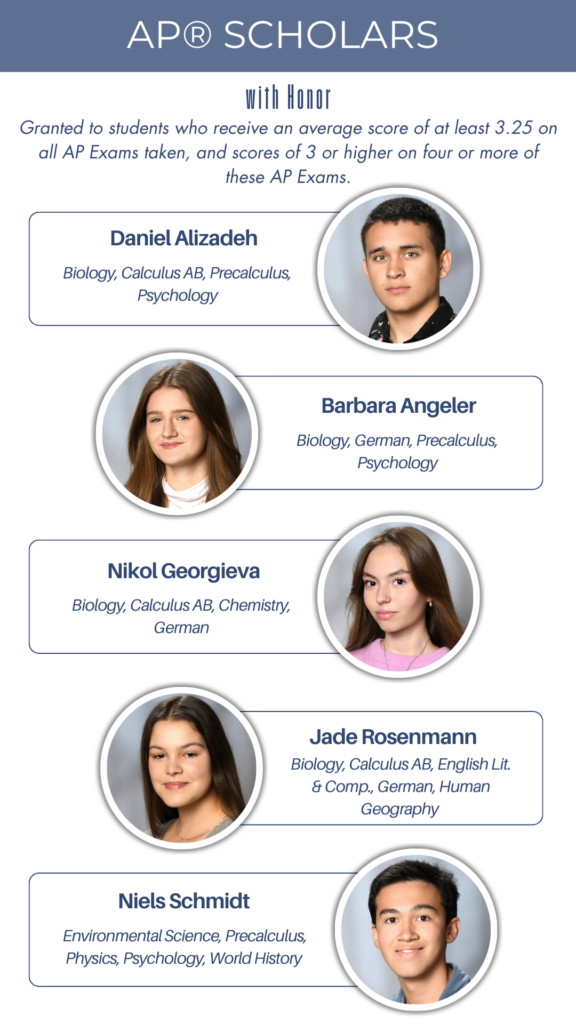
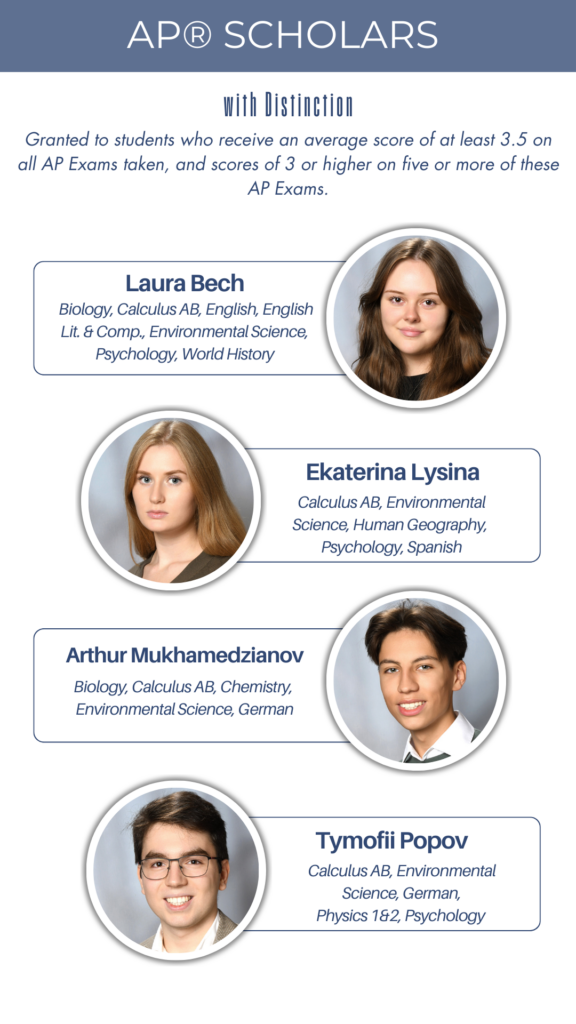
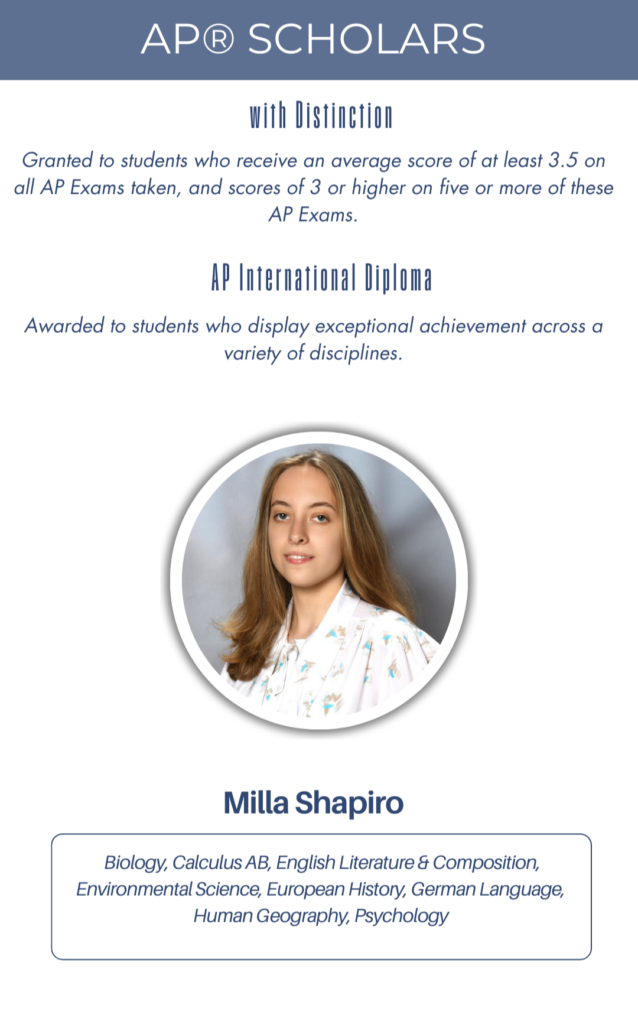

The Commencement Exercises at AIS-Salzburg represent the most important and significant of all annual events at our school. Seniors commence to become alumni after receiving their very hard-earned diplomas and receive our blessings and high hopes for a successful and satisfying future.
This past Thursday, the 2024 commencement exercises were once again held at the beautiful Kavalierhaus at Schloss Klessheim on the outskirts of Salzburg. By tradition, the members of the senior class of 2024 entered to the strains of Pomp and Circumstance by Edward Elgar played by the Pro Musica Quartet led by Ms. Lardschneider of our teaching faculty.
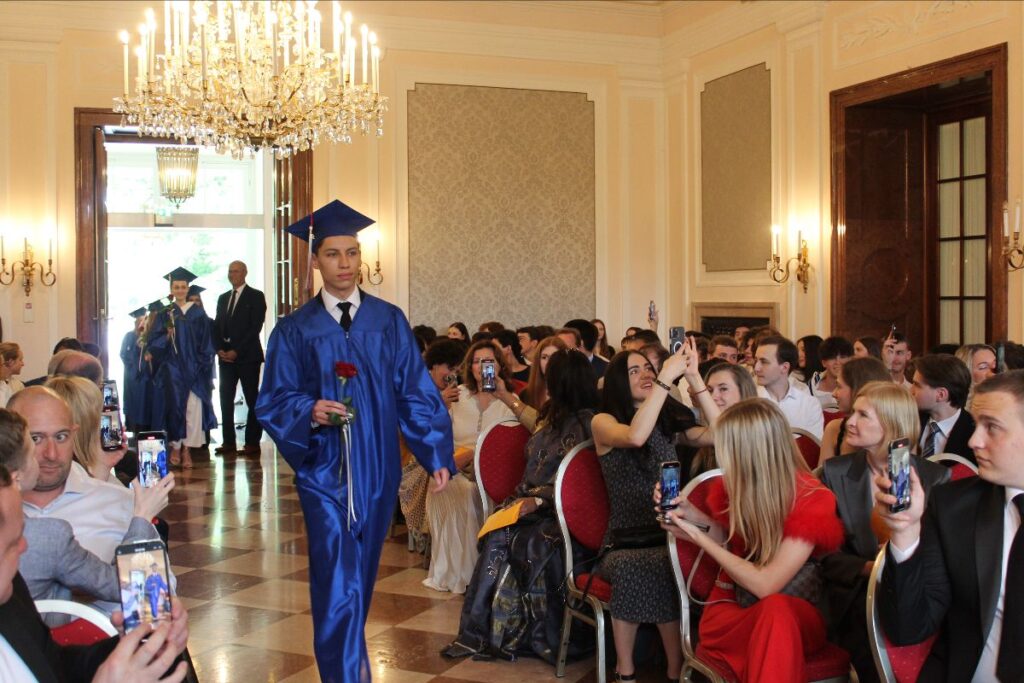
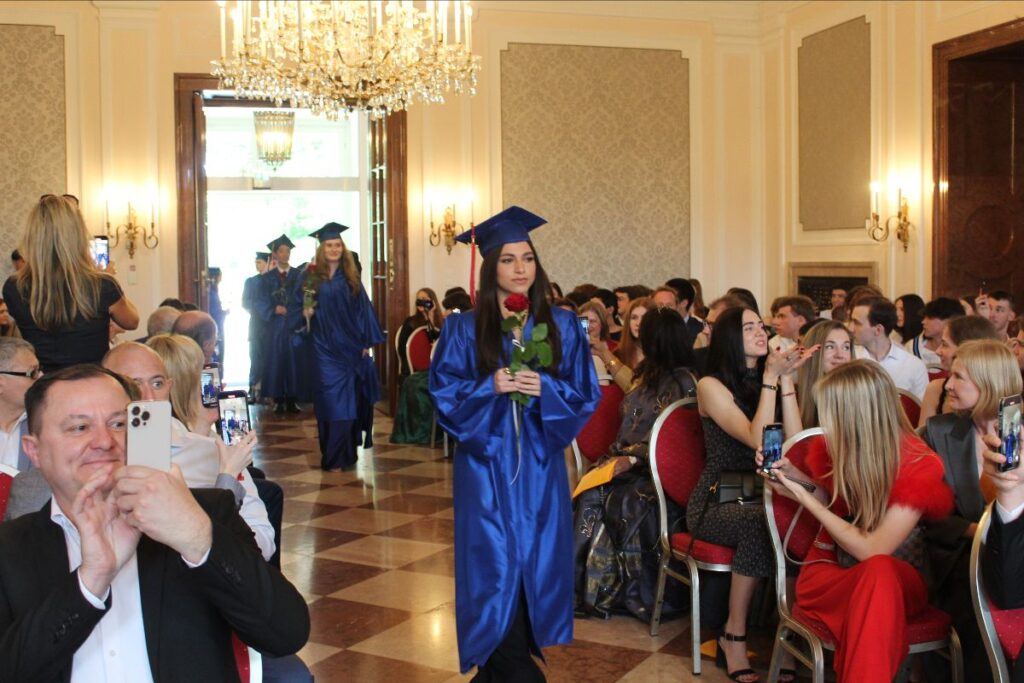
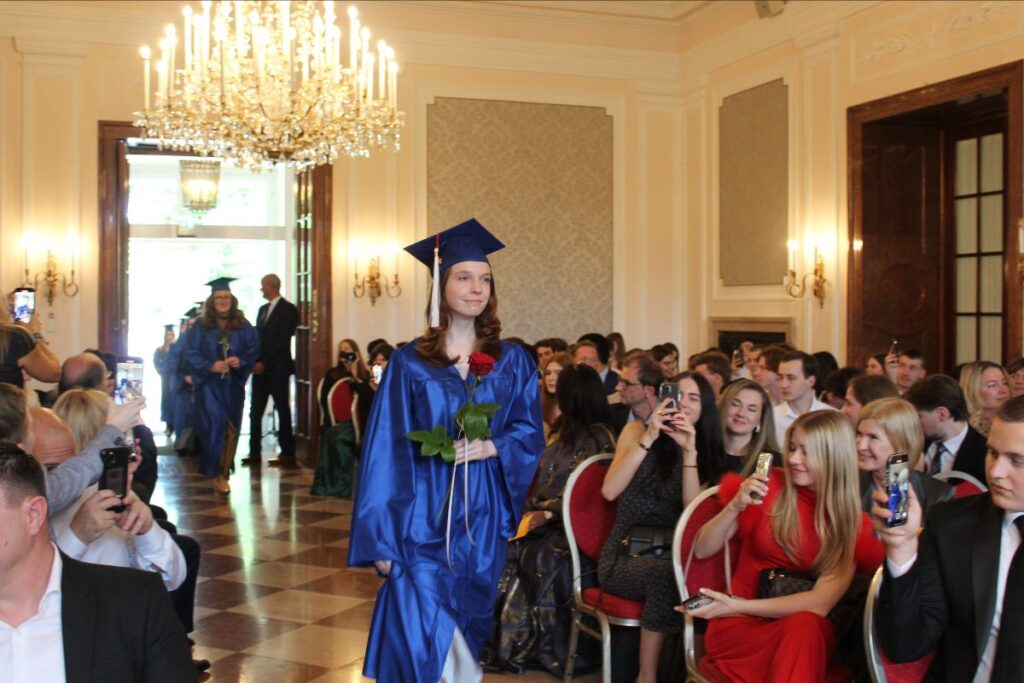
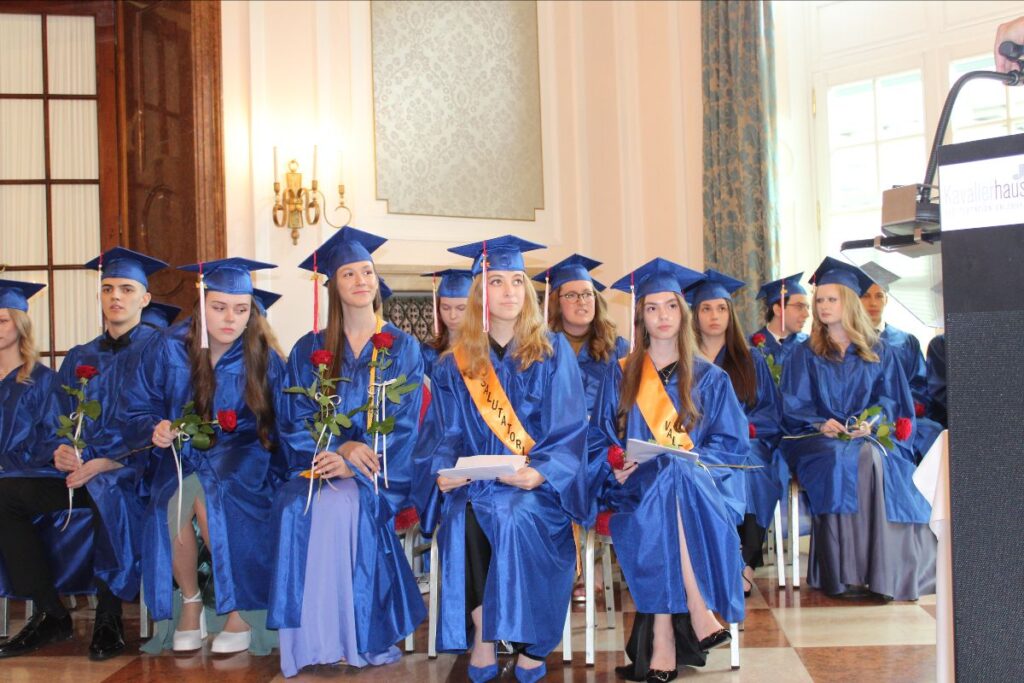
The class Salutatorian, Milla Shapiro, showed her gratitude to her teachers, the resident staff, her classmates, and her family, all who have supported her through her high school years at AIS-Salzburg. Marija Bodroza, the European Council for International Schools Award for International Understanding winner, then addressed the class and guests after being introduced by Ms. Fox, the Dean of Students.
While the Pro Musica Quartet played Mozart’s Divertimento in D, the graduates left their seats and presented a rose to their family members and loved ones; a touching and emotional expression of their gratitude and appreciation to those who supported and strengthened their resolve again and again.
Valedictorian, Nikol Georgieva, after being introduced by Mr. Suttmann, presented a touching and heartfelt speech which included a thank you to her teachers, classmates, as well as her family. Mrs. Kaserbger then presented the Commencement Address to the Class of 2024, fulfilling the seniors’ wish that she do so—an indication of the high regard and respect they have for her efforts both as an instructor and as a supporter of their labors throughout the year.
With the awarding of their diplomas by Mr. McLean, the individual members of the class completed the last requirement for graduating beyond secondary education and received their qualification for further studies at the universities of their choice. With caps thrown into the air, they fell into each other’s arms, rejoicing at their accomplishments, but saddened by the conclusion of their time together in Salzburg, Austria.
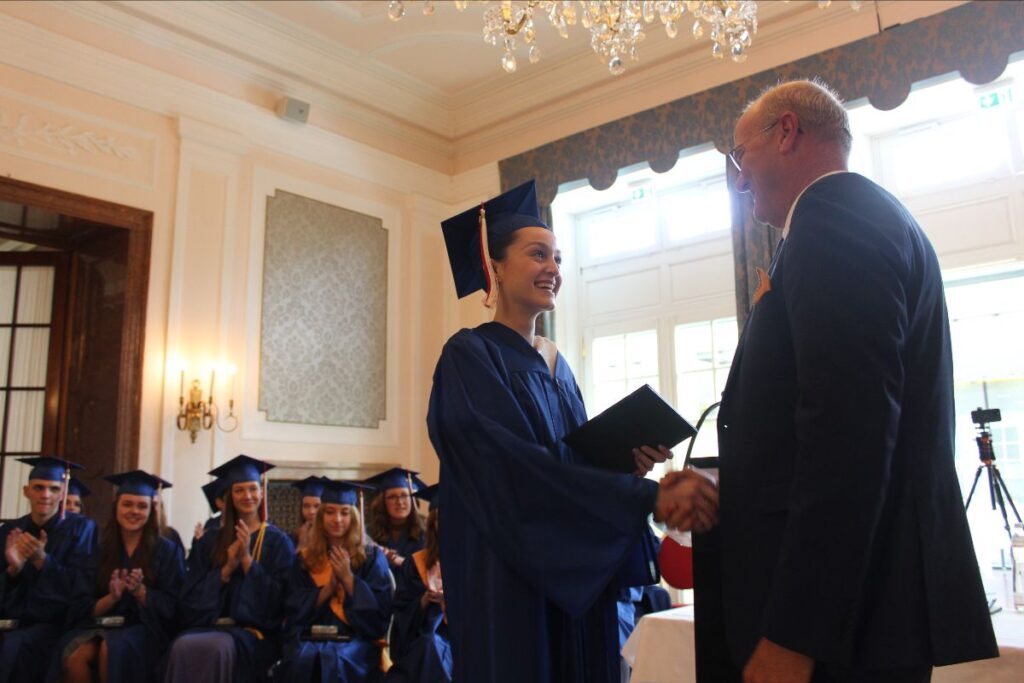
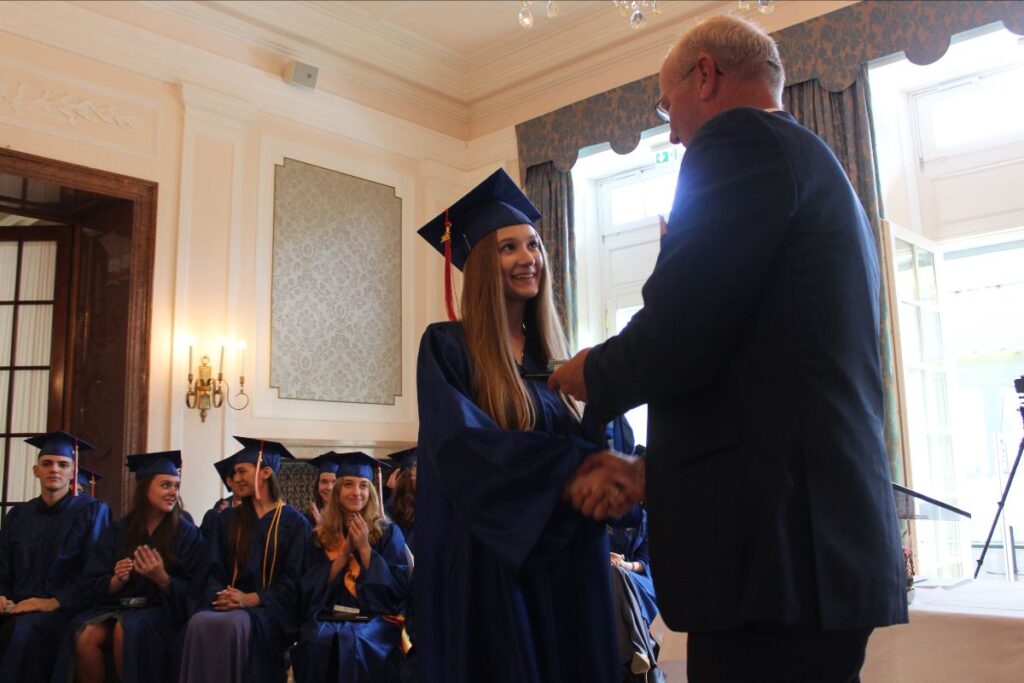
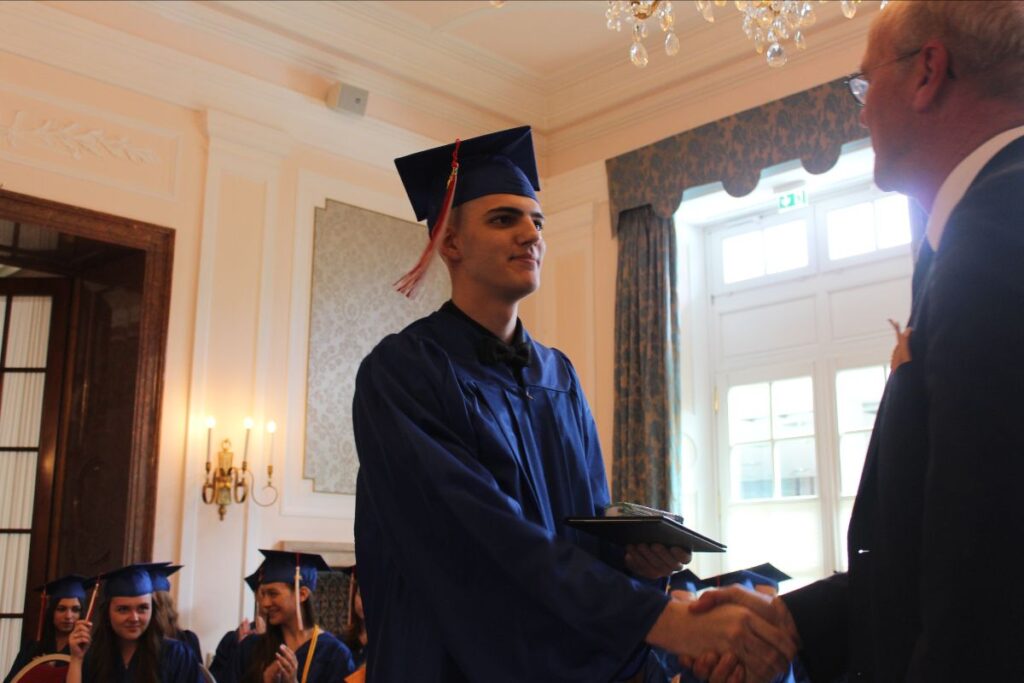
As the final exam week approaches, AIS-Salzburg held its Annual Awards Ceremony last Thursday to recognize students for their cumulative academic, boarding, and athletic achievements over the course of the 2023-2024 school year. This event is also used to announce the recipient of the ECIS Award for International Understanding as well as the academic honor awards of Salutatorian and Valedictorian of the Class of 2024.
Some notable awards handed out this year include but were not limited to:
MALE BOARDER OF THE YEAR
Ernö V.
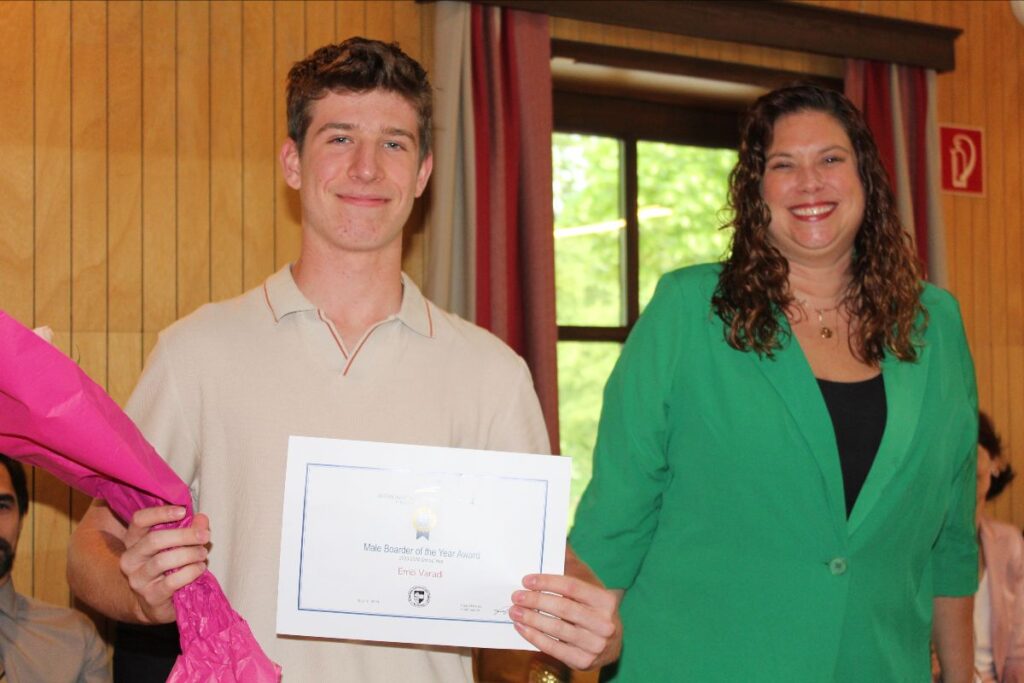
MALE ATHLETE OF THE YEAR
Diego O.L.
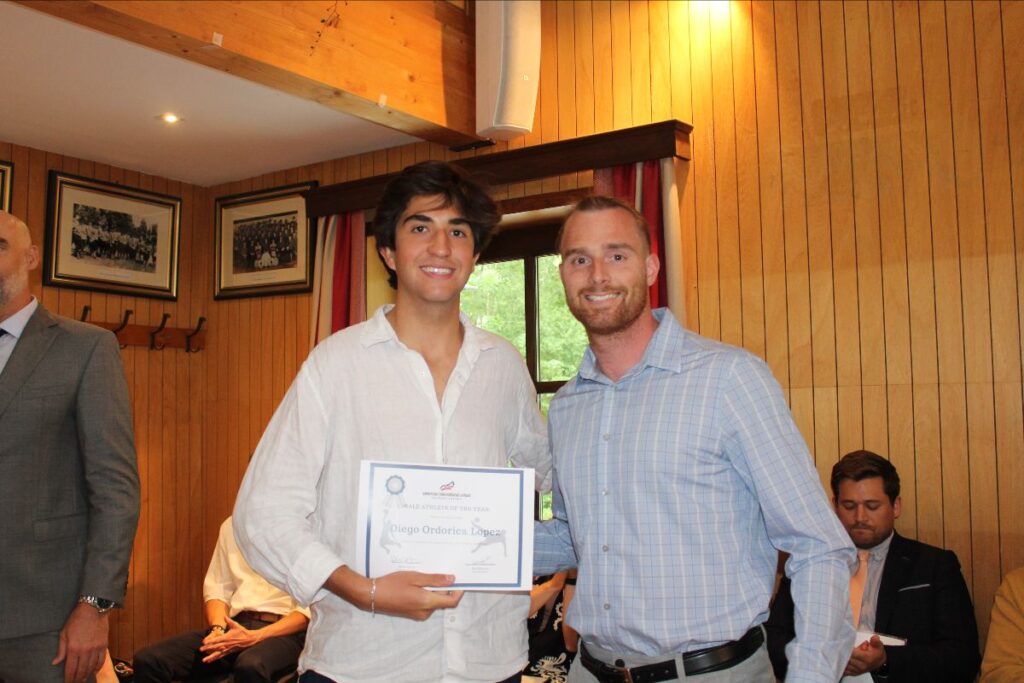
MALE SCHOLAR-ATHLETE OF THE YEAR
Niels S.
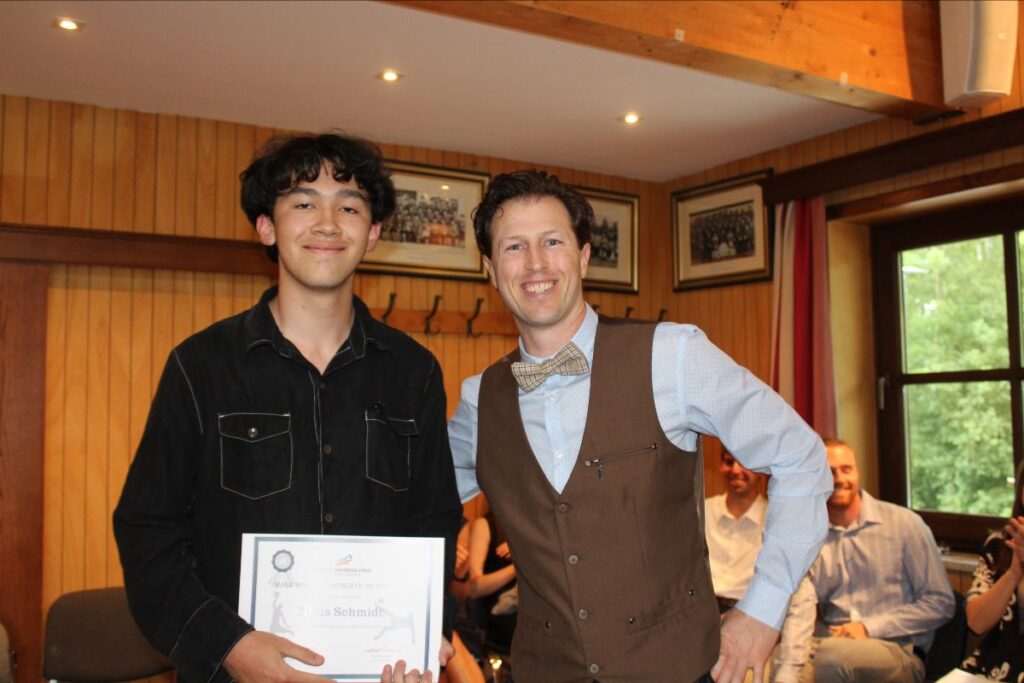
FEMALE BOARDER OF THE YEAR
Natalija J.
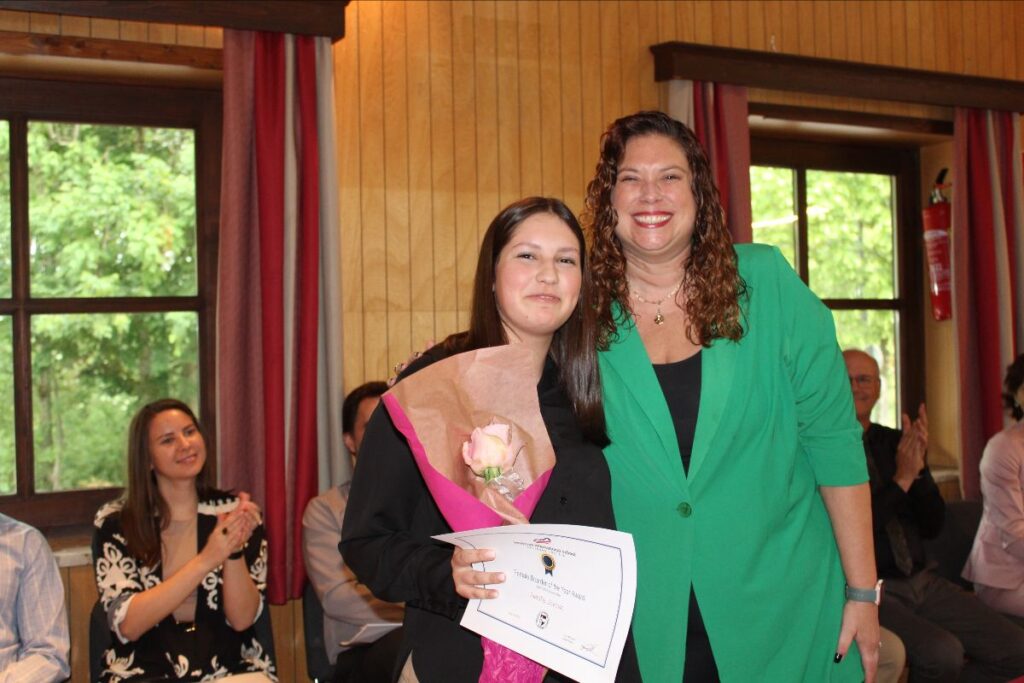
FEMALE ATHLETE OF THE YEAR
Anastasiia B.
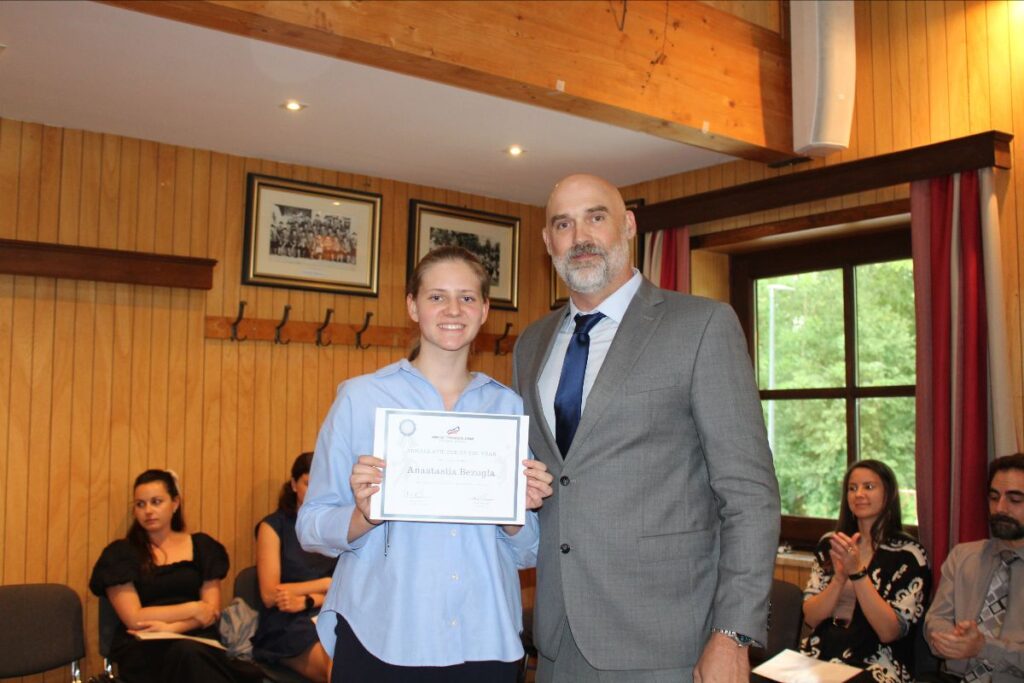
FEMALE SCHOLAR-ATHLETE OF THE YEAR
Barbara A.

The major awards for the senior class of 2024 came at the end of the ceremony when Mr. McLean announced the ECIS Award winner, the Salutatorian, and the Valedictorian. We invite you to watch the videos below as he recognizes each of these students.
Nick DeWitt will return for his 6th year as the boys’ head basketball coach for the 2024-2025 school year and is looking to build on what was overall a successful season this year, despite the disappointing result at the season-end AIS-Salzburg Basketball Jamboree. The boys’ basketball program had a record-high 30 active players this school year, who competed at the middle school, junior varsity, and varsity levels. DeWitt was the varsity coach, while Tom Henry coached the junior varsity team and the pair split time coaching the middle school team.
The varsity team was as talented as it had been in years and there were high hopes of a strong finish at Jamboree. However, after a disappointing 5th-place finish, coach DeWitt said it all boiled down to a lack of focus and execution.
“We have an extremely talented and athletic group of boys but they spend a lot of time worrying about outside factors. As my coach used to say, if you are focused on the score, the refs, or your teammates, then you are not completely locked into the game and you are not ready to give your best each possession.”
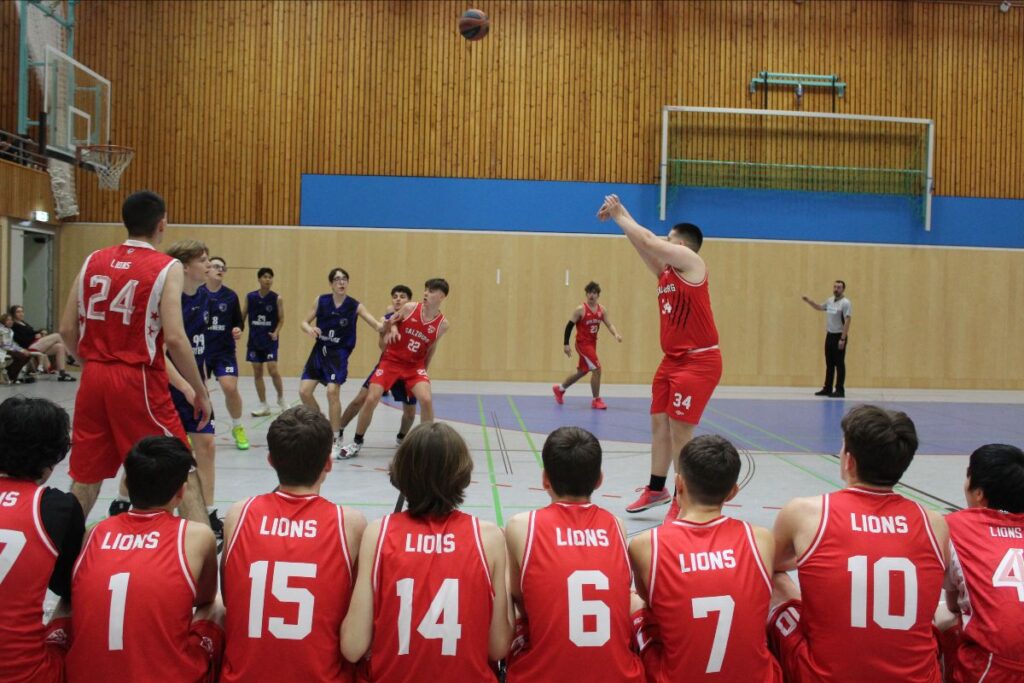
A big factor behind the growth of the boys’ basketball program, is the effort and attention poured into it by coach DeWitt for the past five years. However, his efforts have not come without a lot of headaches and frustration, relatable to anyone who has coached high school boys’ basketball before.
“The greatest challenge of coaching teenage boys is managing all of their different personalities and emotions as well as getting them to set aside their egos and desire for individual success/court time for the betterment of the team,” said coach DeWitt.
The passion for coaching and the frustration that comes with it is evident in the video below of a mic’d-up coach DeWitt at our basketball Jamboree this past March.
“We are moving in the right direction and we are so close to putting it all together,” said an optimistic coach DeWitt of the outlook of the future.”I have a lot of faith in this group of boys and I believe we will get better and better each year.”
Photo: Tomoki poses for a photo with Mr. Agardy—now retired—during a visit in May of 2022. Mr. Agardy was a major influence on the direction of Tomoki’s university studies.
Tomoki Kitazumi came to AIS-Salzburg from Japan in 1999 as a 10th-grade student and graduated in the spring of 2022. Since graduating, Tomoki has been studying and living in Berlin, Germany. Today, Tomoki’s name is preceded by “Dr.” and in 2023 he received a prize for his PhD thesis. We invite you to read the interview below and learn more about Tomoki’s time at AIS-Salzburg and accomplishments thereafter.
What is/are your fondest memory or memories of attending AIS-Salzburg?
Tomoki: I enjoyed the regular daily conversations and interactions with people in the dining room that didn’t have any specific purpose (which no longer exists to my knowledge).
What did you enjoy about going to such a small high school?
Tomoki: I enjoyed the fact that I practically knew everyone, and no one was extraneous.
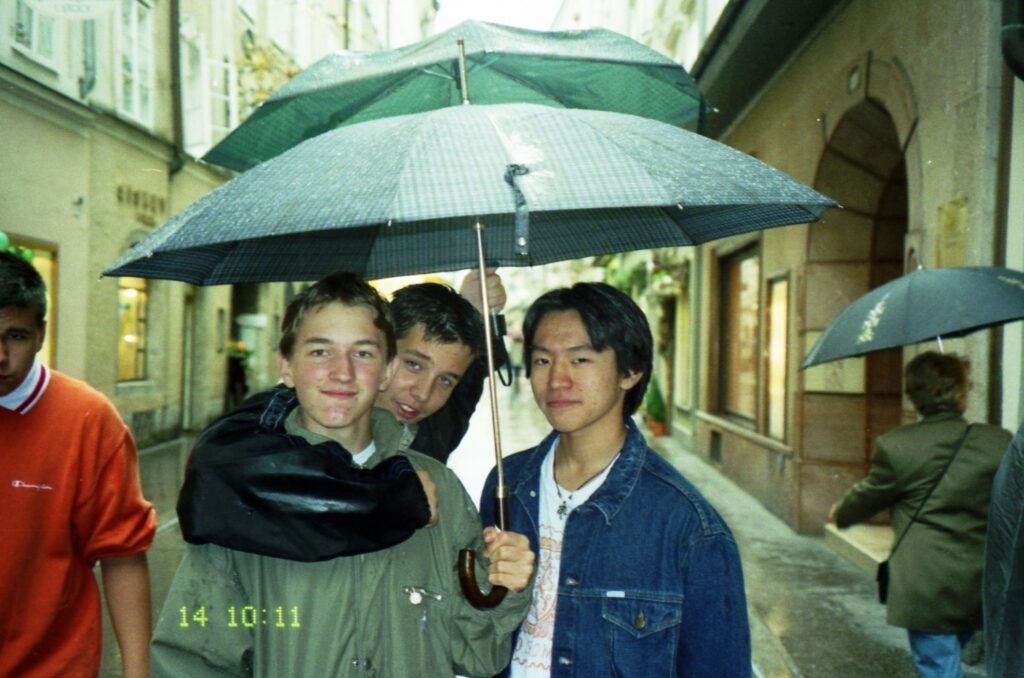
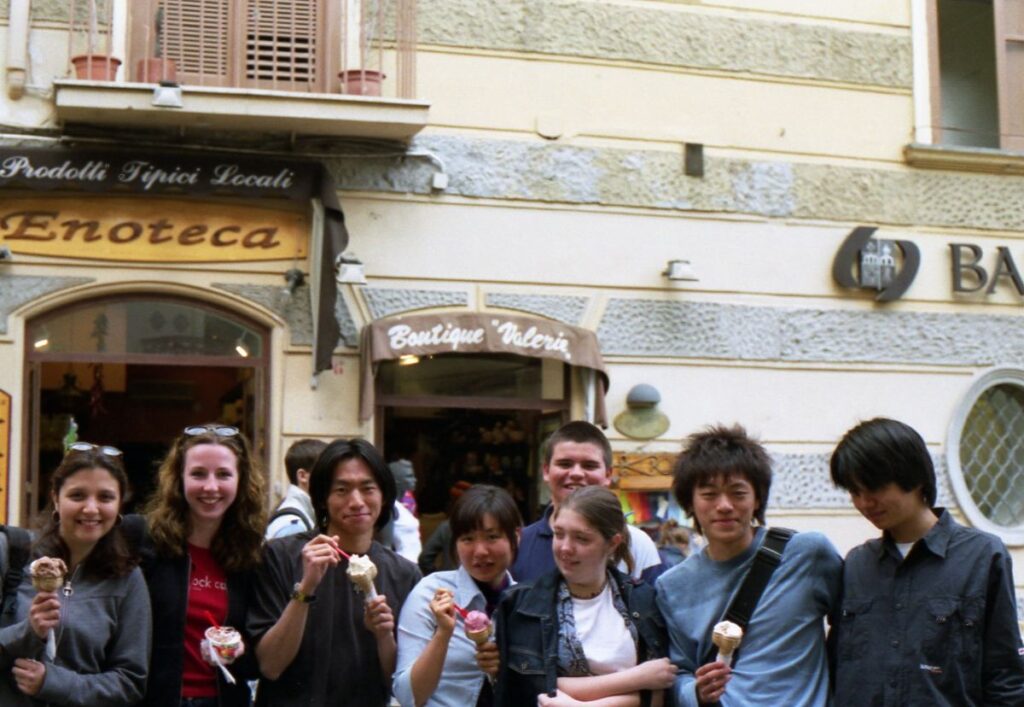
Photos: (Above) Tomoki with friends Leonid and Puk at the 2000 AIS-Salzburg Summer School. (Below)Tomoki, third from left, with fellow students during an excursion to Italy in the spring of 2002.
What have you done academically and professionally since graduating from AIS-Salzburg?
Tomoki: I proceeded to the world of academics: I studied at the Freie Universität Berlin and earned a PhD from this university. My majors were in the history of the Ancient Near East and comparative linguistics. I’m still at the same university, working as a research associate.
Those who are interested can find more information about Tomoki’s work at the university via the links below:
https://www.geschkult.fu-berlin.de/e/rod/Team-und-Fellows/wissenschaftliche-mitarbeiter/Kitazumi_Tomoki.html
https://www.geschkult.fu-berlin.de/e/altorient/Mitarbeiter_innen/Institut/Kitazumi.html
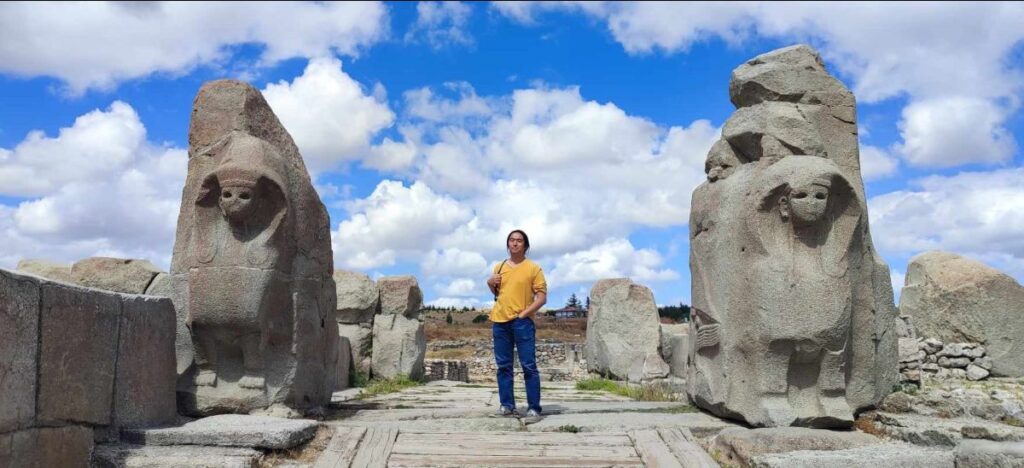
Photo: Tomoki at an archaeological site in Turkey (Sept. 2023).
What aspects of your education at AIS-Salzburg best assisted you in further academics, your professional life, and life in general?
Tomoki: When I was at the AIS-Salzburg, there was still the IB program which emphasized a wide range of knowledge. I learned throughout my academic career and in life, that this principle is important as you never know when you need certain knowledge. Therefore, it simply helps to know how to use and apply the knowledge you acquired, and the more knowledge the better.
Are there any personal accomplishments since graduating that you want to share?
Tomoki: Yes, in 2023 I was awarded the “best dissertation prize” for my PhD-thesis (how scribes in the Hittite empire approached translation).
We invite you to read this article on Tomoki’s award-winning dissertation or listen to this podcast interview on Spotify where he speaks about his work (7:31-16:20)
Do you have any advice for students at AIS-Salzburg or applicants to the school?
Tomoki: Find what you like and follow it as much as you can (I do not like to say “follow your dream” since it sounds too abstract with “dream”). If you don’t have one, you can try and find it by simply trying or learning a lot of new things which you have never done before.
On May 1st, the 9th Annual AIS-Salzburg Sports Day was met with sun and high spirits, as students were divided into 6 teams and competed for the coveted Sports Day Trophy. Each team was led by a teacher and a resident assistant—who were also eligible to compete—and wore different coloured t-shirts representing and identifying their team.
In the morning, teams competed in badminton, ball hockey, basketball, volleyball, and running events. In the afternoon, competitions featured soccer, high jump, long jump, fun competitions, and were capped off with a relay race. For team events, 5 points were awarded to the winner, with 4 points to second place, 3 points to third place, and so on. For individual or pair events, 3 points were awarded to the winner, 2 for second place, and 1 for third place.

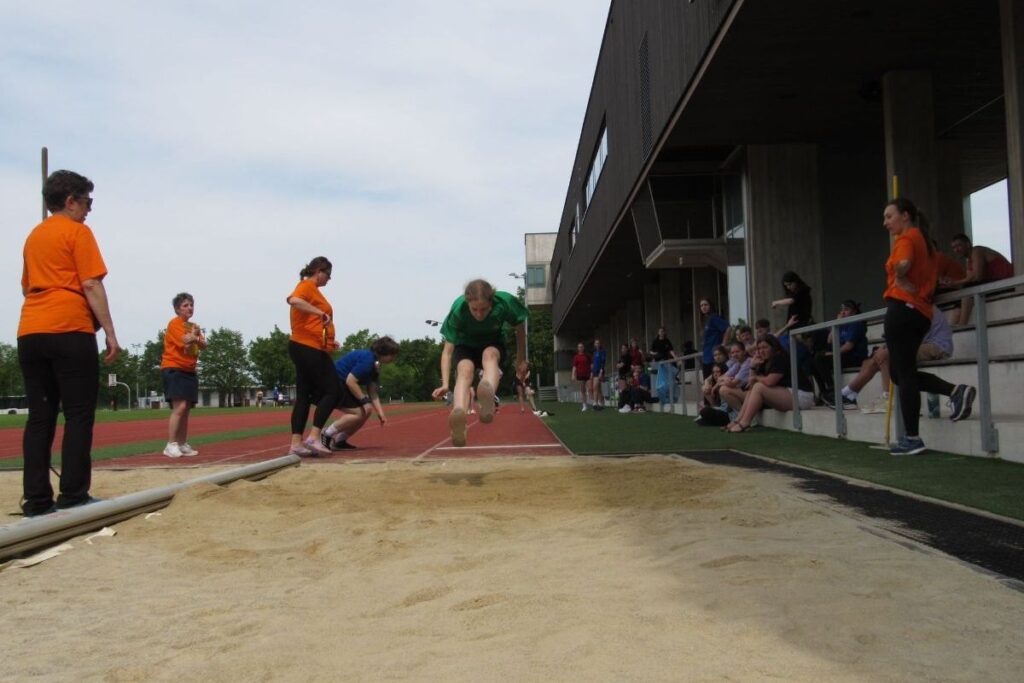

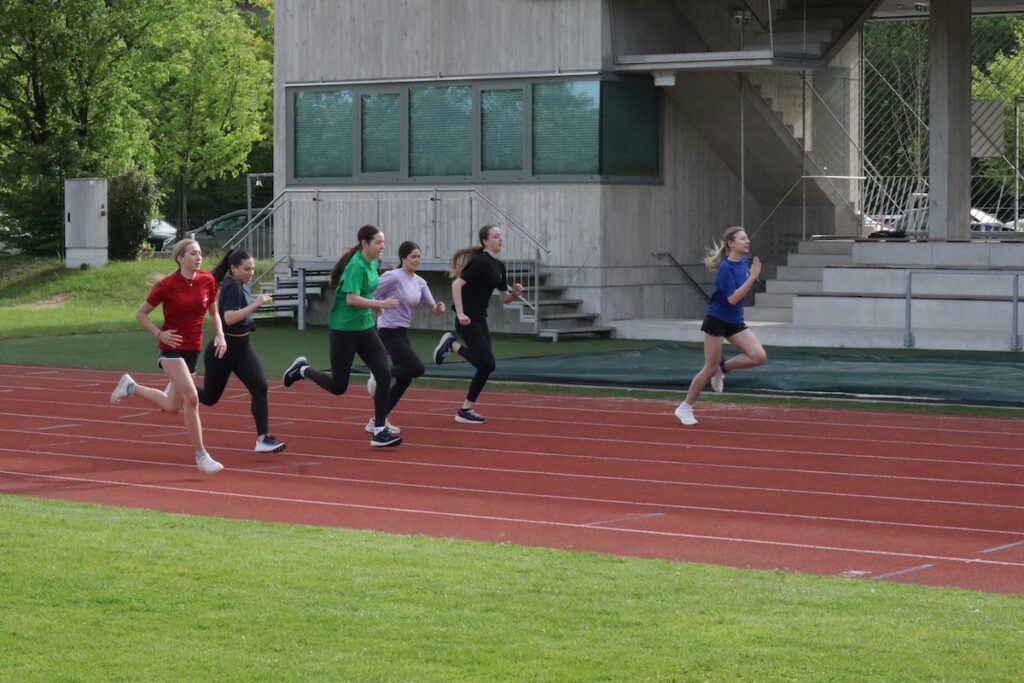
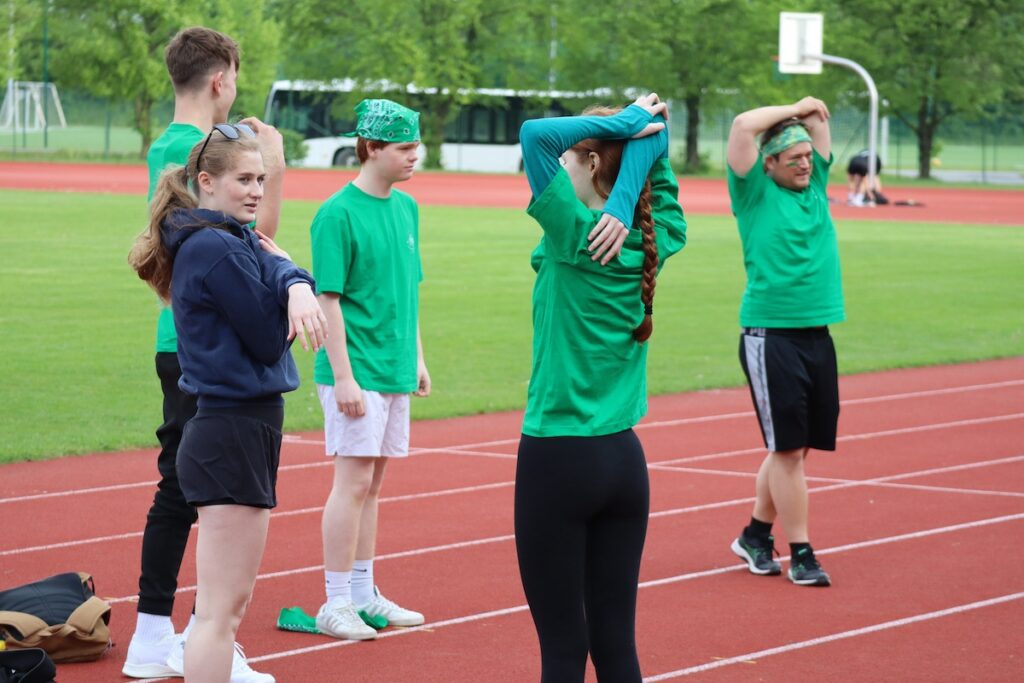
At the end of the day, points were tallied up and the top three teams received prizes. The team with the most points also received the Sports Day trophy.
This year, the AIS-Salzburg Sports Day champions were once again Team Red, who won for the second year in a row. Team Red was led by Mr. Lichty and resident assistant Matt, whose names will be engraved into the trophy for historical reference. Below are the final standings and points that were earned.
1st Place with 41 points: Team Red led by Mr. Lichty, RA Matt
2nd Place with 33 points: Team Lavender led by Ms. Baehler and RA Abby
3rd Place with 27 points: Team Kelly Green led by Mr. Leicher and RA Arabella
4th Place with 21 points: Team Black led by Mr. Anderson and RA Nick
5th Place with 18 points: Team Navy led by Mr. Gahan and RA Ali
6th Place with 17 points: Team Royal Blue led by Mr. Suttmann and RA Tom Henry
We are very pleased with the great sportsmanship and positive attitudes shown throughout the day. We invite you to view the photos and video below from this beautiful day of competition.
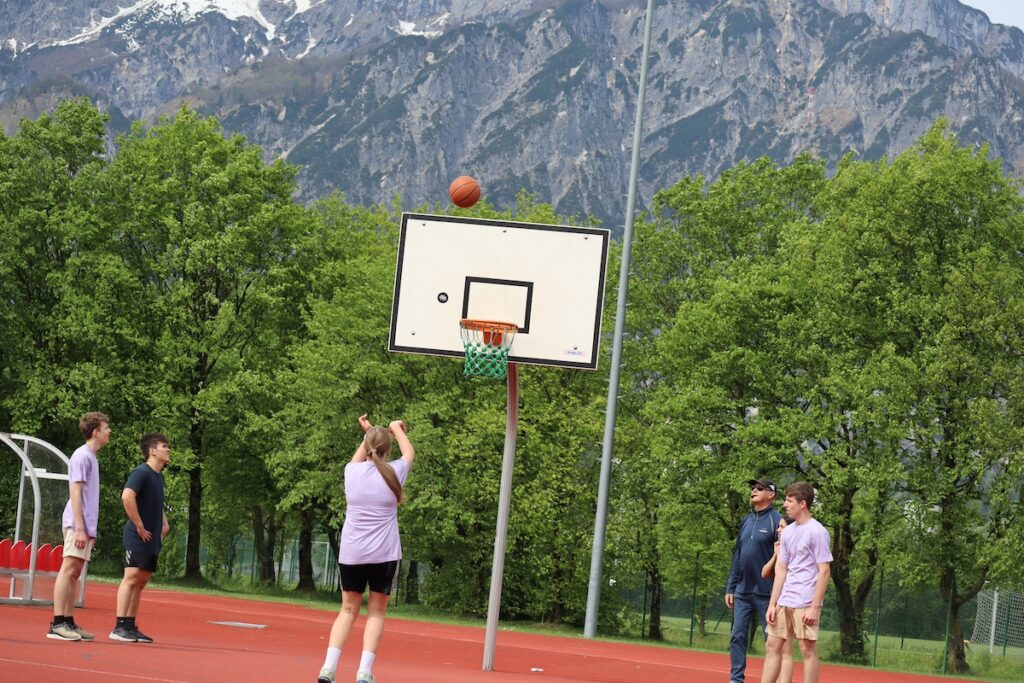
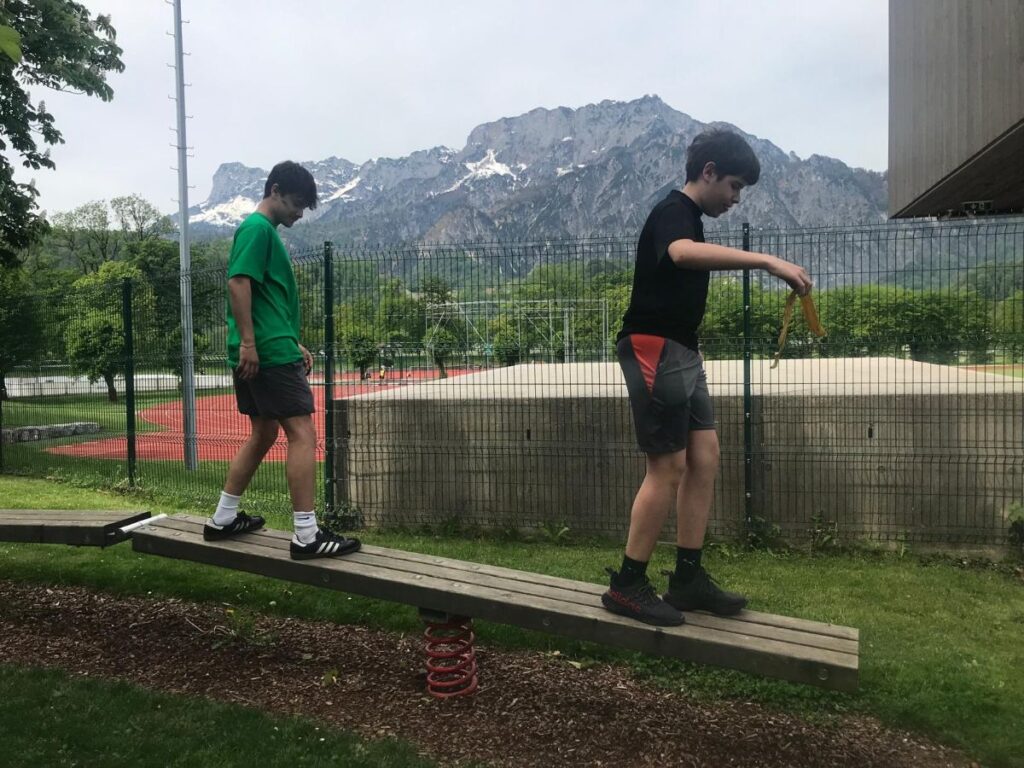
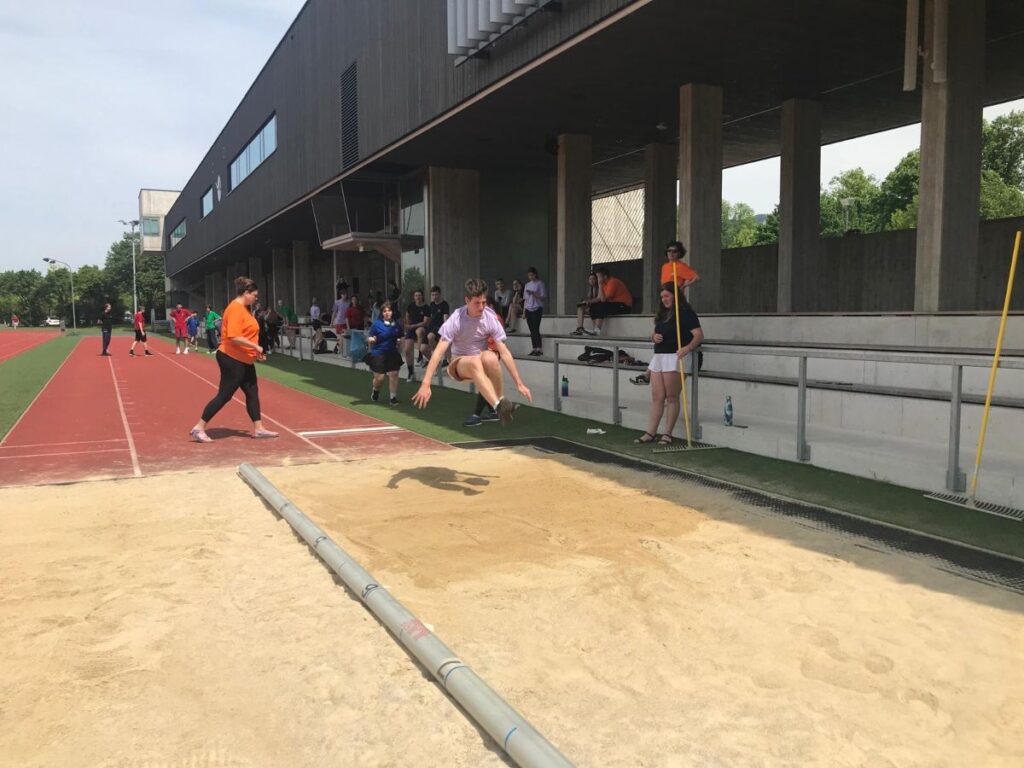

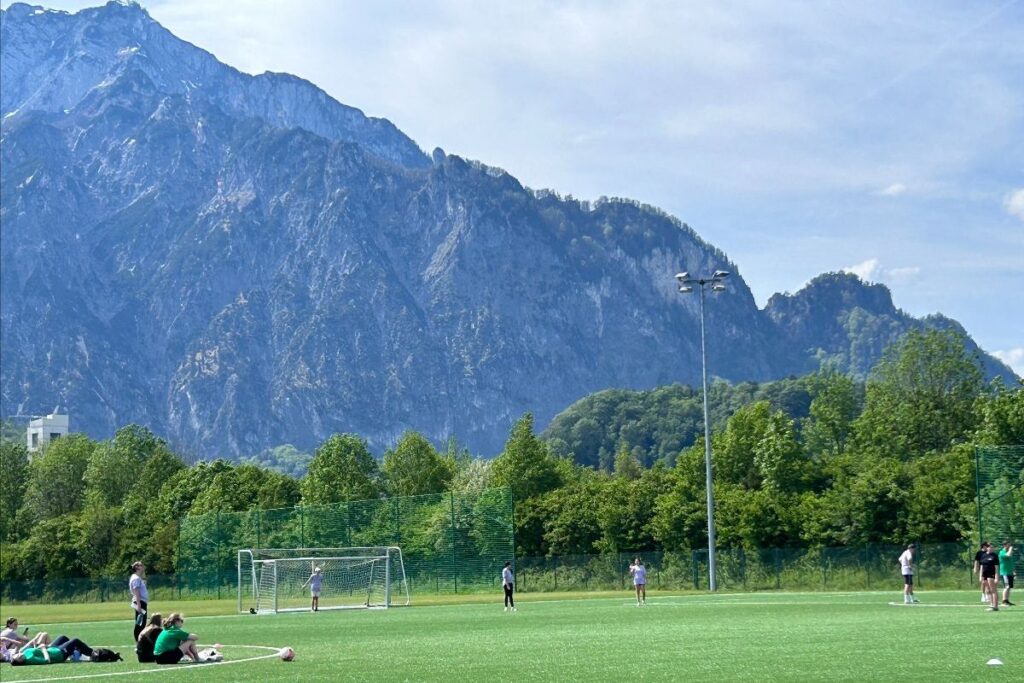
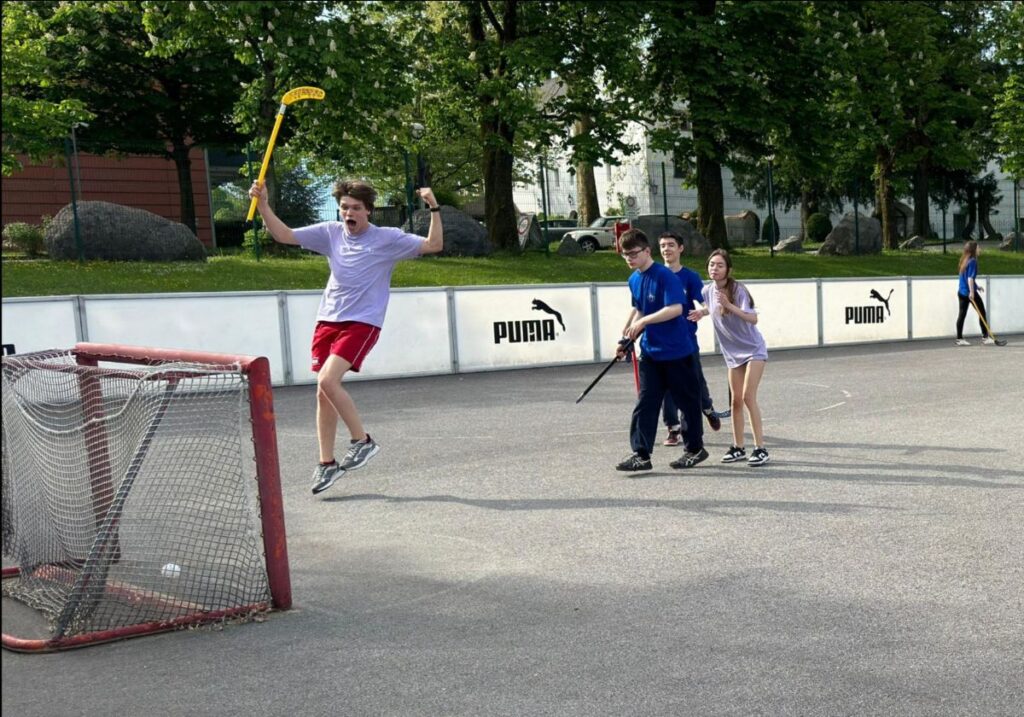
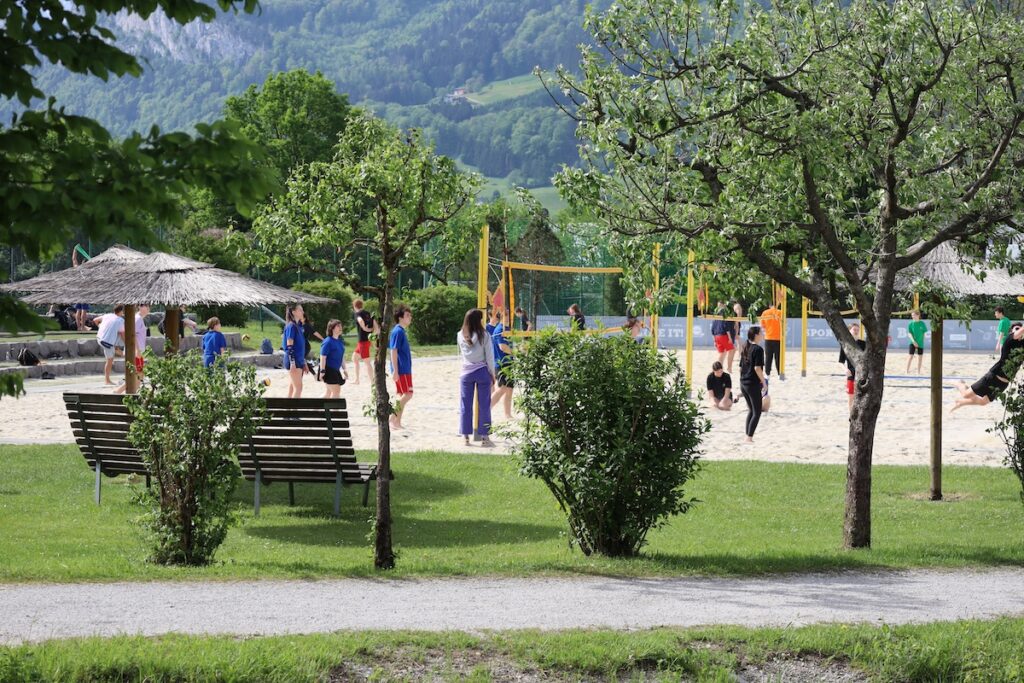



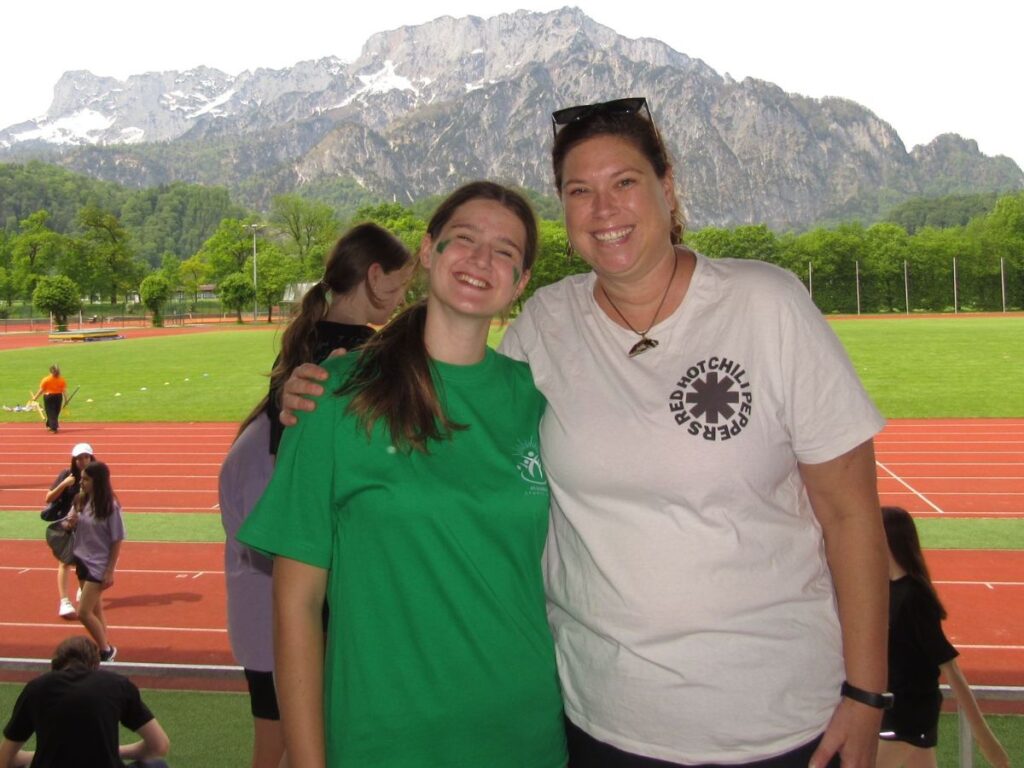


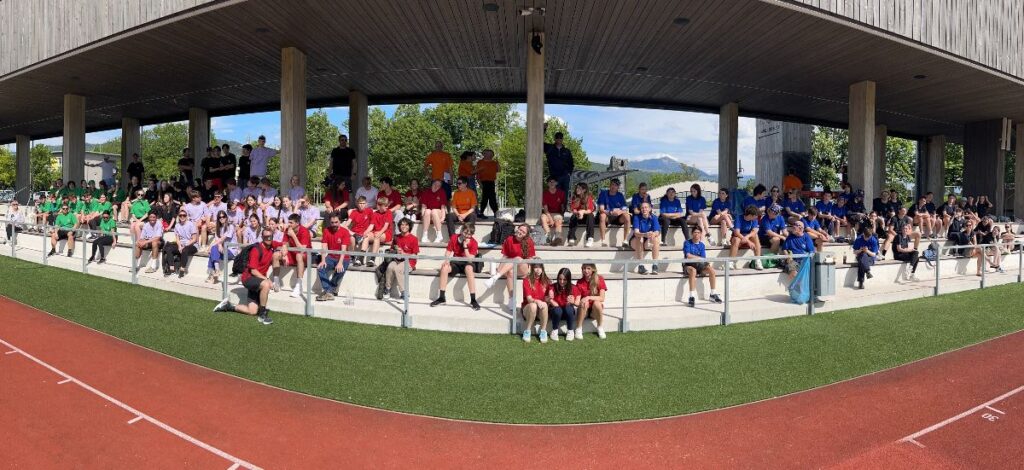
The AIS-Salzburg Lions had an eventful year highlighted by two championship trophies and a record number of students participating on the various fall and winter teams.
Fall Season
In the fall season, we fielded two girls’ volleyball teams, a boys’ soccer team, and a boys’ volleyball team.
In girls’ volleyball, we had one of our most talented teams ever and had high hopes to bring home the DVAC Varsity Championship gold. Unfortunately, the girls ran into some of the toughest competition DVAC has produced since its inception in 2009, just falling short of their goal after losing two close matches at the year-end tournament which were decided in the final moments.
The girls’ junior varsity team had a total of 10 girls on the team, all of whom played their first season of volleyball ever. The JV girls competed at both DVAC tournaments and despite losing all of their matches, gained valuable experience and confidence going into the next season.

Photo: The varsity girls’ volleyball team poses for a photo after just falling at the DVAC championship, hence the lack of smiles.
The boys’ soccer team had another successful season! New talent blended with a strong group of returners set the Lions up for success. Playing with very aggressive tactics, the boys put everything together for the DVAC junior varsity tournament and came away with their second straight tournament championship win!
The Lions featured a young squad, with goalkeeper Ilias Schneider being the only 12th-grader on the roster. Every single player showed up to training looking to improve their game, and much progress was made! The future looks bright for R.A. Matt’s team.
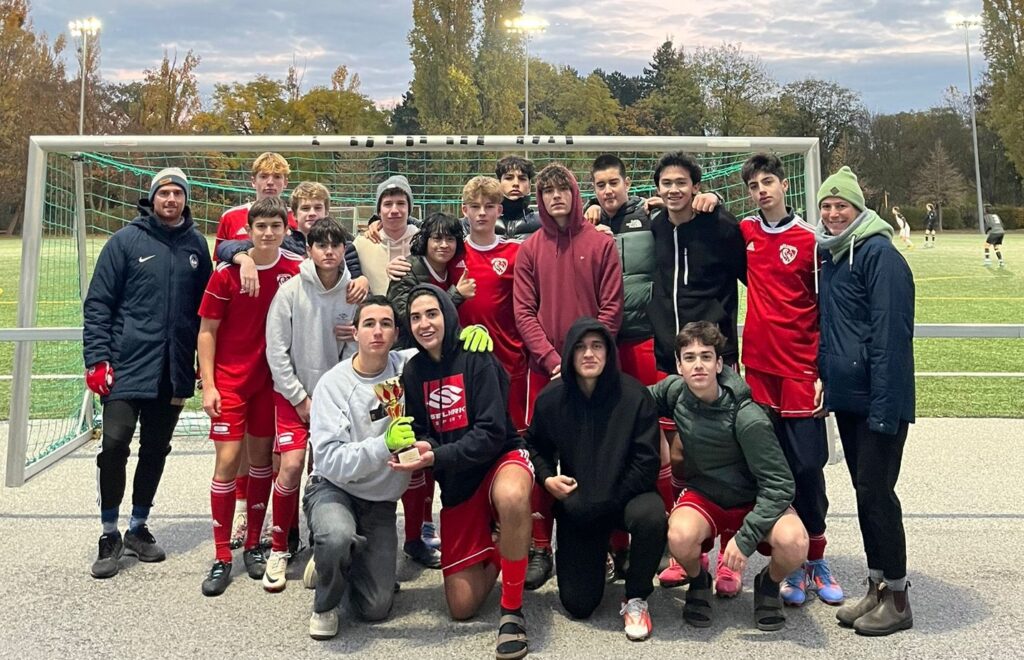
Photo: The boys’ soccer team took home their second straight DVAC Junior Varsity Championship trophy this year.
We were very fortunate to have a strong boys volleyball team for the third year in a row after not having a boys team for a very long time at AIS-Salzburg. The season was full of improvement, some incredible plays and real potential. While we were successful and competitive all season, unfortunately, we fell short in the final DVAC junior varsity tournament at the end of the season. This season was a great lesson for the boys on many different levels. Coach Nick looks forward to a fresh start and a new chance for success next year.

Photo: The boys’ volleyball team was one of the more successful teams at the DVAC Junior Varsity events this year.
| Winter Season |
The girls’ basketball team had a total of 16 girls on the team this year with a mixture of beginners and experienced players. Coach Burns entered teams into both DVAC junior varsity and varsity tournaments to provide all girls with the opportunity to compete and test their skills.
The highlight of the season was when the girls won the AIS-Salzburg Basketball Jamboree championship after defeating their season nemesis, the International Christian School of Vienna in a close back-and-forth battle. ICSV had defeated the Lions in double overtime just one week earlier at the DVAC varsity championship, which made this win even sweeter!

Photo: The girls’ basketball team won the AIS-Salzburg Jamboree tournament for the second time in three years.
According to coach Nick DeWitt, he has never had the chance to coach a team with so much individual talent and potential as this year’s boys basketball team.
“This season was truly a pleasure for me as I saw brief glimpses of what our basketball program could become. Unfortunately, we were not able to put all of our talent together as a team in our final tournament but I am not discouraged at all. With the direction that we are heading and the young core that we have, I am very excited to see what our boys are capable of in the coming years.”

Photo: With 30 boys playing on the basketball team, coaches Nick and Tom Henry fielded a middle school, junior varsity, and varsity team this year.
We want to thank all of the following graduating players for their contribution to the sports program and we wish them all the best in sports and life after AIS-Salzburg: Milo, Leo, Ilias, Tim P., Paul, Jade, Marija, Julia, Valentina, Milla, and Nikol I.
The Old City of Salzburg has occasionally been called the ‘Rome of the North’ and a ‘Baroque Jewel’ because of the heavy influence on architecture that the Baroque Age brought with it. Our senior humanities course has been studying this period over the past week and was ready for an evaluation in identifying the signal elements of Baroque architecture. What better way to test their knowledge of pilasters, broken pediments, split facades and doubled columns than to head downtown and identify them directly? Watch as they move from Baroque facade to facade and experience the fascinating beauty of this extravagant period of decorative architecture.
We invite you to watch the video below of the senior baroque tour this past Monday and see for yourselves.
In a fake crime scene scenario, Advanced Placement® Biology students were given the DNA of 8 suspects and DNA from a fake crime scene. Using DNA sequencing technology, students matched up the different DNA sequences to figure out who the primary suspect was and solve the crime.
Alec Smith came to AIS-Salzburg in 2012 as a junior-high student, moving far away from his home in Martinez, U.S.A, a small town in the San Francisco Bay Area. Alec spent his entire high school career at our school, graduating in 2016. After college abroad, Alec has returned to the U.S. and now lives in San Ramon, not far from where he was born. Alec has accomplished a lot during his time since graduating from our school, and in this interview below shares his post-high school story thus far.
AIS-Salzburg: What were the major factors in your decision to attend a small private boarding school in Austria?
Alec Smith: My parents wanted the best education possible for me. My mother is Bulgarian and felt that certain academic standards in our local school district were lacking. Both my parents wanted to give me the best possible chance at being accepted into a prestigious school.
AIS-Salzburg: What is your fondest memory of attending AIS-Salzburg?
Alec Smith: My fondest memory from my time at AIS-Salzburg is hard to distill into a single moment. I remember one late afternoon in early spring, walking back to the school with my friends, I went along the pathways near the bakery. The sun was just beginning to dip in the sky over the Untersberg and the day’s heat was beginning to dissipate with a pleasant breeze. I remember the scent of the grass, the light of sunset, and how peaceful and simple everything was. I remember it as a uniquely serene feeling. It’s not a moment that comes often in life.
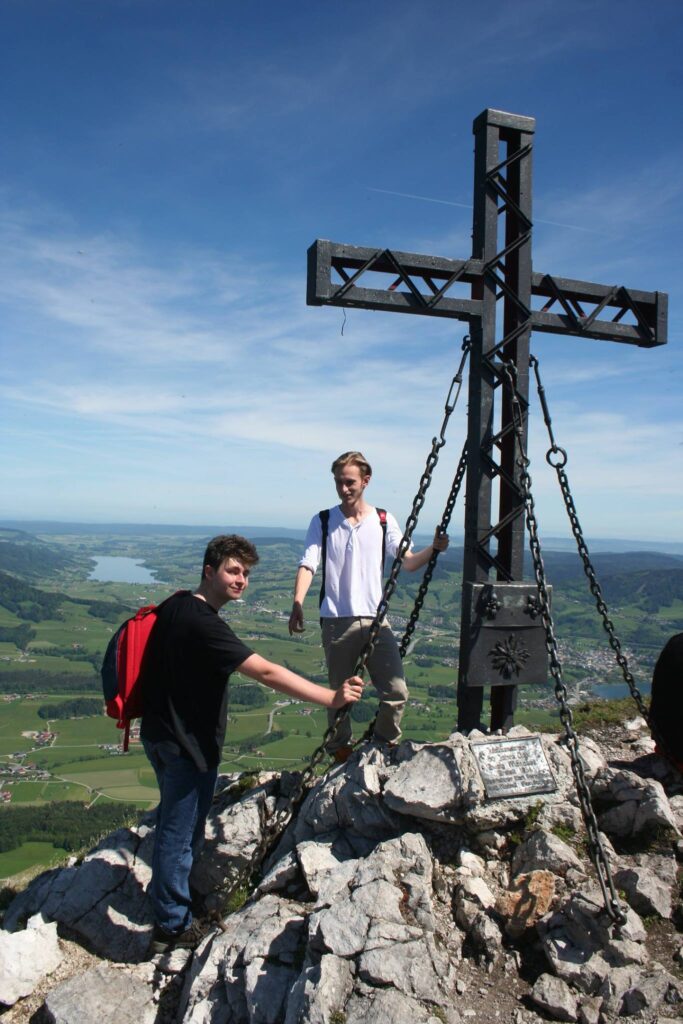
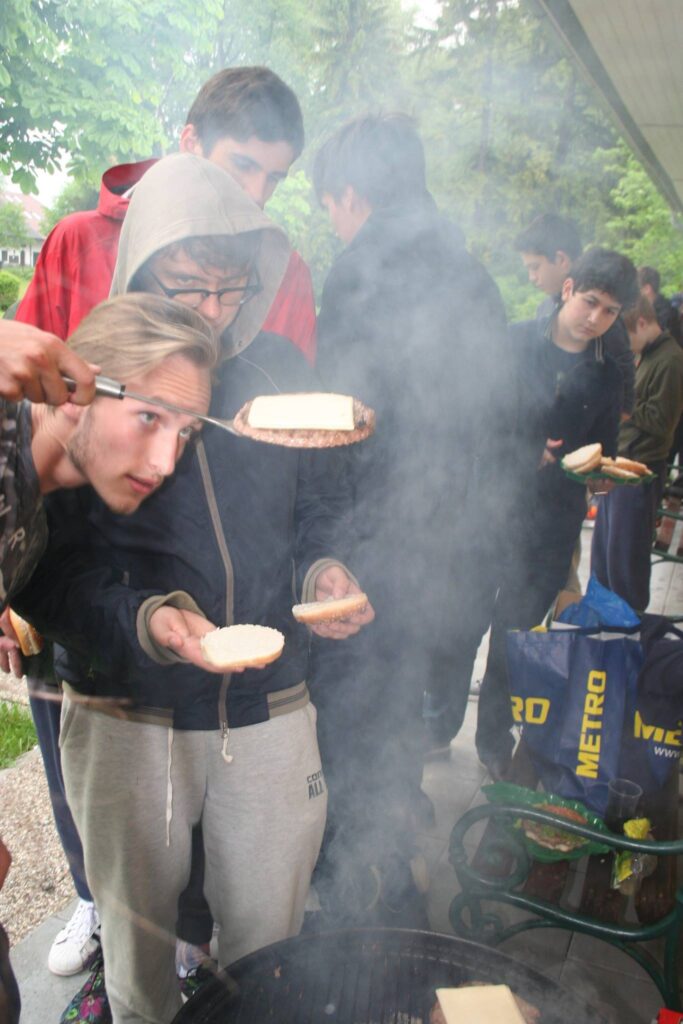
Photo: Alec was involved in numerous weekend activities during his time at AIS-Salzburg.
AIS-Salzburg: What did you like about going to such a small and intimate international school?
Alec Smith: I liked that you knew everyone and perhaps even too much about them. Even if you didn’t particularly like someone, the fact that you lived in close proximity to them meant that you needed to learn how to get along. Living in a small boarding school socializes you very rapidly.
AIS-Salzburg: Were there any teachers who stood out as making a substantial positive impact on your life?
Alec Smith: Paul McLean was the single greatest influence on my life today and the person I became. It is because of him that I have a genuine curiosity about the world, and that I demand of myself perfection in my professional career. And more importantly, he instilled in me a sense of wonder and amazement for all that could be learned and everything there has yet to be learned.



Photo: Alec (top) receives his high school diploma from Headmaster McLean.
AIS-Salzburg: What have you done academically and professionally since graduating from AIS-Salzburg?
Alec Smith: After I graduated from AIS-Salzburg, I attended Tilburg Law School at the University of Tilburg in the Netherlands. After I obtained my LLB, I went to the University of Aberdeen in Scotland where I obtained an MSC in International Relations. I lived in Aberdeen and Glasgow for some years after but moved back to the US mostly for the high-paying jobs (compared to Scotland). Since then, I worked as a risk management and crisis response analyst for a major Fortune 500 company. I worked briefly as a surveillance investigator, investigating mostly insurance fraud, I have also worked in the financial services industry as a security contractor. My current position is with a small private intelligence company as a geospatial intelligence analyst, in my spare time I put together articles about current geopolitical trends and developments in military technology.
AIS-Salzburg: Are there any personal, academic, or professional accomplishments since graduating that you want to share?
Alec Smith: I think the high point of my career so far was working with CBS News on an investigative report about Russian mercenary group Wagner and their illicit activities in the Central African Republic. Maps which I made even made it onto the CBS morning news. Another high point was when a quarterly magazine published by the Department of Defense’s U.S. Africa Command, contacted me for an interview about counterinsurgency aircraft and listed me down as a subject matter expert. Other than that, it was also nice to have some work I’ve done get shared by NATO on occasion.

AIS-Salzburg: What aspects of your education at AIS-Salzburg best assisted you in further academics, your professional life, and/or life in general?
Alec Smith: AIS-Salzburg prepared me exceptionally well for university. In university, I often found many classes easy, and I saw my classmates struggle to put together essays, study for exams and grasp subject material. I realized the reason it went so easily for me is because I had done it before at AIS-Salzburg and I had learned subjects at a university level before even setting foot in a university. More importantly, living at a college preparatory boarding school taught me a certain degree of stoicism, and how to face adversity and hardship without letting it best you.
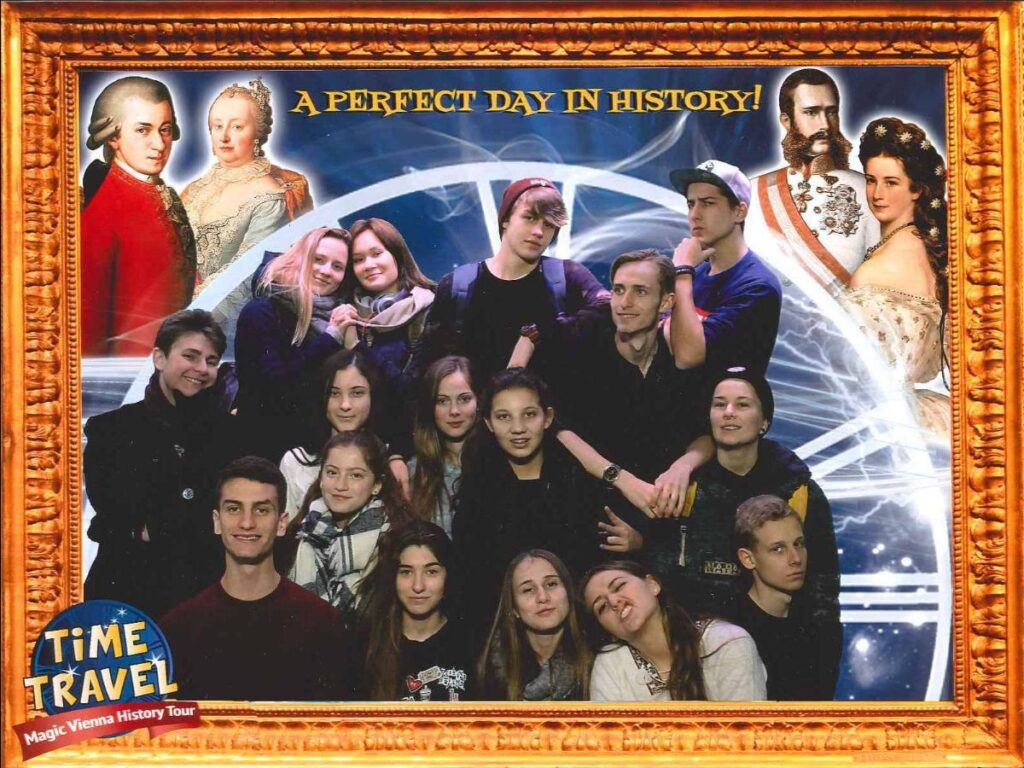

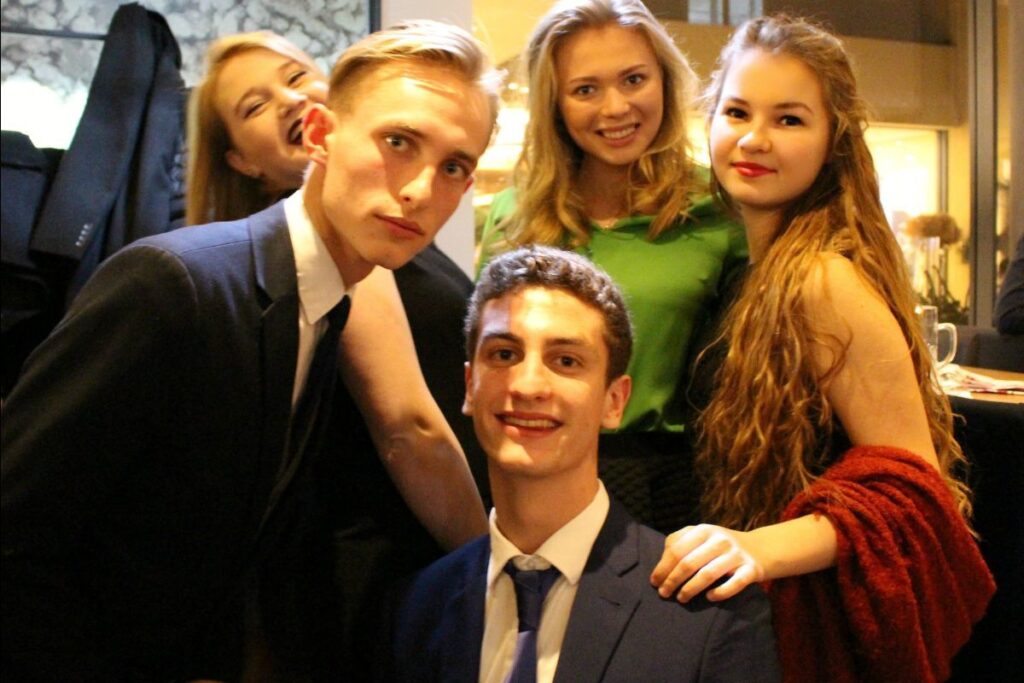
Photo: Alec integrated well into our community, befriending students all all cultures and backgrounds.
AIS-Salzburg: Do you have any advice for students at AIS-Salzburg or applicants to the school?
Alec Smith: My advice to students would be the following: Don’t dismiss what you learn as useless just because you can’t imagine yourself using it in the future. You are all comparatively young, and you cannot possibly know what will be useful to you later on in life. I failed Mr. Burns’ Algebra I and II twice simply because I did not care enough to imagine myself ever using it. But I use algebra every day without even realizing it. Finally, more crucial than anything else, be grateful for your time at AIS-Salzburg, capture every single moment and live it to its fullest potential. One day, it will only be a fleeting memory, a memory that you wish to relive with all your being. And if you live in room 16, don’t pop the screen out of the window, it sticks and is nearly impossible to get back in.
| Alec is planning to relocate to Europe for work in the next year. |
Recently, the 11th-grade Advanced Placement® precalculus and mathematics 11 classes worked on a cumulative graphing assignment that tasked them with re-creating an image using the graphs of different types of functions. The 2-week long project allowed students to apply hard-earned knowledge of parent functions and their transformations in a creative and artistic manner.
Students enjoyed the project so much, they provided the following feedback.
Dunya: “…creating a picture using a wide variety of graphs was a nice experience and I don’t regret spending about 20–25 hours as I truly enjoyed it. These 2 weeks were the best and the most productive I’ve ever spent doing [m]ath every single day.”
Diego: “While this is no easy assignment, I can assure you it is one of the most exciting and intriguing assignments I’ve had all my life. Using math to create an image of something I’m a fan of made me want to do it all the time. I was lying on my bed, and I was only doing this. It was a great experience, and to make it even better, it helped me significantly improve my knowledge of the topic.”
Petar: “After all, I am really proud of myself for completing this assignment. I am proud of myself for working on it every day, for putting really hard work into it. I learned a lot from it.”
Ola: “The graphing art assignment was so far the most interesting project I have ever done in a math class. Not only does this project require the basic, classroom knowledge of parent functions and their graphs, but it also helps the students explore the applications of different functions and master the skill of graphing them.”
Kateryna: “During this project, I began to understand what exactly I should add to the function so that I can get a needed result without trying to find it by spending a big amount of time changing different things and hoping to find what I need. Now I can clearly imagine what will happen to my graph as I change its function.”
Bohdan: “This assignment was something new and rather fresh than anything I have ever seen throughout my mathematical school life.”
Barbara: “Altogether I was really passionate about this project and I am going to miss working on it, even though some days it was really not fun to do. I am proud of my work and I hope that I have [fulfilled] all of the criteria. It was very exhausting sitting all that time on the project, but in the end, it was worth it.”
To view the completed projects of each student, click the corresponding links below.
Ola: desmos.com/calculator/7pmyn1g7fh
Barb: desmos.com/calculator/kcxczit7j2
Dunja: desmos.com/calculator/ddlmv6bqgr
Bohdan: desmos.com/calculator/5hief2beeh
Diego: desmos.com/calculator/pacaxrv38h
Jennet: desmos.com/calculator/kppl6scf88
Katja: desmos.com/calculator/88b859bbzk
Lars: desmos.com/calculator/nan87eq0eq
Nicholas: desmos.com/calculator/kyeh1xujqo
Niels: desmos.com/calculator/xrgfalyyhn
Noah: desmos.com/calculator/7fkeyeucah
Petar: desmos.com/calculator/nk8q3jg86e
Polina: desmos.com/calculator/nij1hznyn8
Teodora: desmos.com/calculator/ajxetwy8hg
Starting in 2021, the AIS-Salzburg resident staff began offering weekend overnight trips to destinations close enough to travel to within three or four hours. These overnight weekend trips provide a short and exciting break to local areas of beauty and interest and help fulfill our mission to introduce our students to the rich cultural heritage of central Europe.
So far this school year, students have enjoyed trips to Munich, Vienna, and Kärnten as part of the Weekend Travel Program. The most recent destination—which took place this past weekend from Saturday to Sunday—was Innsbruck, Austria. A total of 9 students and two chaperones drove two school vans just over two hours to Innsbruck and upon arrival spent some free time in the beautiful city center.

Photo: The historic old town of Innsbruck is surrounded by breathtaking Austrian Alps
Following some time in the city, the group visited the Bergisel Ski Jump—host of the 1964 and 1976 Olympics—where they were given a tour from a professional ski jumper.
“Kids loved hearing from the ski jumper,” said RA Ali Welch, who also organized the trip. “They learned all the details about the sport, from how it’s scored to the questions a jumper must consider before choosing which gate to start his jump.”
Adding to the experience was great weather, cumulating in a double rainbow with the panorama view of the city and mountains below.



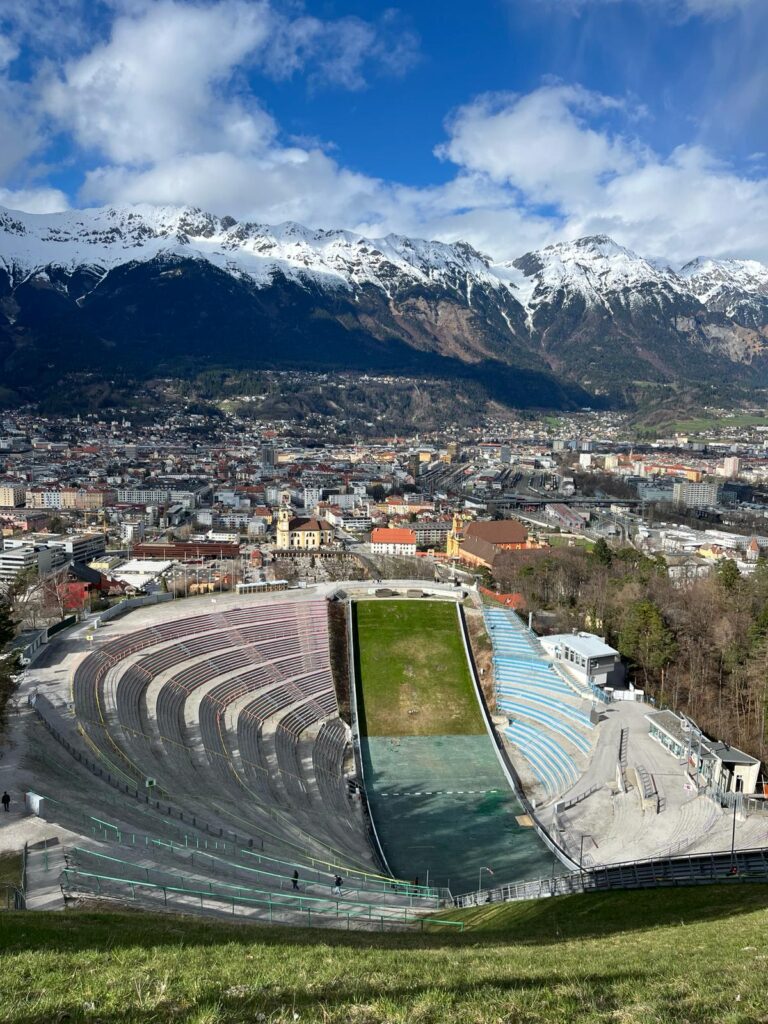
Photo: Students visit the Bergisel Ski Jump, host of the ’64 and ’76 Olympics.
After some further time in the city center including dinner at Mamma Mia Pizzeria, the group spent the evening at a 3D mini golf center.
“The 3D golf activity was a fun and new experience with students cheering each other on as they had to tackle creative obstacles in their way,” said Ali.



The next day, before starting the trip back to Salzburg, the group visited the famous Swarovski Kristallwelten, an experience attraction for the crystal glass manufacturer Swarovski, which consists of a park, art museum, retail area, and restaurant.
Ali said the students particularly enjoyed this experience. “It was interactive and exciting. They navigated the labyrinth, jumped on trampolines in the play house, and walked through the peaceful gardens.”
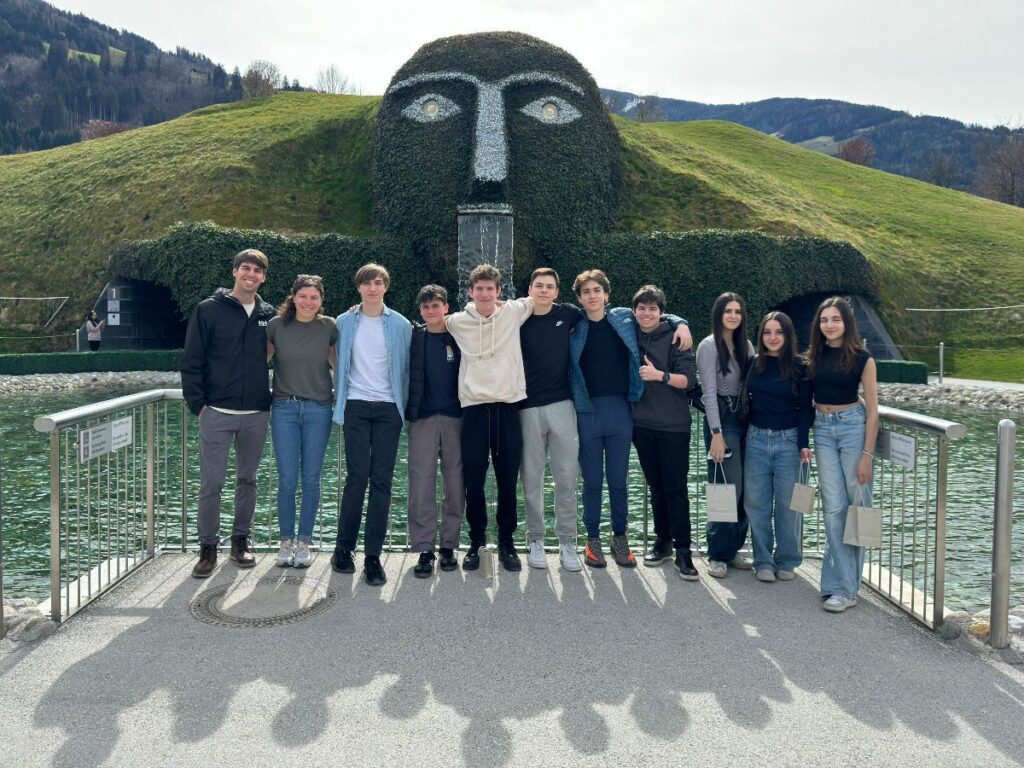



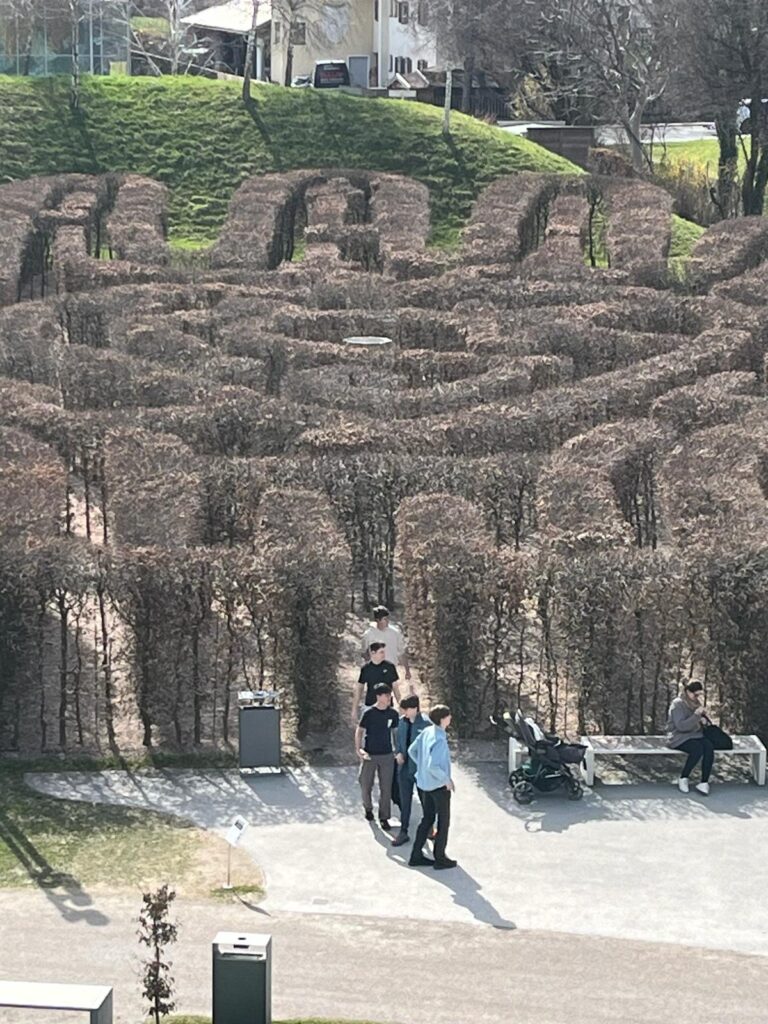
Another trip as part of the Weekend Travel Program came to a successful close with all reports that the small group of students were easygoing, on time, respectful, polite, and thankful, which made for a smooth and enjoyable experience.
In this video, we eavesdrop on a recent English 12 Humanities class in which they discuss material they learned from the textbook. In a common tactic to combat the use of ChatGPT to answer reading-related questions, Mr. McLean grades students on their ability to discuss the material and show their understanding of the topic. The topics discussed in the textbook were the aspects of the late Renaissance and early Reformation period that had a major impact on Western Culture arts and various disciplines of the humanities.
We invite you to watch the video below of the class discussion.
The AIS-Salzburg girls basketball team came together this past weekend to play their best basketball of the season at the right time, going 4-0 at the tournament and claiming their second basketball Jamboree championship in 3 years. To make the championship victory even sweeter, the girls defeated their season nemesis in the final game: the International Christian School of Vienna Eagles. The teams had two intense matches earlier this season which saw both go into overtime—one of which went into double overtime.
“In the last game against the Eagles, we showed incredible perseverance,” said team captain and tournament-leading scorer, Nastia B. “Despite being behind at half time, we managed to raise our energy level and push back.”

Photo: Despite receiving a lot of extra attention from opposing teams, Nastia B. still managed to lead the tournament in scoring with 56 points in 4 games.
Push back the Lions did, as Victoria “Scrappy” A. and Barb A. were assigned the task of double-teaming the star player #3 from the Eagles who was on fire in the first half. Chanti S. also deserves credit for shutting down #3, often replacing Scrappy to ensure full energy was always directed to the task.
“Number three came to play and everything she put up in the first half was going in,” said Coach Burns. “But once I put Scrappy and Barb on her, it was game over.”
In fact, #3 only scored 3 points in the second half, largely due to Scappy, who got her nickname early on this year for bringing a much-needed physical intensity to the team.
“I just want to say that this team has been one of the best teams and will always remain in my memory,” said Scrappy after the dramatic final game.

Photo: Number 4 from AIS-Salzburg, Victoria “Scrappy” A., keeps an eye on the top scorer from the ICSV Eagles.
The Lions’ defence as a whole was excellent, holding ICSV to zero points in the final quarter to secure the 26-22 victory and the championship. With Nastia B. defending the rim in a triangle with the other two defenders, the Eagles’ offence came to a screeching halt.
Coach Burns was ecstatic after the game: “I am so proud of how the girls came together as a team. There was good ball movement on offence, we minimized our turnovers, and our intensity and effort on defence in the final match were off the charts! Our team just wanted it more.”
“The girls were fierce and fabulous,” said Mrs. Kasberger, who cheered on both Lions’ teams on Saturday. “As for the boys, I don’t think I’ve seen them play as hard as they did the last two games – they should be proud of themselves.”


Photos: Ms. Baehler, Mr. Lichty, Ms. Cerone, and Mrs. Kasberger (top), cheer on the Lions. Leo the Lion (Yehor C.) and the girls’ basketball team (bottom) cheer on the boys’ team.
Unfortunately, the boys’ team was unable to find much chemistry in this final tournament. After losing the Friday opener to QSI Bratislava, followed by a close 18-21 loss to eventual champions, the Vienna International School, their hopes of making the trophy round were squashed. In their final two games, coaches DeWitt and Nuess played many of the younger players on the bench, who brought good energy, propelling the team to their first win over Danube International School, 28-21.


“The boys have improved a lot throughout the whole season,” said a disappointed Coach DeWitt after the tournament. “We have a tremendous amount of talent at the school. If we can learn to keep our emotions under control, we are going to have a lot of success.”
Despite not achieving their goal of winning the tournament, the boys supported the girls’ team in their final match vs. ICSV as they cheered relentlessly throughout the match.
“I have not seen our boys’ team support the girls’ team that enthusiastically in my 20 years coming to this tournament,” said Mrs. Kasberger of the community spirit exhibited by the boys’ team.
Congratulations to Nastia B. and Milo B. for being voted to the all-tournament teams by the coaches and players of the tournament.
As we turn the page on the Winter Trimester, we are pleased to announce that 44 of our students successfully fulfilled the academic, community service, enrollment, and behavioral qualifications for the honors of distinguished students or senior scholars as outlined in the AIS-Salzburg Student and Parent Handbook. We invite you to watch the slideshow below honoring those students who have been recognized.
A remarkable 62 students made the Honor Roll at the conclusion of the Winter Trimester, including 26 students who achieved ‘High Honors’ status —all A’s and no more than one B. We invite you to watch the following slideshow of those students who made the Winter Trimester 2023 Honor Roll.
This past Thursday, the AIS-Salzburg Winter Trimester Awards Dinner and Ceremony was held at the Sternbräu restaurant, where many students were recognized for outstanding academic success as well as engagement in athletics throughout the winter term.
Following dinner and dessert, the boys’ and girls’ basketball teams were recognized for their accomplishments thus far this season before Mr. McLean recognized distinguished students, senior scholars, and honor roll students.
We invite you to view some of the photos below from the event.
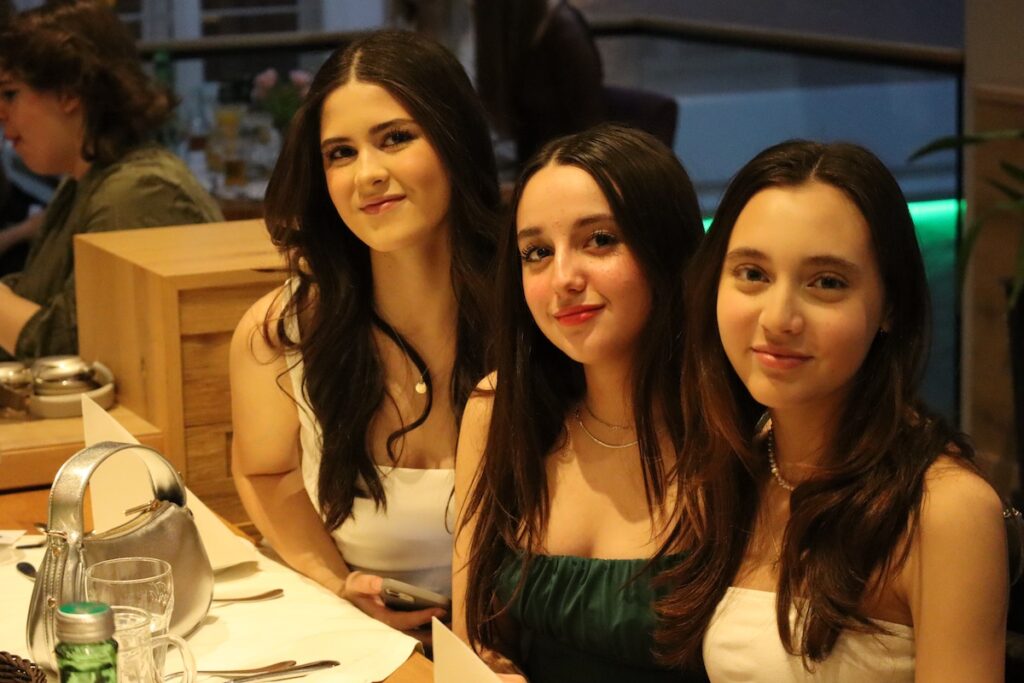
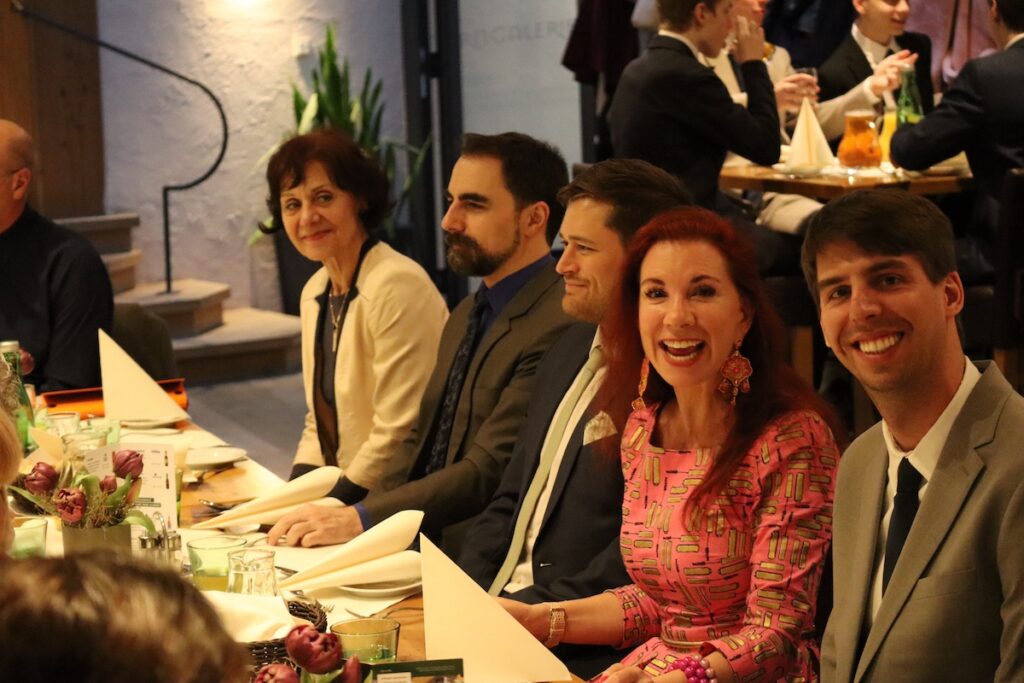
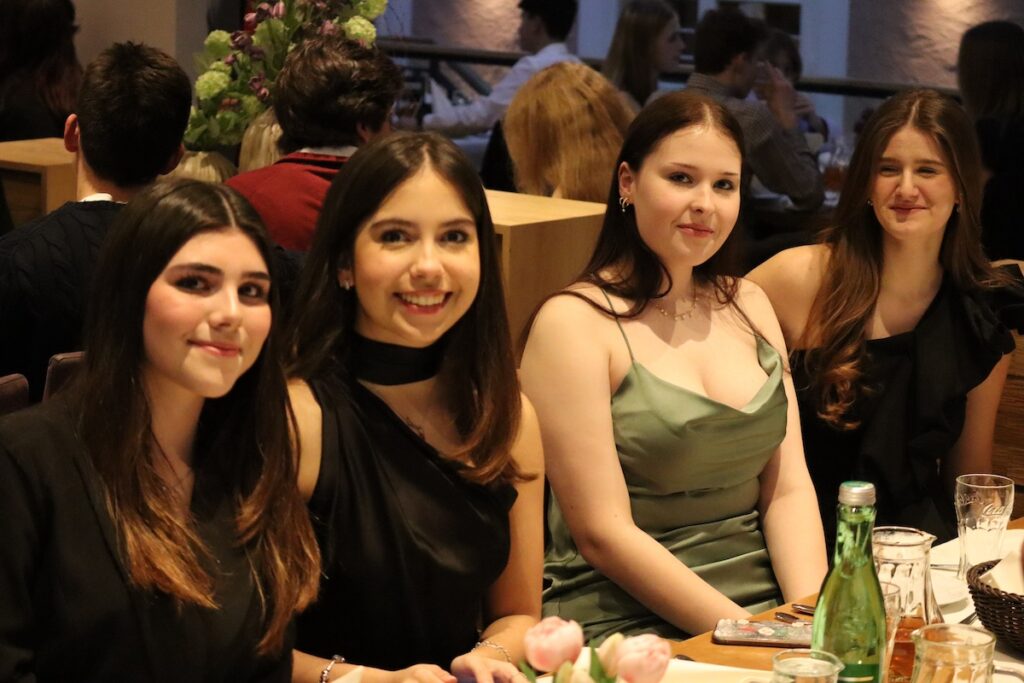

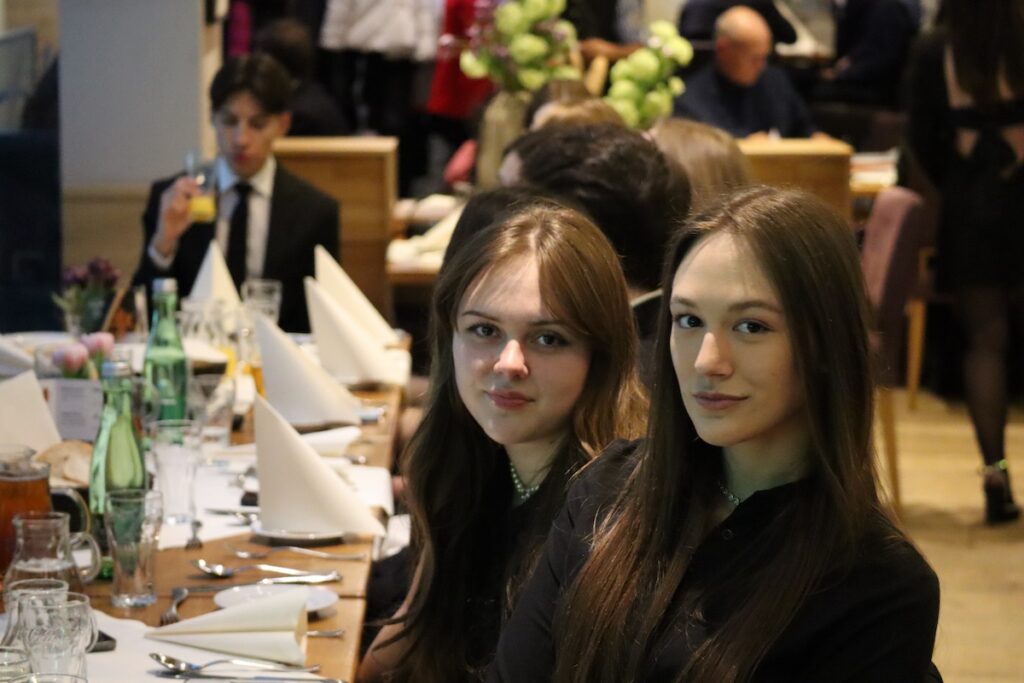
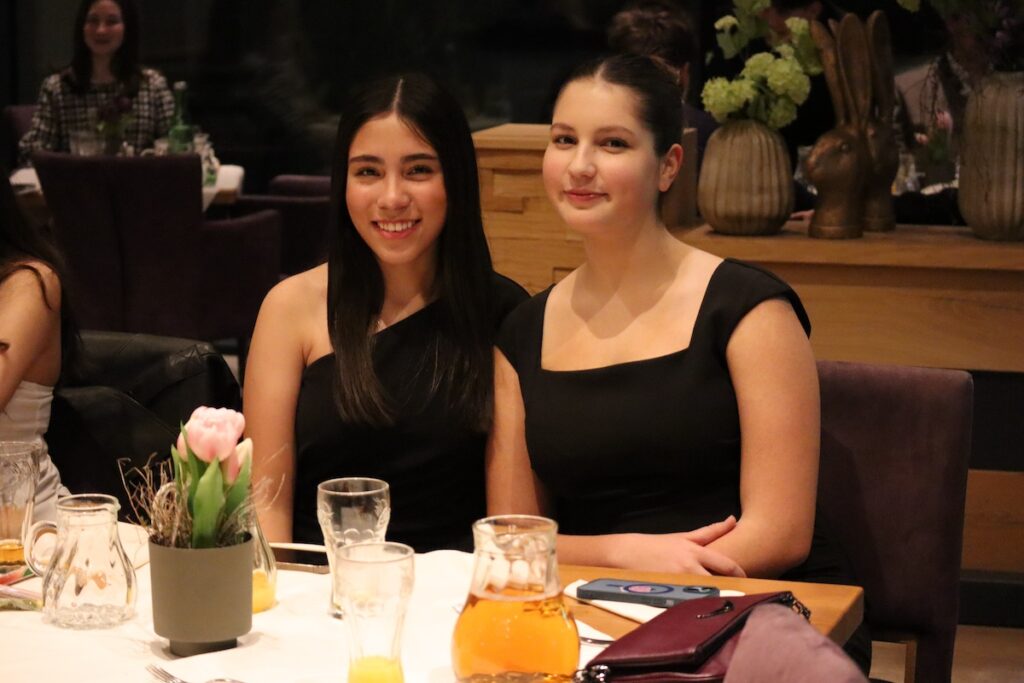
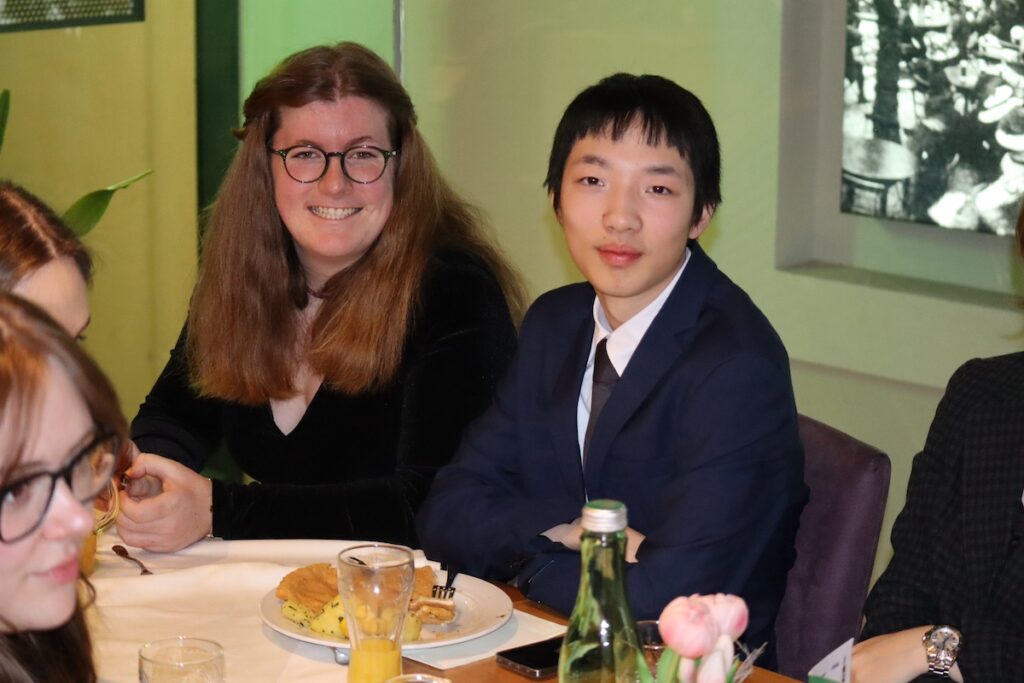
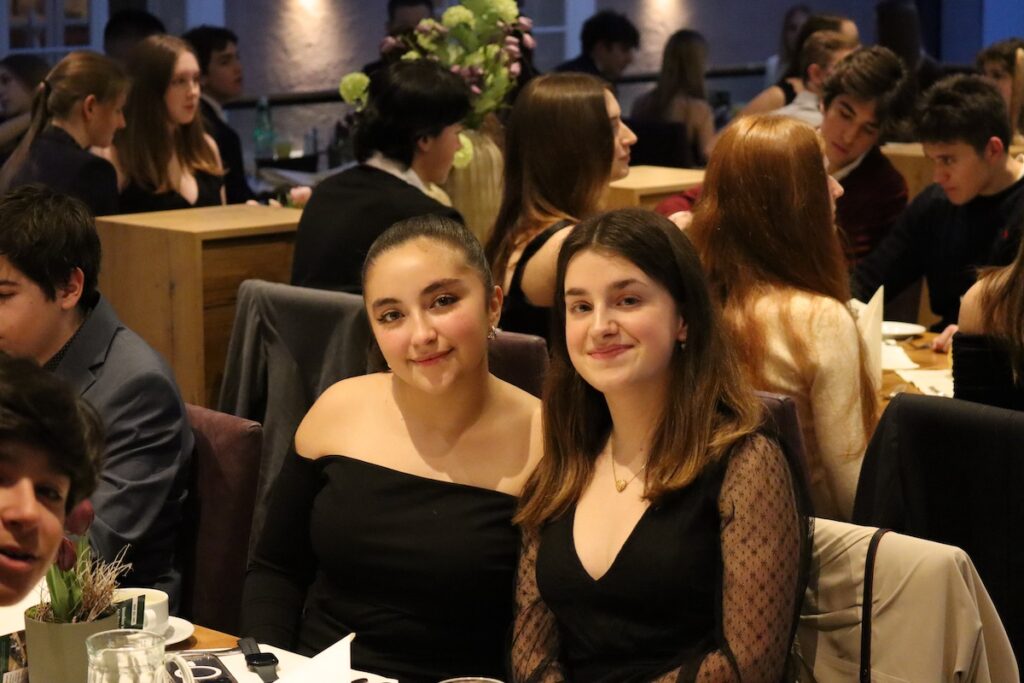
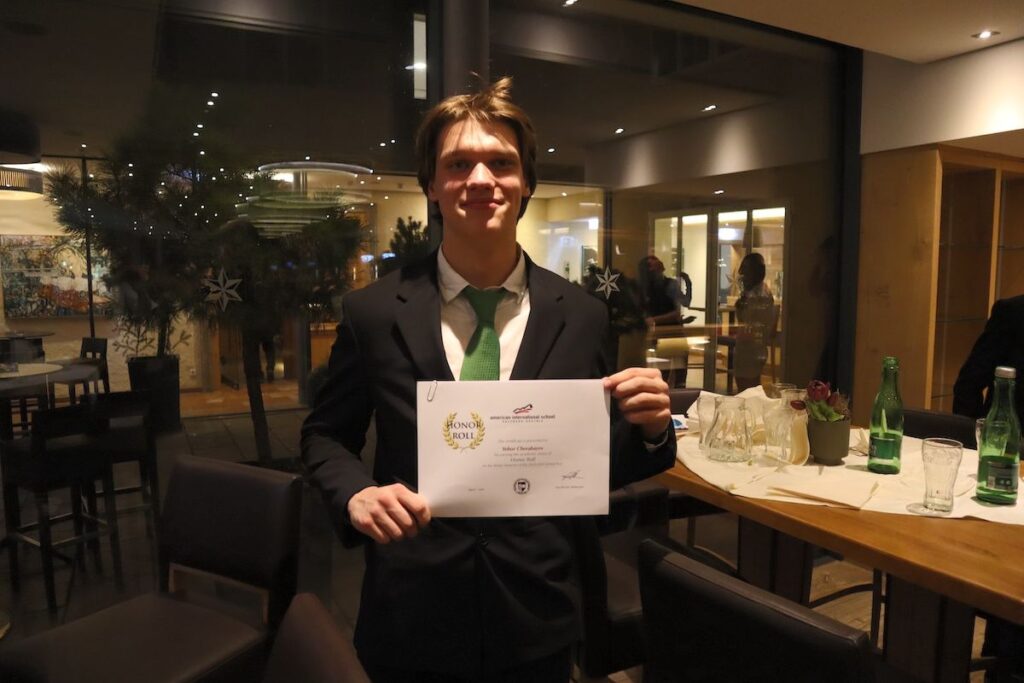
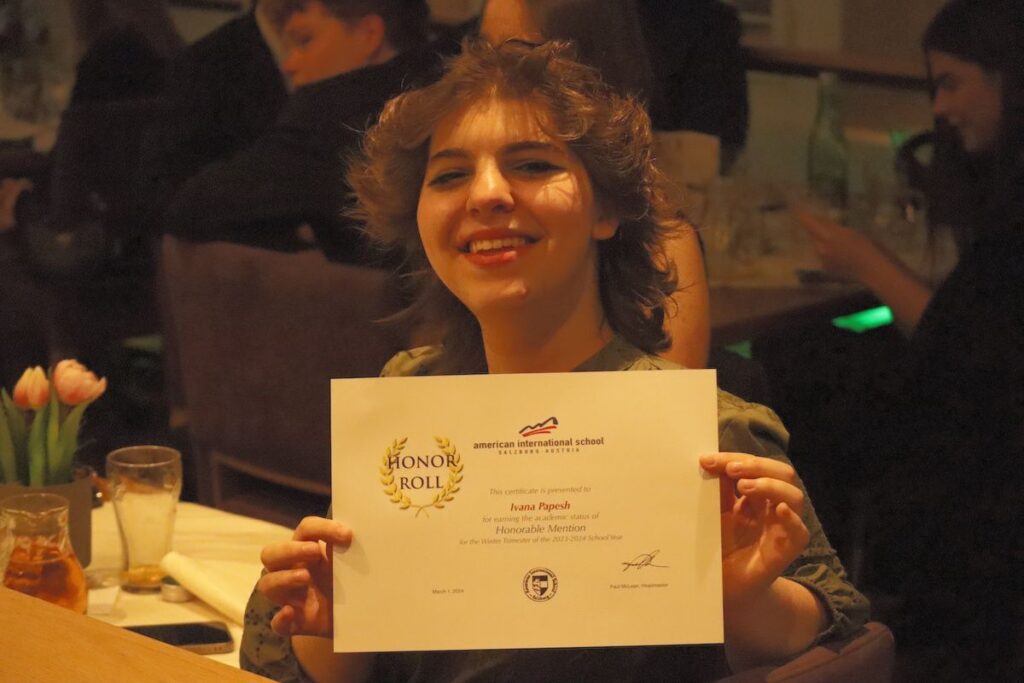


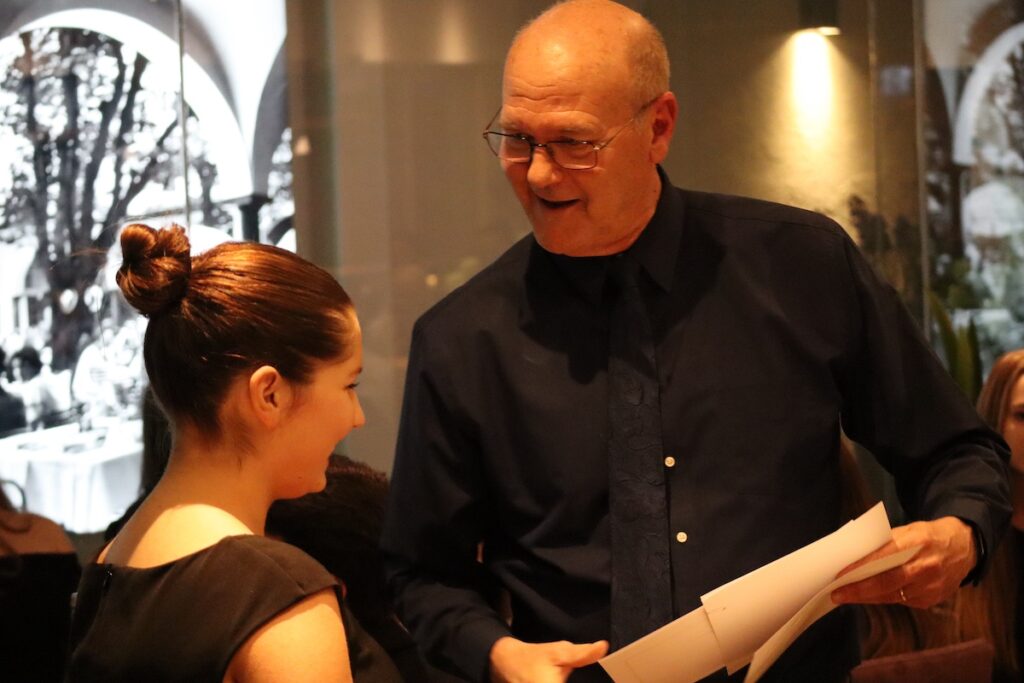
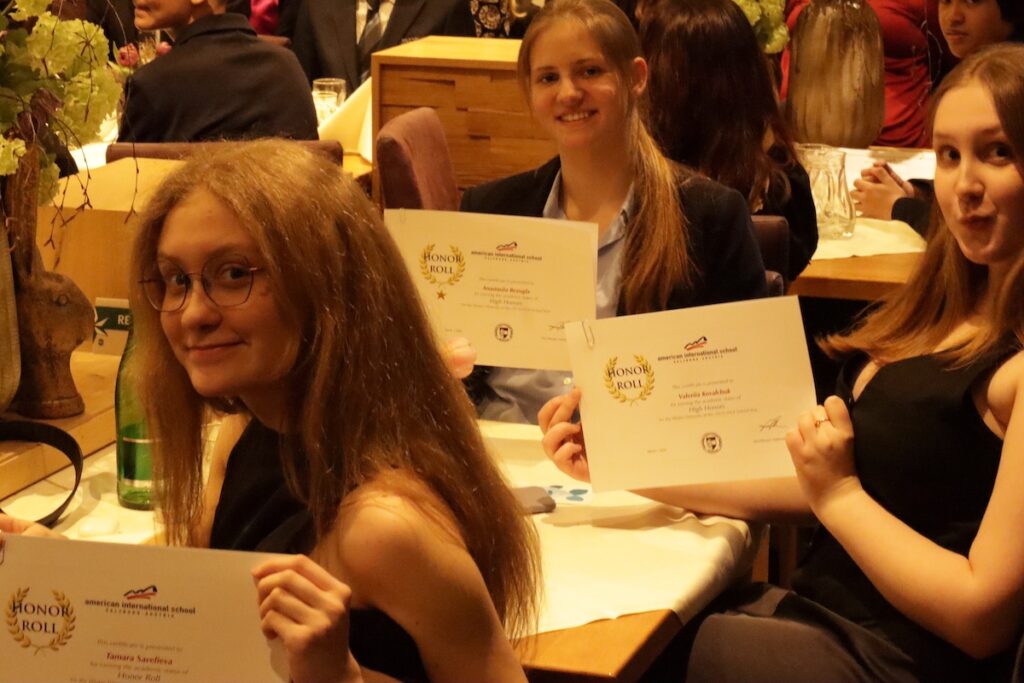

Another mild February brought bleak predictions about winter sports in the days leading up to the Winter Excursion in Zell am See from February 23rd to 25th. However, the ski and snowboard gods answered our prayers with a major deposit of new snow on Friday the 23rd, following two consecutive days of sun.
We invite you to watch the highlight video below—put together by Mr. Burns and his omnipresent drone—and read the Winter Excursion summary by Mr. Fox, following the video.
By dorm parent and winter excursion co-coordinator, Kevin Fox
When Hollywood makes movies depicting a particular time in US history they often write in certain characters or features to help us remember that particular era. Movies about the 1950s have girls wearing poodle skirts and guys with slicked-back hair. Movies about the 1980s have neon clothing and big teased hair. Often when a movie is made about the early part of the 20th century you’ll find a paperboy—the age of one of our junior high or early high school students—selling papers on a corner and yelling the headlines. Upon reflection today, I think that the Winter Excursion 2024 can be summed up by a series of headlines as they would be called out by a paperboy on a street corner in early 20th century America.
EXTRA EXTRA: WINTER RETURNS TO AUSTRIA JUST IN TIME FOR EXCURSION
Although much of the past few weeks has felt more like spring than the calendar would indicate, winter came roaring back the end of last week which fueled 3 days of wonderful skiing. Friday, our first day, started with rain in the parking lot which quickly turned to snow as we rode the lifts. Skiing on top of Schmitten ski area above Zell am See was an exciting experience to say the least. Constant heavy snow showers and strong winds reduced visibility and chilled students, in some cases, all the way to the bone. For those who braved the elements, the snow was cold and light and would fill in your tracks run after run. For many there were more hours spent hiding inside restaurants rather than fighting the weather. But for others, the reward of venturing down the slopes was great.
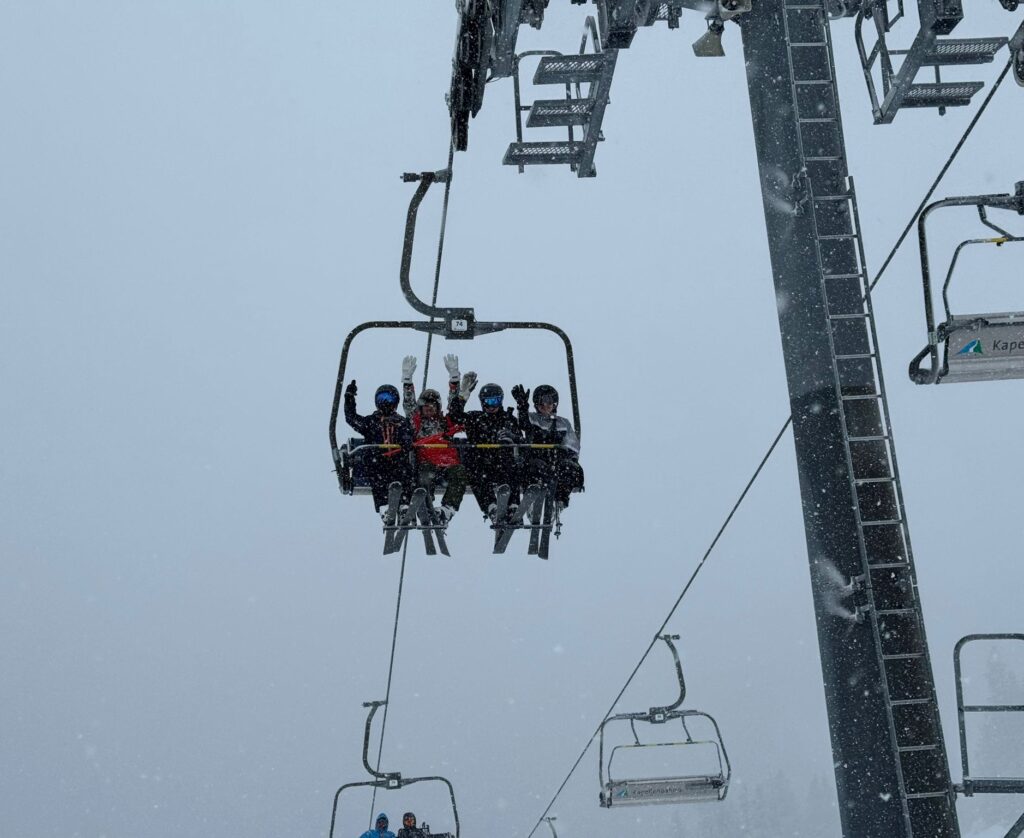
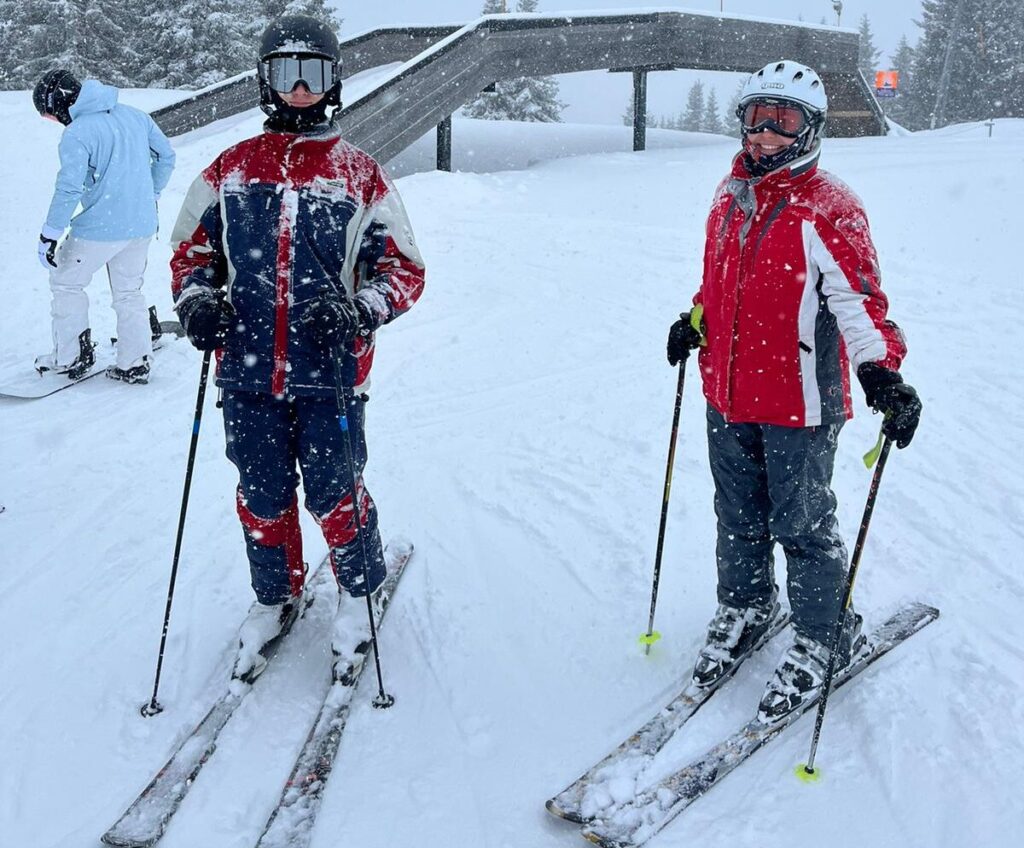
Saturday we returned to Schmitten with weather almost as opposite from the previous day as you could find. We found clear blue sunny skies and zero wind. For lovers of fresh snow, this is the day that you dream of. Students skied the variety of runs from top to bottom and enjoyed the incredible views over the lake and nearby mountains. For our last day of skiing on Sunday, we were driven by our bus to nearby Kitzsteinhorn. Here we found another sunny day with beautiful skies. Kitzsteinhorn is the highest elevation ski area in all of Salzburgerland with elevations up to 3000m and a glacier forming much of the upper skiing terrain. Here students found cold fresh snow (almost 1 meter fell here on friday!), a variety of runs, glacial caves, and terrain park features. Many students commented on this being the best day of skiing for the entire trip. Over the three days of the excursion students skied with their friends, in the Austrian alps, and there were no significant injuries to speak of !!
Big celebrations here go to everyone but especially to our new skiers and snowboarders. At the beginning of January, Vlad, Sofia H., and Alejandro were completely new skiers and Eva B. and Marybel were new snowboarders. With just 4 days of instruction, these 6 were able to learn the skills required to navigate not just the beginner slopes, but also more advanced terrain safely with their friends. Quite an accomplishment!
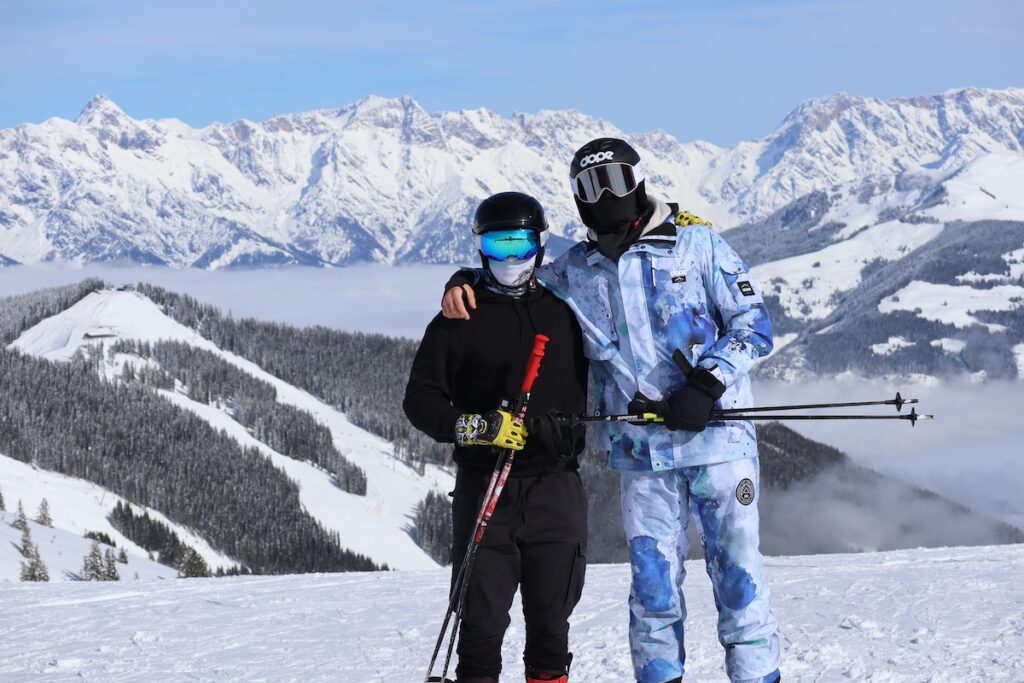
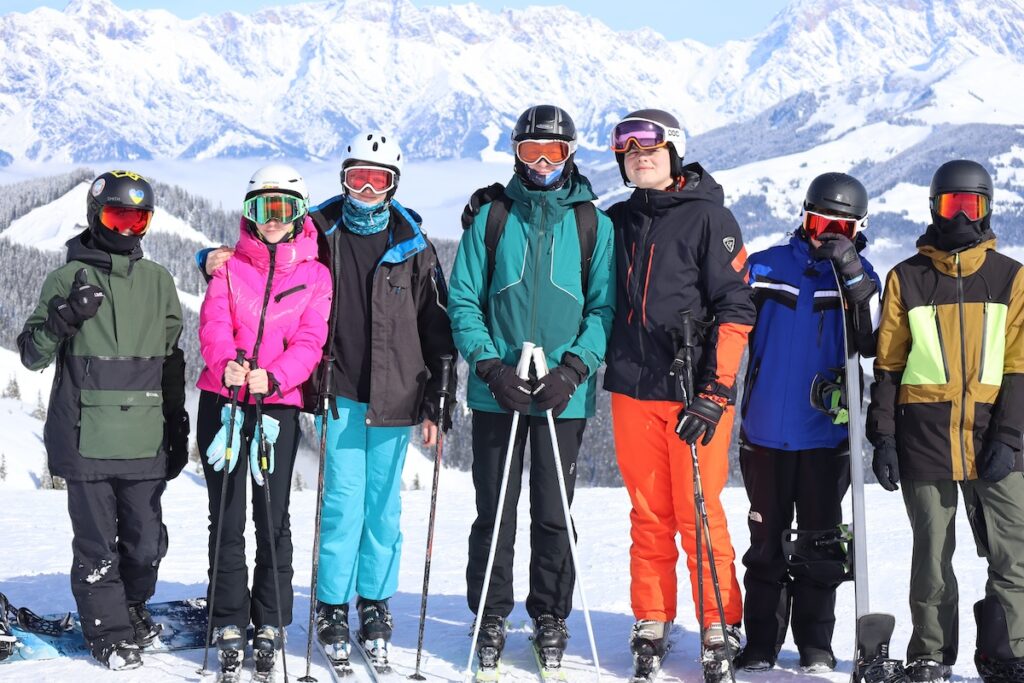
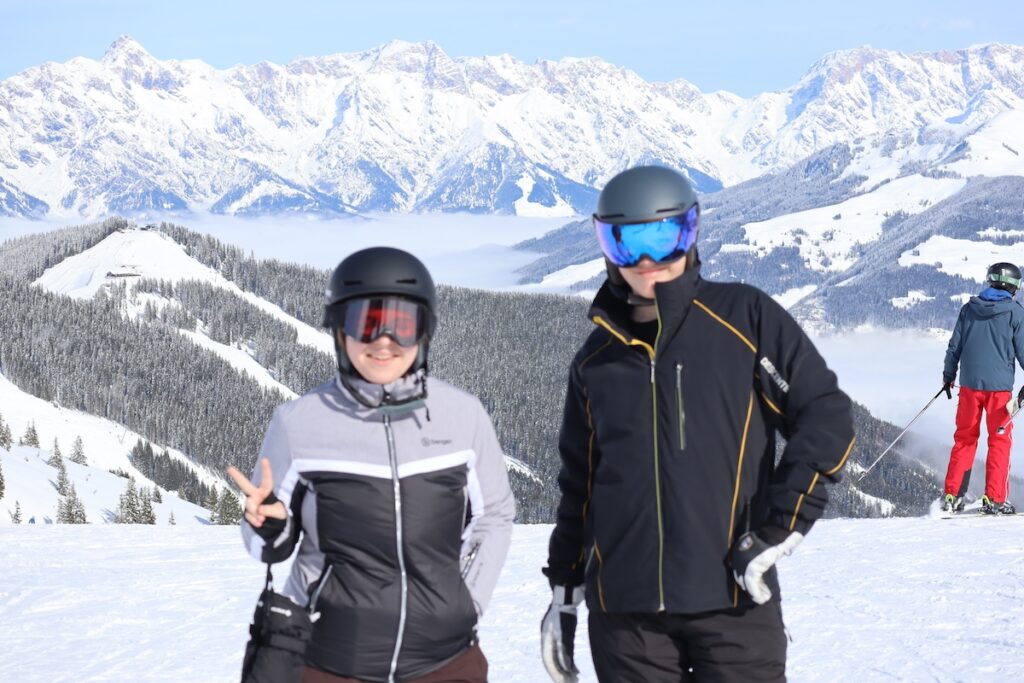
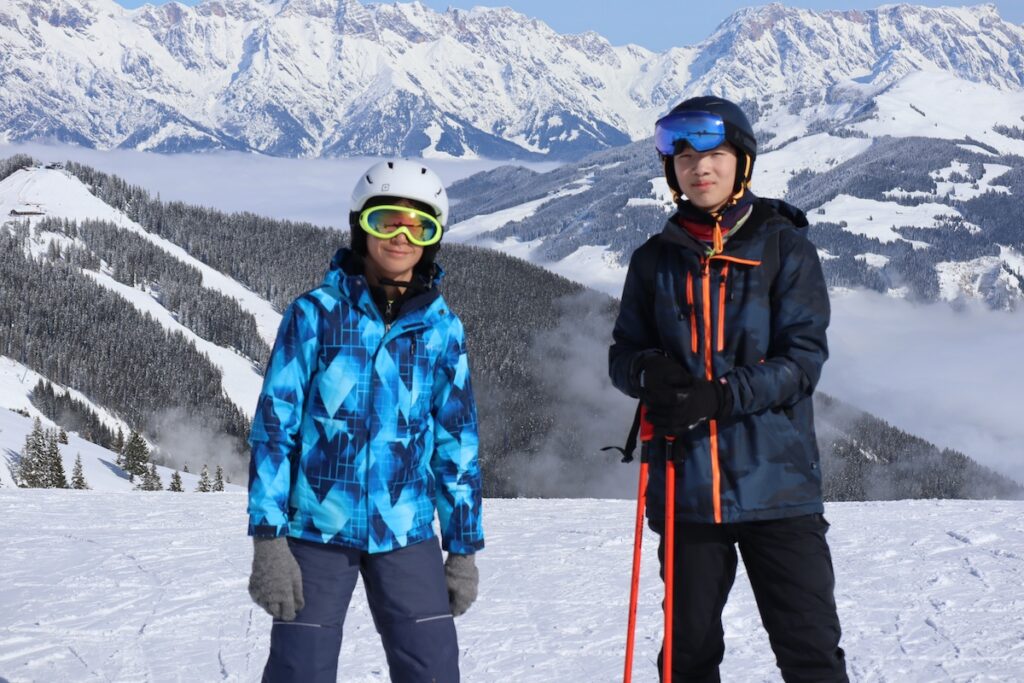
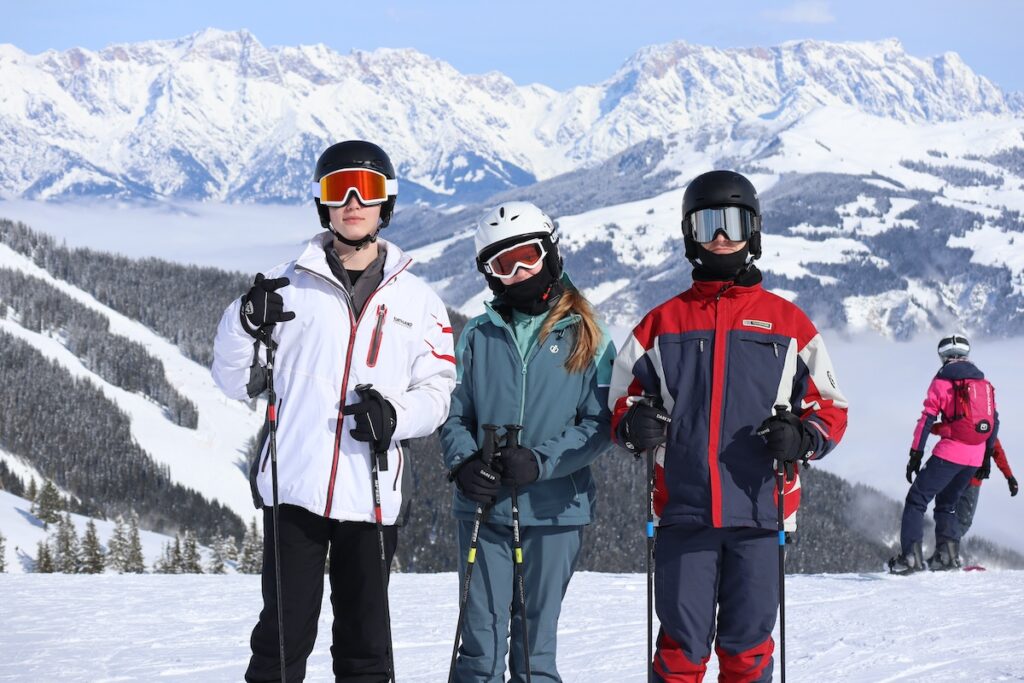
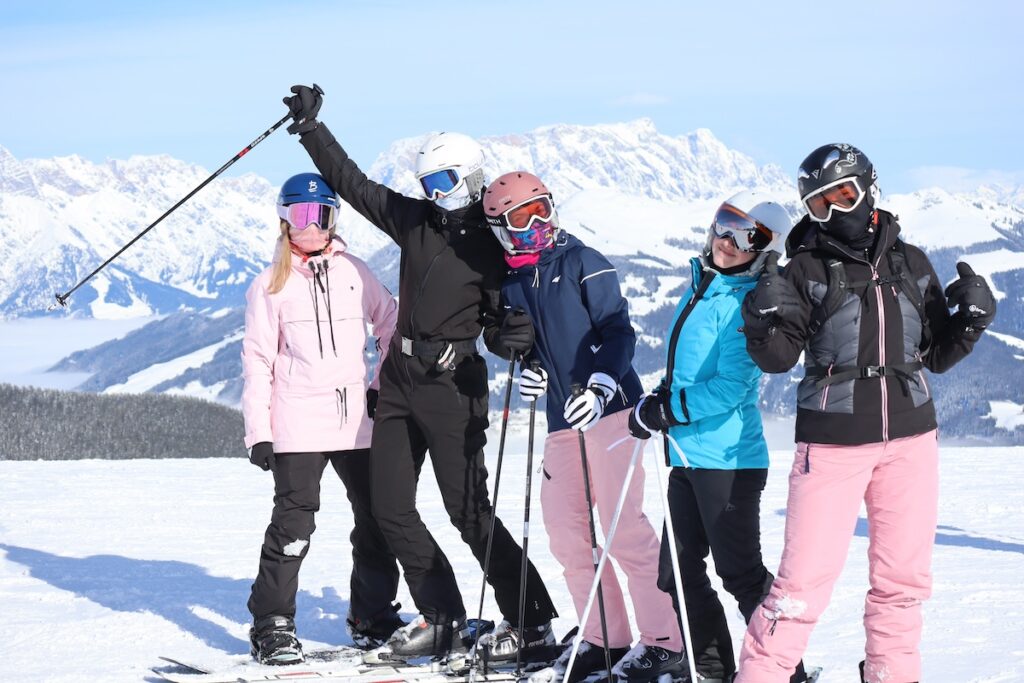
EXTRA EXTRA: STUDENTS CHOOSE SPORTS INSTEAD OF STARING AT THEIR PHONES
For the third year in a row, we stayed at the Jugendclub Kitzsteinhorn in Zell am See. This location works out very well for a number of reasons. First off, it is only about a 5-minute walk from one of the main ski lifts that service the Schmitten ski area. This means we do not have to load everybody up on a bus to go to and from our desired ski area. It also allows us some flexibility as to when we return. A second great feature are clean rooms, good food, and a friendly group of employees. The third great feature, and one of the main advantages, are the sports facilities that we are able to use at night. Over two nights students were able to play indoor football, basketball, indoor beach volleyball, go rock climbing, use trampolines, and watch a movie in the on-site cinema. It’s fun to see the different ages and friend groups of students come together to play pick up sports in the evening after a day of skiing.
Shout outs here go to: Diego for helping to organize a game of football which was inclusive to all levels of players. Barbara A. and Marija for keeping the flow and good times running on the volleyball courts. Erno, Lars, and Laura B. for showing off impressive skills on the trampolines.
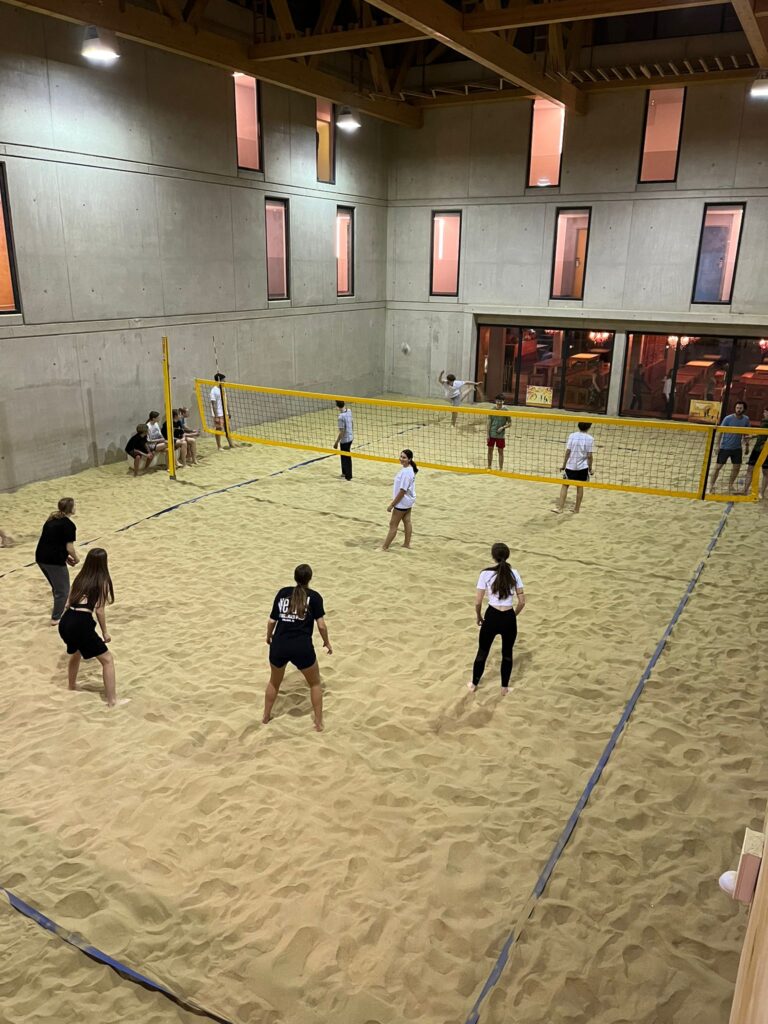
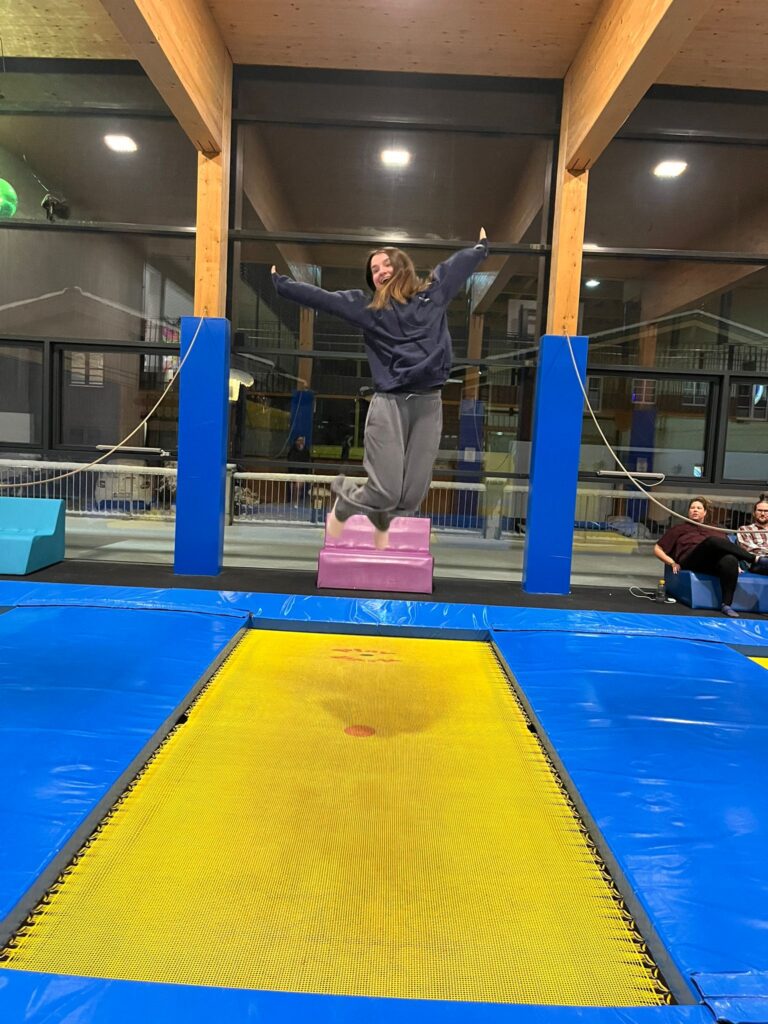
EXTRA EXTRA: RESIDENT STAFF TAKES WHOLE SCHOOL OF SICK KIDS SKIING
While it is probably true that not everyone on the ski trip was sick, at some times it sure did feel like it. Any time we were together as a group the cacophony of coughs, sneezes, sniffles, and groans was clear. Frequent administration of anti-inflammatories, cold tables, and throat lozenges kept the RA’s occupied. Upon looking at my email inbox this morning, I am amazed that more students were not out sick today. Fortunately, illness didn’t stop a good time and many of the sick kids rose to the moment, washed ibuprofen down with a spoonful of cough medicine, and headed up the lifts. Special mention for grit here goes to Milan, Barbara A., Milla , and Petar for going skiing when they were not feeling 100%. A shout out also goes to Artur who was so looking forward to the excursion but found himself too sick to ski, even spending a whole day sleeping in the hotel. Despite the setback, he kept a positive attitude for what I’m sure were three long days for him.
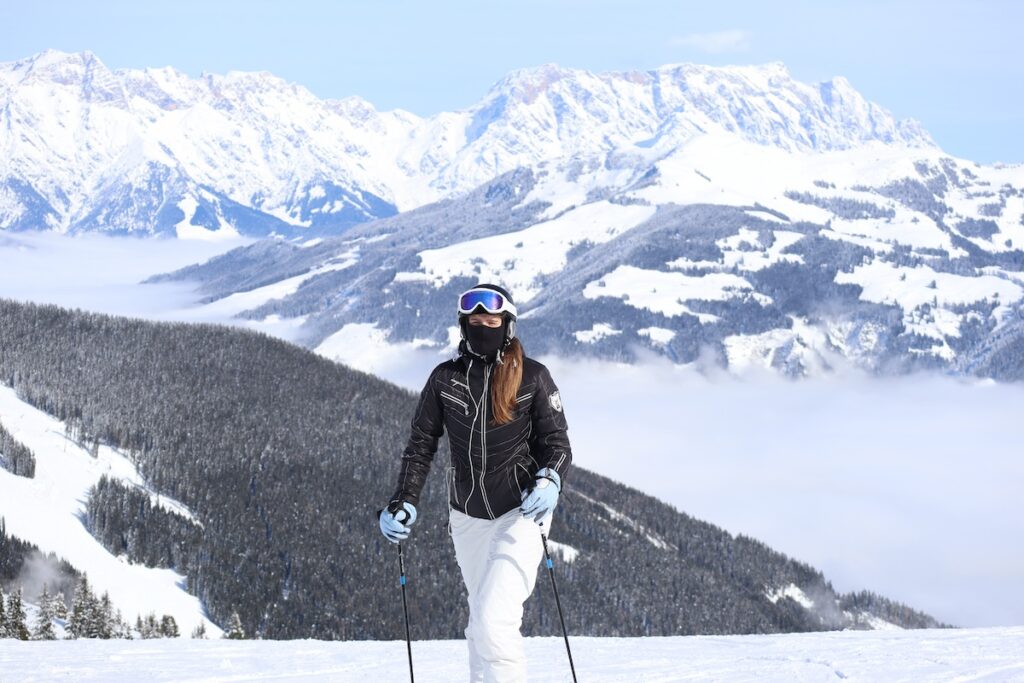

EXTRA EXTRA: NON-SKIERS ATTEMPT TO KILL THE VIBE OF EXCURSION CHAPERONES
With no alternative option this year during the winter excursion due to injuries or lack of travel options, there were a small number of non-skiers that went along with the larger group. They participated in the evening activities with the other students but their days were punctuated with fewer activities. One day they went to the nearby Tauren Therme which contains numerous indoor and outdoor pools, waterfalls, and waterslides (1 of 6 students chose to get in the water). Another day they rode a series of lifts up Kitzsteinhorn to ‘The Top of Salzburg’. Here, at 3000m above sea level, an observation platform hangs over glaciers with views of the Alps south into Italy (They were there 30 seconds before a “can we go now?” was uttered). With 2 trips to McDonalds in 3 days under their belts, the non-skiers headed home on Sunday afternoon a little before the rest of the group. Despite their best efforts to sour the experience, their only casualty was Ms. Fox, the staff member who spent the most time with them.
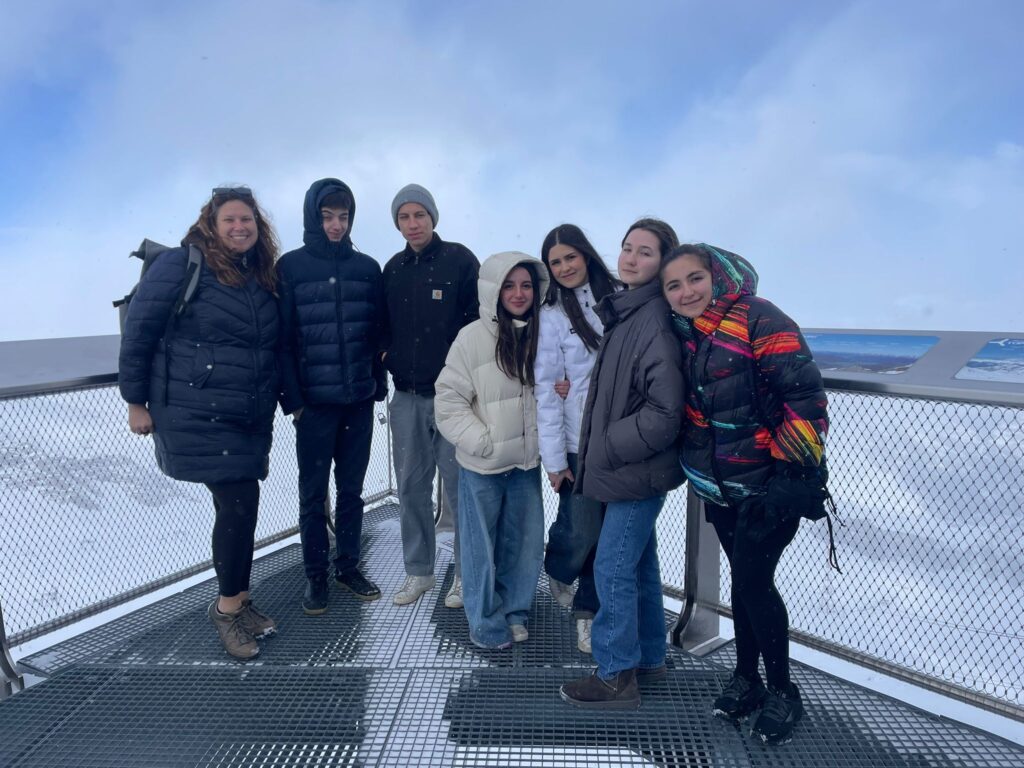
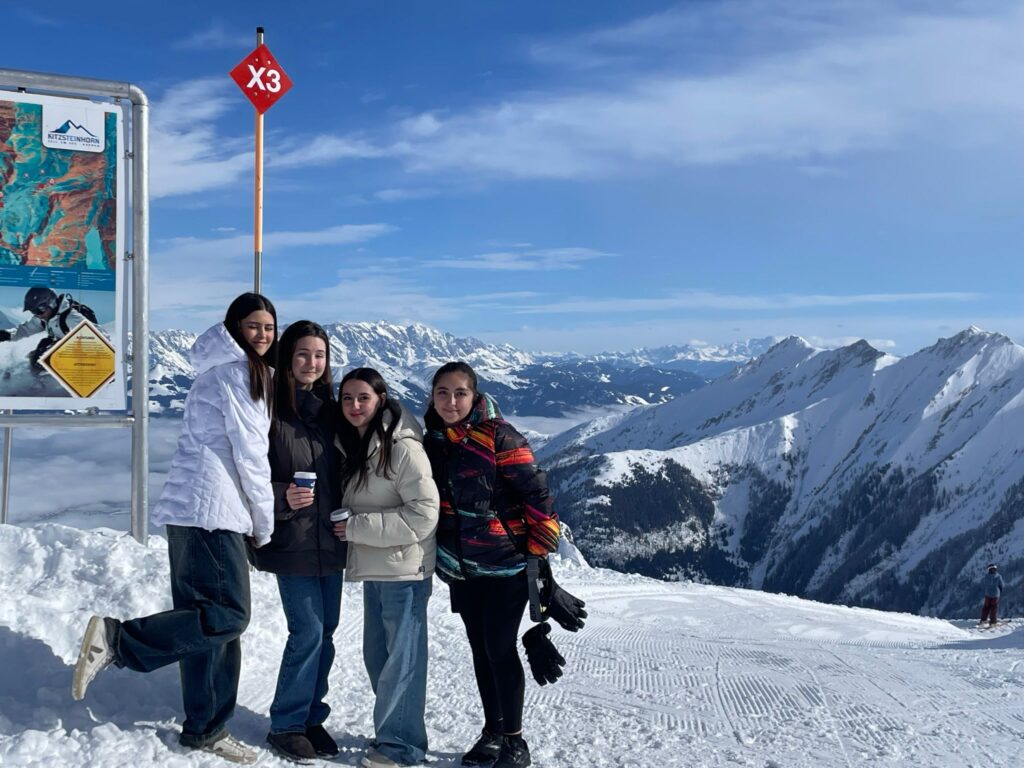
All-in-all, it was another wonderful excursion is in the books. It’s hard to single out any more students because almost everyone was an excellent member of our 61 student group in one way or another. These excursions wouldn’t happen at all without the hard work of the resident staff team. Big thanks to Laura, Abby, Ali, Arabella, Matt, Nick, and Tom Henry for all their hard work on this one!
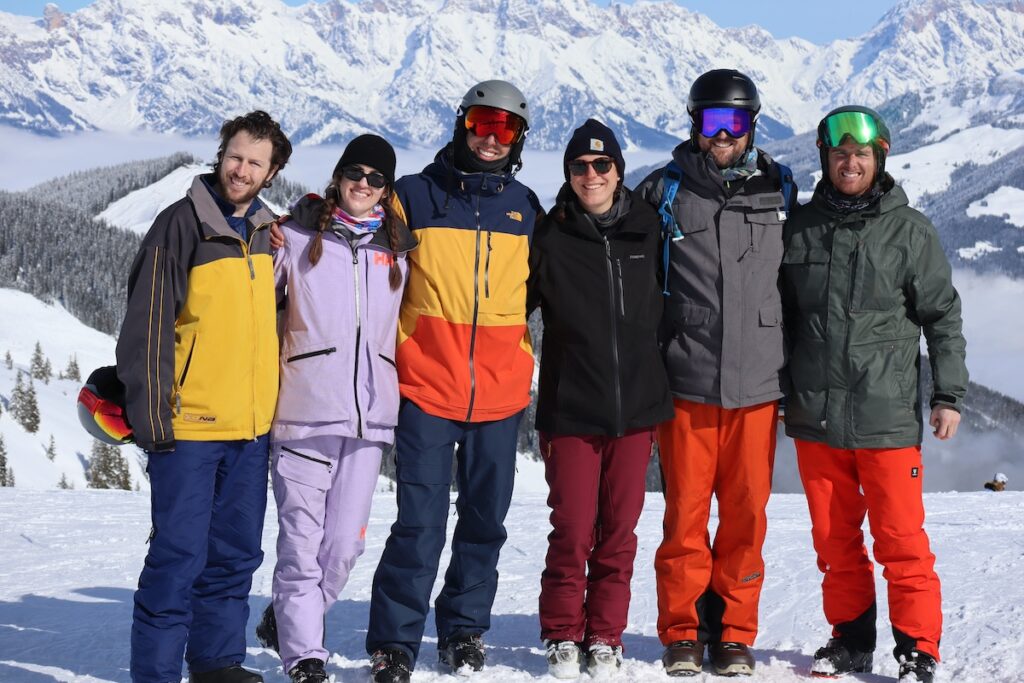
Laura Fox joined AIS-Salzburg in the fall of 2021 as the new Dean of Students and now, after two and a half years on the job, we check in to see how the job is going. A native of Chicago, Laura has worked in education for over a decade—much of it at a boarding school and in the classroom. In this interview, she talks about the transition from teaching to her new role, what her new role entails, how it differs from a traditional Dean of Students role, and what she enjoys most about the job.
For the second year in a row, the AIS-Salzburg Journalism Elective is taught by resident assistant Ali Welch, a New Jersey native who holds a Masters of Education from Harvard Graduate School.
The class of Yegor C., Vladyslav M, Jennet B., and Joshua F. meet for two hours a week and start each new newsletter cycle with a feedback session where they review the latest publication and discuss what went well, what was missing, and what could have been done better. This is summarized in a Keep/Change/Add table that they use when brainstorming the next newsletter.
The class then looks at the next newsletter publication deadline and works backward to think about what stories will still be relevant: usually, the monthly publication happens 3-4 weeks after the initial article brainstorming session. Students then choose the article topic they’d like to write and begin writing an outline that details their main purpose or argument of the article, a quote from an outside source (either online or through an interview), and the general flow of their article with a “hook” to catch the readers’ attention, the main body, and a conclusion to summarize why readers should care about this topic.
“I think the students enjoy the fact that it is such a collaborative process and they’re able to build off each other’s ideas in class,” said Ali when asked how the students are enjoying the class. “Everyone is always willing to help each other, whether someone is experiencing writer’s block or can’t figure out how to make an article fit into a specific layout on the page. I think it’s hard to constantly think of new content that they will be excited to write about, but they’ve done an excellent job finding something that fits their curiosities each month.”
After submitting their outlines, Ali provides feedback before students write their first draft. Each student reads at least one other student’s draft of the article and provides feedback in both written and verbal form to help authors shape the article into something engaging and relevant to its audience. Students then create a second draft, integrating the feedback from peers and from Ali, to make something close to the final product. At this stage, students get another round of feedback—usually consisting of small edits for grammar, punctuation, and spelling—before they paste their article into the Canva (design program) template.

| This is where they can choose which photos they’d like to include, of which at least one photo for their article they must take themselves. Students create the design for their article within the Canva template by choosing where to put the photos, captions, text, and any additional graphics they select from Canva’s vast library. Once all articles are pasted in Canva, students must read and review each other’s articles. Students are graded based on their collaboration in the editing process so they are expected to help with the layout of the entire newsletter, making sure text and photos are aligned, within margins, and uniform across the three to four pages. Once they finish this final step, Ali then combs over the newsletter for any missed errors or final edits, followed by printing some hard copies for readers to enjoy while Mr. Burns posts it on the website and Instagram! |
| Ali is quite impressed with the continued growth of the students through the first four publications. “The students have come a long way since the beginning of the year as shown by the feedback I gave them on their first outlines to their outlines now. Since they are comfortable with the process and have found an easy routine to follow, I can now expect more from their work to make articles more engaging. For example, students are now required to use at least one outside quote, requiring them to do more research and preparation before writing. They’ve also learned various writing techniques for integrating quotes and changing sentence structure to make their articles smoother and more polished.” Despite the progress, the second half of the school year will prove to be the most challenging for the Journalism class according to Ali. “As we look ahead, we will have a busy end of the year keeping up with publishing one newsletter a month and working on creating this year’s yearbook!” The student newsletter is accessible to anyone interested at: https://www.ais-salzburg.at/student-newsletter/ |
At midterm each trimester, we take a moment to review the first half of the term and recognize those students who have successfully fulfilled the academic, community service, enrollment, and behavioral expectations as outlined in the AIS-Salzburg Student and Parent Handbook.
We invite you to watch the slideshow below of all students who qualified at the Winter Trimester Mid-Term.
|
|
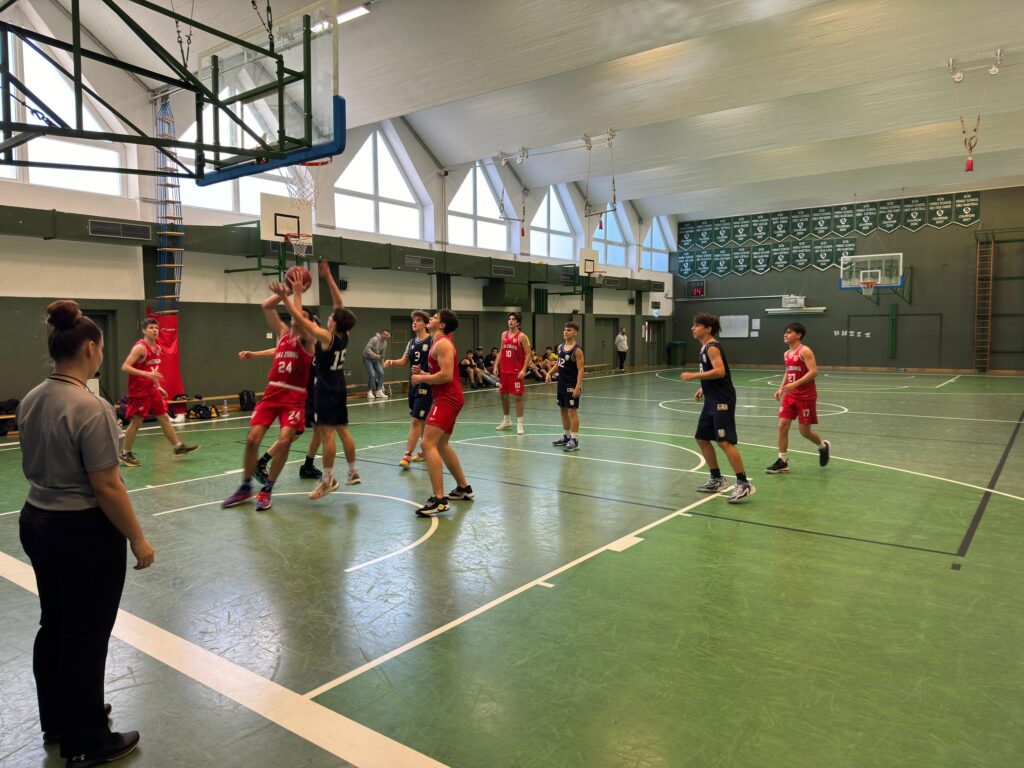
Photo: Senior player, Milo B., puts back a rebound during the DVAC Junior Varsity Basketball Festival in Vienna on January 27th, 2024.
The third and final game against the Budapest British International School was much of the same, with the Lions trusting each other and playing as a team.
Coach Nuess was even more impressed with game three.
“Each game we progressed a little more. Game three was even better team basketball, with more passes and more cuts, more setting up teammates so they can score. It worked really nicely.”
Ernö V. continued to grow in confidence and was again a standout in game three on both ends of the court.
“He was scoring like crazy,” said Coach Nuess of Ernö. “Everything was going in, some circus shots too. Then he would get back on defense and lock down defensively.”
In fact, like Diego in game 2, Ernö was assigned the task of defending the opponent’s top scorer in game 3 and also executed his assignment.
Senior player, Milo B., was a dominant player on both ends of the court throughout the weekend for the Lions, especially when he started using his teammates more in games 2 and 3 to set up some nice given-and-go plays.
Overall, Coach Huess was very pleased with their showing at the festival.
“It was a good weekend. The boys were good, the attitudes good, they all got along. It was good.”

Photo: Diego O. and Milo B. connect on a give-and-go.
The girls’ basketball team also finished with 2 wins and one loss at the DVAC festival. Minus several long-term Lions players in Chanti S. Jade R. and Nikol I., as well as newcomer and point guard, Victoria A., the inexperienced Lions were a good fit for the junior varsity level with six of 10 girls completely new to the game of basketball.
“This was the perfect opportunity for our newcomers to get their feet wet and gain some confidence,” said coach David Burns after the event. “Jennet, Lera, Toma, Liza P., Natalija, and Liza K. had a ton of playing time and all improved in leaps and bounds.”
The girls’ team also had a tough welcome to the festival as they faced off against the host British International School Bratislava in their first match on Saturday morning, a team that most likely should have been at the varsity festival. The Lions came out with full intensity and competed well with the much more experienced opponent, managing to keep the score at a tie after the first quarter and only down by 4 points at the half.
“It was one of those coaching moments where you get goosebumps,” said Burns. “The girls played shut-down defense and played as a team.”

Photo: The girls’ basketball team pose for a photo in Bratislava.
The Lions eventually lost 23-13, as Nastia B., Barb A., and Marybel A.—who shouldered much of the ball possession and offensive responsibility—began to run out of gas in the second half after playing almost every minute of the game.
In their final two matches, the Lions were up against two schools with similar experience in the American International Schools of Budapest and Vienna. With newly gained confidence after a strong showing in game one, the Lions dominated both matches 23-9 and 33-7 behind strong play on both ends of the court from Nastia, Barb, and Marybel.
“Those three definitely carried us offensively, and defensively everyone was on point,” said Burns.
15-year-old grade 10 student Nastia B. was an unstoppable force and was easily the best player at the tournament according to Burns. Grade 9 student and 180 cm tall, Lera K., has adapted well to her role as center, grabbing numerous rebounds on both ends of the court and controlling the paint on defense. The highlight of the weekend came when Jennet stole a pass, dribbled to the other end of the court, and scored her first-ever basket. Toma also scored for the first time.
“When Jennet scored, we all celebrated like we won Olympic gold,” said coach Burns. “I am not going to lie, I got a bit choked up.”
Anastasiia Solomahka joined AIS-Salzburg as a 10th-grade student in 2016 and remained at the school through her senior year, graduating in the spring of 2019. The native of Kyiv is currently pursuing a master’s degree in Economic Policy in Global Markets at Central European University Vienna. Her sister, Alisa, is currently in her senior year at our school.
In the interview below, Nastia reflects on her time at AIS-Salzburg and shares more about her life since graduation.
AIS-Salzburg: What were the major factors in your decision to attend a small private boarding school in Austria?
Nastia: Among the main factors influencing my decision was the opportunity to be a part of an intercultural community. This setting not only facilitated an exploration of diverse backgrounds but also significantly improved my language proficiency. The location of the school also played a significant role. The school was surrounded by fields, private houses, and a church, which overall made the setting tranquil and conducive to a peaceful living environment. This place to call home also fostered a sense of community within the school.
Additionally, the proximity to the city of Salzburg was a significant advantage. Being just a short distance away gave me the opportunity to explore the rich culture of Salzburg, immerse myself in its history, and enjoy the warm hospitality of the local people. The balance between the peaceful surroundings of the school and the vibrant cultural experiences in the city created a fulfilling living experience.
AIS-Salzburg: What are your fondest memories of attending AIS-Salzburg?
Nastia: One of the best aspects of my time at AIS-Salzburg was a combination of academic experience with extracurricular activities, sports, diverse classes, and volunteer experiences. The school’s holistic approach not only fostered intellectual growth but also provided a platform for personal development and community engagement.
Moreover, the free time granted allowed us to immerse ourselves in the city of Salzburg, explore its culture, and integrate ourselves into Austrian life. These experiences not only enriched our academic journey but also forged lasting memories that extend beyond the classroom, creating a well-rounded and unforgettable chapter of my life at AIS-Salzburg.
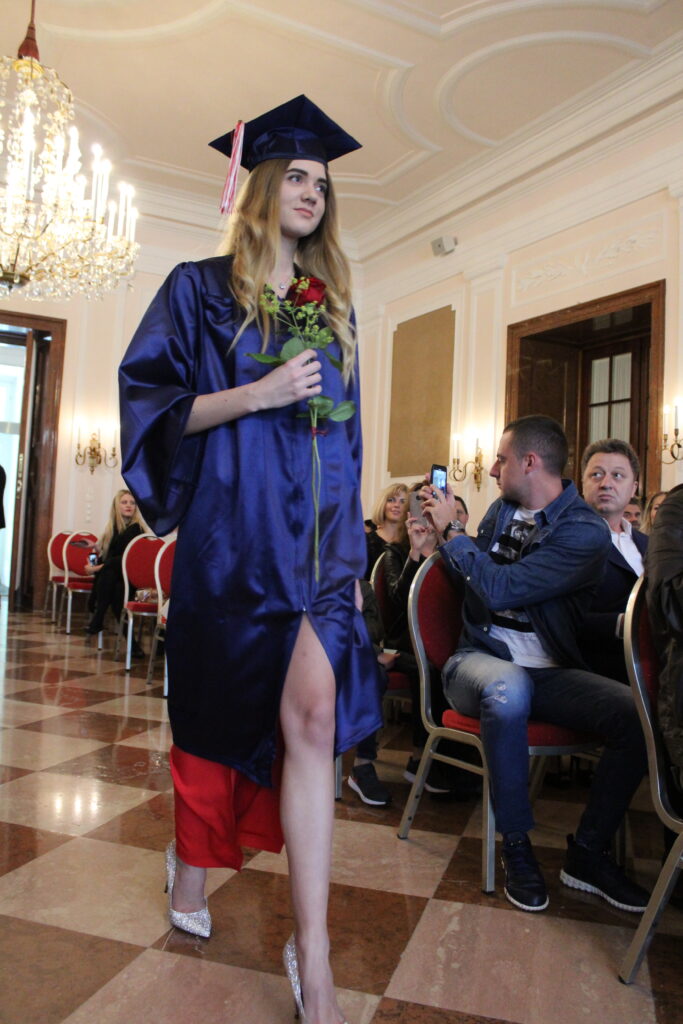
AIS-Salzburg: What did you enjoy about going to such a small international school?
Nastia: Apart from being a part of diverse and inclusive community, the small setting allowed teachers to know each student as an individual, offering their support, fostering a genuine sense of belonging, and providing an education that went beyond textbooks. In this unique environment, I found myself not just learning subjects but also learning different viewpoints, enhancing my educational experience in ways I hadn’t anticipated.
AIS-Salzburg: Were there any teachers who made a major positive impact on your life?
Nastia: It’s a challenge to single out specific teachers since each played an important role in not just giving me knowledge crucial to my current pursuits but also in shaping my character and attitudes. However, a few individuals stand out.
Ms. Kasberger, who was my teacher in three different subjects in different academic years, laid the foundation not only for my future career but also for my personal development. Her guidance went beyond giving subject-specific knowledge; she provided invaluable advice, listened attentively, and steered me in the direction I needed to go. Her insights into my potential and her genuine support and recommendations continue to profoundly influence my life.
Mr. Lichty, my mathematics teacher throughout my time at AIS-Salzburg, made a significant part as a teacher whose influence was truly profound. His explanations and encouragement consistently motivated me to aim higher. Acknowledging my potential, he encouraged me to take AP Calculus in my final year of school, a decision that proved to be essential in transforming my academic way. The knowledge gained not only improved my academic skills but also became a fundament in my current studies, particularly in the areas of programming and quantitative research. His guidance and insistence on dealing with challenges were vital in shaping the path that led me to where I am today.
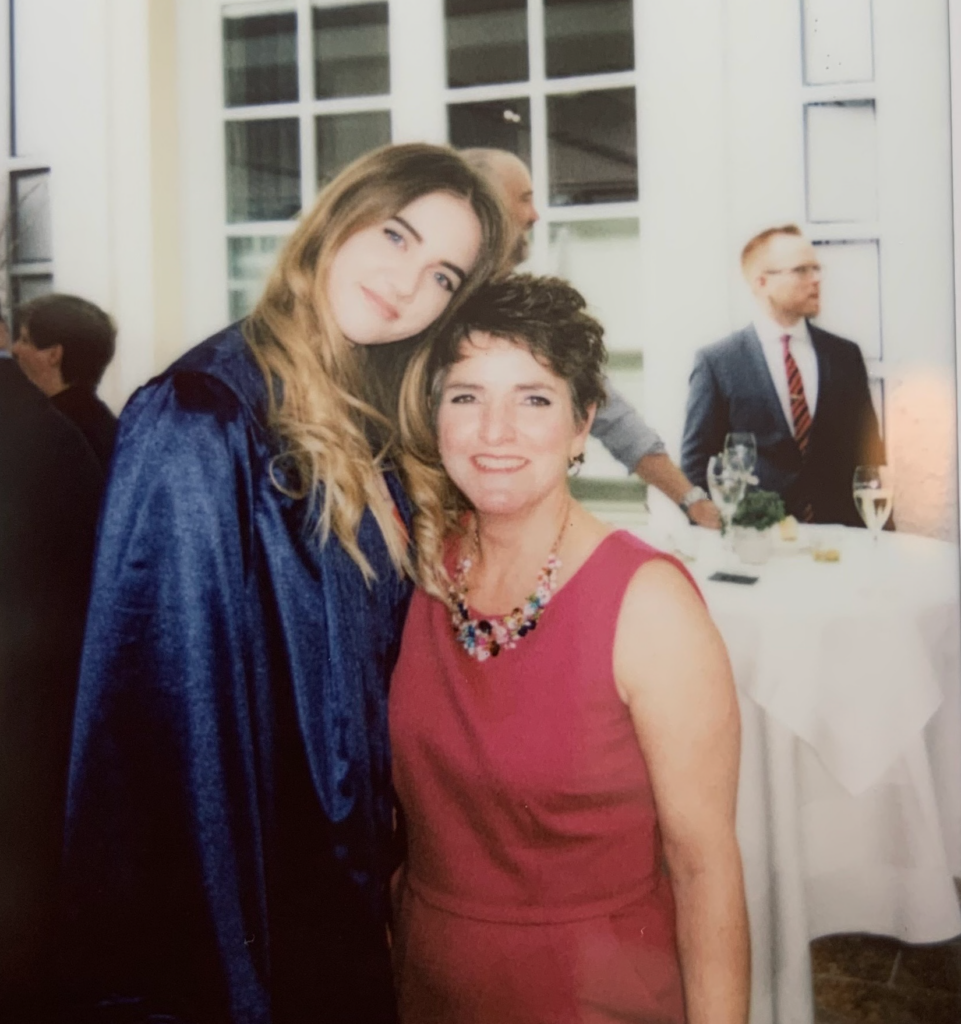
What are your academic and professional goals?
Nastia: As I am pursuing my master’s degree, I am actively engaging in different areas and topics of my interest and earning certifications that expand my expertise. I am also planning to attain a PhD degree to be able to contribute meaningfully to my chosen field. Ultimately, my goal is to make a positive change on a global level, making use of my knowledge and skills to address complex issues and contribute to the advancement of my chosen field.
How are you enjoying college life?
Nastia: College life is not just about academics; it is an experience that constantly widens my horizons and enhances my personal growth. We constantly work in teams on different projects to collaboratively design innovative solutions across different areas and real-world problems. This also gave me an opportunity to make valuable connections and further enhanced my understanding of different subjects. Overall, a supportive environment and an opportunity to explore my interests make college life an incredibly fulfilling and enjoyable experience.
Beyond academics, I’ve actively immersed myself in various communities and clubs, such as the running club. Being a part of this community has not only allowed me to participate in marathons but has also connected me with like-minded individuals who share similar goals and interests.
How did AIS-Salzburg prepare you for college life, whether personally, academically, or socially?
Nastia: As mentioned previously, each aspect of school and each teacher and faculty have contributed to my future experiences and perspectives. Apart from a strong academic foundation in different areas and subjects, the school taught me discipline, encouraged me not to fear facing challenges, and helped me develop confidence to explore my interests further and embrace opportunities. AIS Salzburg was essential in shaping not only my academic background but also my personal resilience and adaptability. The environment cultivated a sense of self discipline, pushing me to pursue excellence while fostering an openness to new ideas and experiences. I genuinely believe that without the years at AIS Salzburg, my life wouldn’t have taken the trajectory that has led me to where I am today.

Are there any personal or academic accomplishments since graduating that you want to share?
Nastia: Since graduating, I’ve achieved both personal and academic milestones. I have already received a bachelor’s degree in International Management, specializing in Entrepreneurship and Leadership and getting extra curriculum credit in the areas of Computer Programming and Artificial Intelligence. I also pursued additional certifications, notably excelling in various Excel courses. Furthermore, my Bachelor thesis topic was ‘Industrial policy options for a post pandemic global economy,’ and my goal was to examine the fragility of the current economic system and striving to gain a deeper understanding of the changing global order and foster the development of innovative approaches to adapting policies to make a living more sustainable and efficient for developed economies. Throughout my research, I’ve been in contact with various researchers and economists who contributed to my work, acknowledged the importance of my research, and admired my enthusiasm.
Do you have any advice for students at AIS-Salzburg or applicants to the school?
Nastia: For both current students at AIS-Salzburg and prospective applicants, my advice is to take every opportunity the school offers. Whether it’s the chance to take an extra AP course, Calculus, an additional elective, or engage in extracurricular activities, each experience is a stepping stone to not only gaining valuable knowledge and skills but also making more educated choices for your future. Embrace these opportunities; they not only enrich your present but also lay the groundwork for finding your path in life.
As we settle into the new year, we take a look back at the 2023 portion of the school year in the action-packed video below that features clips since our doors opened in early September.
In German I class recently, Ms. Hart’s classroom was transformed into a Christmas market and students were tasked with purchasing certain items on their shopping list using the new German terminology they had acquired. The elaborate play market included laminated food items, play Euro, and their choice of tea or hot punch.
The 2023-2024 AIS-Salzburg ski and snowboard program will be similar to recent years, with five scheduled ski days, a ski weekend in Kärnten from February 2-4, and the winter excursion from February 22-25 in Zell am See. Ski and snowboard days and the four-day winter excursion are included in the tuition for all boarders while the weekend trip to Innsbruck is at additional cost.
The single-day trips are to various ski resorts in the province of Salzburg within an hour and a half drive. Students can rent any necessary equipment at the ski resort and those who require lessons can do so at an extra cost. Scheduled dates so far include January 13th and 20th, February 10th and 17th, and a fifth date to be announced later.
The overnight ski weekend to Kärnten is part of our Weekend Overnight Travel Program and is offered first to our Senior Scholars and Distinguished Students. This trip is unique compared to other overnight trips in that participants stay for two nights and will enjoy two full days of skiing and snowboarding.
The winter excursion will once again be held at the wonderful Club Kitzsteinhorn, a youth sports hotel located in Zell am See and at the foot of the Kitzsteinhorn Glacier (see video above). For skiers and snowboarders, this region is the ultimate playground featuring the aforementioned Kitzsteinhorn glacier, which reaches over 3,200 meters (10,500 ft) and overlooks beautiful Lake Zell. The monster ski hill boasts multiple modern Gondolas and chairlifts, including a chairlift with heated seats! At least one ski and snowboard day will be spent on the other side of the valley from Kitzsteinhorn at Schmittenhöhe (1965 m/ 6,446 ft), a ski hill within a 10-minute walk of the hotel. The Schmittenhöhe is a more family-friendly resort and provides for more suitable runs for our beginning skiers and snowboarders.
November 25th and 26th, 18 students spent around 24 hours sightseeing and enjoying the Bavarian capital of Munich. This was the second weekend overnight trip scheduled this school year.
After checking in at the hotel Saturday at noon, students had 2 and a half hours of free time to explore the Karlsplatz, the Christmas market, and have some lunch. In the late afternoon, most of the group enjoyed ice skating at the outdoor rink at the Karlsplatz. Their time ice skating looked like a winter wonderland as they skated under snowflakes and beautiful Christmas-themed lights.
“Despite the heavy snowfall and cold air, the students were having too good of a time to complain about being cold and many could’ve stayed out there longer if we hadn’t already made plans,” said excursion leader and organizer, RA Ali Welch.
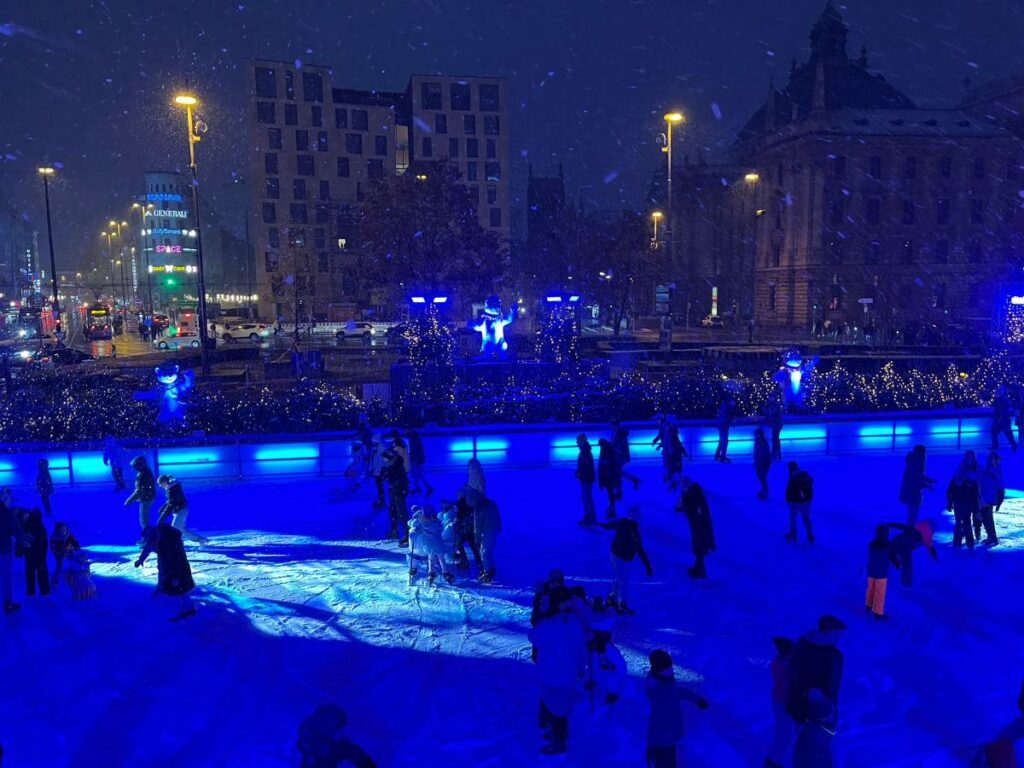
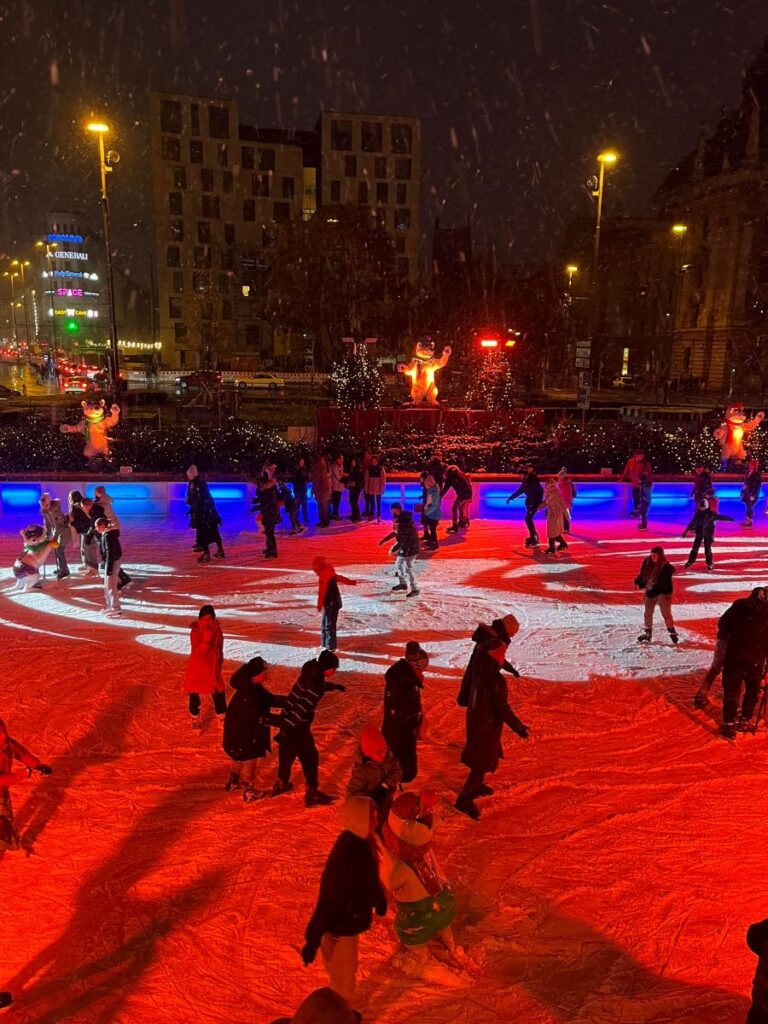
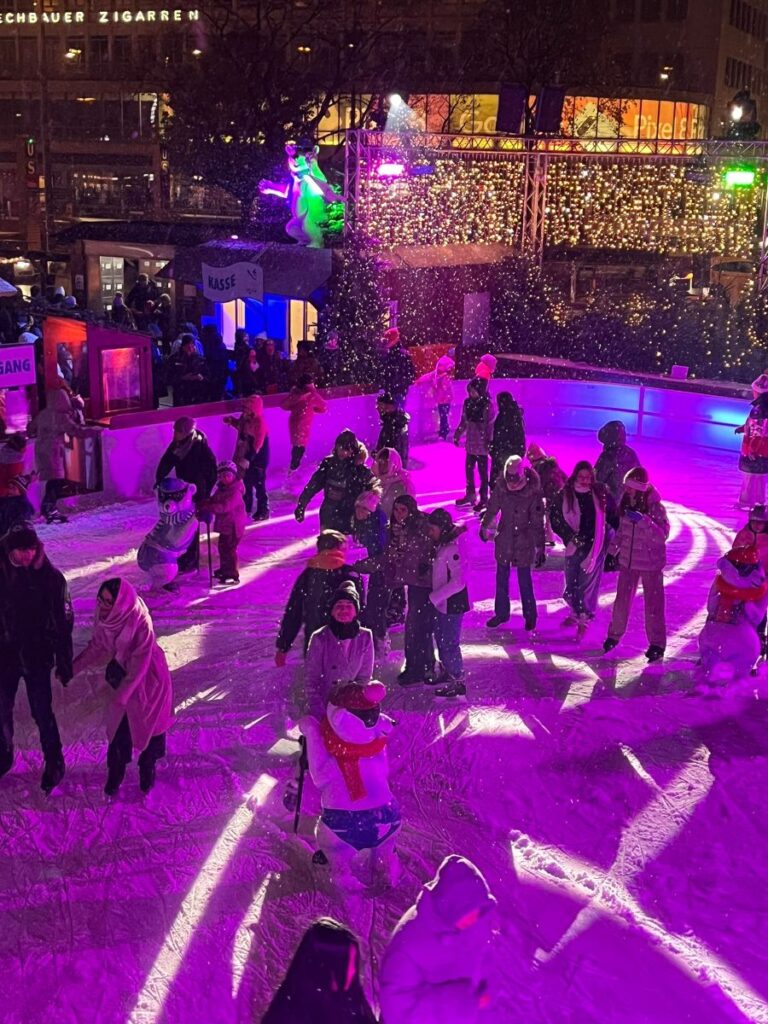

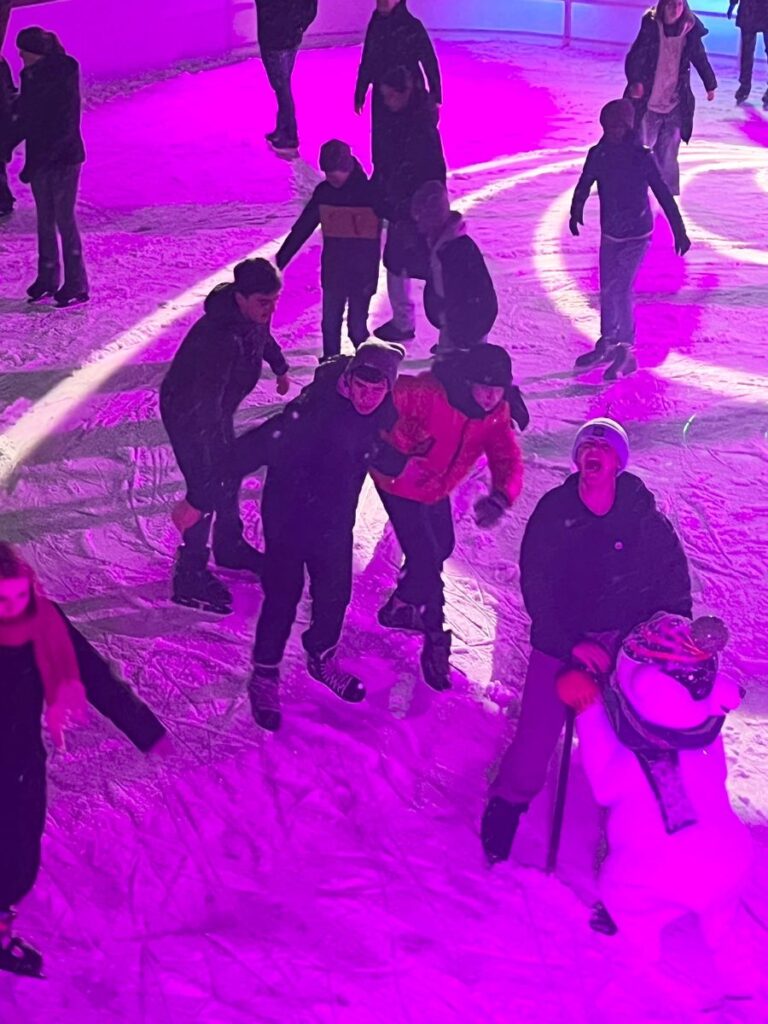
MysteryRooms Munich welcomed the group with hot tea and treats as they waited in anticipation for the escape rooms to begin. Two groups successfully escaped the Captain’s Room, while the group in the Asylum Room didn’t make it out in the one-hour time slot. The staff at MysteryRooms Munich stayed open late just for our group, even offering hints for how to solve clues faster and providing a tour of their other rooms to some students.
On Sunday morning, the private tour of FC Bayern Munich arena was chilly but incredibly fascinating as the group had exclusive access to the press room, players’ locker room, and the players’ bench on the field! The tour ended in the FC Bayern Munich Museum, where students learned about the origins of the team, saw the many trophies won, learned about the current players for the 2023-2024 season, and even played some soccer themselves. The students left the stadium and Munich with some great souvenirs to share with family and friends, or to enjoy for themselves!
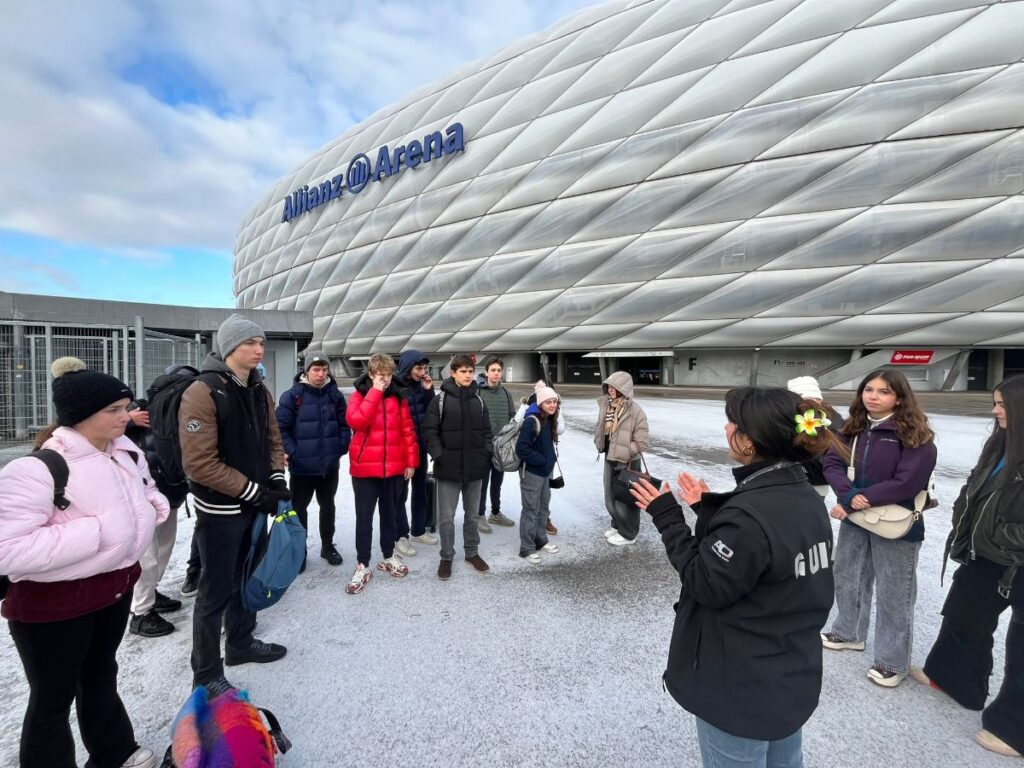

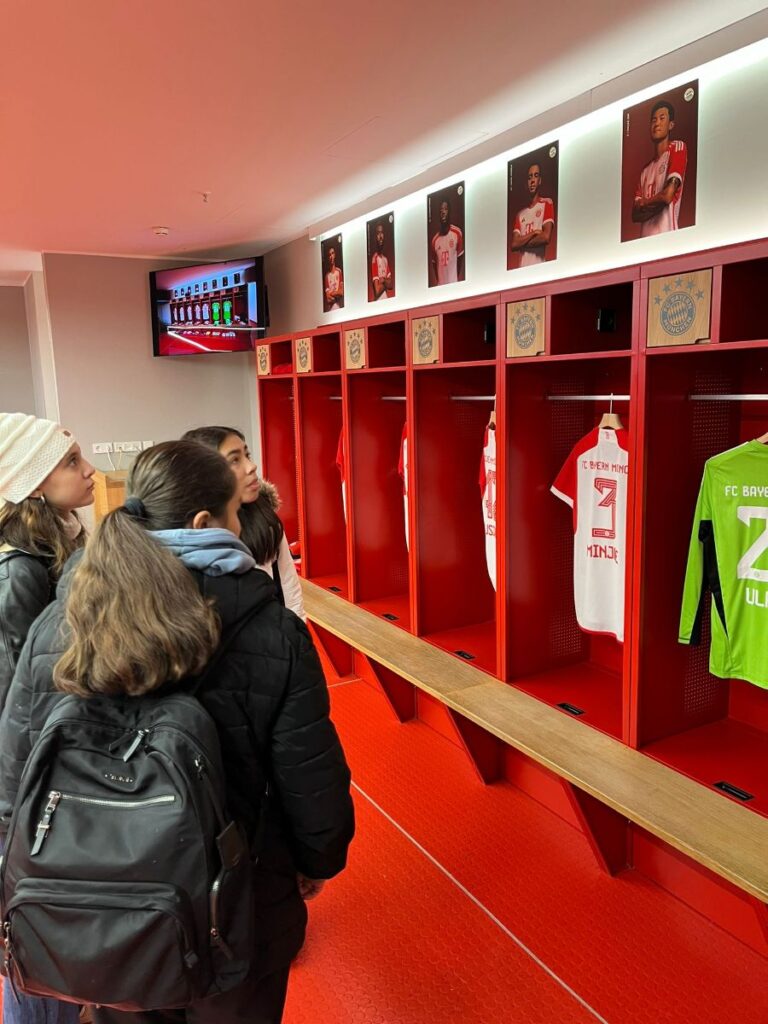
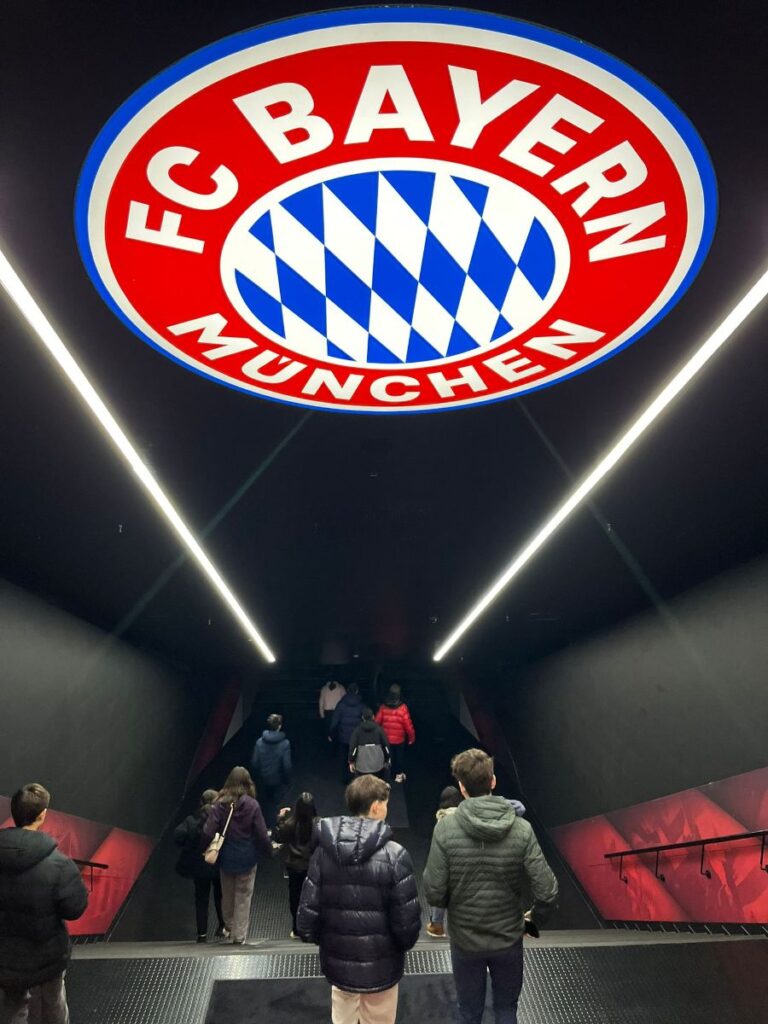
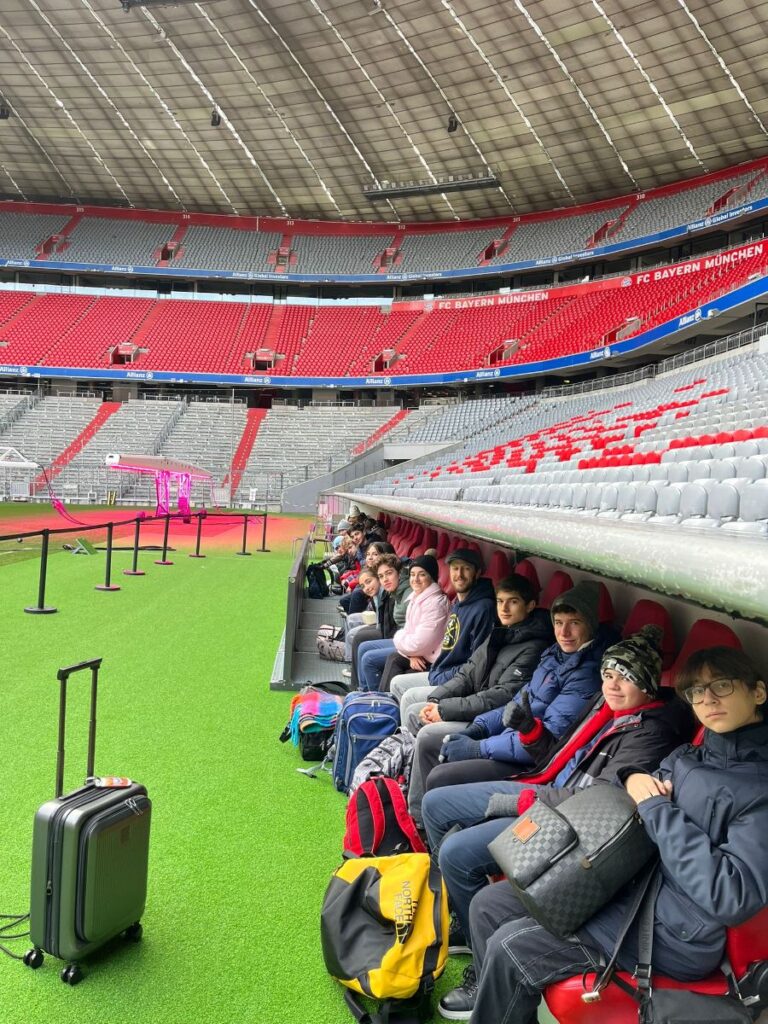
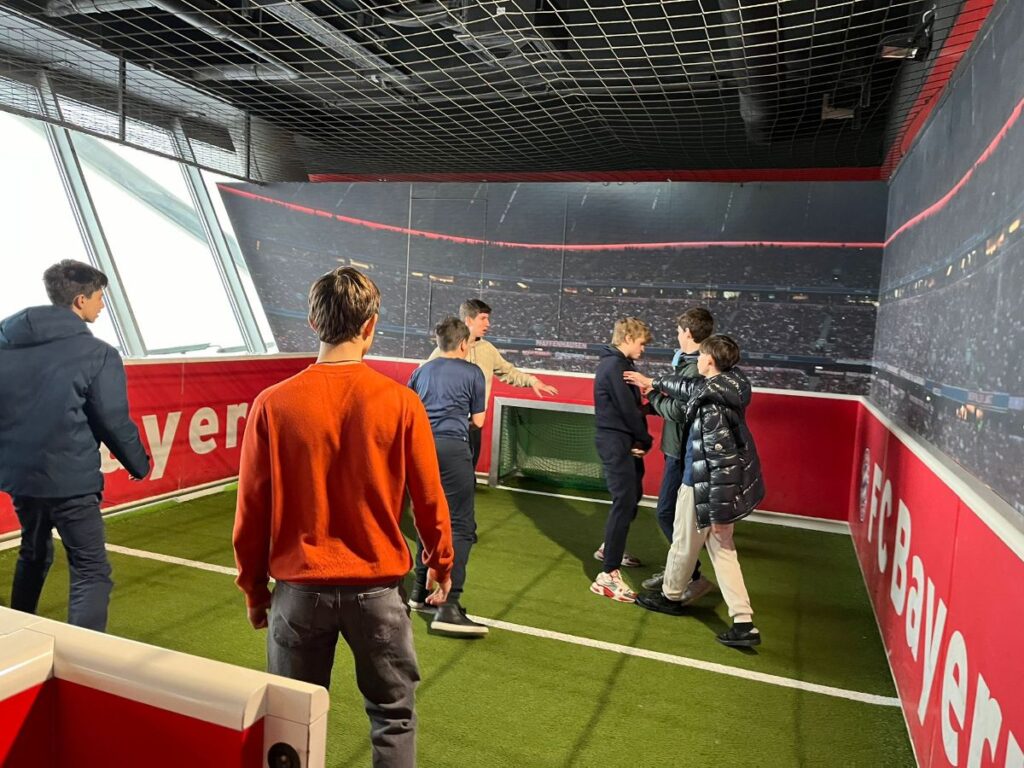

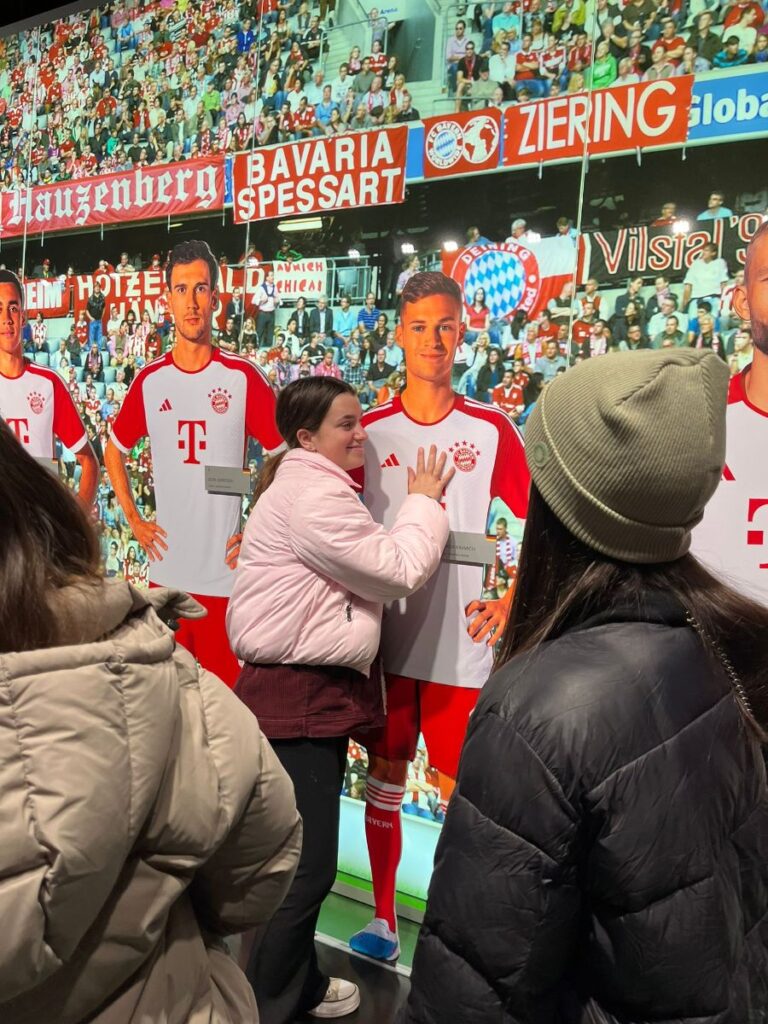
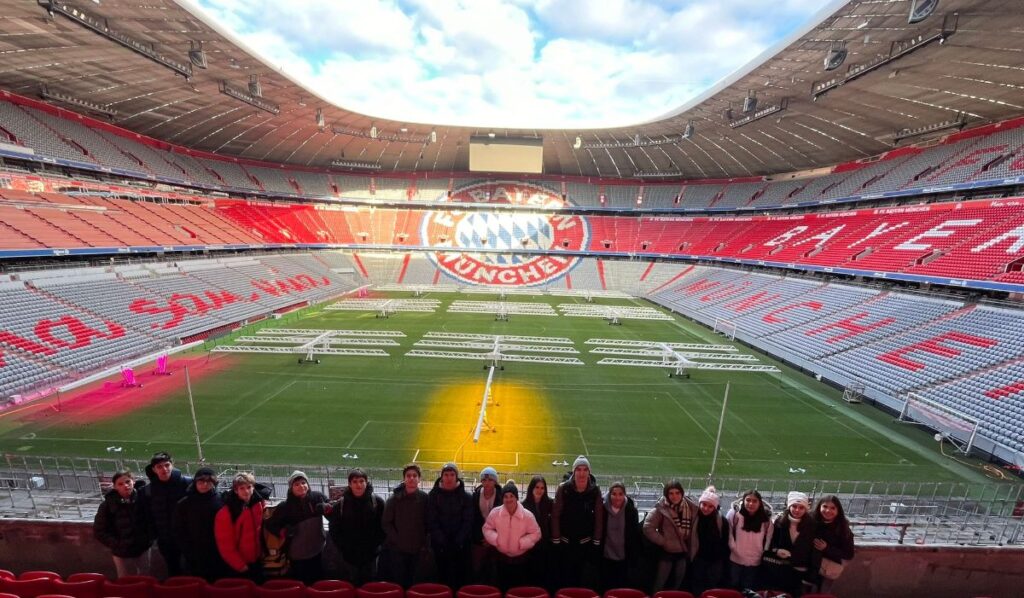
This past Wednesday, the AIS-Salzburg Fall Trimester Awards Ceremony was held at the Sternbräu restaurant, where many students were recognized for outstanding academic success as well as engagement in athletics throughout the fall term.
The sports awards and recognition kicked off the celebrations following dinner. The boys’ and girls’ volleyball teams and the boys’ soccer team were recognized for their accomplishments this fall and a number of individual awards and honors were handed out.


Following the sports awards, Headmaster McLean awarded 55 students who successfully fulfilled the academic, community service, enrollment, and behavioral qualifications for the honors of distinguished students or senior scholars as outlined in the AIS-Salzburg Student and Parent Handbook.
Students who have met these qualifications are recognized in two categories of distinction: Senior Scholars and Distinguished Students. Listed below are the privileges that accompany these distinctions:
Senior Scholars
- One evening study hall per week free
- Seniority in room and roommate selection and bus seating on excursions and outings
- Friday & Saturday evening curfew is extended by 1/2 hour
Distinguished Students
- Released from study hall on Thursday evenings
- Rooming and roommate selection and bus seating (following Senior Scholars) on excursion
- Friday & Saturday evening curfew is extended by 1/2 hour
We invite you to watch the slideshow below honoring those students who have been recognized.
To cap off the award ceremony, Headmaster McLean recognized 62 students for outstanding academic achievements in the fall trimester, including 23 students who achieved ‘High Honors’ status —all A’s and no more than one B. We invite you to watch the following slideshow of those students who made the Fall Trimester 2023 Honor Roll.
The awards dinner and ceremony also provided an opportunity for the student body to show off their finest outfits and take many photos. We invite you to view the following snapshots which capture the positive atmosphere and celebratory excitement within our close-knit, international community.










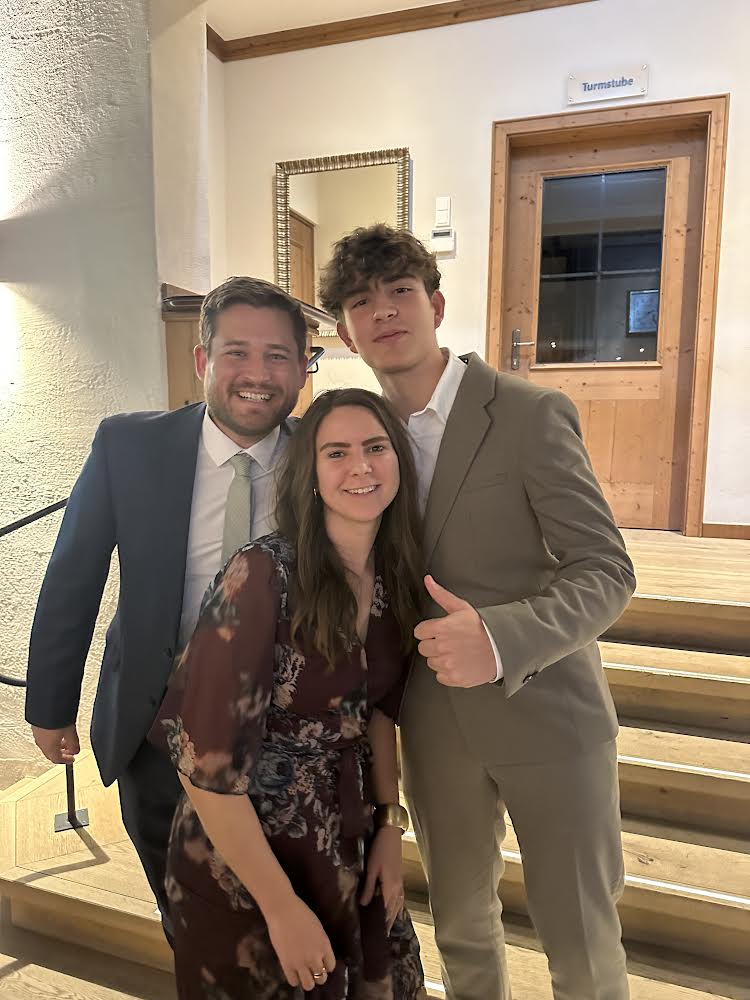
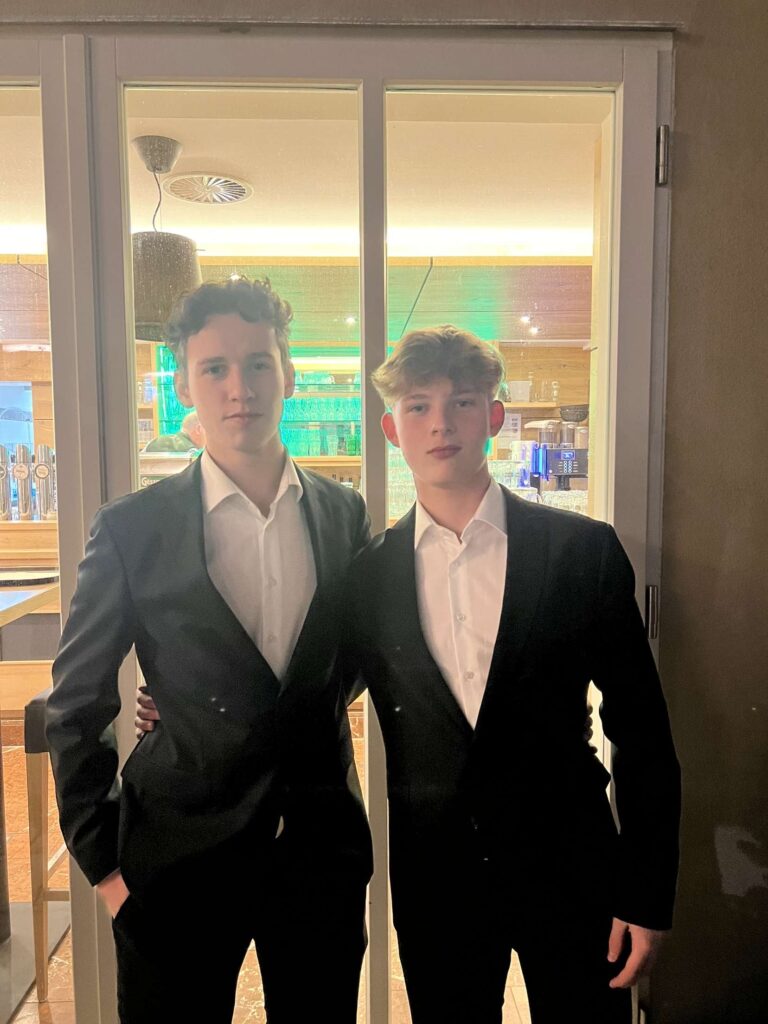
Weekends at AIS-Salzburg represent the greatest amount of potential free time. All full-boarders are required to choose three weekend activities two of which must be healthy activities and one entertainment activity. In the video below, Mr. and Mrs. Fox explain the weekend activity program, including requirements, the types of activities students can choose from, and the benefits of such activities.
The AIS-Salzburg Lions soccer team rolled into Vienna on Saturday, November 18th, hungry to defend their title as DVAC champions. Five teams would contend for the 2023 DVAC junior varsity soccer trophy in a round-robin format.
In the first match against a familiar foe of ICS Vienna, the game was back and forth for most of the first half before the Lions broke through with 2 quick goals – one an own goal, the other by Erno V. From there, the Lions were able to ride out the rest of the match and preserve a shutout for a good start to the day.
The second match would find the Lions under more pressure. The Danube International School proved to be a difficult opponent but the Lions stood tough, and their efforts eventually paid off. Lars T. found himself in the middle of the action as he accounted for three assists. The first was a cross sent in from a corner for a towering header by Diego O. Luka Savic added 2 more on feeds from Lars. Alejandro L. rounded out the scoring in a 4-1 victory. Keeper Ilias S. also stood out as he saved a vital penalty kick when the score was still even. After this match, Coach Matt was quick to praise the quality each player showed in this match.
“This was our best match this season,” said coach Matt. “The boys were working for each other, communicating, and playing some real quality football. Coach Ali and I looked at each other in disbelief and extreme pride as the boys pinged the ball around the field!”
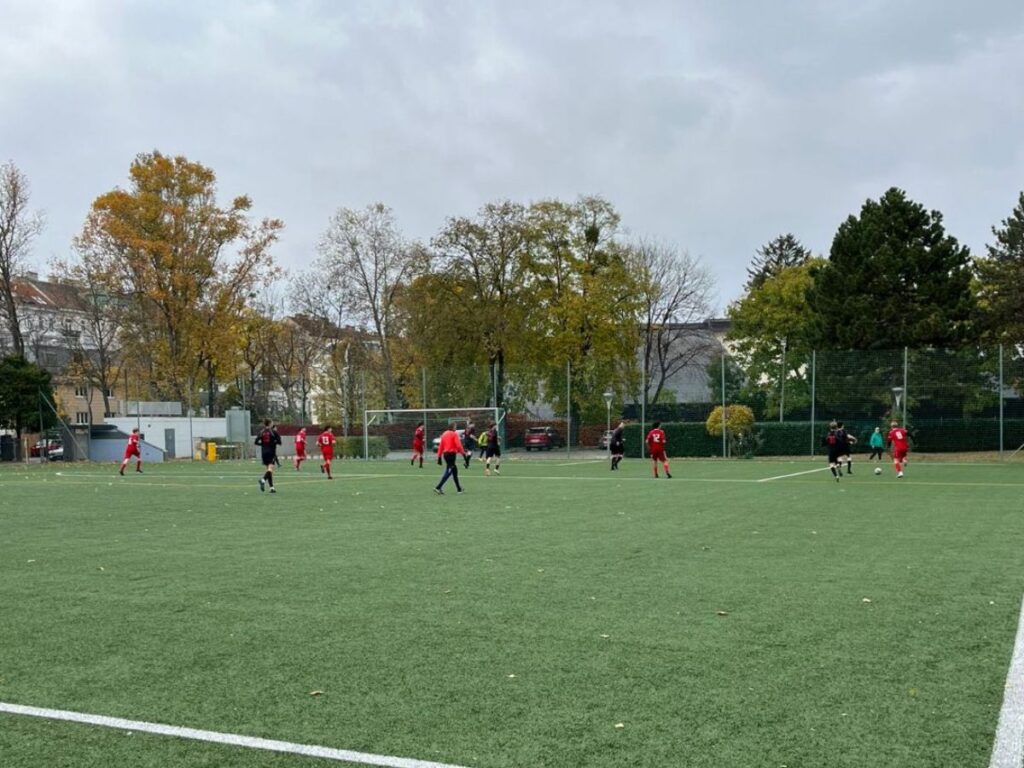
In the third match against Cambridge International School, the Lions came out flat and were not playing up to the standards they had set in the previous match; even falling behind a goal early on. However, Cambridge did not have any subs, and it began to show as the match went on. The Lions quickly responded with 2 goals of their own, both quality goals from Vlad M. and assisted again by Lars. In the end, the Salzburg squad would overwhelm their foe in a commanding 8-1 victory. Further goals were scored by Luka S. —assisted by Luca S.— while Lars and Diego both scored from distance. Vico S. scored his first goal on a long run past the Cambridge defense, and Alejandro scored the final goal after receiving a pass in the box from Noah A., who tallied his first assist of the season.
In a pleasant twist of fate, the final match of the day would put the Lions against the VIS Panthers. Both teams had won all 3 previous matches, meaning this final match would determine the outright champion. The match began timidly on both sides, with neither team looking to take many risks. This would change when the Panthers scored a fluke own goal off of pressure from Luka S. Up 1-0, the Lions continued to put pressure on the Panthers and it paid off, as Luka would net 2 more strikes off of assists from the all-action Lars before riding out the remaining time to victory. With the result, the Lions were crowned the tournament winners for the 2nd year in a row!
After the match, Assistant Coach Ali Welch said, “We are so proud of the way the boys came together and achieved this goal. Absolutely everyone played so well today. The boys’ improvement across the board was evident for all to see.”
Unsung heroes of the day include the entire defensive line, with Petar V., Daniel A., and Niels S. continually thwarting all the opponents’ attacks, and causing them frustration, while providing a solid foundation from which to build out. Wingbacks Vico and Luca tirelessly covered so much ground to help in defense and attack. Mikail G. and Alex A. provided strong minutes of pressure off the bench, as did Mykyta K. Everyone should be proud of their improvement and the way they did a job when called upon.
Congratulations to the entire boys’ soccer team and their coaches!
The AIS-Salzburg Lions volleyball teams had a rough weekend at the DVAC championships, with all three teams going without a win.
However, the scoreboard does not tell the whole story.
The varsity girls’ team had two exciting matches that came down to the final seconds; in both cases, the Lions narrowly fell short of a victory. In their first match against the reigning champions from ICS Budapest, the Lions had their opponents on their heels after winning the first set 25-22. However, the Bulldogs of Budapest rallied back to win the second set 25-21. In the third and final set to 15, the Lions had the lead throughout the set until the final moments, when ICSB once again rallied from behind to defeat the Lions 15-13.
“It was an exciting match with a lot of ICSB fans and other teams watching,” said girls varsity coach, David Burns. “It is unfortunate that we didn’t pull out the victory, but the experience was something they will never forget. We live for those types of games in sports.”
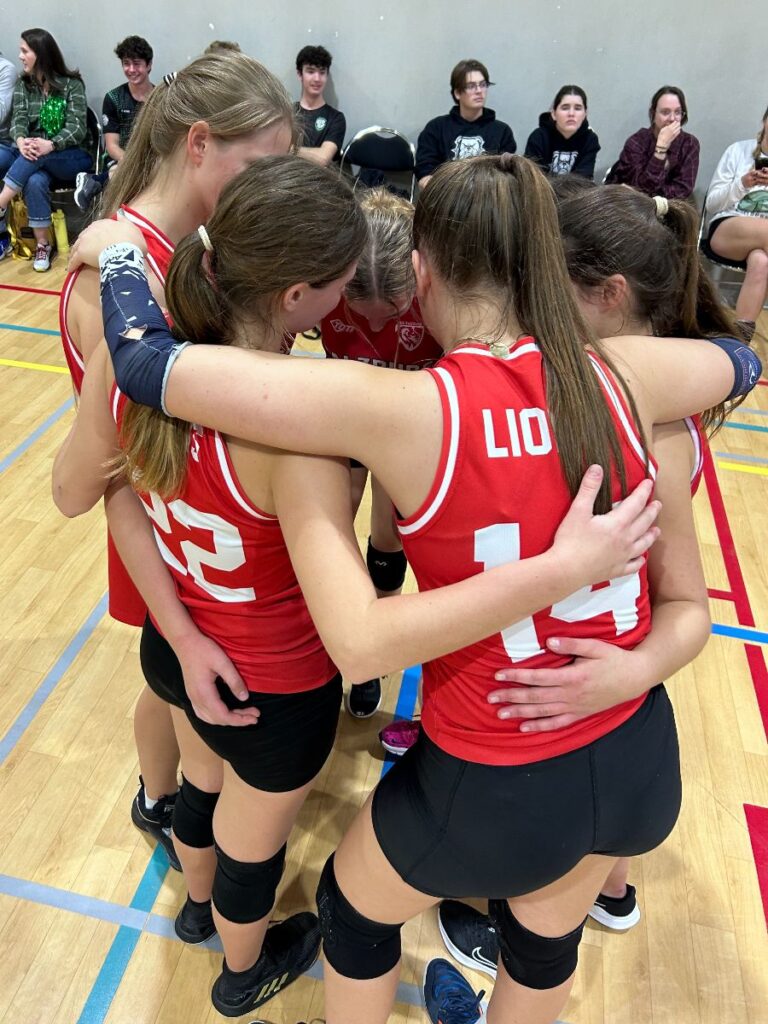
In their second match, the girls were in another intense battle against the varsity team from Vienna International School, a high school with 8 times the population of AIS-Salzburg. The Lions lost the opening set 22-25 and were visibly frustrated after losing another close set. As a result, the wheels fell off in the second set en route to a 12-25 thumping at the hands of the Panthers from Vienna.
In their third and final match, the Lions faced another big school in AIS Vienna, who defeated the Vienna International School earlier in the day. In this match, the Lions regained their form from their first match and surprised the Knights, winning the first set 25-19. However, almost like a repeat from their match vs. ICSB, Vienna battled back to win the second set 25-22 before rallying late in the third and final set to hand the Lions another heartbreaking loss by another score of 15-13.
“Today wasn’t our day. We were very close to upsetting two of the top teams at the tournament and just fell short. The girls were very disappointed that we didn’t achieve our goal of winning the championship. But they shouldn’t hang their heads as this was the strongest competition I have ever seen in the DVAC varsity tournament. The fact that we competed that closely with those teams, especially with such a young team, is a major achievement.”
In fact, of the seven girls that made the trip, four were aged 14 and 15, ages that typically compete at the junior varsity level. Natalija J., who recently turned 14, was thrown into a starting setter role in the absence of senior setter Julija M.
“Natalija played great. She had never played the setter position prior to this season and the strides she made in just two months is remarkable,” said coach Burns. “The experience our younger girls gained in these exciting and intense games will pay dividends next year.”
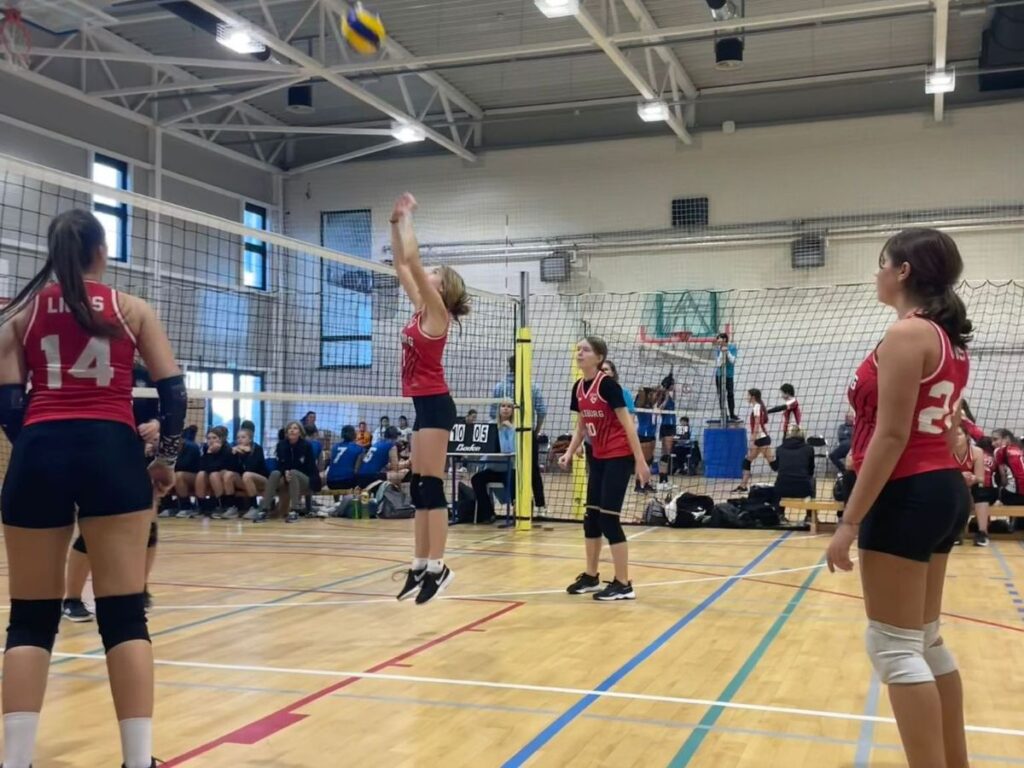
Unfortunately, the boys’ volleyball team was unable to retain their championship status at the DVAC junior varsity championships this past weekend. The tournament was very competitive with all teams being equal and having the ability to win it.
The boys finished third in their pool after losing to AIS Vienna and ICS Vienna in two very close matches that went to the final set with the Lions only losing by a few points. In the final game to determine who finished in 5th place, the boys lost again in two, hard-fought, close sets to AIS Budapest.
“We definitely did not get the result we were hoping for,” said coach Nick DeWitt. “It was just a matter of a few touches going one way or the other. On a positive note, the boys have improved a lot and I am amazed at everyone’s individual growth and development.”
Alex M. was a standout on the court, both as a player and leader. Petr V. also had a great tournament behind some great hustle and defensive net play.
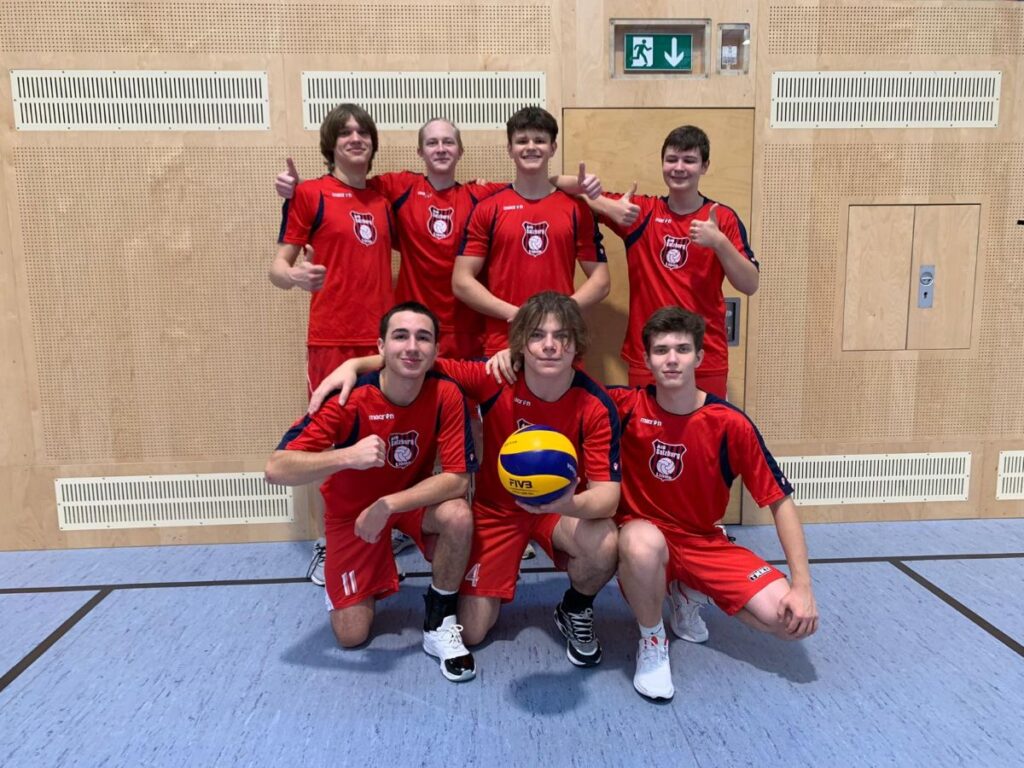
The junior varsity girls’ volleyball team gained some much-needed experience this past weekend at the DVAC championships after playing four games. These four games, combined with the 6 other games they have played this season, make for the most games played by a JV girls’ volleyball team from AIS-Salzburg as far as anyone on staff can remember.
Since the team consists completely of newcomers to the game, the objective of coaches David Burns and Abby Lee this year was for them to learn some volleyball, have fun, and play in as many competitions as possible.
“The 10 girls on the team were very dedicated and motivated to improve,” said Burns. “I was impressed with their enthusiasm and I am excited to see where it takes them next year.”
Improve they did. Despite going winless at the tournament, the girls showed major strides in their game since the mid-season festival, according to assistant coach, Abby Lee, who was their coach at the tournament.
“It was amazing to see how much this team grew and improved throughout the season,” said JV girls volleyball coach and resident assistant, Abby Lee. “Although we didn’t win anything, the team put up a very good fight and had some stellar moments.”
Team Captain, Milla S. had a great tournament with some amazing saves, tips, and serves. Ainara M., who started the season out on the practice-only team and was eventually promoted to the JV team, started in almost every set in the championship tournament and brought a calm nature and made smart moves on the court. Marybel A. stepped up on short notice to assume the role of setter and did a great job. Anna L. brought enthusiasm and positive reinforcement the entire tournament, cheering on her teammates both on and off the court.
“Overall, I could not be more proud of these girls. The display of tenacity, hard work, and commitment within the team was very admirable and made my job as a coach very enjoyable.”
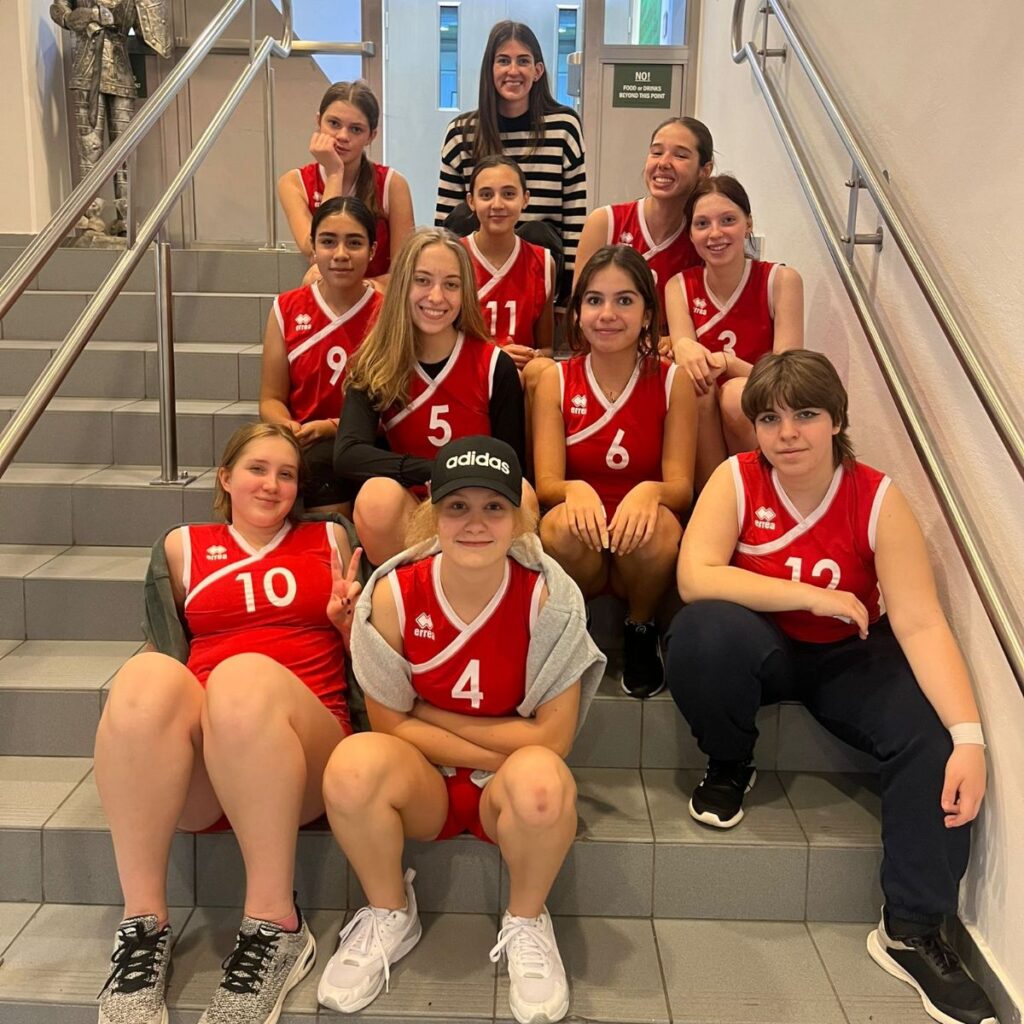
Yulia Movsesova was enrolled at AIS-Salzburg from September, 2014 through May, 2016 for her junior and senior years. In deciding to enroll at AIS-Salzburg, she was searching for an alternative approach to learning and secondary education while enjoying an international experience. She graduated as one of the top students in her class, was an active member of the community, and was a major part of the success of the girls’ volleyball team which won the DVAC championship in both years she was on the team.
In the interview below, Yulia shares with us her experience at AIS-Salzburg and her life since graduation.
AIS-Salzburg: What are your fondest memories of your time at AIS-Salzburg?
Yulia: Being part of the volleyball varsity team was an incredible experience. Traveling to championships in places like Budapest, Hungary and Lausanne, Switzerland was not only exciting but also a great opportunity to compete with other schools. Winning the DVAC tournament in both seasons I participated in remains a cherished and proud memory.
Moreover, many of my fondest memories are associated with spending time with my friend Polina after classes.
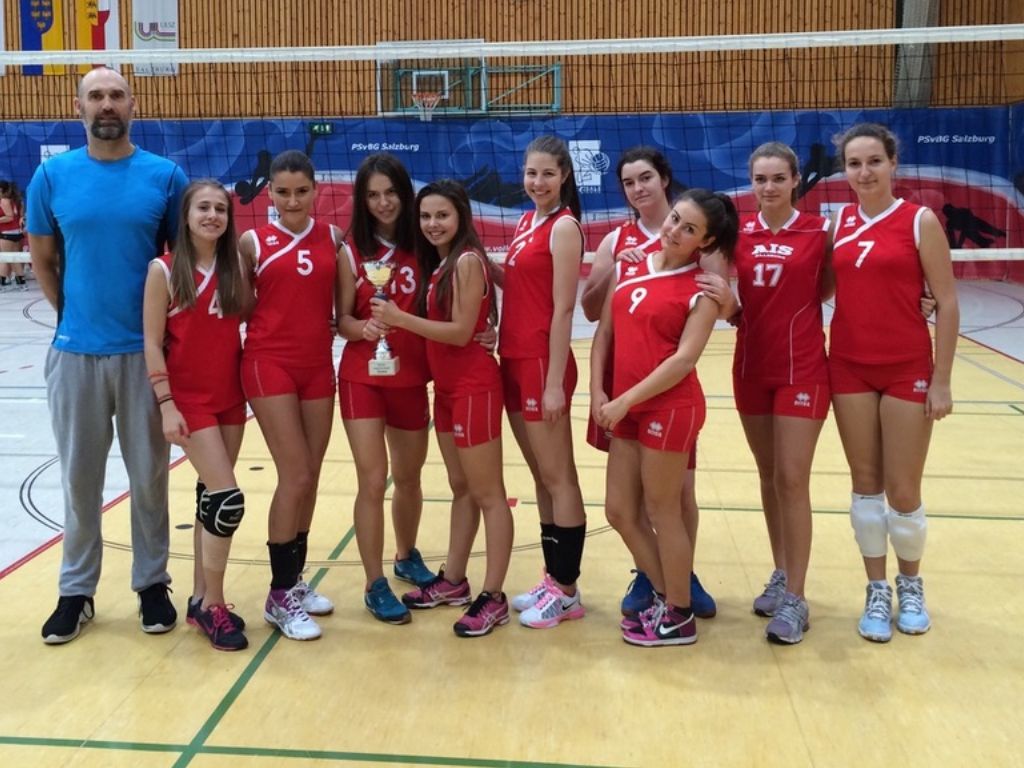
Photo: Yulia (number 7), was a starting outside hitter for the varsity lions volleyball team that won the DVAC championship in the fall of 2014 and 2015.
AIS-Salzburg: Were there any teachers who made a major positive impact on your life?
Yulia: AP German class with Mr. Agardy inspired me to improve my language skills. Before his class, I struggled with German, but his guidance and method of teaching motivated me to enhance my proficiency. After graduating, I made the decision to move to Vienna, take the B2 exam, and pursue studies in German. This was a pivotal moment for me, as it led to my choice to continue living in German-speaking countries, ultimately leading me to my current role at a German university.
While studying at AIS-Salzburg, I wrote a few academic papers, including the senior paper, and I discovered that writing is one of my strengths! Learning how to craft academic works significantly contributed to my success at the university level – I had fun writing my bachelor’s and master’s thesis and other works. Moreover, this love for writing has guided me toward a career as a content creator and marketing professional.
AIS-Salzburg: What have you done academically and professionally since graduating from AIS-Salzburg?
Yulia: Since graduating, I obtained my Bachelor of Science in International Business and my Master of Science in International Management with a major in International Marketing. I have worked across diverse fields such as marketing, communications, and sales, gaining practical experience in these sectors. I have also engaged extensively in volunteer activities during and after my studies, contributing to various causes and organizations.
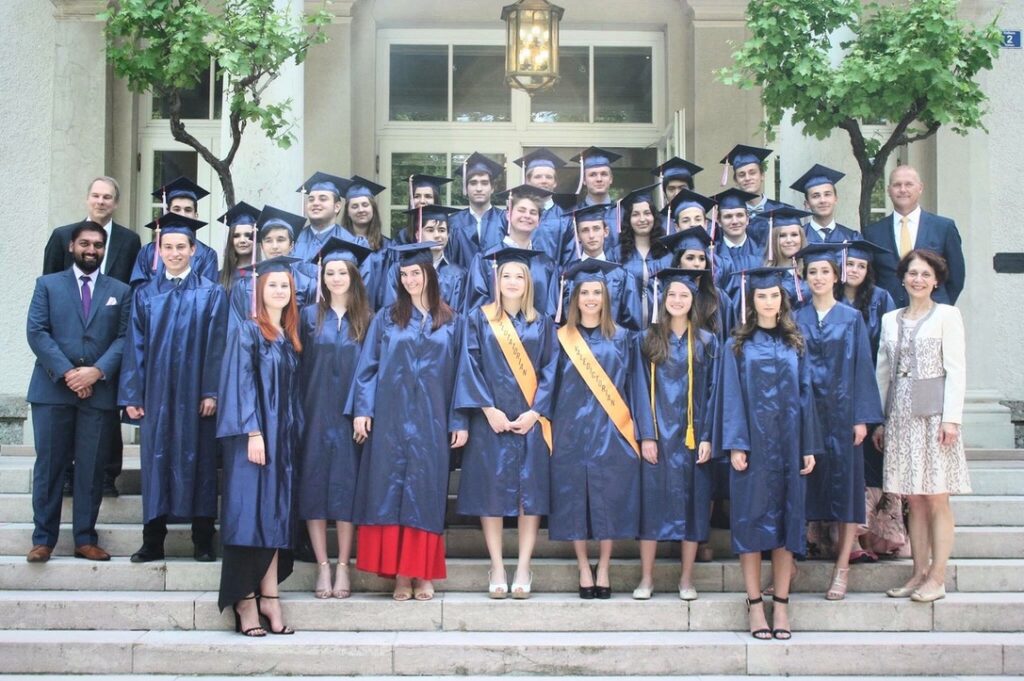
Photo: Class of 2016 with Yulia in the second to last row, just right of the center.
AIS-Salzburg: Are there any personal, academic, or professional accomplishments since graduating that you want to share?
Yulia: Since graduating, I’ve been fortunate to achieve several personal and professional milestones. After completing my university education, I found myself missing the academic environment and wanting to continue my journey in the education sector.
Currently, I am a Program Coordinator at TUM – Technical University of Munich, widely regarded as the leading university in Germany and the EU, earning its esteemed position according to the prestigious “Times Higher Education” (THE) ranking. Globally, TUM holds an impressive 30th place in the worldwide rankings. I take immense pride in being part of the TUM family and contributing to student success right in the heart of Munich!
AIS-Salzburg: What aspects of your education at AIS-Salzburg best assisted you in further academics, your professional life, and/or life in general?
Yulia: After completing my studies at AIS-S in 2016, I had a desire to pursue further education within an international and multicultural environment, as it had become a part of my identity. I am grateful to have experienced the diverse and dynamic setting at AIS-S.
Studying at AIS-S has improved my English and German language skills, moreover, I have learned the basics of Spanish, and I have developed a love for languages in general (last year, I started learning Japanese, which is a very exciting journey for me!). Mastering multiple foreign languages has undeniably unlocked various opportunities for me, impacting both my professional career and personal life significantly.
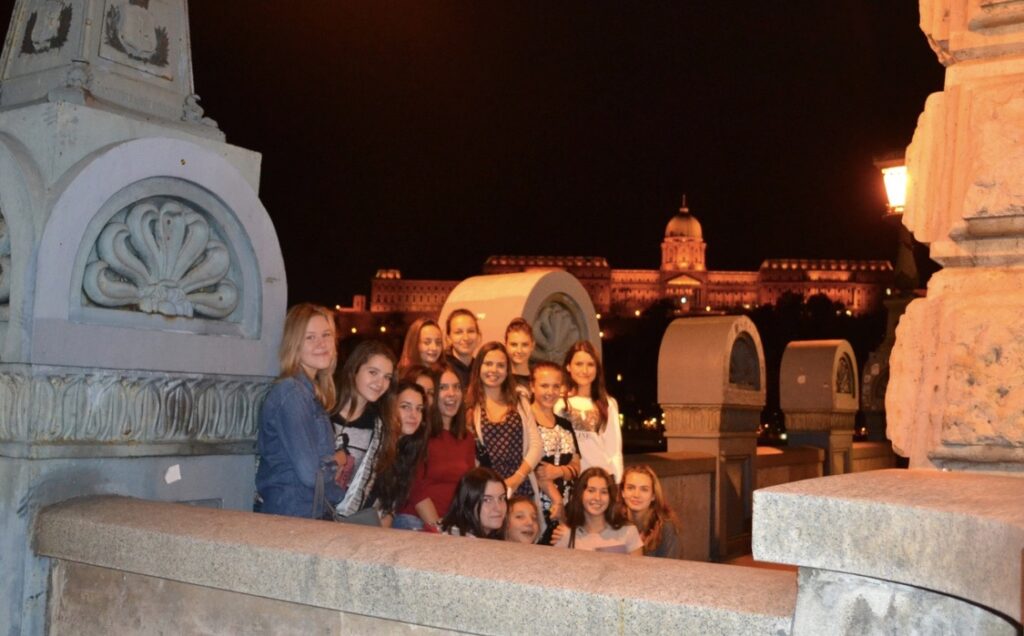
Photo: The girls volleyball team in Budapest, fall of 2016.
AIS-Salzburg: Do you have any advice for students at AIS-Salzburg or applicants to the school?
Yulia:
- Travel. As a student in an international school, exploring new places and learning different languages is invaluable. When considering future opportunities for pursuing a bachelor’s degree abroad, getting acquainted with various countries beforehand makes decision-making easier. Travel broadens horizons and fosters cultural awareness in preparation for studying in a new location.
- Network. Upon starting university studies, you’ll swiftly recognize the significance of networking. Establishing connections will help you integrate into the new environment.
- Engage in volunteer initiatives: Participating in volunteer projects offers an excellent platform for acquiring new skills, expanding networks, and enhancing your CV. This experience not only contributes to personal and professional growth but also proves beneficial when pursuing bachelor studies and seeking internships in the future.
- Nurture meaningful friendships. While many students may lose touch over time, the school environment presents a prime opportunity to forge lasting connections. Establishing true friendships is possible; for instance, I’ve been fortunate to maintain a friendship with an AIS-S alum for over nine years, despite living in different countries.
- Appreciate Salzburg’s natural beauty. Having resided in Salzburg, I fell in love with the scenery, and I am often travelling to visit my old “home” and its suburbs to enjoy the nature. I strongly advise making the most of the school-organized trips, activities, and cultural events. Residing in such an exquisite city is a privilege that should be fully embraced and enjoyed.
Students of the Journalism elective will spend the 2 hours a week that they meet this school year, to plan, produce, edit, and publish a student-led monthly newsletter titled AIS-S Spotlight. The first edition was published on Monday and can be found —along with all future editions— at www.ais-salzburg.at/student-newsletter.
The past two weekends have been jam-packed with indoor and outdoor activities. Photos from recently-held activities are as follows: knockout basketball tournament, making of friendship bracelets, Taylor Swift Eras Tour movie, Frauenkopf hike, Pumpkin carving, Halloween event, Gaisberg Trail Run community service, Red Bull Salzburg ice hockey game, and Lammerklamm hike.
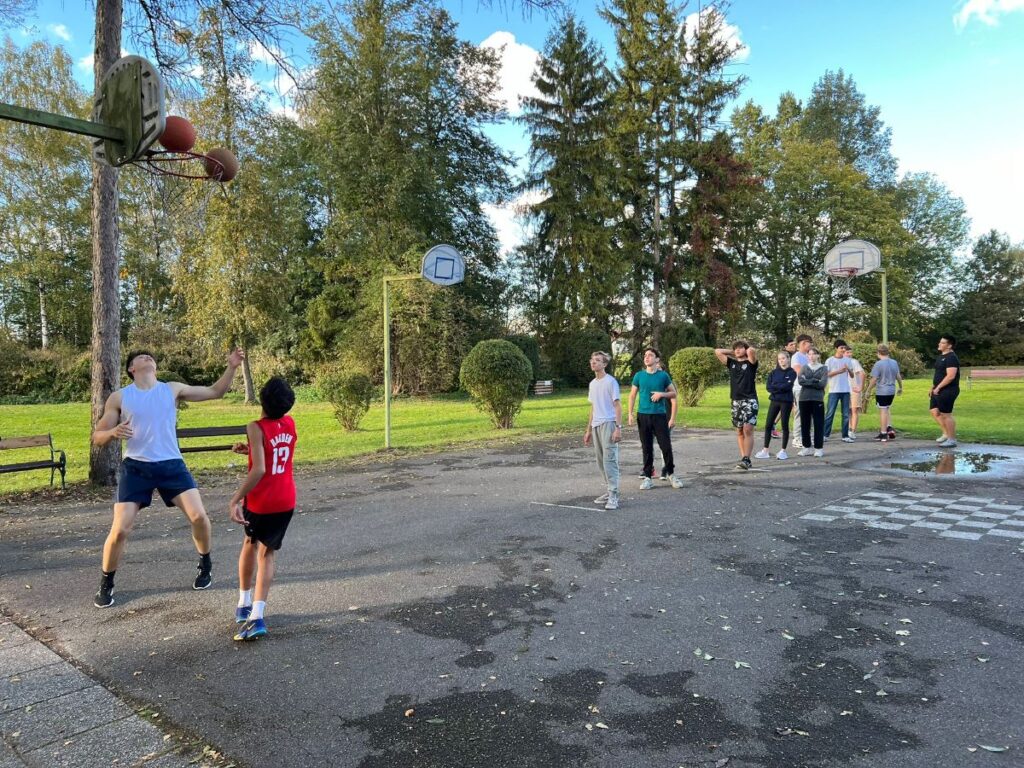
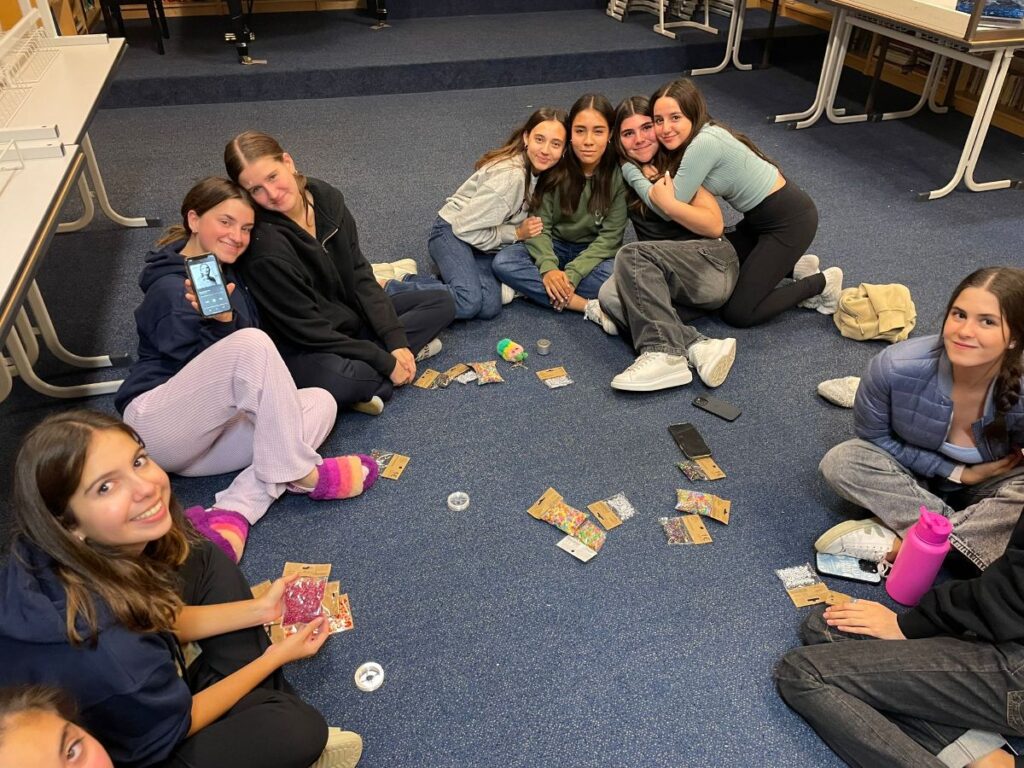
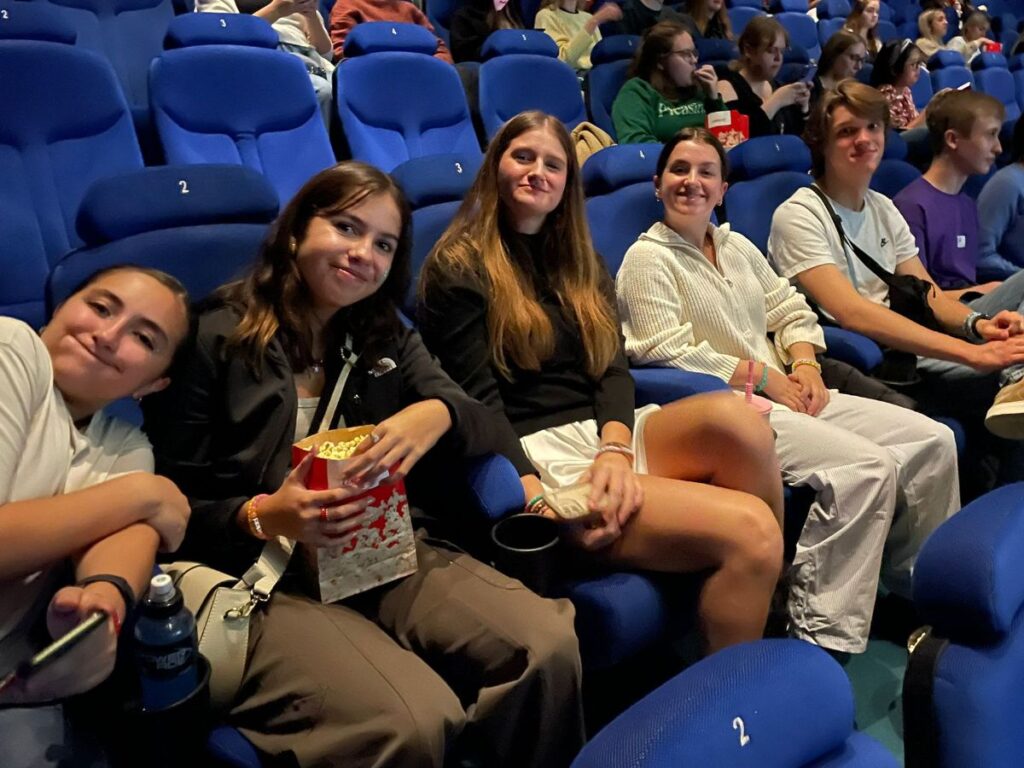
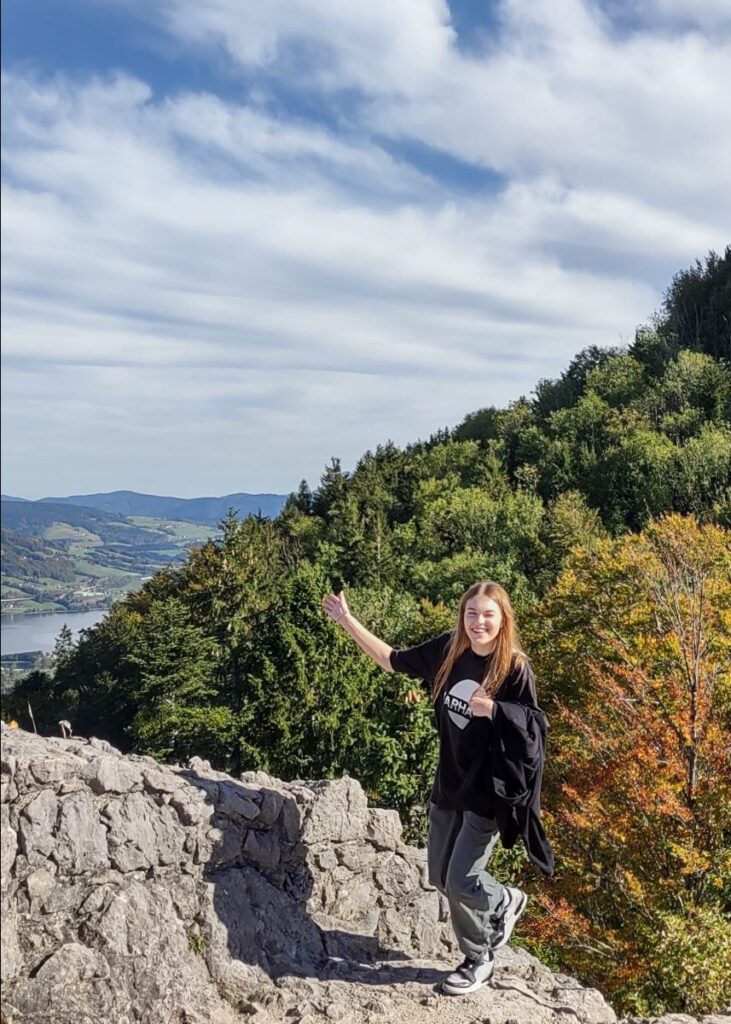
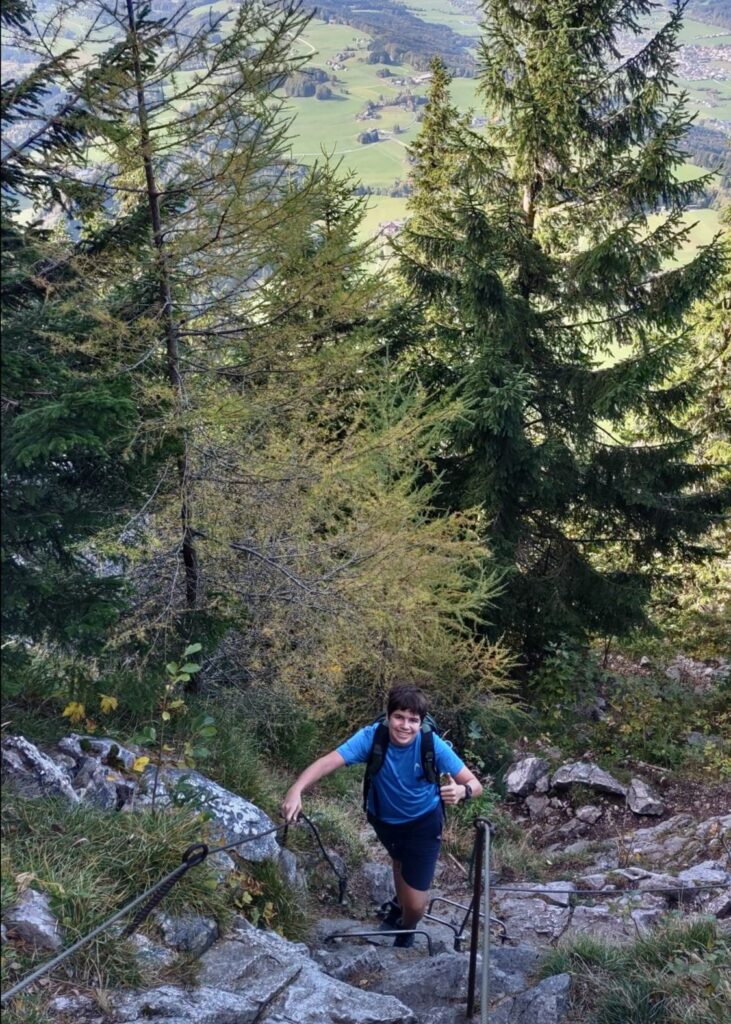
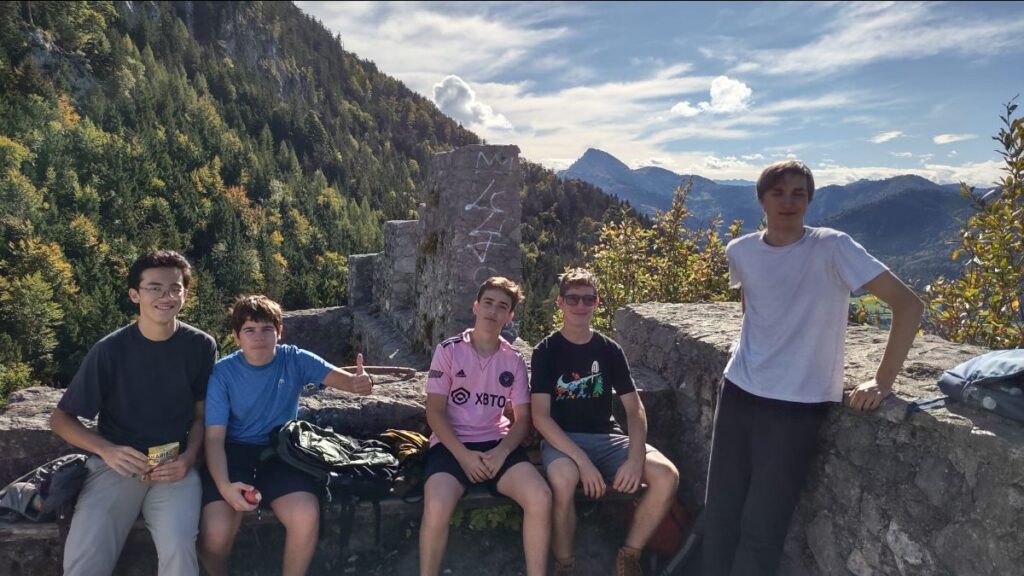

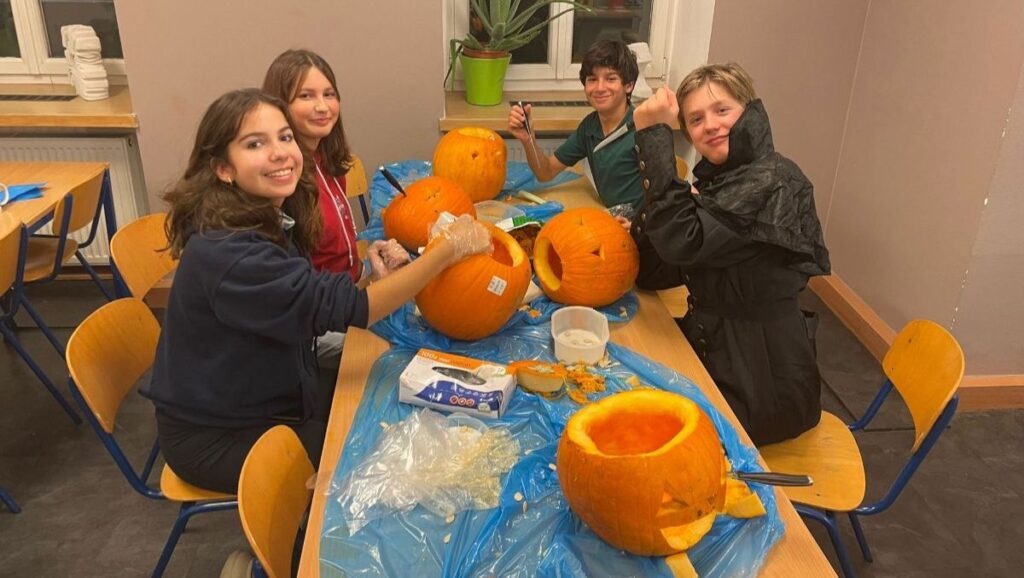
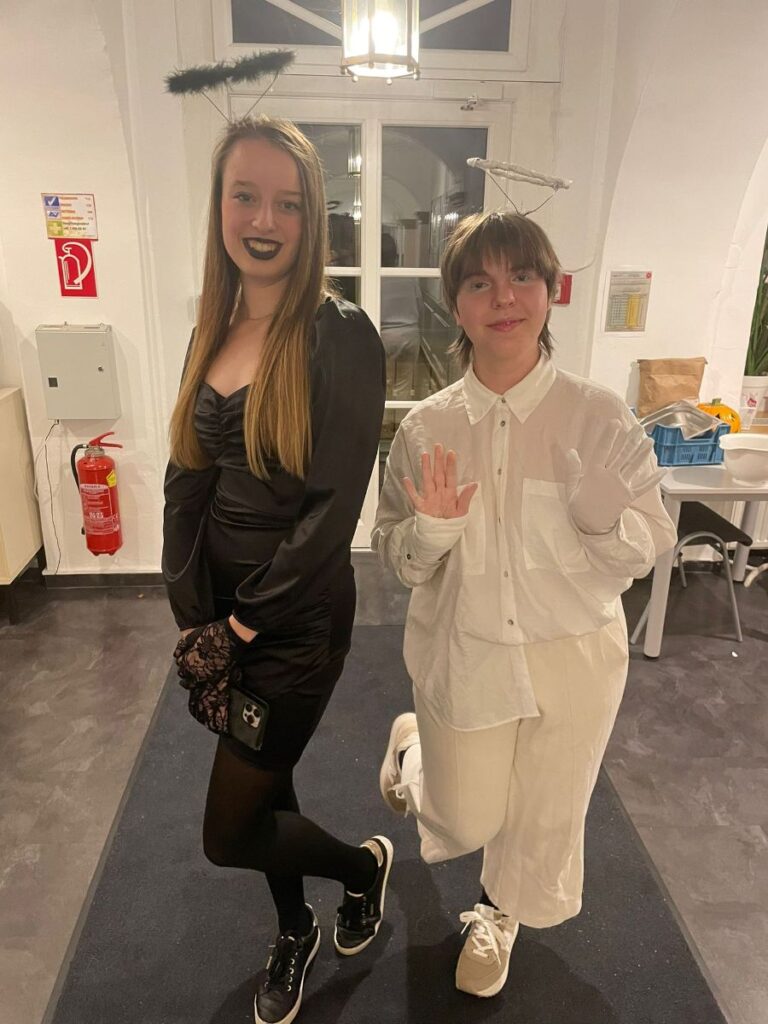
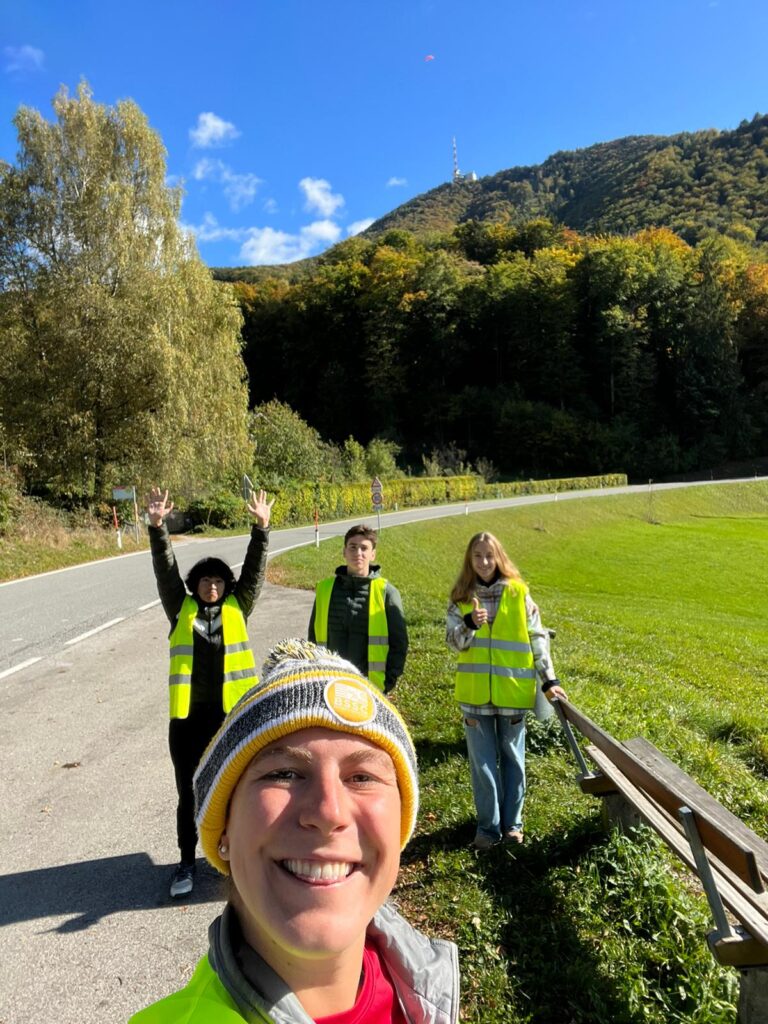
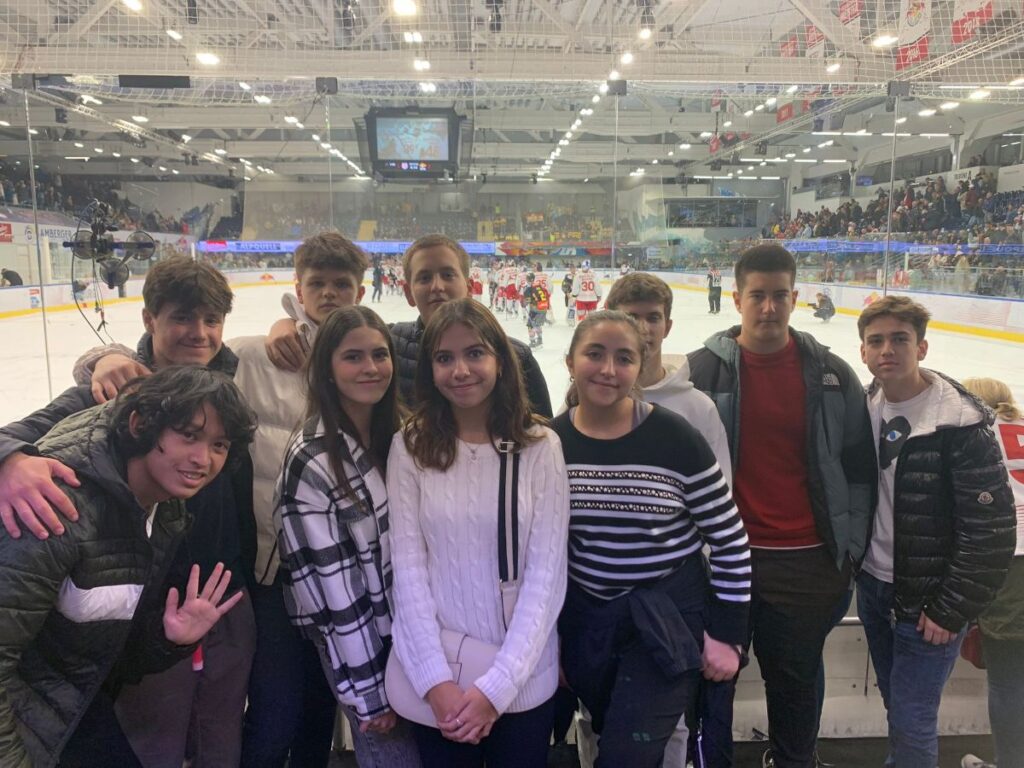

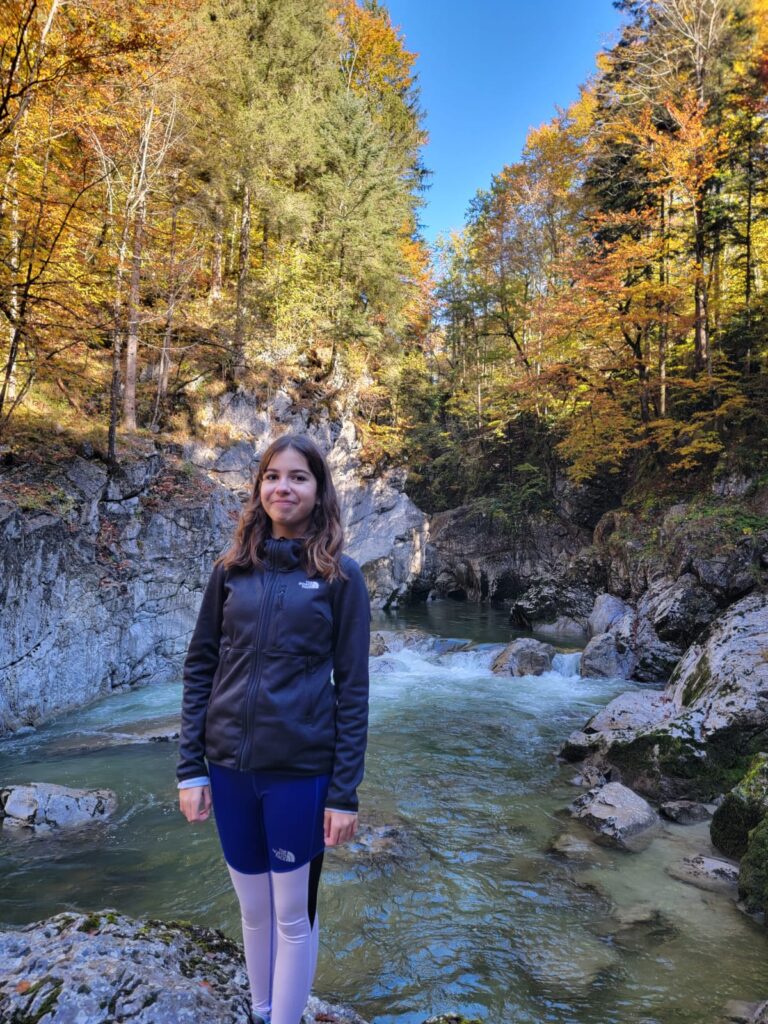
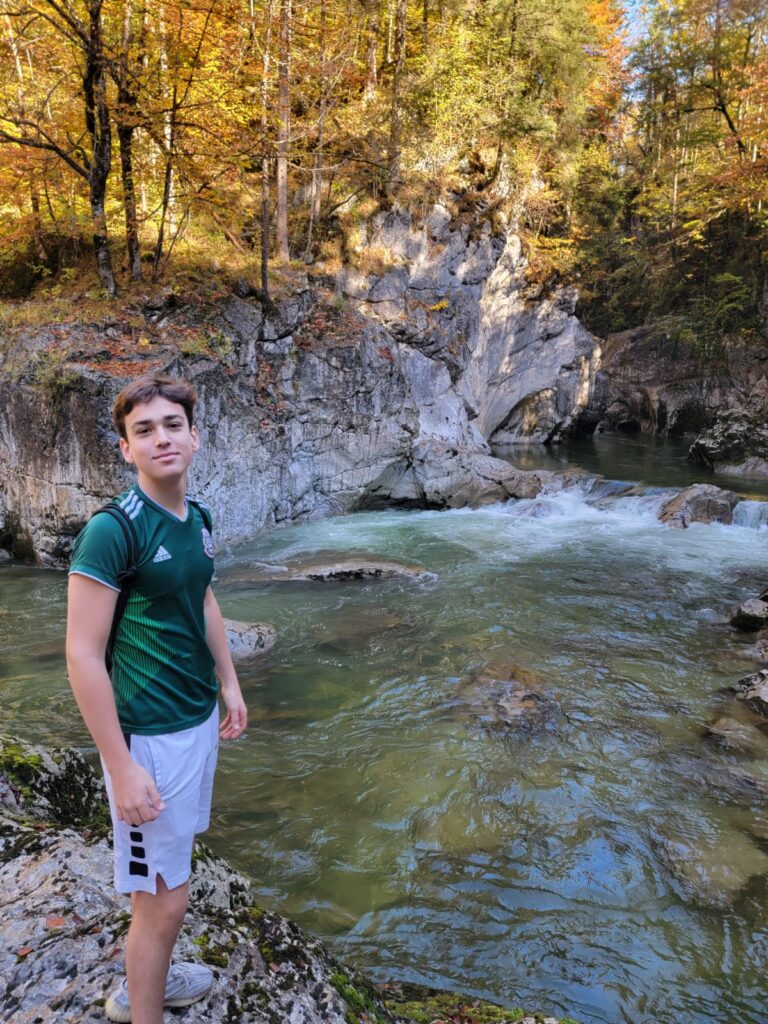
In AP® Biology last week with Mrs. Kasberger, students investigated environmental effects on enzyme activity by testing how heat and pH changes affect the reaction rate of catalase in animal tissue. Knowing how temperature and pH affect enzyme activity is fundamental for understanding basic biochemical processes and for applications in various fields, including industry, medicine, and biotechnology. It enables better control and optimization of enzymatic reactions for specific purposes.
In the video below, we eavesdrop on students as they investigate.
Ernö and Alexander are new students at AIS-Salzburg this school year and this is the first time that both young men have enrolled in a boarding school. It is also the first time that both have shared a room with a complete stranger. In this interview, we get to know both students and check in to see how they are adjusting to this new experience.
This past Saturday, the AIS-Salzburg Lions hosted teams from two international schools in Vienna and one from Augsburg, Germany for a friendly boys and girls volleyball tournament. There were no placements or final trophies, with all schools agreeing to come together for extra competition before the season-end championships in their respective conferences.
The tournament featured 3 varsity girls teams, 4 junior varsity (JV) girls teams, and two junior varsity boys teams.
“It was a great day of competition and sportsmanship,” said athletic director, David Burns, who is also the varsity girls coach.
The girls’ varsity team went undefeated (2-0, 2-1) with wins over the International Christian School of Vienna (ICSV) and Danube International School (DIS). The boys’ team split their two-game series with ICSV, losing the first game 1-2 and rebounding to sweep the second game 2-0. The JV girls’ team lost their first two games 0-2 to ICSV and DIS but combined with the varsity team to defeat a strong JV team from Augsburg 2-1. The JV girls narrowly lost both sets to DIS, losing 23-25 and 22-25.
“This tournament was especially important for the JV girls to gain some much-needed experience,” said Burns. “They are all new to the sport and quite keen to improve.”
We invite you to view some of the photos below from Saturday’s tournament.

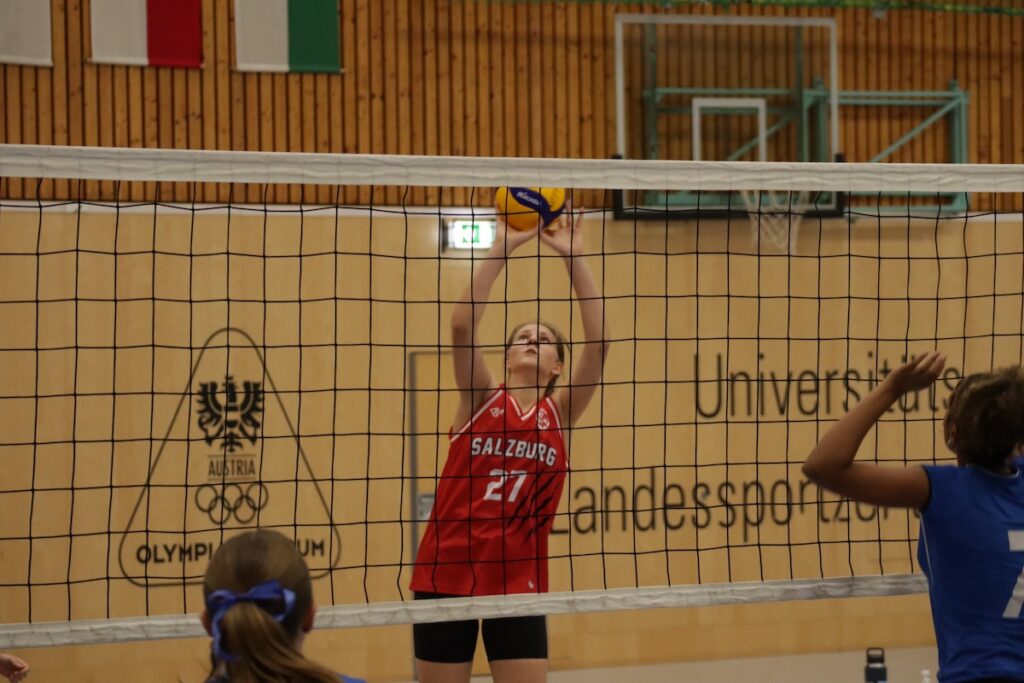
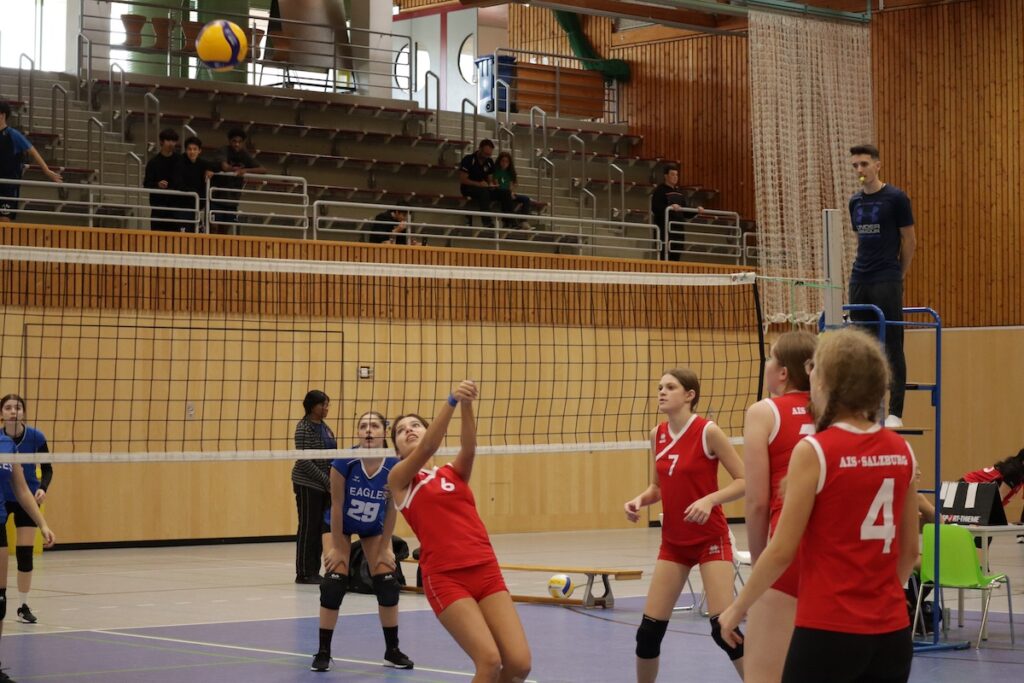
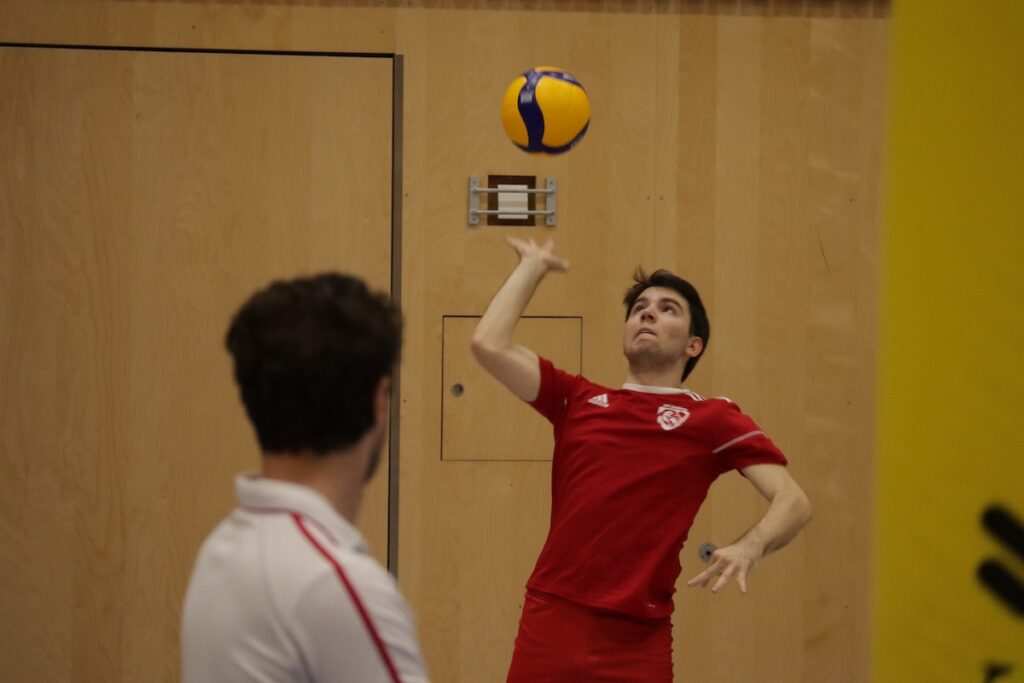
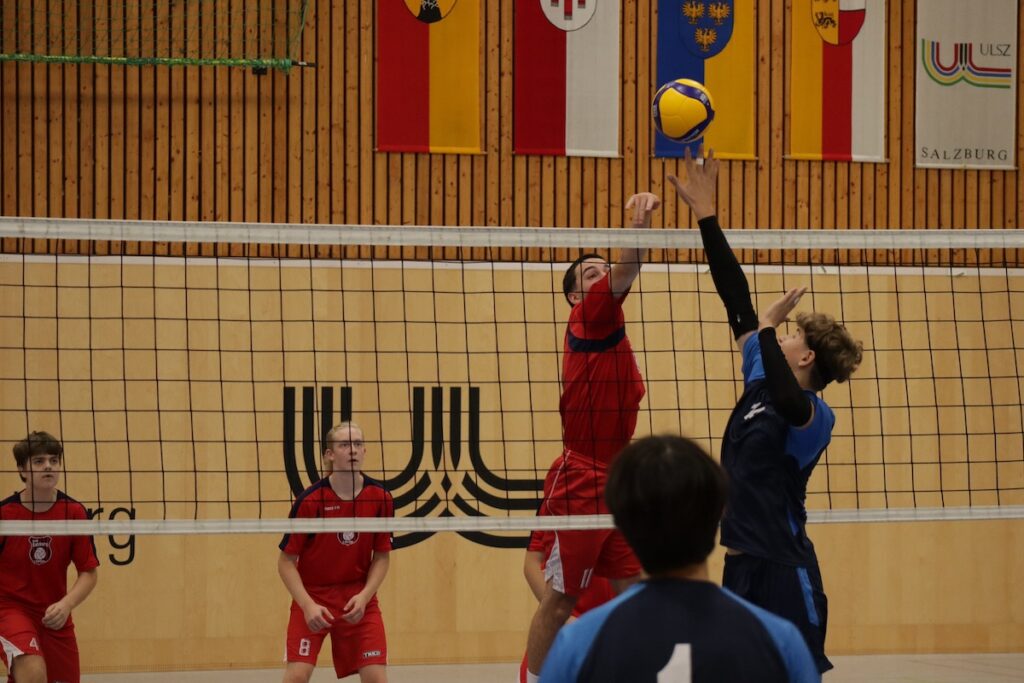
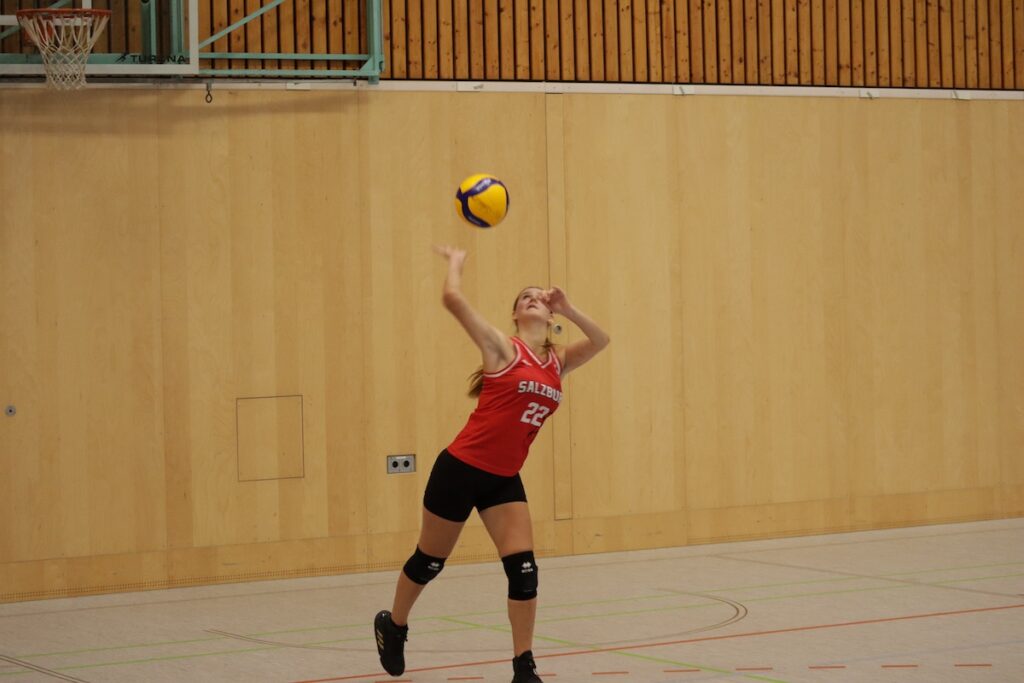
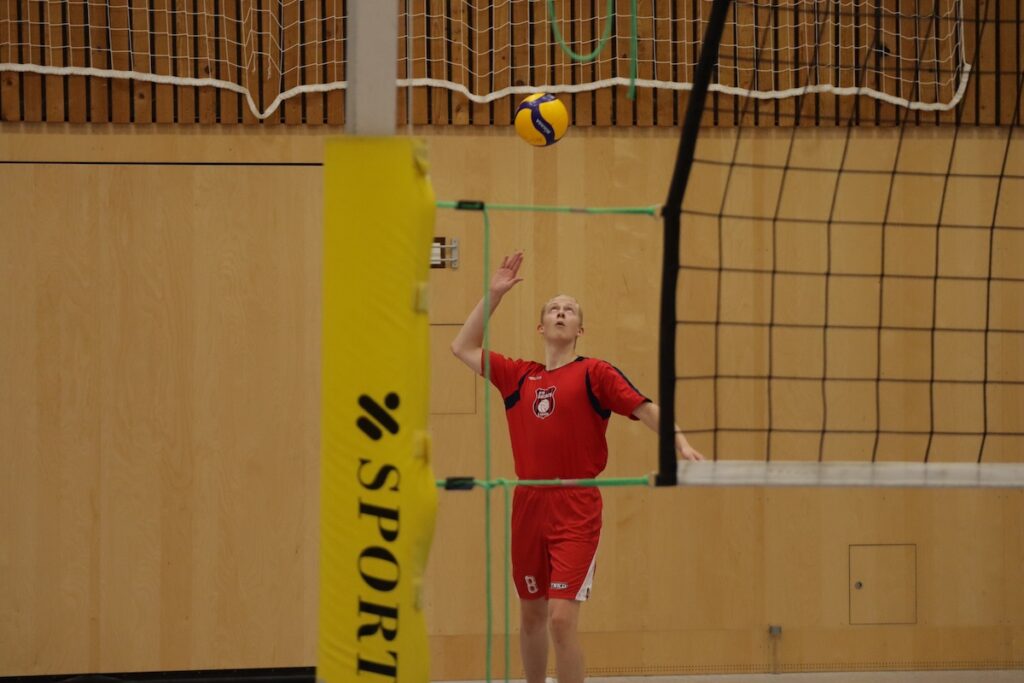
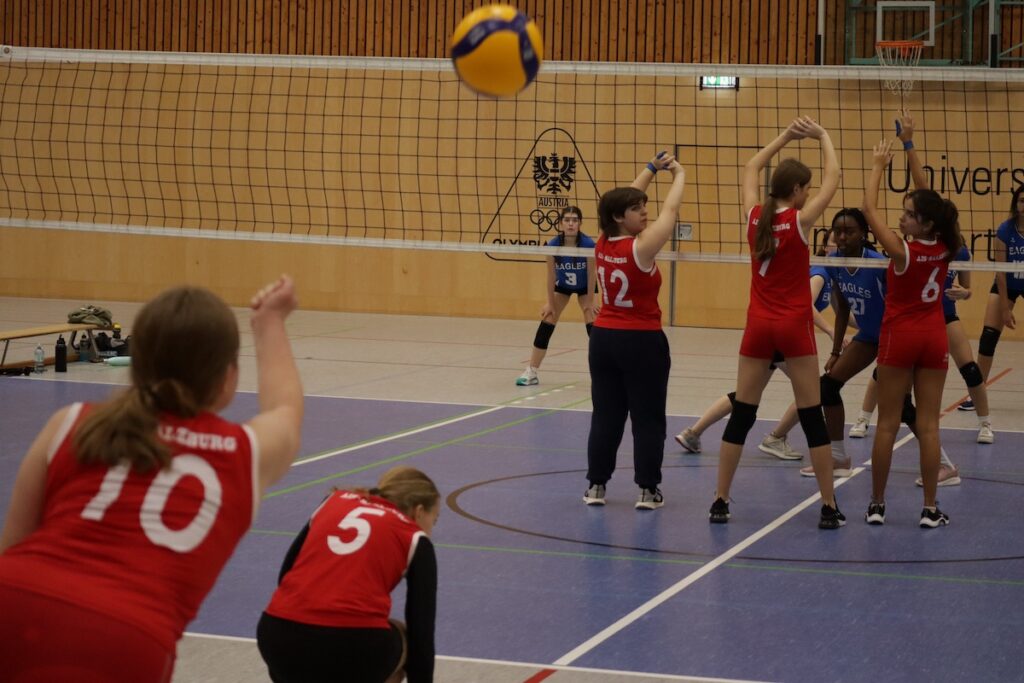
A group of 77 students and 8 staff returned Sunday from what is said to have been a “fabulous” fall excursion to Venice.
“The weather was perfect, the city was beautiful, everything was planned meticulously thanks to Kevin (Fox), and the kids were really lovely,” said the Dean of Students and wife of Kevin, Laura Fox.
“Venice is an iconic city and it felt surreal at times to be floating along the grand canal with our students. It made me realize how lucky we are to work here and how lucky everyone is that the school provides these experiences. The kids often communicated to me that they felt very fortunate.”

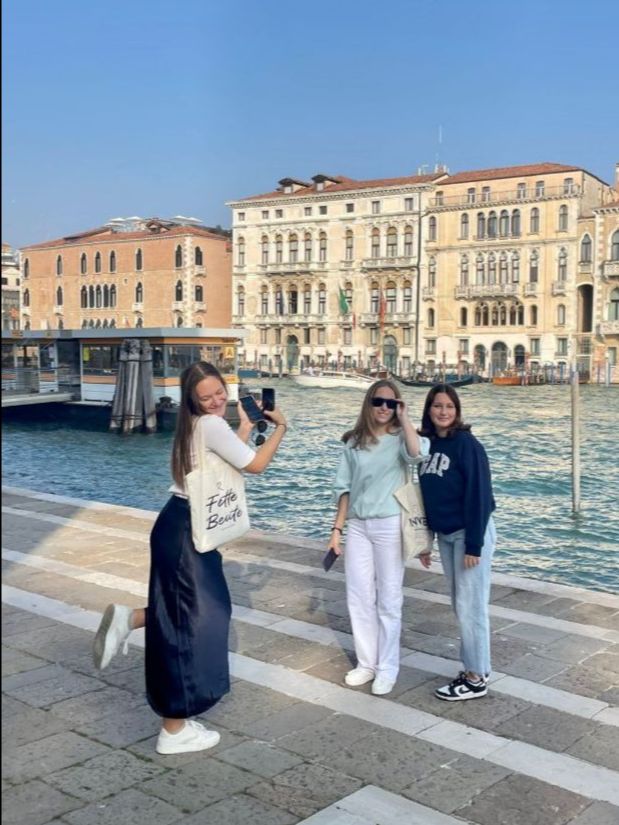
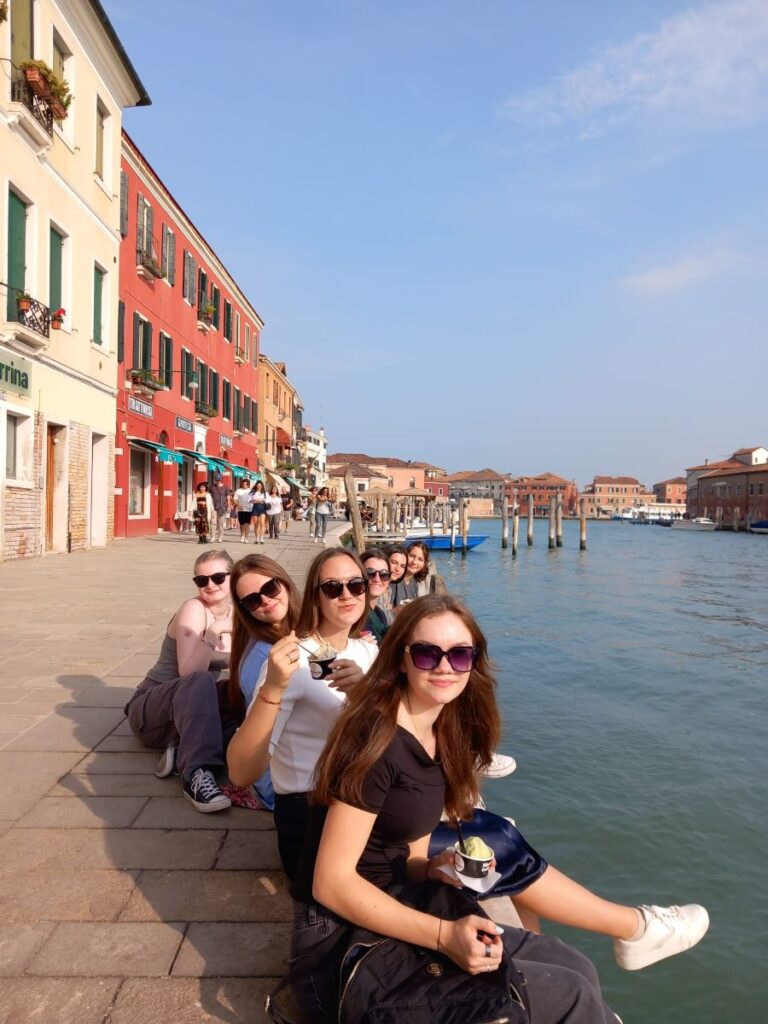
Mr. Kevin Fox, the excursion coordinator, flawlessly executed—with the help of the entire staff—a great deal of logistical coordination to pull off another successful excursion for a large group. Weeks prior to the excursion, the 77 students who signed up to participate—included in the tuition of boarding students—chose between a number of activities in and around Venice daily based on their interest level. Mr. Fox then spent weeks placing students into activity groups and planning the various activities, which changed twice daily in the morning and then again in the afternoon following lunch. At all times, there were four different groups of students with at least two staff members spread throughout the city as they visited museums, cathedrals, monuments, and neighborhoods, or were on walking tours.
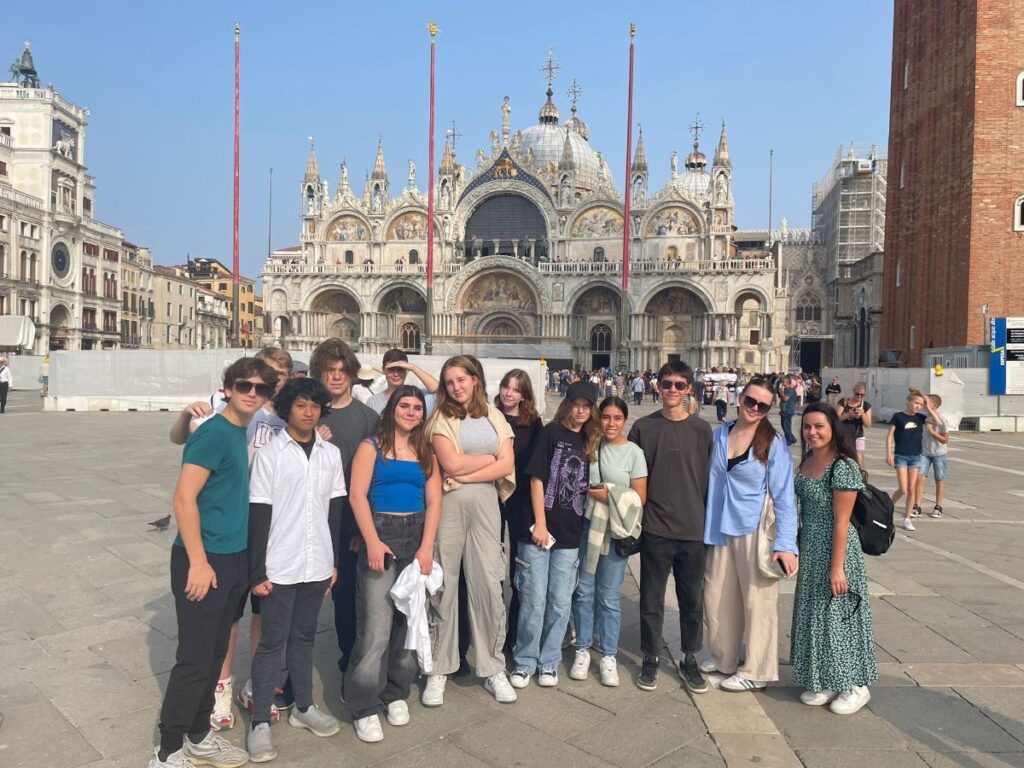
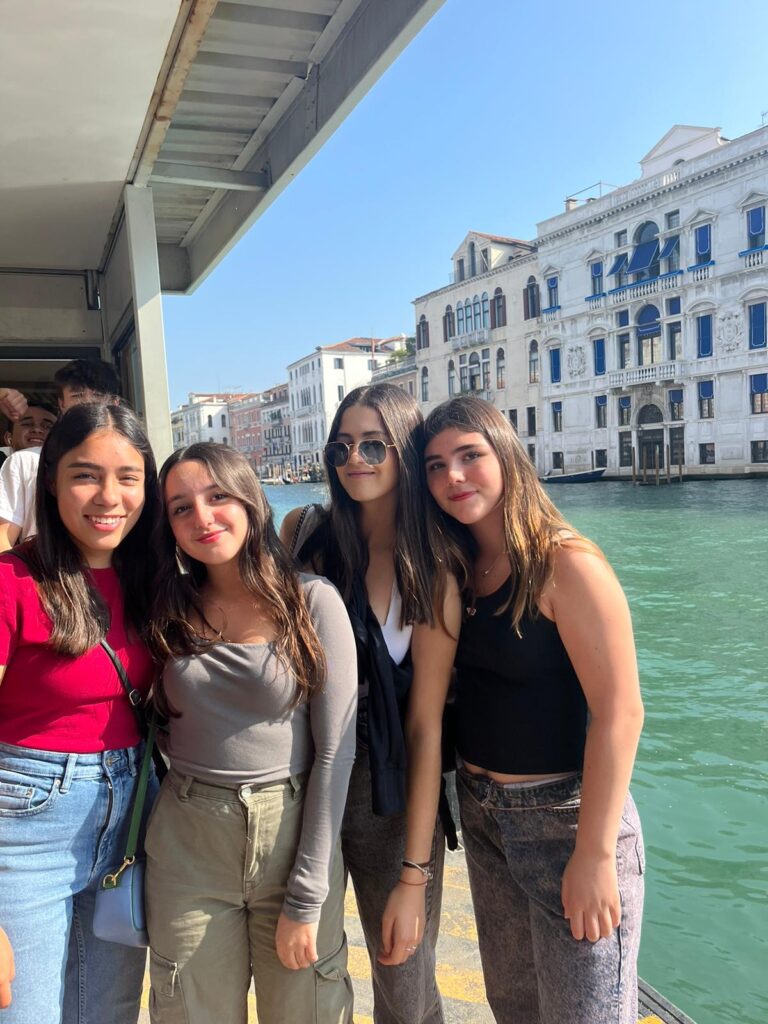
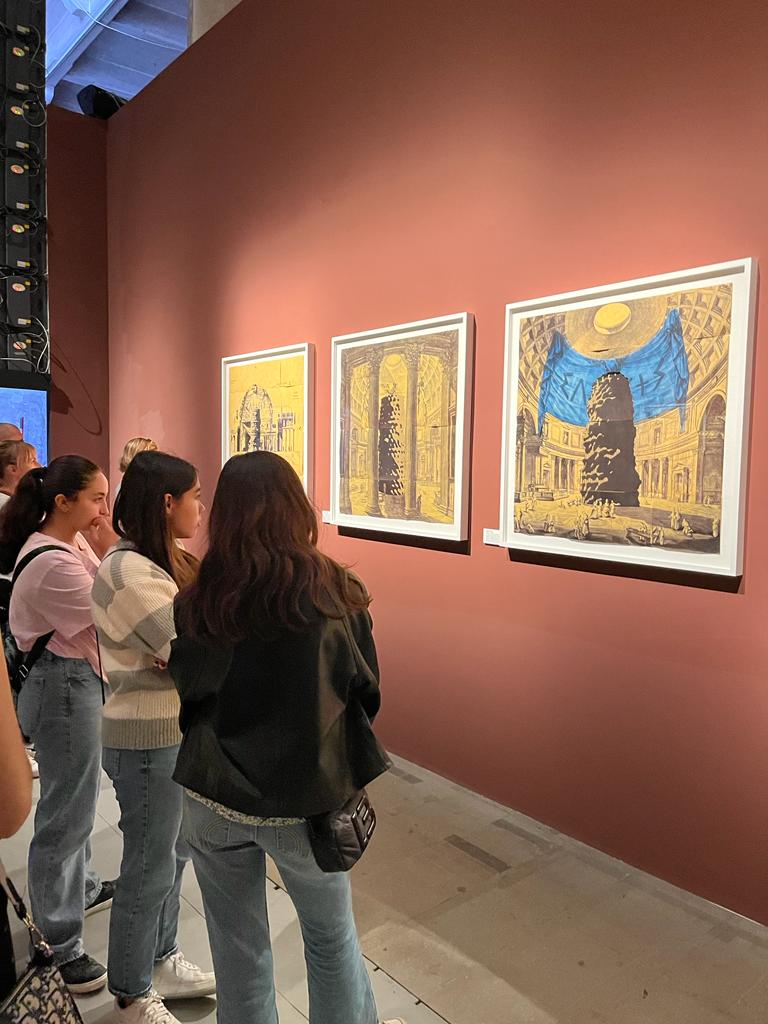
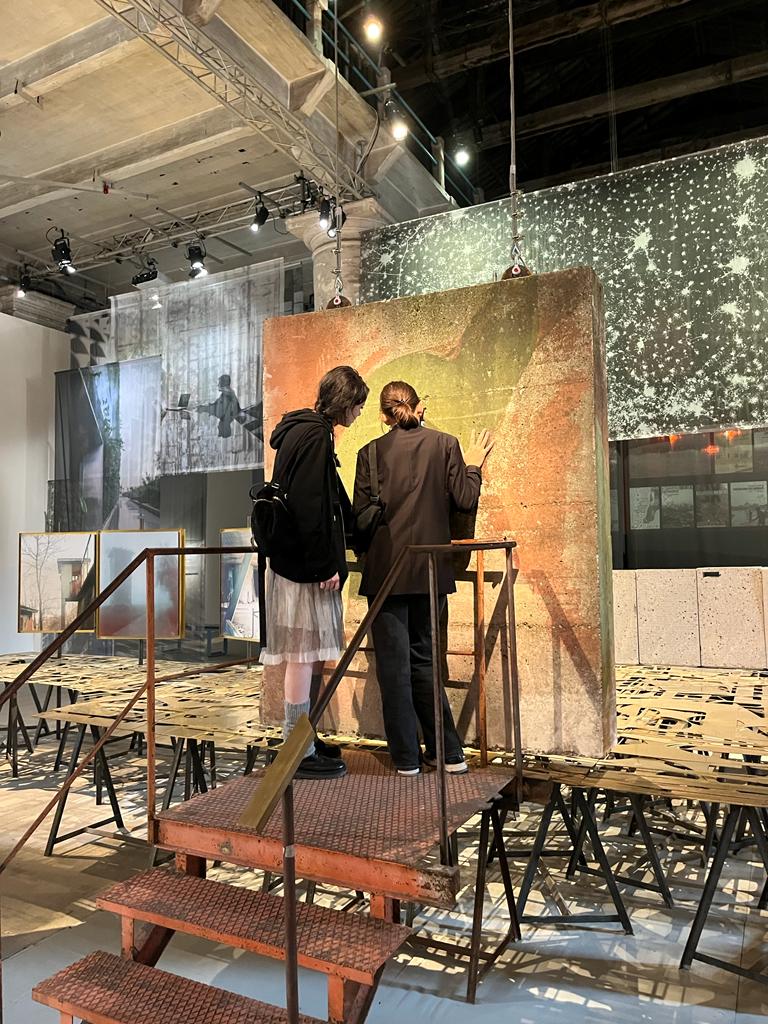
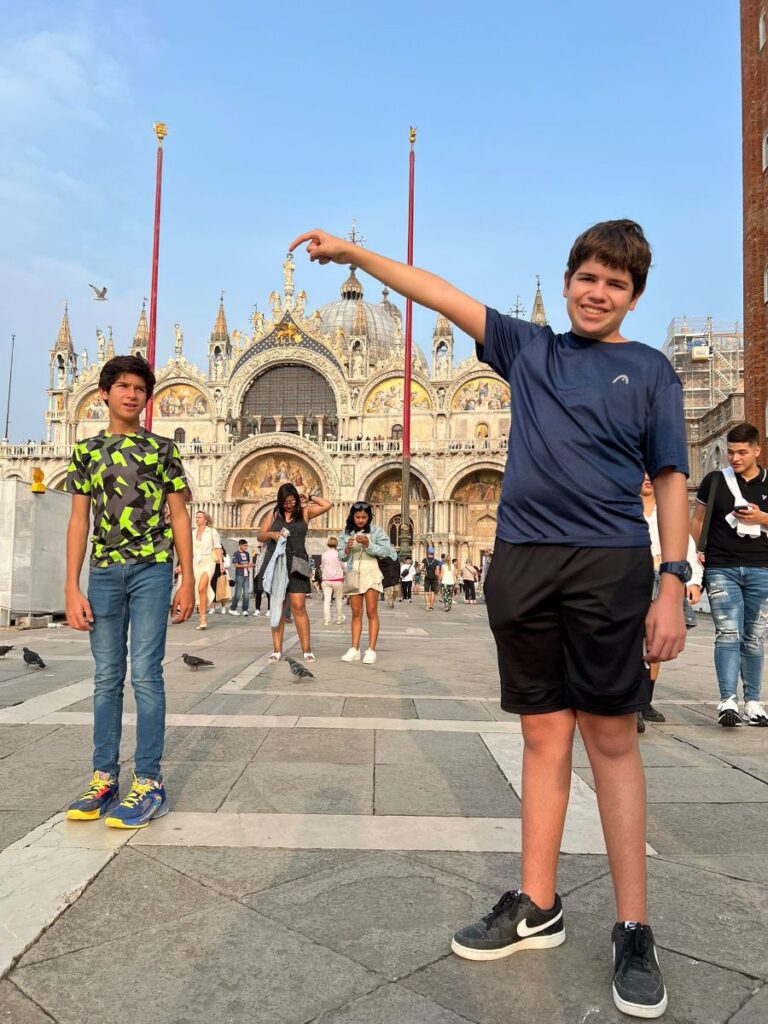
“We were like a well-oiled machine. We just know each other so well,” said Mrs. Fox, of the entire staff on the excursion which included resident assistants Abby, Arabella, Ali, Nick, Matt, and Tom Henry.
Following activities, the groups would reconvene for dinner together and then would have the evening option to stay on the island of Lido (where the hotel was) or join a group that took the ferry back over to Venice.
On Saturday afternoon, Mr. and Mrs. Fox took 21 students for a 2-hour bike ride around the island, which included a stop at the beach for a swim.
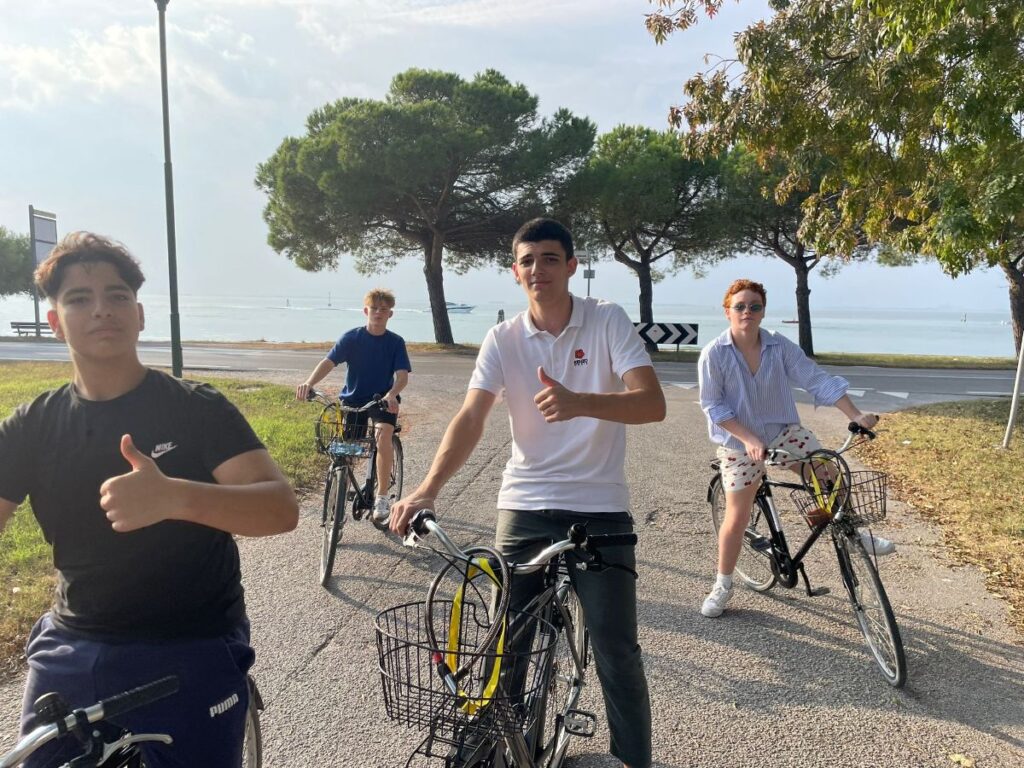
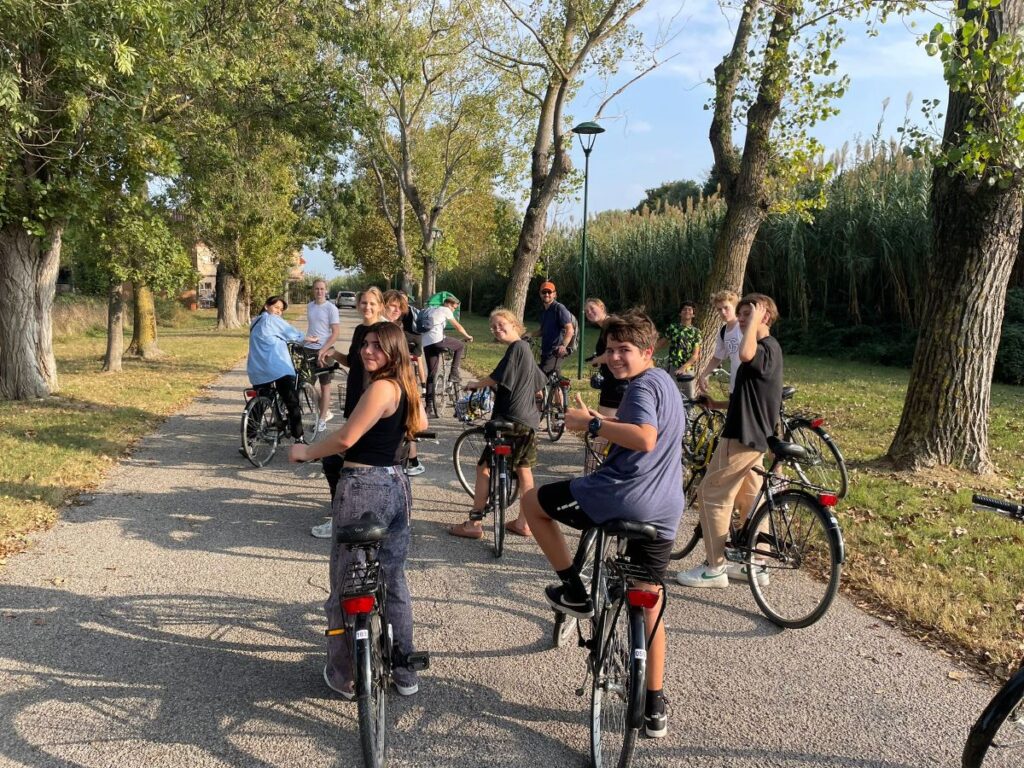
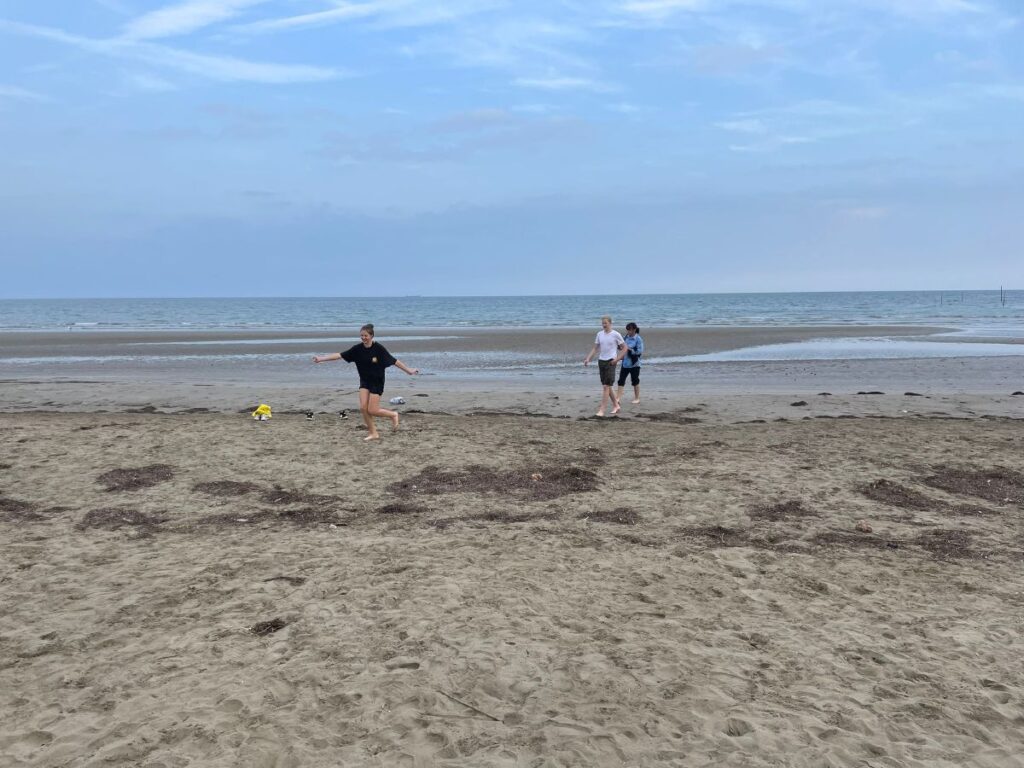
“There were several moments as the sun was setting and we were all riding and laughing with our students that I thought to myself “I am going to remember this moment for the rest of my life,” said Mrs. Fox. “It was really special.”
At midterm each trimester, we take a moment to review the first half of the term and recognize those students who have successfully fulfilled the academic, community service, enrollment, and behavioral expectations as outlined in the AIS-Salzburg Student and Parent Handbook.
Students who have met these qualifications are recognized in two categories of distinction: Senior Scholars and Distinguished Students. Listed below are the privileges that accompany these distinctions:
Senior Scholars
- One evening study hall per week free
- Seniority in room and roommate selection and bus seating on excursions and outings
- Special commendation letter to the parents
- Friday & Saturday evening curfew is extended by 1/2 hour
- Recognition at trimester awards dinner
Distinguished Students
- Released from study hall on Thursday evenings
- Rooming and roommate selection and bus seating (following Senior Scholars) on excursions
- Special commendation letter to the parents
- Friday & Saturday evening curfew is extended by 1/2 hour
- Recognition at trimester awards dinner
In the slideshow below, are the students who have achieved each status as a result of their efforts in the first half of the fall trimester.
Over the past few weekends, we have taken advantage of beautiful weather by scheduling numerous outdoor activities. Photos from the activities during recent weekends are as follows: a day trip to 900-year-old Hohenwerfen Castle, a hike up to Mönchsberg in the city center of Salzburg, arts and crafts with children at the Salzburg English Center, quesadilla barbecue led by Mexican students Marybel, Barbara, and Valeria, a hike up Nockstein mountain in the beautiful Salzkammergut region, yoga at the park, and finally an evening of disco bowling.
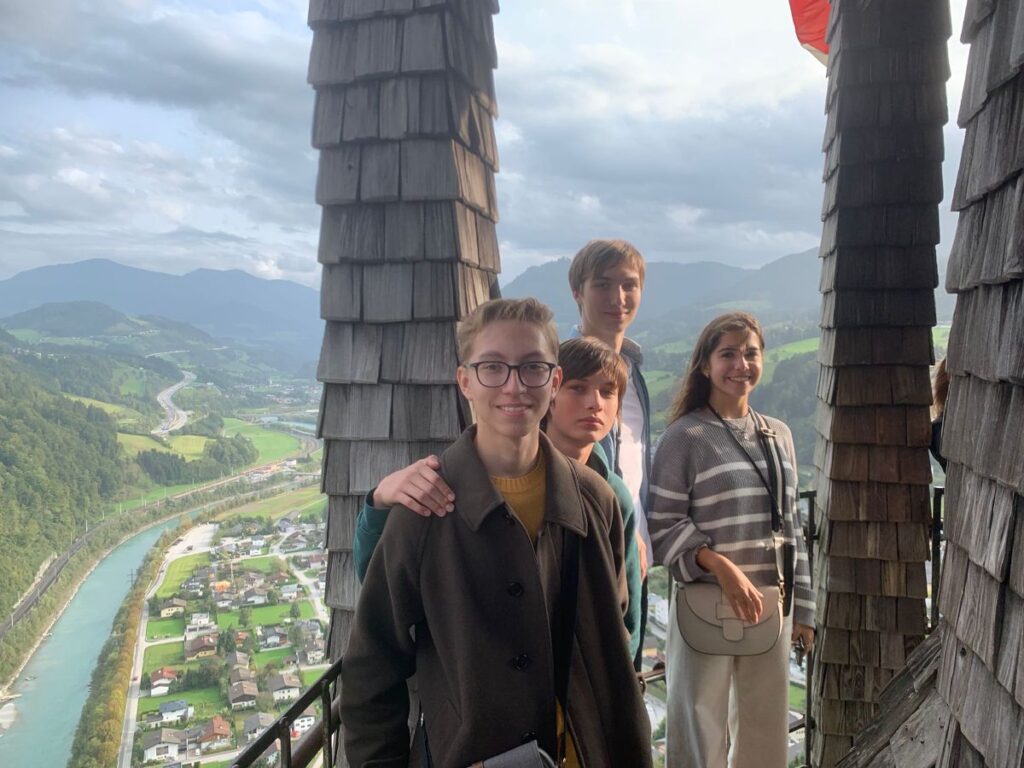
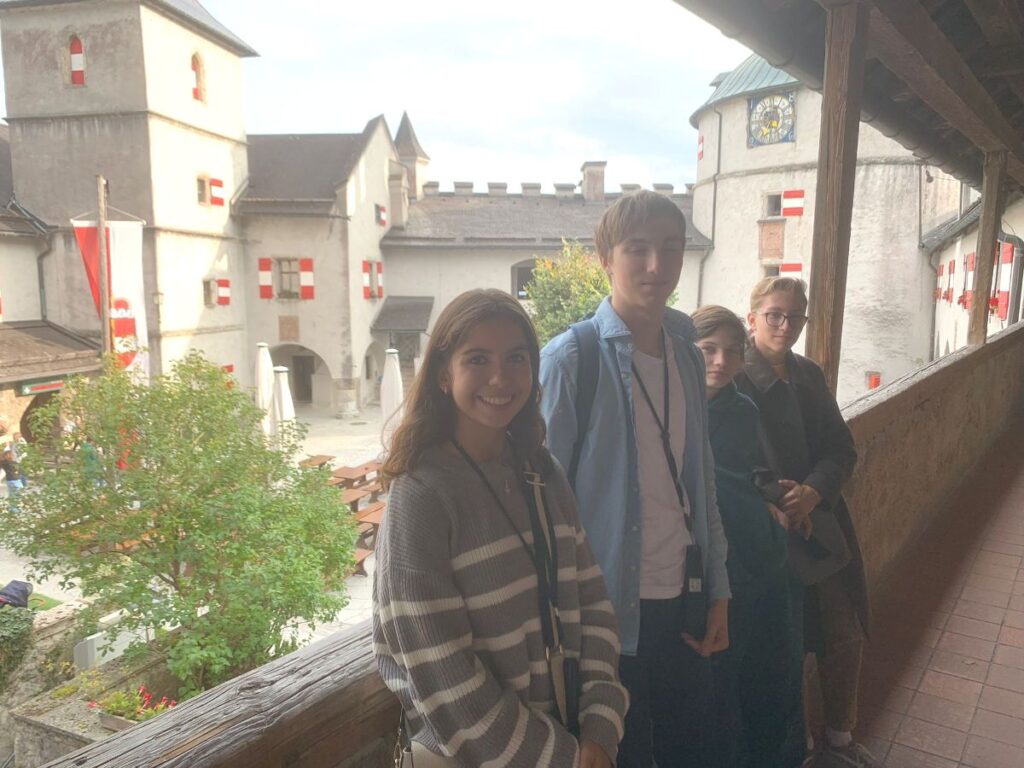
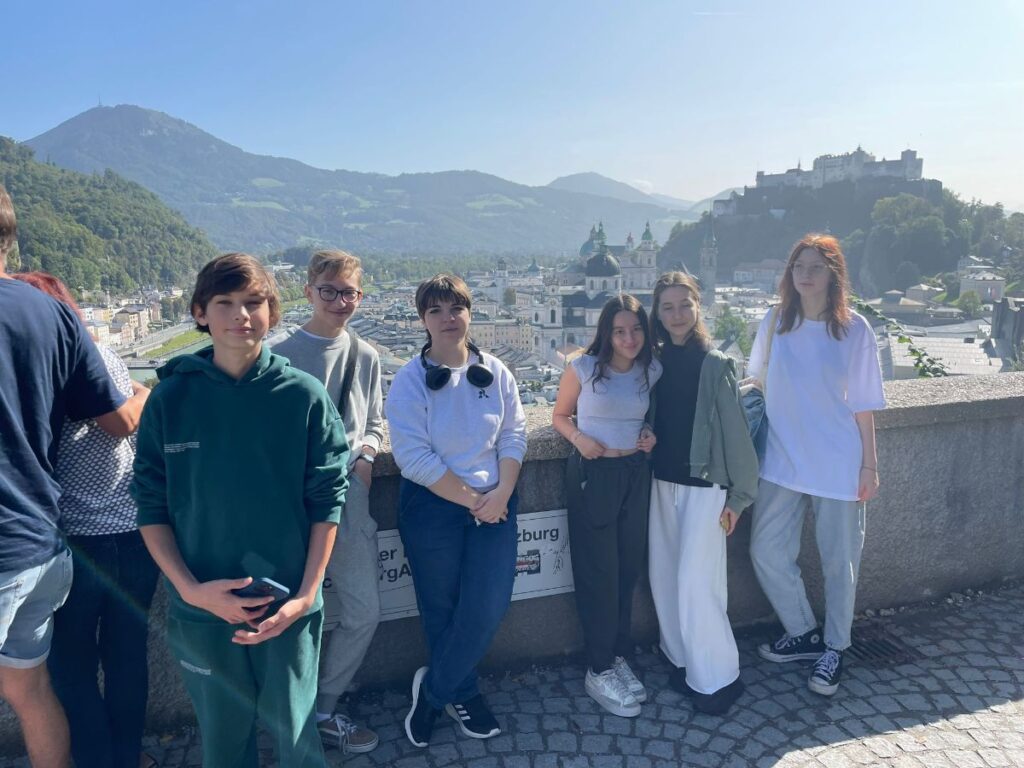
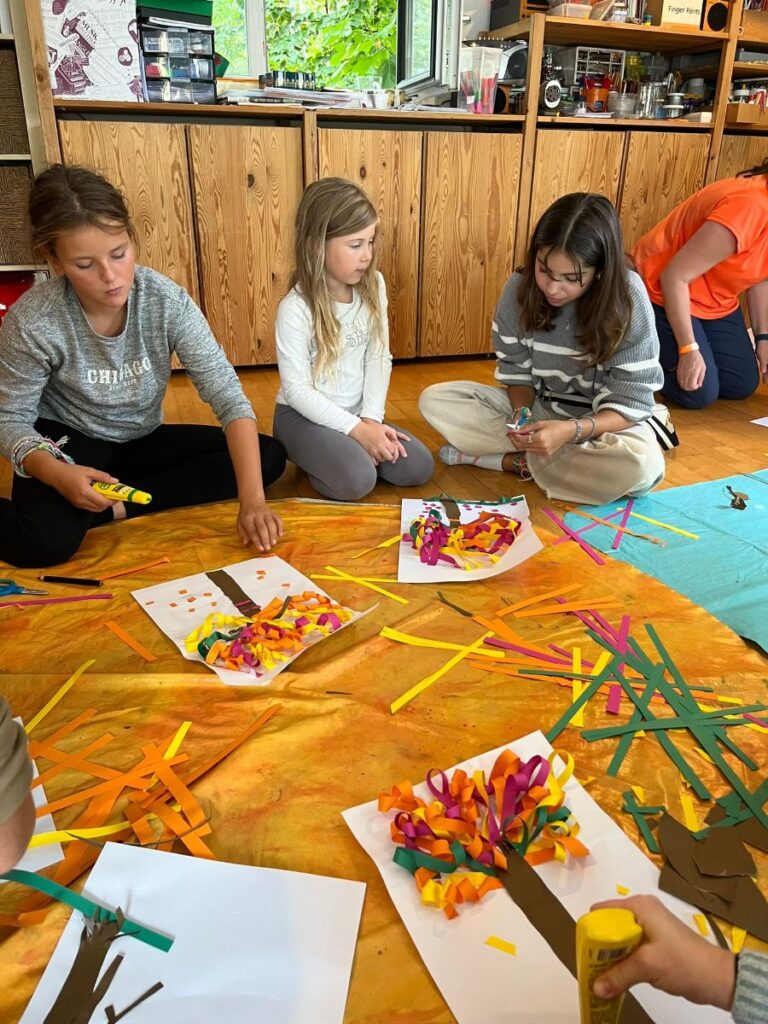
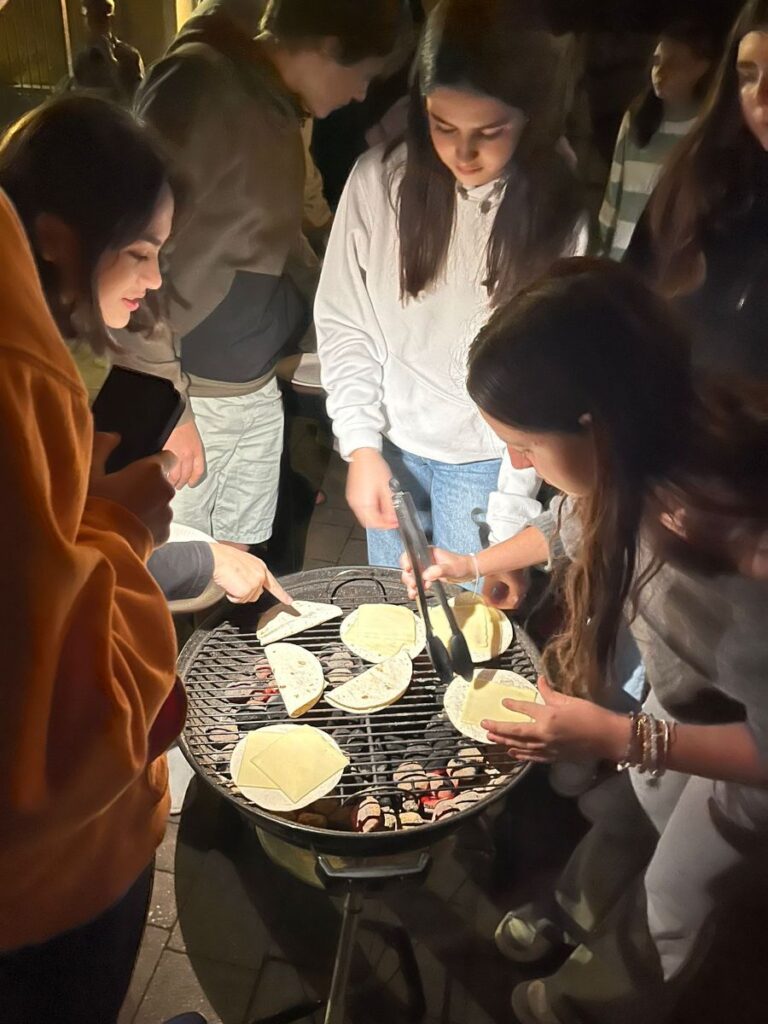
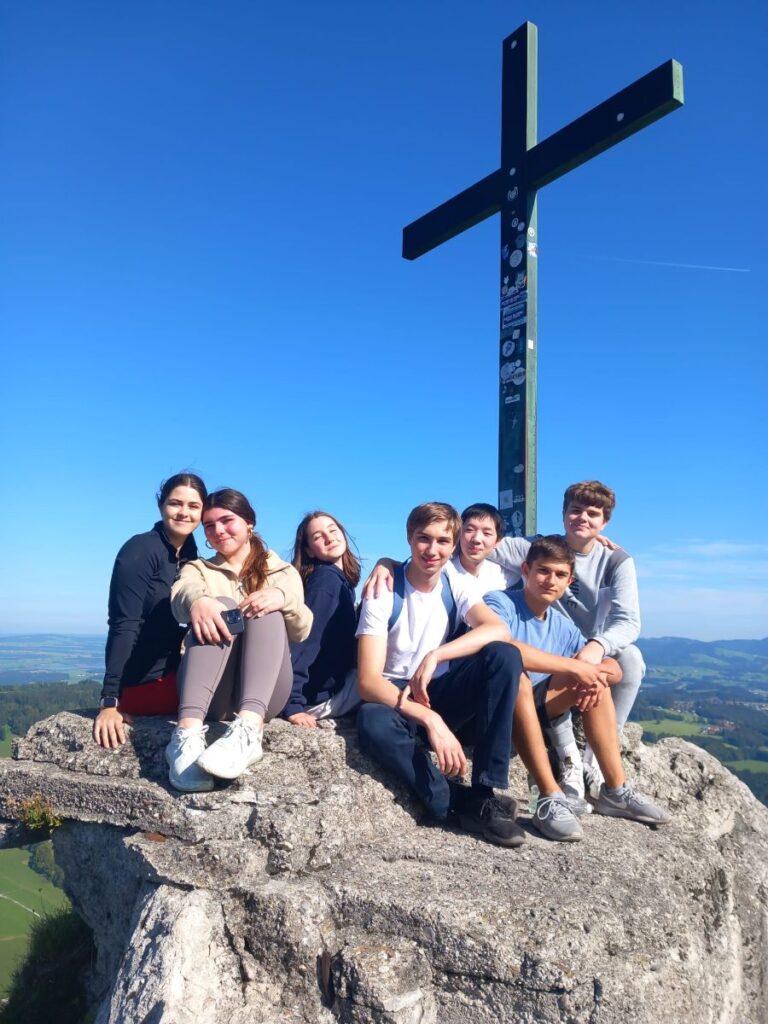

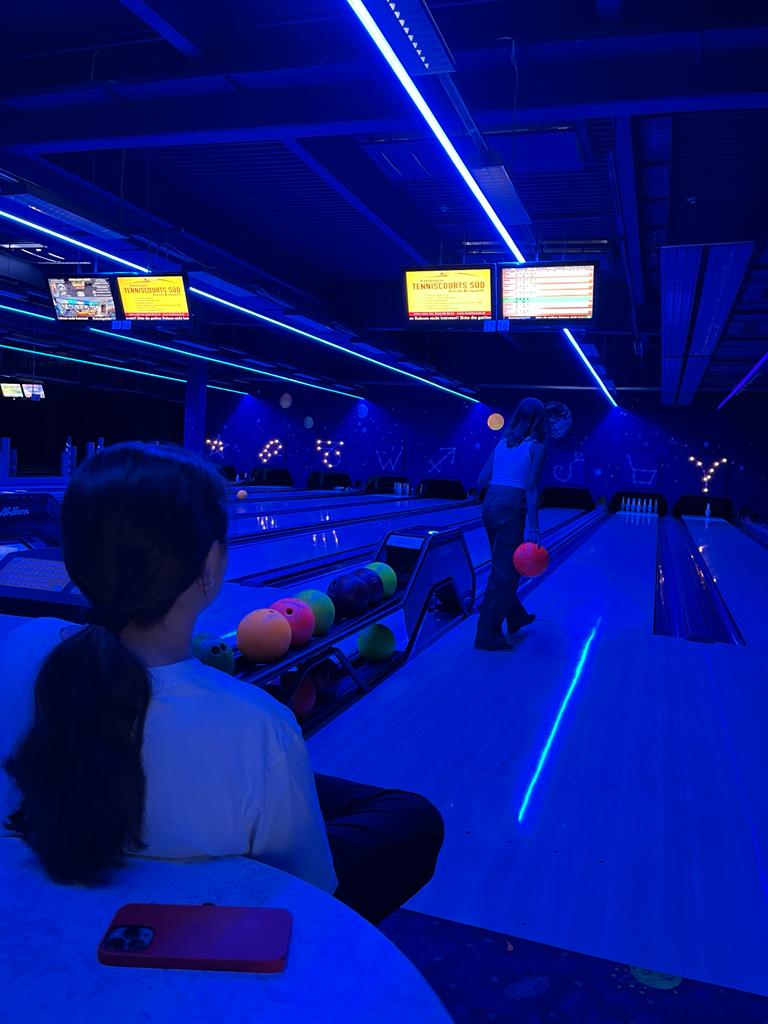
This past Saturday, 33 students suited up in an AIS-Salzburg Lions’ uniform to represent our school at the Danube Valley Athletic Conference mid-season volleyball festivals in Vienna and Budapest. The girls’ varsity and junior varsity boys’ teams competed in Budapest, Hungary, while the junior varsity (JV) girls’ team joined the conference festival tournament in Vienna. The purpose of the DVAC mid-season festivals is for teams to compete against others they would not normally compete against, given geographic locations in central Europe. There are no trophies or placements decided; it is simply an opportunity to play and compete, meet new people, and bond together as a team.
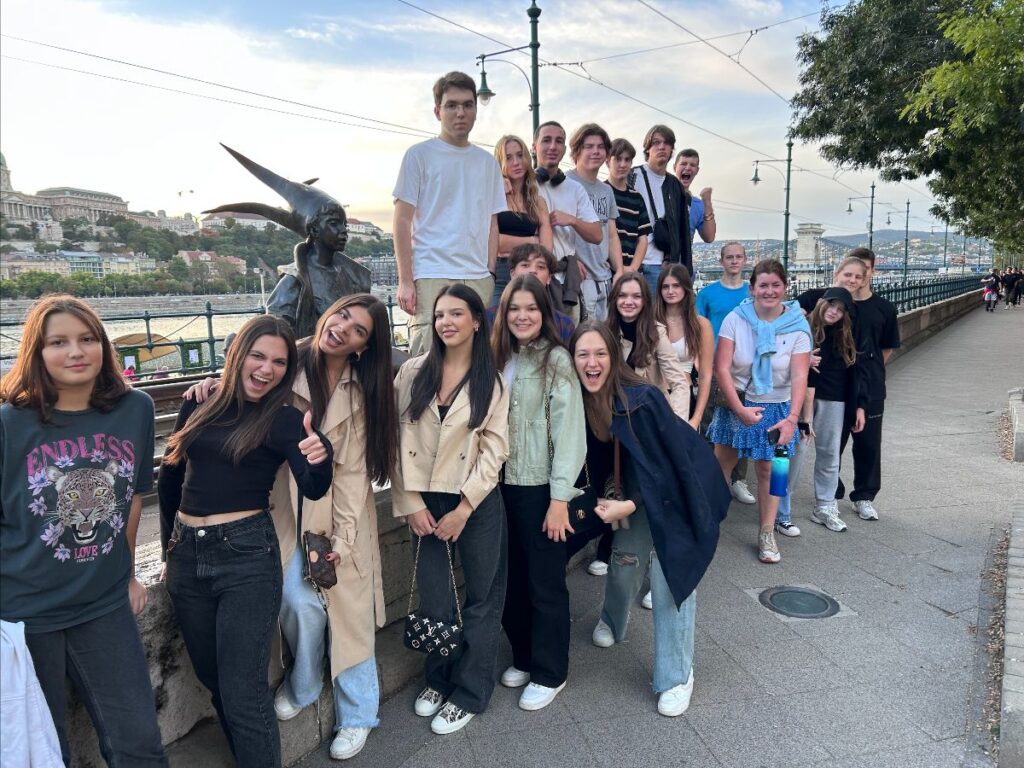
With that in mind, this past weekend was a great success, highlighted by a rare thing at our school: the ability to field both a JV and varsity girls team for this event. Of the 11 girls who traveled to Vienna with our JV team, nearly all were absolute beginners, playing in their first-ever scholastic volleyball competitions. Although the team did not win a game, they took a big step forward and gained valuable experience that will help them progress within the game. For some, perhaps the beginning of what will become a long-term engagement in future volleyball competitions in a Lion’s uniform.
Our boys’ volleyball team opted to compete at the DVAC JV level, with a mixture of experienced players and players new to the game. The boys won two of three games and in their sole loss, narrowly missed going undefeated after losing both sets by razer-thin scores of 24-26 and 25-27.
The varsity girls’ volleyball team solidified their spot as a contender for the DVAC championship in November by also winning two of three games, losing only to the defending champions from ICS Budapest in two close sets, 20-25 and 21.25. In both games, the Lions remained inconsistent in their play.
We invite you to view the photos below from the trips to Vienna and Budapest. They are as follows: players pose at the Danube boardwalk in Budapest, junior varsity girls reluctantly smile following three losses as they pose in front of St. Stephan’s Cathedral in Vienna, the boys’ volleyball team bond while waiting for the tram in Budapest, the girls’ JV volleyball team in action, the varsity girls team send love to the JV girls before their first match, coach Burns poses with Teodora, Julia and Egla in his new Hard Rock Cafe Budapest cap which they purchased for him as gift of appreciation.
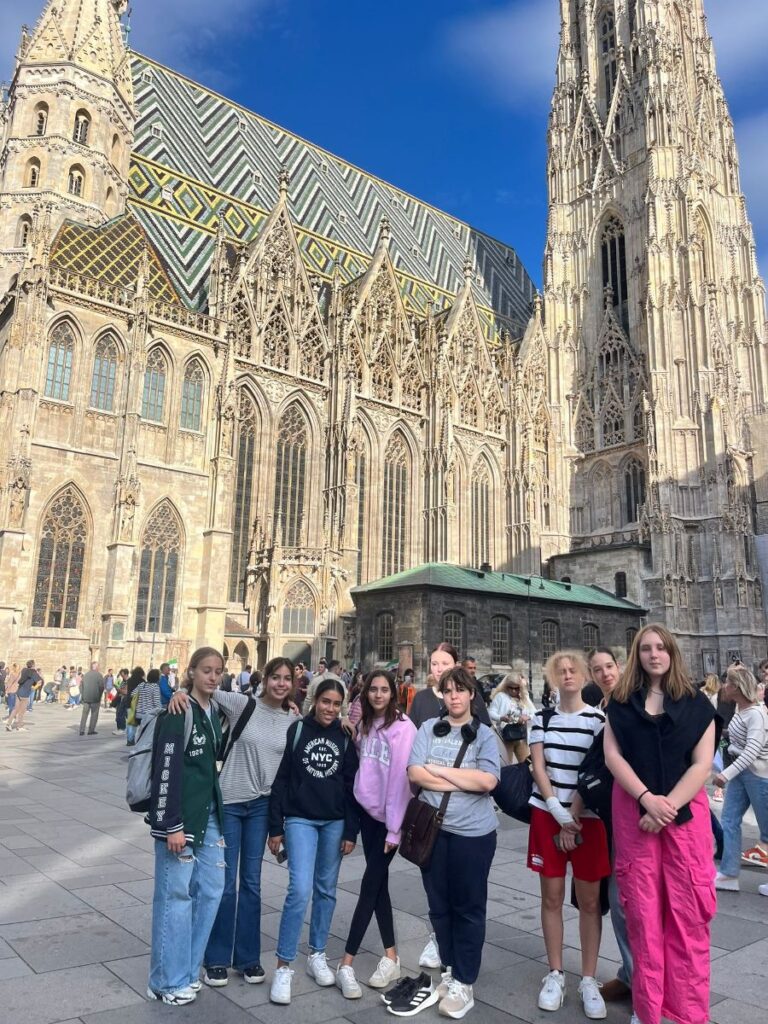
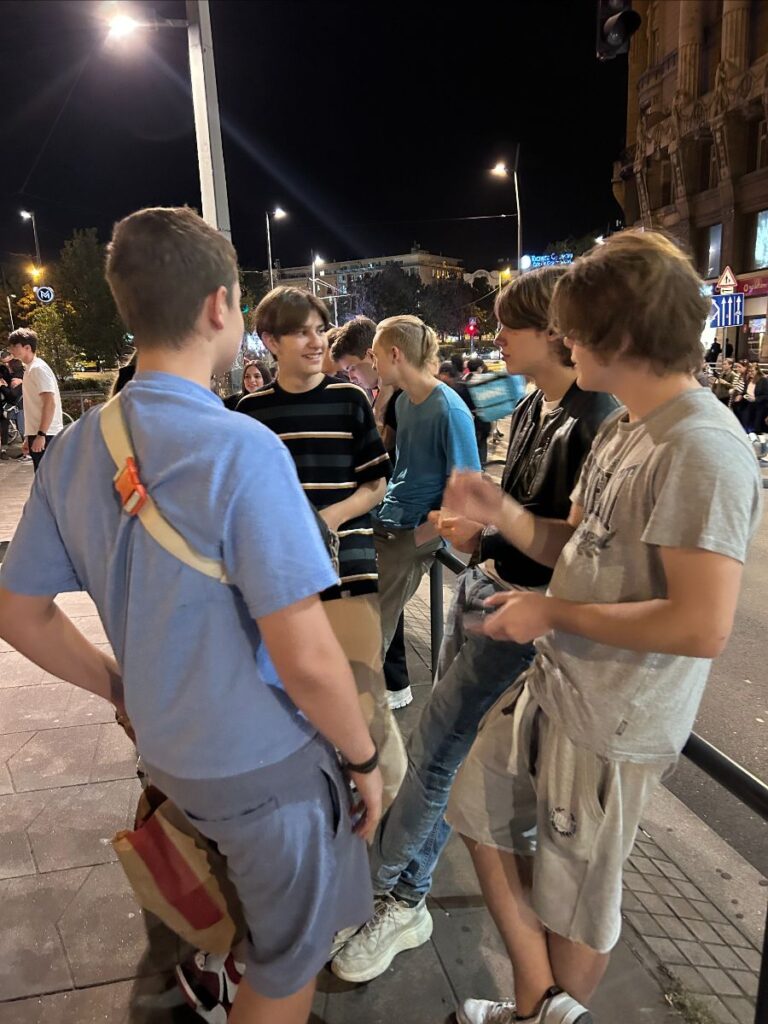
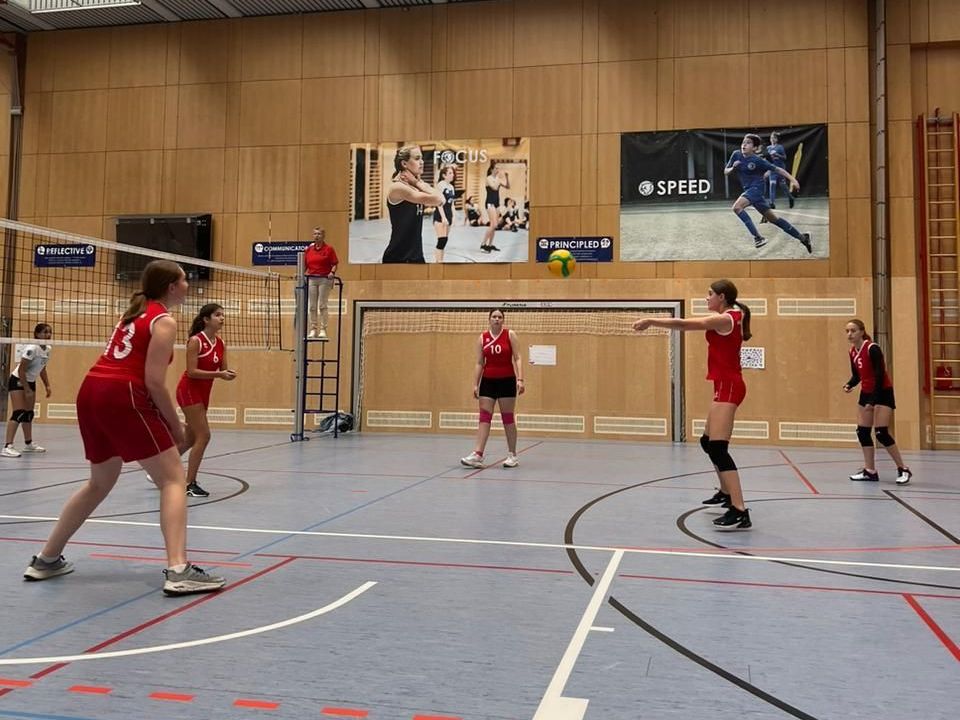
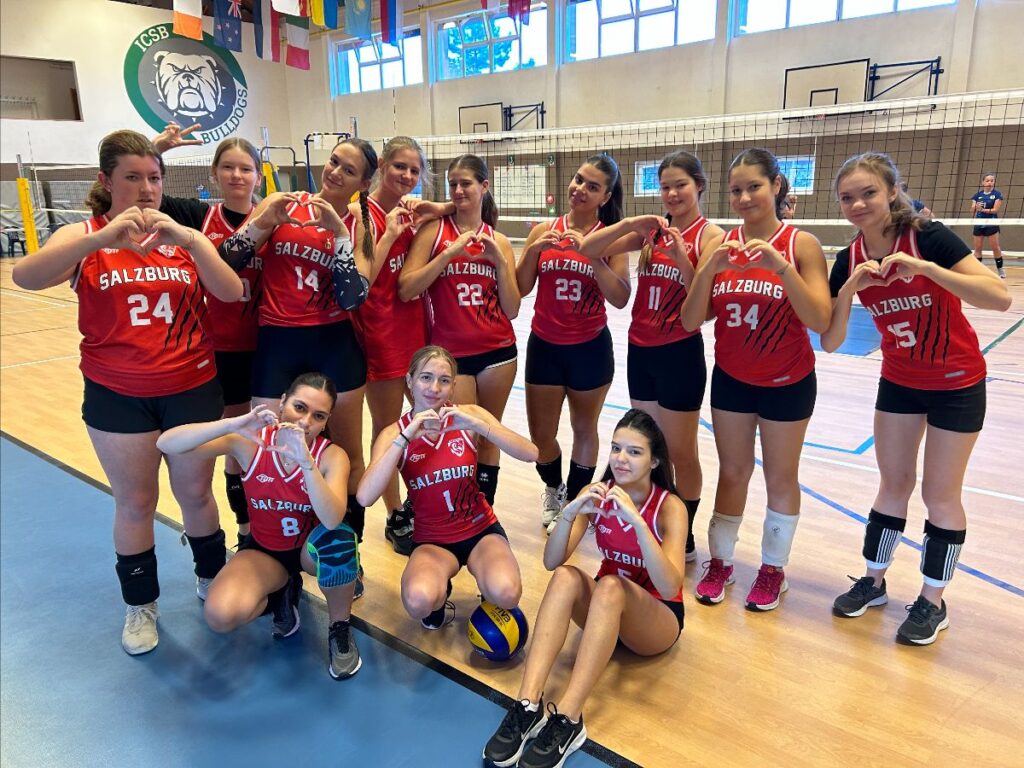
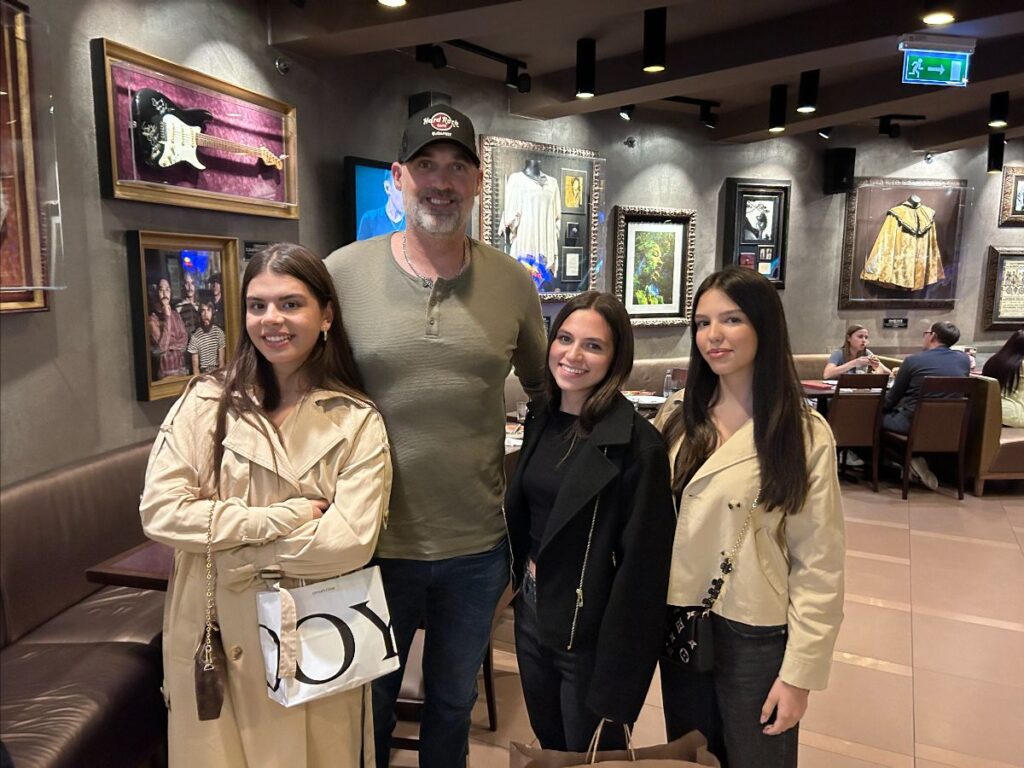
Diego O.L. is in his second year at AIS-Salzburg, a rare thing for Mexican students who typically limit their high school abroad studies to one year. However, Diego enjoyed his first year abroad so much that he convinced his parents to let him return for a second year. Also, Diego discovered a desire to learn the German language, even taking a course in the summer so he could jump from German 1 to German 3 in his sophomore year. We invite you to watch the video interview with Diego below.
In AP® Biology, students have been studying organic molecules, specifically the four classes of biological molecules —the macromolecules— carbohydrates, lipid, proteins and nucleic acids. Molecules in each class will have specific features and structures particular to that class of molecule. Being able to recognize the structures, their similarities and their differences which will influence the structure and function of these molecules, is an important skill to have prior to examining these structures and their functions in living things.
We invite you to watch the video below, where students were given cards with the structural diagrams of 45 unidentified macromolecules which they sorted according to their structure, then determined what specific properties they may have, dependent on what elements are included in the macromolecules or how the atoms are arranged.
This past weekend, 19 students were accompanied by resident assistants Ali and Arabella for a day excursion to Vienna. Upon arriving by train at about 10:30 AM, the group walked to the famous Stephansplatz, which is the very center of Vienna where the towering St. Stephan’s Cathedral —and one of the tallest churches in the world— is located. The group spend the next two and a half hours eating lunch and browsing shops along the Kärntnerstraße, one of Vienna’s most active restaurant and shopping streets.
The group then reconvened to travel to Prater, a giant amusement park located in the center of Vienna.
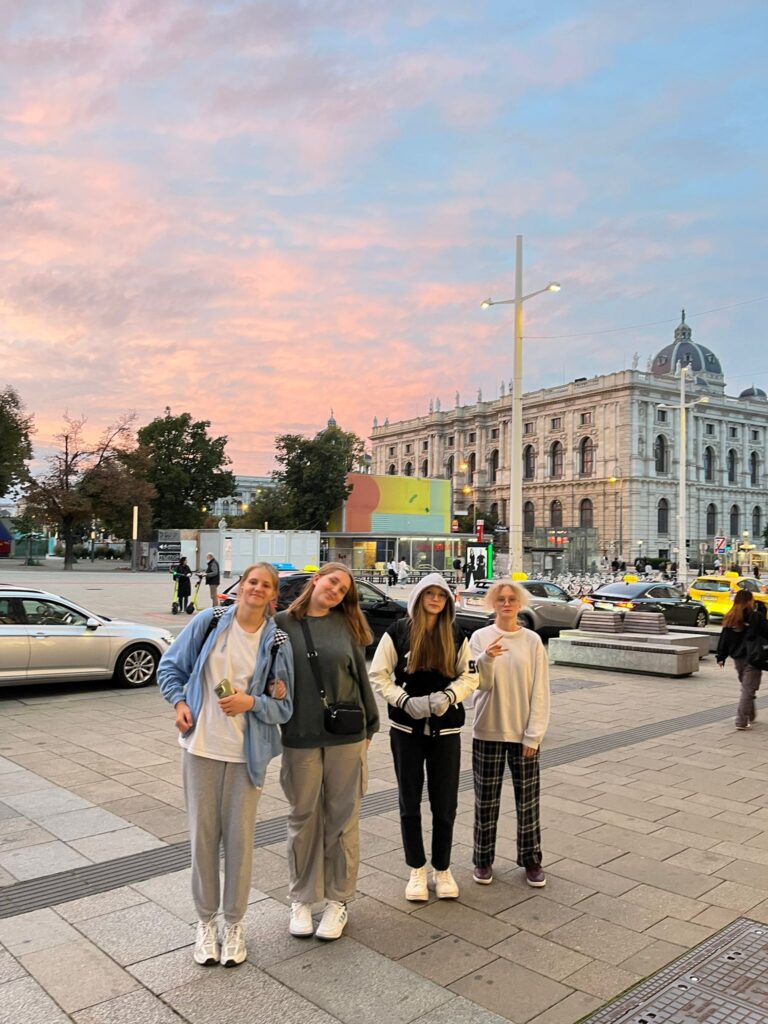
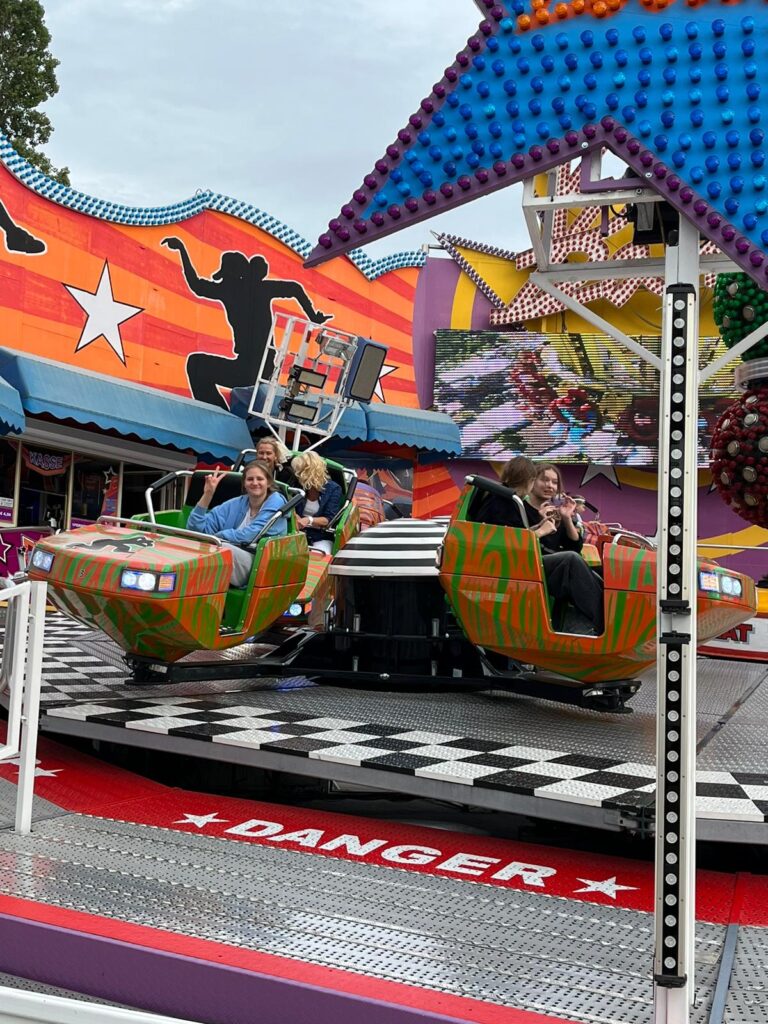
After almost three hours exploring Prater, the group made their way to the Mariahilferstrasse, Vienna’s most famous shopping street where they spent another two hours shopping and eating dinner before catching the 19:50 train back to Salzburg.
“The Vienna day trip was very successful due in large part to the great energy of our students,” said group leader RA Ali. Despite a long day and busy itinerary, everyone was in good spirits on the train ride home as they raved about the fun rides at the Prater or the many shopping options on Mariahilfstrasse.”
Every school year, returning students walk through the doors at AIS-Salzburg and notice a number of changes. Sometimes these changes are welcomed and sometimes less so. Needless to say, changes are a part of life and although the core of our small community stays relatively the same every year, there is often molding and restructuring that needs to take place as we adapt to a number of variables, such as student body distribution, changes in staffing, building renovations, etc. Below are the more notable changes that the new school year will bring forth.
Changes to the Teaching Faculty
Probably the most notable change this year will be the absence of Mr. Agardy, who retired at the conclusion of the 2022-2023 school year. Mr. Agardy has been with us since 1986 and was a pillar within our team of high-quality educators. Replacing Mr. Agardy is Scott Gillette, who has been teaching for nearly 20 years and is experienced teaching internationally in a number of countries in the eastern hemisphere of the globe. Scott will be teaching AP European History, AP Human Geography, and two sections of AP Psychology. Mrs. Kasberger will be taking over for Mr. Agardy as College Counselor.
Also departing the school is Mrs. Devon Anderson and replacing her will be John Gahan. Mr. Gahan has also been involved in education for 15 years and will be the instructor for AP English Literature, English 11 Literature & Composition, English 10 Literature & Composition.
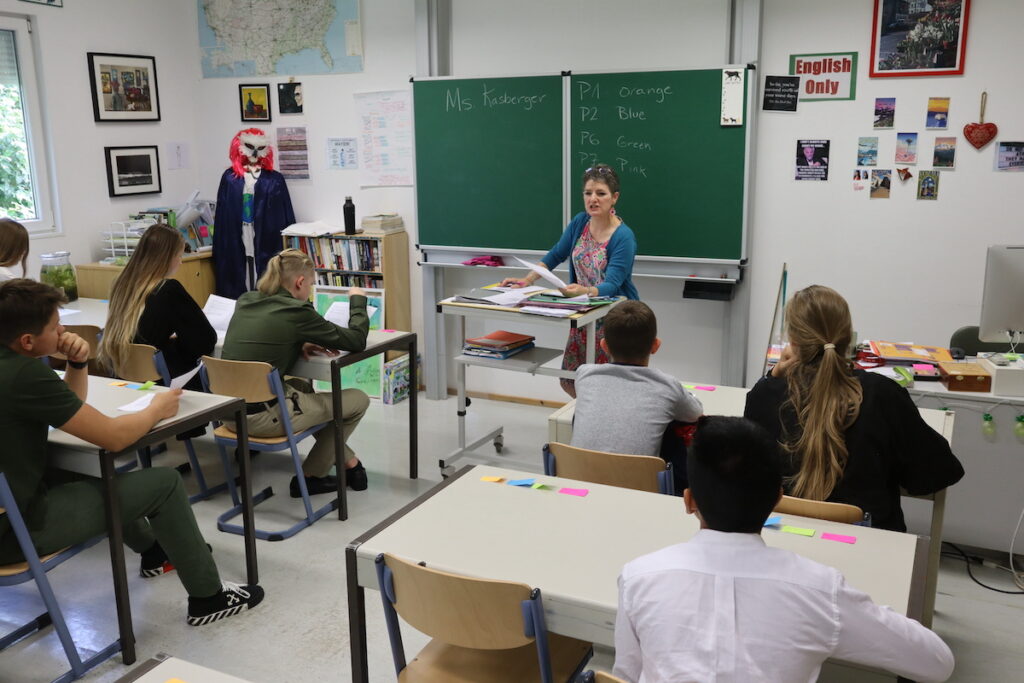
Photo: Mrs. Kasberger is taking over as College Counselor for Mr. Agardy.
Temporary Classrooms at the Start of the School Year
Renovation to the outer building classrooms 12-15 will continue throughout September. Although this will be an inconvenience at the start of the school year, we are thankful that this project is ahead of schedule by almost a month and upon completion, there will be significant upgrades to the classrooms. For the next 4-6 weeks, classrooms in the inner building will have a packed schedule while the student lounge, computer lab, and classroom 8 in the smaller outer building will be utilized. The dining halls will also be used for a handful of elective classes during this time.
Electives Courses Moved to the Daily Academic Schedule
Already outlined in detail in a previous newsletter, is the placement of all elective courses within the daily, academic schedule of classes. This will likely be the most popular change within the student body as this will provide less potential conflict between tutorials, teachers’ office hours, sports practices, and other commitments.
Electives Courses Additions
This school year, students will have an even greater number of electives to choose from. Added to the elective course offerings are Business and Personal Finance, Kinesiology, and AP Precalculus Prep for those mathematics students who are interested in sitting the new AP Precalculus Examination in May, 2024. Returning elective courses include Drama, Studio Art, Theatre Arts, German tutoring, French Language, and Italian Language.
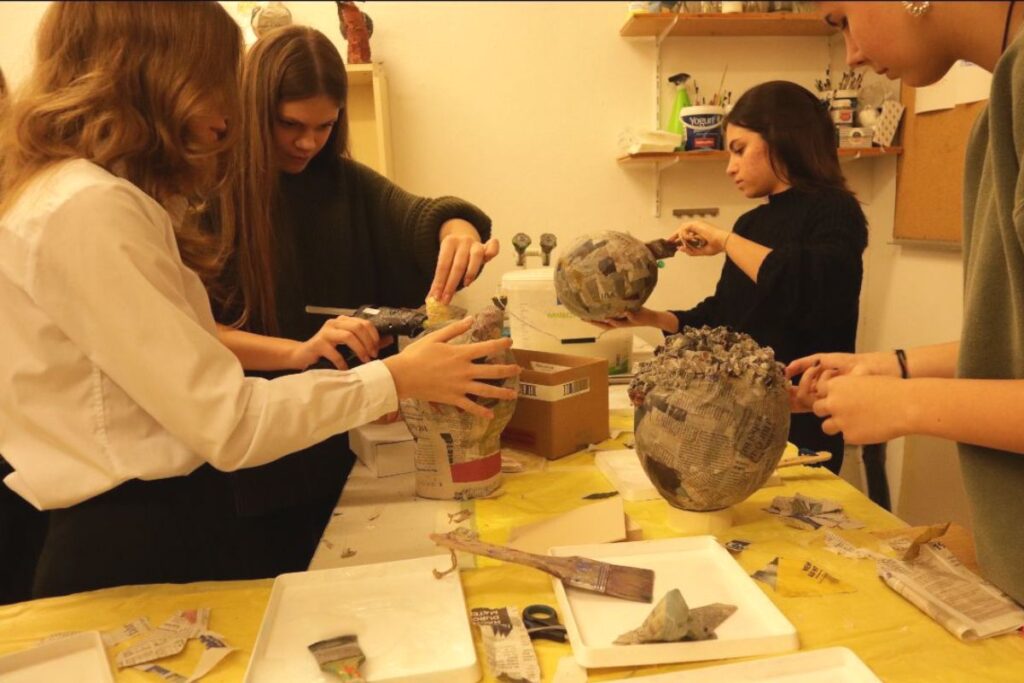
Photo: Studio art will once again be taught by Mr. Mayerhofer
AP Precalculus Added to the Advanced Placement® Program
As outlined in a previous newsletter, the Advanced Placement® program has added precalculus to their offerings and AIS-Salzburg will be offering this course at the 11th grade level starting this school year. In order to accommodate the students who are not in need of an AP-level mathematics course, we have added Mathematics 11 which should better accommodate their needs. As several university destinations in Europe require at least one AP® Examination score in a mathematics subject, this should open up diploma equivalency and acceptance to a broader number of students who may not be able to handle the challenging AP® Calculus AB course in grade 12.
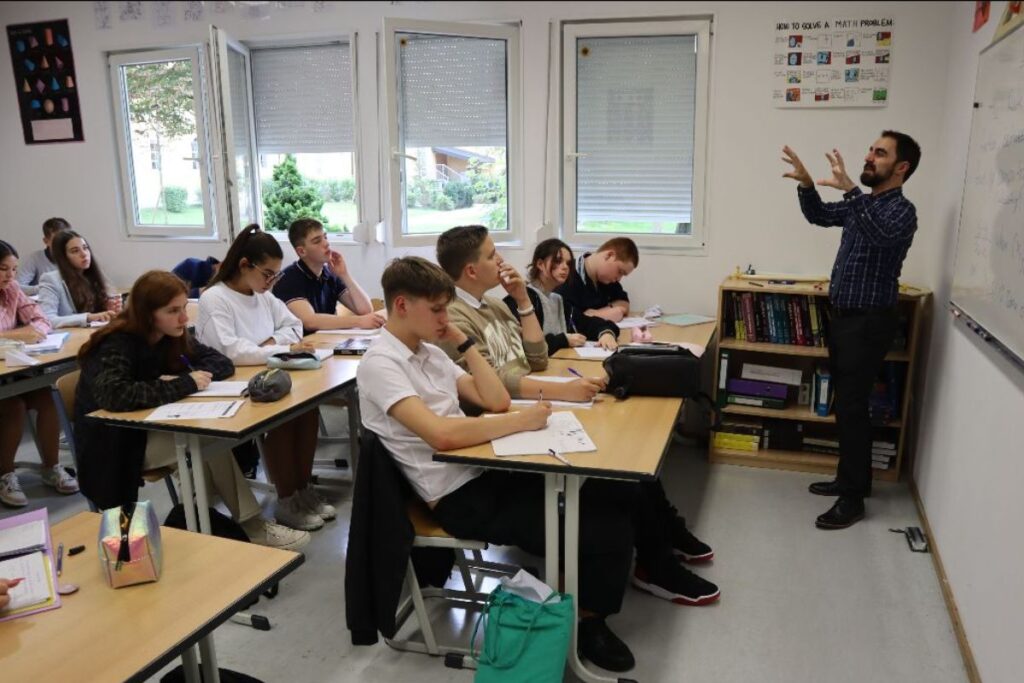
Photo: Mr. Lichty will bring his energy and love for math as the instructor for AP Precalculus.
More Court Times for Sports Teams
In recent years, the popularity of team sports has grown tremendously, which is wonderful. However, balancing court and pitch times for all of our teams has been challenging due to the frequent conflict with after-school elective classes. With electives now moved to the daily academic schedule, more time will be opened up for our teams to practice after school.
The major change for the 2023-2024 school year is the moving of the girls’ volleyball and basketball team practices to Thursdays after school instead of Fridays. This allows for the opportunity for both junior varsity and varsity teams to practice on Fridays, whether that be in volleyball or basketball.
Cover photo: Resident Assistants Nick, Ali, Matt, Abby, Arabella, and Tom Henry prepare to go on a bike ride during their time off.
For the first time in over 20 years, the entire resident staff will be returning for a subsequent school year. Typically, every year, at least one or two resident assistants (RAs) do not return, often moving over into full-time teaching positions elsewhere.
Returning for their second year as a resident assistant at AIS-Salzburg are Ali Welch, Tom Henry Nuess, Abby Lee, and Arabella Williams. Rounding out the resident assistant staff are Matt DeKryger and Nick DeWitt who are returning for their 4th and 5th years respectively.
Kevin Fox and Paula Clarke will be returning for their 3rd and 4th years as dorm parents at AIS-Salzburg while the Dean of Students, Ms. Laura Fox, is also returning for her 3rd year in the position.
“I am incredibly grateful and proud to be part of a resident-care staff that is totally intact for two full years”, beamed Laura Fox when asked recently about her feelings about her entire staff returning. “I could not do any of this without Kevin and Paula. They set the tone for the collaboration, the humor, and the kindness that we have on the staff.”
Paula doesn’t even consider not returning as a dorm parent, a role that she cherishes.
“I don’t ever have to think about whether I am coming back or not,” said Paula. “I don’t really think of it as a job, I just think of it as if they are all my kids and we live in this big house. I love the kids and I love the people I work with. I am so happy that all of the resident-care staff members are returning because they are really good at their jobs and really like the kids.”
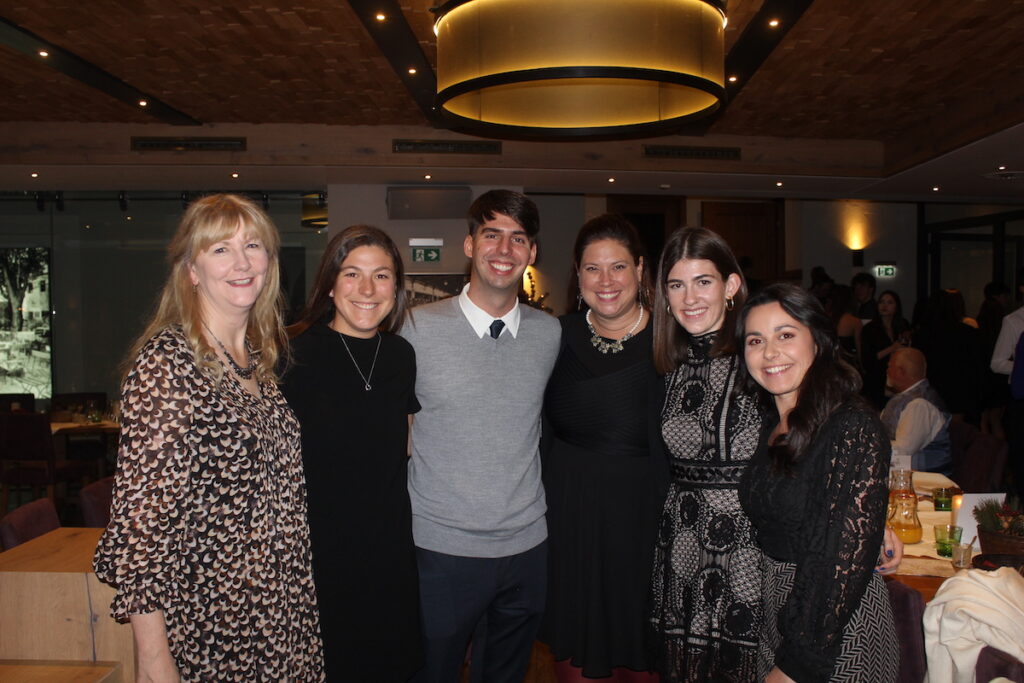
Photo: Dorm parent Paula Clarke (left) is adored by all students and is the school “mom” in the evenings.
The resident assistants were also keen to share their reasons for returning.
“The residential staff quickly became like a second family for me and I wasn’t quite ready to leave this incredible community after just one year together,” said RA Ali, who also taught the yearbook elective last year. “I couldn’t imagine a better support system as I transitioned to living abroad for the first time. We (RAs) quickly realized how unique our experience was working and living together and bonded over this. Kevin and Paula were always there for a genuine check-up to see how I was doing and Laura not only pushed me to grow professionally in this role but also was there when I needed encouragement or a laugh to get me through tougher times.”
Nick DeWitt also accredited his colleagues as a major factor for returning for his 5th year and added that living and working in Europe is a big part of the appeal.
“The opportunity to live and work in Europe is something I can’t pass up. As resident assistants, we have ample time off to explore Europe and the ease of travel from our location in Salzburg facilitates that tremendously.”
Tom Henry felt welcome at AIS-Salzburg from day one.
“They immediately adopted me like family and treated me with respect. My colleagues invite me to hangout on weekends and are just very loving and helpful people. Plus, we have a pretty nice schedule with lots of flexibility to go out and travel on our days off.”
“It was more difficult to find reasons not to return,” said Abby. “The staff and students create an extremely welcoming environment and the small school allows a very strong community. I’ve also enjoyed life in Salzburg, exploring with the students, and especially excursions and ski trips.”
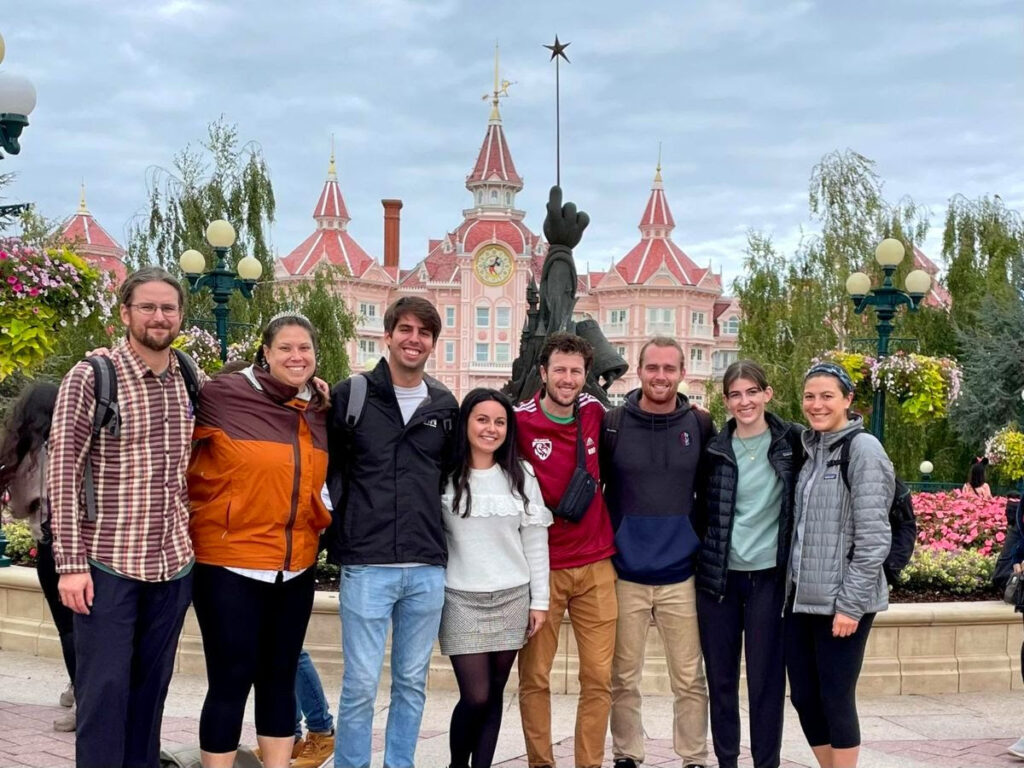
Photo: Kevin and Laura Fox pose for a photo with RAs Tom Henry, Arabella, Nick, Matt, Abby and Ali during the fall excursion to Paris.
“The entire AIS-Salzburg community is what keeps bringing me back – the staff and administration, and especially the students,” said Matt. “Our school culture draws you in and makes it difficult to leave. Plus, I love Salzburg and the surrounding areas, so it’s an added bonus!”
Arabella has a similar sentiment to the other resident assistants. “I really enjoyed my first year at the school and felt like a valued member of a great team, working with interesting and unique students in a friendly, happy community. I jumped at the opportunity to return!”
In fact, all resident staff has accredited the students for making their job more enjoyable.
“The kids at the school really make the job itself worthwhile as they are the ones that I talk to during study hall or participate in any activity I lead or travel on the excursions,” said Ali. “Getting to know the students as people, not just students in a classroom, has been an amazing reminder of why I first became an educator. I’m constantly inspired and impressed by how our kids have so many interests and are so independent to explore all of their passions in a place that could be hundreds or thousands of miles away from the only home they’ve known. I feel so grateful to have a job that allows me to see students‘ authentic selves in such a beautiful and active environment as the one AIS-Salzburg provides.”
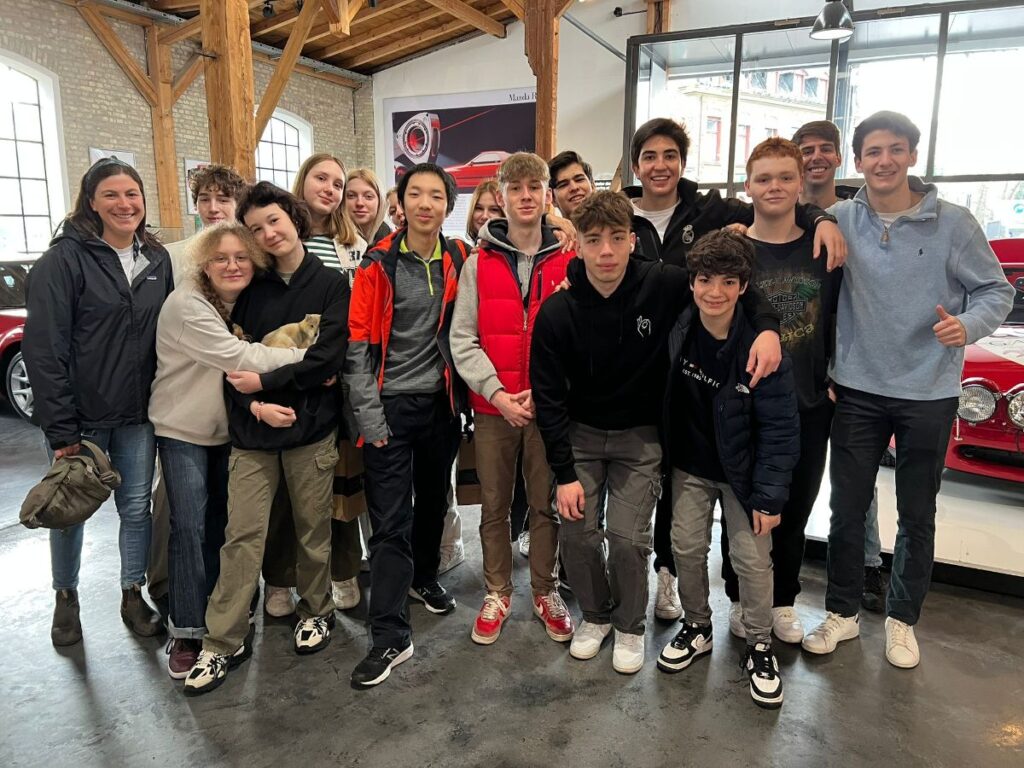
Photo: RA Ali (far left), poses for a photo with a group of students during a day trip to Munich.
“They are really good kids,” said Paula. “They are so appreciative when you do little things for them and it is always nice when they are pleased to see me too (in the dorms during the evening). We have a good relationship.”
“The ability to do all different kinds of activities with the kids keeps me young and in good shape,” added Nick, the oldest of the RAs at 38.
Tom Henry enjoys the bonds he created with the students and the lighter side of his daily interaction with them. “Each day offers something entertaining and comical with the kids and it’s great being able to build personal relationships with all of them.”
A native of New Jersey, U.S.A, Scott Gillette will join the AIS-Salzburg teaching faculty for the 2023-2024 school year as a full-time social studies and history teacher. His course load will include US History, AP European History, AP Human Geography, and AP Psychology. We invite you to learn more about Scott in the interview below.
AIS-Salzburg: How long have you been teaching and/or in education?
Scott: I have been a secondary teacher in the classroom for fifteen years, and I have been in the field of education for twenty years.
AIS-Salzburg: What motivated you to get into teaching?
Scott: I teach in part because I am keenly interested in learning more about the world and I want to share that interest. I also believe that it is possible to have an important and positive impact on future generations through teaching. Finally, I enjoy the perspectives and idealism that young people possess.
AIS-Salzburg: Where have you taught previously?
Scott: I have taught at a private and public school in New Jersey. I decided to pursue teaching in an international setting, and I have not looked back. I have taught and worked in China, Saudi Arabia, Qatar, Myanmar, Panama, Mongolia and finally Austria.
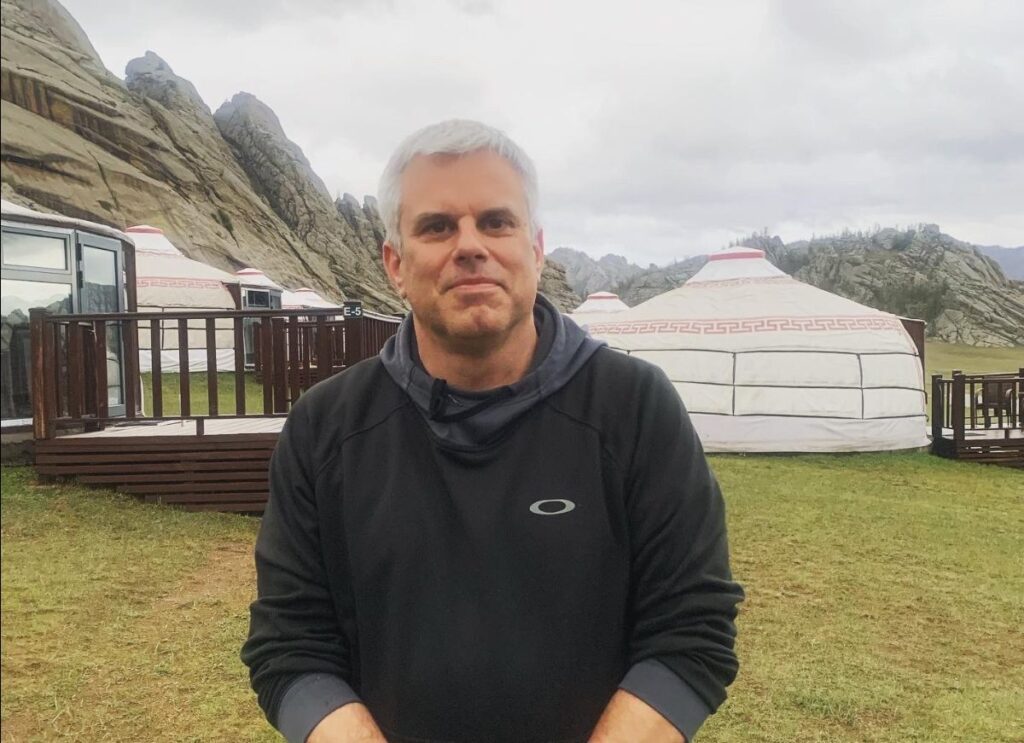
Photo: Scott in Mongolia with a number of yurts in the background, the most common type of habitation in Mongolia.
AIS-Salzburg: Do you have any hobbies or interests that you like to do in your free time?
Scott: I like to read and follow financial markets. I have done a lot of running and hiking in the past year. I enjoy playing and watching soccer. I also am a big music fan of all different kinds of genres. I even have made a couple of electronica mixes.
AIS-Salzburg: Do you have a message for the students who will sit in your classrooms starting this fall?
Scott: I have learned a lot about the school online, and AIS-Salzburg seems like a special and unique place. I am struck by the maturity of the students that I have seen in videos. I look forward to doing my part in serving the AIS-Salzburg community and I look forward to meeting all of the students soon!
40 years of experience with the Advanced Placement® program have enabled us to gain the expertise which yields success. Once again we have exceeded the global average in all subjects and are proud of the accomplishments of our students. As shown in the graphs below, AIS-Salzburg students performed extremely well on this year’s AP® Exams, meeting or beating the global average in every exam. This is a testament to the outstanding preparation for the exams and the diligence of our students.
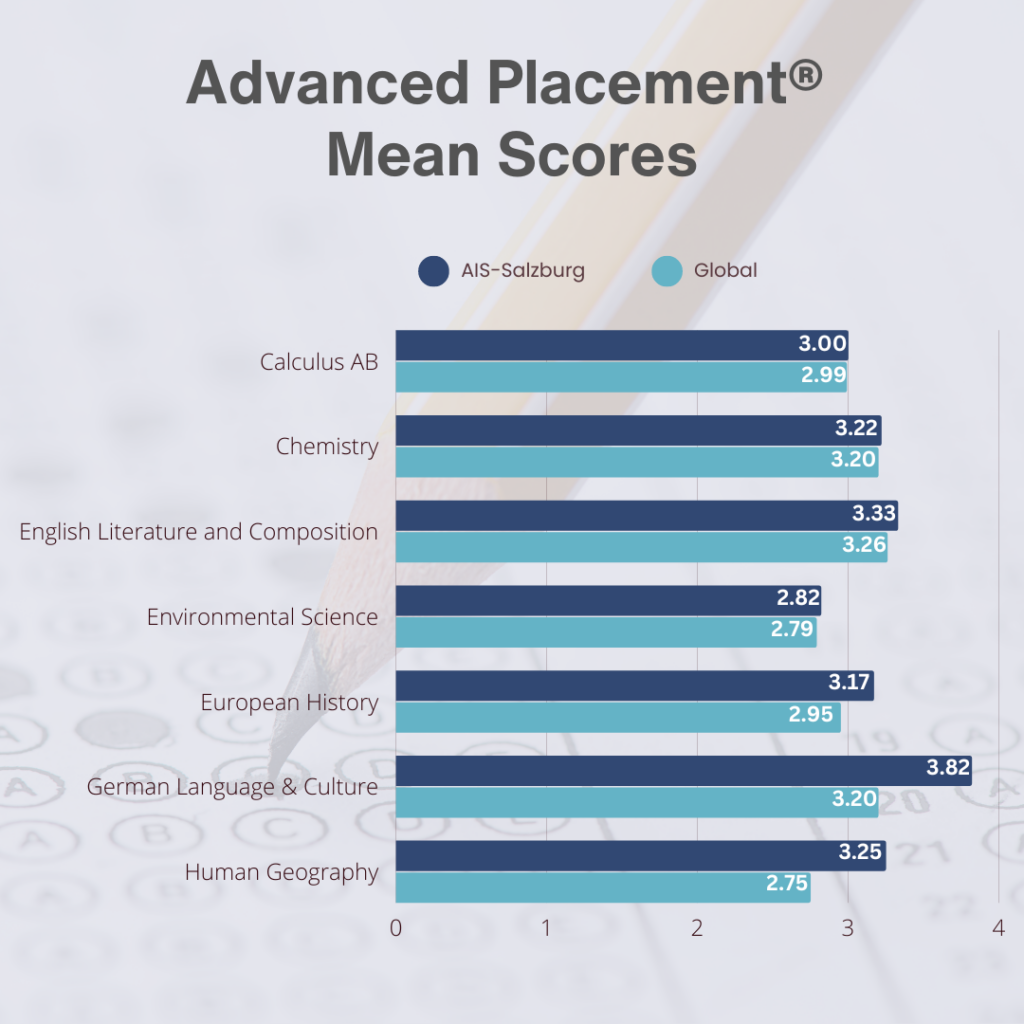
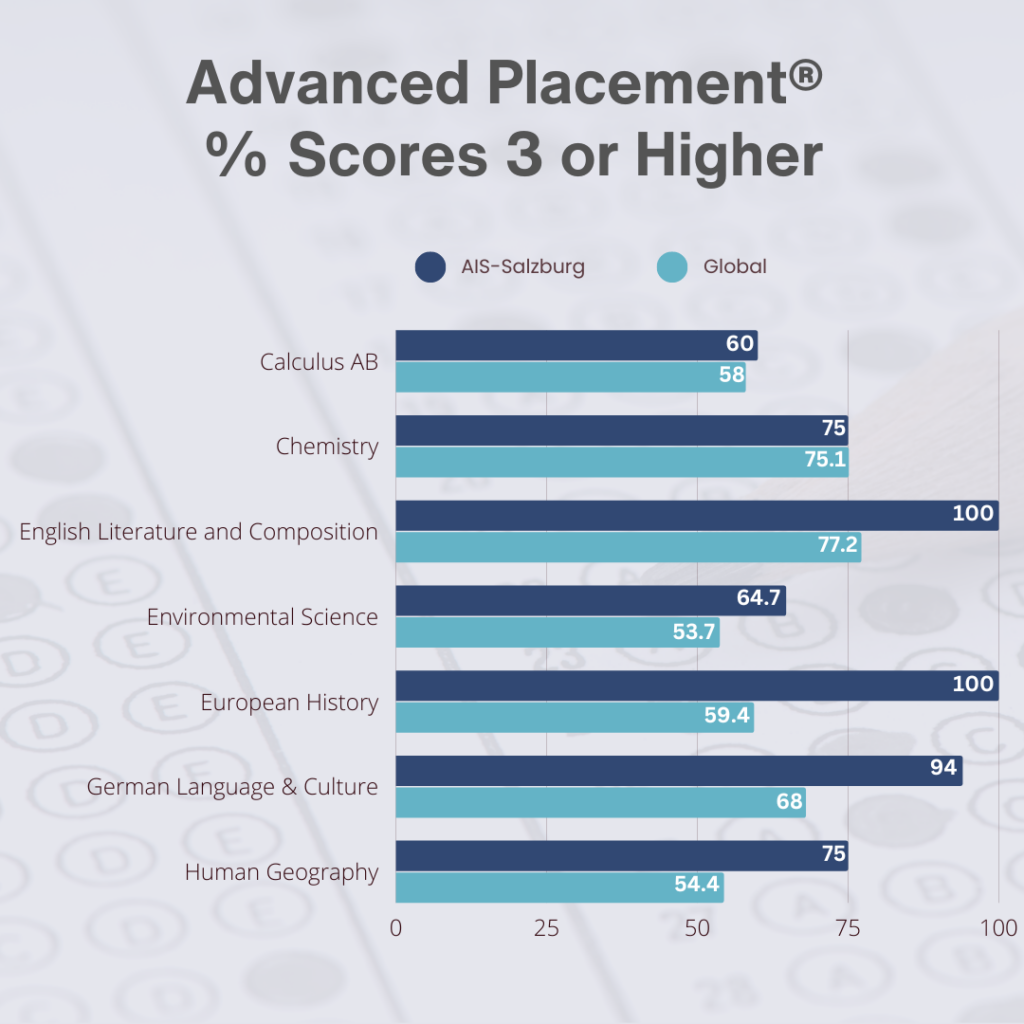
Of particular note, every single student taking the AP® English Literature and Composition exam and the AP® European History exam, both very dense and challenging courses, passed the exams. AP® Chemistry saw nearly all students who sat the exam pass it – these results are excellent as AP® Chemistry is considered one of the most difficult AP® exams to excel at.
AP® courses and tests have many benefits for students applying not only to universities in the U.S. but to institutions in over 100 countries around the world. Scores of 3 or higher on AP Exams fulfill admission requirements to many universities in the UK and Europe, broadening the possibilities for our students. The AP® course on a student’s transcript shows the student has challenged themselves with the most rigorous courses available to them. Passing the AP® Exam gives evidence that a student is ready for university-level coursework. As each AP® course is modeled on an introductory university course in that subject and the AP® Exam is a university-level assessment, success in the course and on the exam shows that a student has the determination, self-discipline and study skills needed to do well in a university program. Our students are well-prepared to meet the challenges of their university courses after having managed the AP courses with us. “Research shows that students who receive a 2 on their AP Exams are ready for college work” (College Board New Analyses AP Scores of 1 and 2, June 2021).
AIS-Salzburg AP® Scholars Announced
The results are in and we are proud to announce that 11 of our students who sat Advanced Placement® examinations in May of 2023 have achieved AP® Scholar status! We invite you to view the list below of the recipients along with a description of the various scholar distinctions.


2023-2024 Student Body
As we move toward the midpoint of the summer vacation period, we would like to present some information concerning the way in which enrollment for the 2023-2024 school year is progressing. In summary, the school will remain very international with no majority of any nationality within the student body and will be composed of between 80% and 85% full-boarding students—including roughly 30% new enrollments. Although the junior high section will be somewhat smaller than in most years, the 11th graders represent one of the largest classes in our history and is expected to include around 32-34 students who will be split into double sections in all subject areas. The senior class is right at the perennial average with 20 students presently enrolled; two new to the school.
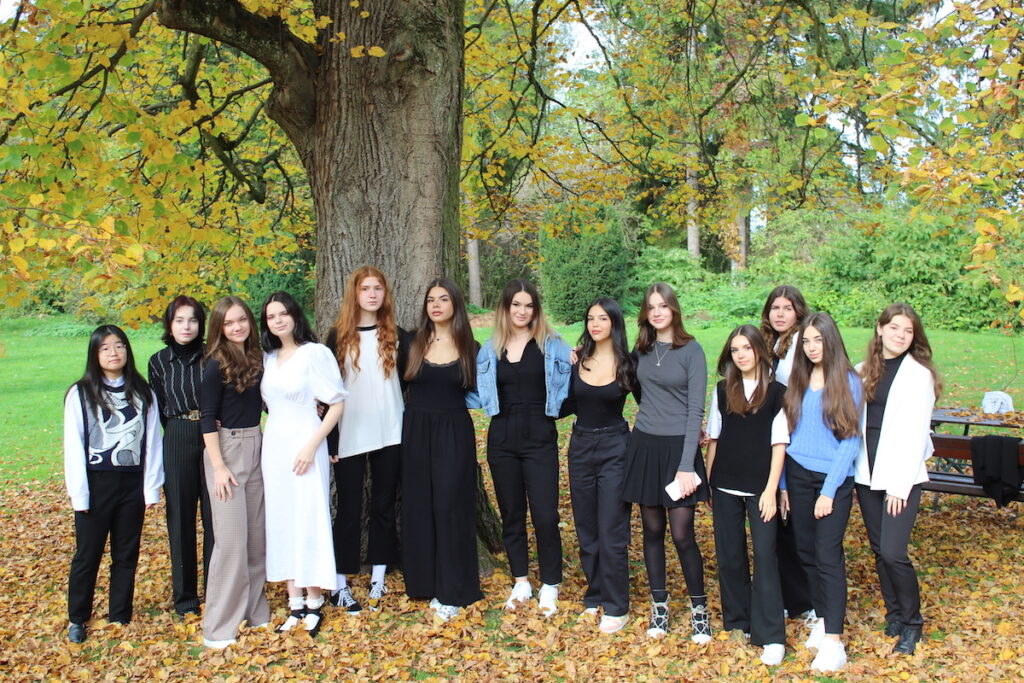
Programming Changes
One of the most significant changes in programming that will be implemented this coming school year will be the placement of all elective courses within the daily, academic schedule of classes. For the junior-high students, their electives (Theater Arts and Studio Art) will be held during period 7. For the high school students in grades 9 through 12, the elective course offerings will be scheduled during Period 6 (13:50 to 14:40), the penultimate class period of the day. This change has been made due to the frequent conflicts between electives and tutorials, teachers’ office hours and sports team practices when the courses were held in the afternoons and evenings. Scheduling the electives during Period 6 should also lend more seriousness to the instruction and learning occurring.
The elective courses will meet twice weekly and on the other days, Period 6 can be a supervised study period. Students are required to enroll in at least one elective course. Taking two or more may lead to conflicts of scheduling depending upon which two days of the week the electives are held. Therefore, we would like to ask for a bit of flexibility and the identification of the most-preferred elective course which should be scheduled as a priority. Although it will take some careful consideration for implementation of the electives within the individual student schedules, we are very certain that ending conflicts for students who would like to participate in sports team practices and who need the extra assistance provided by the faculty members during their office hours, will be of great benefit for all.

As you may be aware, the Advanced Placement® program has added AP Precalculus to their examination offerings and AIS-Salzburg will be offering this course at the 11th grade level starting in September. In order to accommodate the students who are not in need of an AP-level mathematics course, we have added Mathematics 11 which should better accommodate their needs. As several university destinations in Europe require at least one AP® Examination score in a mathematics subject, this should open up diploma equivalency and acceptance to a broader number of students who may not be able to handle the challenging AP® Calculus AB course in the 12th grade.
Aside from these adjustments, the schedule during academic days will remain the same, starting with the first instructional period at 8:30 AM (8:00 on Thursdays for Ethics Seminar sections) and ending by 3:35 PM each afternoon. Again, physical education courses will be held on Wednesday mornings as they have been for some time now, with academic courses commencing at 10:30 AM.
Physical Changes
The outer classroom building on campus is presently undergoing a significant facelift as you may have read about in the most-recent newsletter. While this is a significant improvement in the context of our instruction, we will, unfortunately, be unable to utilize the building at the start of the school year. The planners and those carrying out the reconstruction have informed us that they will try their best to have the building completed by the end of September, so we will have to be a bit creative with classroom assignments during the first four weeks of the school year before being able to spread out into the new building.
Policies New and Reviewed
Of great importance to our school and its offerings are the various and foundational policies that express our expectations and establish the important parameters of care, instruction and child protection a boarding school must implement and carry out as a highest priority. The following policy statements and guidelines will be up for review this summer and the school administration and staff will be reviewing and amending these in the months before the start of the school year in September:
Child Protection Policy
Anti-Bullying and Cyber-Bullying Policy
Equality and Diversity Policy
Data Protection Policy
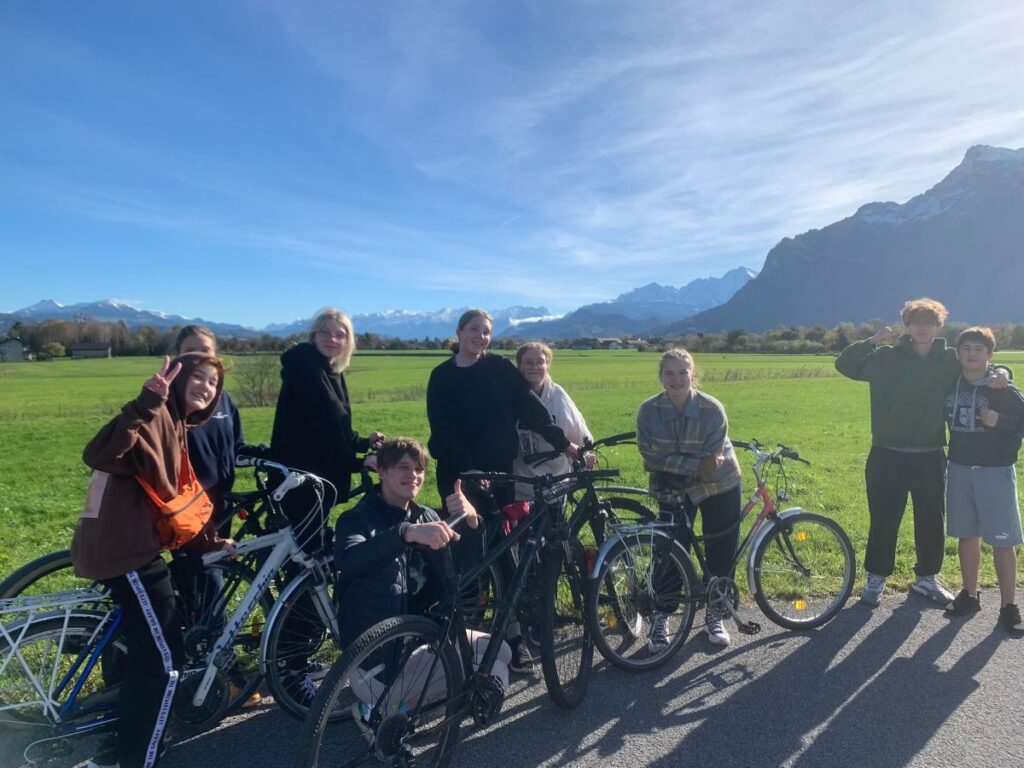
Along with the review of these, the school staff and administration will also update and review all aspects of policies which govern the academic and social-behavioral side of the school as found in the Student and Parent Handbook as well as other internal documents. We hope that all parents and guardians of our students are aware of our efforts to energetically and directly implement best practice in these areas for the benefit of our entire community. Updates and editing should be completed before the school year begins in early September and the updated policy statements and procedures will again be posted over the school’s website for ease of access by all community members.
We are looking forward to an exciting, fascinating, challenging and memorable school year starting in September and hope that our entire community is equally optimistic and anticipating great things!
Mrs. Kasberger has taken over as our new college counselor following the retirement of Mr. Agardy, who held the position since the early 1990s. Mrs. Kasberger is a natural fit for the role as she is known as a mother figure to the students over the past two decades.
“I am very excited to step into the position of college counselor but a little nervous about following in Mr. Agardy’s footsteps,” said Mrs. Kasberger in an interview yesterday. “There is a lot to live up to there.”
College counselors provide advice and direction to students as they come to the end of their high school careers. By this time, they are ready to take the next step of entering college or university, and as this is not something they do every day, students need and appreciate assistance.
“I will be able to help students with their search and application process, providing not only necessary documents but also information and support throughout. It’s such an exciting time in a student’s life – exploring endless possibilities and planning for the future – I’m looking forward to being part of that.”
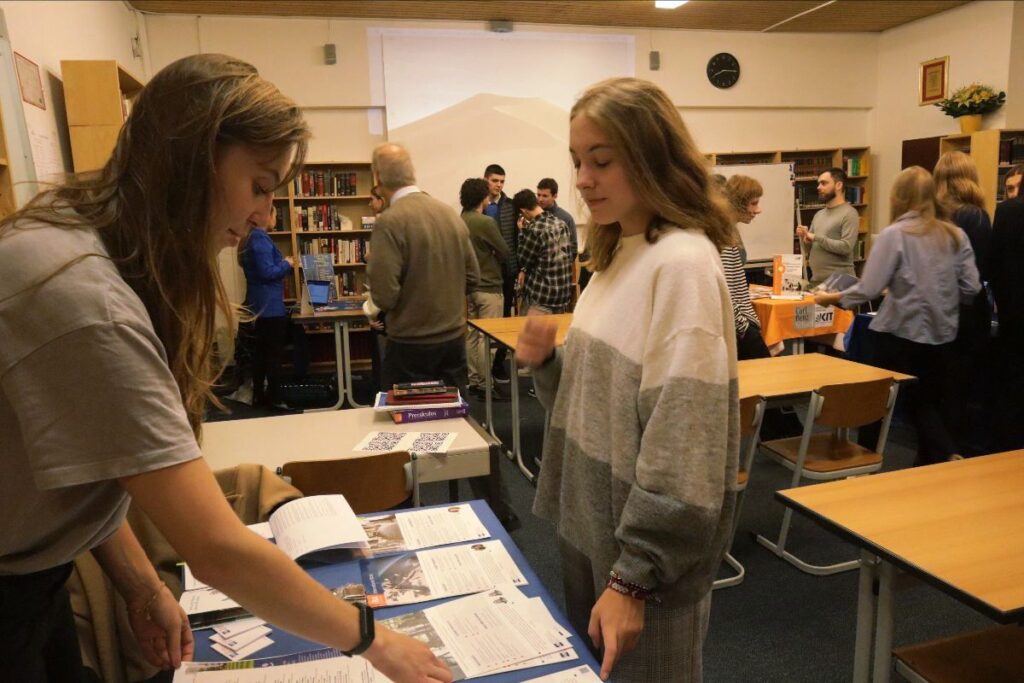
Photo: AIS-Salzburg hosts a college fair in the fall of 2022.
AIS-Salzburg provides excellent preparation for university with our rigorous curriculum and the whole world is open to our students.
“The opportunities and futures of university applicants are simply phenomenal,” said Kasberger. “Therefore, it is important that they are properly guided moving forward, to find the right path for them. Mr. Agardy has a wealth of knowledge that is legendary and invaluable. We’ve been working together so that I can assimilate as much as possible, but I know that I will have questions, many questions, that only he can answer. Being Mr. Agardy, he has generously and graciously offered his assistance when needed.”
As the new college counselor, Mrs. Kasberger has a message for the students of AIS-Salzburg heading into their senior year next year.
“Grades aren’t everything. They are extremely important but there are many other aspects that universities look at to gauge if an applicant is a good fit or not. Extracurricular activities, sports, music, dance, community service and work experience are just some of the activities universities look for in a candidate. These will help demonstrate a well-rounded character who can succeed academically as well as grow personally and contribute to the world around them. Also, don’t wait to apply to your chosen university. Your senior year will be extremely busy and challenging, getting started on university applications early will help reduce some of the stress in your final year.”
We invite you to watch the video below, where Mr. Agardy explains the Advanced Placement® (AP) program offered at AIS-Salzburg and how it benefits our graduates as they continue with higher education learning.
In short, the AP® program enables willing and academically prepared students worldwide to pursue university-level studies while still in high school, with the opportunity to earn credit (points toward an undergraduate degree) or advanced placement (the chance to skip an introductory level university course). AP® is recognized in the admissions process by more than 4,000 universities worldwide, and outside the U.S., more than 600 universities in more than 60 countries recognize qualifying AP® Exam scores.
The American International School-Salzburg is a purely college-preparatory school and the entire academic curriculum is designed to prepare students broadly and to the highest Advanced Placement (AP®) level in all subject areas. Unlike most European school systems, an American college-preparatory philosophy does not establish specialization in particular subject areas during the 11th and 12th grade similar to A-Levels or Higher-Level subjects in the International Baccalaureate system. Students at AIS-Salzburg enrol in select AP® courses in the 11th and 12th grades and can also choose to enroll in further AP® subjects before graduation. This allows them to tailor their studies to prepare for and gain acceptance to the universities of choice worldwide.
We are pleased to announce that we have had 31 early acceptances of our graduating class to universities and colleges they have applied to! They are as follows:
Nazar Bereziuk: EU Barcelona
Dimana Danova: Brighton University, Kingston University, London Metropolitan University
Ines Forot-Michel: Queen Mary University of London, SOAS University of London, King’s College London, University College London
Adam Hathaway: University of Exeter, Bournemouth University, University of Sussex, University of Edinburgh
Carolina Häusler: Emory University, Northeastern University, Boston University, Columbia University (waitlist), Fordham University (with $80,000 scholarship offer)
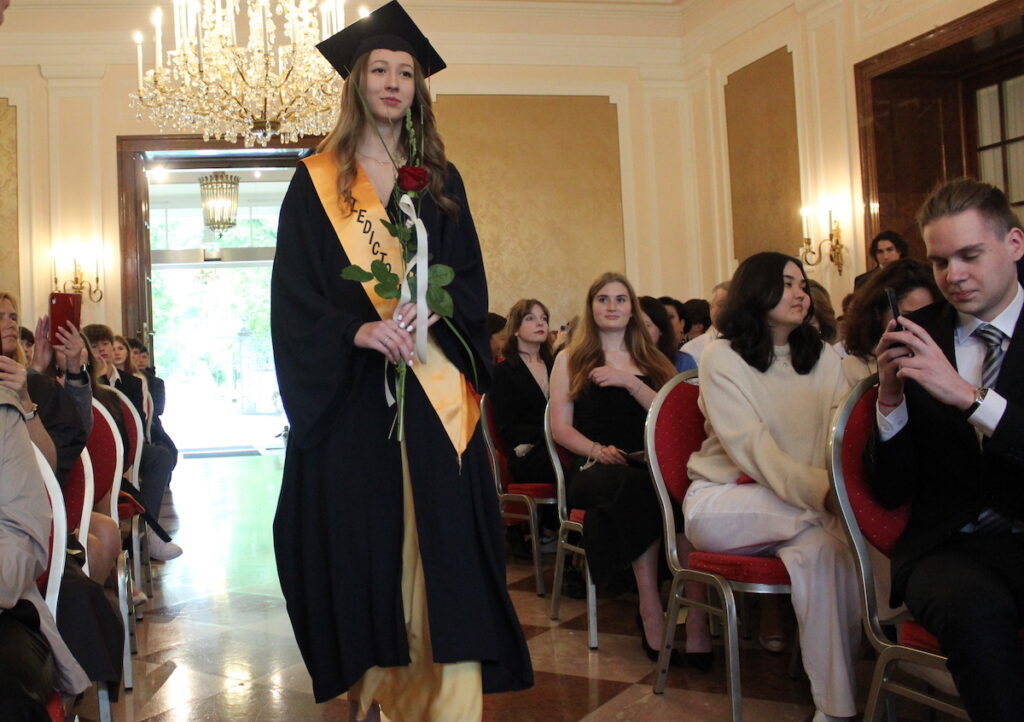
Photo: 2023 Valedictorian, Carolina Häusler, has received acceptances to all five colleges she applied to, including top-ranked universities Columbia and Fordham.
Siana Ivanova: London School of Economics, Queen Mary, University of London, King’s College London, University of Bath, University College London
Max Nazarkasimov: European University
Tim Nazarkasimov: University of Ottawa
Aizhan Tabyldiyeva: University of Manitoba, Simon-Fraser University
Inzhu Tabyldiyeva: University of Manitoba, Simon-Fraser University
Sophia Tartaryn: NHL Stenden, University of Amsterdam
There is some great news for future AIS-Salzburg graduates who do not have the strongest mathematics background but are able to apply themselves: the new AP® Precalculus course. Starting in the 2023-2024 school year, students can take Advanced Placement® Precalculus —a much less demanding mathematics course than AP® Calculus AB or BC— which allows them the opportunity to earn college credit as well as improve their applications to the colleges and universities of their choice. The completion of the AP® Precalculus course counts as a math credit at many colleges and universities, including the majority of public institutions. At highly selective schools, Precalculus is not considered a college class and thus students can not earn college credit for AP® Precalculus. Nevertheless, students taking this course will be well prepared for AP® Calculus or a Calculus course at their college or university, as well as other math and science courses.
Students of AP® Precalculus will have access to free, digital learning and practice resources, not to mention daily classes and after-school tutorials with our great mathematics teacher, Mr. Lichty. It goes without saying, even those who find they are not the most talented at math, will have all of the resources at AIS-Salzburg available to pass the course.
The Commencement Exercises at AIS-Salzburg represent the most important and significant of all annual events at our school. Seniors commence to become alumni after receiving their very hard-earned diplomas and receive our blessings and high hopes for a successful and satisfying future.
Our commencement exercises are held at the Kavalierhaus at Schloss Klessheim on the outskirts of beautiful Salzburg. By tradition, the members of the senior class of 2023 entered to the strains of Pomp and Circumstance by Edward Elgar played by the Pro Musica Quartet led by Ms. Lardschneider of our teaching faculty (see video below).
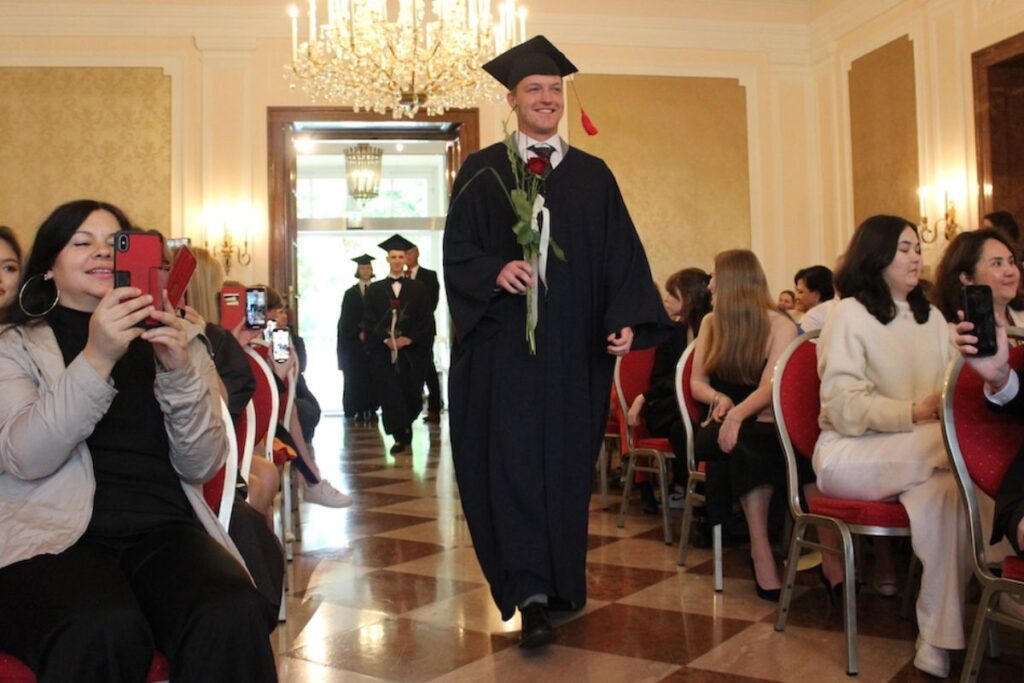
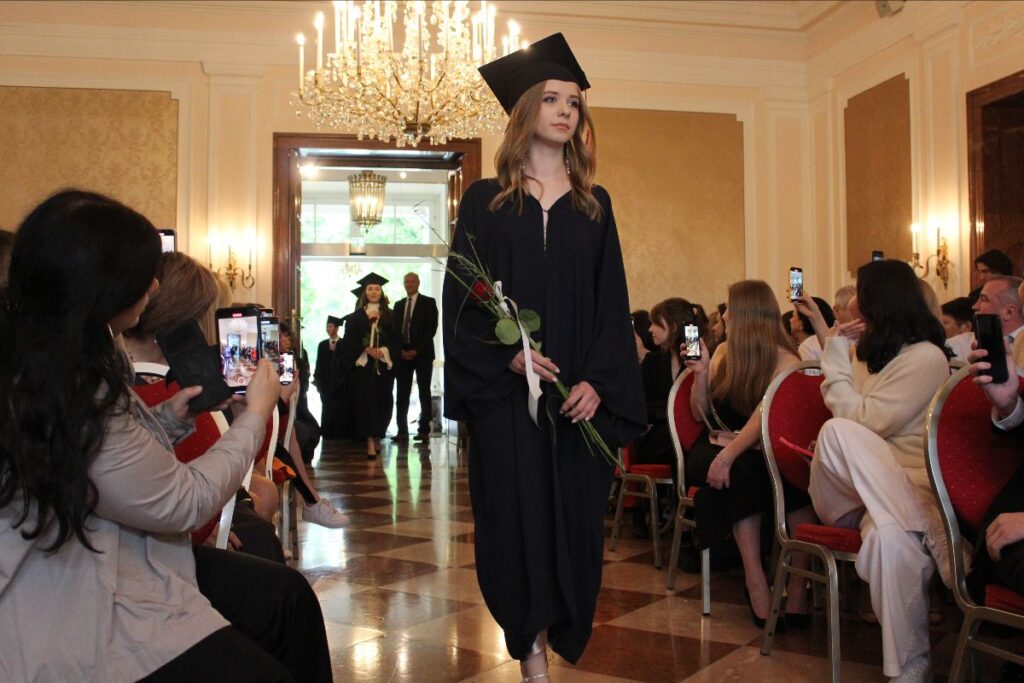
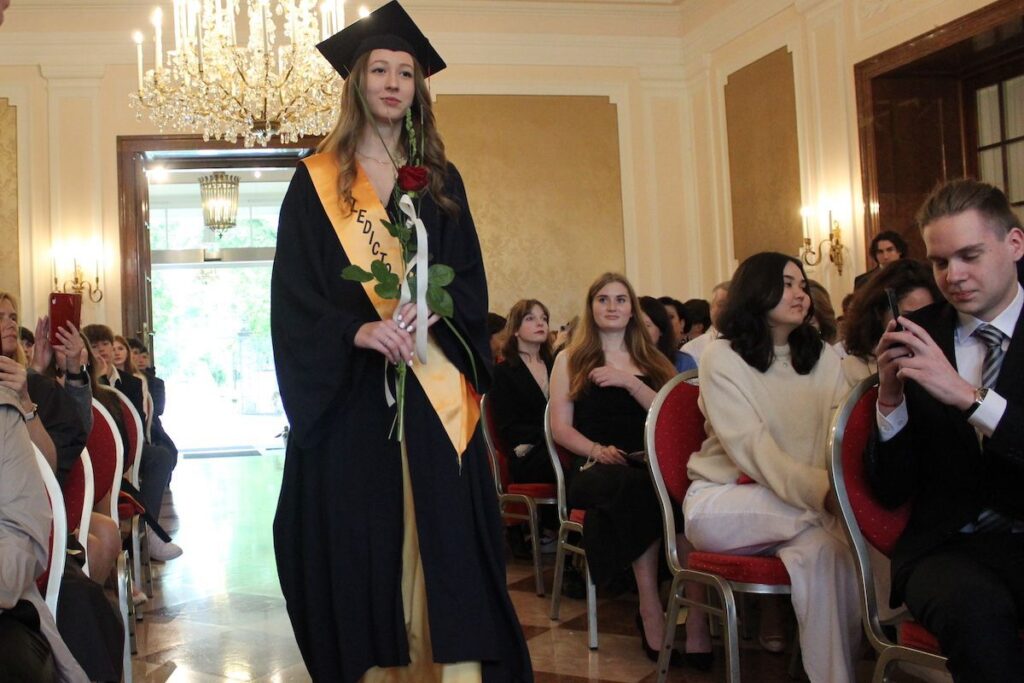

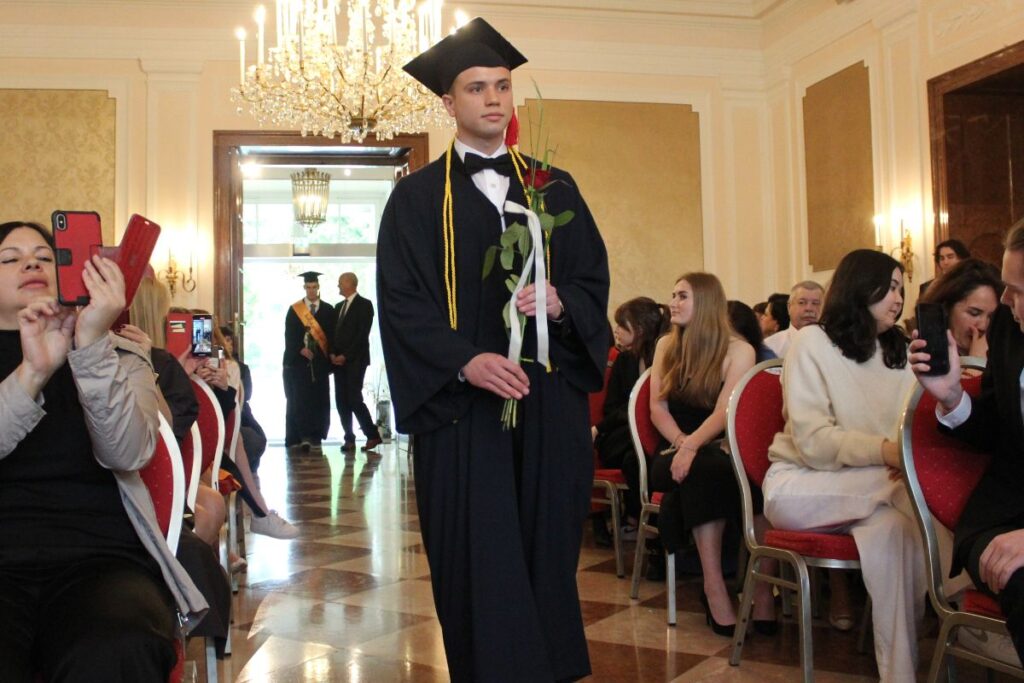
Photos: As every year, the senior class of 2023 entered the Commencement ceremony to the strains of Pomp and Circumstance.
By tradition, the class Salutatorian, Adam Hathaway, welcomed the audience of families, friends, and classmates and summarized a year of growth and development, accompanied by solid advice for her fellow class members. Dmytro Pyrohovskyi, the European Council for International Schools Award for International Understanding winner, then addressed the class and guests with poise and great maturity after being introduced by Ms. Fox, the Dean of Students.
While the Pro Musica Quartet played Mozart’s Divertimento in D, the graduates left their seats and presented a rose to their family members and loved ones; a touching and emotional expression of their gratitude and appreciation to those who supported and strengthened their resolve again and again.
Valedictorian, Carolina Häusler, after being introduced by Mr. Agardy, the College Counselor, presented a touching and heartfelt speech which included a thank you to his friends as well as his family, moving many in the audience to tears. Mr. Jeff Agardy then presented the Commencement Address to the Class of 2023, fulfilling the seniors’ wish that he do so—an indication of the high regard and respect they have for her efforts both as an instructor and as a supporter of their labors throughout the year.
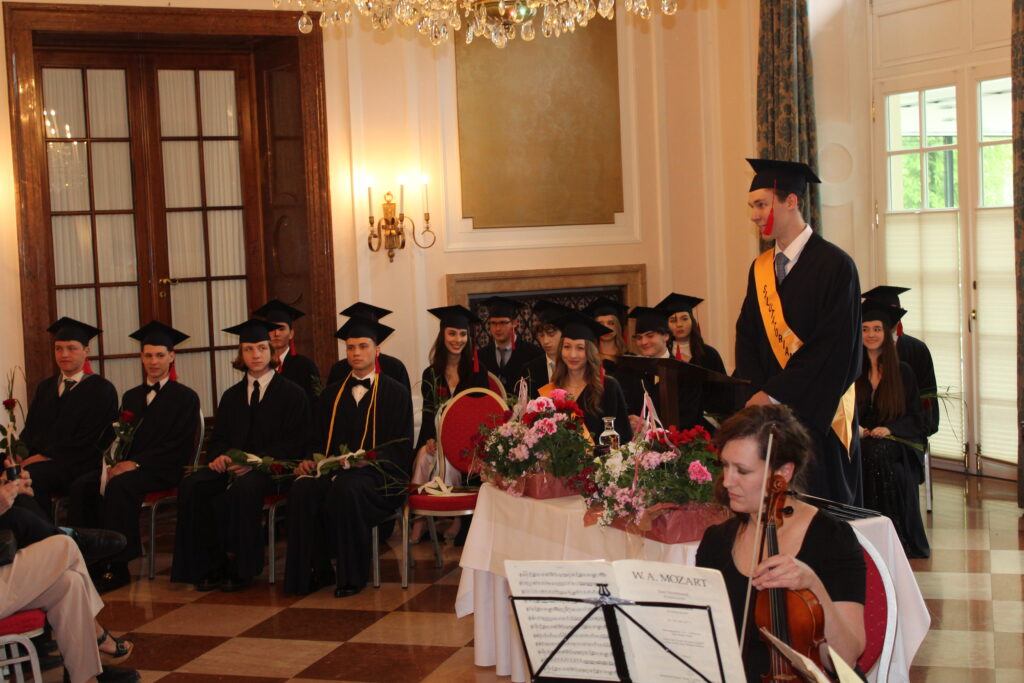
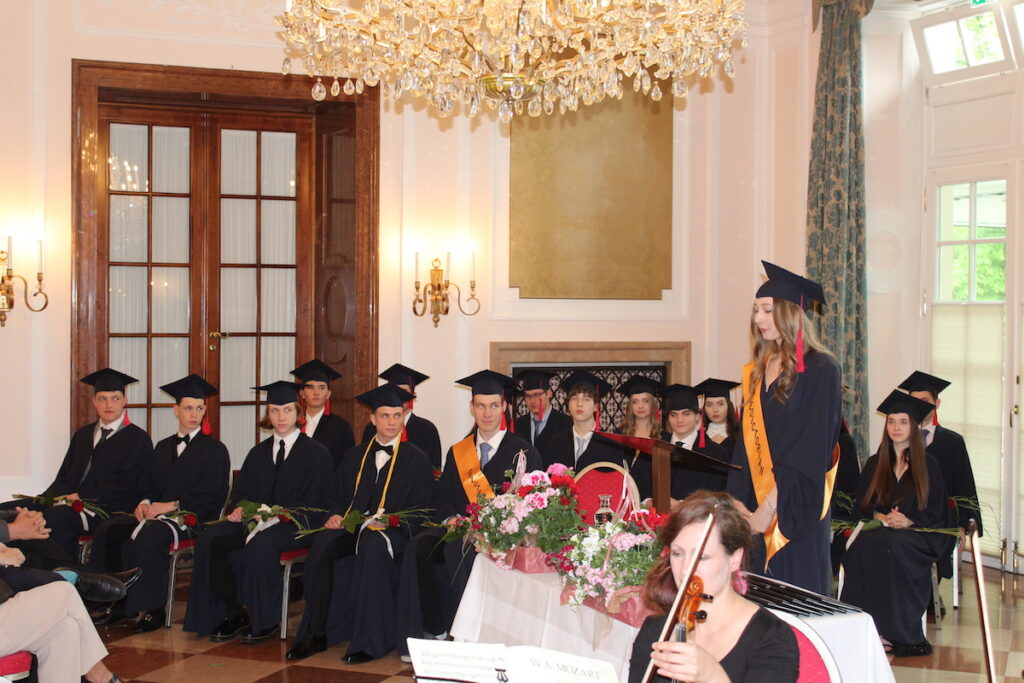
Photo: Salutatorian Adam Hathaway (Top) and Valedictorian Carolina Häusler (bottom), deliver their speeches at the 2023 AIS-Salzburg Commencement.
With the awarding of their diplomas, the individual members of the class completed the last requirement for graduating beyond secondary education and received their qualification for further studies at the universities of their choice. With caps thrown into the air, they fell into each other’s arms, rejoicing at their accomplishments, but saddened by the conclusion of their time together in Salzburg, Austria.
We invite you to join us in celebrating the achievements of a class that will be remembered within our community for many years to come.

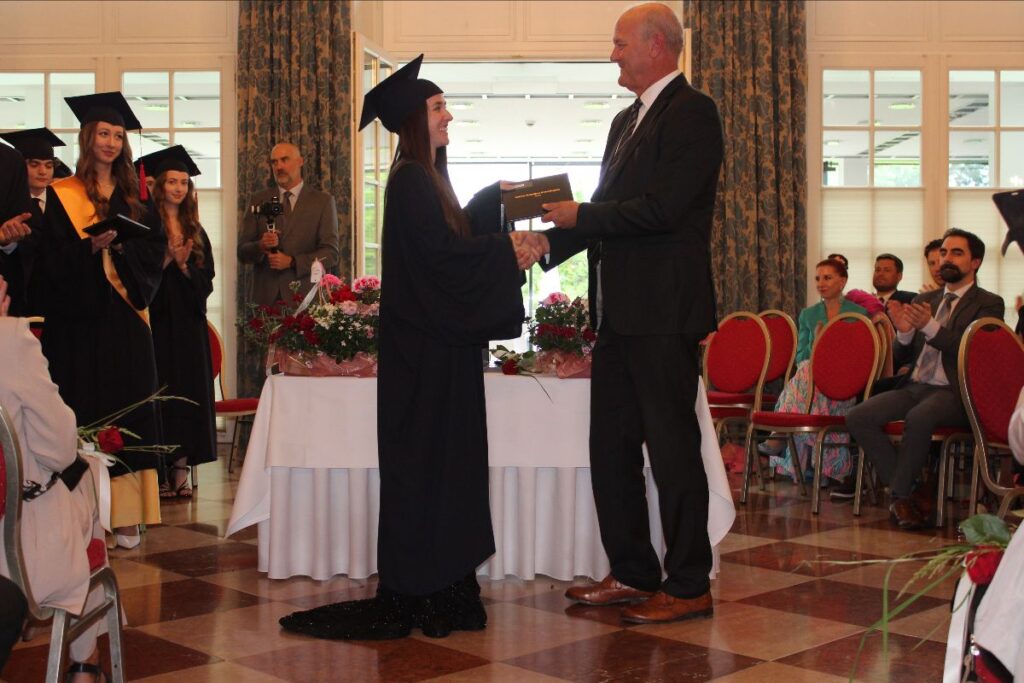
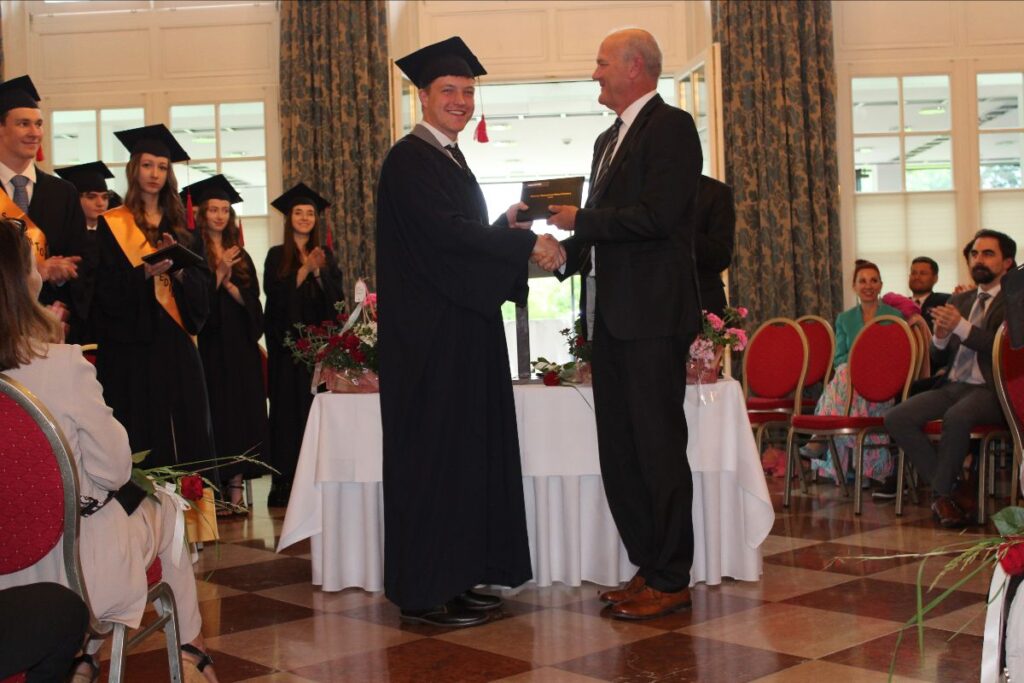
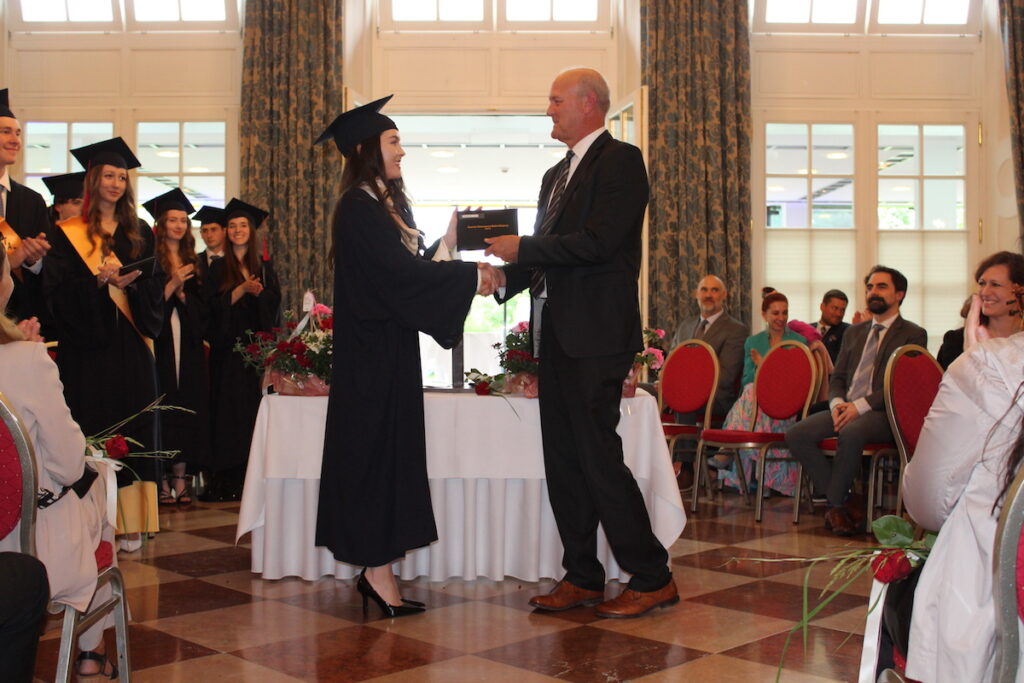
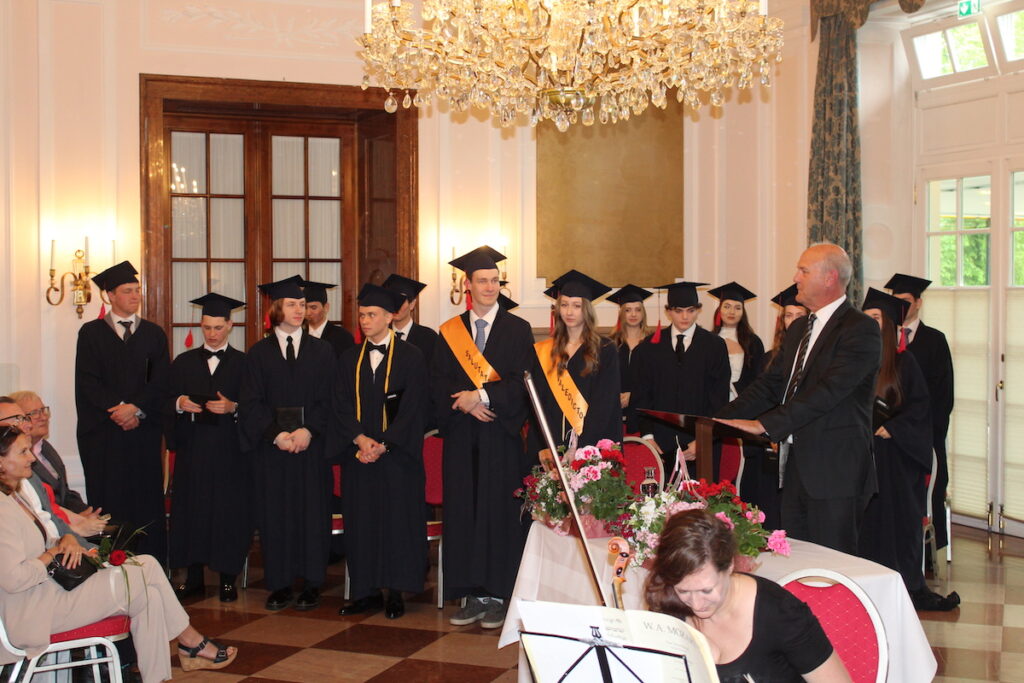
Dear Students and Colleagues, both past and present,
I deeply appreciate all the warm-hearted wishes and words of gratitude that came pouring in the past few days after my retirement was formally announced. The response was simply overwhelming and will make my memories of our school even fonder. After all, it was all of you who made it easy for me to serve at SIPS / AIS Salzburg for 37 years. I am usually content with very little, but the people in our school community have given me so much. You are amazing!
Like the 4 heroes I mentioned in my graduation speech, there are hundreds of people from our school who inspired me along the way and helped me become a better teacher, mentor, and colleague. Whether you were a student or a colleague, I always felt we were working together towards a common goal. Of course, the journey was full of ups and downs, but the downs always felt like challenges which in the end were gladly accepted. And the ups were all the AP, IB, and internal exams you passed, the C on the test you finally earned after failing all the previous ones, all the university acceptances, and the festive graduation ceremonies at the end of a demanding school year. The small successes like improving your grade to a C made me proud of you, and the big successes like the university acceptance made me overjoyed.
In a recent interview, I was asked what I think my impact was on the students I have taught over the years. I was fairly certain that in an age of so many distractions, my influence should not be overestimated. However, the messages I received recently say something very different. Many of you may remember that in history class I always tried not to be overly harsh in my judgement of those who lived before us. This is because I believe that people are largely prisoners of their age. Only a handful of individuals manage to swim against the stream, abolitionists who expressed their indignation about slavery, a few decent people who protected Jews, Huguenots, and other minorities, and a few writers who argued for women’s rights when nearly all leaders wanted to keep them out of public life. In many ways students, too, are prisoners, prisoners of their adolescence, which tends to make them lazy, indulgent, and impulsive. (But also funny and inspiring.) This is why I also tended not to judge students too harshly and always tried to focus on your potential and talents instead. It was very important to me to treat everyone with fairness, respect, and kindness. Since there were always so many inquisitive, keen minds in each course, I also believed that I owed it to you all to come to class every day, well-prepared and eager to deliver the best lesson I was capable of. You may remember there was seldom a chance to chill during class. Somehow I resisted the pleas to have a “blow off day.”
In a way, this feels like graduation. When you graduated, it was the culmination of your growth during your adolescent years. My graduation represents the culmination of my life’s work. So many have told me that our school is a very special place. Indeed, it is! That is mainly because our school seems to attract the best people, educators who are passionate about their work and students who generally care about their learning and each other. Together we have managed to build an amazing school community. Thank you for making my years with you so rewarding, challenging, and enriching.
With the deepest gratitude and affection,
Jeff Agardy
As the final exam week approached, AIS-Salzburg held its Annual Awards Ceremony to recognize students for their cumulative academic, boarding, and athletic achievements over the course of the 2022-2023 school year. This event is also used to announce the ECIS Award recipient as well as the Salutatorian and Valedictorian of the Class of 2023.
Some notable awards handed out this year include but were not limited to:
Female Athlete of the Year – Chantal S.
Male Athlete of the Year – Pedro R.S.
Female Scholar-Athlete of the Year – Anastasiia B.
Male Scholar-Athlete of the Year – Milo B.
Female Border of the Year – Ines F.M.
Male Boarder of the Year – Adam H.
Outstanding AP German Student – Ola T. and Milla S.
Outstanding AP Psychology Student – Sara M., Milla S., and Aizhan T.
Outstanding AP European History Student – Carolina H. and Adam H.
Outstanding AP Chemistry Student – Nikol G.
Outstanding AP Calculus Student – Carolina H.
ECIS Award – Dmytro P.
Salutatorian – Adam H.
Valedictorian – Carolina H.
We invite you to view some of the photos below of this year’s event.
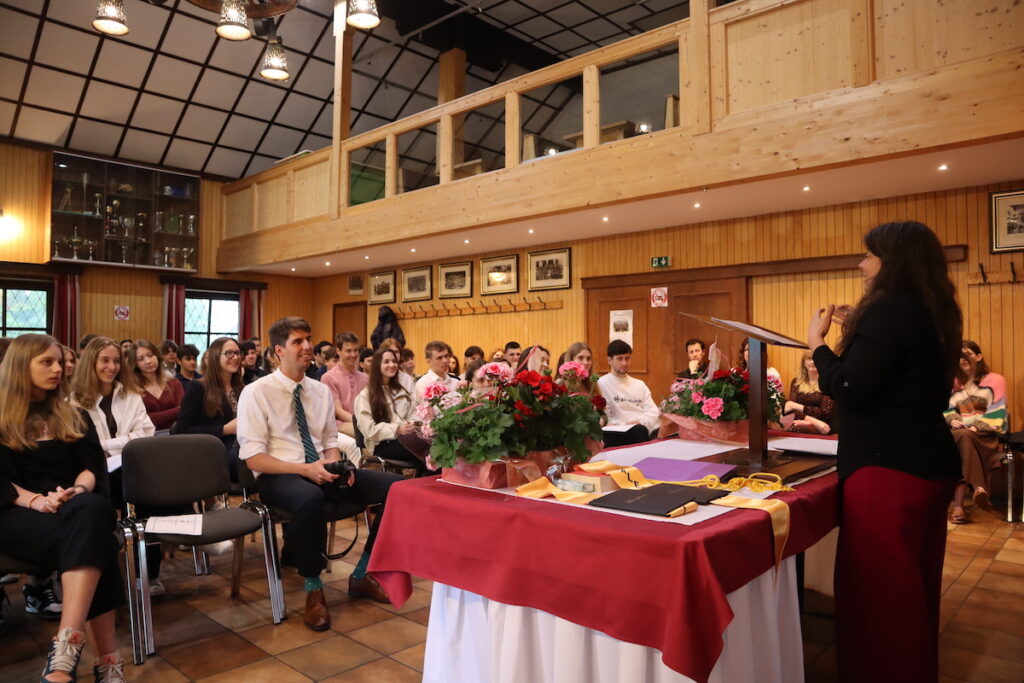
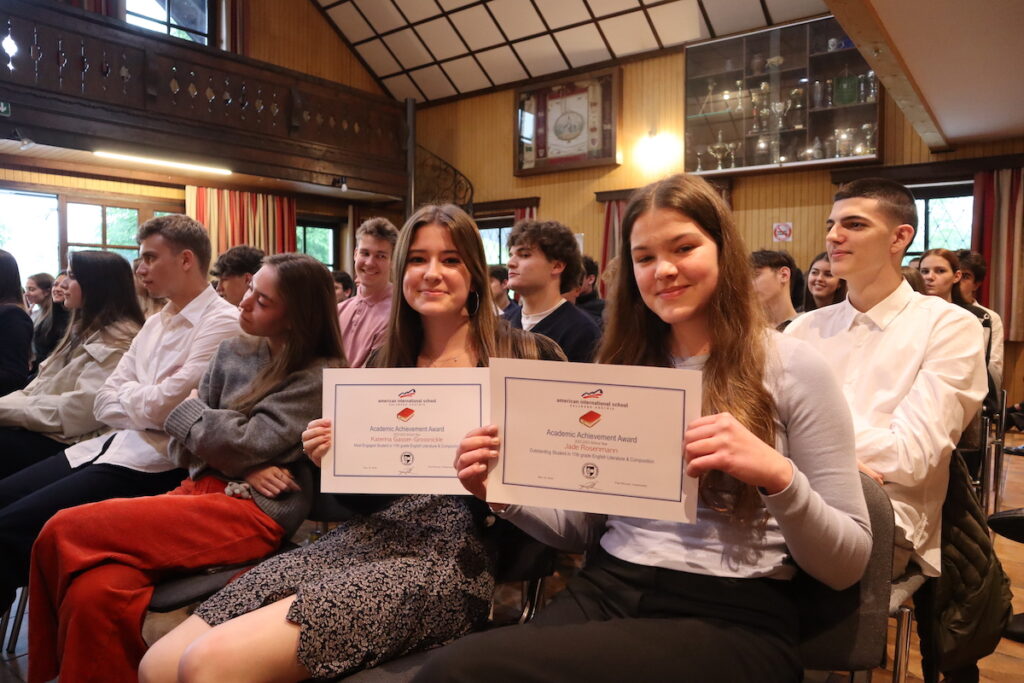
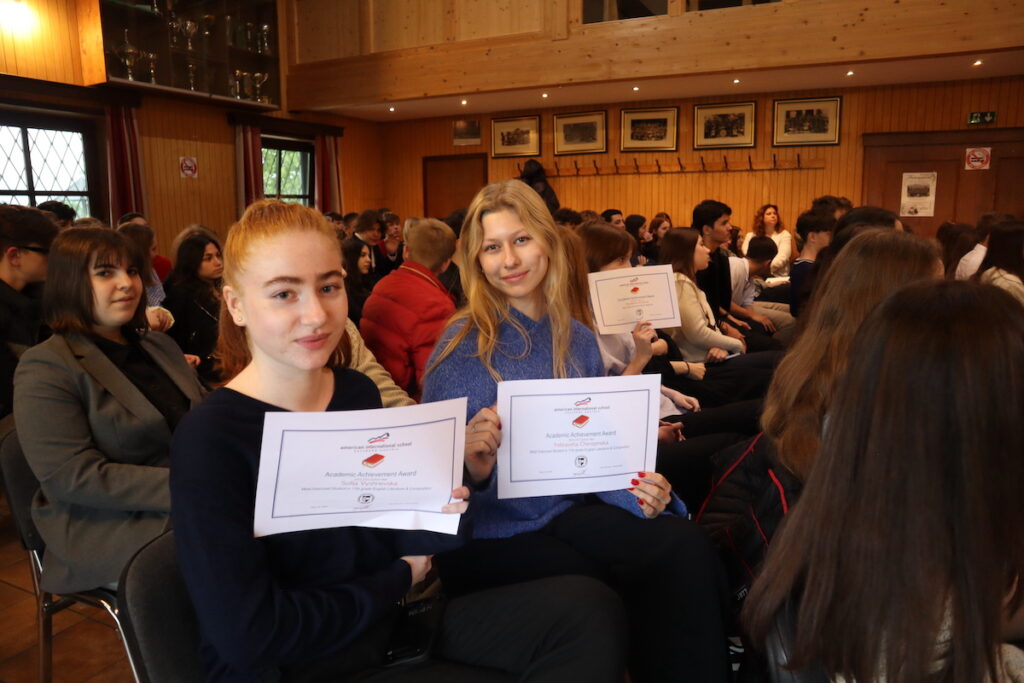
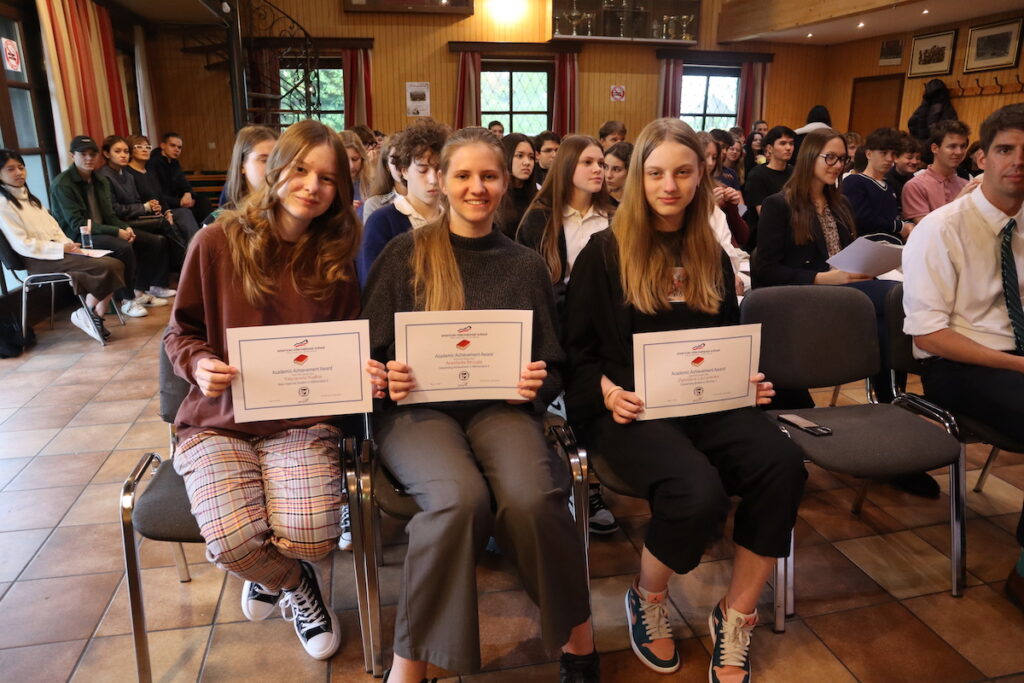
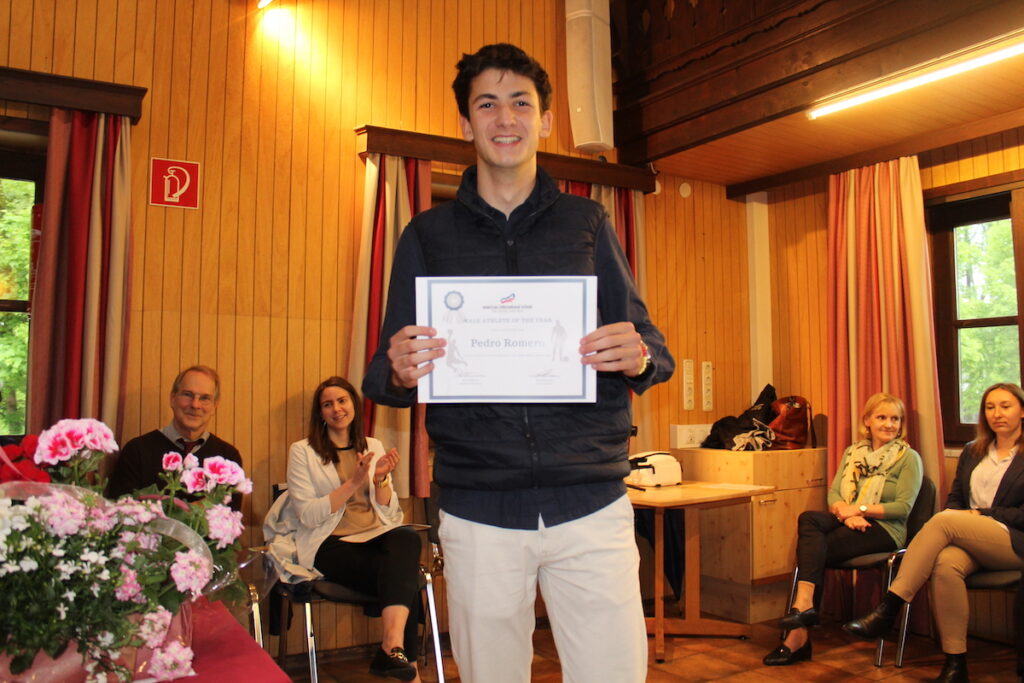
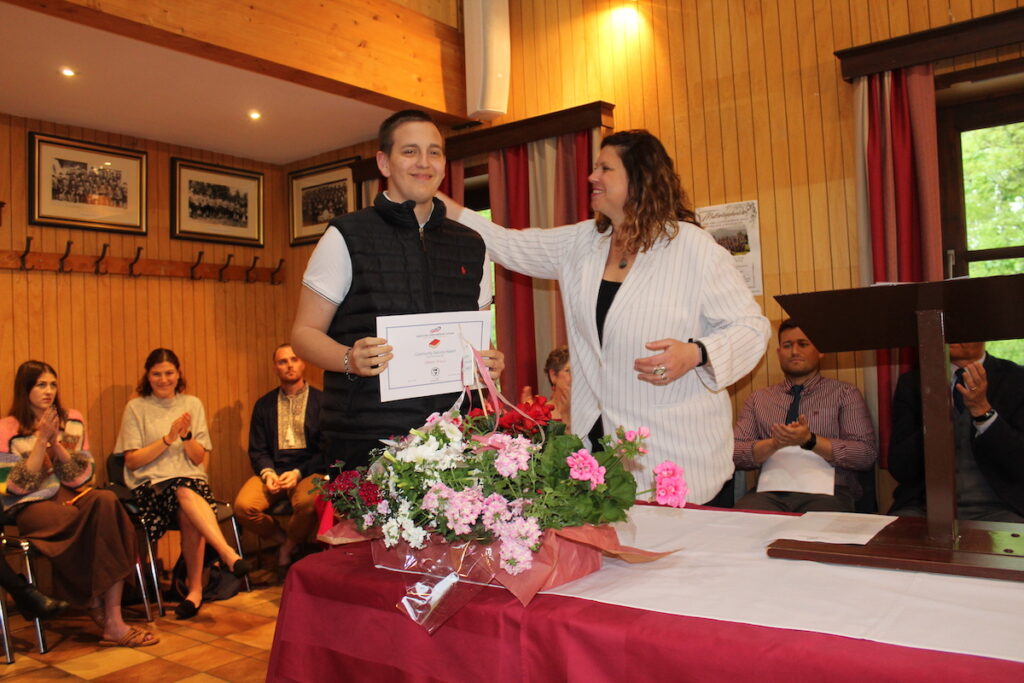
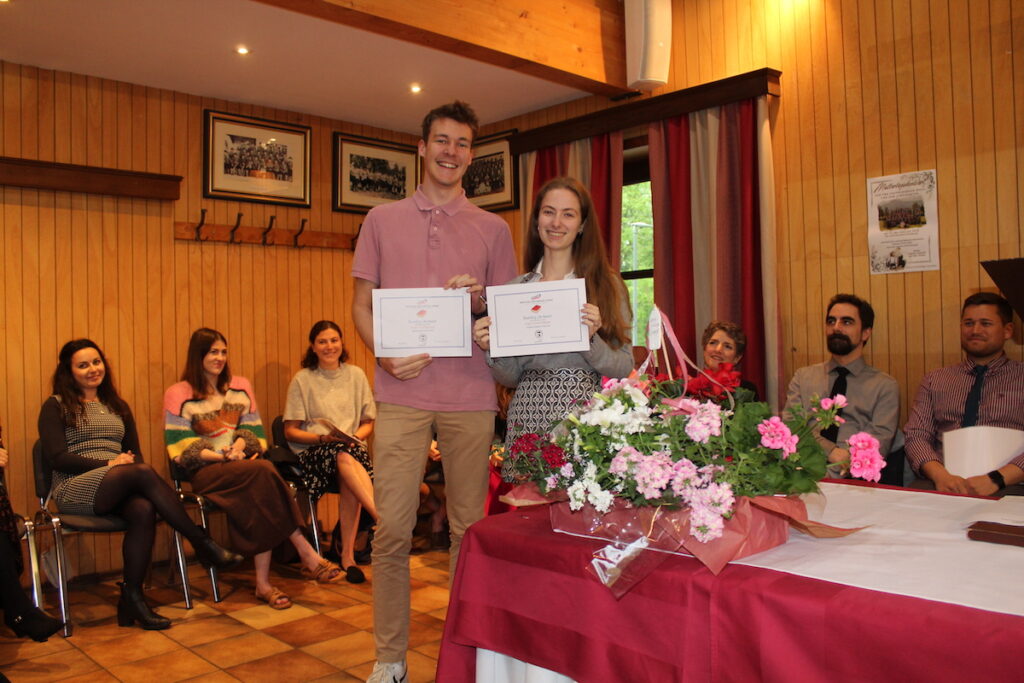
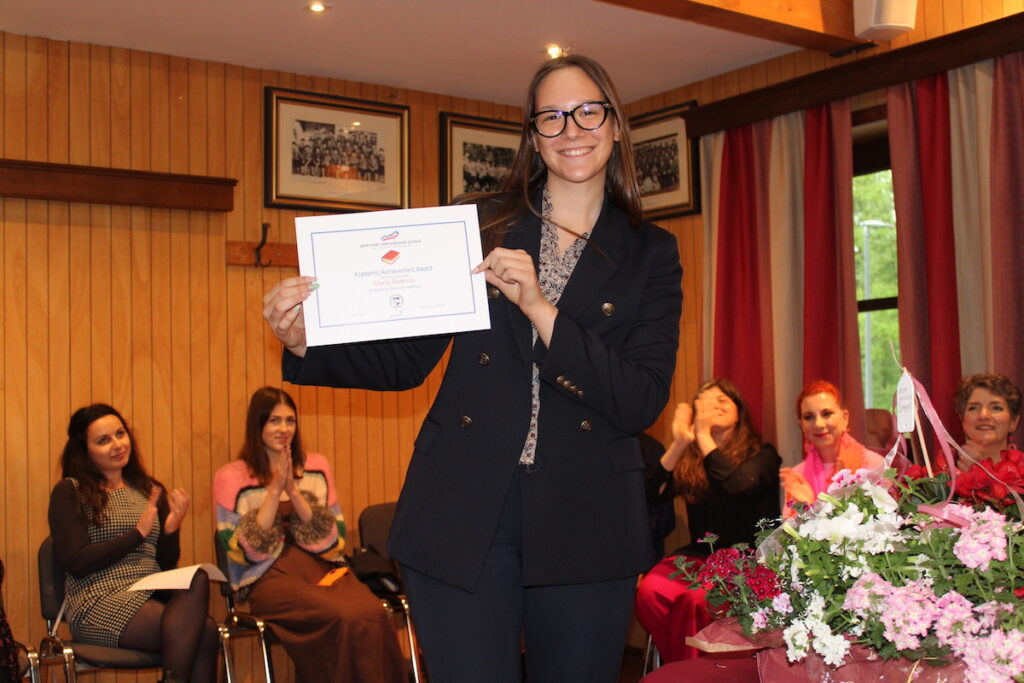
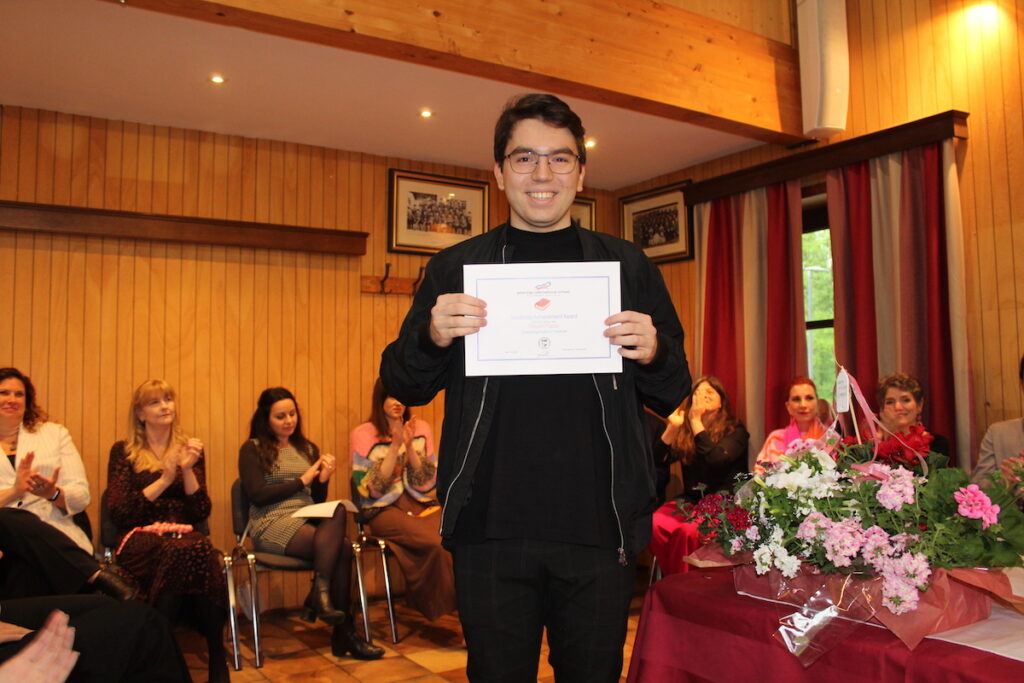
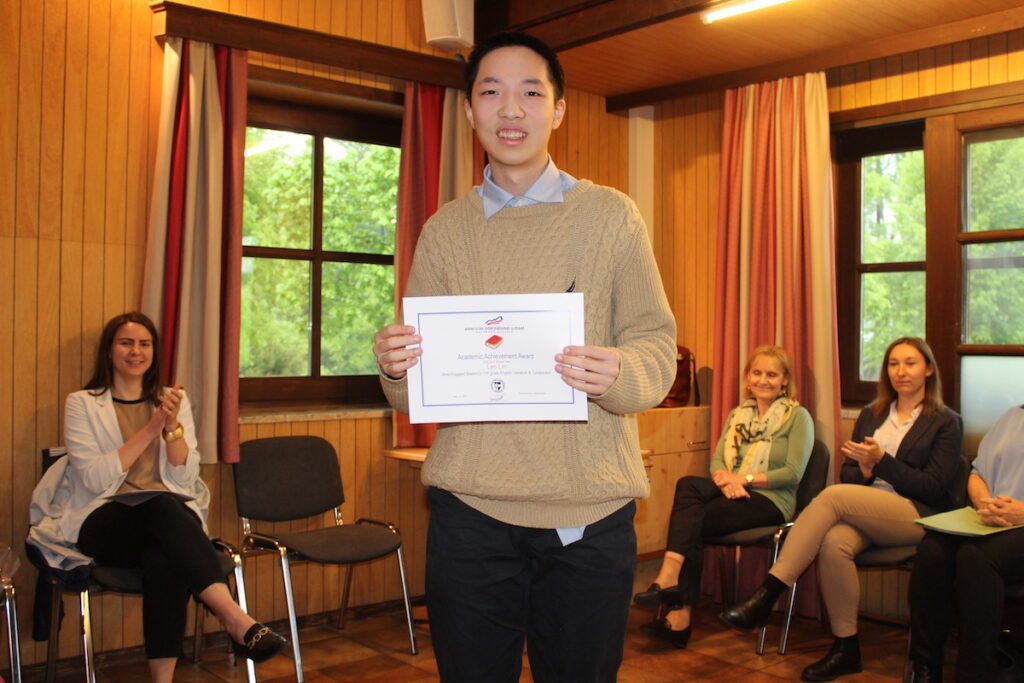
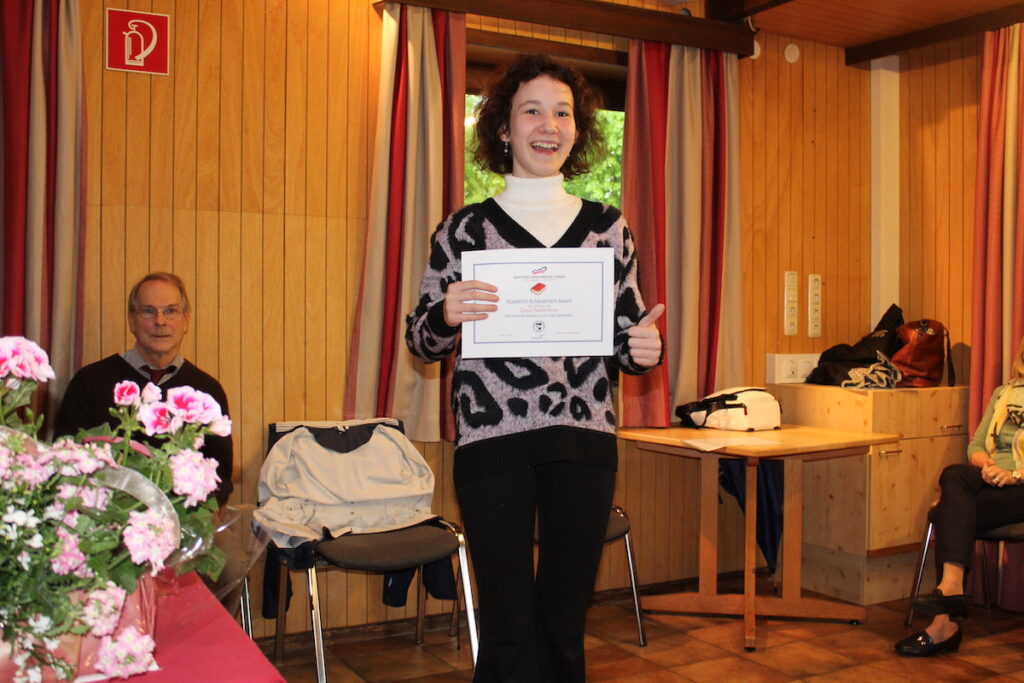
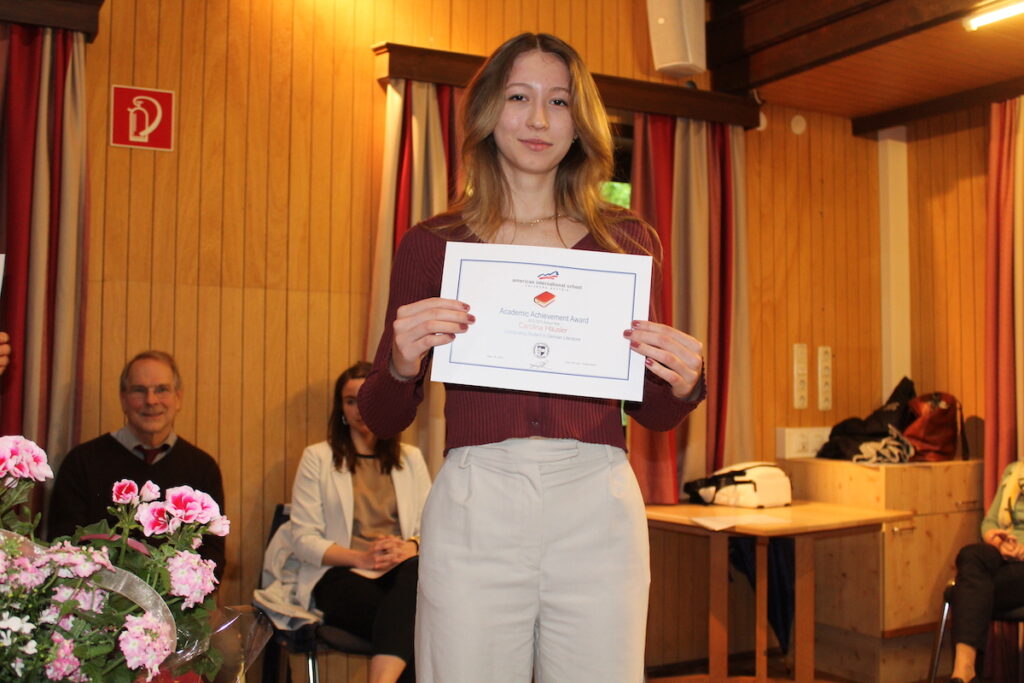
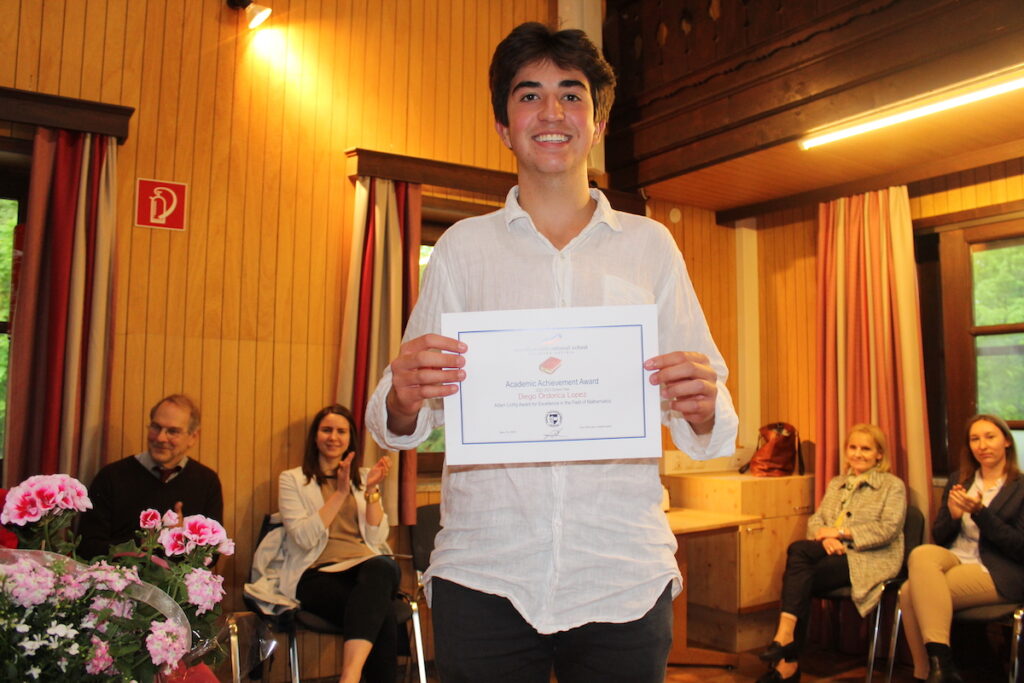
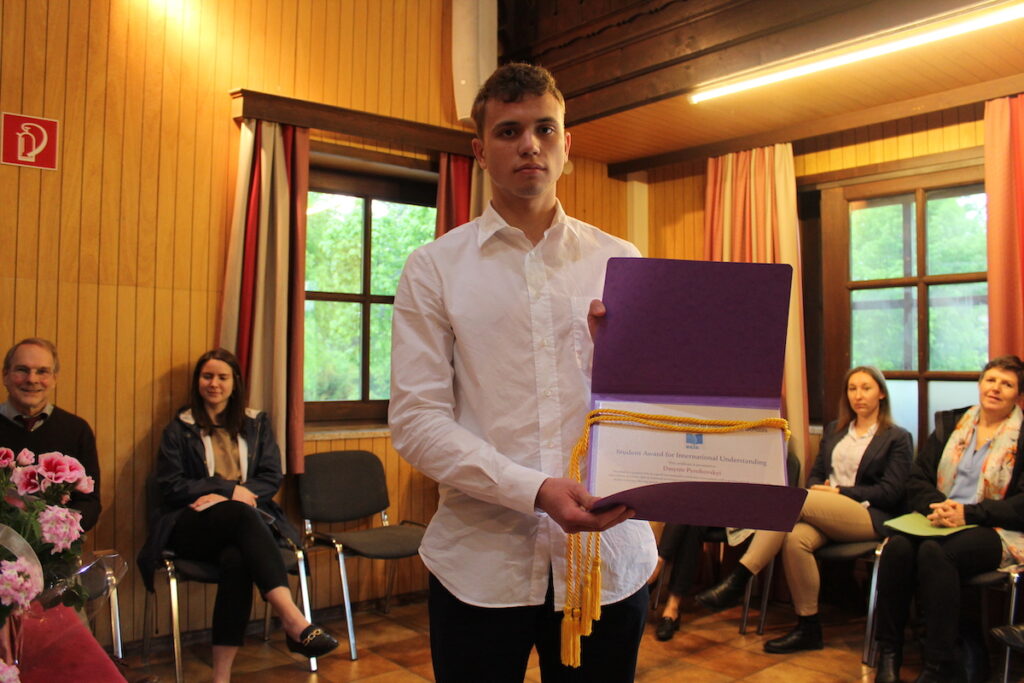
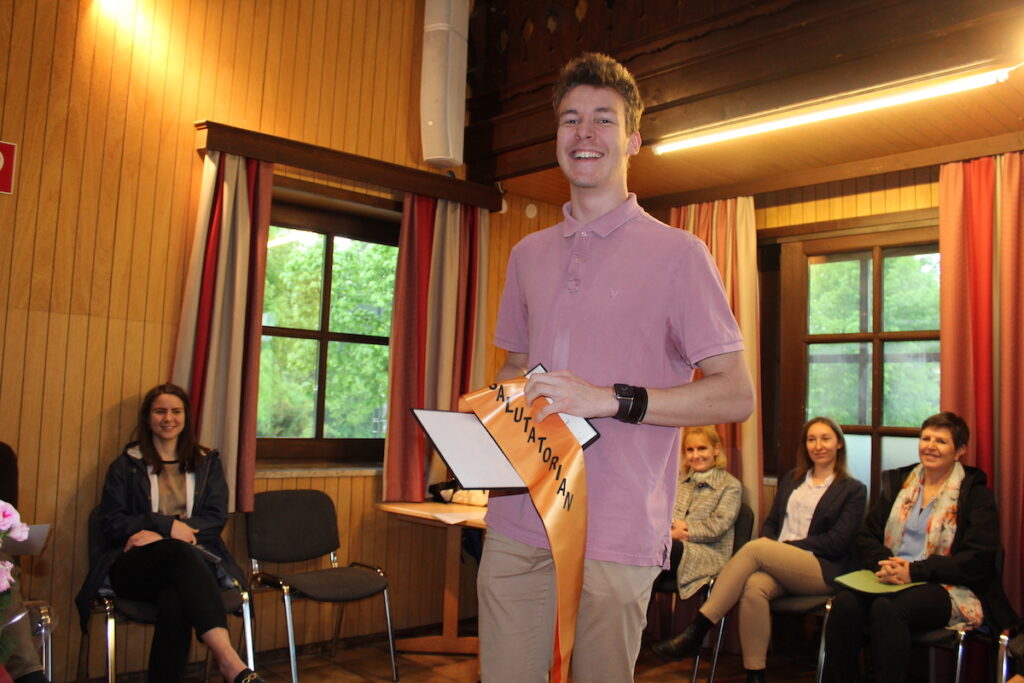
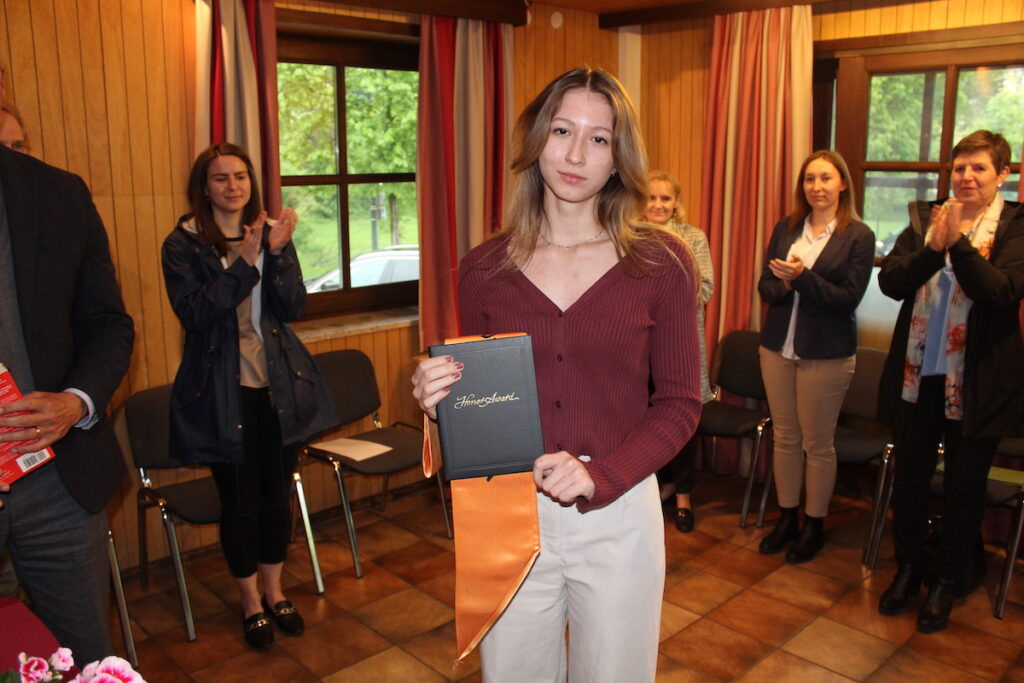
British-born Jennifer Turrell transferred as a junior from an International Baccalaureate school in the United Kingdom to Advanced Placement studies at AIS-Salzburg in 2020 and graduated in 2022 after two years in our program. Since graduating, everything hasn’t gone according to plan for Jennifer and like many college students around the world, she has had to adapt to circumstances and make hard decisions about her future. In this interview, we check in with Jennifer as she shares how life has been going and reflects back on her time at AIS-Salzburg.
AIS-Salzburg: How has life after AIS-Salzburg be going?
Jennifer: Life is very different. Despite living in the same city (Salzburg), my life has completely changed. I’ve had the opportunity to meet some incredible people through my workplace, time spent at my favorite coffee shop (La Romana on the Linzergasse, would highly recommend), and my new neighbours. I have a lot more freedom than I did before, but with that comes A LOT more responsibility and living on your own in such an expensive city is challenging.
AIS-Salzburg: What made you decide to work instead of study?
Jennifer: I decided to take a gap year because I disliked Bath and the university I was attending. My plan was to go to the University of Salzburg in March, but many people encouraged me to consider other options. After learning about other students’ experiences, I decided that staying in Salzburg wasn’t for me.
AIS-Salzburg: Did your time at AIS-Salzburg prepare you for adult life?
Jennifer: I have to be honest, no school can prepare you for adult life, especially a boarding school where everything is done for you. Paying rent, budgeting, cooking, internet bills, phone bills, etc is not something you can be taught. You just have to figure it out as you go along. Working full-time can be incredibly stressful, especially working with customers, but it’s something you have to learn to deal with – nobody feels sorry for you.
AIS-Salzburg: What is your fondest memory or memories of attending AIS-Salzburg?
Jennifer: I loved sports day! I have to admit that I wasn’t exactly the best student when it came to attendance, especially P.E. (sorry Mr. Burns) but I thoroughly enjoyed sports day every year. It’s the perfect day to just have fun before AP and final exams make us cry haha.
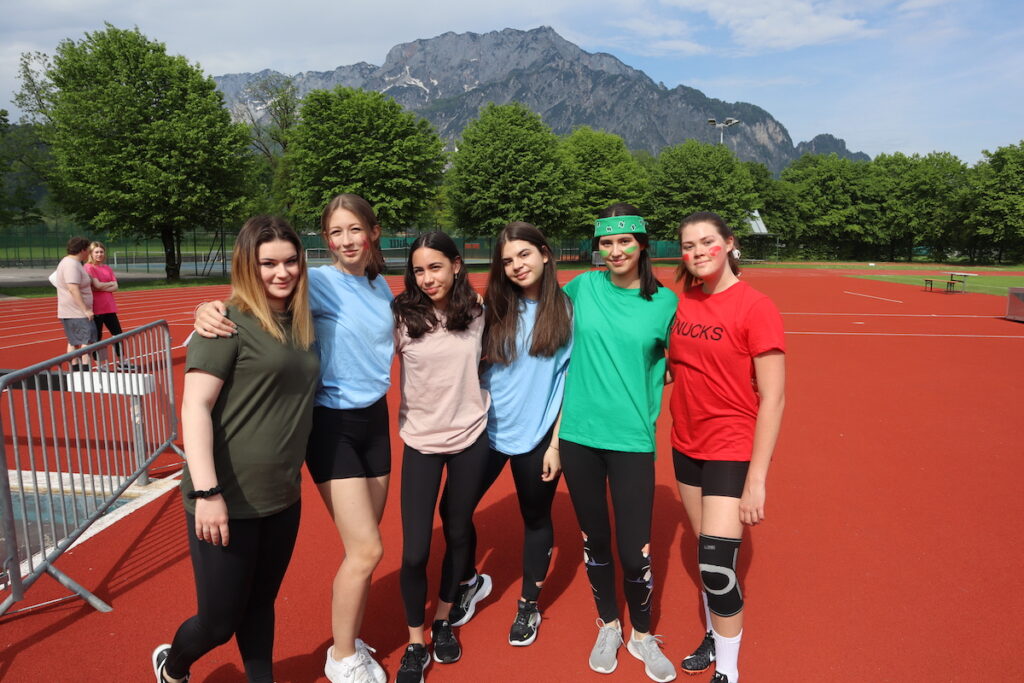
Photo: Jennifer (green) at Sports Day 2022.
AIS-Salzburg: What did you enjoy about going to such a small international school?
Jennifer: I loved being able to go to the teachers as I needed. I had a big procrastination problem when I was at AIS-Salzburg, so being able to go to Ms. Kasberger after school to finish my homework before I went home was super helpful. Help is there whenever you need it, which I think isn’t the case in bigger schools, and each teacher knows each student very well.
AIS-Salzburg: Were there any teachers who made a major positive impact on your life?
Jennifer: Ms. Kasberger and Mr. Agardy 100%. One thing I absolutely loved about AIS-Salzburg is that no matter what, the teachers believed in me. Even if I didn’t do well on a test, or I didn’t do my homework, no teacher has ever made me doubt my dreams. In other schools, this wasn’t the case. Ms. Kasberger taught me to never listen to anyone who tries to criticize my goals and Mr. Agardy always made time for me, whether that be for my university applications during my senior year. Even now, although I have graduated, he still helps me whenever I have any questions about my future. It’s because of them that I still have the goal of becoming a veterinarian. I’m pretty sure I would have given up long ago if I had other teachers or didn’t go to AIS-Salzburg.
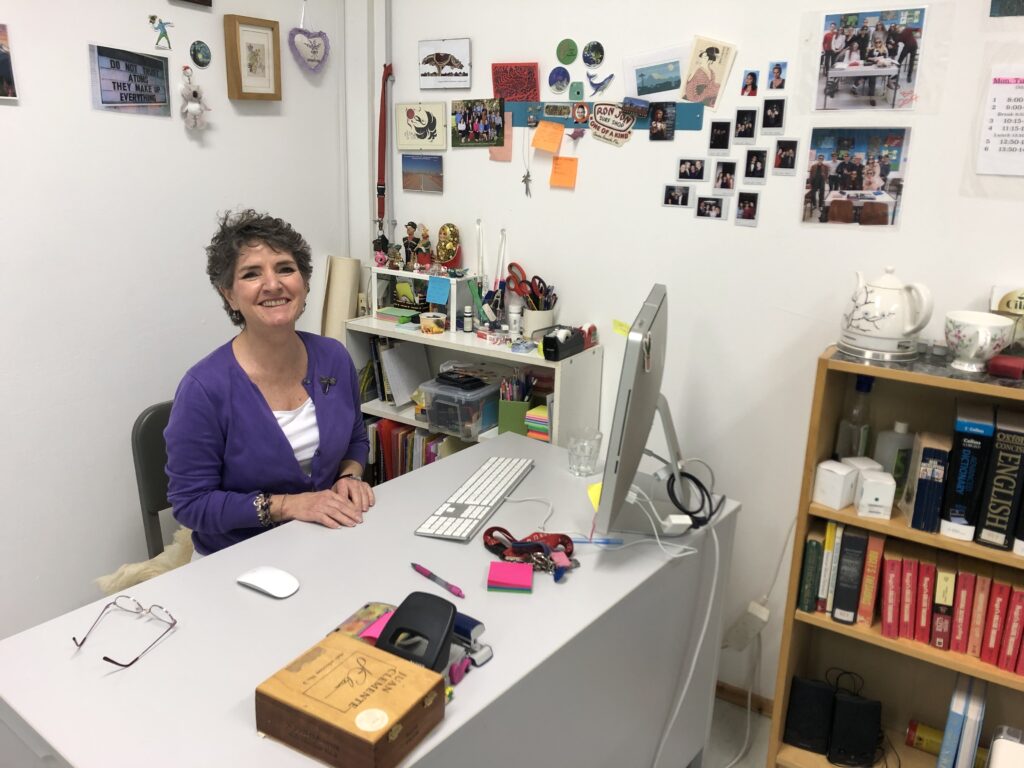
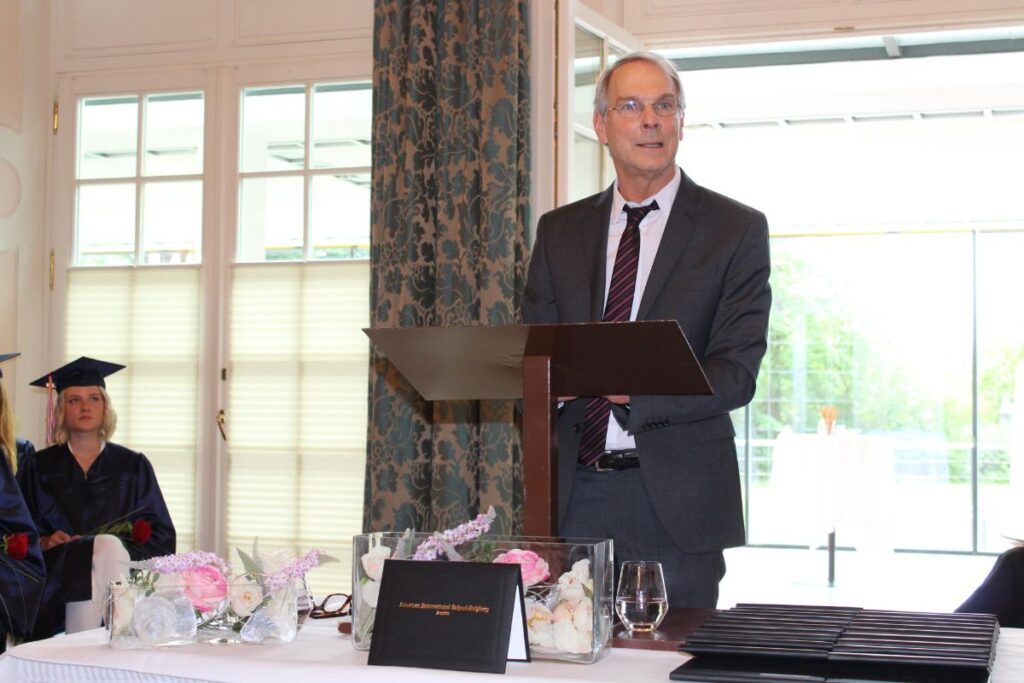
Photo: AIS-Salzburg teachers Jennifer Kasberger and Jeff Agardy were major positive influences on Jennifer Turrell during her two years at our school.
AIS-Salzburg: Do you have any advice for our 2023 seniors at AIS-Salzburg as they head into the final weeks of the school year?
Jennifer: DON’T. HAVE. MY. ATTITUDE. I don’t care if you don’t care about a certain grade on your transcript. Study for that test, even if you think you don’t need a good grade in that subject. Don’t abandon your normal classes for your APs. Figure out a study schedule, and prioritize certain things, but don’t push anything to the side completely – I’m only learning that now because I wish I would have done better. Also, please don’t get down if your top choice university doesn’t accept you – I promise that you will find your way in life, and you will go somewhere even better. There are a lot more important things in life than University, (that doesn’t mean you shouldn’t study though). After high school, you will have much bigger problems than univeristy, this is only the beginning!
After 37 years of teaching at AIS-Salzburg, Jeff Agardy will be retiring following the conclusion of the 2022-2023 school year.
We invite you to read the interview below with Mr. Agardy followed by a tribute video and best wishes from alumni, colleagues, and current students.
Mr. Agardy on Retirement and His Time at AIS-Salzburg

AIS-Salzburg: How were you able to maintain the amount of enthusiasm and passion for teaching right through the final years of your career?
Agardy: From the moment I joined the school in 1986 I found it was an exciting place to work. The demands of the administration were generally minor and never interfered with my teaching. Previously, I had taught in the US and in Austria. At a time when society was less diverse, all the students in my classes in the US were Americans, and then nearly all students in the gymnasium were Austrian. At SIPS, as the school was known at that time, the student body was far more diverse. I felt the students learned from me, I learned from them, and we learned from each other. I also had the feeling at this school that we were all working together, not against each other. That is definitely a reason why I stayed for many years.
AIS-Salzburg: What will you miss most about AIS-Salzburg?
Agardy: What I will miss most about AIS Salzburg are the students. There is never a dull moment here. Some resist learning like the plague, others try to sneak up to the girls’ floor at 2 am, and still, others plan a Bierfest at the brewery on a Monday afternoon. That makes them very normal adolescents that are a pleasure to work with. I love the students I teach and the subjects I teach.

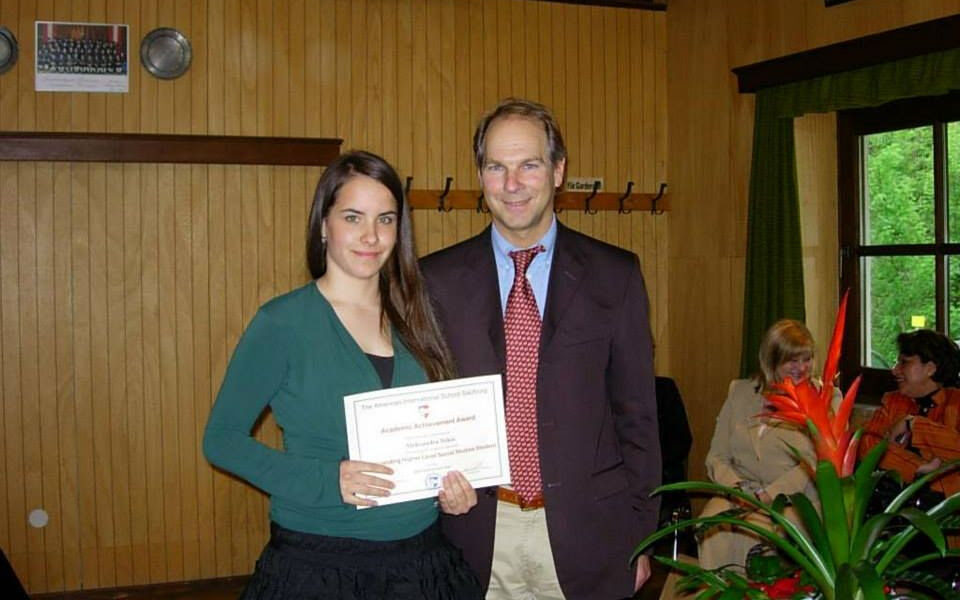
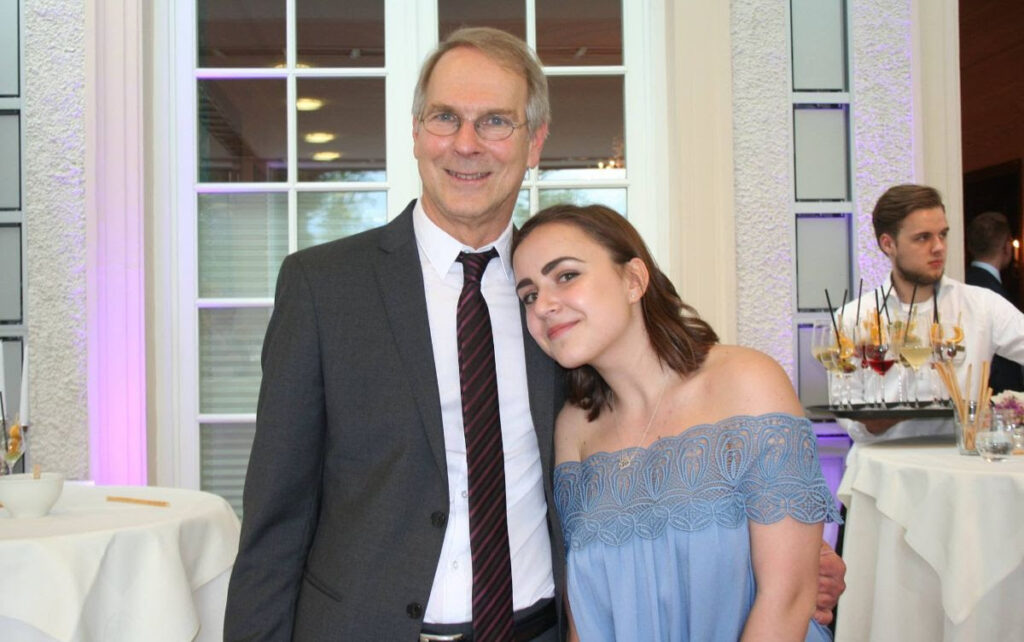
AIS-Salzburg: What are your retirement plans?
Agardy: I had 4 years of French in high school so I would like to take a few more courses and live in France for 2 or 3 months to become fluent. I also plan to travel some in Europe, mainly by rail and boat as I did as a student 40 years ago. Skiing during the week in off season when few people are on the slopes is also appealing. In Salzburg, I have a garden and grow about 40 kinds of fruits and vegetables, including kiwis, lemons and grapes. As Voltaire advised “il faut cultiver notre jardin.” That will keep me busy.
Mr. Agardy was once again asked by the senior class to deliver their commencement speech at graduation. You can watch Agardy’s speech and the entire commencement program live on our Facebook page starting at 3:00 PM, May 17th Central European Time.
AIS-Salzburg Bids Farewell to Mr. Agardy
Originally from South Carolina, Mr. Agardy joined AIS-Salzburg –called Salzburg International Preparatory School at that time– as a teacher in 1986 and has been teaching here ever since. Mr. Agardy has primarily been a teacher of history, geography, and German but has also taught a number of other subjects throughout his years. Mr. Agardy has also served as our college counselor for over 20 years and has done an amazing job at guiding students in their post-secondary study decisions.
We invite you to watch our farewell video of Mr. Agardy below.
Alumni, Colleagues and Students Send Mr. Agardy Retirement Messages
Mr. Agardy is not only loved by all who have had the privilege of working alongside him but also by those who have sat in one of his classes.
“Every time I post something about Jeff on our social media, a string of loving comments follows from Alumni dating back 10, 20 even 30 years,” said marketing director, David Burns.
After a post last week on AIS-Salzburg social media requesting best wishes for Mr. Agardy on his retirement, messages came pouring in. Below are just a few quotes from the dozens of messages that came in.
– Varya Buben, Class of 2022.
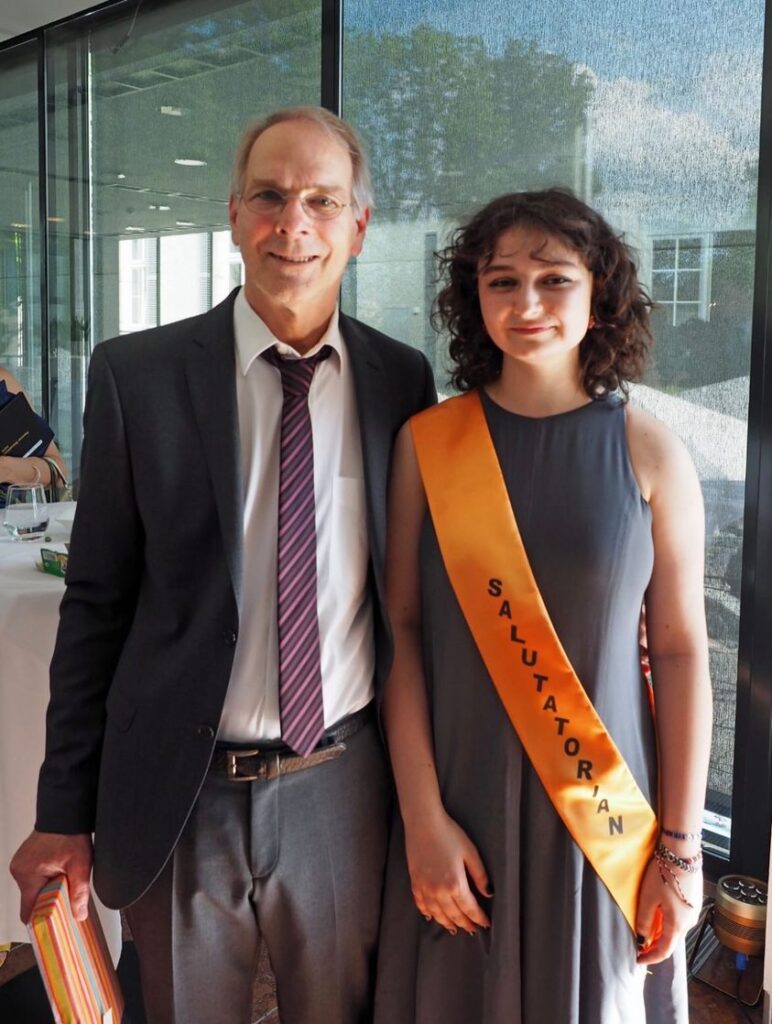
On behalf of the Class of 86’, we thank you for being such an extraordinary educator and roll model!” Personally, I hope our paths cross again, perhaps at the next SIPS Reunion.”
– Conrad de Jesus, Class of 1986
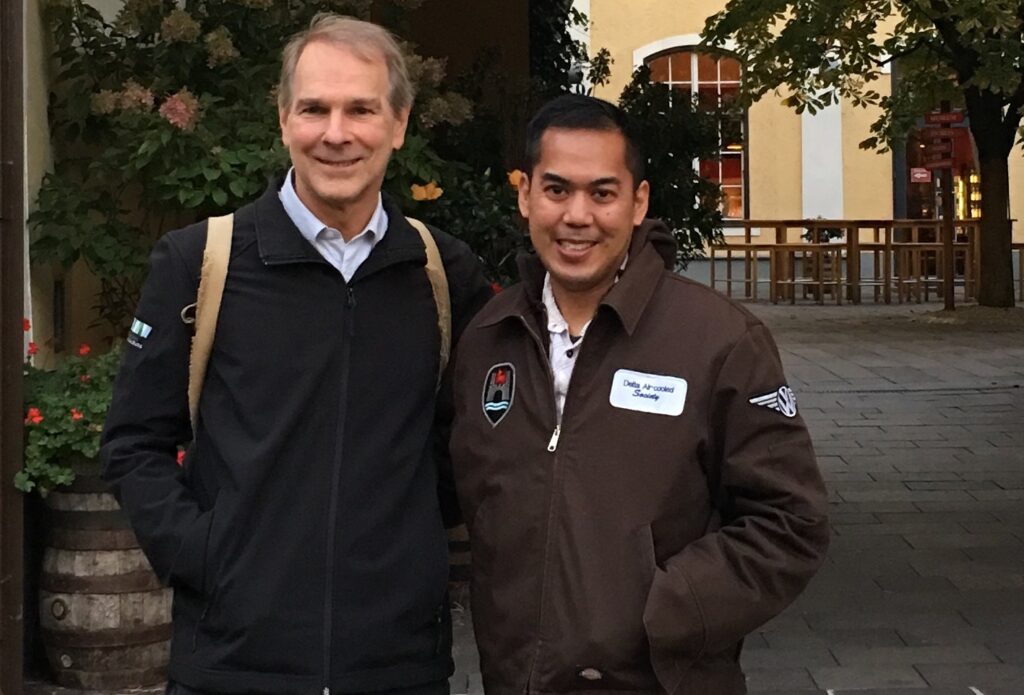
– Karin Avila, Class of 1990
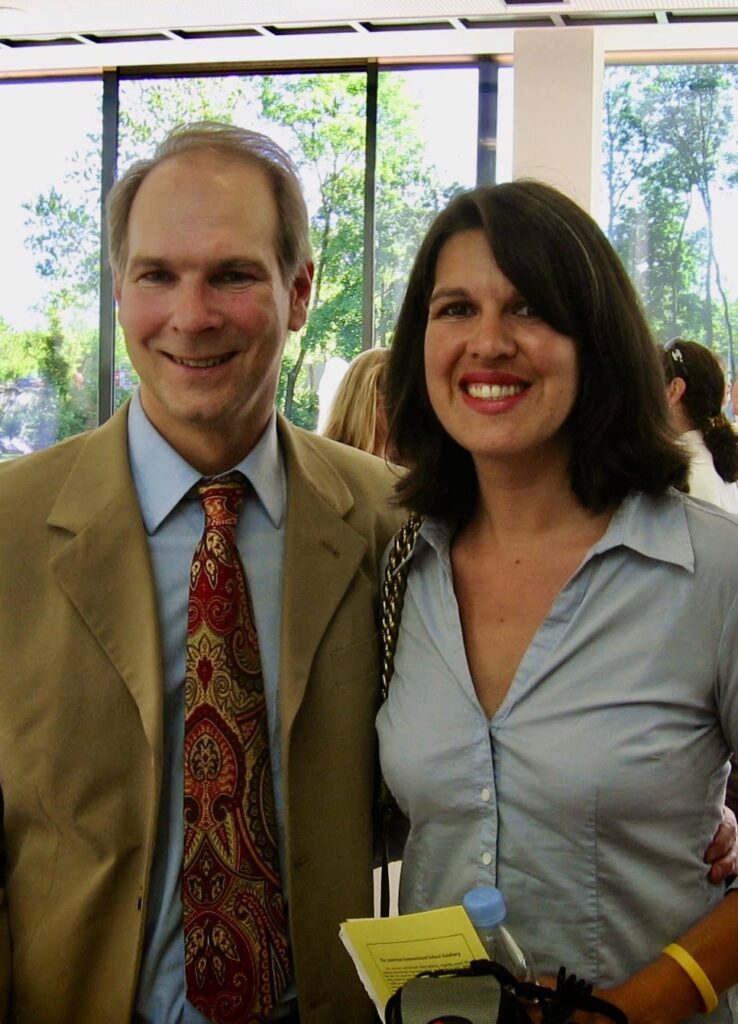
– David Burns, Colleague from 2004-2023
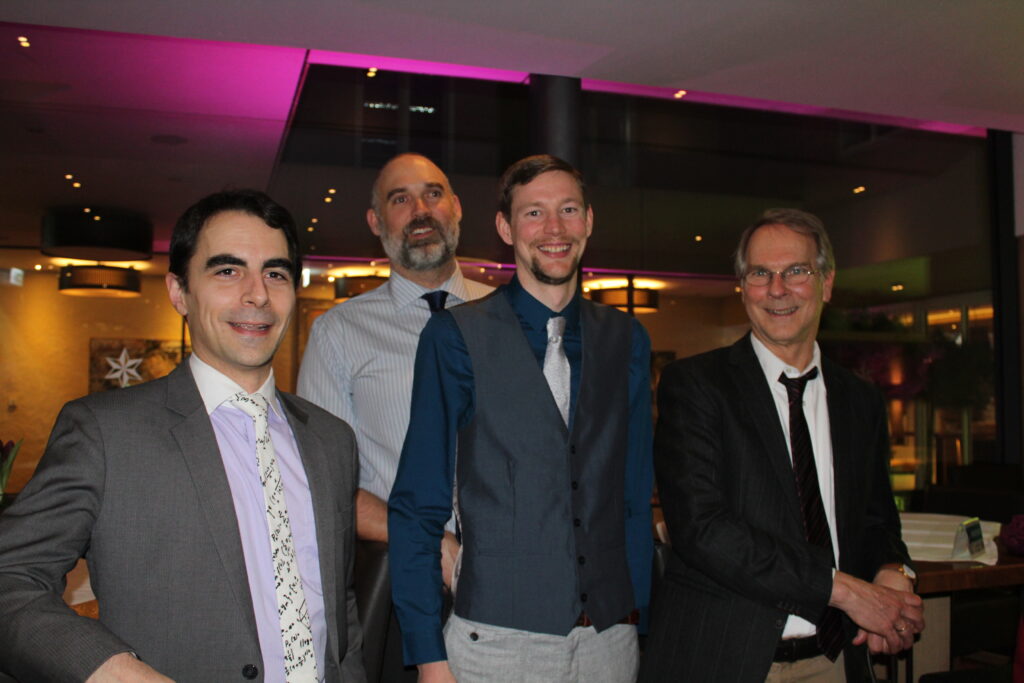
– Ana Mugosa, 2017-2018
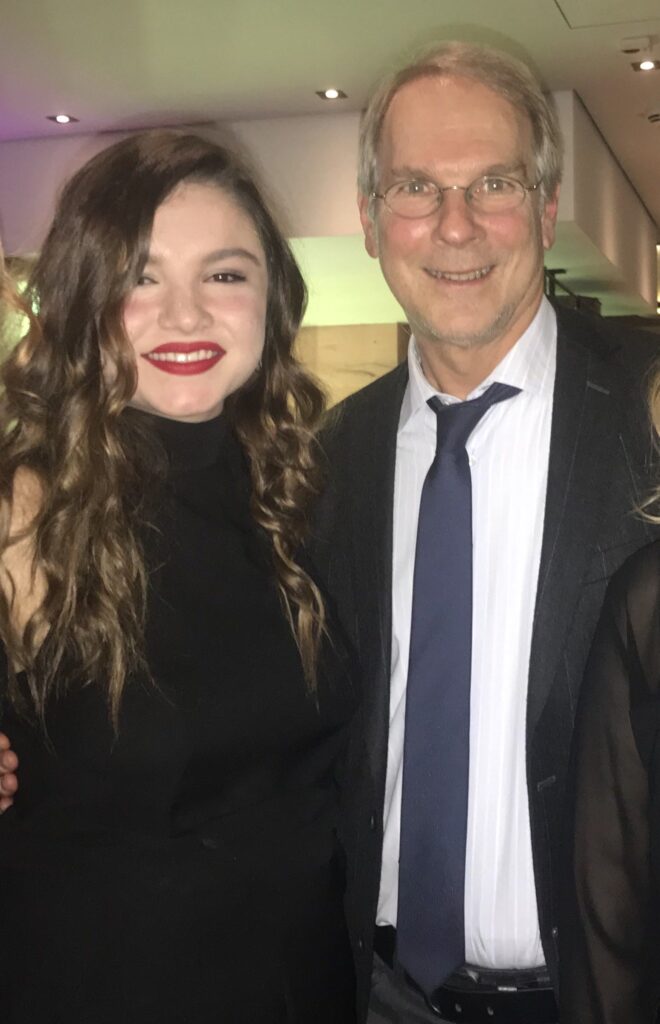
It has been wonderful to have you as my German teacher this year. I loved the atmosphere in the classroom and how you made the subject very enjoyable. I have always admired you for your patience for everyone. Other than being an amazing teacher, you are also a great helping hand for every student in the school. Your support made everyone feel more comfortable and your advice was always helpful to find the right academic and personal goals. I would like to thank you for all the kind words that I have heard from you. I really appreciate that you believed in me from the beginning of my 7th grade year.
I wish you a relaxing time after all those years of teaching at AIS Salzburg. Even though it is not easy to say goodbye, we all made a lot of valuable memories with you that we will never forget. PS. As your neighbor, I am sure we will meet on a walk in the Leopoldskron or during my afternoon run.

– Ola T., Class of 2025
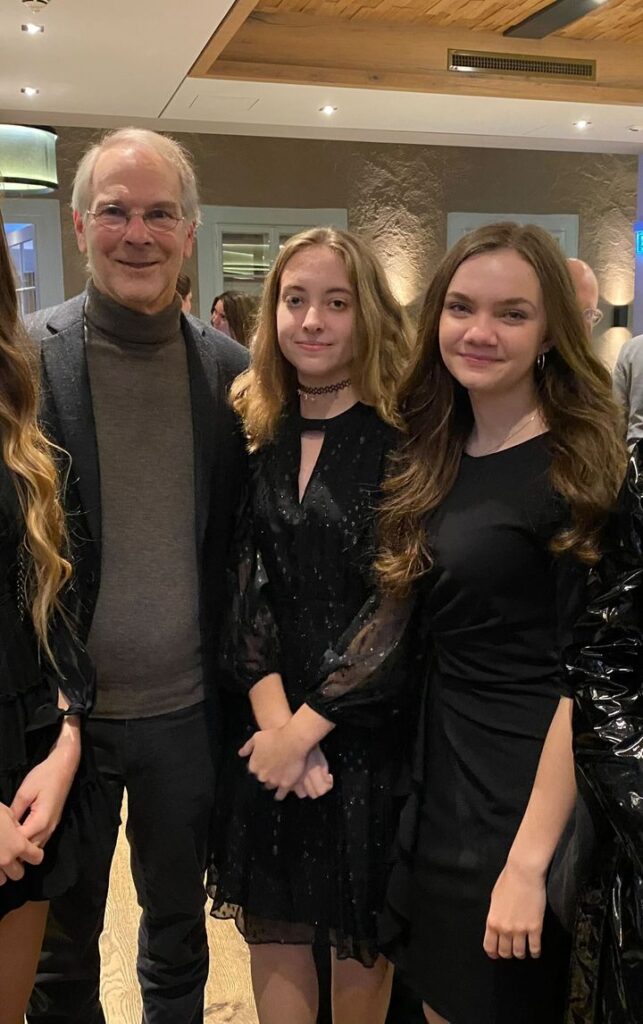
Dear Mr. Agardy,
Thank you so much for guiding me through my educational journey. Without your help, passion and commitment, I would not have ended up where I am today. The school will never be the same without you! Best of luck in your retirement. Keep in touch!
Sincerely,
– Oleksandra Gumeniuk, Class of 2019
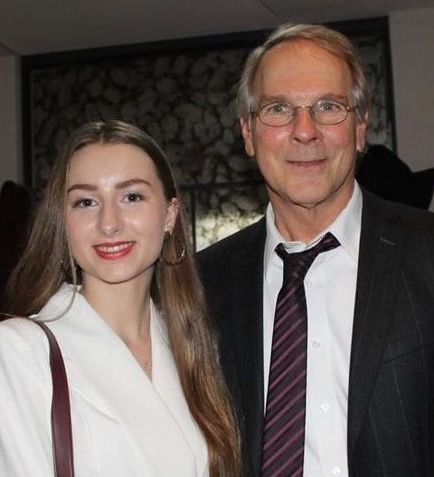
– Polina Belyaeva, 2017-2018
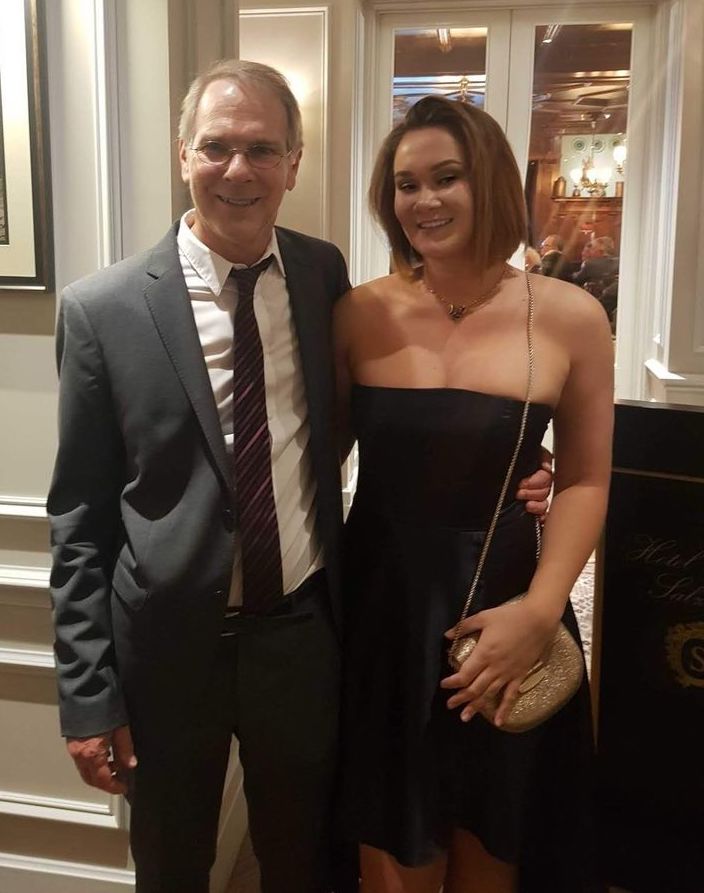
– Theresa Walla, 1990-1992
What makes Jeff so beloved by students is he simply exudes a calm and reassuring attitude that students pick up on and feel comfortable with. It also helps that he has so many years of experience under his belt and knows exactly how to engage students and help them to succeed in their learning.
– Jennifer Kasberger, Colleague 2008-2023
Dear Mr. Agardy,
Greetings from Mallorca. I heard the news that you were retiring. I wanted to send you a message and say thank you for the wonderful years that I attended SIPS. If you are ever thinking of traveling to Spain please let me know. Enjoy retirement.
Best regards,
– Yuri den Haring, 1991-1995
– Adam Lichty, Colleague 2015-2023
– Arina Yefimchenko, 2018-2021
– Grayson and Catrin, Colleagues from 1994-2002
– Danila Sevtsov, Class of 2020
– Didem Gökmen, 1992-1993
– Sonja Testa, 2020-2022
– Alec Smith, Class of 2016
– Noa Selzam, Class of 2020
Dear Mr Agardy,
You were teaching me history in my first year at AIS-Salzburg back in 2015/2016. After finishing my first year at AIS-Salzburg, I moved to London to do my A-Levels in Math, Further Math, Physics and German. After successfully completing the A-Levels, I decided to get a Bachelor’s degree in Computer Science, instead of Aeronautical Engineering, which was my first choice. Deciding to do Computer Science has proven to be a good choice and I have graduated at City, University of London and obtained BSc Computer Science degree with first class.
Even though my path in studies has led me away from social studies I have often remembered our history classes and I think that you, together with Ms. Kasberger and some other teachers at AIS-Salzburg, have played a significant role in my life as a student and helped me mature and figure out which things are important in life. I think you have done this by being a good pedagogue, by giving attention to each student you were able to tailor your approach in order to get the best results from each one of us. In my case, you have succeeded.
I wish you a good retirement, full of joy, happiness and good health. I am sure that you have left a strong impression on the lives of your students, as you have in mine, and I am thankful for that.
Best wishes,
– Luka Delic, 2015-2016
– Marina Paramonova, 2013-2015
– Rejhana Zejnilovic, 2021
– Emmanouil Saridakis, Class of 2020
– Desard Sijoni, Class of 2020
Thank you Mr. Agardy for all of the years of dedication and passion to teaching and guiding our students into the real world!!
By: Teodora S.
Edit by: Chantal S.
As a new student and someone who had a really hard time fitting in last year, I, Teodora S., have valuable advice to share with those finding themselves in similar positions. I realized that the problem wasn’t the environment, it was me. I didn’t want to fit in and give AIS-Salzburg a chance. A big part of it was also my fears. When I changed my point of view, however, everything started to get better. I found many people who later became my friends, and I started enjoying everyday life here.
Changing schools and moving isn’t always the easiest thing to go through as a high school student. Under all of that stress, socializing is less of a priority. One of the main things that I found helpful is joining a sports team. Our school doesn’t require a high skill level, and if our coaches see that you are trying, they will give you a chance.
During the winter, we have a chance to go on ski trips every weekend. Many students usually go skiing and it’s also a great opportunity to find someone new to spend the day with on the slopes. If you are not really into skiing, there are also overnight and day trips on the weekends in addition to multi-day long excursions.
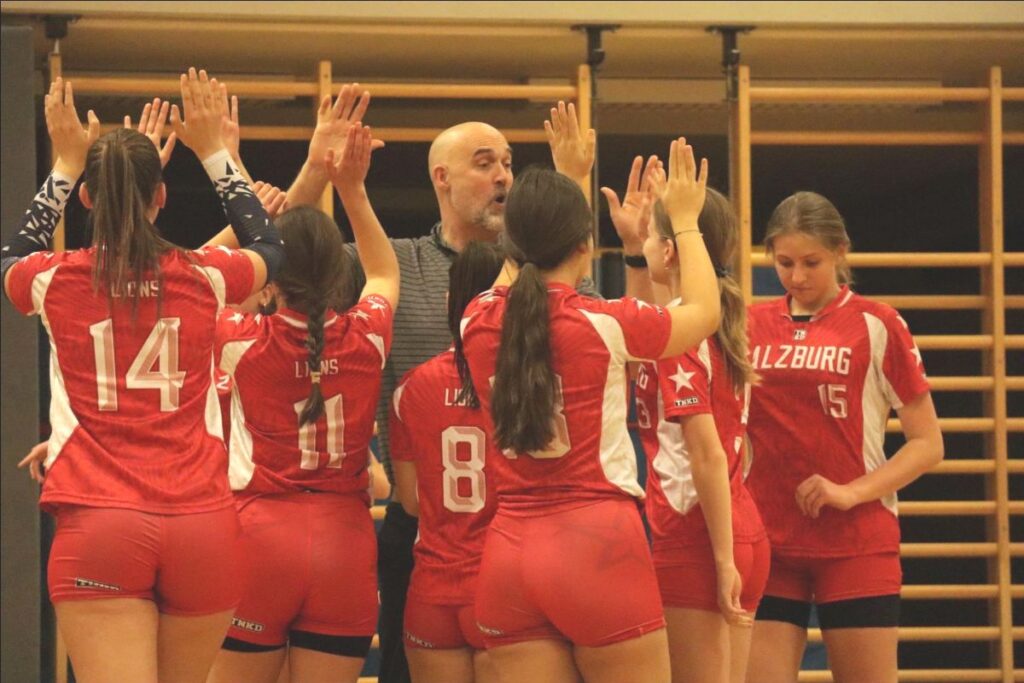
Photo: Teodora and Chantal both play on the girls’ volleyball team.
I asked some of the students to share their fears and experiences before coming to Salzburg. “My biggest fear was finding new friends. I found that being from the same culture helped me a lot, same as joining volleyball and having some of the same interests,” said 10th grade student, Egla H.. “I was most scared of learning English and having bad grades. Luckily, it wasn’t a big problem due to our friendly and inspiring teachers who helped a lot,” shared my brother Luka S.. One of our more sociable 10th-grade students, Daniela C., recommended that students, “Do not be shy and afraid, to not hesitate to talk to other people and say your opinion. You’ll be surprised by the outcome.”
The most important thing to remember is that you are not alone and that there is no reason to fear coming to our school. There are many possibilities for finding new friends and starting to enjoy your time here.
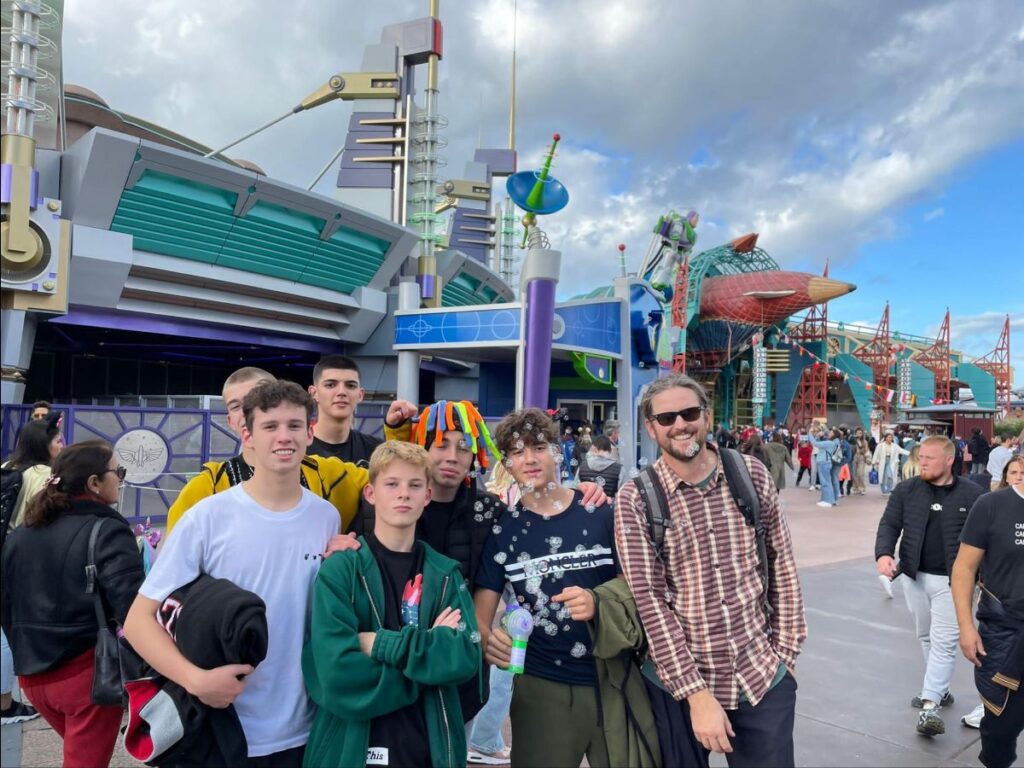
Photo: Students bond at Disneyland during the fall excursion to Paris.
I asked some of the students to share their fears and experiences before coming to Salzburg. “My biggest fear was finding new friends. I found that being from the same culture helped me a lot, same as joining volleyball and having some of the same interests,” said 10th grade student, Egla H.. “I was most scared of learning English and having bad grades. Luckily, it wasn’t a big problem due to our friendly and inspiring teachers who helped a lot,” shared my brother Luka S.. One of our more sociable 10th-grade students, Daniela C., recommended that students, “Do not be shy and afraid, to not hesitate to talk to other people and say your opinion. You’ll be surprised by the outcome.”
The most important thing to remember is that you are not alone and that there is no reason to fear coming to our school. There are many possibilities for finding new friends and starting to enjoy your time here.
We invite you to watch the video below of Mr. Agardy previewing the Advanced Placement® Geography course and exam. In this video, Mr. Agardy explains why this is a great course for exposing students to various academic disciplines that they otherwise would not have the opportunity to experience in their high school career.
Twin sisters, Inzhu and Aizhan T. came to AIS-Salzburg in September 2020 as grade 10 students and did not get off to a good start. In their first year, the sisters soon realized after arriving at the school that they did not want to be there. Their response to this was to put no effort into their academics or any attempt to integrate into the community. Early on, teachers were not optimistic that the girls would make the necessary adjustments to find success at AIS-Salzburg.
“They were a nightmare when they first came. They were rude to everyone and their grades were bad because they didn’t do any work. It was a constant battle to get them to do anything during study hall or even to keep them awake,” reflected Dorm Parent Ms. Clarke.
“Their biggest problem was their attitude. They didn’t make any effort to fit into our community,” said Mr. McLean, their U.S. History teacher in their first year.
However, with time, the twins slowly came around and made notable GPA gains in their junior and senior years.
“I think once they realized it wasn’t so bad (at AIS-Salzburg) they decided to make a go of it and let people in. Their mindset altered,” said Ms. Clarke. “Once we put it a little bit of effort in, it was quite easy to adapt, to be honest,” said Inzhu in the video interview below. “I started visiting Mr. Lichty after school for extra help and would come to Mr. Leicher in the morning sometimes.”
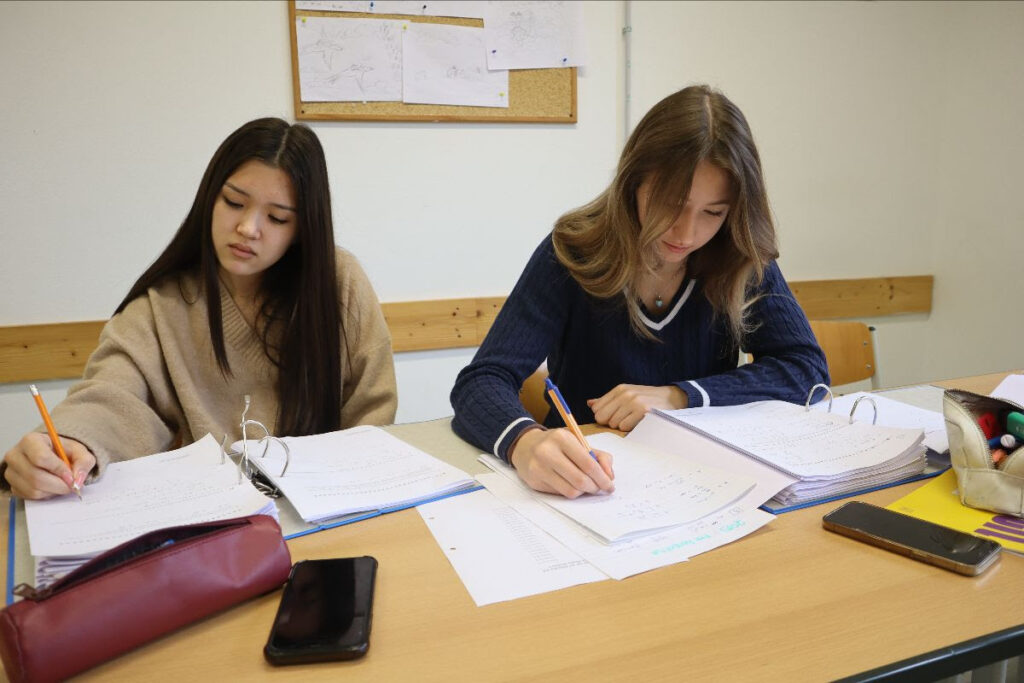
Photo: Aizhan (left) preparing for the recent AP Calculus exam.
The twins have not only improved on the academic front but also on the social front, acquiring many friends over the three years and participating on the girls’ basketball team.
Ms. Clarke is amazed by the turnaround since their first year.
“Now it’s the opposite. They are among the most popular students in the school, and I’d say definitely the best-known. They are now very social, caring, friendly, funny and all-round lovely people. Aizhan in particular really settled into her studies and has even been a distinguished student in the past. Although they still sometimes have their moments, I love them and shall really miss them when they leave.”
“The people I met here are really genuine,” said Aizhan. “It just makes our living here better because you are surrounded by people you like talking to.”
We invite you to watch the full interview with Inzhu and Aizhan below.
Daria Suraeva first came to AIS-Salzburg in 2014 and graduated in 2017. Since graduating, Daria has remained in Salzburg, studying at the Paris Lodron University of Salzburg. In this interview, we check in with Daria to see how life is going since graduating.
AIS-Salzburg: What have you done academically since graduating from AIS-Salzburg?
Daria: Since graduating from AIS-Salzburg, I pursued a bachelor’s degree in Economics and Political Science. I then decided to pivot towards a career in data science and am currently completing a master’s degree in that field.
AIS-Salzburg: Are there any personal accomplishments since graduating that you want to share?
Daria: Ohhh, there were many different stages and diverse experiences. In a few words: I am particularly proud of my work in the development of a travel startup, where I was able to use my business acumen and analytical skills to help the company grow. Additionally, I worked on a concept for the development of the city of Salzburg, which was a rewarding experience and allowed me to contribute to my community. I was a member of a group of young experts and we developed a city strategy for the next 25 years and eventually defended our version of the concept in front of parliament.
After that, I decided to move more in the business and data analysis direction, and now I work for one of the world’s biggest German e-commerce companies in the business intelligence domain.
AIS-Salzburg: What were the major factors in your decision to attend a small private boarding school in Austria?
Daria: I chose to attend a small private boarding school in Austria for several reasons, including the opportunity to study abroad and immerse myself in a different culture, the small class sizes.
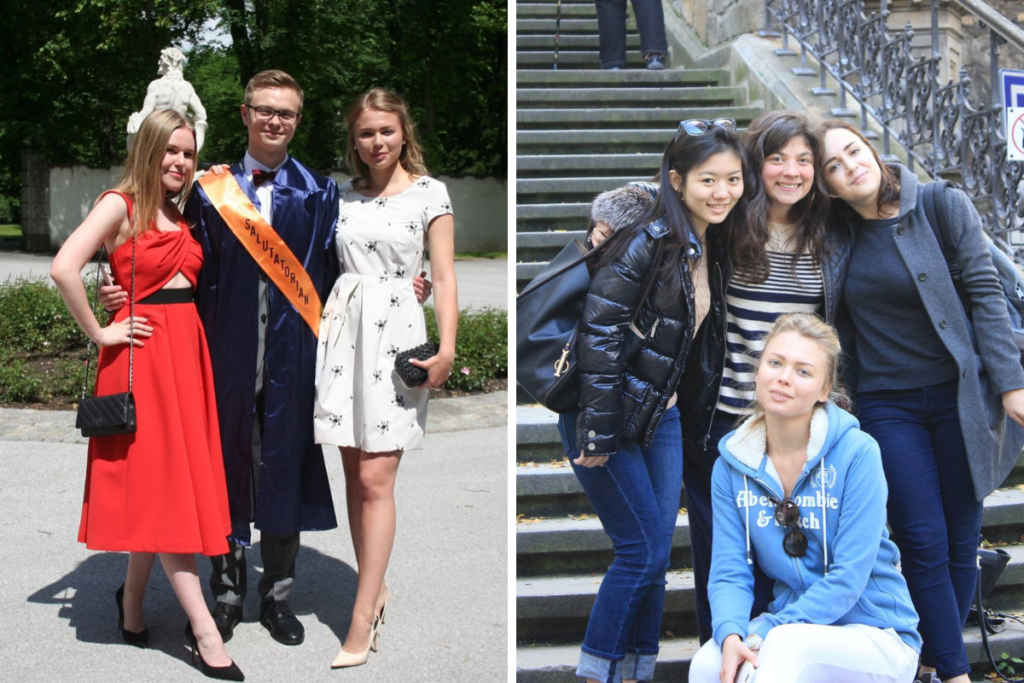
AIS-Salzburg: What did you enjoy about going to such a small international school?
Daria: I enjoyed the close-knit community and personalized attention from the teachers that a small international school provided.
AIS-Salzburg: What is your fondest memory or memories of attending AIS-Salzburg?
Daria: My fondest memories of attending AIS-Salzburg are the relationships that I formed with my classmates and the international community. I am grateful to many of my classmates and also to everyone with whom fate brought me together at this school, without whose creativity it would be hard to live in a serious mode of our school (take the last part with due humor please). I also have fond memories of the weekend activity program, which allowed us to explore and appreciate the natural beauty of Austria.
AIS-Salzburg: Were there any teachers who made a major positive impact on your life?
Daria: There were several teachers at AIS-Salzburg who made a major impact on me, including my history, maths and environmental science teachers. They challenged me academically and helped me develop critical thinking skills that have been invaluable in my further education and professional life. I also remember the non-curricular part of schooling. Thanks to Mr. Burns for the opportunity to practice basketball and even a little more. He always tried to make our competitions and trips memorable events.
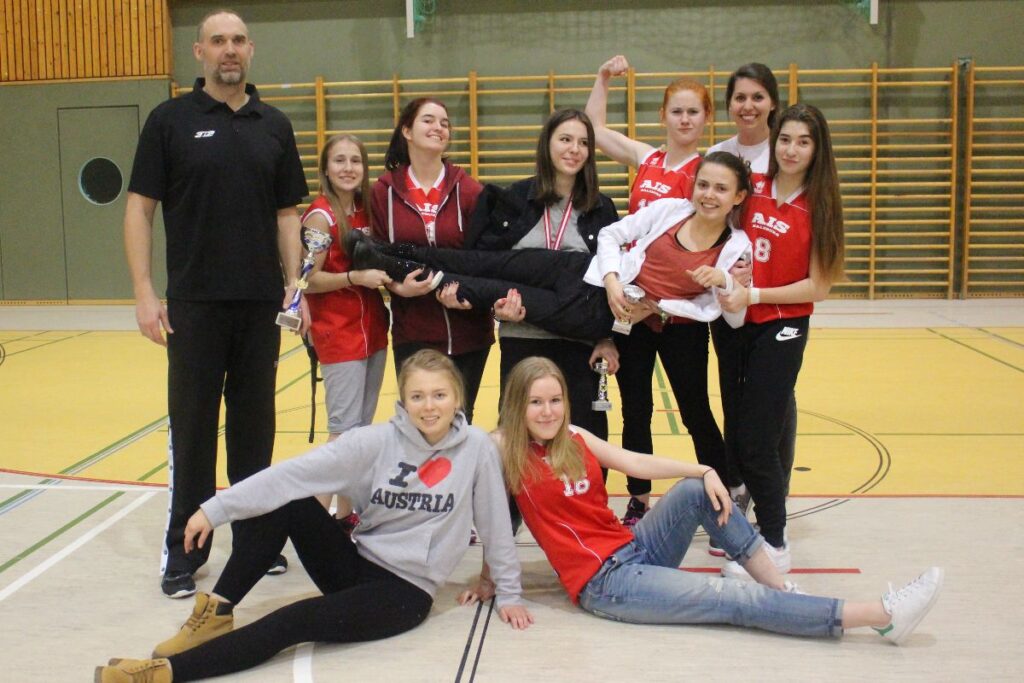
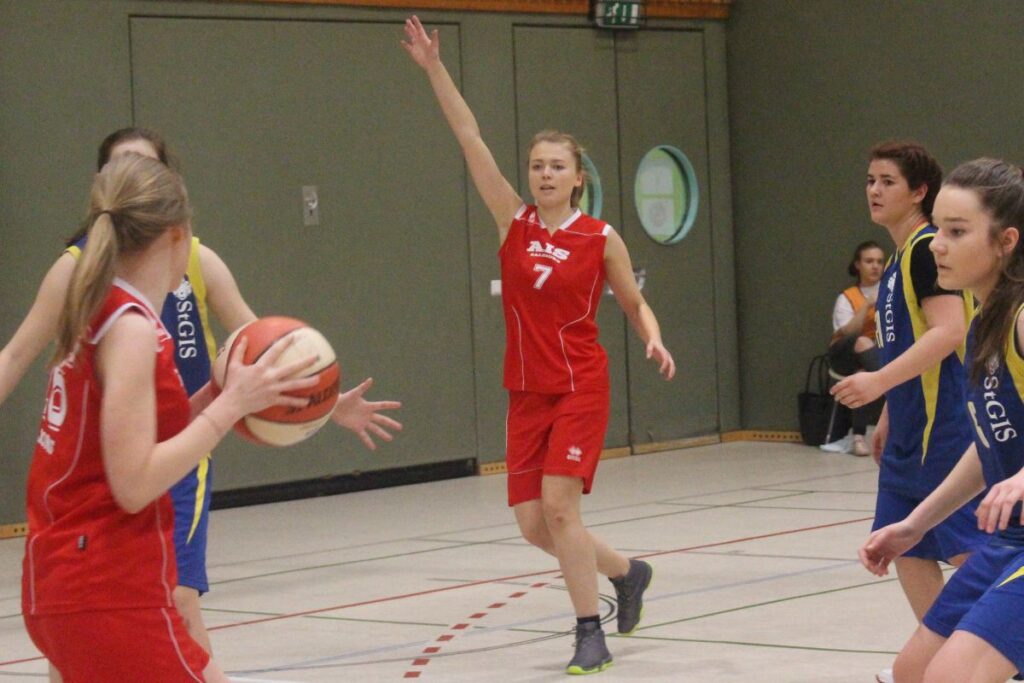
AIS-Salzburg: What aspects of your education at AIS-Salzburg best assisted you in further academics, your professional life, and/or life in general?
Daria: The rigorous academic program at AIS-Salzburg, coupled with the focus on cultural immersion and international education, has been instrumental in my success both academically and professionally. The emphasis on critical thinking and effective communication has also been invaluable in my career.
AIS-Salzburg: Do you have any advice for students at AIS-Salzburg ?
Daria: My advice for students at AIS-Salzburg would be to take advantage of all the opportunities that the school has to offer. This includes participating in outdoor education programs, clubs and organizations, and cultural events. It is also important to develop relationships with your teachers and classmates, as they will be a valuable source of support and guidance throughout your academic journey. Lastly, be open to new experiences and perspectives, as they will shape you into a more well-rounded individual. School time is just another stage in life. One of many stages, spend it productively (be careful with multitasking) and have fun!
On April 19th, the 8th Annual AIS-Salzburg Sports Day was running smoothly until mother nature decided to stop it in its tracks. A little more than halfway through the day’s scheduled events, a storm swept through Salzburg and washed out the remaining afternoon events. The following Wednesday on April 26th, the remaining events were completed during regular P.E. classes but had to be done indoors due to inclement weather once again. The final standings were announced after school with Team Red led by Mr. Lichty and R.A. Matt crowned as the 2023 Sports Day Champions.
We are very proud of all students for showing great sportsmanship and attitude despite the rain and the many changes to the schedule. Thank you to all the team and event leaders for making the 2023 event another successful one!
We invite you to view the photos and video below from the 2023 AIS-Salzburg Sports Day.
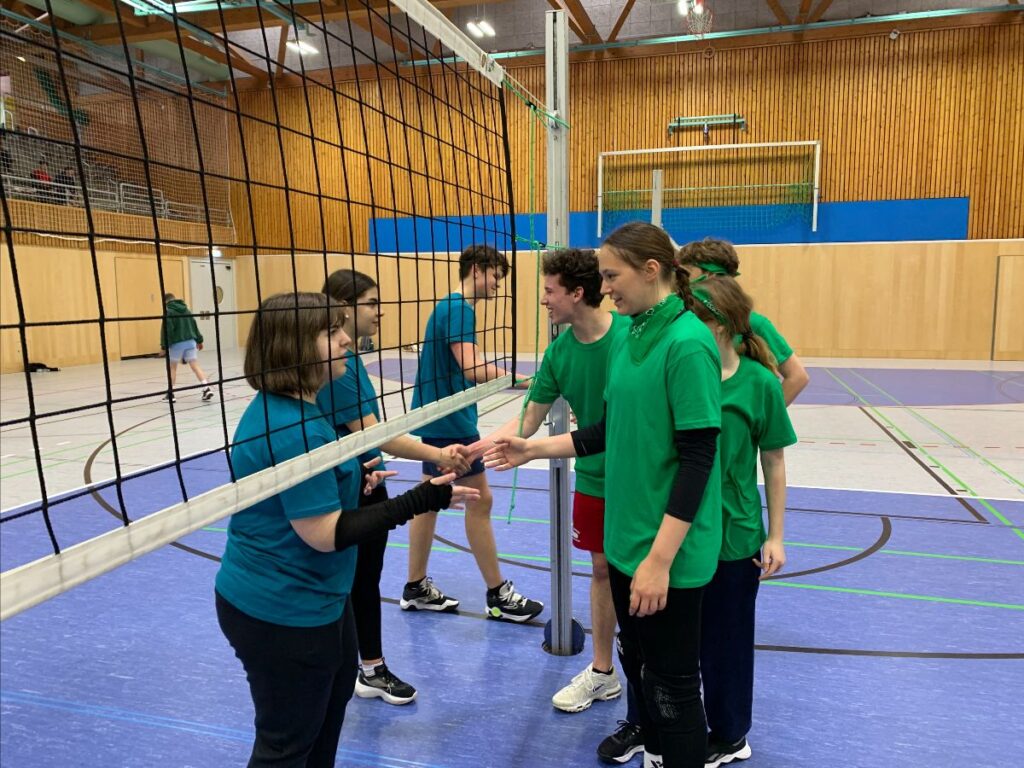
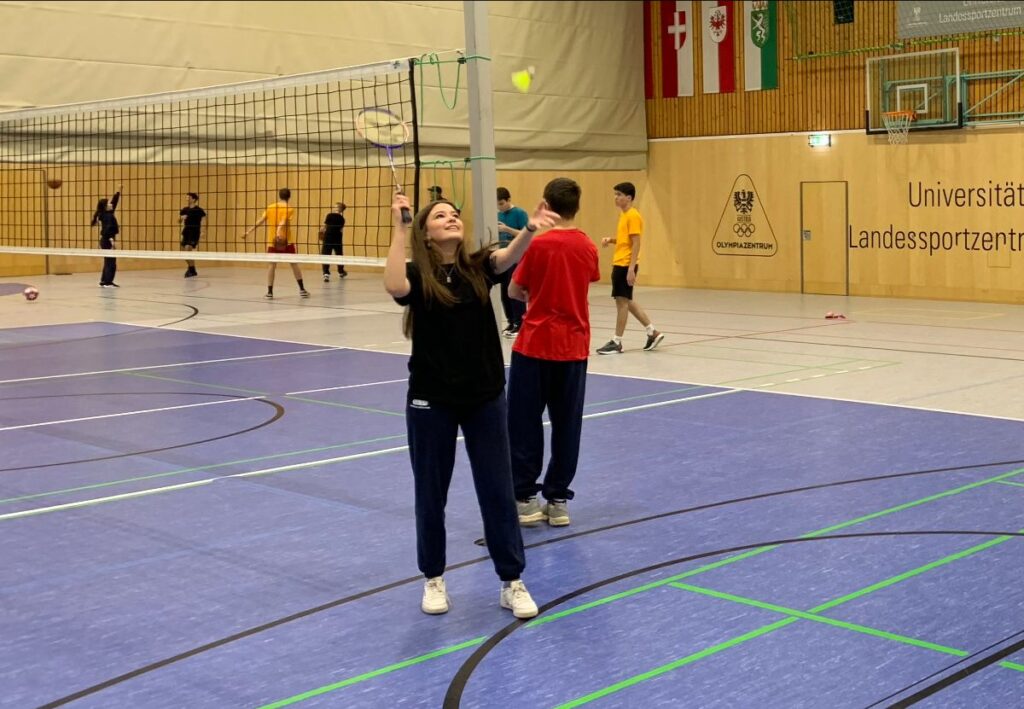
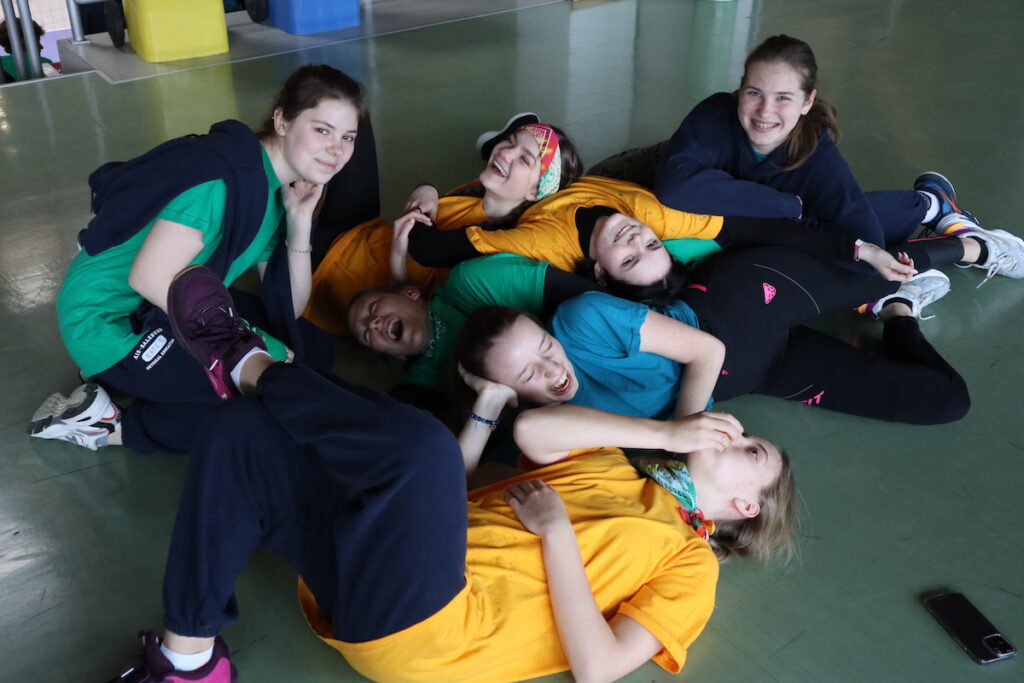
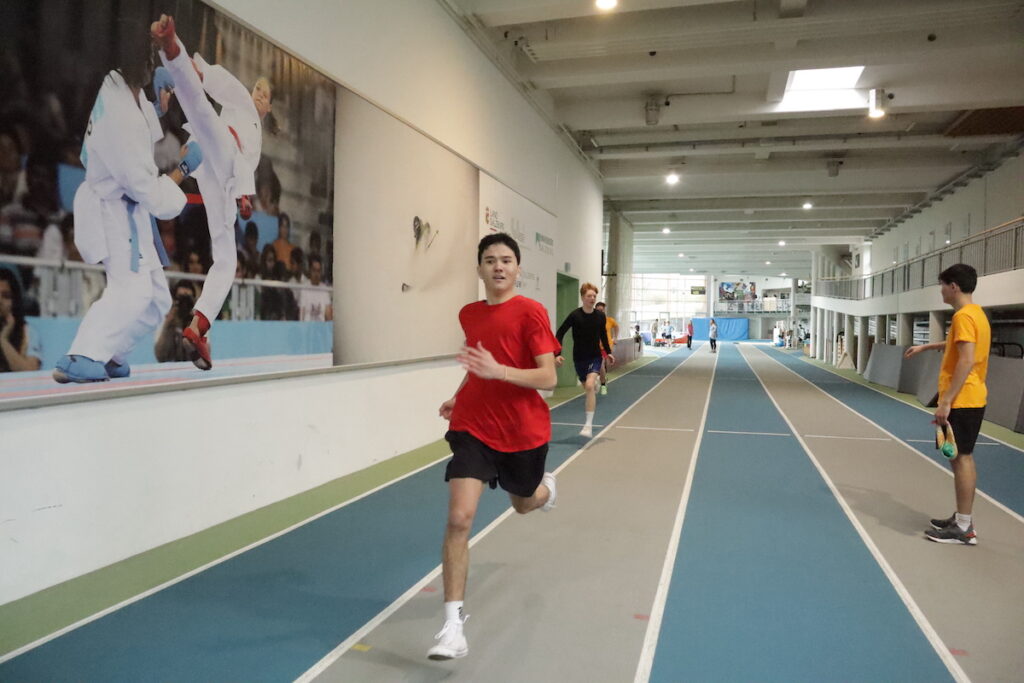
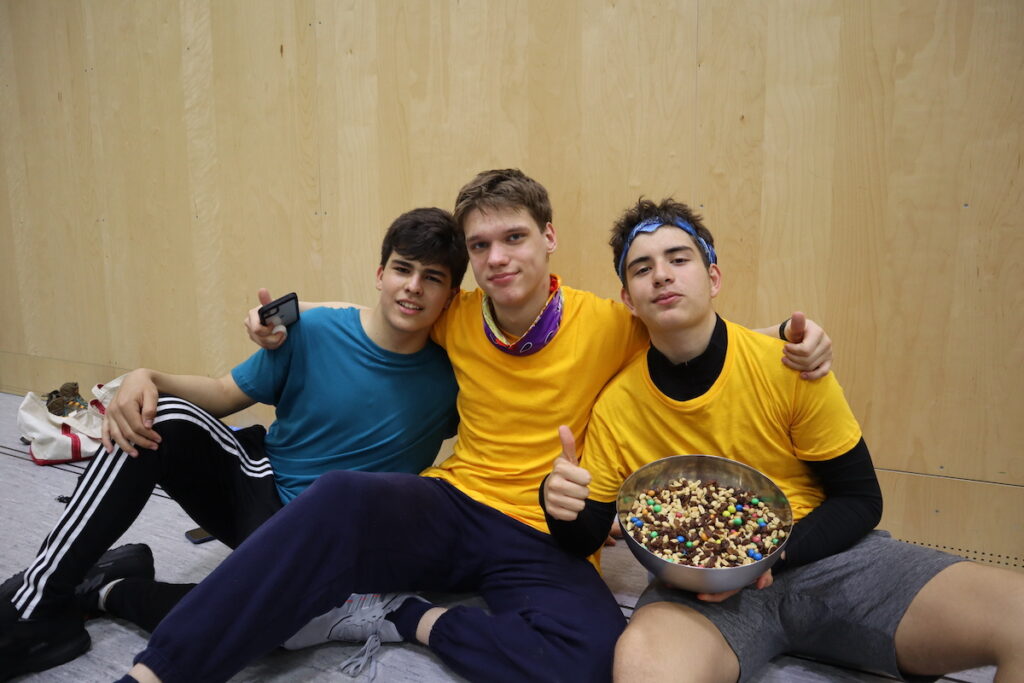
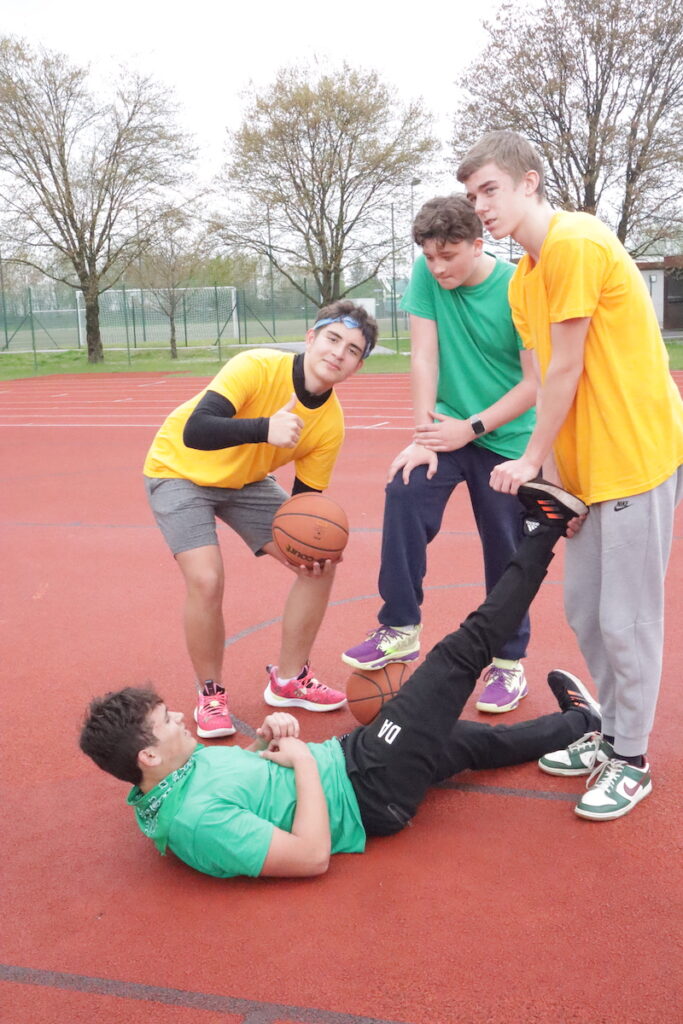
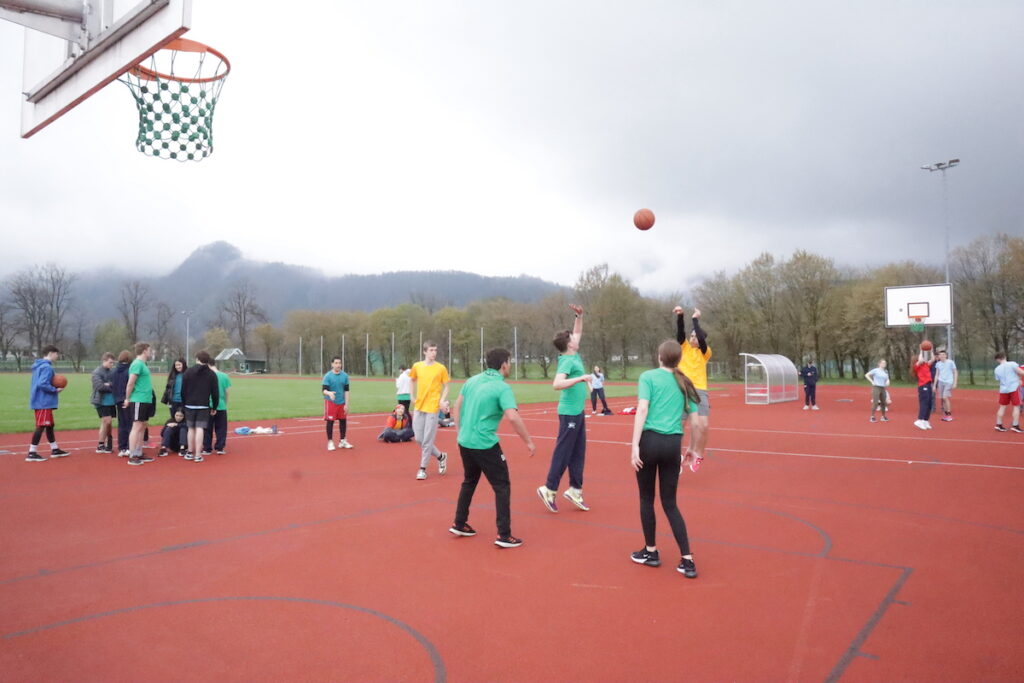
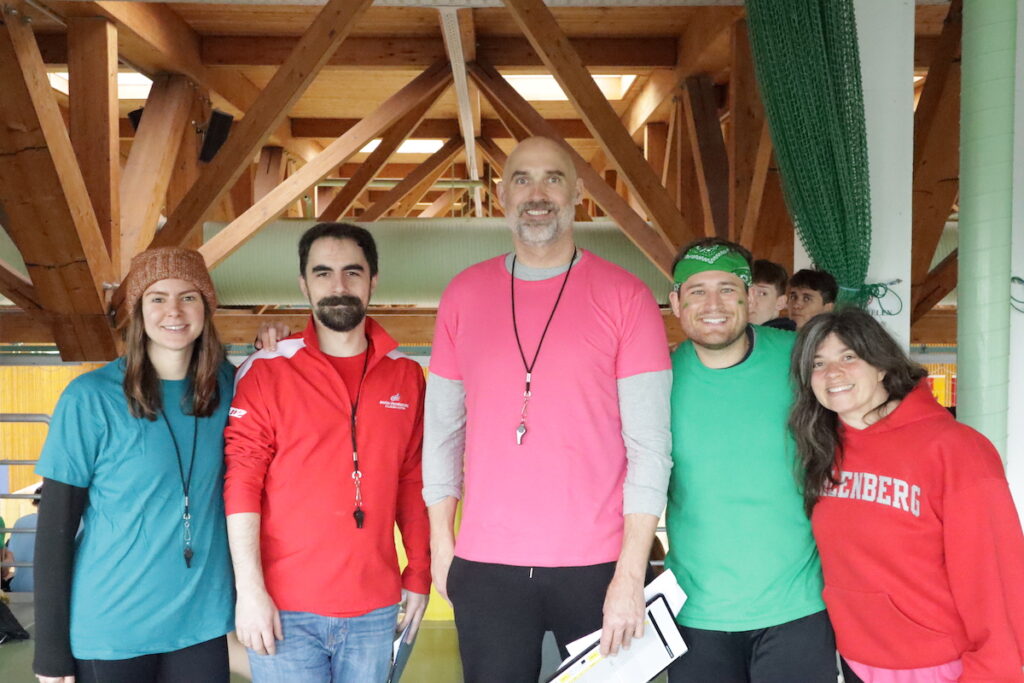
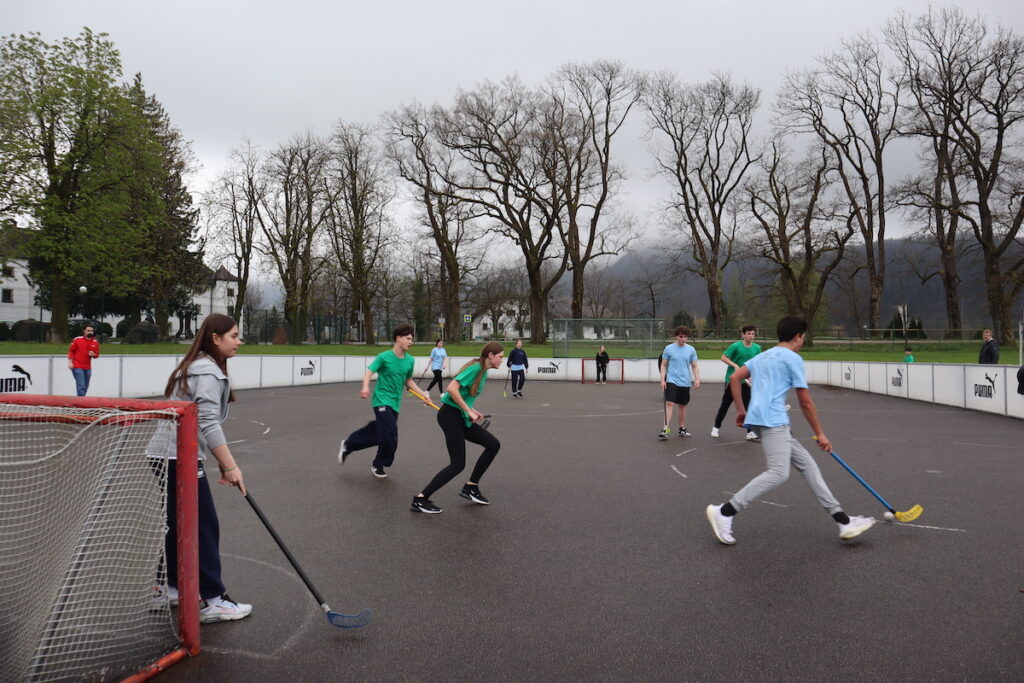
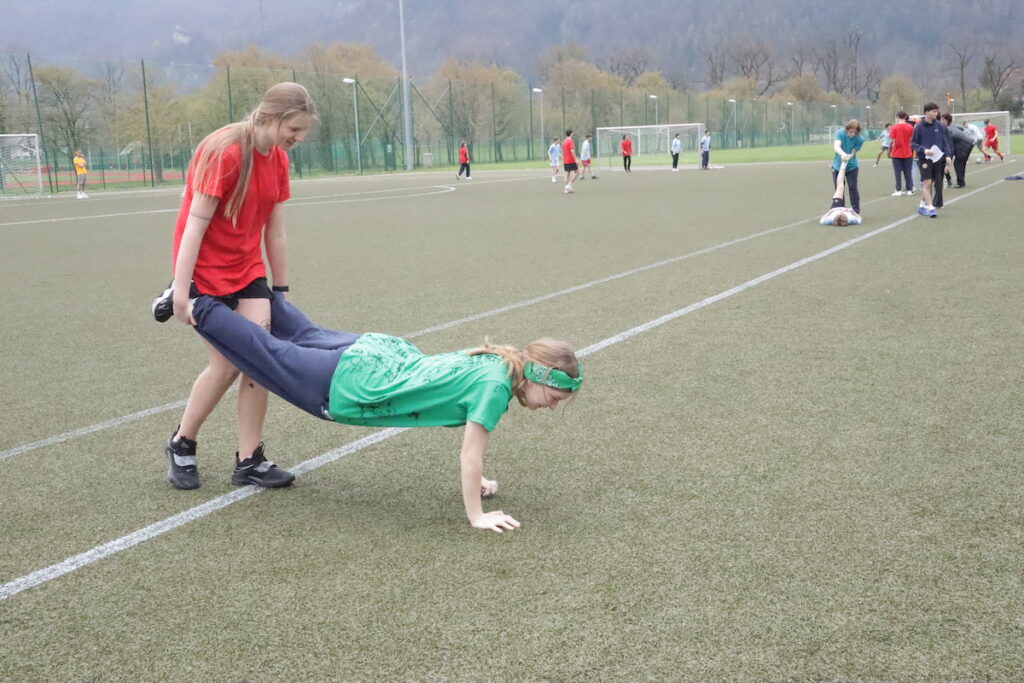
Leading up to the Advanced Placement® (AP) exams from May 1-16, we preview a few of the exams that students will be taking.
AP® Calculus
We invite you to watch the video below of students in Mr. Lichty’s AP® Calculus class as they prepare for the upcoming exam that takes place on May 8th. AP® enables willing and academically prepared students around the world to pursue university-level studies while still in high school, with the opportunity to earn credit (points toward an undergraduate degree) or advanced placement (the opportunity to skip an introductory level university course). AP® is recognized in the admissions process by more than 4,000 universities worldwide, and outside the U.S., more than 600 universities in more than 60 countries recognize qualifying AP Exam scores.
Add Your AP® Chemistry
We invite you to watch the video below of Mr. Leicher previewing the Advanced Placement® (AP) Chemistry exam and explaining how he has prepared his students for success.
By: Egla H.
Edit by: Marija B.
During their free time, students at AIS-Salzburg can play soccer, volleyball, or basketball at a tournament, ski in the Alps, watch a film with their friends, or spend time with their friends in the city. But how do students feel living away from home, from their family, and around so many people?
Many of us used to live with our siblings and other family members, but we never had the chance to live around so many people our own age. Also, living in a different country with a lot of different cultures takes work.
Life at AIS-Salzburg is challenging, engaging, and remains an adventure at the same time. Here students have the opportunity to socialize frequently because the number of students at AIS-Salzburg is smaller than in other schools. This small size is an advantage as students get to know each other intimately.
Even though it’s challenging, I enjoy living with and being around many students. I like living and working here because I meet new people and build connections with peers and the resident life staff.
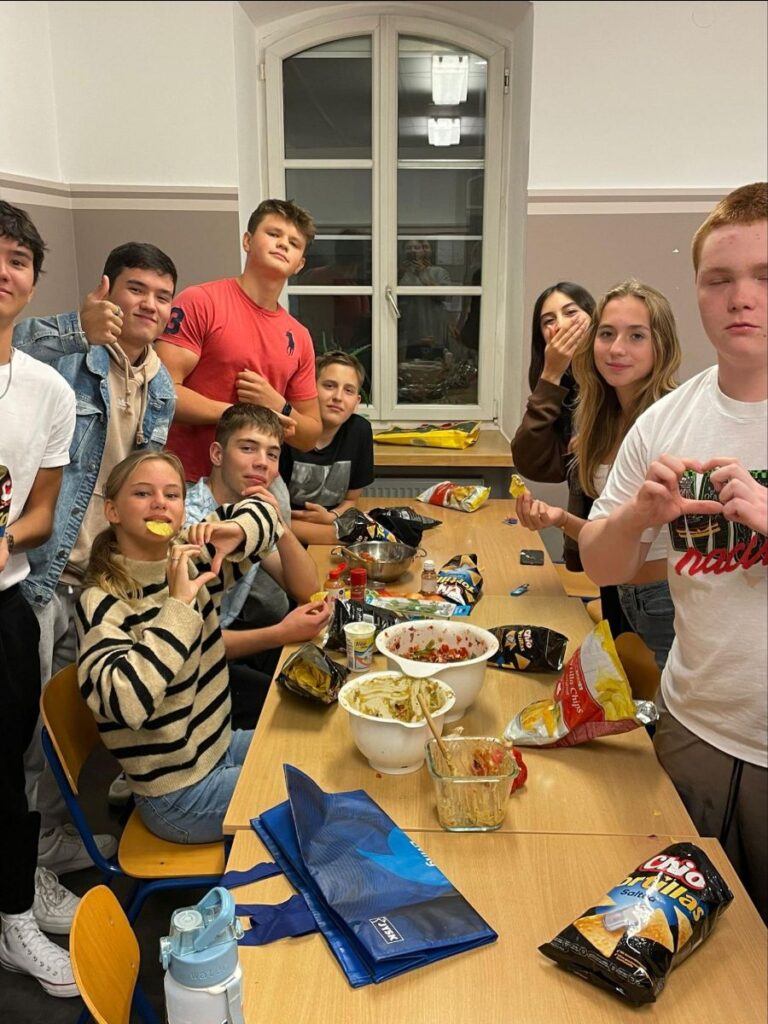
Photo: Students during the no-bake salsa and guacamole weekend activity.
Living away from home and on campus in a dorm setting provides opportunities for personal growth. Boarding school students are able to develop life skills, such as time management, work ethic, and independence more than a student that lives at home.
Starting May 1st, students at AIS-Salzburg will be writing Advanced Placement® (AP) Examinations to earn credit or advanced placement at their chosen universities, improve their chances of acceptance, and—especially important in an international school—gain equivalency with most European secondary-school diplomas and qualify for entrance into universities here in Europe.
AP® courses and examinations are recognized in the admissions process by more than 4,000 universities worldwide, and outside the U.S., more than 600 universities in 60+ countries recognize qualifying AP® Exam scores. The program allows students to develop a global perspective, as well as skills such as critical thinking and problem-solving. There are currently 34 AP® courses and exams available and scores can be sent directly to universities of choice. AP® is recognized as a highly-desirable academic credential around the globe.
In an update about the fast-approaching AP® Exams, our AP® Coordinator Joe Suttmann, offered the following: “Nearly 50% of our student body are taking AP® exams this year, with 46 students registered to take 113 AP Exams. This is an average of more than 2 exams per student. Of the exam-takers, 18 are in the Senior class, with the remaining 28 representing students in the 11th grade and lower. The AP® Exams we are offering this year are: Calculus AB, Chemistry, English Lit. & Comp., Environmental Science, European History, French Lang. & Cult., German Lang. & Cult., Human Geography, Physics 1, and Psychology. Expectations are high for great scores, as AP® exam results are often crucial in getting accepted at respected universities around the globe. AIS-Salzburg presents a college-prep curriculum and AP exam results are a great indicator of the success of our program.”
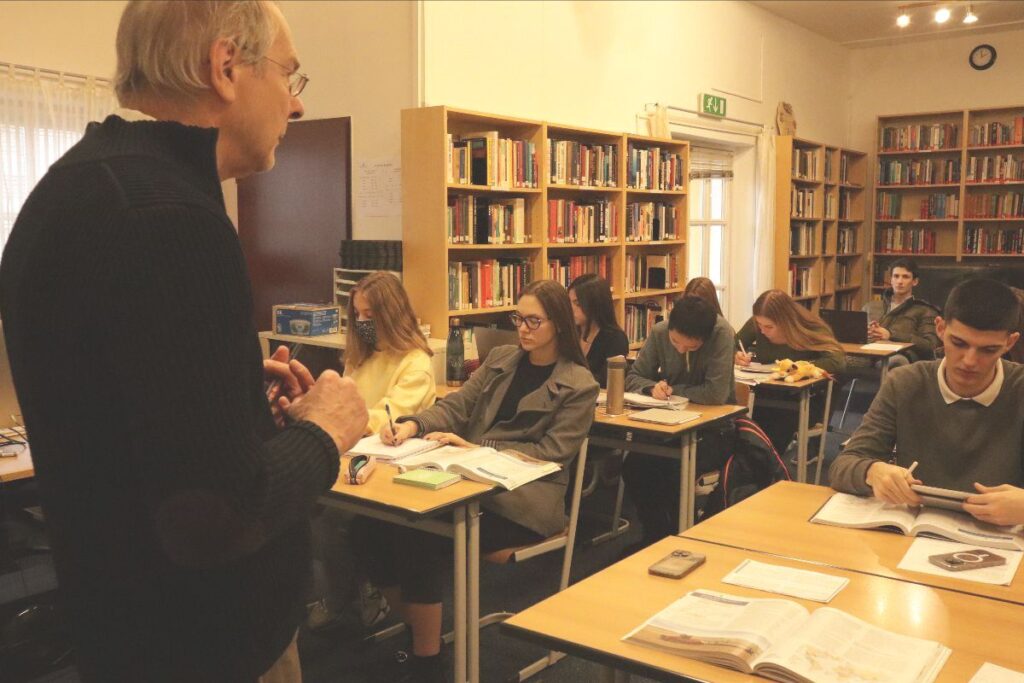
Photo: Students take notes during an AP® European History lecture with Mr. Agardy.
AP® Examinations are open to all students who feel competent to sit them and enrollment in a preparatory AP® course is not required. For example, if a student comes to AIS-Salzburg after having studied the Japanese language for three years, they may desire to sit the AP® Examination in this subject. Most students, however, will need the preparation and guidance in the subject provided by year-long enrollment in the course.
Our school has participated in the Advanced Placement Program® since 1983. The widespread international recognition of AP® Examination scores and the strength of the AP® curricula convinces our community that the College Board’s Advanced Placement Program® provides our students with significant international opportunities and excellent academic skills that will serve them well in their future studies.
Varvara Buben attended AIS-Salzburg as a senior during the 2021-2022 school year and graduated as our Salutatorian in the spring of 2022. In this interview, we check in with Varvara and see how college life is going.
AIS-Salzburg: Where are you currently studying and what are you studying?
Varvara: I’m currently studying Psychology and Language Sciences at University College London, which is a course that incorporates psychology, neuroscience, and linguistics, focusing on language in the brain.
AIS-Salzburg: How are you enjoying college life?
Varvara: Academically, I love university – there are so many unique opportunities for various types of learning, including conducting experiments, working with anatomical specimens, and learning from leading researchers in rather niche fields, expanding my understanding of the kinds of questions science asks. As for the non-academic parts of college life, they can be a bit of a challenge, but I think this may have to do more with the specific city I’m in – London can be hard to navigate and rather isolating at times.
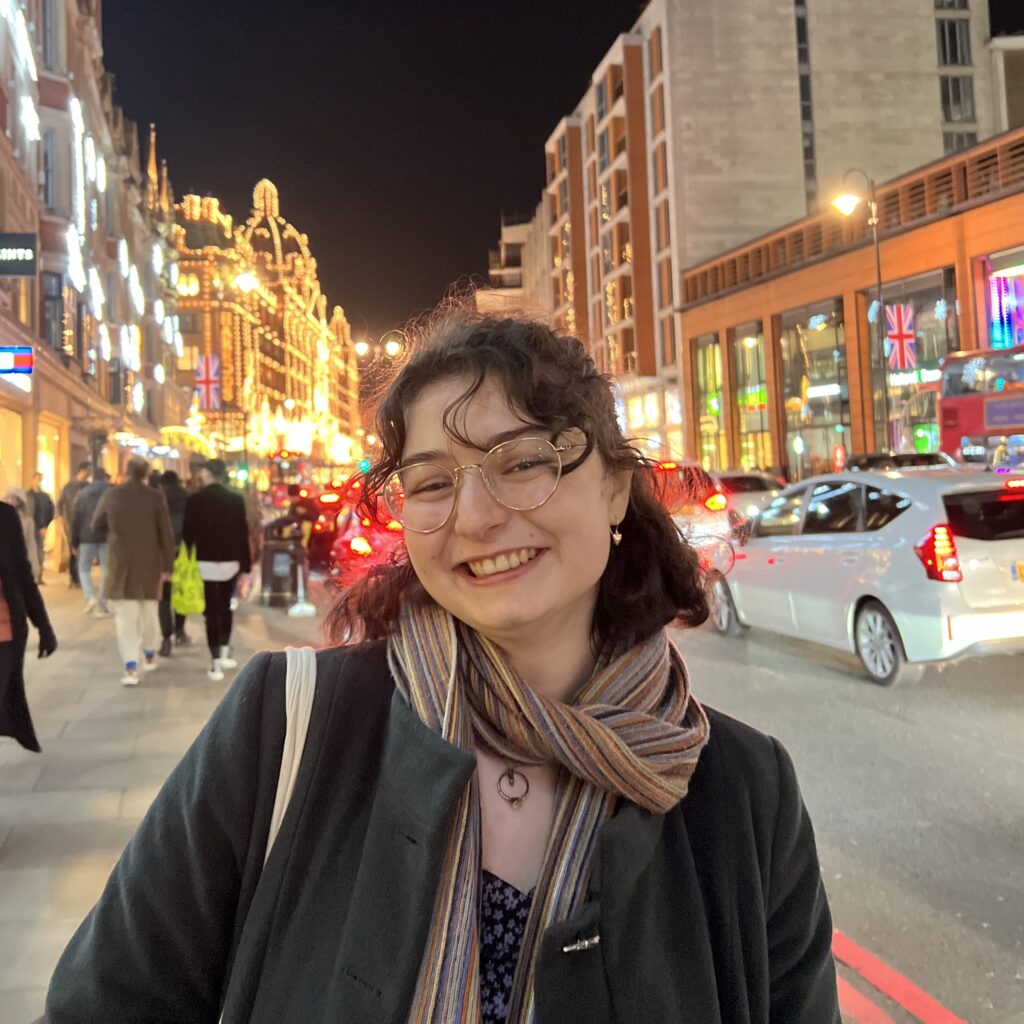
AIS-Salzburg: What are the major differences between college life and life at AIS-Salzburg?
Varvara: There is much more independence and responsibility involved in daily life as a university student than there was at AIS-Salzburg. AIS-Salzburg has a really strong student support network; in university, that network is you. If you get sick, if something in your accommodation breaks, if you’re struggling academically, you are mostly on your own. This is not a bad thing – just a different experience from boarding school. Additionally, your entire schedule is basically up to you, but in addition to ensuring all coursework gets completed, you need to factor in time to prepare food, clean your space, commute, sleep decently… AIS-Salzburg definitely makes it easy to keep track of all these tasks due to the very structured schedule. In university, both the actual tasks and the task of planning them all out falls on you.
AIS-Salzburg: Do you feel your time at AIS-Salzburg helped prepare you for college life and if so, in what ways?
Varvara: AIS-Salzburg most prepared me for college by giving me an opportunity to practice integrating into a new environment. Fewer specific skills or habits carried over, just due to how different the two environments are, but the experience of diving headfirst into a new city and cohort would have definitely been much harder to do in university had I not have had the chance to do so in the much smaller, closer AIS-Salzburg community.
For the second year in a row, it was announced on April 1st, 2023 that AIS-Salzburg has been voted by peers in the industry as one of five European school finalists for the Study Travel Secondary School Award. The winners will be announced at a gala dinner on April 21st, 2023, held during the ST Alphe Secondary Focus London 2023 event. To read more about this recognition, we invite you to click the button below.
As of the Spring Trimester midterm (March 31, 2023), we take a moment to review the first half of the term and recognize those students who have successfully fulfilled the academic, community service, enrollment and behavioral qualifications as outlined in the AIS-Salzburg Student and Parent Handbook.
Students who have met these qualifications are recognized in two categories of distinction: Senior Scholars and Distinguished Students. Listed below are the privileges that accompany these distinctions:
Senior Scholars
- One evening study hall per week free
- Seniority in room and roommate selection and bus seating on excursions and outings
- Special commendation letter to the parents
- Friday & Saturday evening curfew is extended by 1/2 hour
- Recognition at trimester awards dinner
Distinguished Students
- Released from study hall on Thursday evenings
- Rooming and roommate selection and bus seating (following Senior Scholars) on excursions
- Special commendation letter to the parents
- Friday & Saturday evening curfew is extended by 1/2 hour
- Recognition at trimester awards dinner
Below, are the students who have achieved each status as a result of their efforts in the first half of the fall trimester.
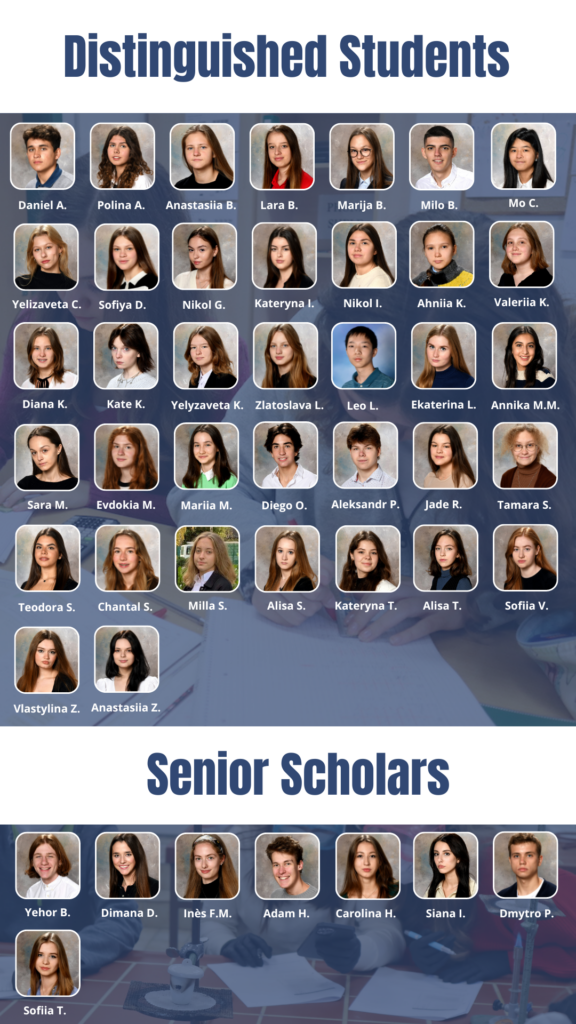
By, Chantal S.
Edited by, Teodora S.
Team sports at AIS-Salzburg are very exciting. We play 3 different team sports throughout the school year: soccer and volleyball in the fall and basketball in the winter. AIS-Salzburg teams often travel to participate in Danube Valley Athletic Conference tournaments held in Budapest, Vienna, and Bratislava. Also, an invitational boys and girls basketball tournament is hosted annually by our school, which many of the students look forward to either playing in or attending as a spectator.
The sports teams this year started off on a good note in the fall, with a large number of talented athletes signing up to play volleyball and soccer. From that day we knew this would be a good year for us. After only a few practices there was already a great deal of improvements in both our skills and teamwork and we were soon ready for competitions.
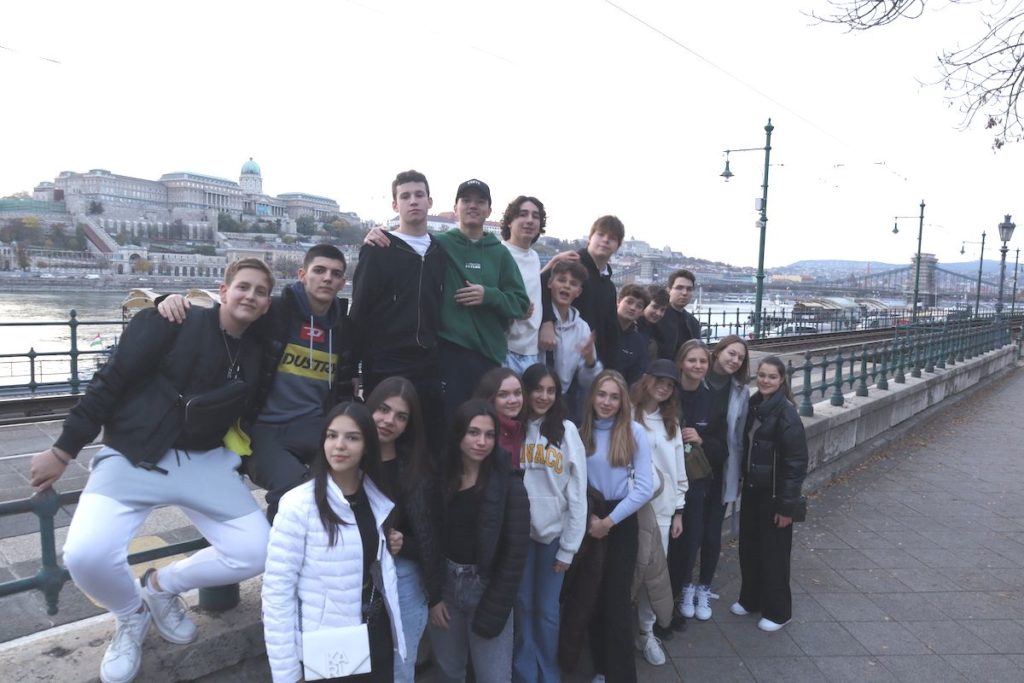
Photo: The boys’ and girls’ volleyball teams enjoyed an early November evening out in Budapest before the DVAC Championships the following day.
This year the soccer team was very successful and won first place in the junior varsity boys’ soccer tournament in Vienna. The girls’ volleyball team also had a successful season and even competed at the varsity level, but sadly did not place. The boys’ junior varsity volleyball tournament in Budapest, on the other hand, was a big success as they won 1st place!
Recently the boys’ and girls’ basketball teams both attended the invitational varsity basketball tournament hosted by the International Christian School of Budapest. It was a real challenge for both teams. Sadly for the boys, the challenge was a little bit too big and the team did not place. The girls’ team, however, earned 3rd place overall in the tournament.
Video: Highlights from the DVAC Varsity Boys Basketball Championship on March 11th in Salzburg.
Over the course of the fall and winter seasons, the athletes learned how to work together as a team and more importantly, to work together with others toward a common goal. Although a lot has happened this school year, the fun is not over yet, as our volleyball and soccer teams are starting up again in the spring!
By Resident Assistant, Ali Welch
The overnight trip to Augsburg, Germany this past weekend, part of our expanded travel program, was an overall success thanks to a busy schedule of activities that allowed for a balance of sightseeing and fun memories with the group. Our trip began with a private walking tour of the city, which, although it is slightly larger than Salzburg in population, feels more intimate due to a concentrated city center that we could explore within 10 minutes of walking. Susanne, our tour guide, was extremely knowledgeable about the history of Augsburg as she led us to various sites throughout the city. We were impressed by the details of the Goldener Saal (Golden Hall), the size of the Renaissance sculptures of the Maximilian Museum, the innovation of the water management system, and the longevity of the social housing complex, the Fuggerei.
“The place that fascinated me was the Fuggerei,” said grade 11 student Leo L. “What makes that place special is that the rent has not changed since it was built 500 years ago. But it is only for people who were born in Augsburg. This place is the definition of people helping people which is a big part of why I enjoyed it.”
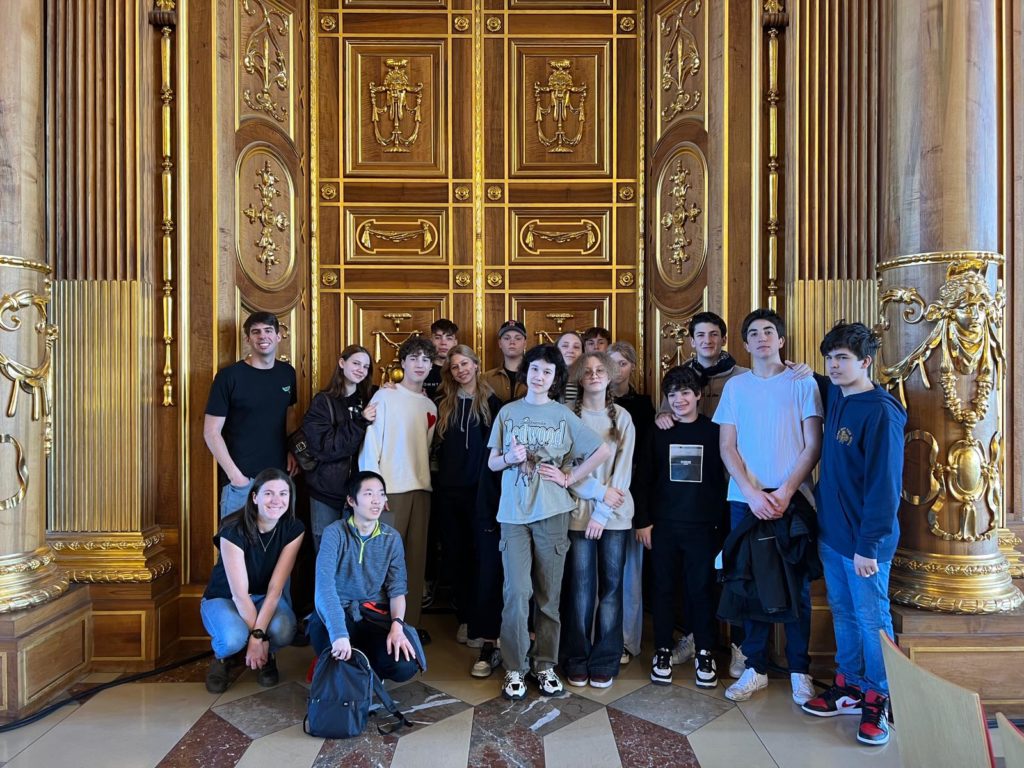
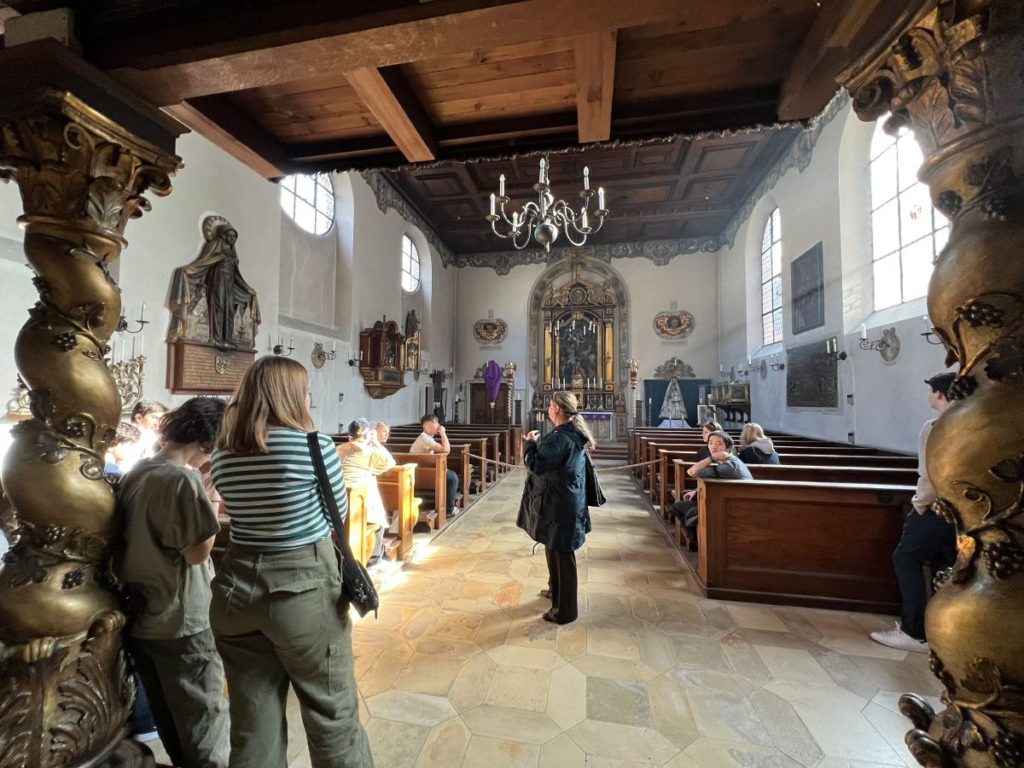
Students wasted no time exploring the various shops and restaurants Augsburg has to offer in their free time around the city. When we reconvened as a group before dinner, students showed off their purchases of various accessories and clothes or shared which ice cream place (and flavor) was the best. The gorgeous, sunny weather coupled with the FC Augsburg versus Schalke football match that was taking place in the city meant the town center was buzzing with people.
Our group enjoyed a delicious meal at the Coco Sushi and Asia Fusion restaurant in the city’s center before ending the night with bowling, our final activity for the day. Despite the embarrassing amount of bowling throws that ended up in the gutter, students had an excellent time cheering each other on and dancing to the music under disco lights.
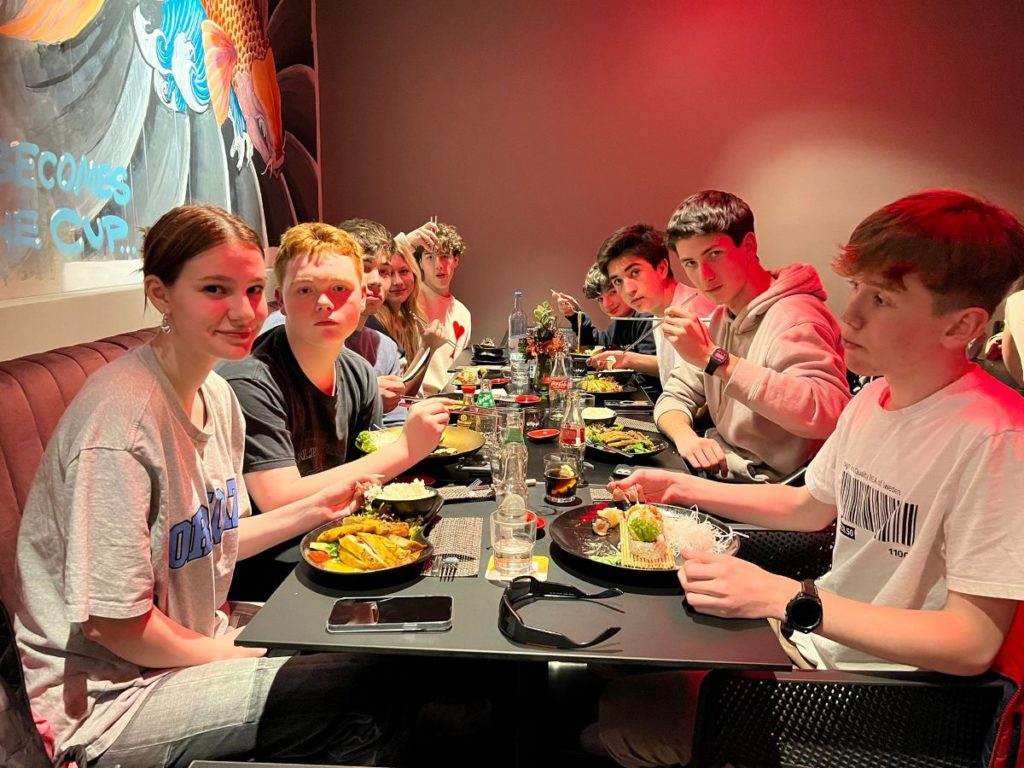
Sunday began with a trip to the Mazda Museum, located on the outskirts of the Augsburger Old Town. Although the museum is quite small, consisting of only one large room in what used to be an old tram depot, our group loved our time exploring the various Mazda models on display and speaking with the owner of the museum, Walter Frey. Meeting Mr. Frey was incredibly lucky as he rarely comes into the museum and just happened to be there in order to switch some of the cars in the exhibition. He was kind enough to take the time to talk to our students and shared stories on how he acquired a few of the cars in his private collection of over 100 Mazda automobiles that led to his creation of the only Mazda museum in the world. We were so grateful for Mr. Frey’s time and the Mazda photo book from the museum, which he gifted to each person in our group.
“The owner of the museum welcomed us and told us a lot about his history and about the cars that he owned,” said grade 10 student, Richard G.
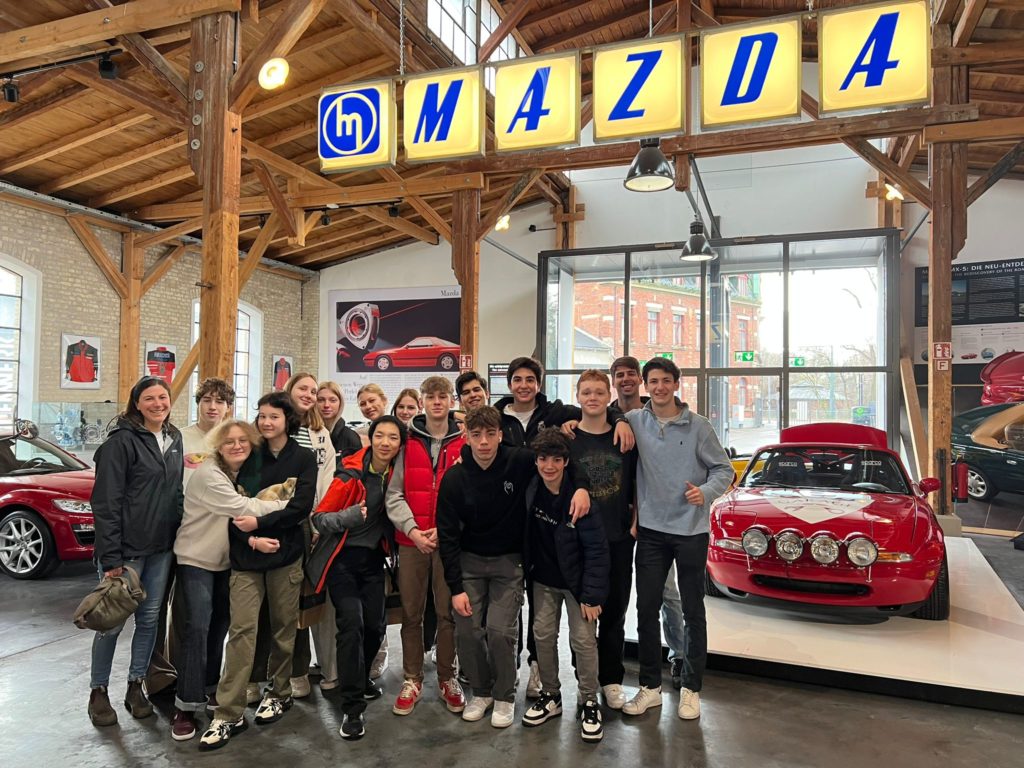
With the busy schedule and long days, our group really made the most of our time in Augsburg. By the end of the trip, students were exhausted from exploring everything the city had to offer and they appreciated the various activities we were able to pack into the schedule. From Rubik’s cube challenges with our waiter at dinner to dance-offs at bowling, this group of students made sure there was never a dull moment throughout the trip.
Augsburg was the fourth and final overnight weekend excursion of the school year. Other overnight weekend excursions included Vienna, Munich and Innsbruck. Fall and winter excursions to Paris, Barcelona and Zell am See rounded out the travel program.
The AIS-Salzburg varsity boys basketball team wrapped up their season at the Danube Valley Athletic Conference Championship this past weekend in Salzburg with a fourth-place finish in the 6-team tournament. The boys started off the tournament with a clear 35-21 victory over Danube International School but dropped their next game to Vienna International School 17-47. The boys faced off against a very skilled International Christian School of Budapest in what was a very exciting back-and-forth match for the third-place trophy. Unfortunately, the boys ran out of gas in the fourth quarter and ICSB was able to break away with a convincing lead, defeating the Lions 38-25.
Despite the disappointing loss, the Lions were playing up in competition at the varsity level with a very young team with a number of players in grades 8-10 seeing regular playing time. The valuable experience that was gained will serve the boys’ team well heading into next season.
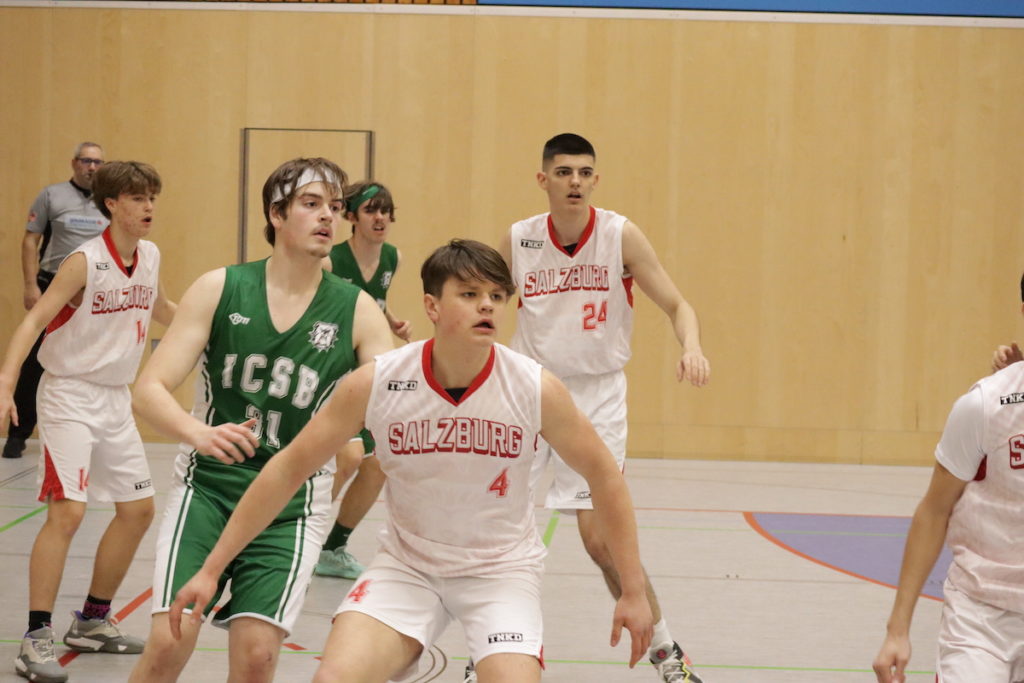
“The varsity tournament last weekend was a great experience for everyone,” said grade 11 player, Milo B. “Although we failed to win the third-place match, the team played well and it was a very close game. We will build off this experience next year and I think that we will be able to win a trophy next time.”![]()
The games were all live-streamed on the AIS-Salzburg Facebook page and the recordings are still available to view. We would like to extend a special thank you to Inzhu, Jade, Marija, Kirill, Daniela, Max and Milla for volunteering their time to score keep.
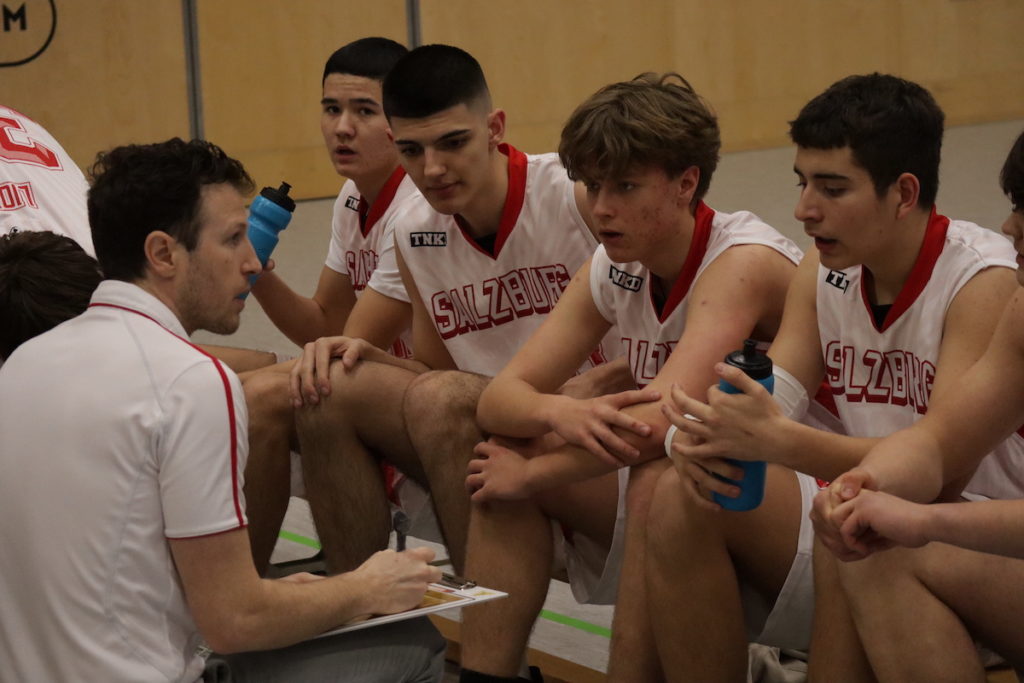
Photo: Coach Nick DeWitt will look to grade 8 student Luca (far right) and grade 9 student Yarik (second from right) to lead the team in the future.
“The varsity tournament last weekend was a great experience for everyone,” said grade 11 player, Milo B. “Although we failed to win the third-place match, the team played well and it was a very close game. We will build off this experience next year and I think that we will be able to win a trophy next time.”![]()
The games were all live-streamed on the AIS-Salzburg Facebook page and the recordings are still available to view. We would like to extend a special thank you to Inzhu, Jade, Marija, Kirill, Daniela, Max and Milla for volunteering their time to score keep.
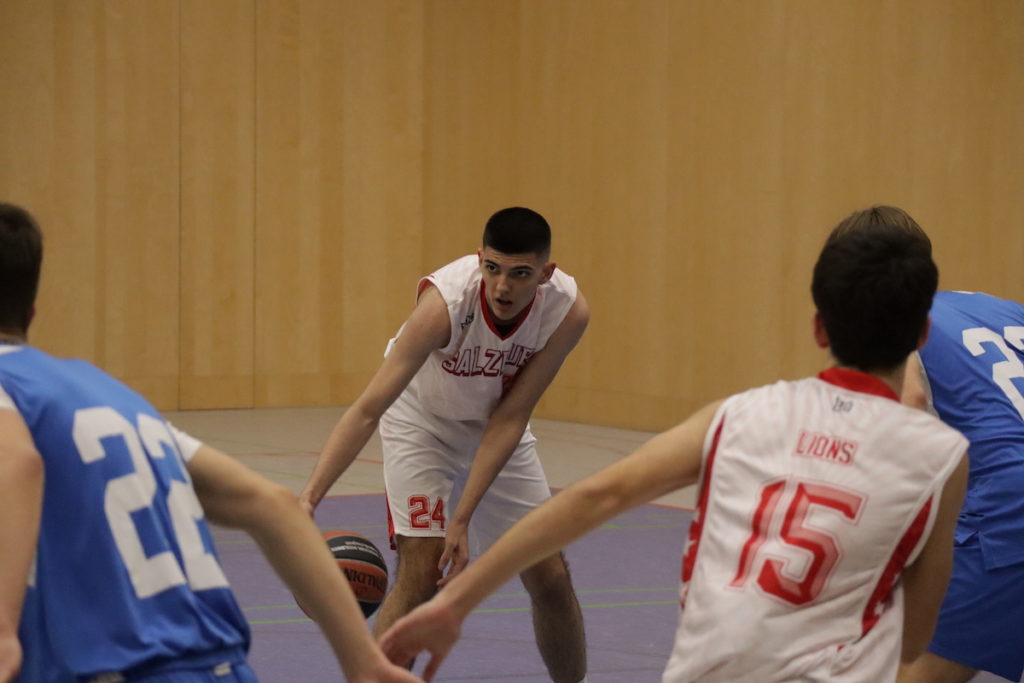
Photo: Milo B. is optimistic about his Lions team heading into next season.
We invite you to watch the video highlights below from the DVAC Varsity Boys Basketball Championship on March 11th in Salzburg.
This past Thursday, Grade 10 Chemistry students observed a dry ice demonstration performed by their teacher, Mr. Leicher. Dry ice is a fascinating and fun material for students, from making “fog” to “boiling in water,” it is well-known for creating special effects. Carbon dioxide, however, also has fascinating and very useful chemical properties. At room temperature and pressure, solid carbon dioxide will warm to –78 °C and then begin to sublimate to carbon dioxide gas. The carbon dioxide gas is, initially, also at –78 °C, which causes moisture in the air to condense and form the characteristic fog that dry ice is famous for.
One interesting feature of carbon dioxide is that at atmospheric pressure, it only exists as a solid or gas. In order to exist as a liquid, carbon dioxide must be subjected to a pressure of at least 5.11 atmospheres. Most chemicals will exist as a solid, liquid, or gas depending on temperature and pressure. This relationship between phase, pressure, and temperature can be presented graphically in the form of a phase diagram. The point at which all three phase boundaries meet is called the triple point and signifies the temperature and pressure at which all three phases exist and are in equilibrium.
We invite you to watch the highlight video below of this demonstration.
As the Barcelona group enjoyed the sites, 38 of our students chose three days of skiing and fun sporting activities in the evening for their winter excursion. With the Club Kitzsteinhorn hotel located at the foot of Schnittenhöhe ski resort, our ski excursion group was in a prime location to have a wonderful excursion. Much like the Barcelona excursion, all reports are that it went off without a hitch and everyone had a great time.
“From a staff and structure point of view, it was seamless,” said activity coordinator, Kevin Fox of the excursion. “The kids were amazing. They were always where they needed to be for check-ins and departures. They were all participating, friendly and kind to each other. It was easy.”
On the first day, the group was welcomed with sunny skies at the mighty ski resort of Kitzsteinhorn, a glacier resort in the Eastern Alps of Austria which reaches an elevation of just over 3,200 meters. Kitzsteinhorn provides a variety of terrain suitable for all skill levels and a number of restaurant options for lunch.
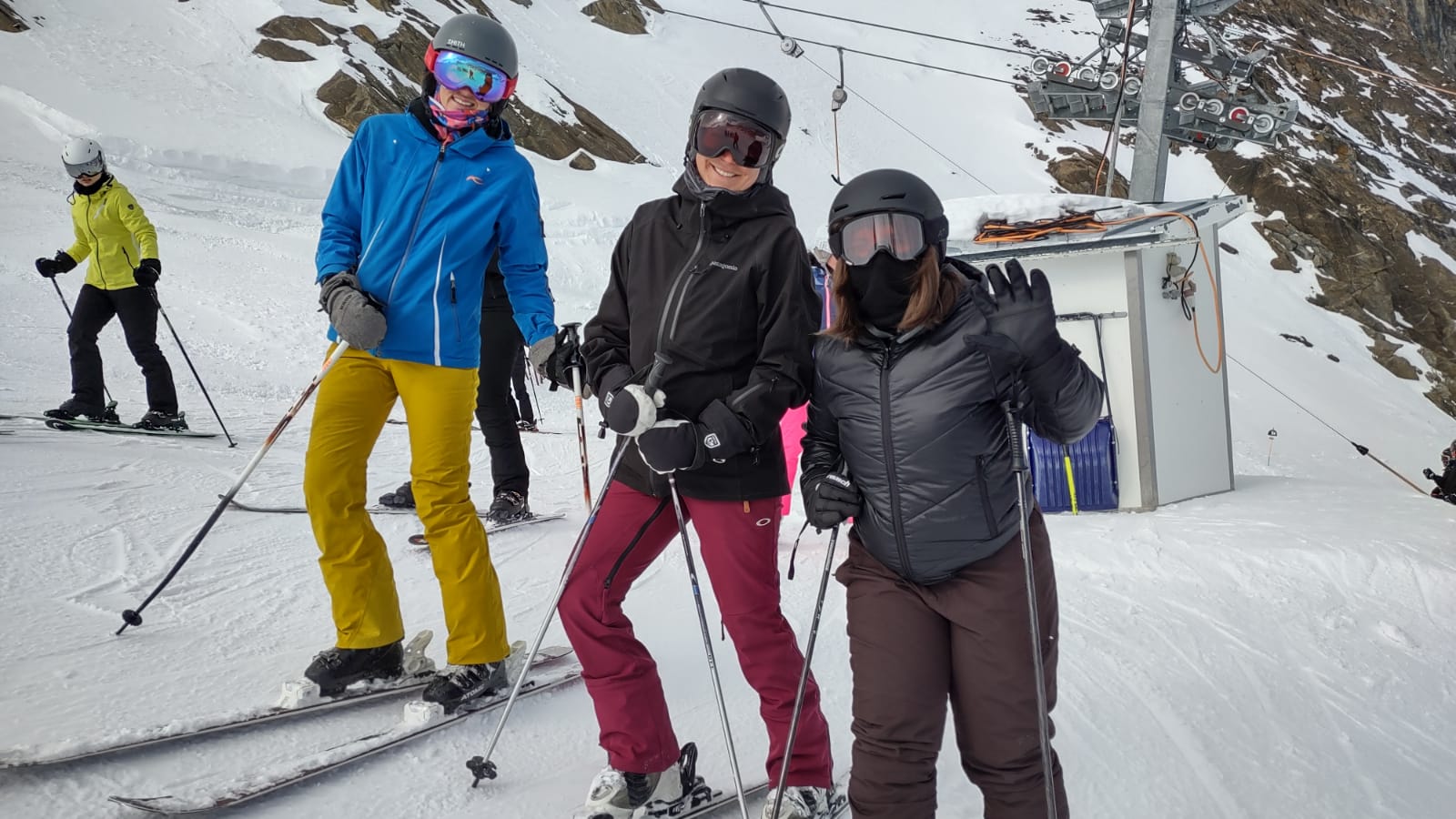
“There were some really great powder runs with trees for our more experienced kids,” said Fox.
For students who did not want to spend money at a restaurant, the hotel set up a sandwich bar in the morning so students could pack their own lunches for the day. The bar had a variety of sandwich fixings to choose from and offered juice, water, and chocolate bars to stuff with their sandwiches into paper lunch bags.
The next two ski days were held at Schnittenhöhe, which is a 15-minute walk from the hotel. On Saturday, the group was welcomed with some fresh new snow and on Sunday, there were many groomed runs with more fresh snow.
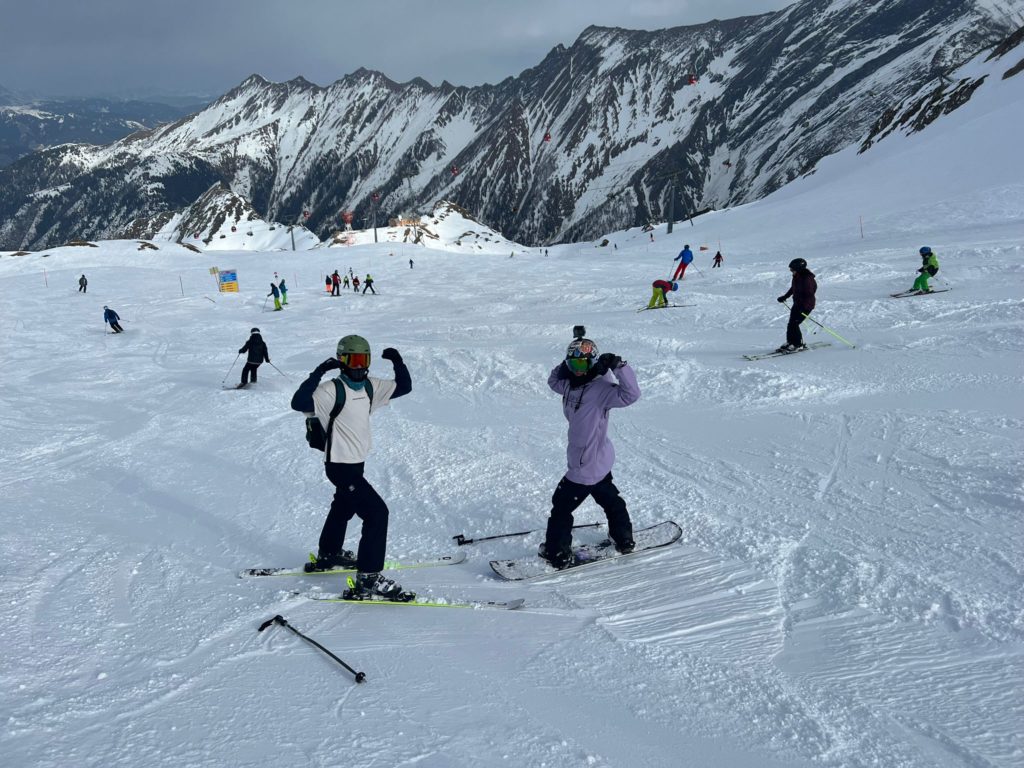
In the evenings the group took full advantage of the sporting facilities right at the hotel. Each night, there was a soccer game with about 15-20 students participating and lasting about two hours. Others preferred indoor beach volleyball while some enjoyed the trampoline room, billiards or ping pong.
Come bedtime, there was not a single complaint as everyone was exhausted from a full day of exercise.
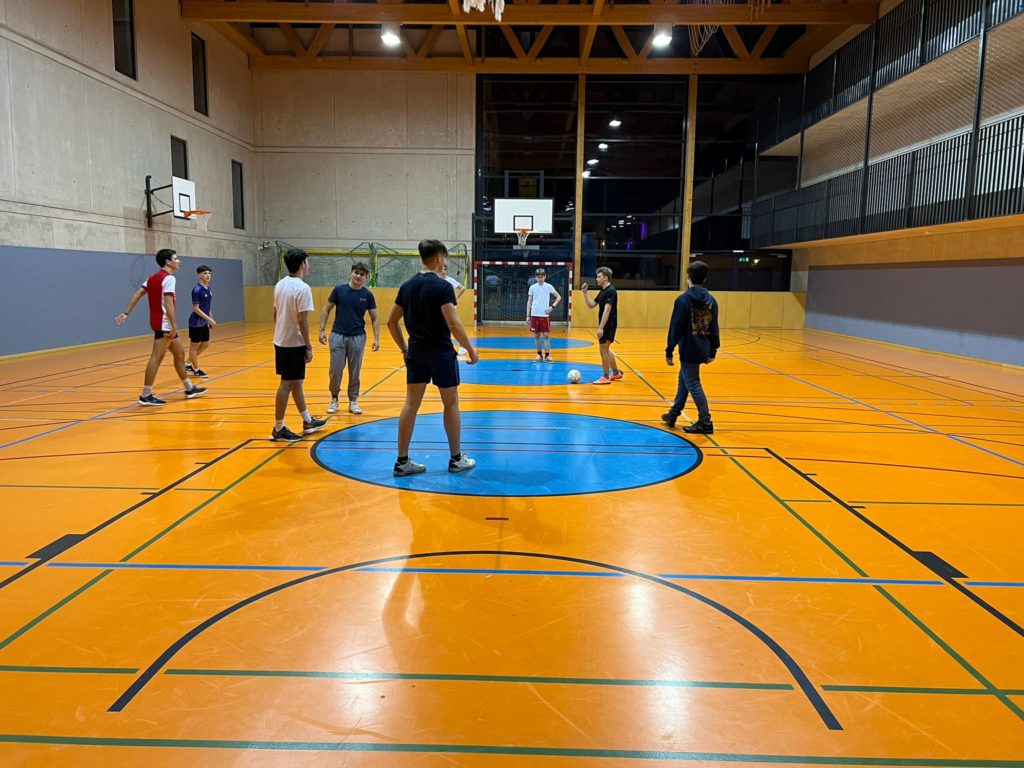
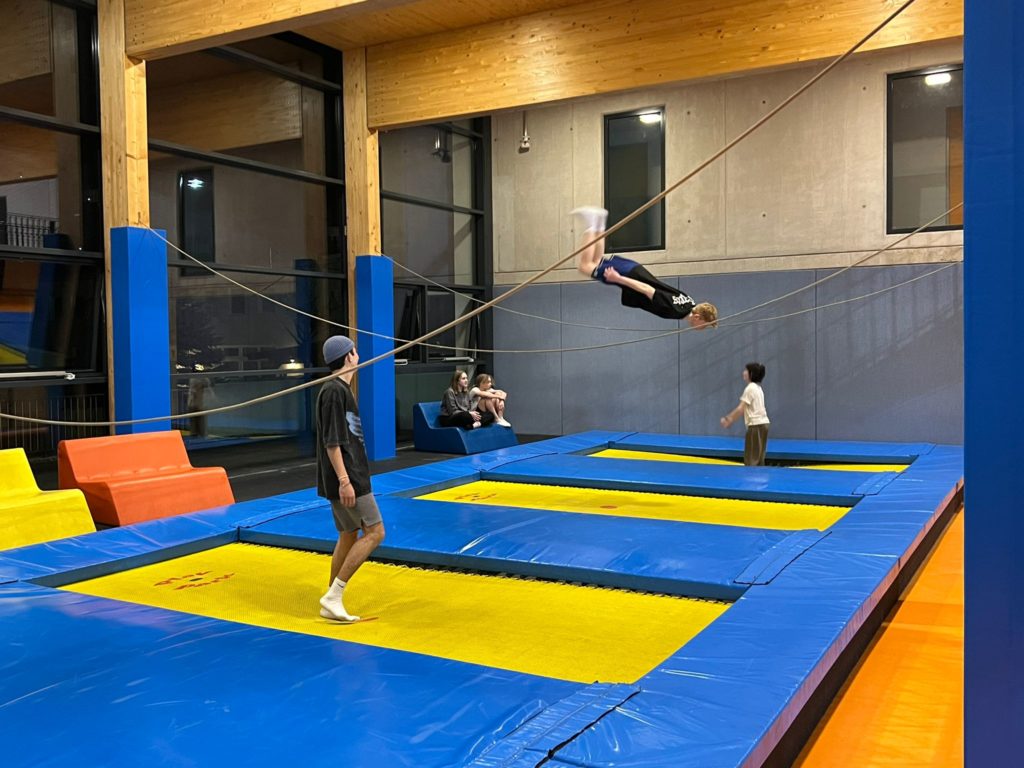
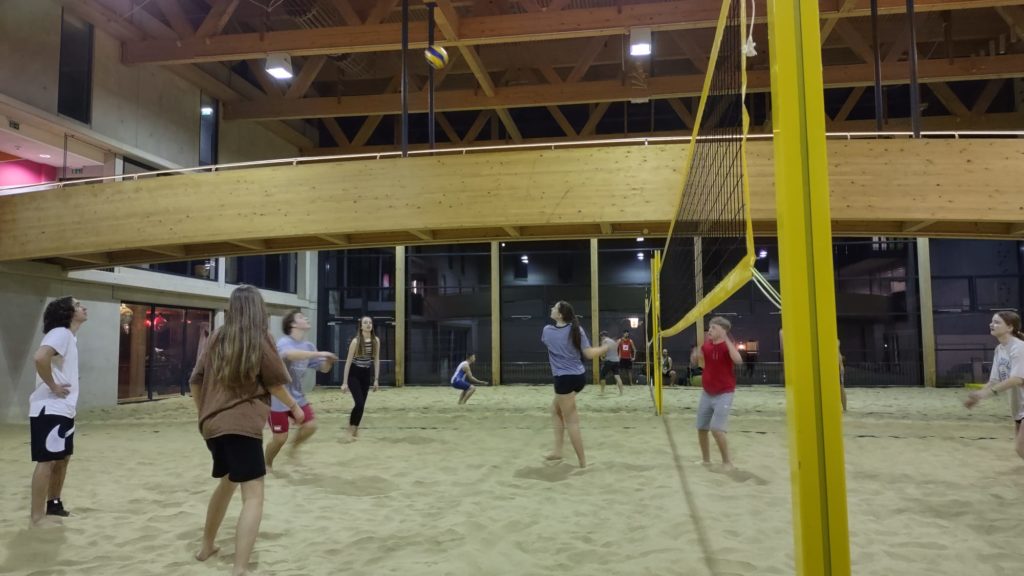
Photos: Every evening, students had their choice of multiple indoor activities directly at the hotel.
We invite you to read some of the student reviews on the winter ski excursion to Zell am See.
Sofiya D.
“That trip was really chill and fun. The rooms and rooming organization was actually nice and comfortable. The snow was soft and not icy, however, the resort was very crowded and all slopes and restaurants were absolutely packed, which made the lines for lifts take a while. After dinner, we got free time at the hotel where we can do lots of activities, such as volleyball, basketball, football, etc. The most entertaining for me was volleyball.”
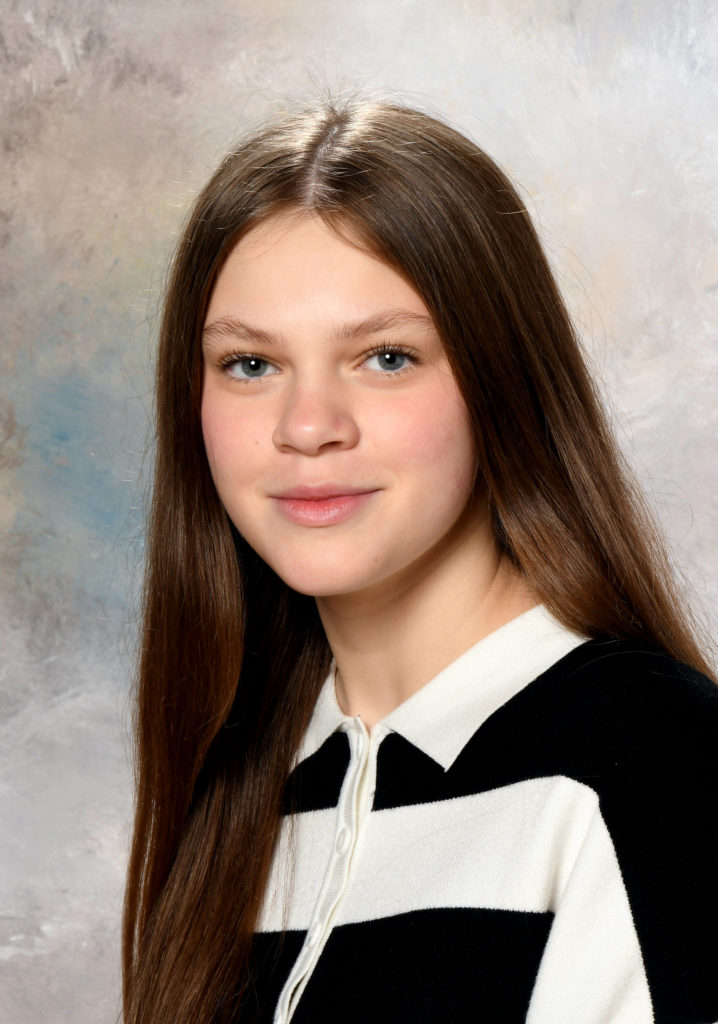
Lara B.
“I think the excursion was really fun and entertaining. It was a great opportunity to get some rest and have some time away from school after weeks of hard work. The hotel was great, it gave us plenty of things to do. In my opinion, it is a great place to get together with friends and play different sports or just hang out in your room.”
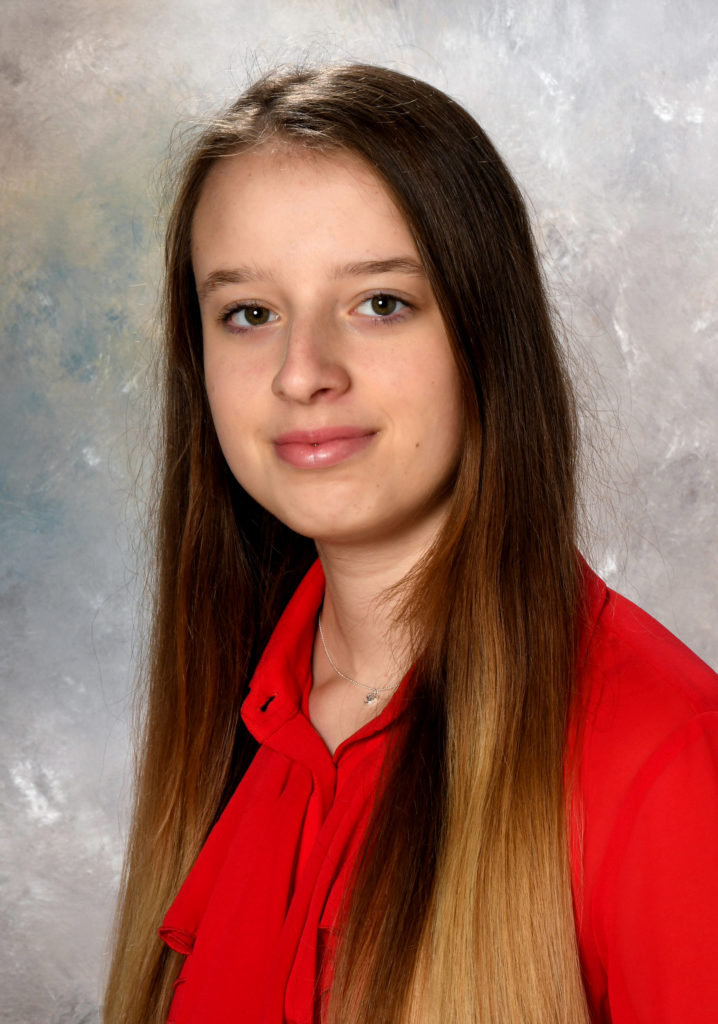
The winter excursion to Barcelona from February 22nd to 26th was a massive success with a nice balance of interesting activities and time to explore the city.
“The number one thing I noticed is that people were always laughing and smiling,” said Dean of Students, Laura Fox, “We really enjoyed each other’s company; both staff and students.”
The smaller group size of 19 kids with three group leaders allowed for more flexibility in the scheduling and for leaders to break the group into even smaller sections. The small groups also allowed leaders to adapt the schedule on short notice to the preferences of the students.
On the first day, the entire group enjoyed a tour of the FC Barcelona museum and stadium, which the students really loved. The tour included stops at the locker room, the press room where coaches and players speak to the press, and even a visit down to field level.
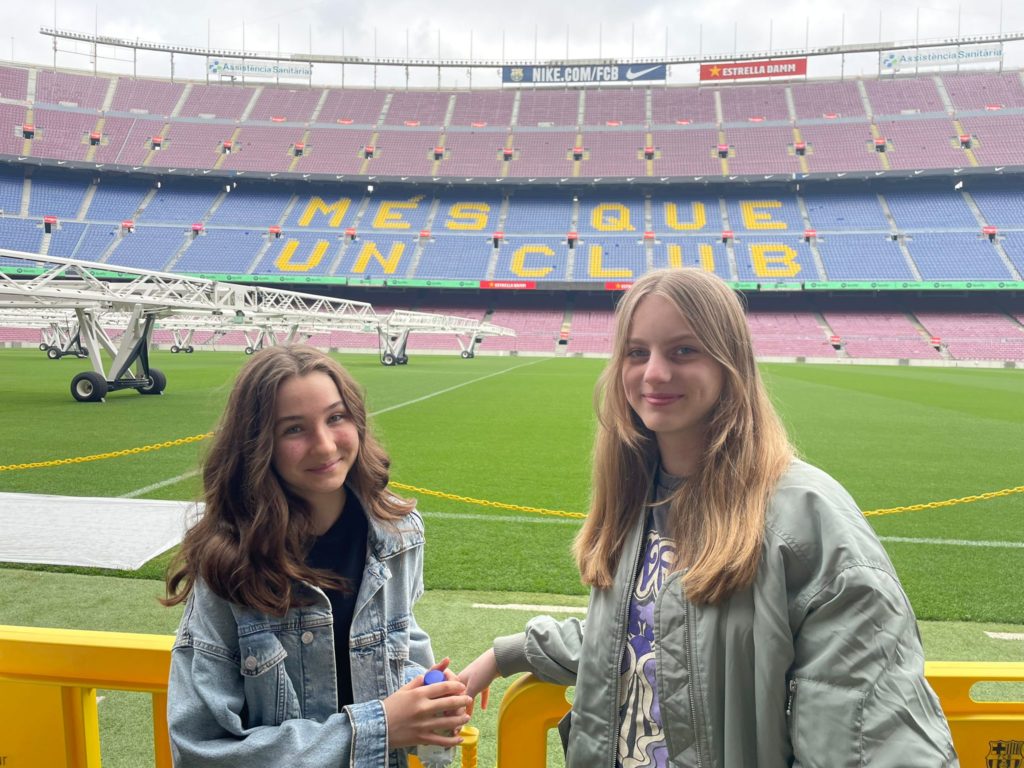
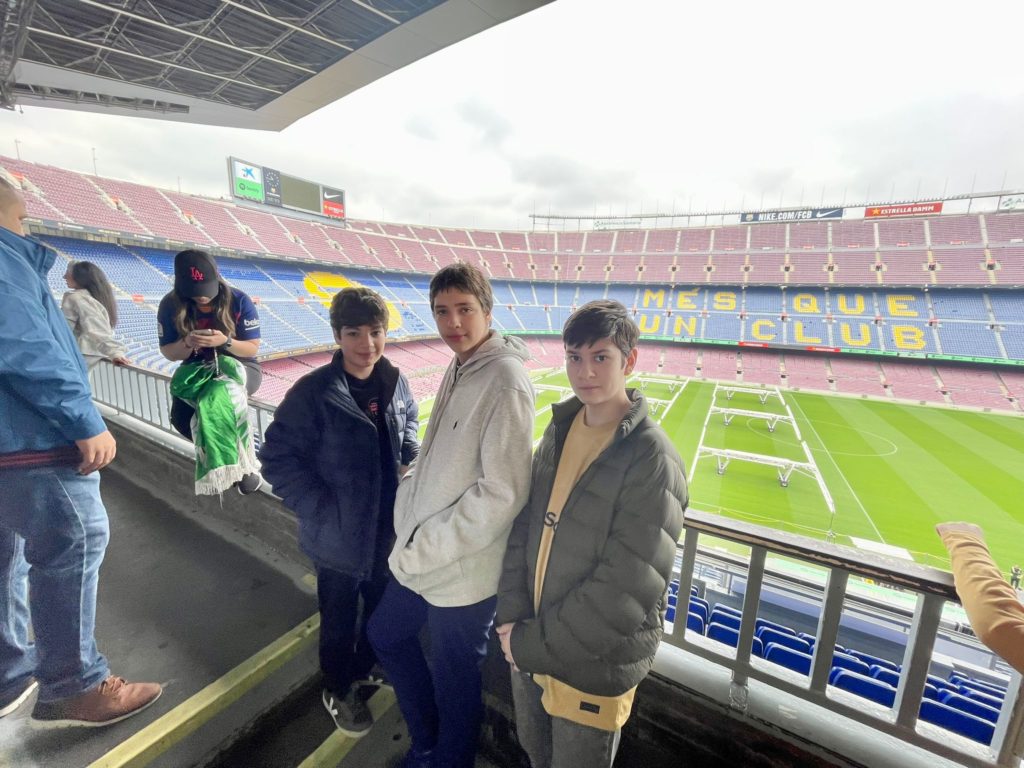
Photos: Students enjoyed a guided tour of the FC Barcelona museum and Sstadium
Another popular activity was the Dali Exhibit, where students experienced immersion in audiovisual projections, augmented reality, virtual reality and holography. The Big Fun Museum of Illusions was probably the biggest hit amongst students as they posed with various exhibits (see photos below).
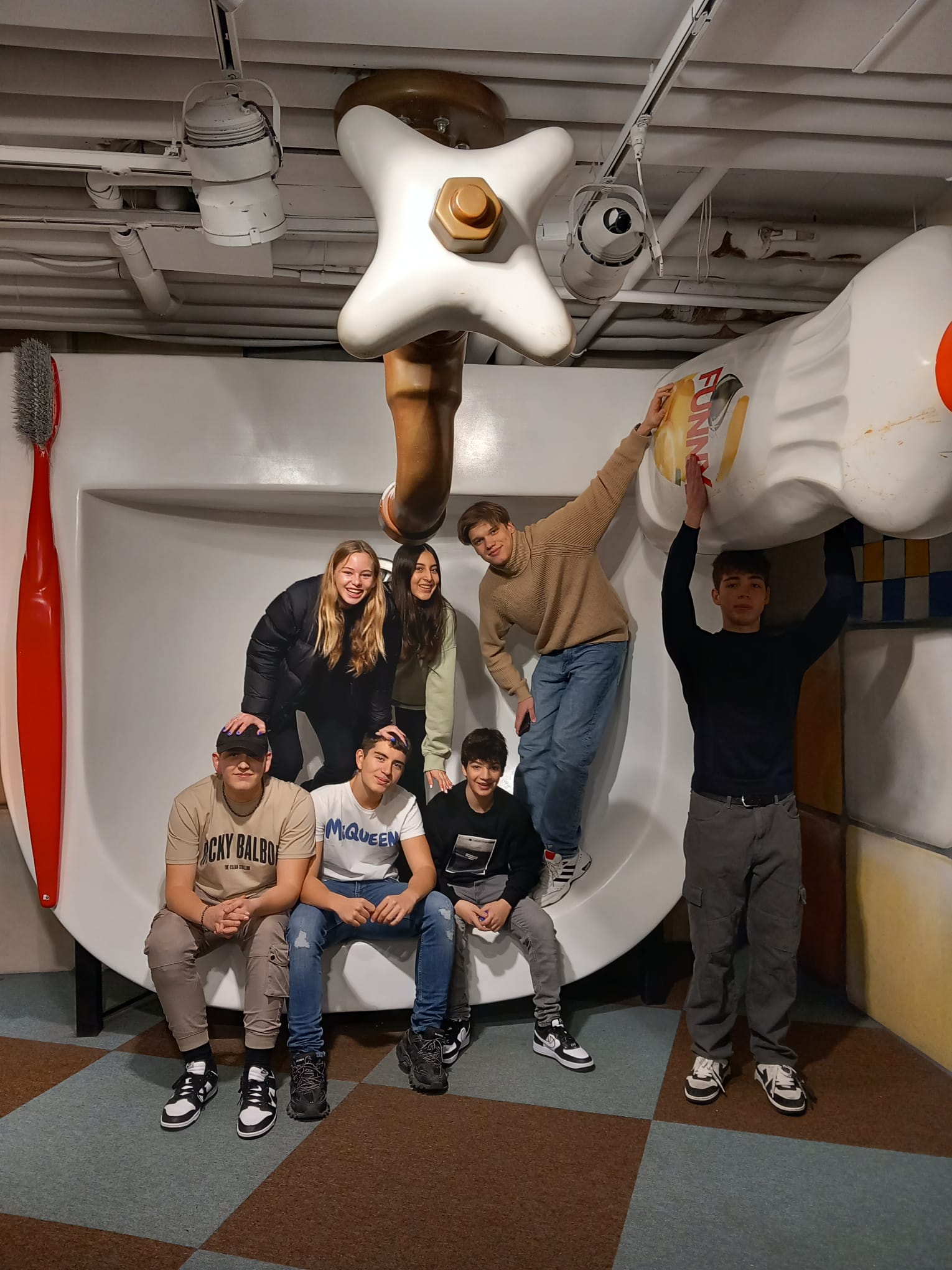
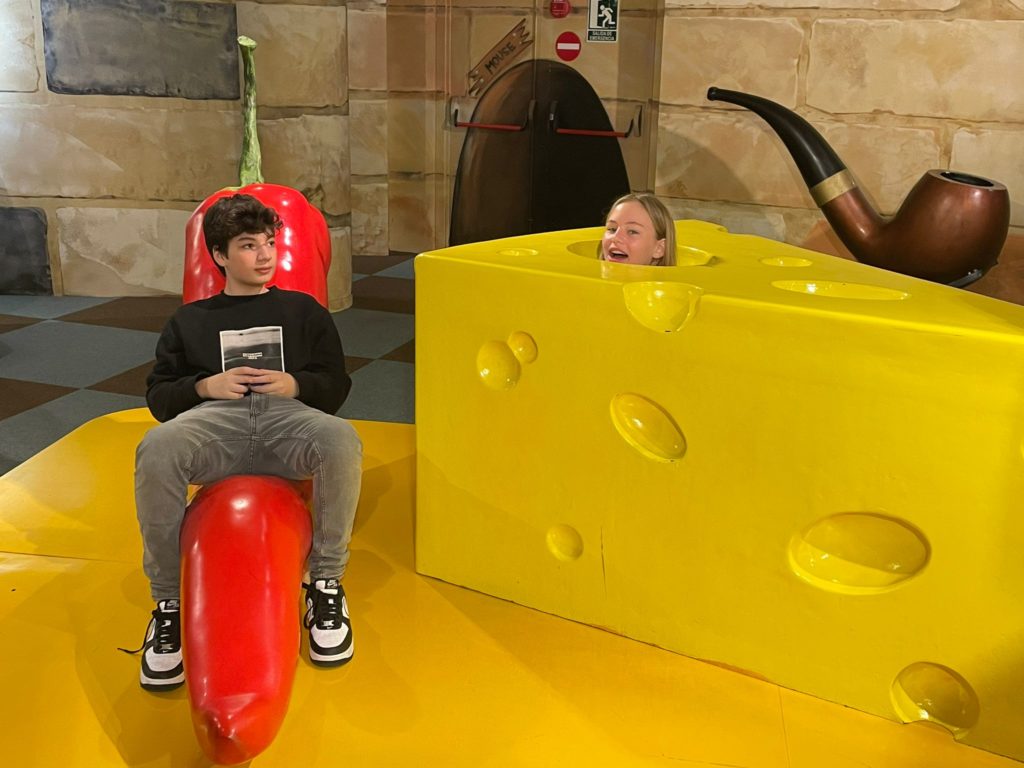
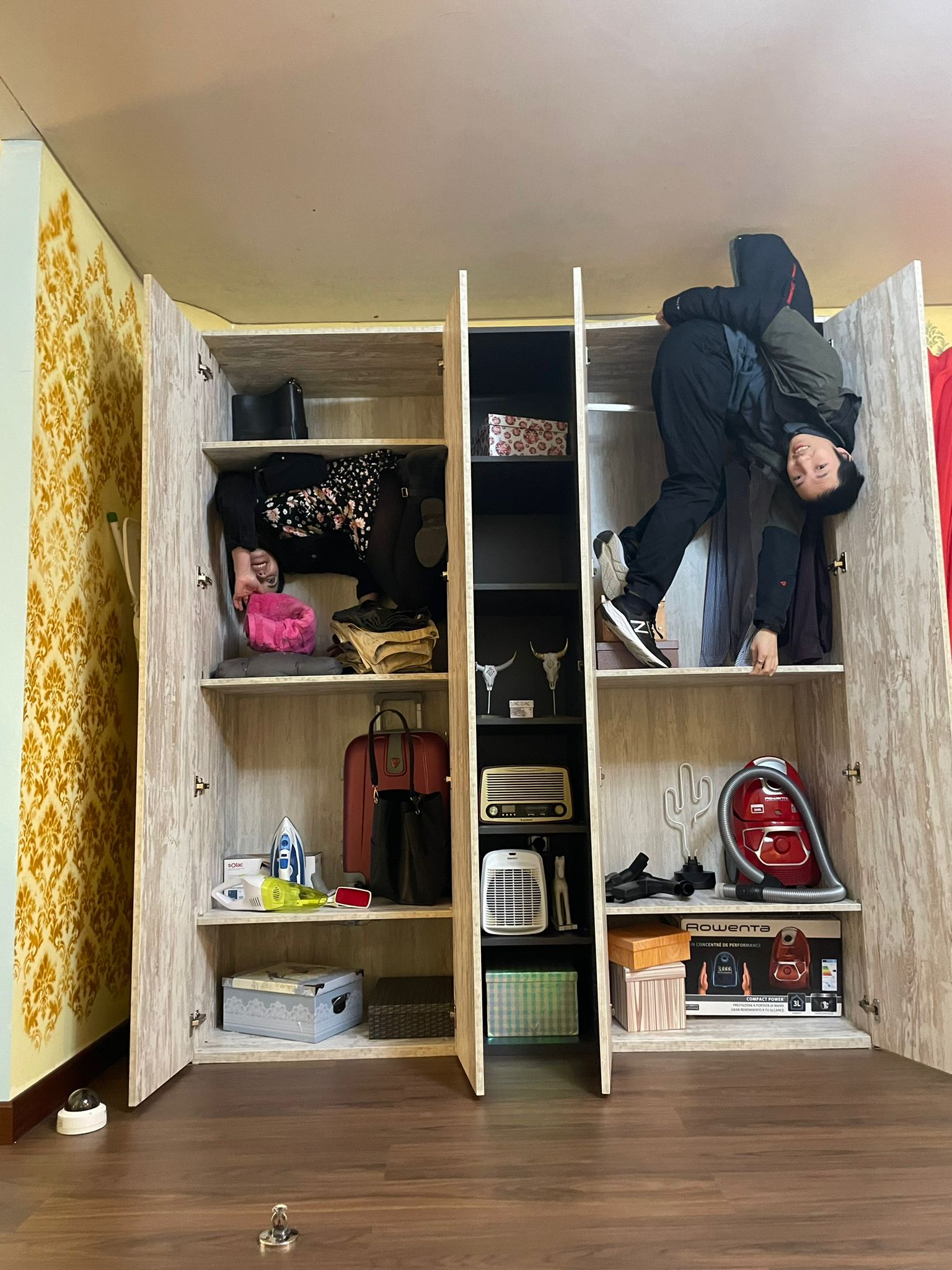
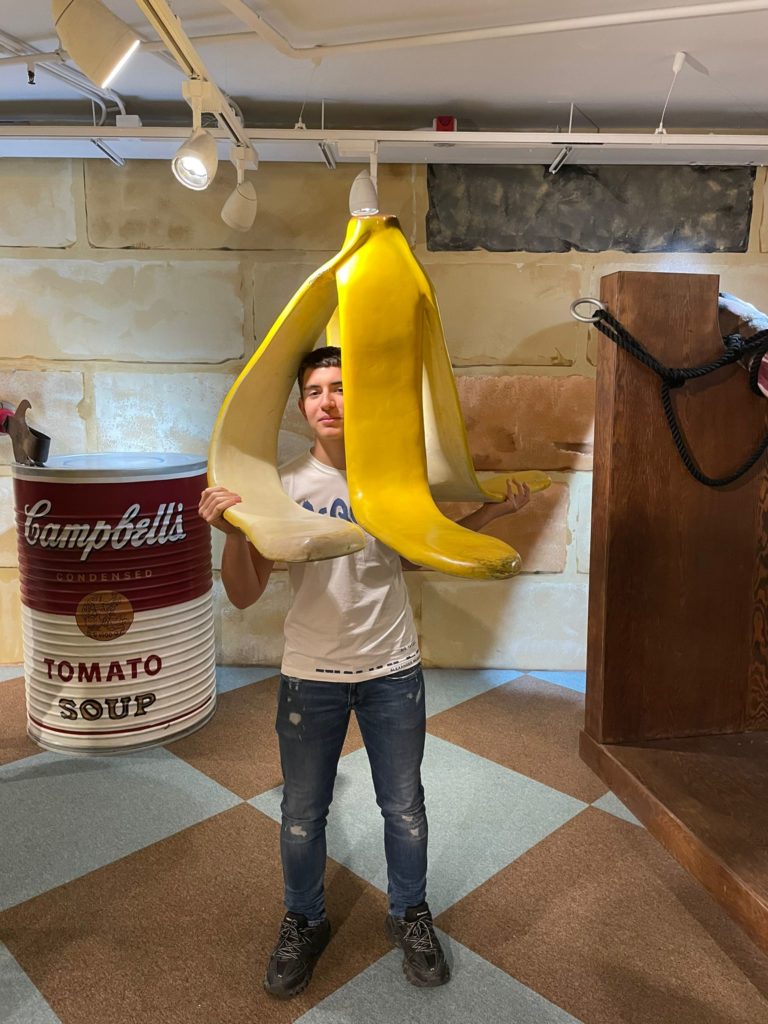
Photos: The Big Fun Museum of Illusions was a hit amongst the students
Other memorable activities included a scenic boat tour of the Las Golondrinas port and coast, the Cosmo Caixa Science Museum, the L’Aquàrium de Barcelona, a walk up to the Montjuïc Castle, and the Poble Espanyol.
Mixed in were two guided walking tours, allowing for our group leaders to take a mental break. The first guided walking tour was to the Gothic Quarter, which featured many beautiful medieval structures and some of Barcelona’s most important political buildings. The second was the Gaudi walking tour, where the group viewed the many great structures designed by famous Spanish Architect, Antoni Gaudí. This included one of the most famous tourist destinations in Europe, the Basílica de la Sagrada Família (see cover photo at the top).
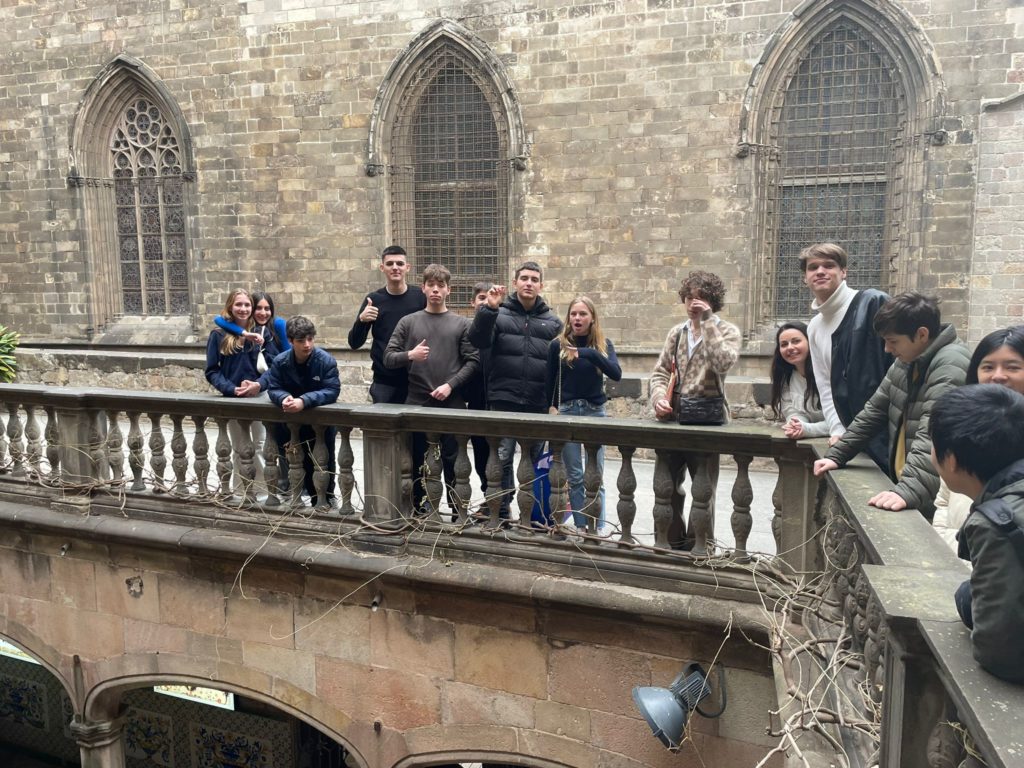
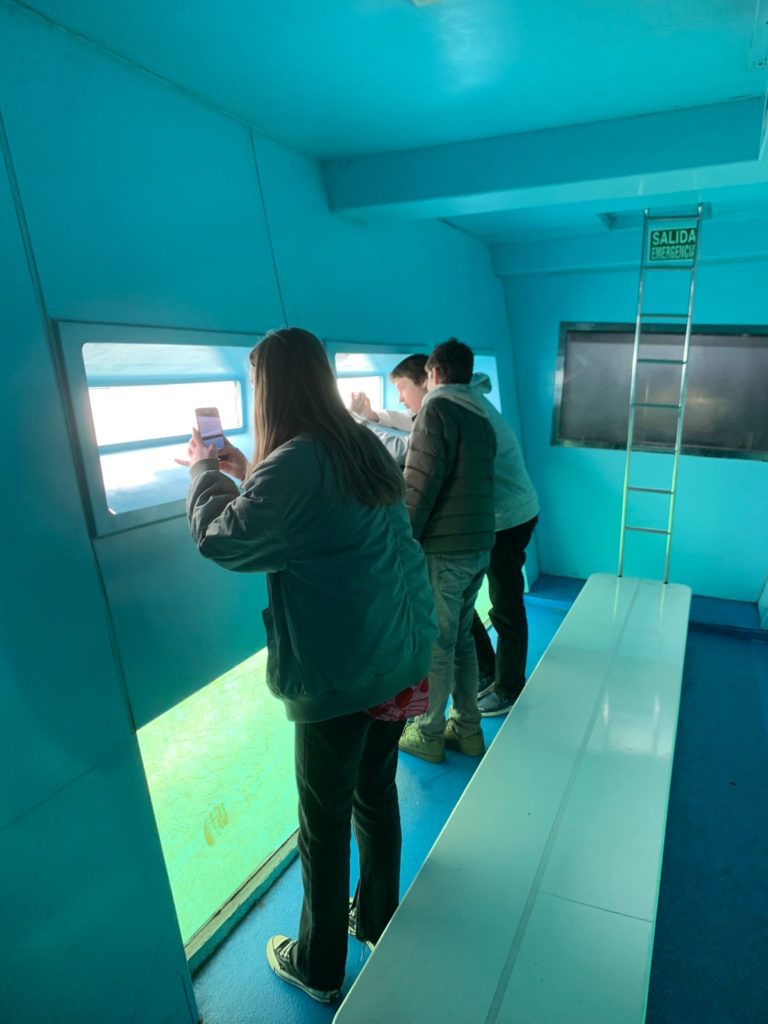
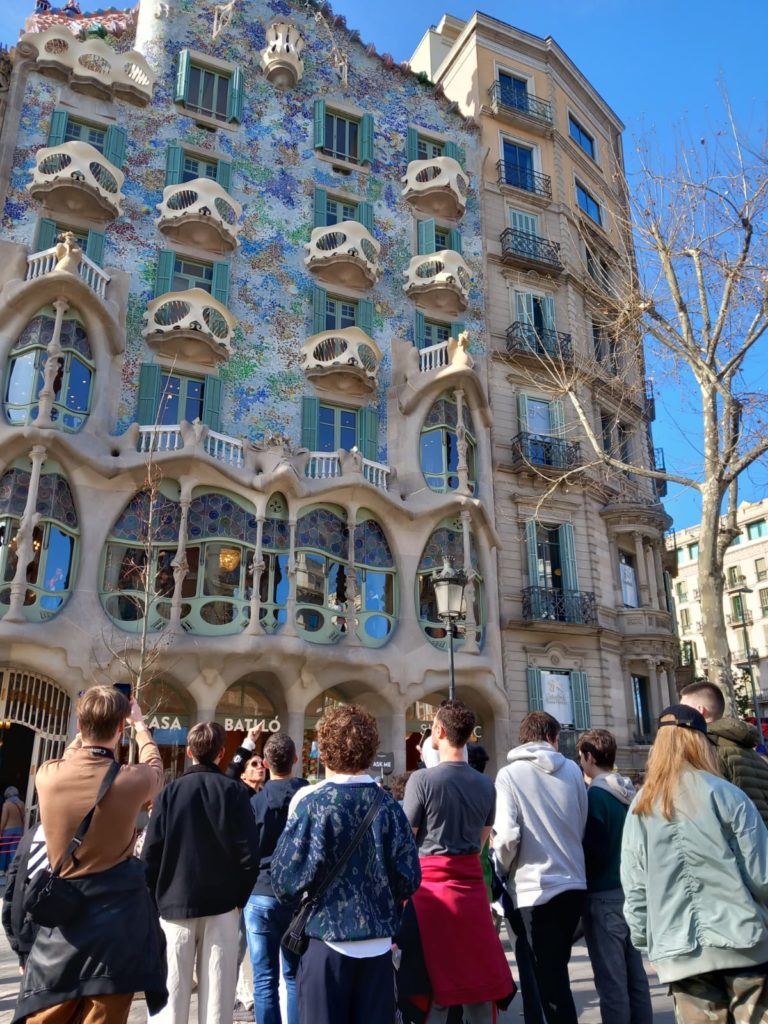
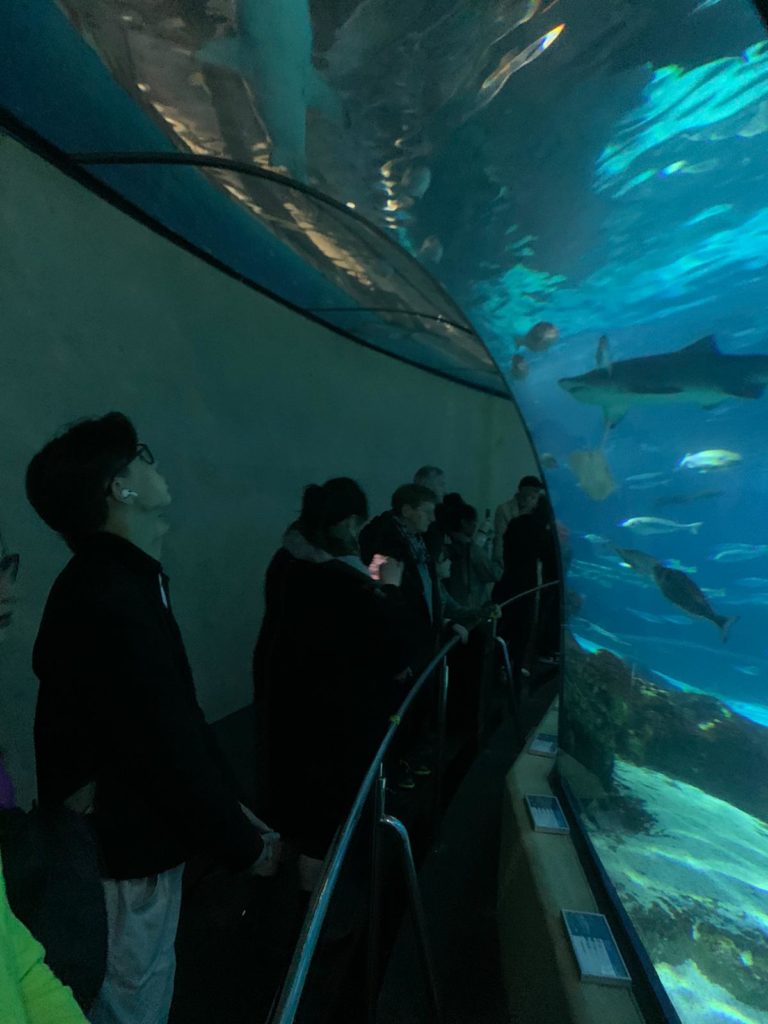
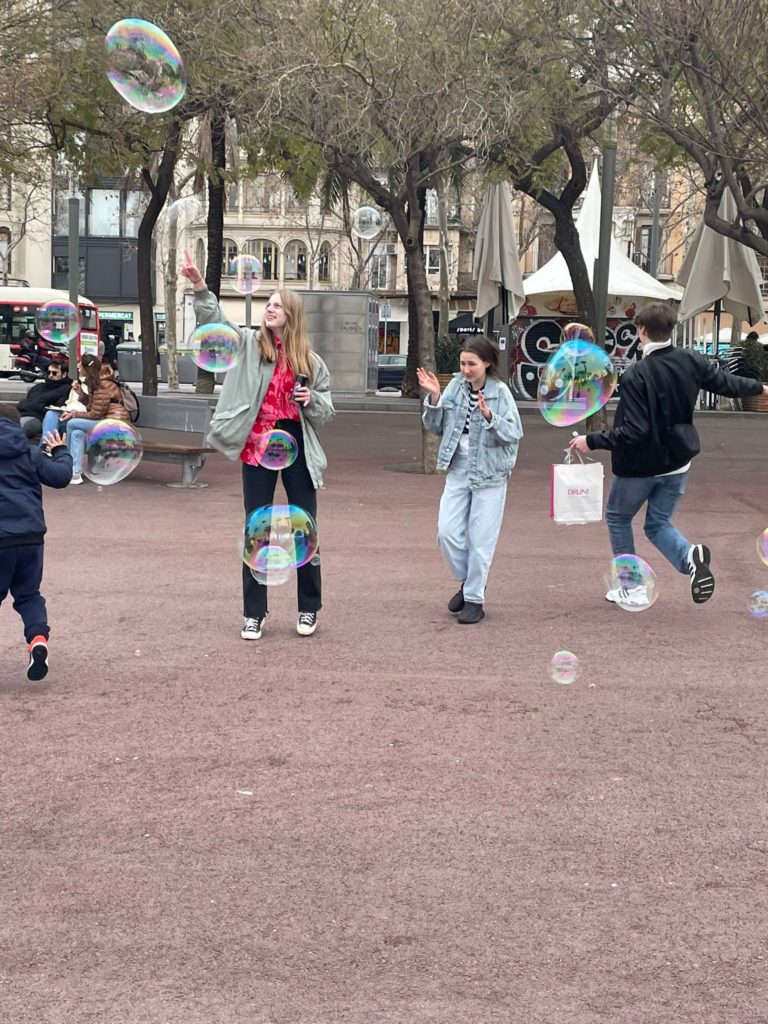
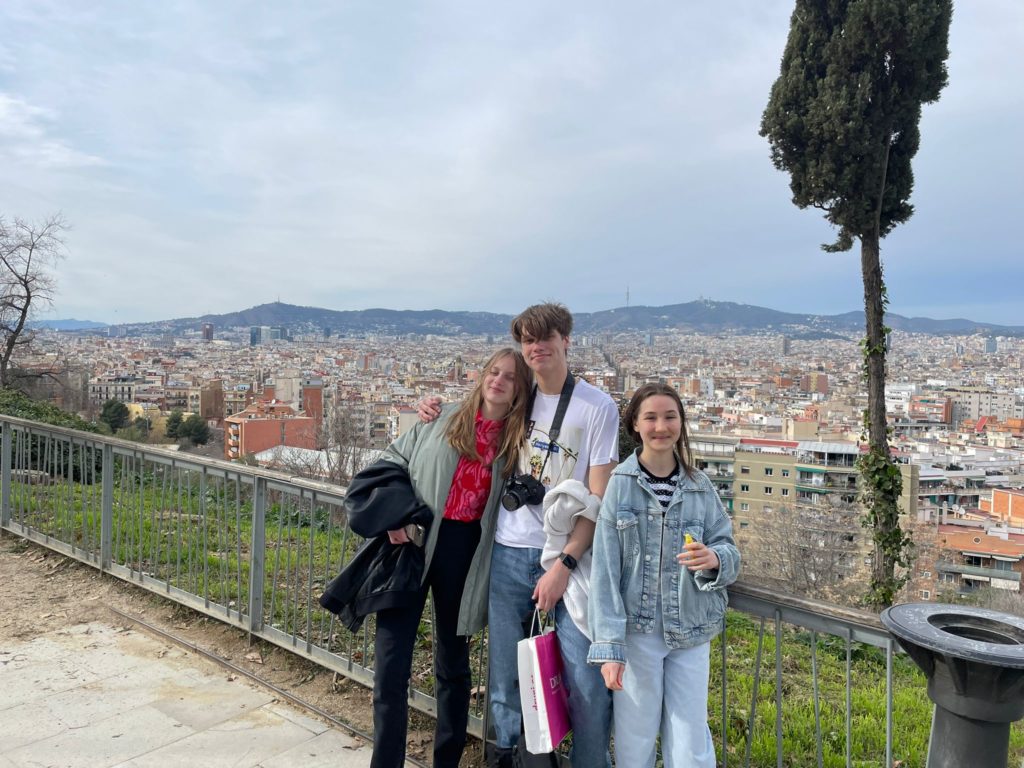
Photos: The small group size on the Barcelona excursion allowed group leaders to offer students a variety of options for sightseeing by breaking into smaller groups.
The evening dinners were also a hit with the tour company organizing each dinner.
“We ate at a different restaurant each night,” said Fox. “One night we had tapas, burgers another night and pizza another. The kids really enjoyed that.”
Aside from the beautiful sites and fun activities, the smoothness with which this excursion unfolded had a lot to do with the nice weather, ease of public transport, and the fact that the group had many Spanish speakers stepping up to help with guiding.
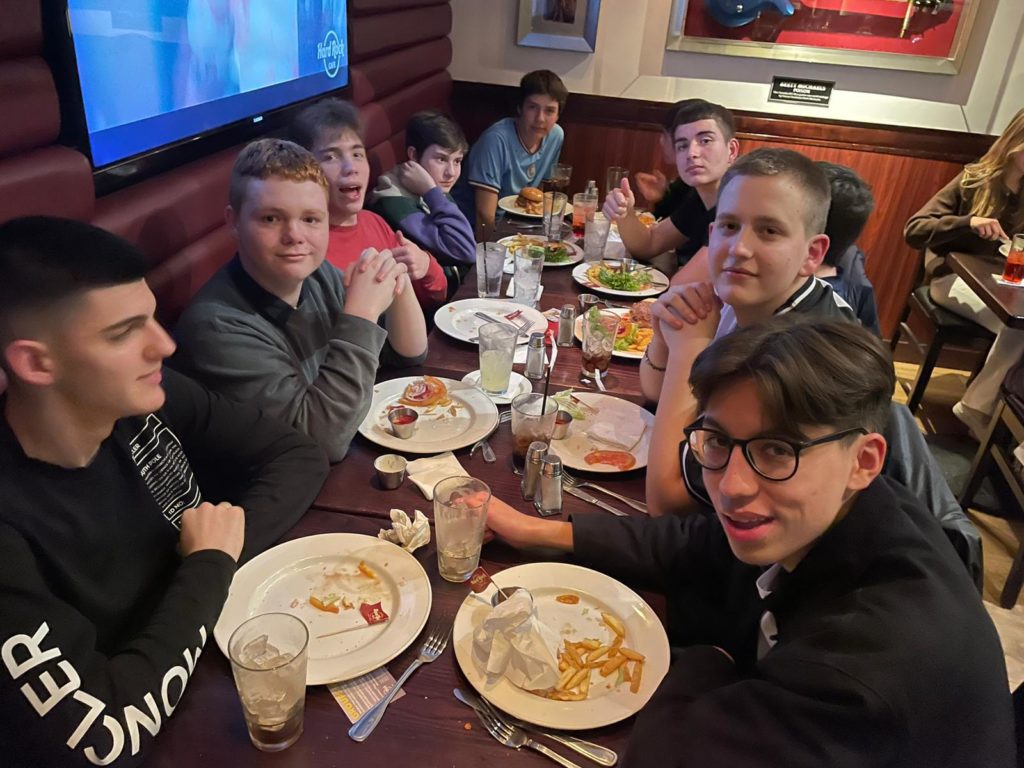
Photo: The students enjoyed a burger and fries at the end of a day of sightseeing and fun in Barcelona.
What happens when you put a freshwater plant in salt water? The 9th-grade Biology students had an opportunity to find out. They are currently studying cellular transport, the movement of substances into and out of cells. They observed an elodea (freshwater plant) leaf under a microscope and were able to identify the individual cells border by the cell walls and the chloroplasts with their loads of green chlorophyll.
After observing and making drawings, the students applied a saltwater solution to the leaf on the slide and returned it to the microscope. Because the salt water has more solute than the inside of the plant cells, water moved out of the plant cells, causing the membranes to shrink away from the cell walls, clustering the organelles in a tight bunch, concentrating the chloroplasts with the green pigment into bright green dots.
Some students were lucky enough to spot some microorganisms from the aquarium flitting across their slides. Others could observe the brown, orange and yellow using them in the future. The pigments in parts of their leaf that had begun to die, the chlorophyll breaking down and allowing the other colors to be seen. The students enjoyed using the microscopes to view an entirely different world and will have more microscope fun in the future.
AIS-Salzburg is now accepting applications for the 2023 Summer Language Program and expects a full program for all three sessions. Currently, the session from July 2-15 is filling up fast and is expected to be booked full by the late spring. In 2022, two out of the three 2-week sessions were booked solid by the beginning of June. Between the three sessions in 2022, there were 25 nationalities represented and zero Covid cases to report among students and staff. The sunny and warm weather made it possible that all activities on the weekly schedule to take place and we expect the same for the 2023 program.
Video: We invite you to watch this highlight video playlist of our Summer Language Program from 2020 to 2022.
The Summer Language Program at the American International School-Salzburg provides intensive German or English courses for students ages *10 to 18. This program is designed to improve students’ language skills in German or English while involving them in a fascinating and enjoyable program of discovery, activities, and social sessions which can be combined into six weeks total. Every session includes a wealth of cultural and entertaining activities and excursions to complement the language learning in the classroom.
*Students under the age of 12 are only accepted with the registration of an older sibling who must accompany them on all activities.
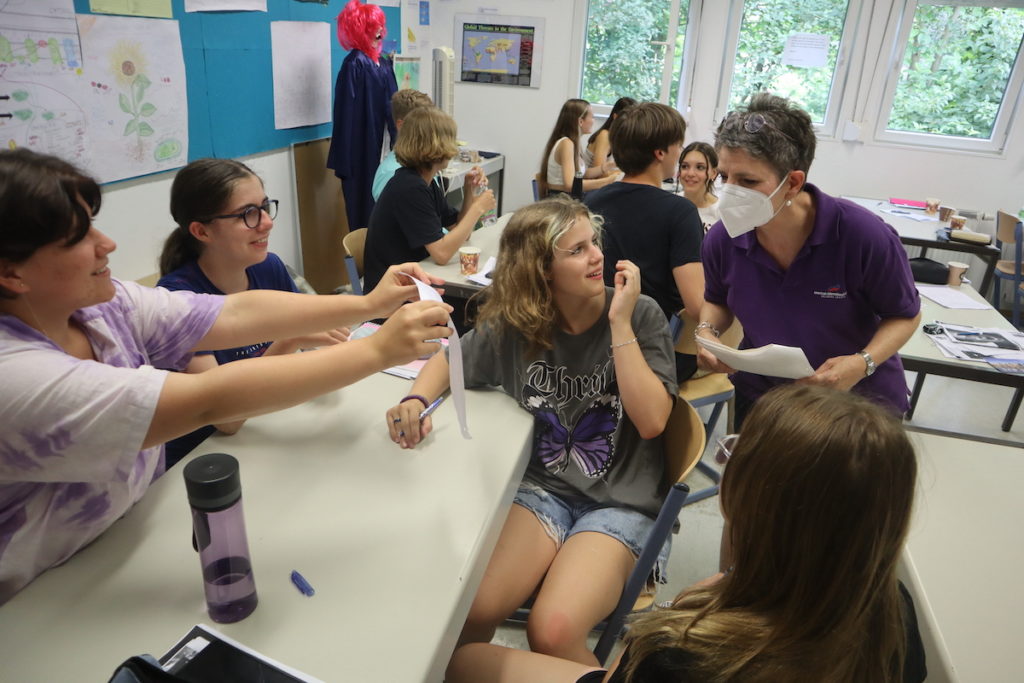
Three levels of language study are offered during each of the summer sessions and are taught by highly-qualified members of the school’s teaching faculty. At the start of each session, all students are tested and placed at the appropriate level for the session.
The summer English courses are of particular interest to students who have applied and have been accepted for the academic year at AIS-Salzburg. These students are encouraged to participate in the full summer session (six weeks total) in order to improve their English language skills and become familiar with our school and our staff.
For more information or to register your child, we invite you to visit our Summer Language Program page on our website via the button below.
Students from Mr. Mayerhofer’s Studio Art class were recently assigned a project to construct a paper mache comic head. Students first made two pencil drawings in their sketchbooks of both a side and front view of the head. They then had to plan out which material (cardboard, chicken wire, paper, balloons, etc.) they were going to use to construct the head.
During the construction phase, students bent and shaped their comic heads in preparation for the application of 5-10 layers of paper mache using glue that they made using wallpaper paste, wood glue, and water. Students connect body parts to the head using hot glue before decorating the head with a coating of tempera or acrylic paint.
We welcome you to watch the highlight video below of this project, with grade 9 student Sofia as the feature.
Students of Ms. Lardschneider’s German
Recently, Ms. Baehler’s German 2 students competed in a clima challenge, where they created a travel plan to get from Hamburg to Gibraltar in 21 days. The goal was to collect the least amount of Klimapunkte (clima points) based on their mode of transportation and places they stay. Here is a copy of the winning plan presented by Katya L., Kati GG., Diana K., Diana S., Alisa S., and Dasha U.
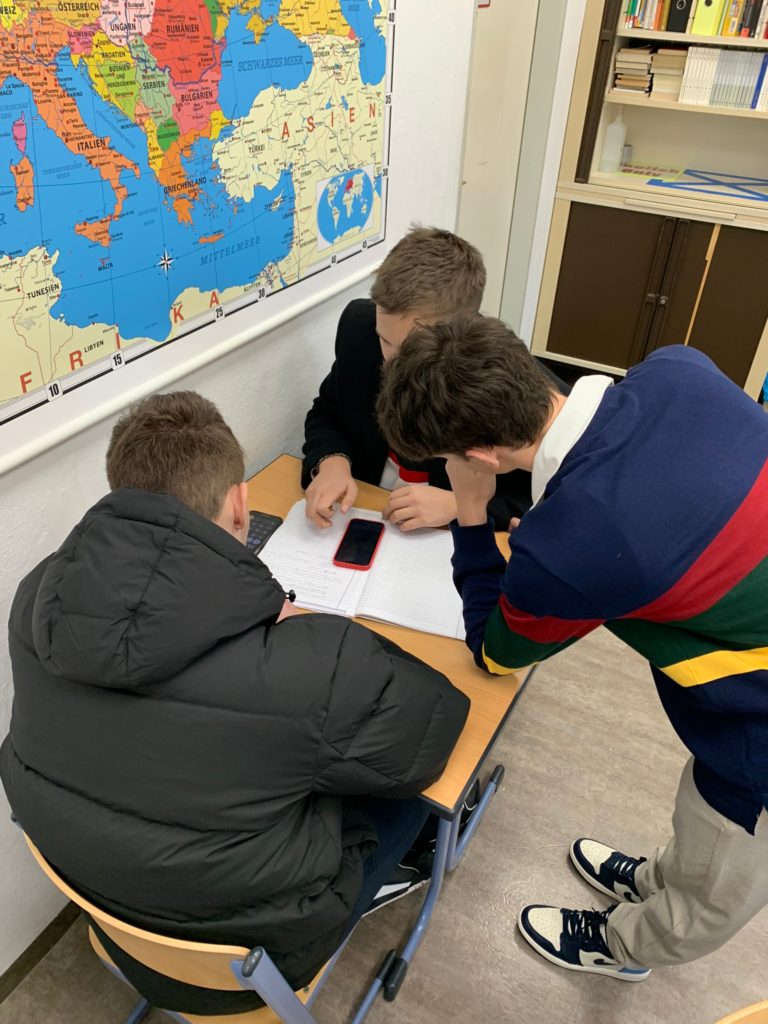
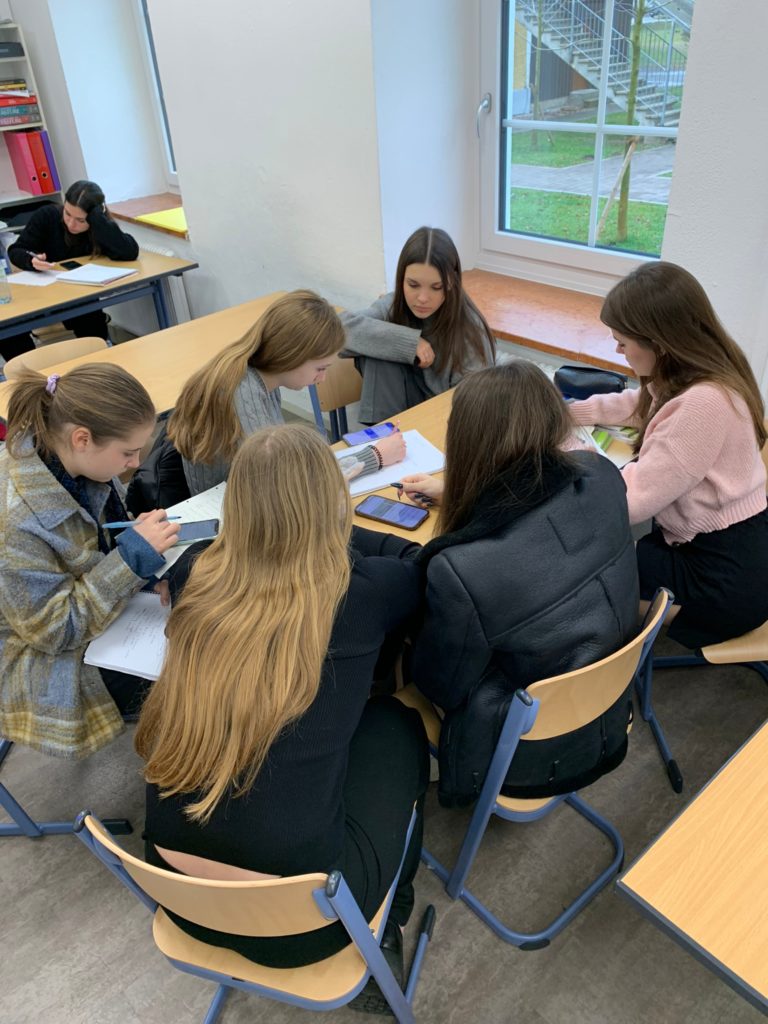
Photo: The girls’ group featuring Katya L., Kati GG., Diana K., Diana S., Alisa S., and Dasha U. won Clima Challenge assignment in German 2.
37 Students Hit the Alpine Slopes
January 16, 2023
On Saturday, January 14th, 37 of our students enjoyed a day on the slopes of Steinplatte, a ski resort an hour’s drive from our school and reaching an elevation of 1,900 m (6,200 ft). The Steinplatte skiing region features 13 groomed slopes measuring 45 km (28 miles) in total, state-of-the-art chair lifts, a gondola lift, and a snowboard park.
Media for the day was minimal, but we managed to put together a short video with some highlights from the day. We invite you to watch it below.
Ski & Snowboard Season is Back!
January 23, 2023
This past Sunday was the second ski day of the 2022-2023 school year and it was one to remember. With 35 cm of fresh snowfall from the day before, the powder was plenty and the sun was back out, providing for a beautiful ski and snowboard day at Zauchensee for the 54 students and 7 staff members in attendance.
“Everyone has had a great time on the mountain,” said ski and snowboard program director, Matt DeKryger. “Credit to the students for giving excellent accounts of our school community and to the staff members who have gone above and beyond to ensure the students have the best experience possible.”
The rest of the ski and snowboard season includes scheduled ski days through mid-March, a ski weekend in Innsbruck on January 27-29, and the winter excursion from February 23-26 in Zell am See. We invite you to watch some of the highlights below from the day of skiing and snowboarding.
Overnight Ski & Snowboard Trip to Innsbruck a Success
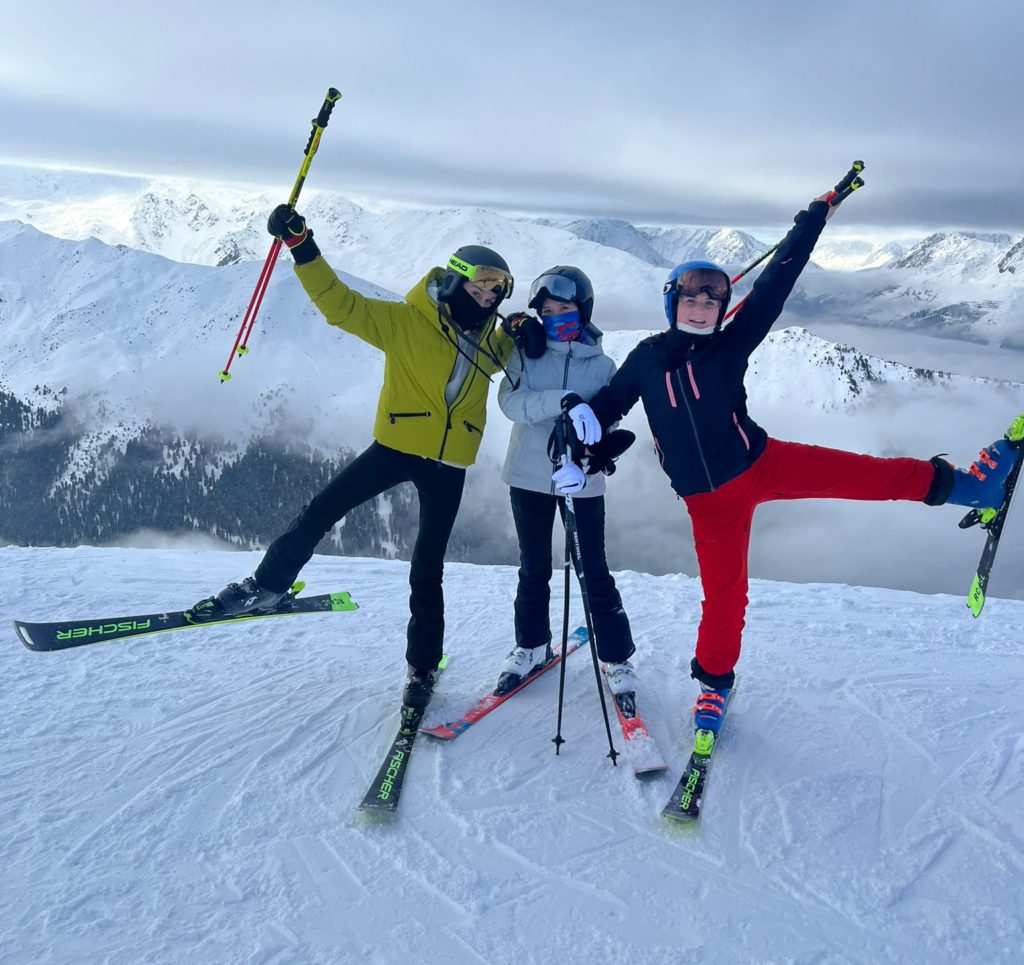
January 31, 2023
This past weekend, 15 senior scholars and distinguished students were rewarded for their academic achievements with a weekend ski excursion to Axamer-Lizum, just outside of Innsbruck. Part of our weekend overnight travel program, this trip is unique compared to other overnight trips in that participants stay for two nights, enjoying two full days of skiing and snowboarding on the Tirolean slopes.
This year, the group was fortunate to have very good weather and some fresh, new snow. All participating students had a good time exploring the resort and an evening in the historic Innsbruck Altstadt with friends.
For all other students, a regular ski day was offered with a trip to Shuttleberg on Saturday. Led by Mr. Fox, 24 students enjoyed 10 cm of new snow on this great ski hill and a variety of different terrain for all skill levels. Shuttleberg is also known for having the largest snow park in the Alps, the world-famous Absolut Park. The park expands 1.5 kilometers and has approximately 100 obstacles including kickers, boxes and rails. Obstacles are sculptured for different levels of freestyle, from beginner to expert.

Photo: Absolut Park expands 1.5 kilometers and has approximately 100 obstacles including kickers, boxes and rails
Junior High Boys Win First Game of the Season
January 31, 2023

The junior high boys’ basketball team had their first game of the season on Monday night as they visited the St. Gilgen Saints. For most of the players, this was their first time ever playing in an organized basketball game.
“It was chaotic at first but the boys improved a lot throughout the game,” said coach Nick DeWitt. “I was so proud of their hustle and positive attitudes. I even saw a few really nice moves.”
The defensive standout of the game was Jorge with numerous moments of effective boxing out.
Lady Lions Win Two at DVAC Festival
January 30, 2023
The AIS-Salzburg Lady Lions won their first two games of the season this past Saturday with a dominant 27-12 win over AIS-Budapest and a 23-17 victory over QSI Bratislava. Their lone loss came at the hands of the host Vienna International School by a score of 16-23.
“I am extremely pleased with our play and effort this weekend,” said coach David Burns on Monday. “Overall, we are quite inexperienced, but the girls are highly motivated and learning fast.”
In fact, 6 of the 12 girls that made the trip were absolute beginners playing in their first basketball competitions ever.
“I have a few more grey hairs for sure,” laughed Burns. “But that is how they learn, by being thrown into the fire, making mistakes, and learning from them.”
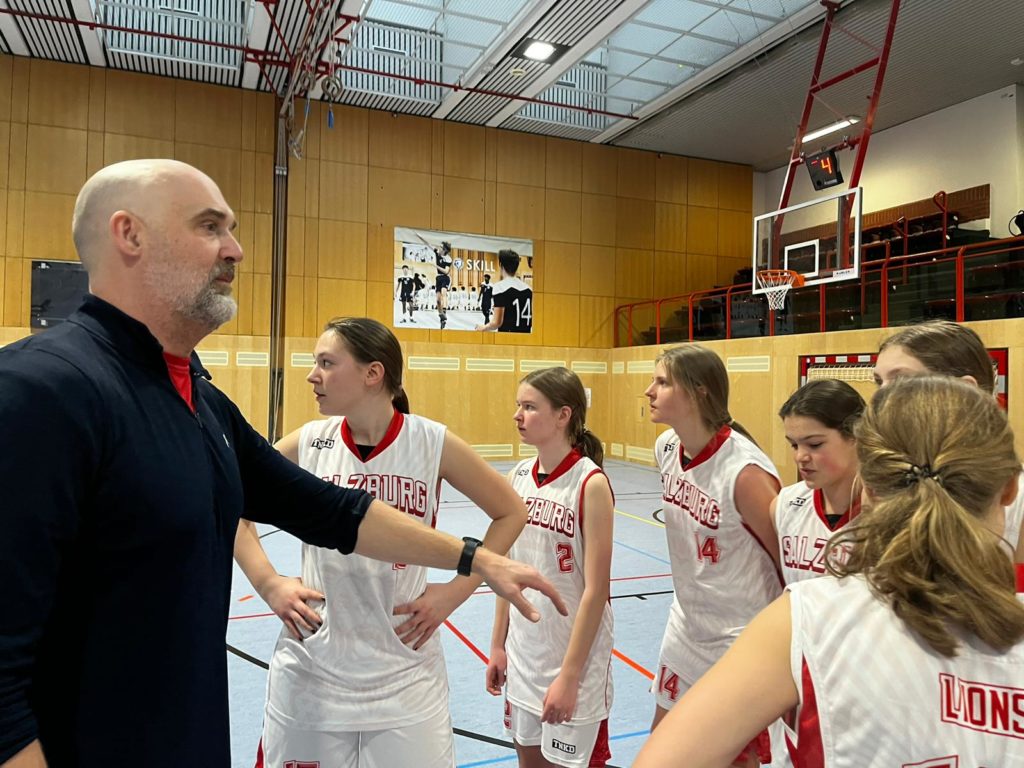
Grade 9 point guard Chanti S. had her best game in a Lions uniform in her two years of basketball, with multiple steals and strong defensive play. Newcomer Nastia B. was a beast on defense and took the ball to the rim for multiple buckets. Nicole I. was an offensive leader, utilizing her speed for a number of uncontested layups. Marija B. chipped in with a few offensive put-backs, while Ola T. was strong defensively. The highlight of the day was when Jade R. scored off a jump shot after executing a move she has been working on in practice. Congratulations to Diana K. for scoring her first-ever basket!
Video: The video above is a sneak peek into the trip to Vienna this past weekend for the DVAC Basketball Festival.
Lady Lions Lose Season Opener at the Buzzer
January 24, 2023
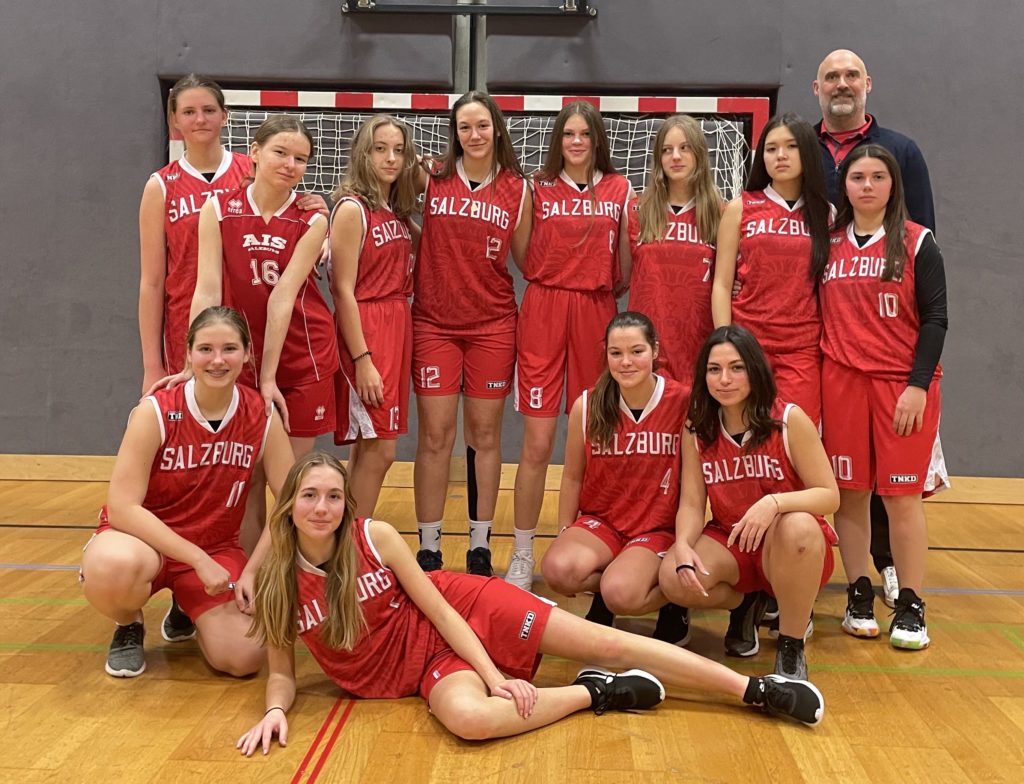
The AIS-Salzburg girls’ basketball team had their first match of the season on the road vs. St. Gilgen International School on Monday night. The Lions jumped out to an early 6-0 lead behind three straight baskets from Nicole I. However, St. Gilgen battled back to tie the game a few minutes later. The teams continued to exchange baskets all the way down to the final seconds when St. Gilgen scored the game-winning shot at the buzzer to squeak out a 26-24 victory over the Lions.
Grade 9 Chantal S. had an excellent defensive game, shutting down St. Gilgen’s top scorer and senior player to prevent St. Gilgen from running away with the game. Jade R. had her best game in a Lions uniform, scoring two key baskets in the final frame. Newcomer Nastia B. also had a very strong game with strong rebounding and three baskets of her own.
“I was quite pleased with how we played considering that 6 of the 12 girls are absolute beginners playing in their first-ever basketball game,” said long-term coach David Burns after the game. “Our defense needs a lot of work, but offensively we shared the ball quite well.”
The girls are back in action this Saturday at the Danube Valley Athletics Conference mid-season festival at the Vienna International School.
Lions Win Two at DVAC Festival
January 22, 2023
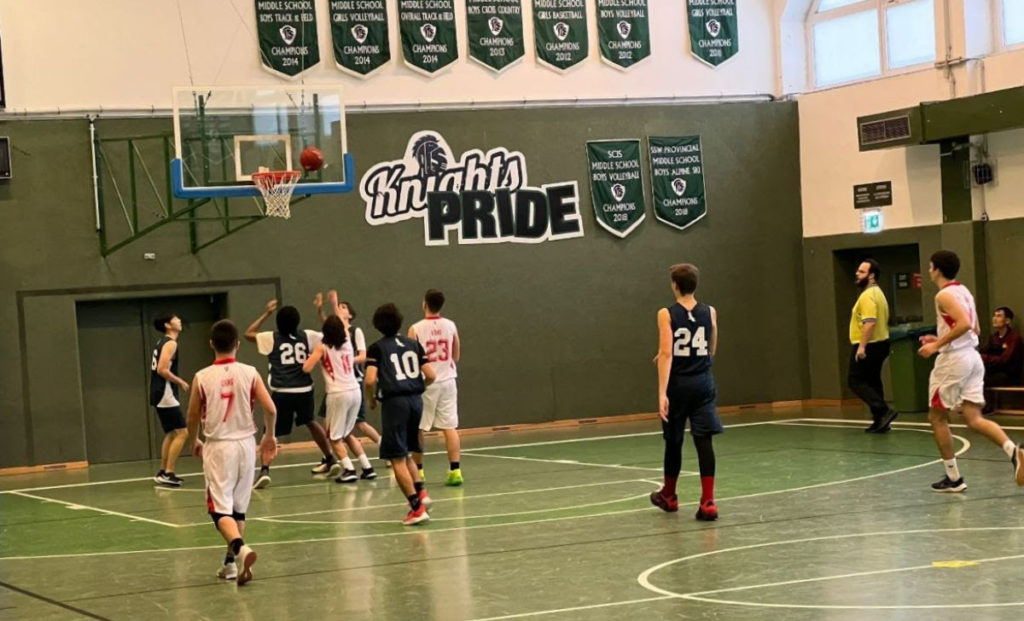
The AIS-Salzburg boys basketball team came away with two victories in three games this past Saturday at the Danube Valley Athletics Conference mid-season festival in Vienna.
The boys played stellar defense in their first game, holding the Danube International School to zero points until the fourth quarter. The Lions went on to handily secure the win, 23-8.
Their second game versus the International Christian School of Vienna (ICSV) was much closer, but the boys were able to build a healthy lead in the first half. The Lions moved the ball really well and executed a number of plays on offense that they had been working on in practice. In the second half, ICSV managed to mount a comeback as the Lions faltered, taking a one-point lead late in the game. In a last effort to win the game, Alex M. took a short jumper and sunk it with six seconds left. The Lions held on in the final seconds to win 24-23.
The boys’ last game was against a very talented junior varsity team from the American International School Vienna. After riding the high of the first two wins of the season, the boys were handed a wake-up call in a lobsided 14-46 loss to AIS Vienna.
“We have made good progress since the start of the season, but that loss at the end showed the boys that they still have a lot to learn”, said coach Nick DeWitt after the final game. “I think it was good for the boys to be humbled and see how a more talented team executes throughout a whole game. This game really tested our brotherhood, mental strength, and ability to execute and maintain positive communication on the court.”
In Mr. Leicher’s Grade 11 Physics class, students investigated Archimedes’ Principle for an object that is denser than water and an object that is less dense than water.
Archimedes’ Principle states that that an object floating or fully immersed in a fluid is buoyed up by a force equal to the weight of the fluid displaced by the object. The buoyant force on an object immersed in a liquid can also be determined by weighing an object in air and then in water. The apparent loss of weight of the object is equal to the buoyant force of the water.
Fun Fact: Archimedes was the person who ran naked through the streets of Syracuse shouting “Eureka! Eureka! I have found it!”. (He was at a bathhouse and noticed the water level rose when someone stepped in. This related to the volume of the water displaced must be equal to the volume of the parts of the body that was submerged).
